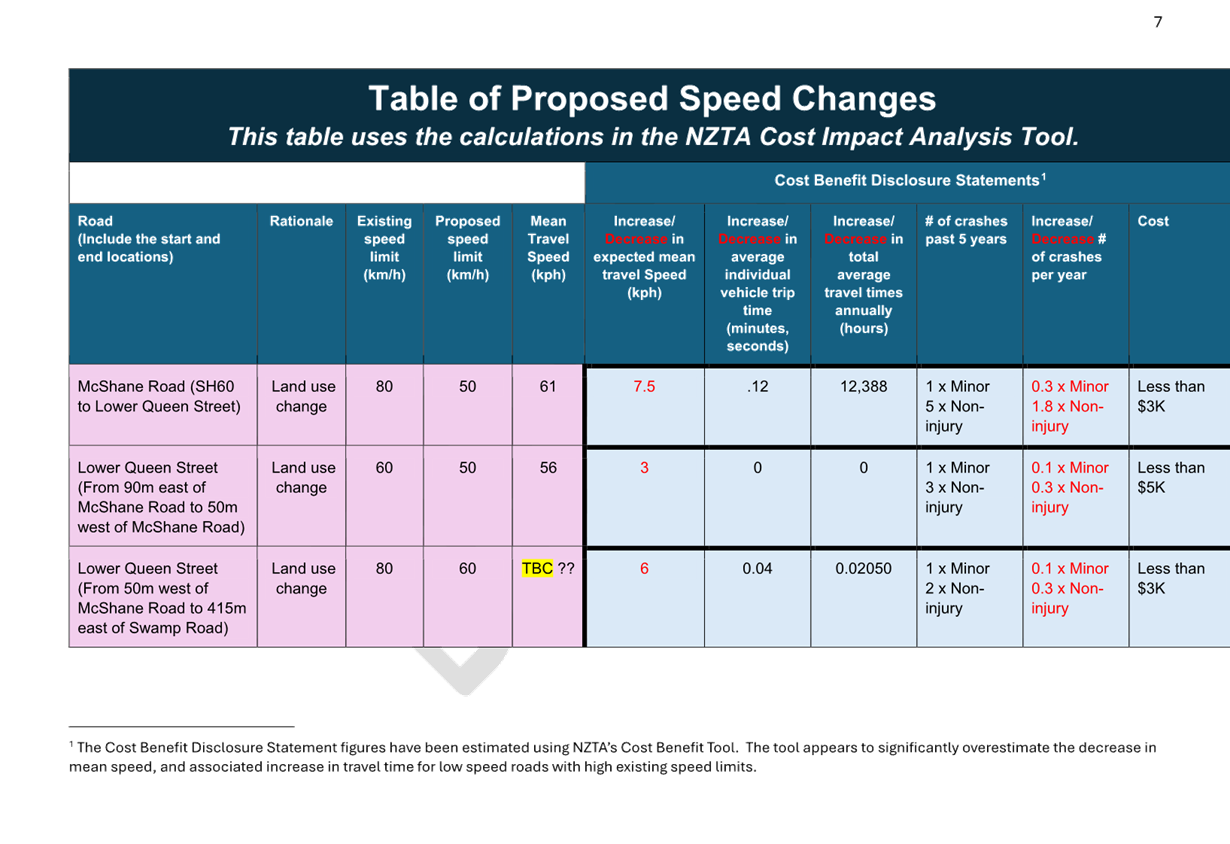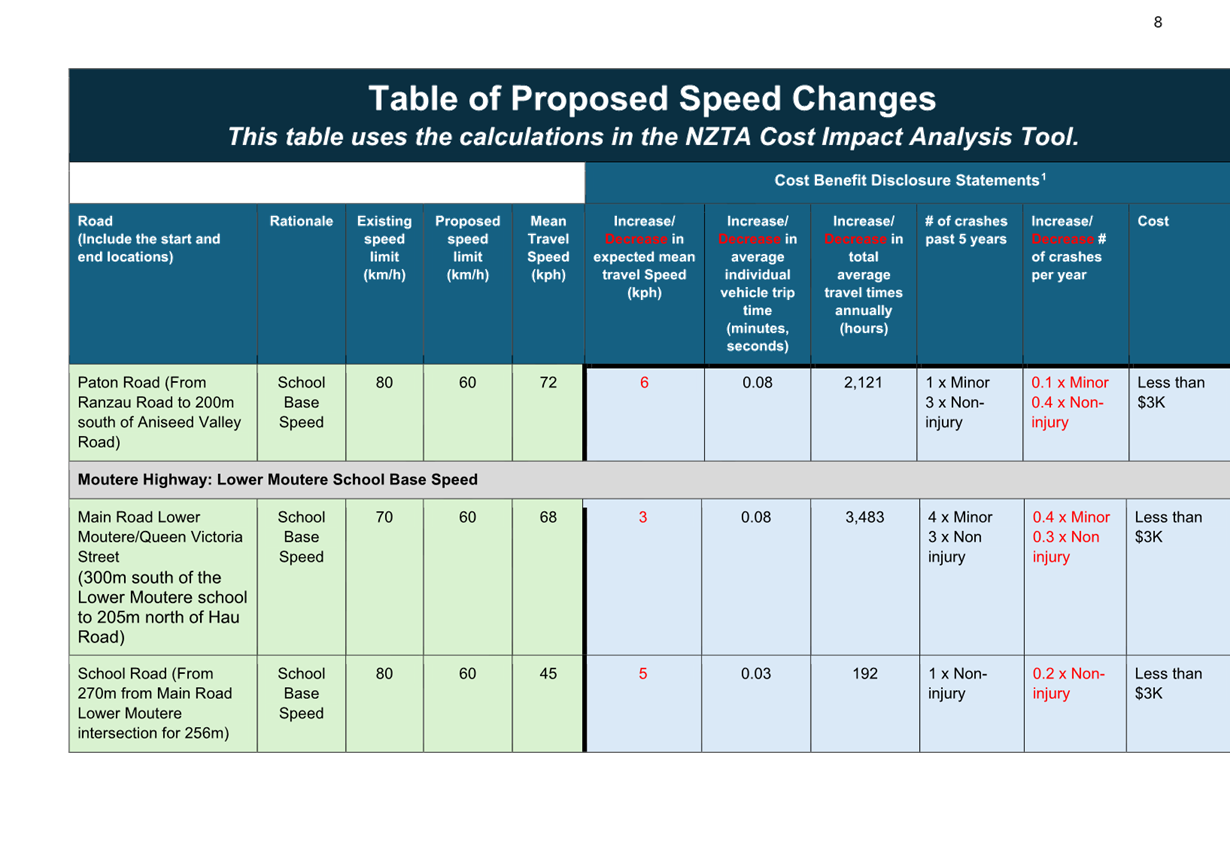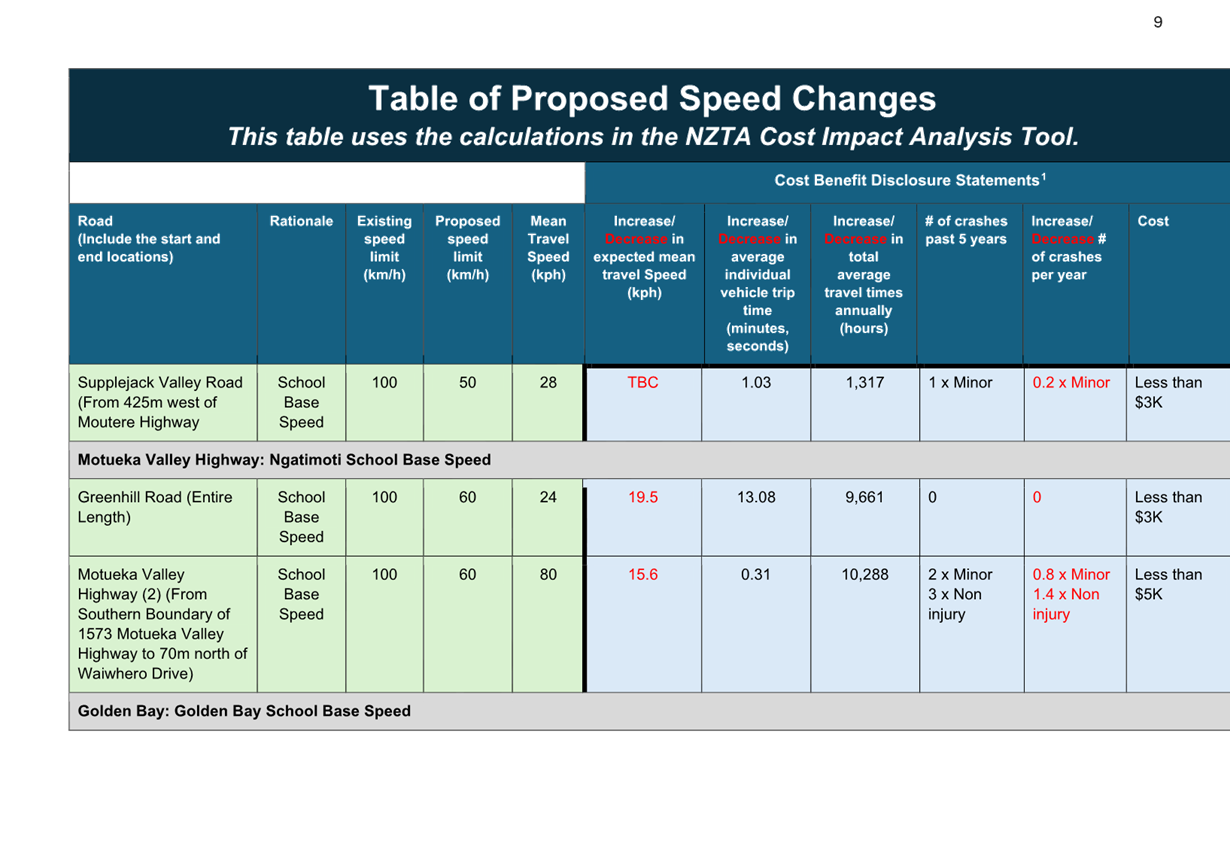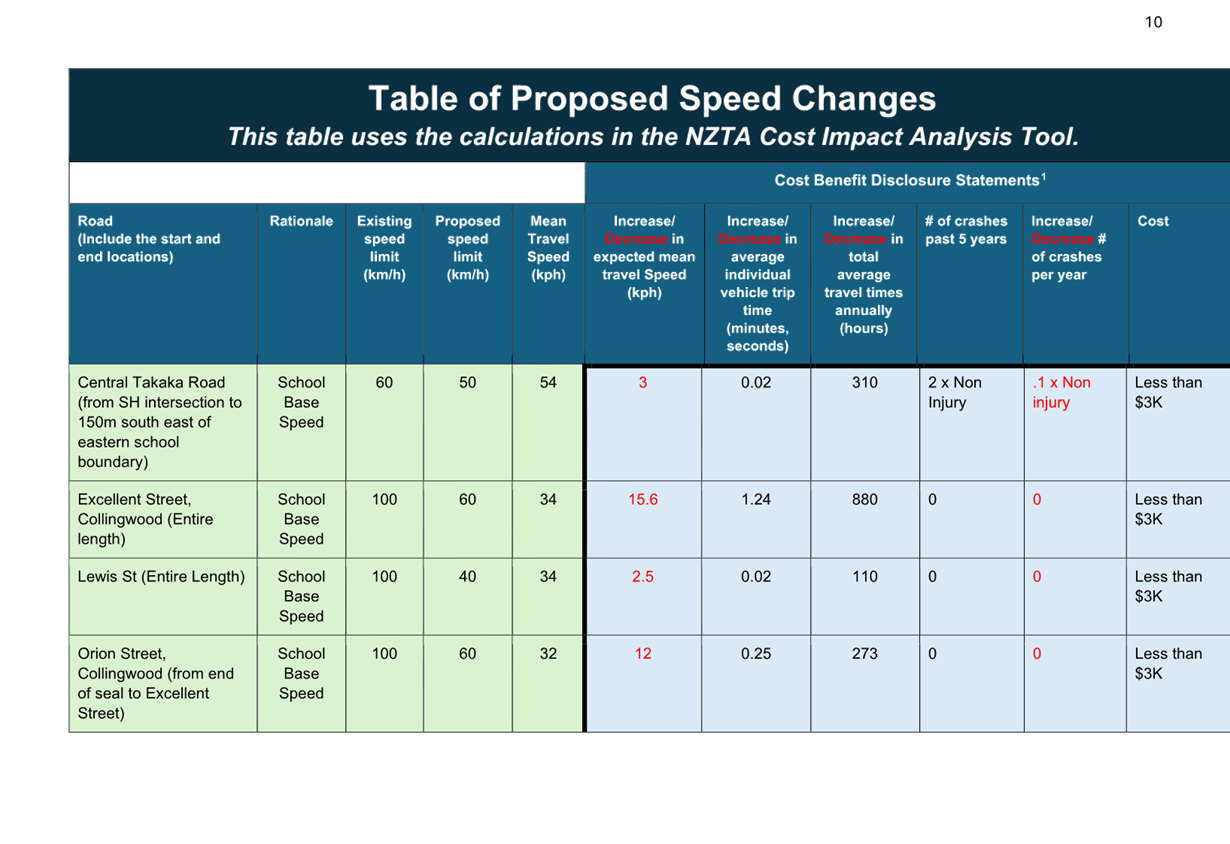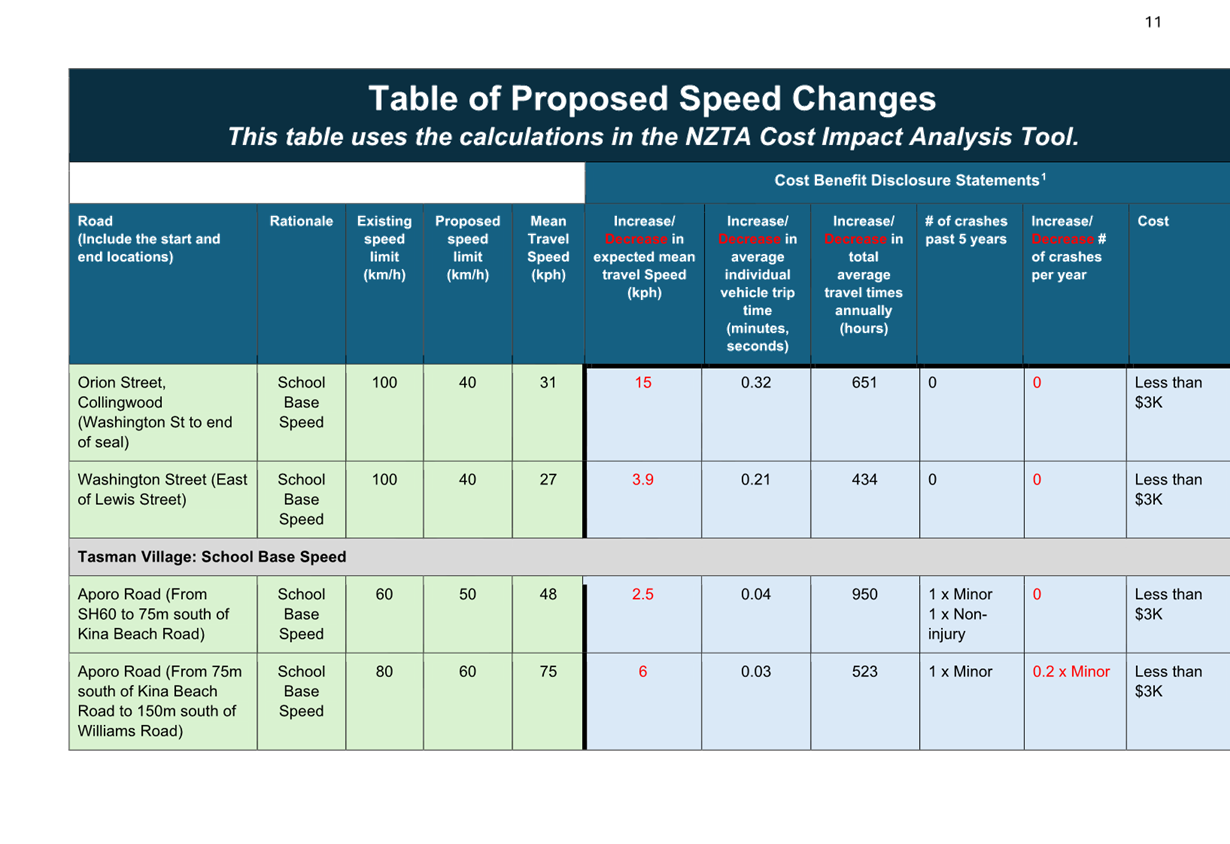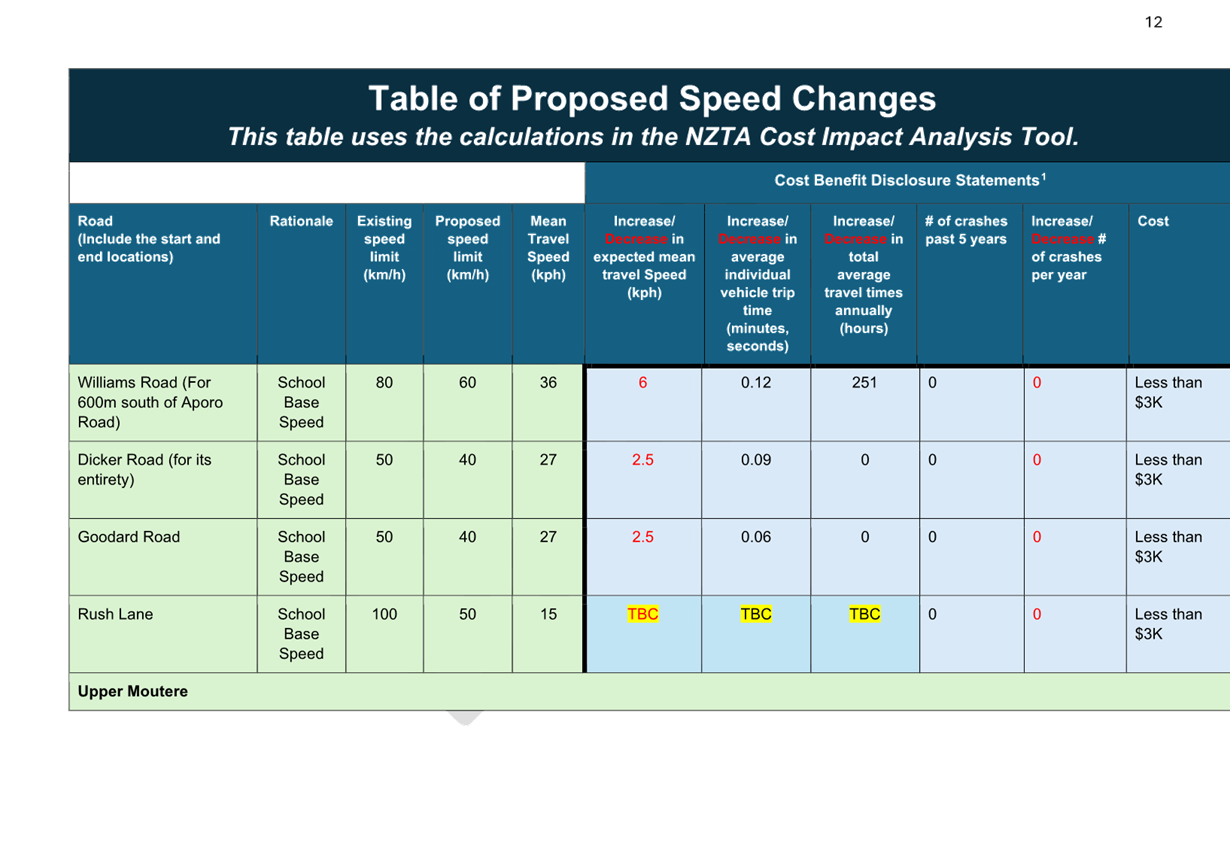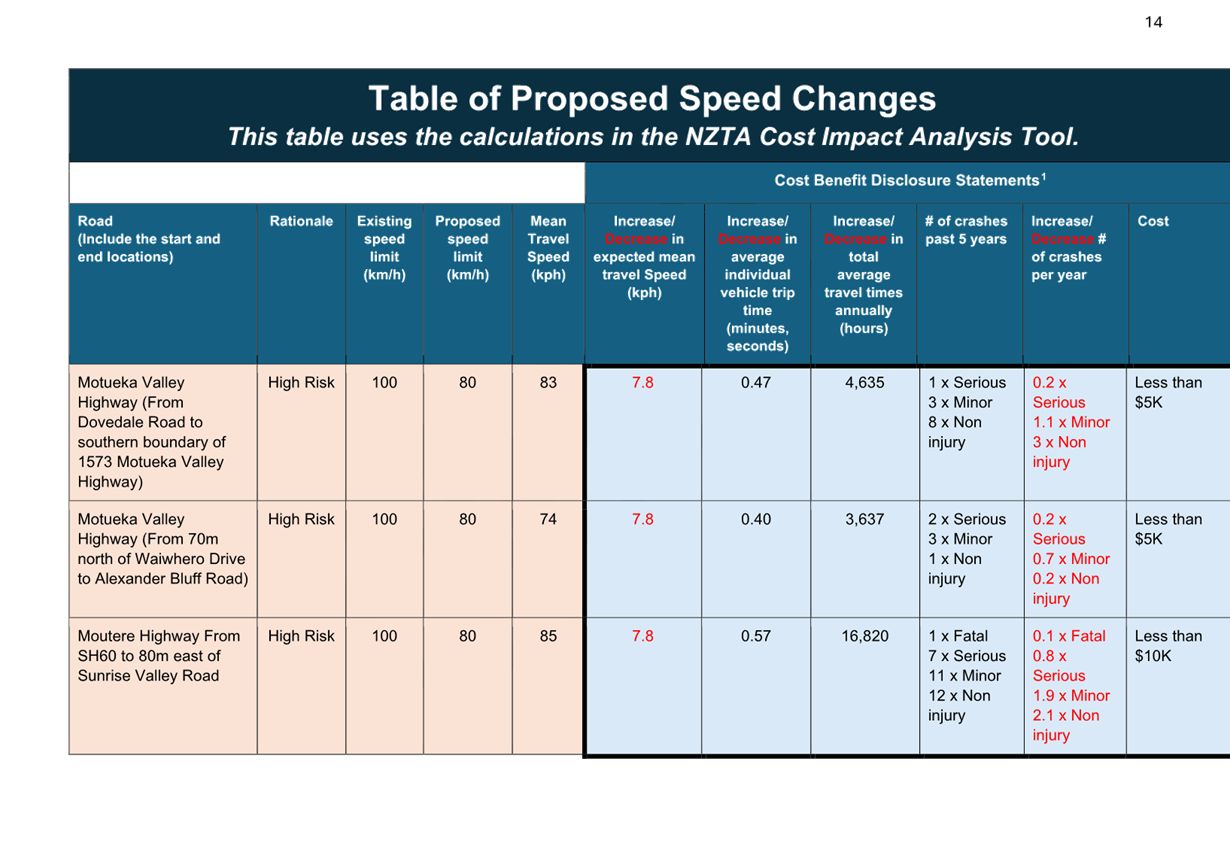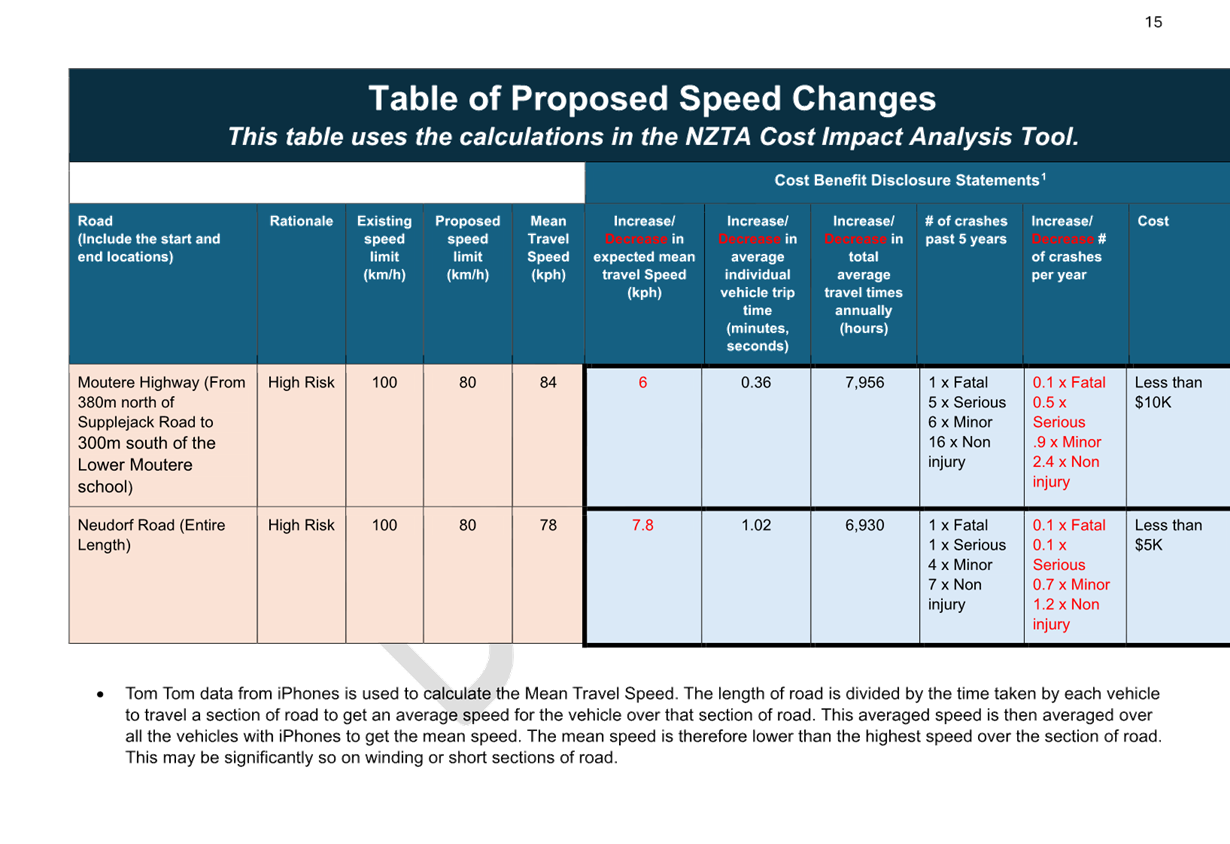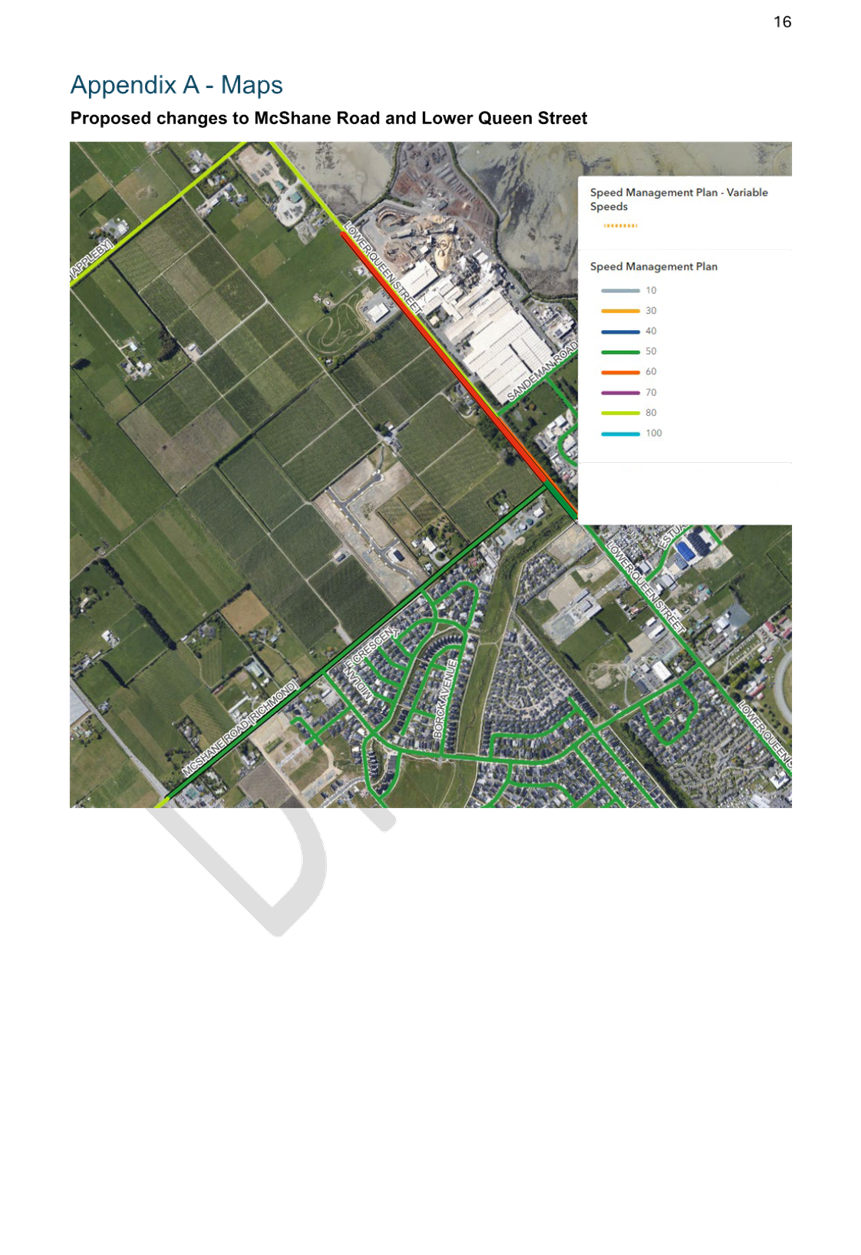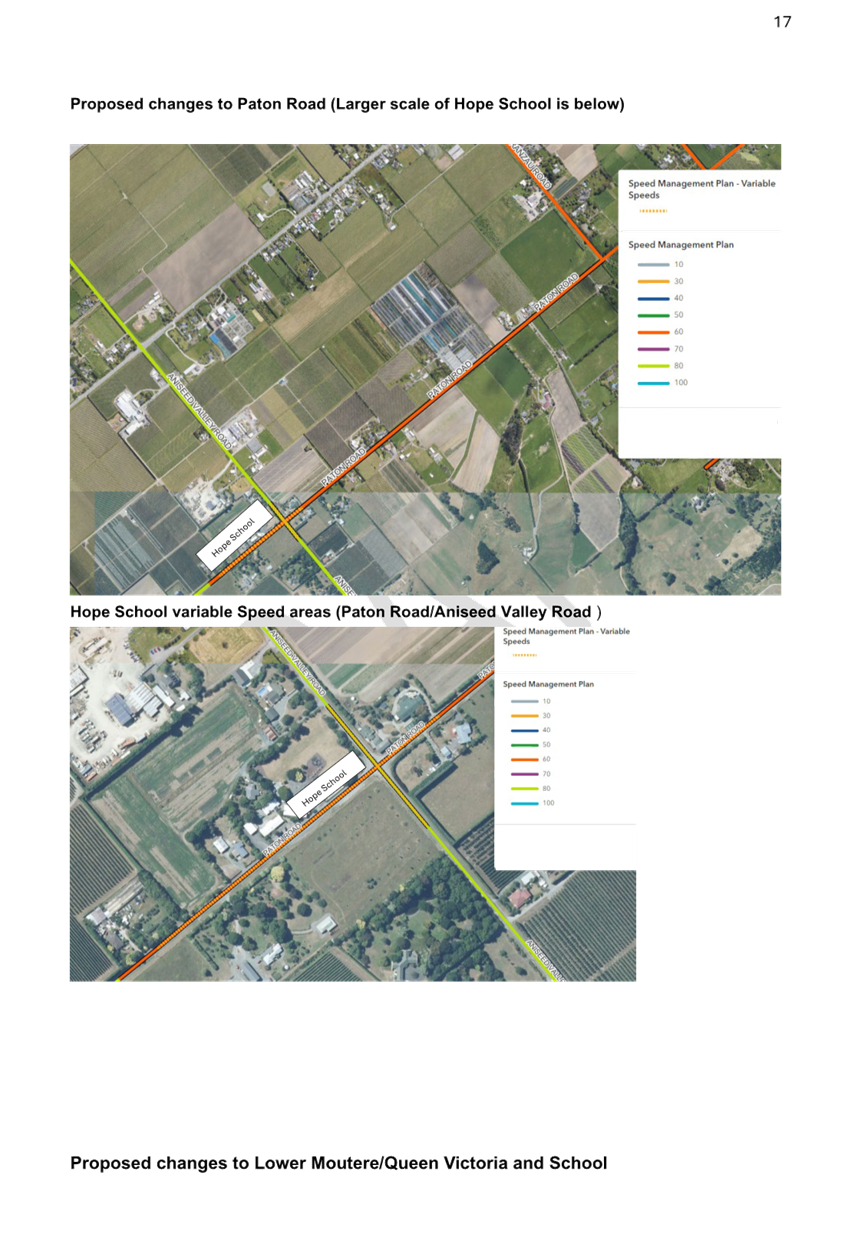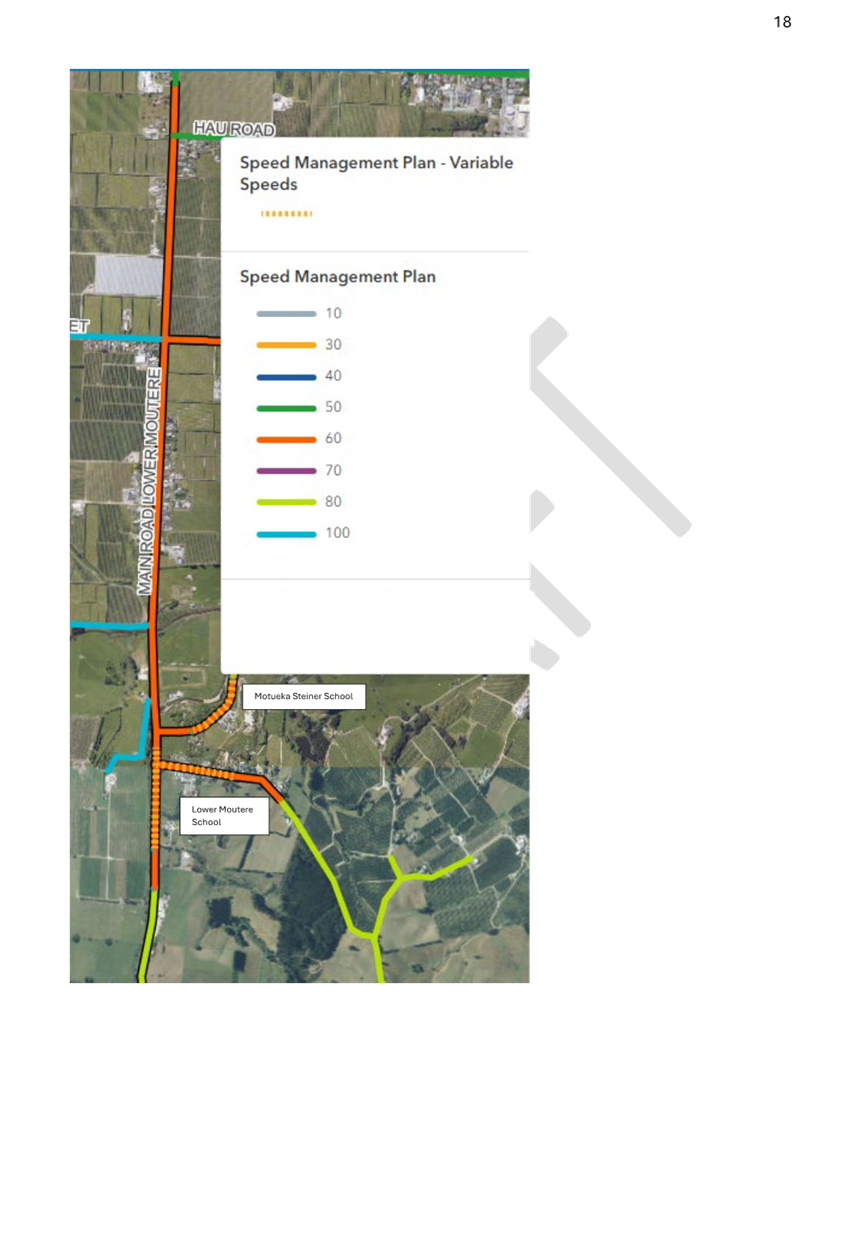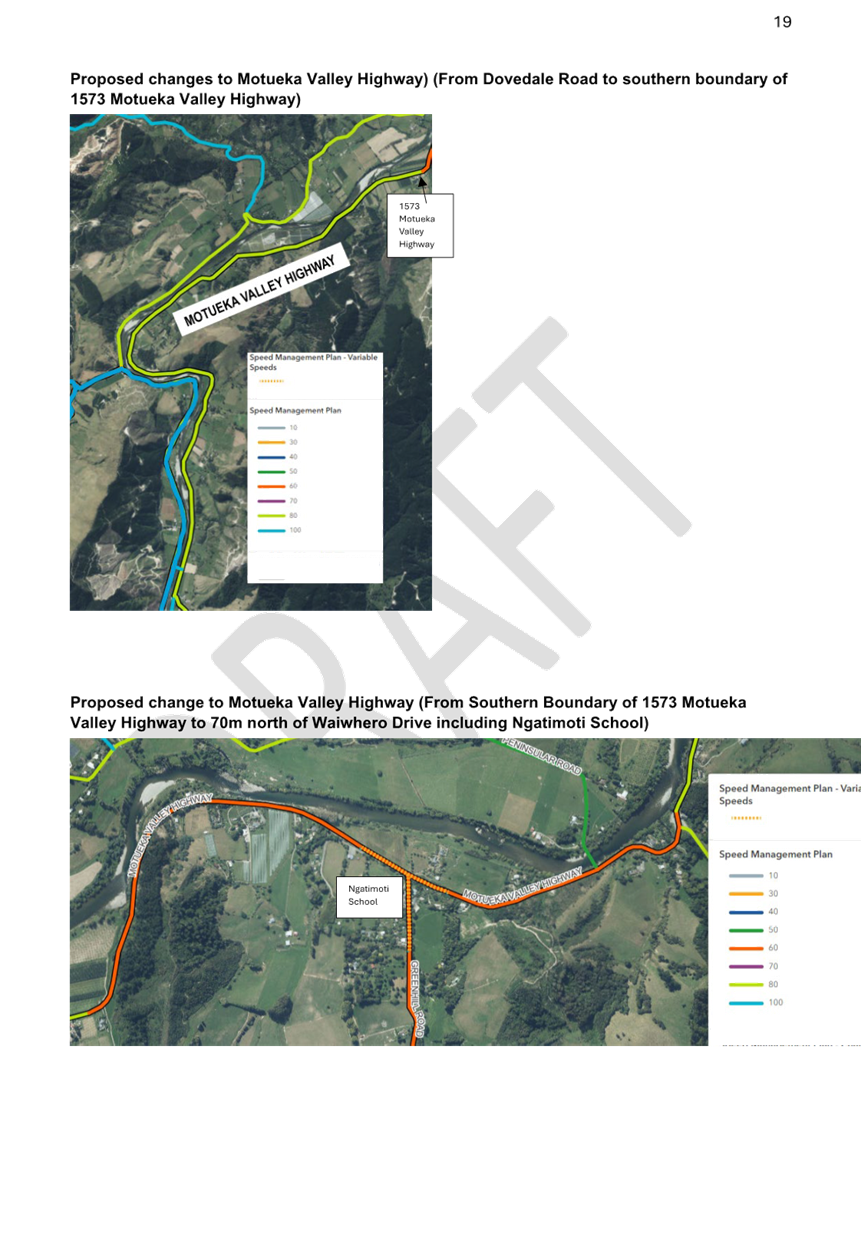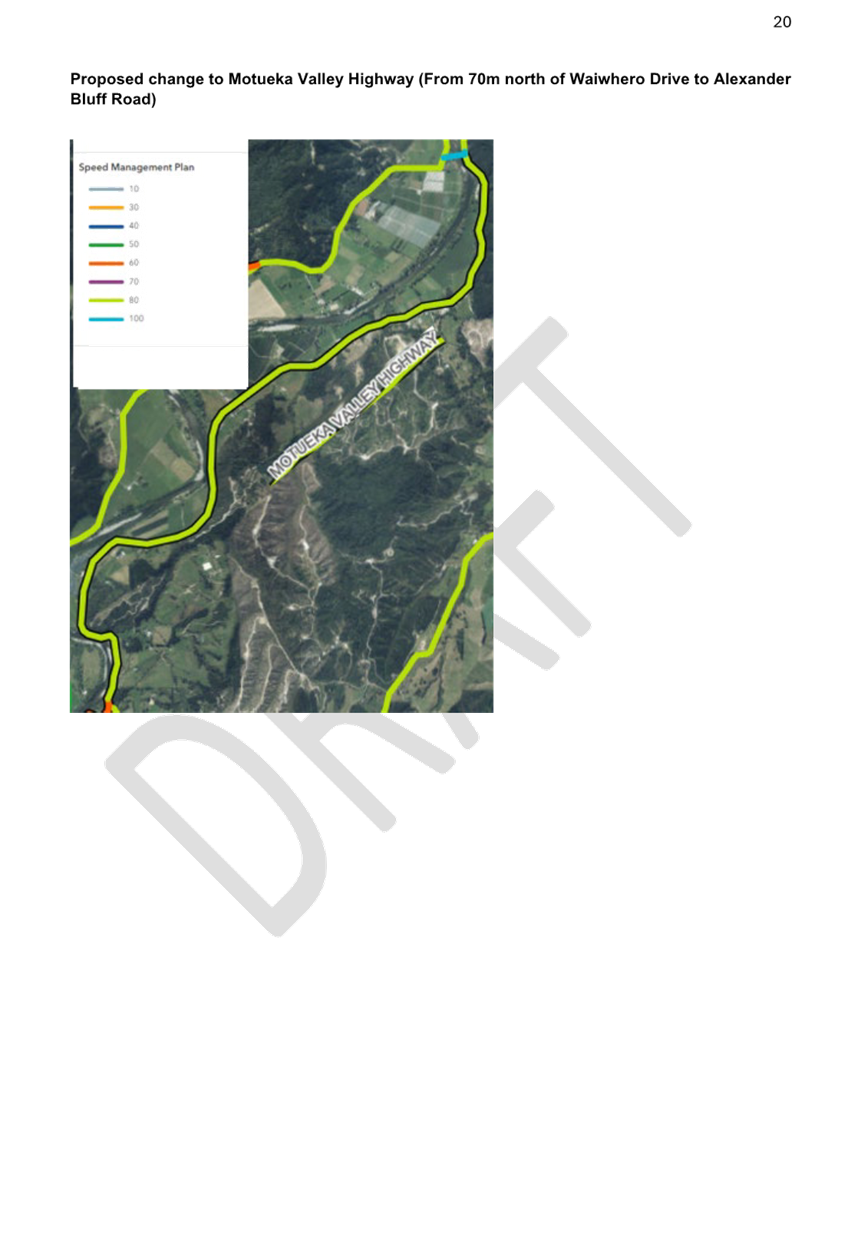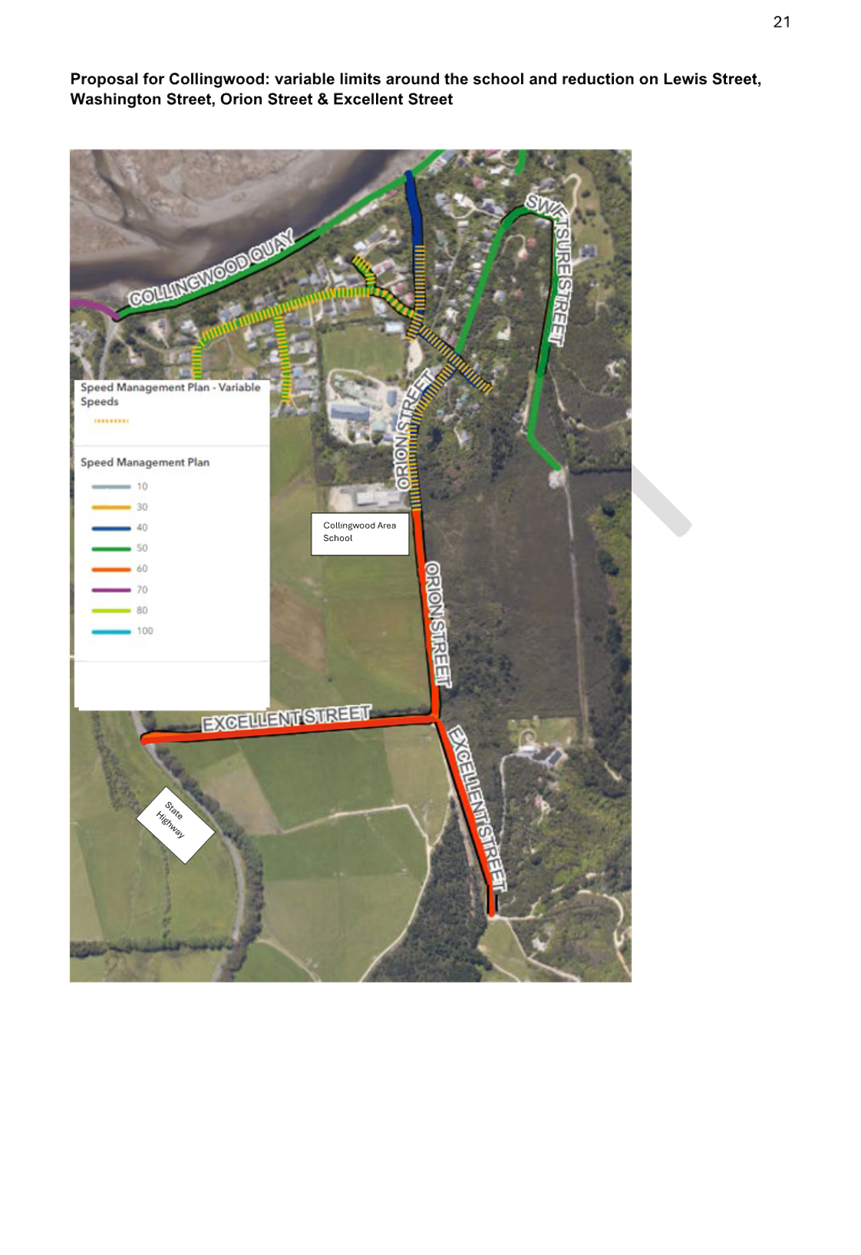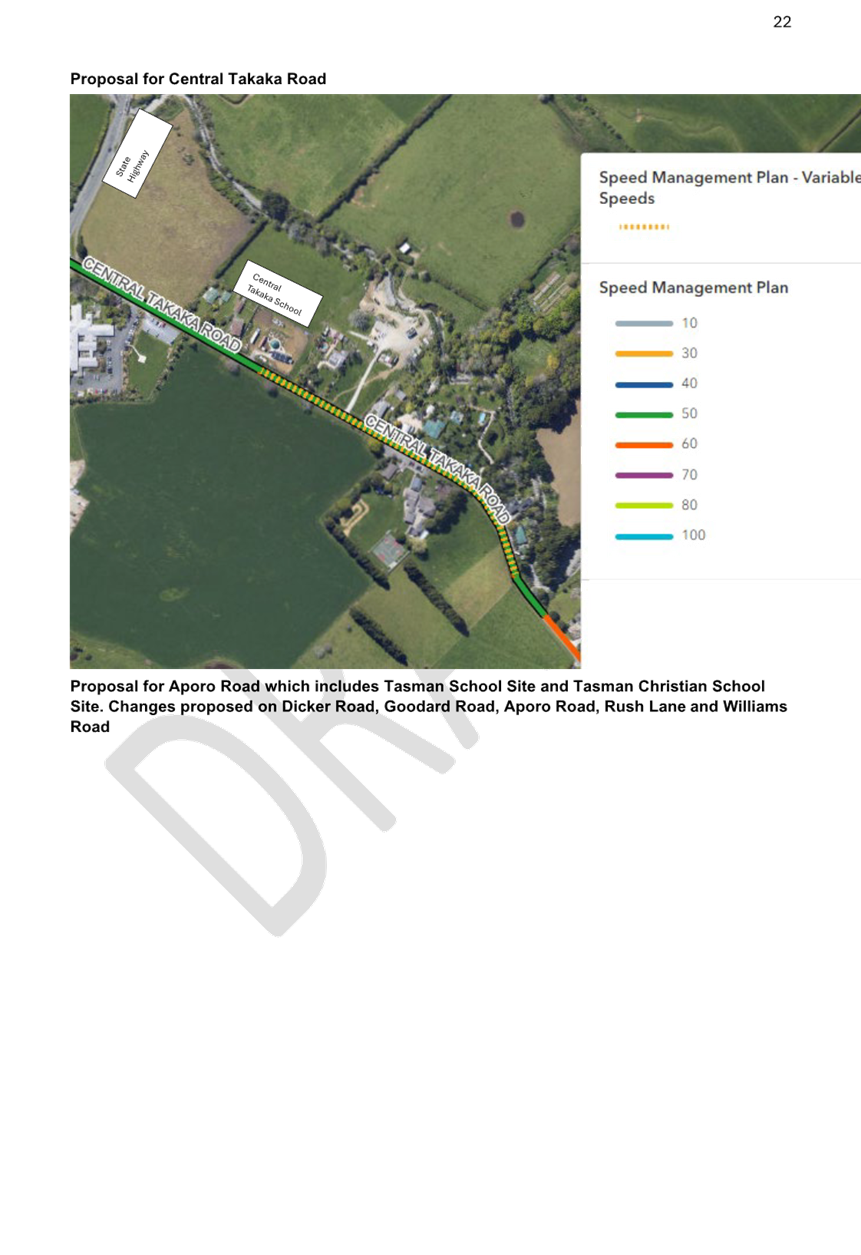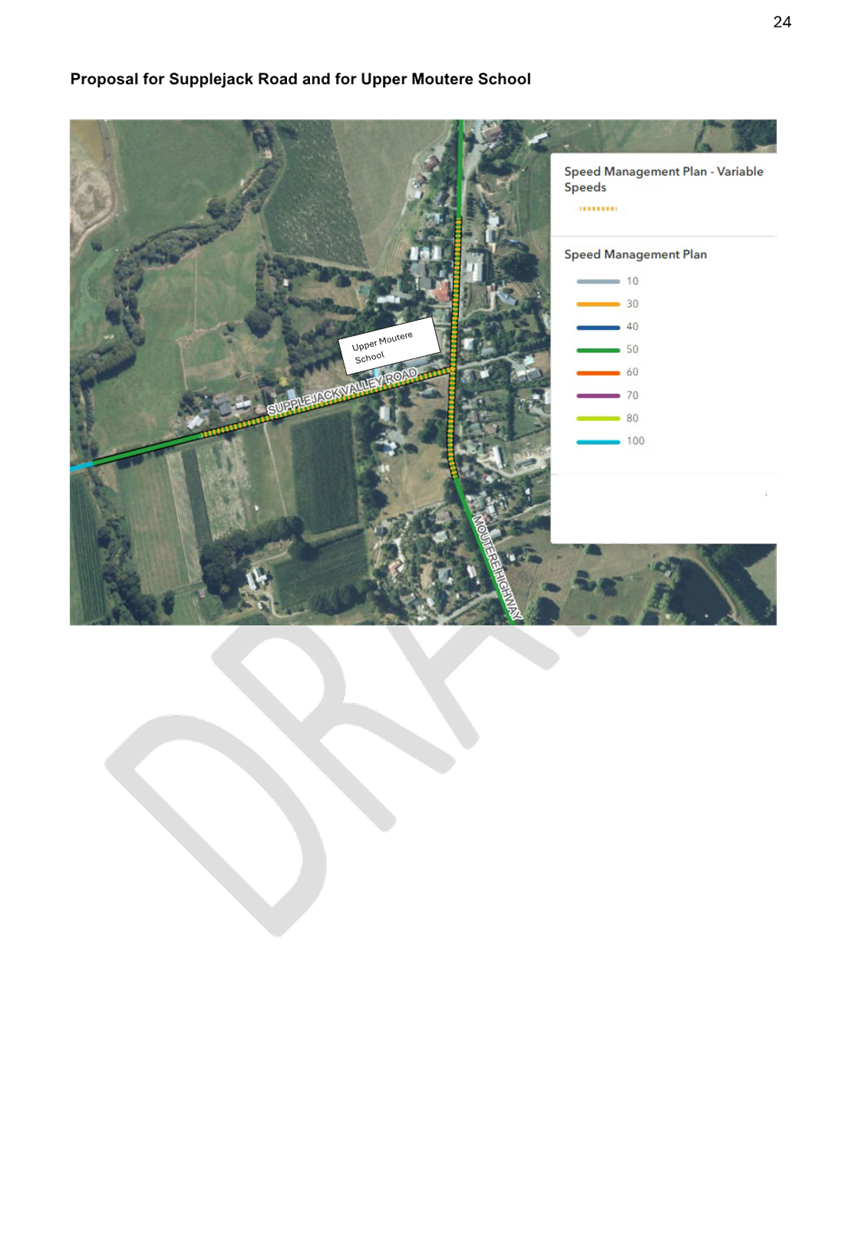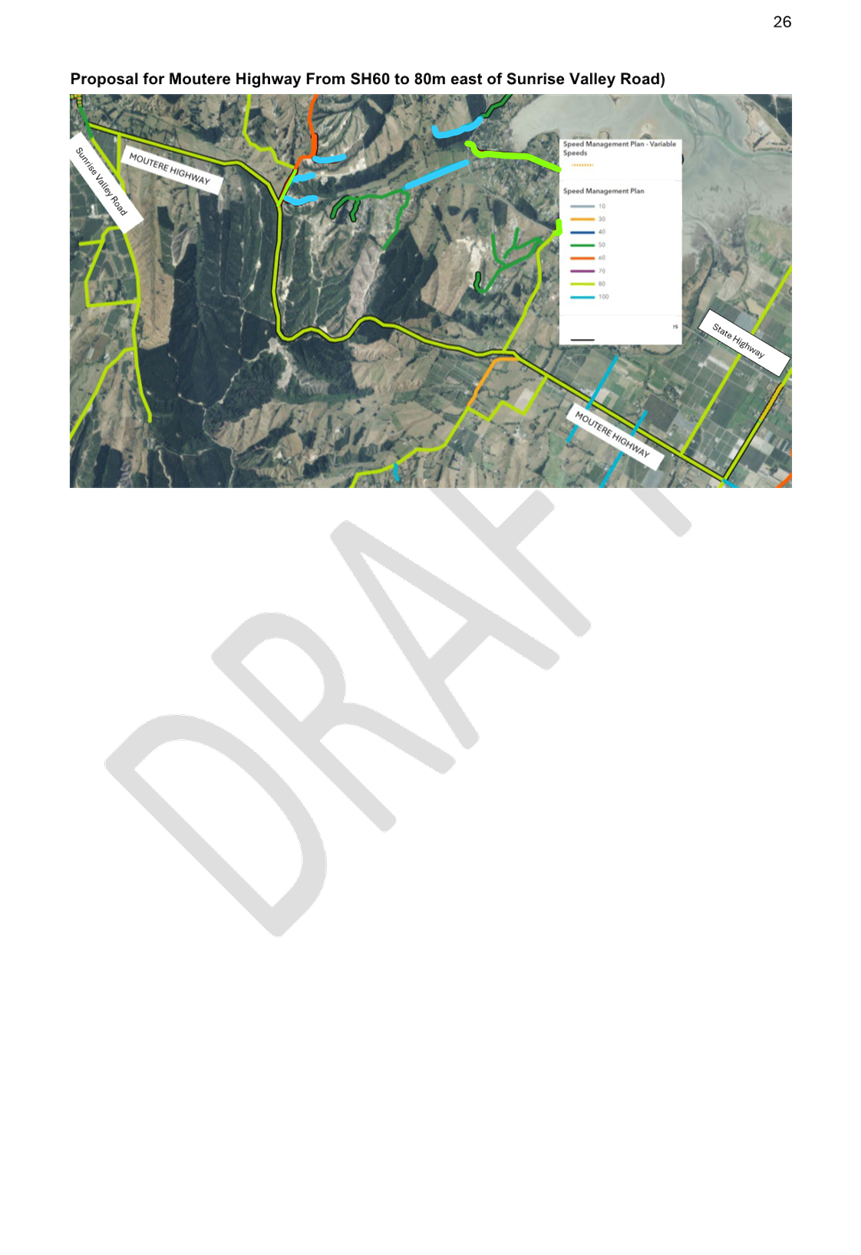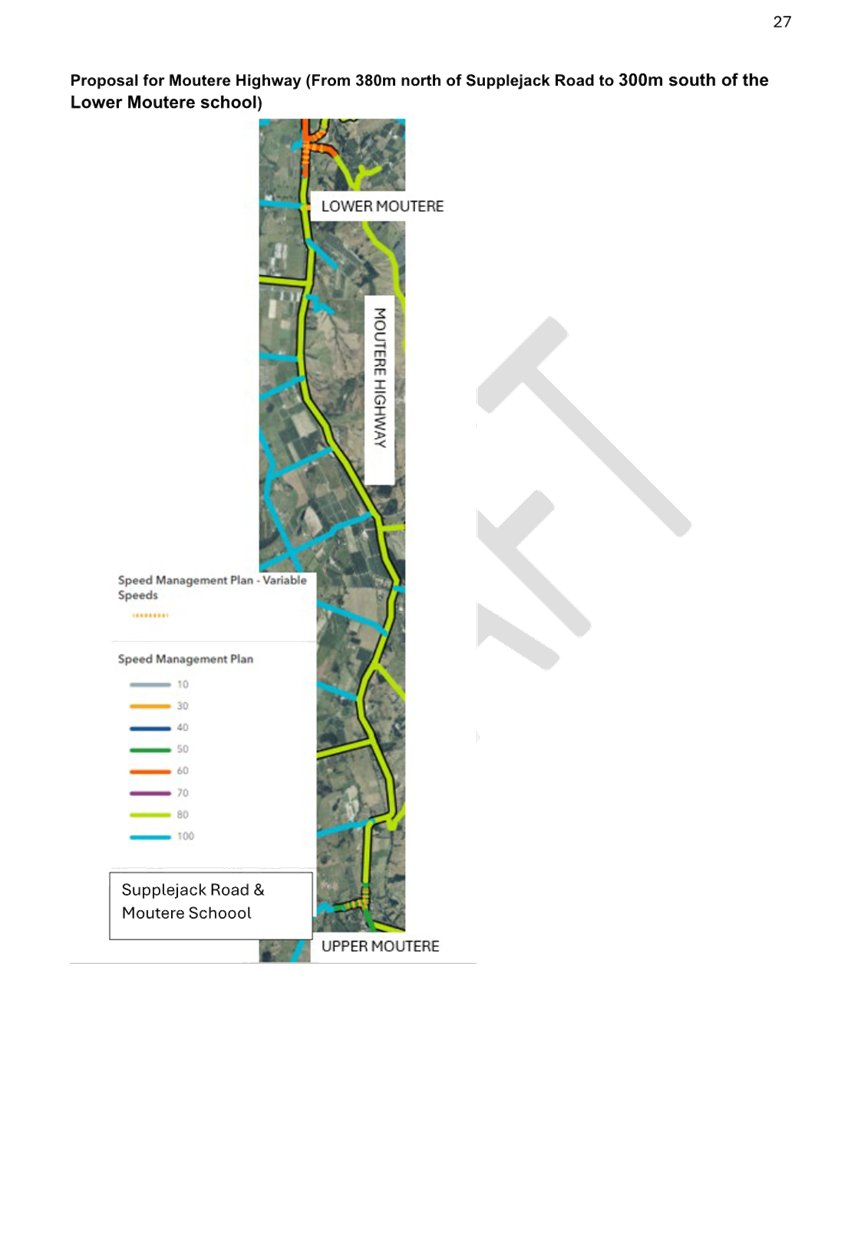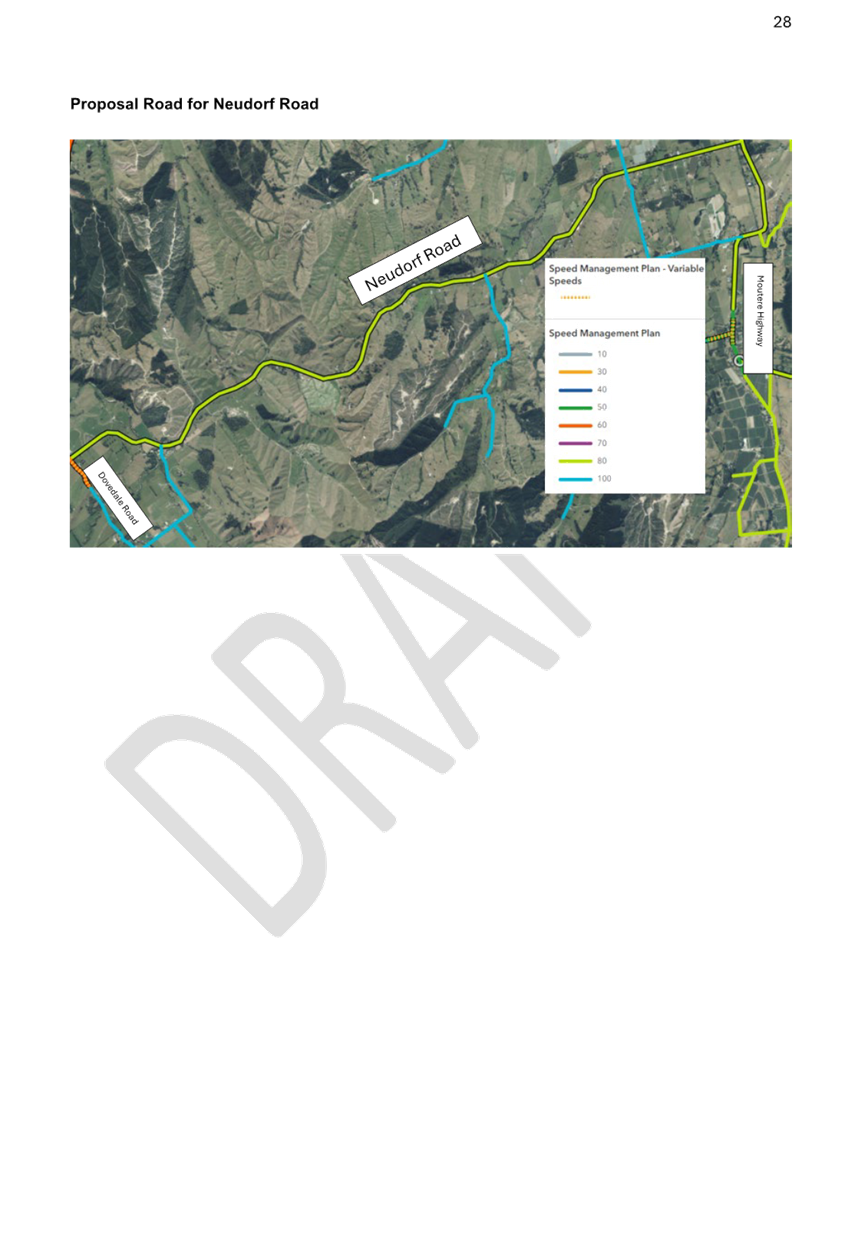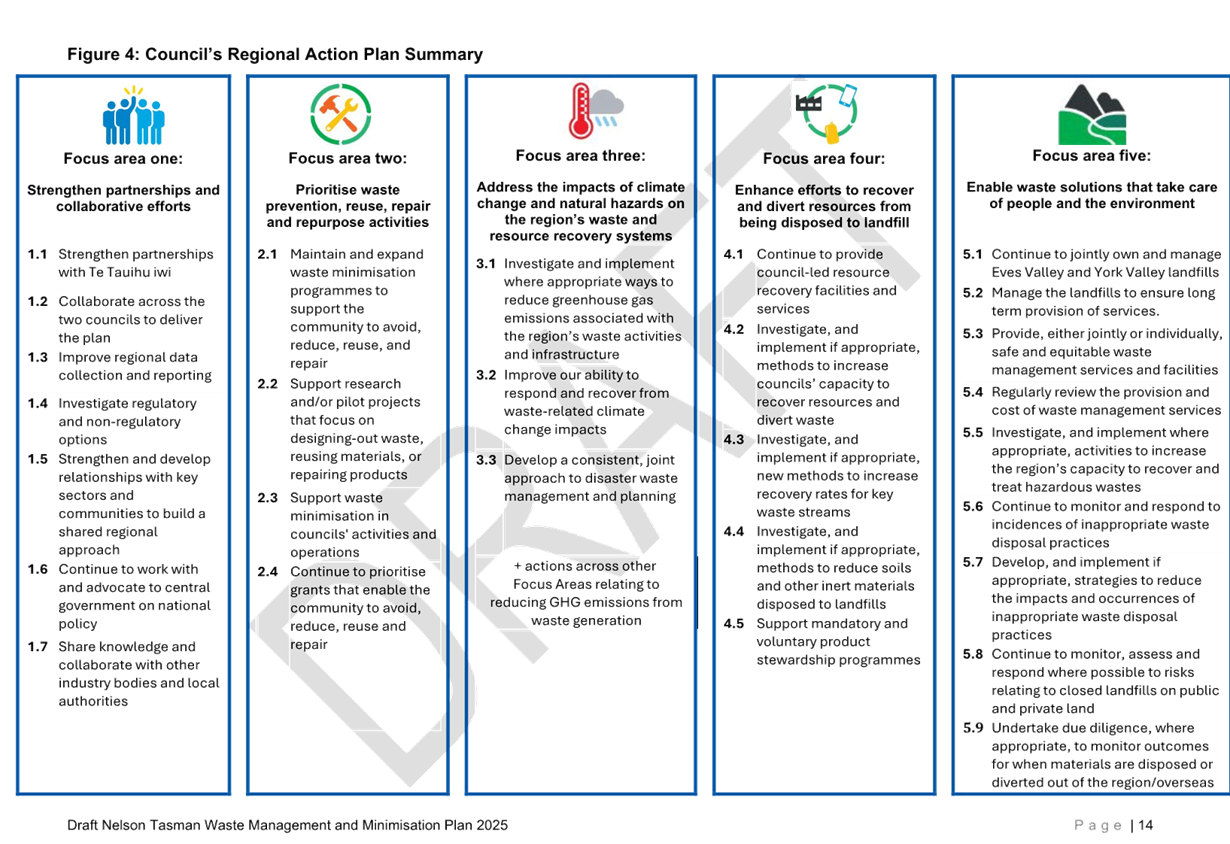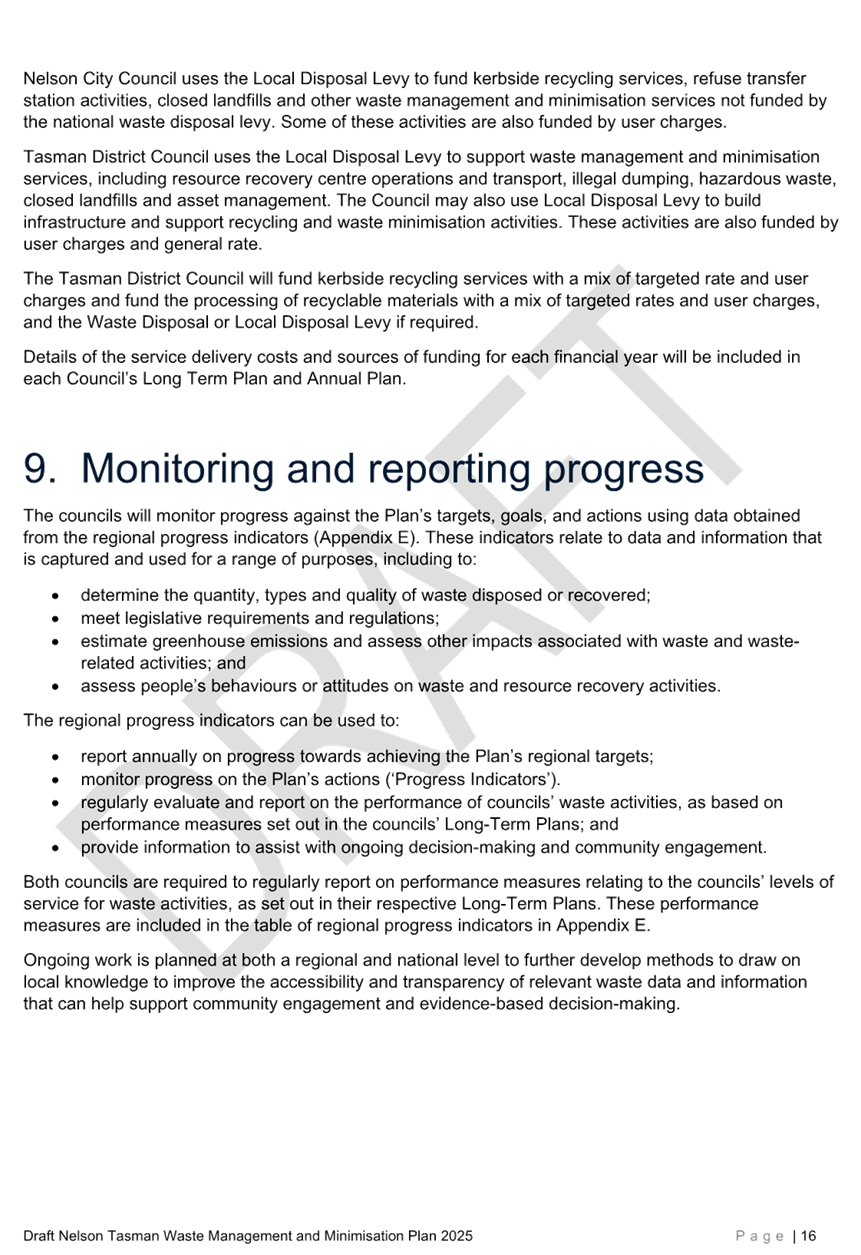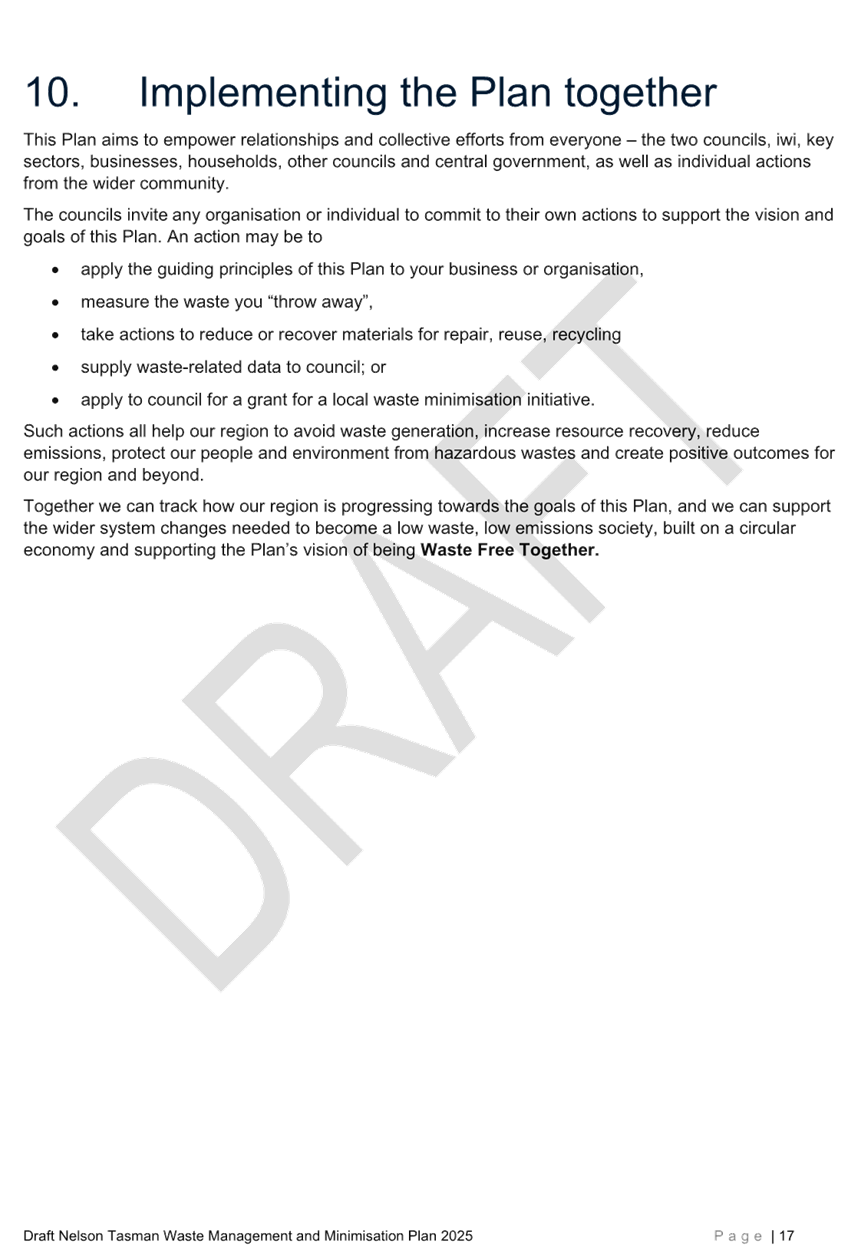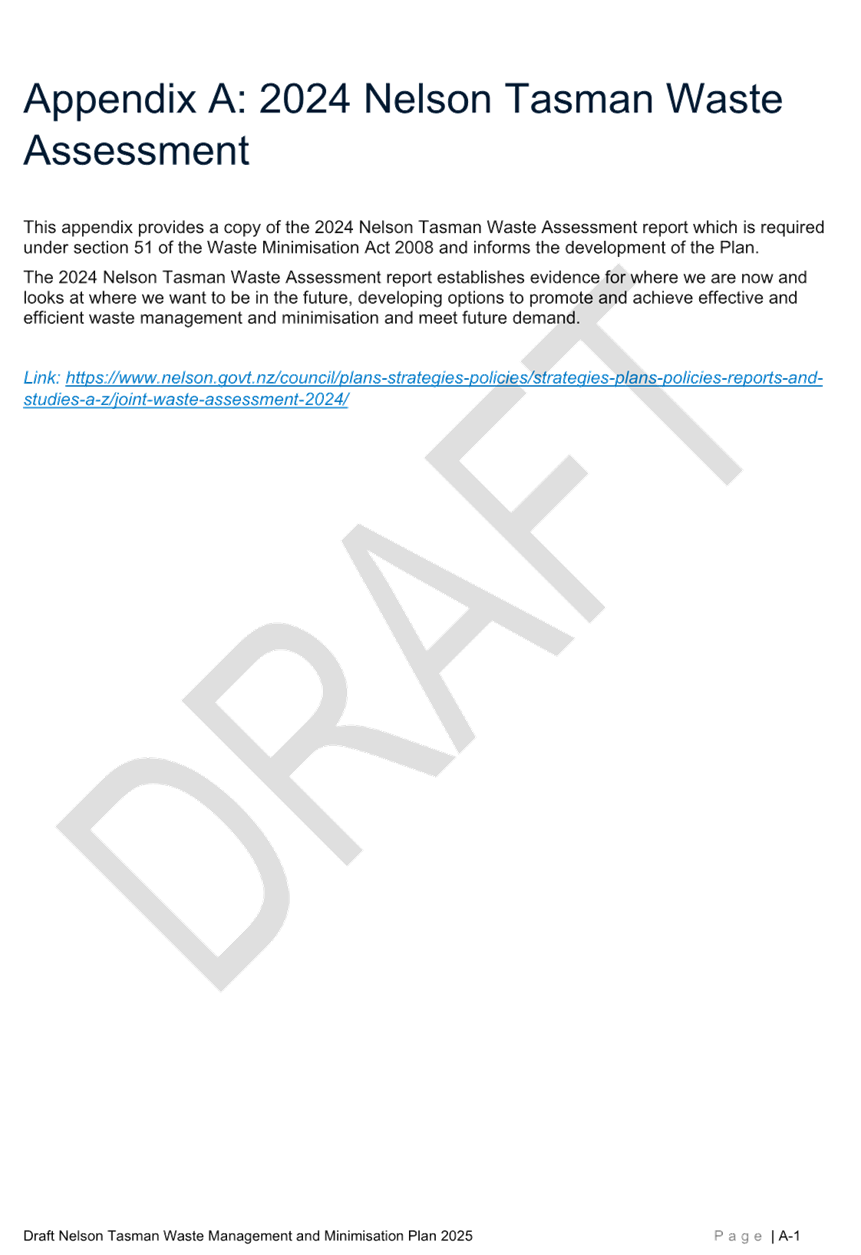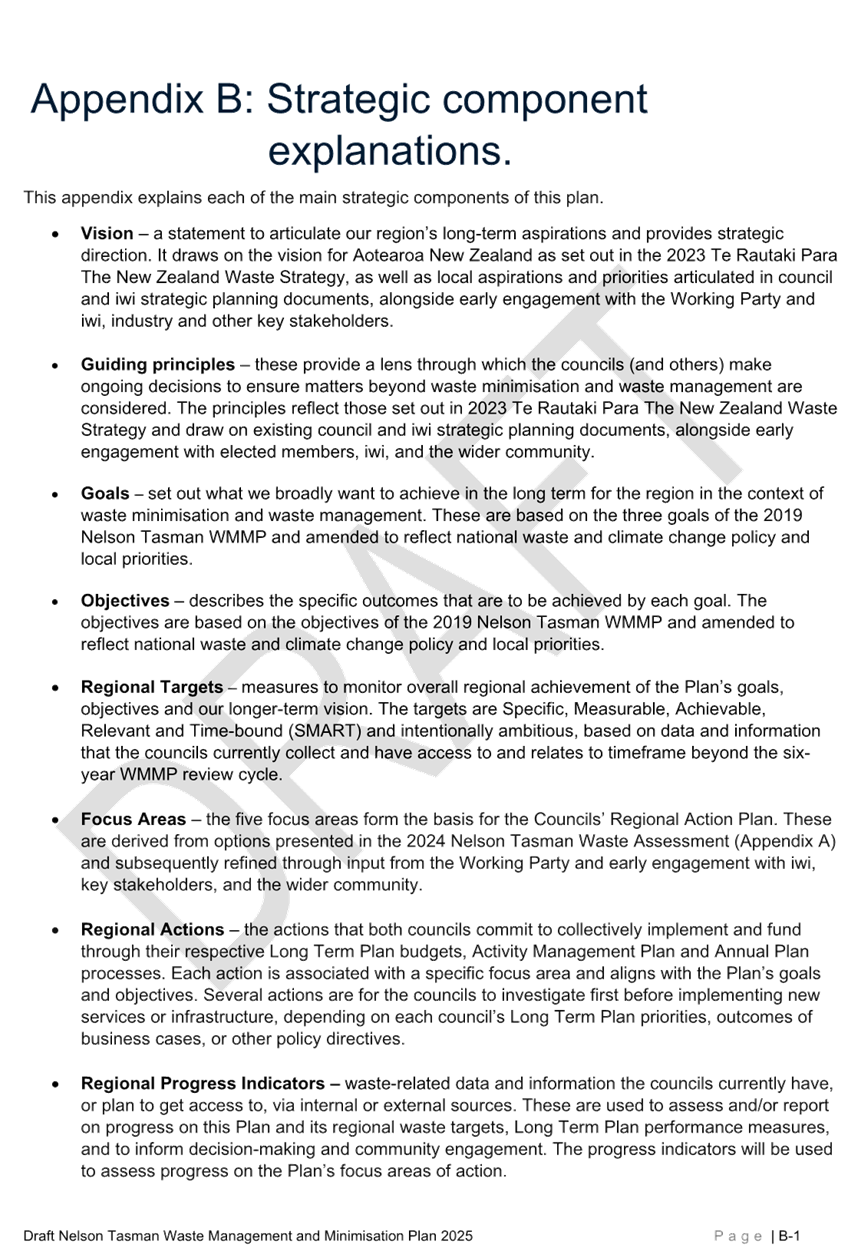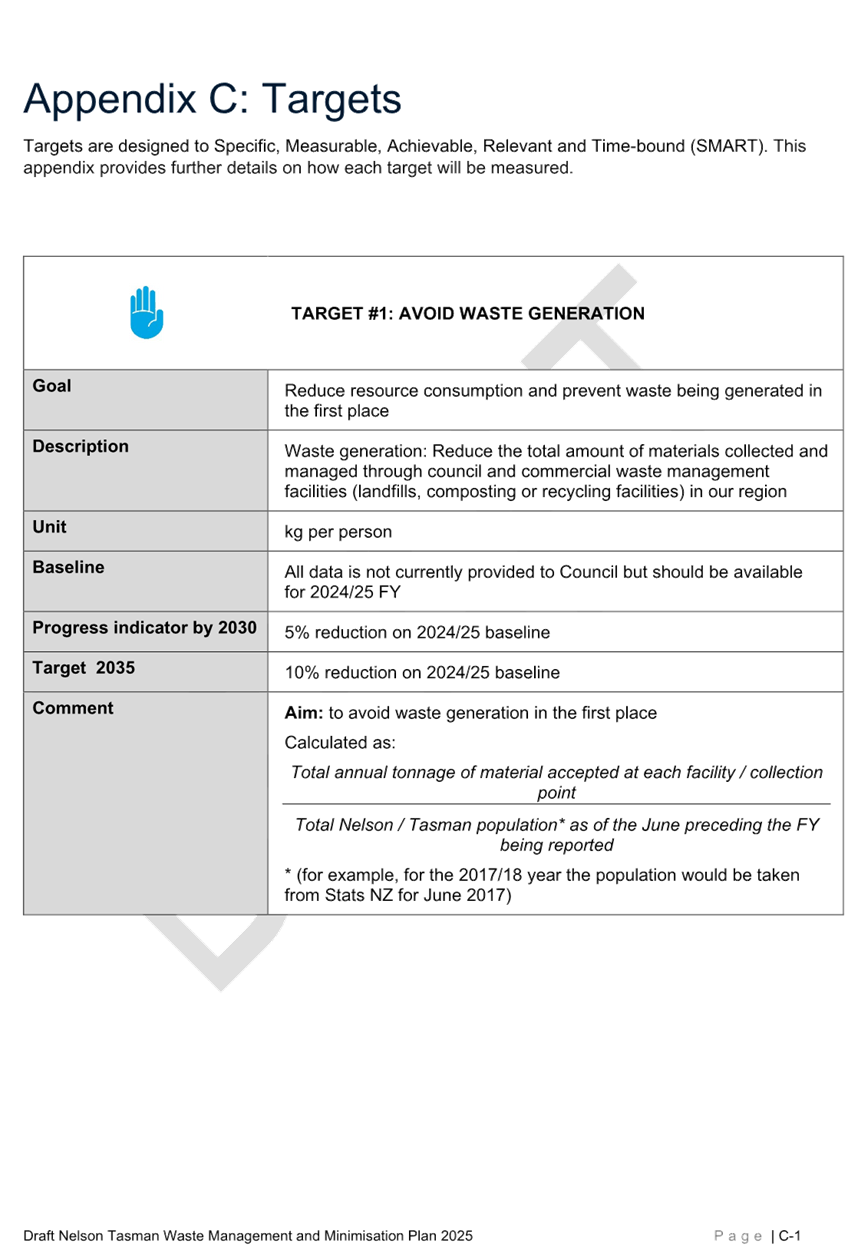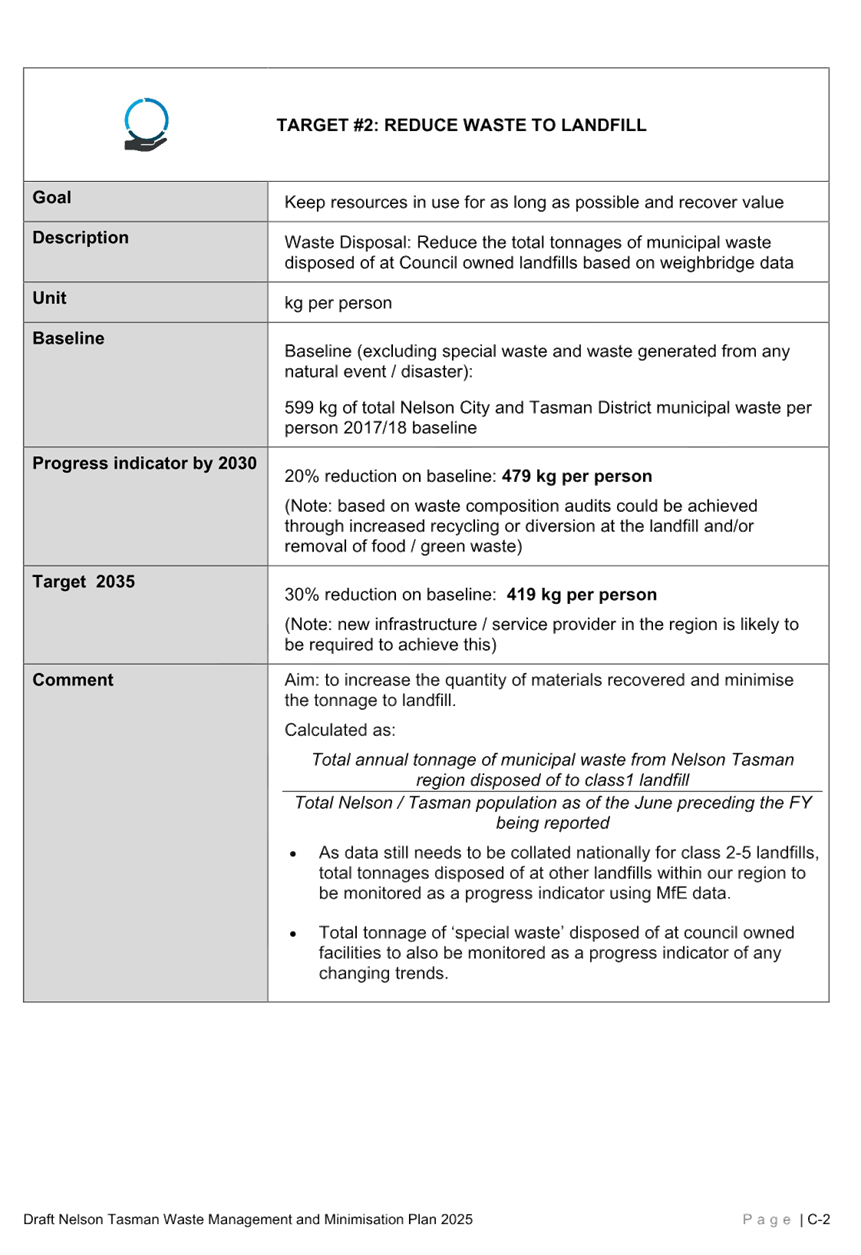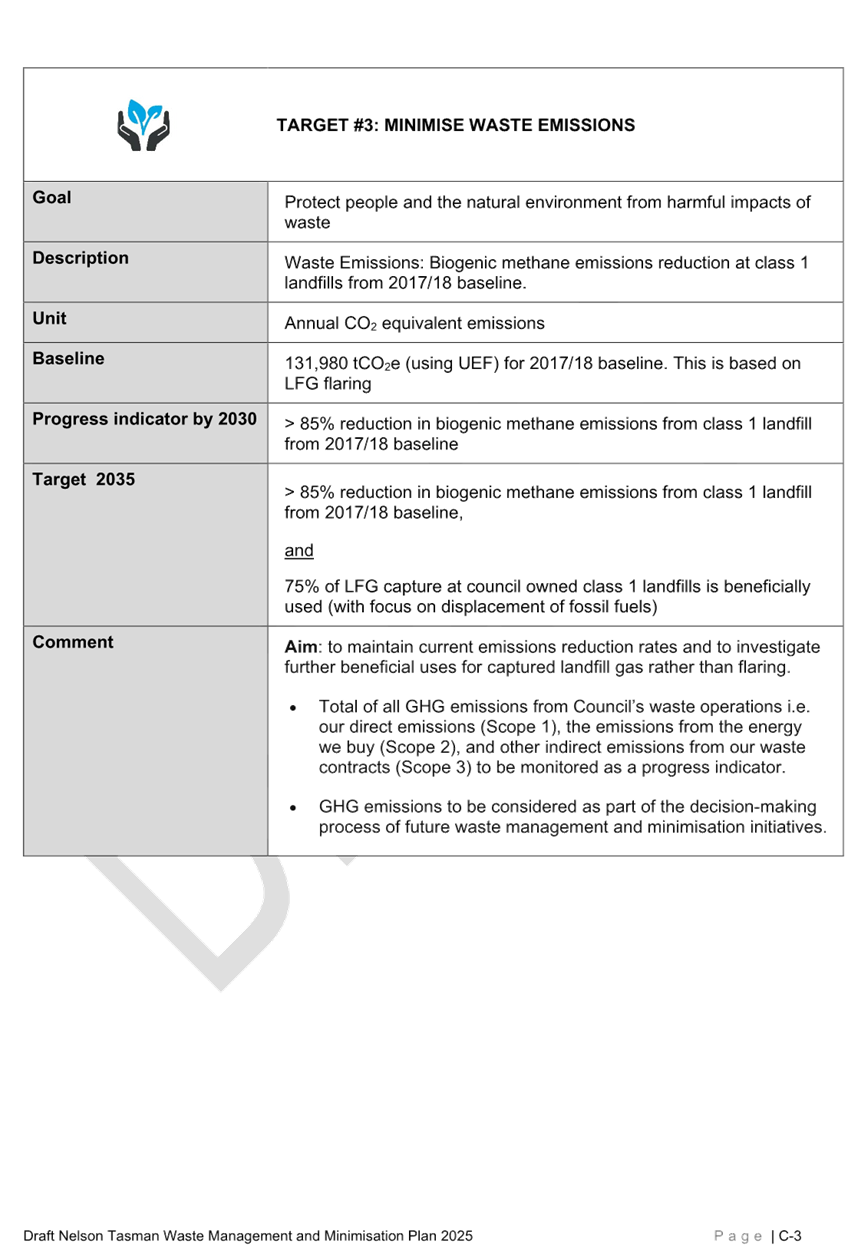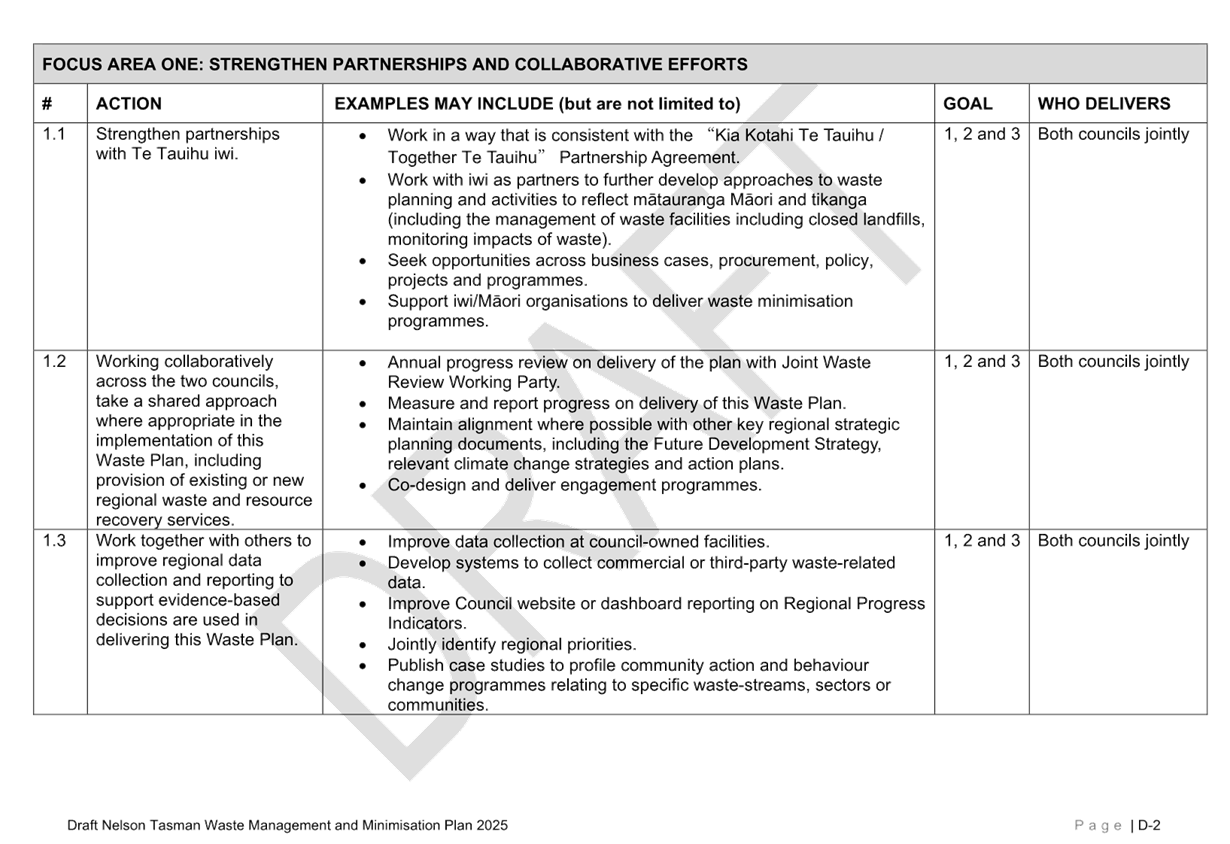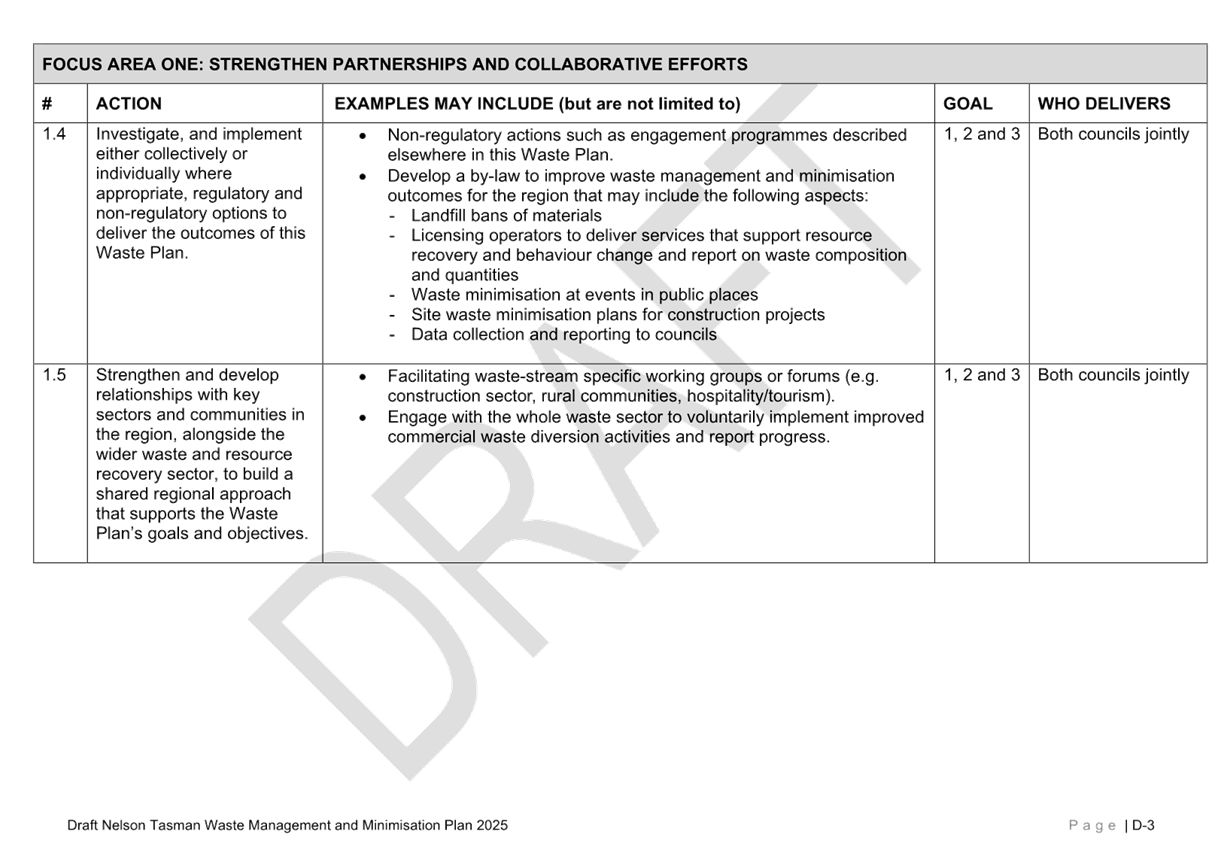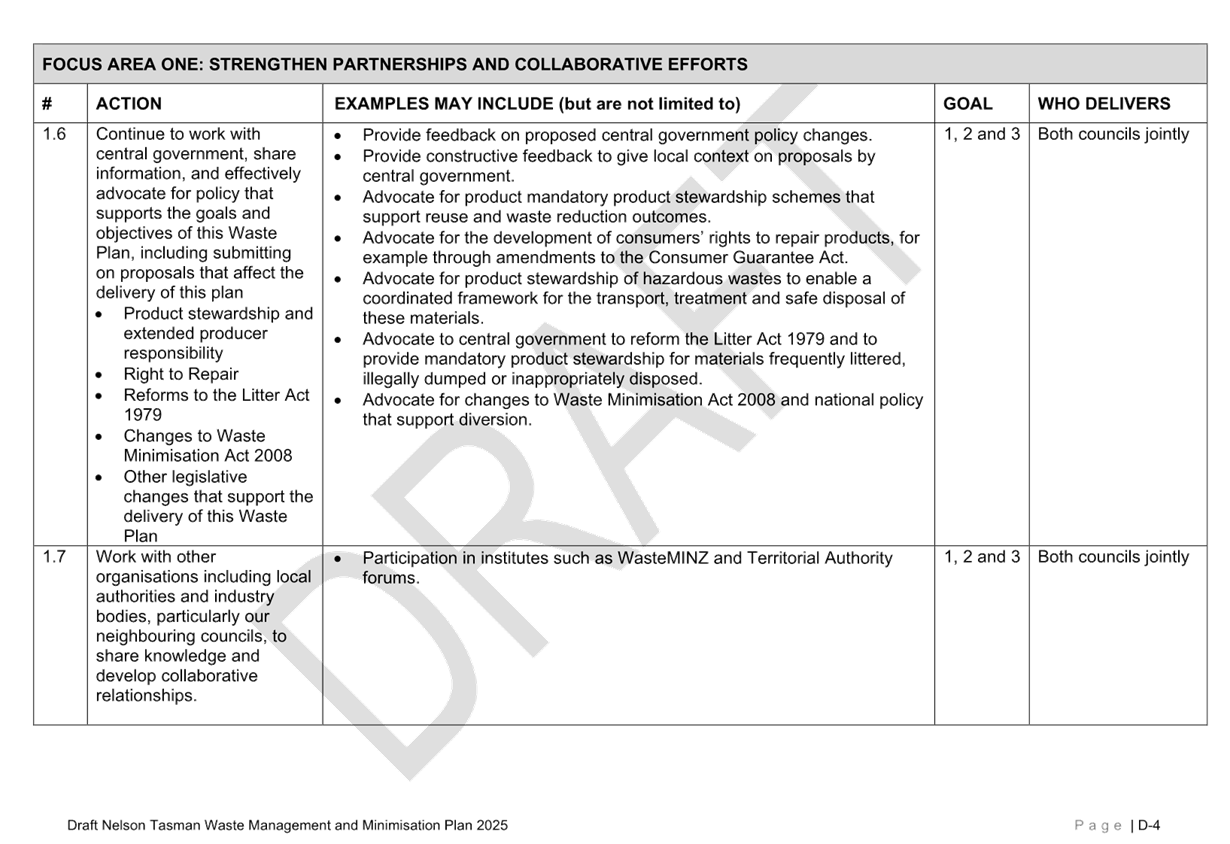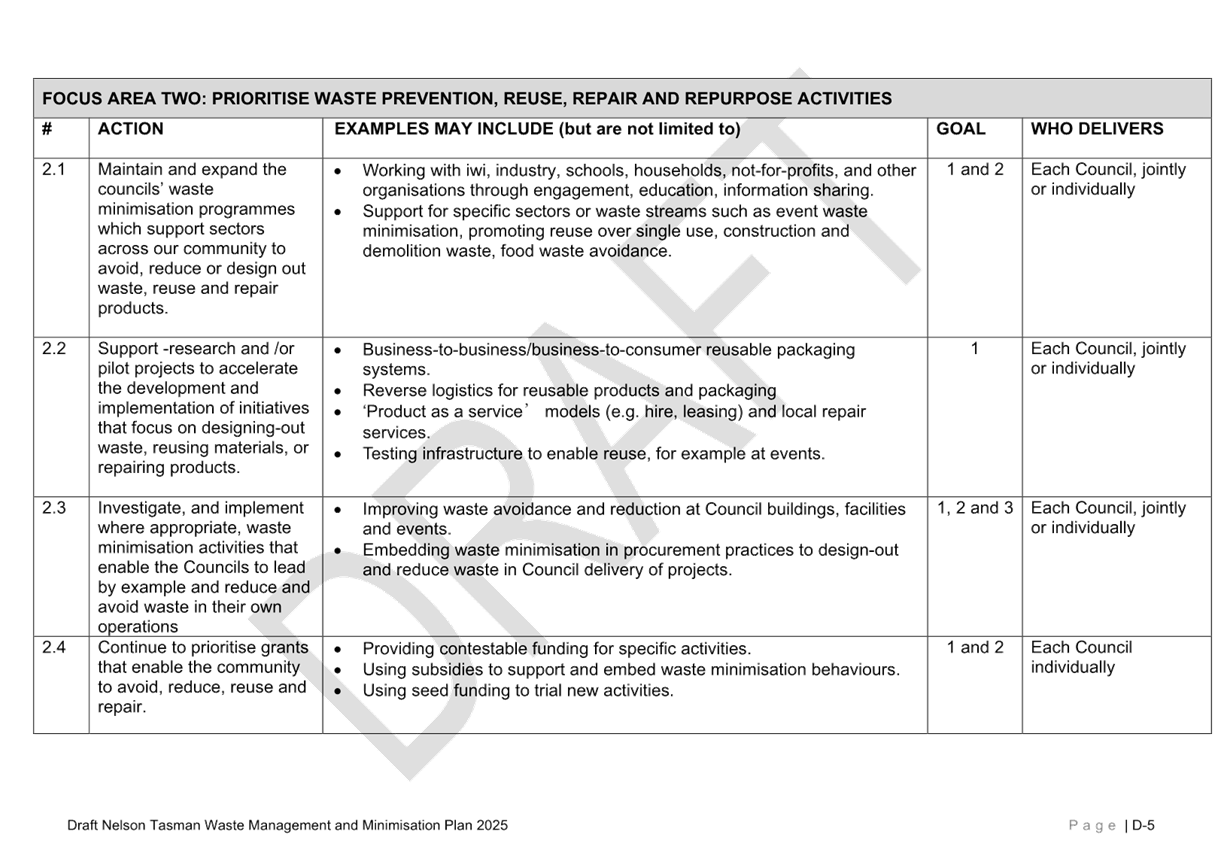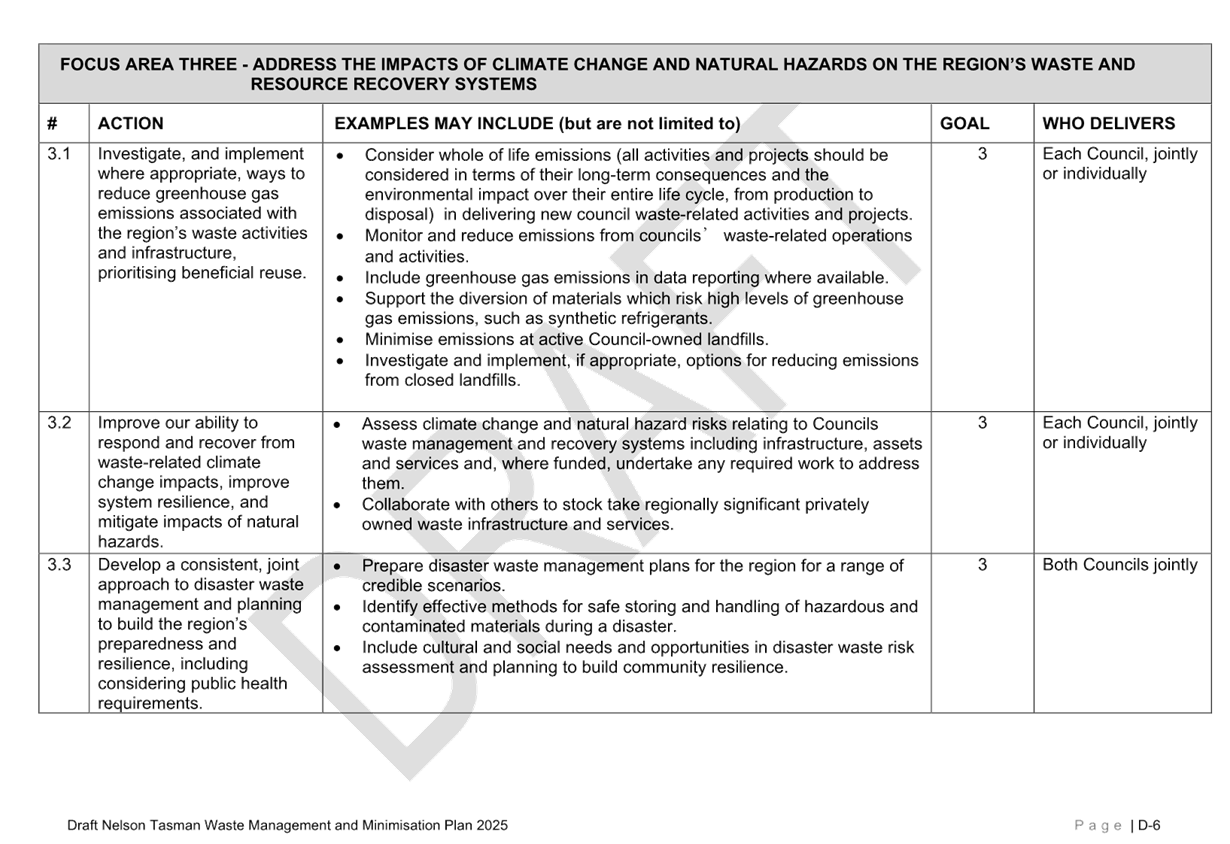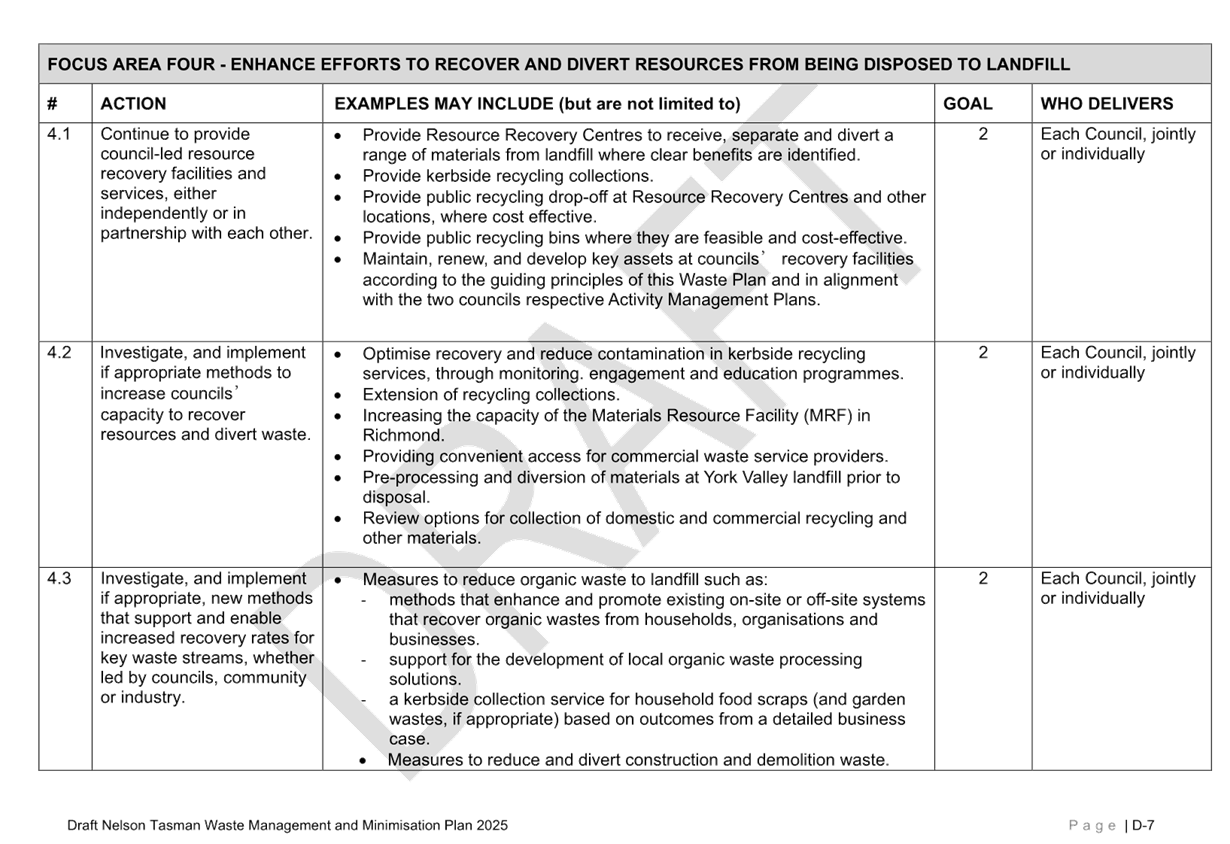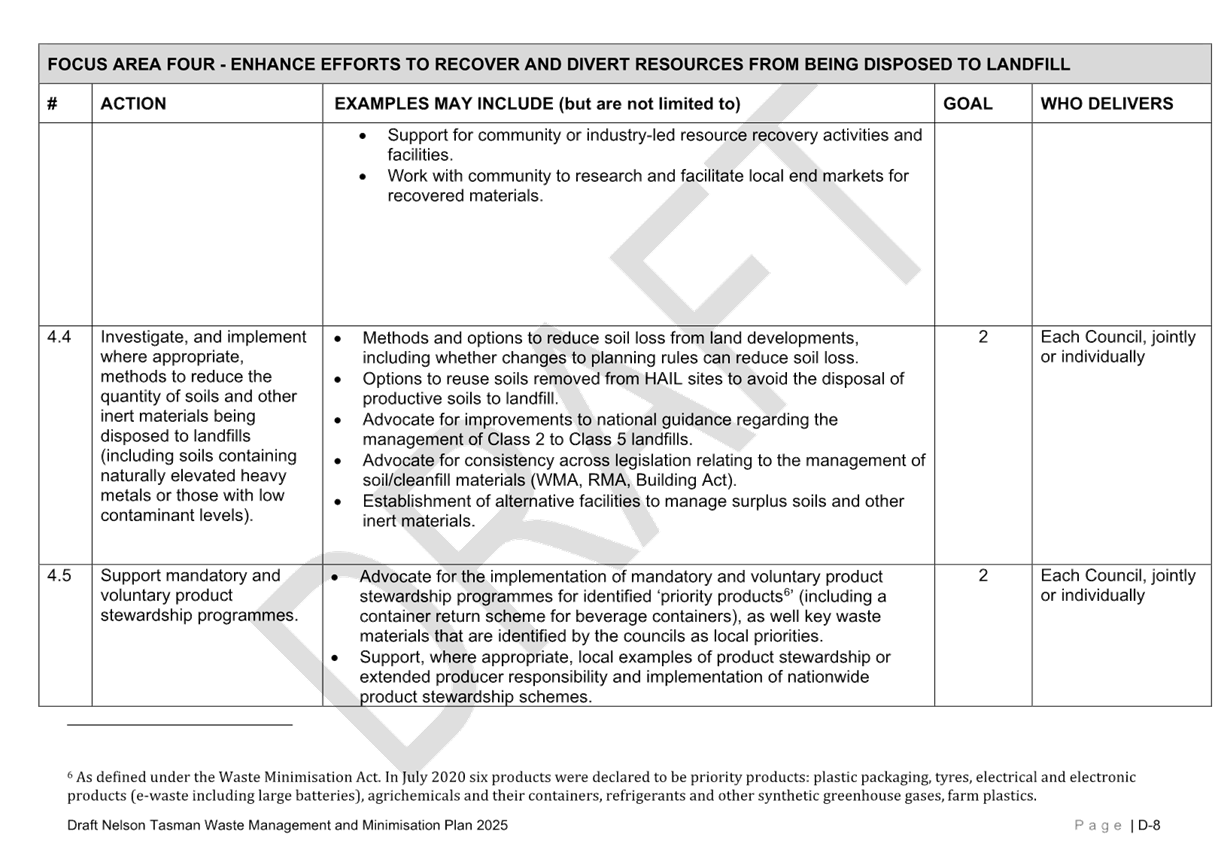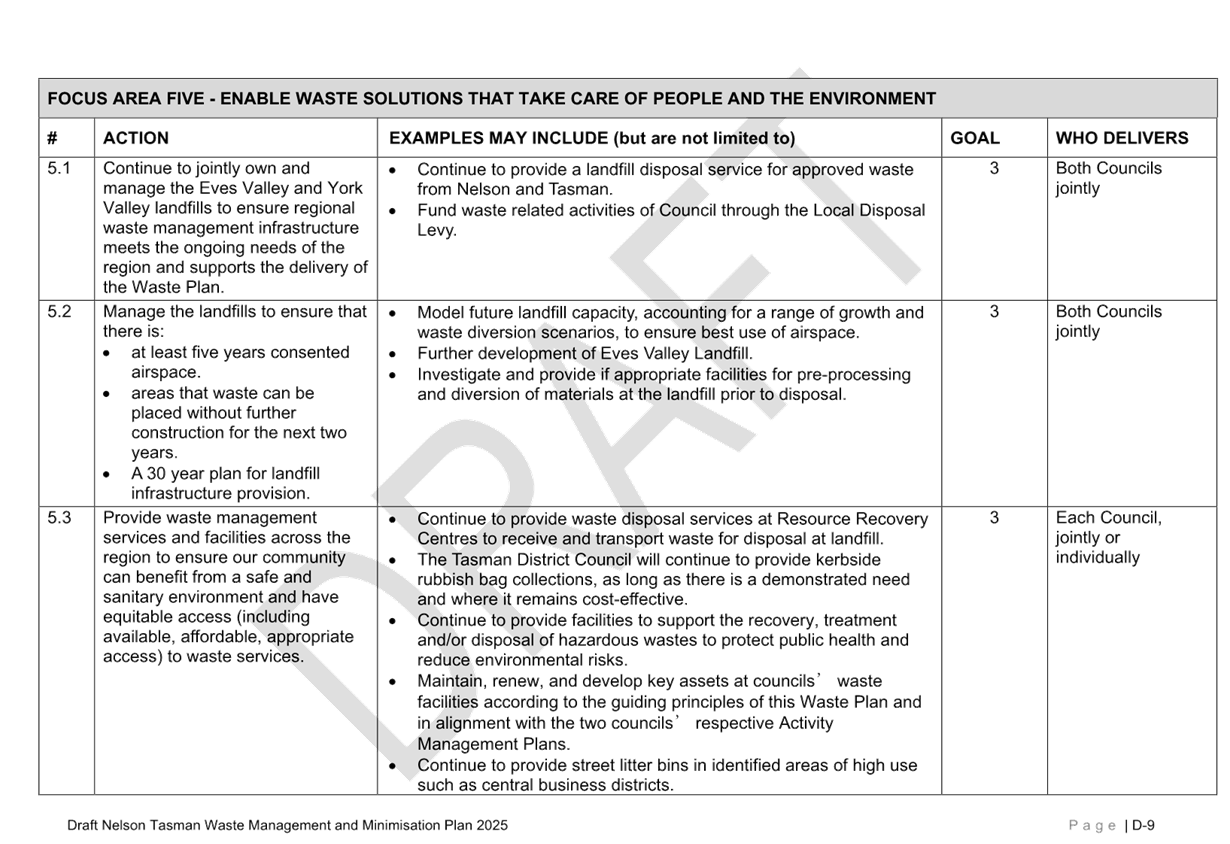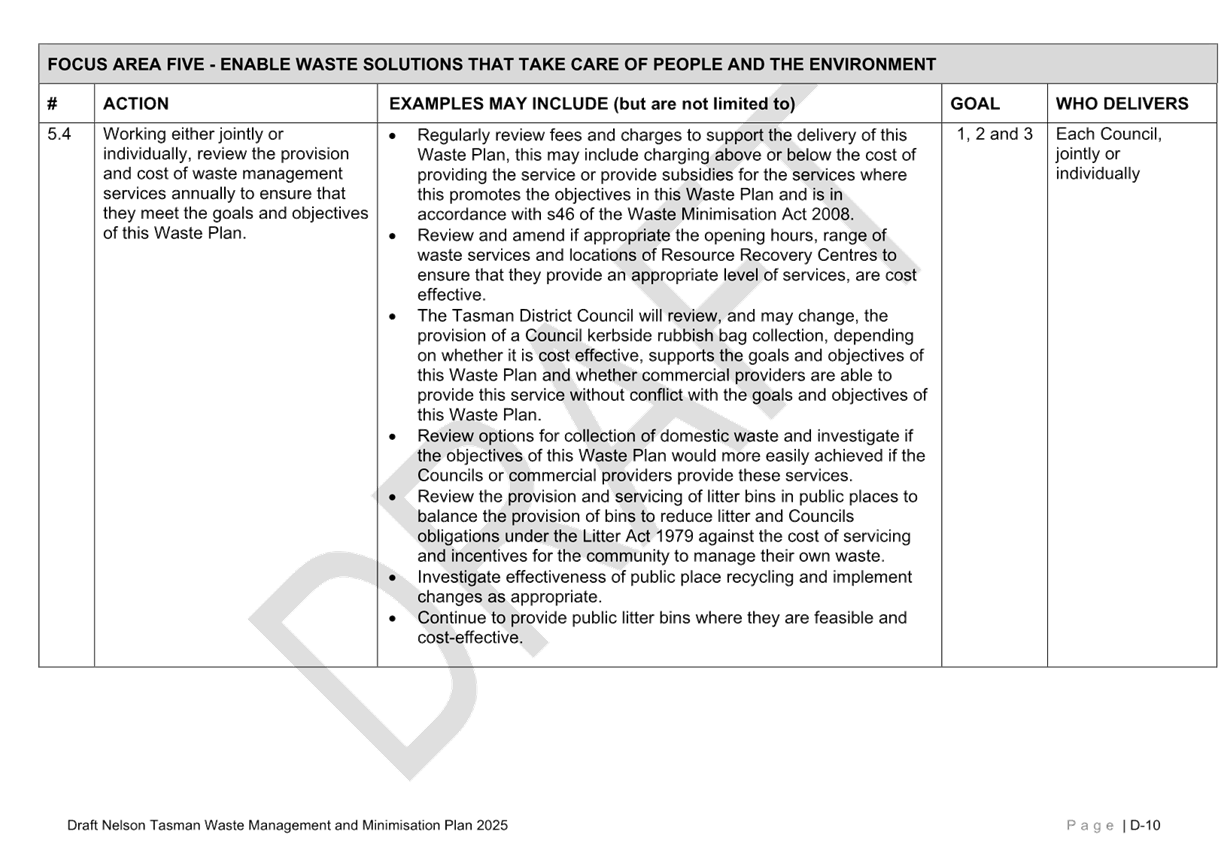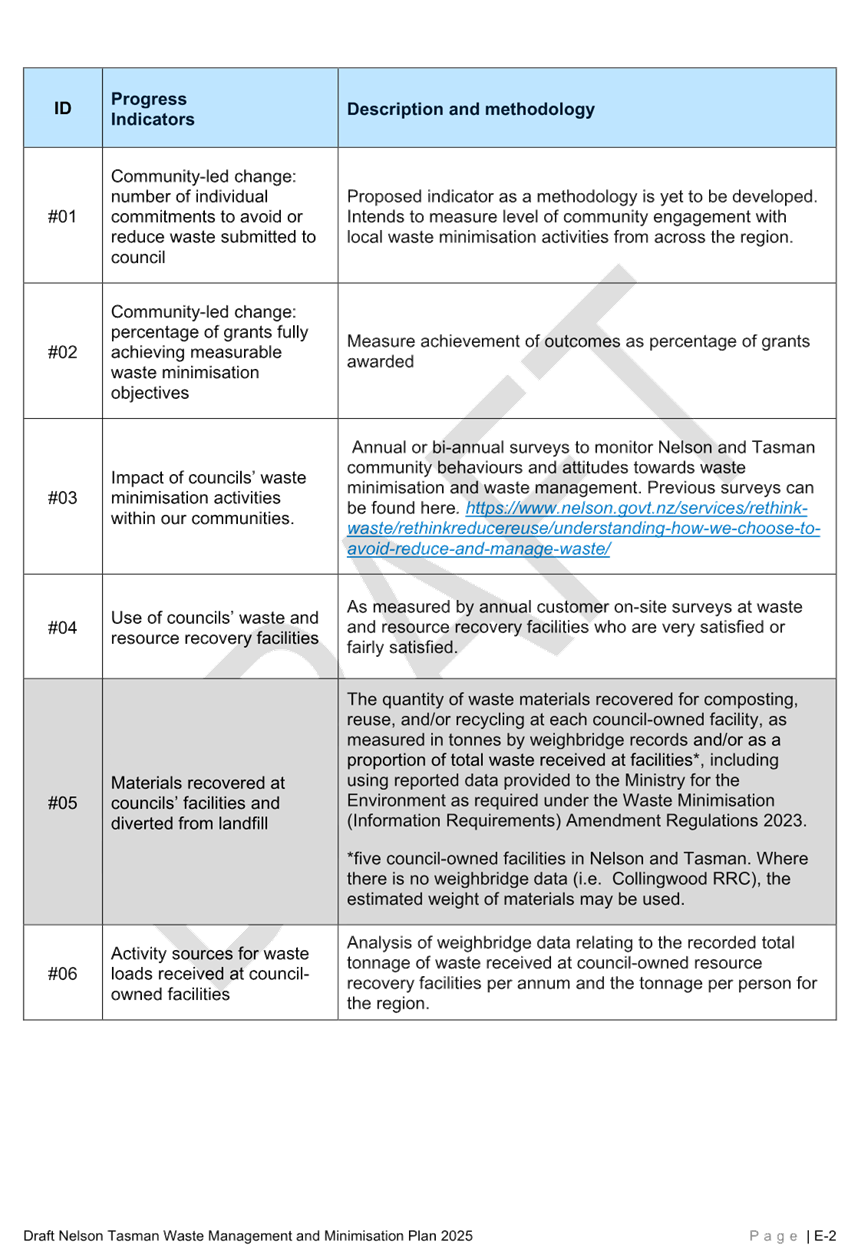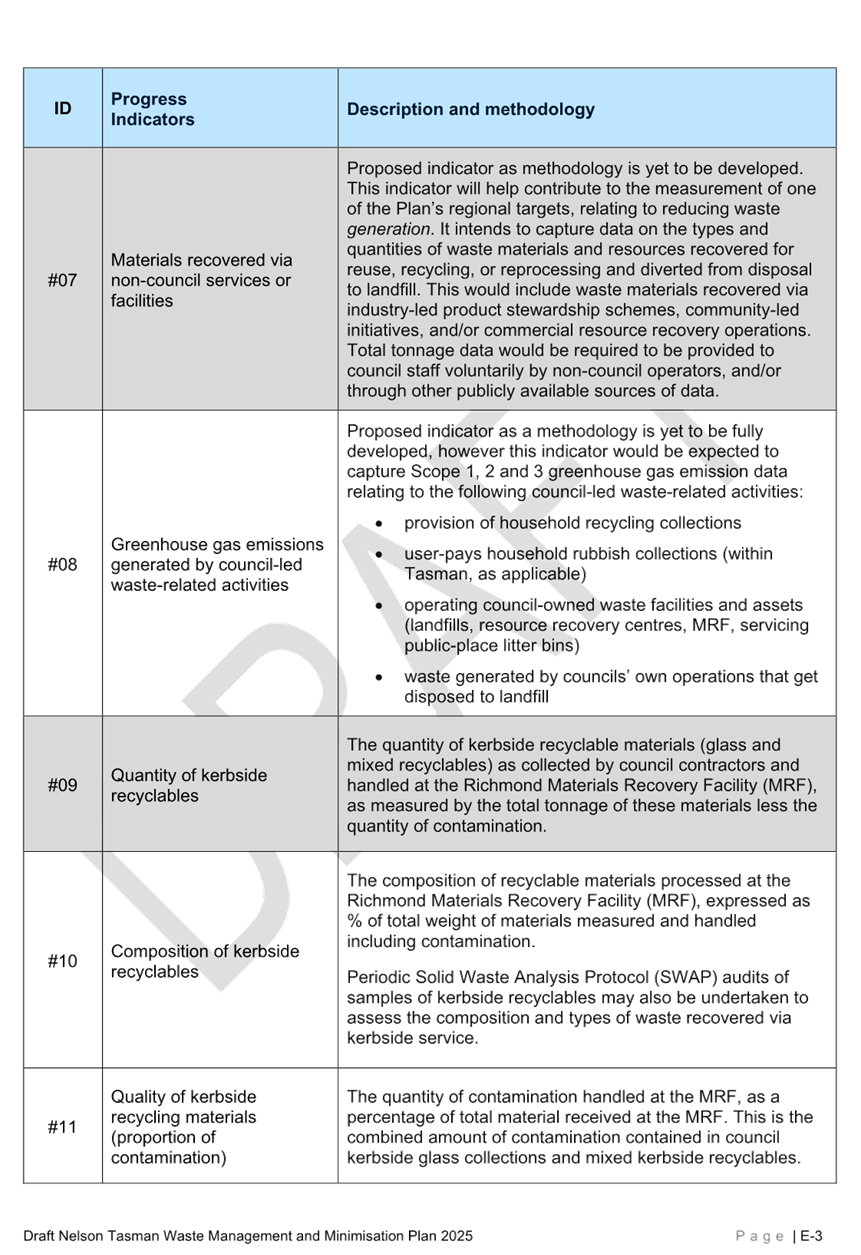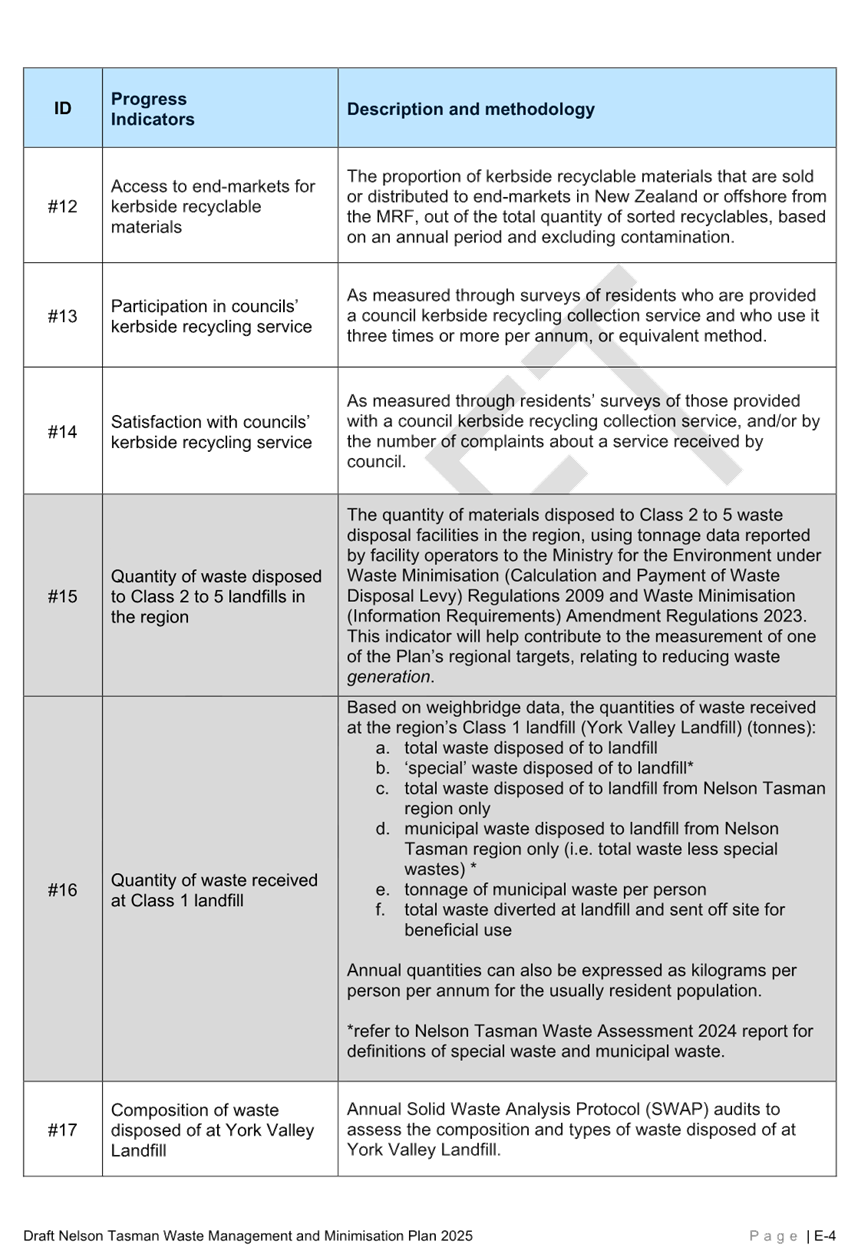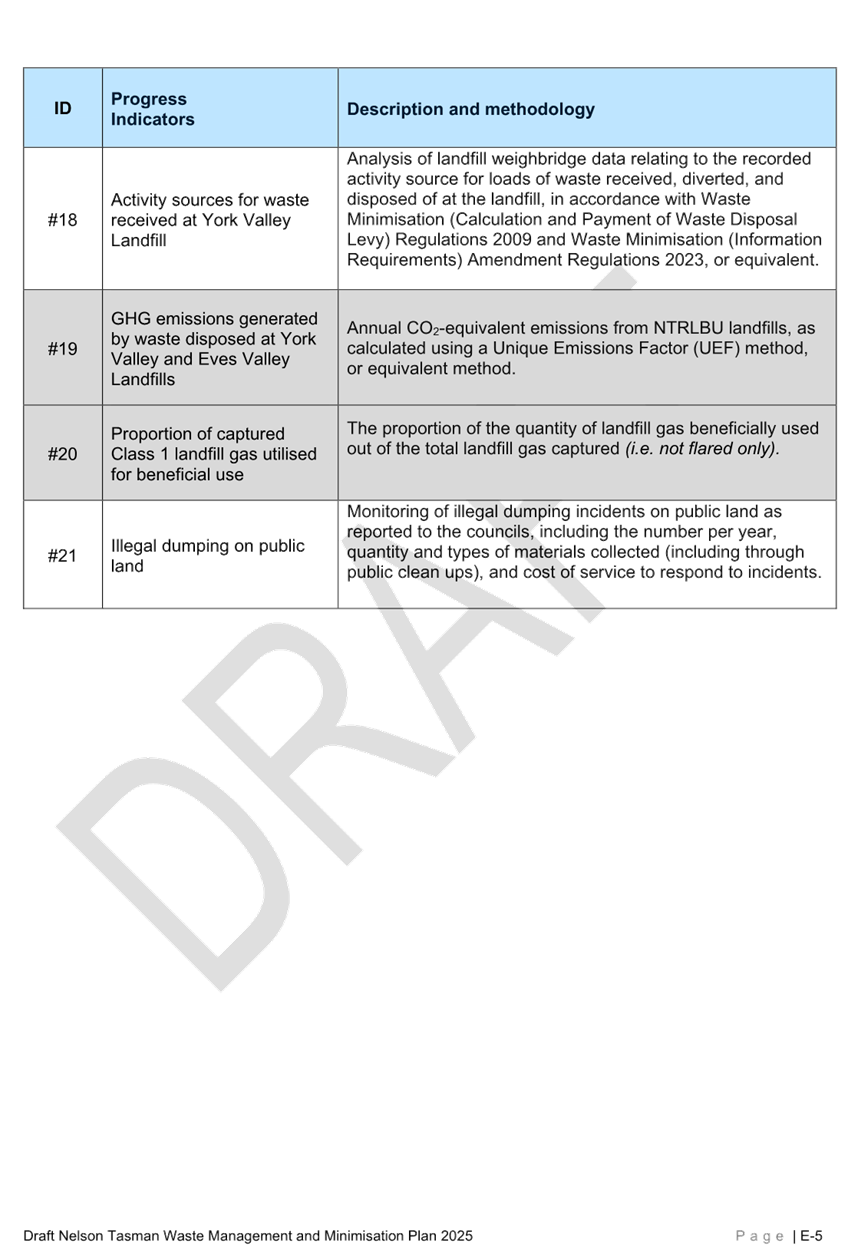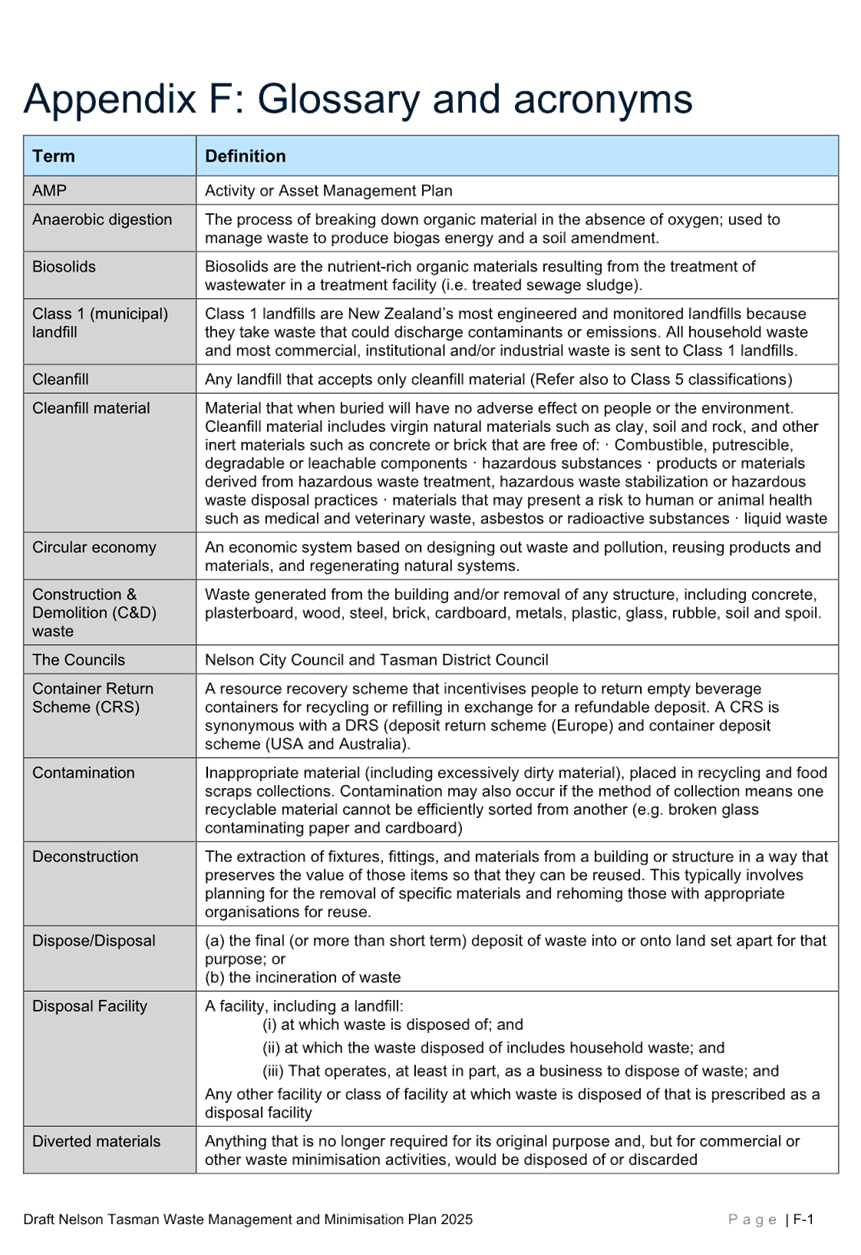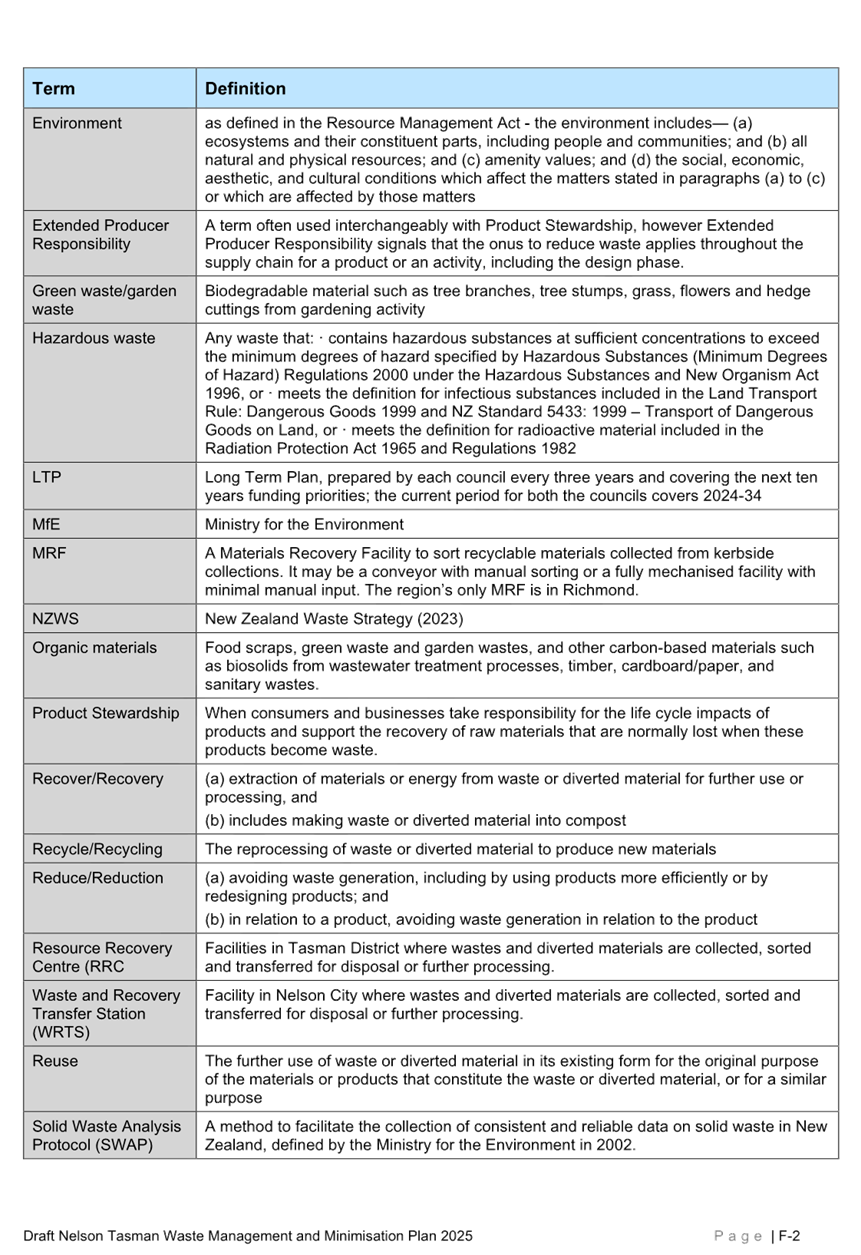Notice is given that
an ordinary meeting of the Tasman District Council will be held on:
|
Date:
Time:
Meeting Room:
Venue:
Zoom conference link:
Meeting ID:
Meeting Passcode:
|
Wednesday 11 December 2024
9:30 am
Tasman Council Chamber
189 Queen Street, Richmond
https://us02web.zoom.us/j/85650277989
856
5027 7989
667633
|
|
Tasman District Council
Kaunihera Katoa
AGENDA
|
MEMBERSHIP
|
Mayor
|
Mayor T King
|
|
|
Deputy Mayor
|
Deputy Mayor S Bryant
|
|
|
Councillors
|
Councillor C Butler
|
Councillor M Kininmonth
|
|
|
Councillor G Daikee
|
Councillor C Mackenzie
|
|
|
Councillor B Dowler
|
Councillor K Maling
|
|
|
Councillor J Ellis
|
Councillor B Maru
|
|
|
Councillor M Greening
|
Councillor D Shallcrass
|
|
|
Councillor C Hill
|
Councillor T Walker
|
(Quorum 7 members)
|
|
|
Contact
Telephone: 03 543 8400
Email:
Robyn.Scherer@tasman.govt.nz
Website:
www.tasman.govt.nz
|
Tasman District
Council
Agenda – 11 December 2024
AGENDA
1 Opening, Welcome, KARAKIA
2 Apologies and
Leave of Absence
|
Recommendation
That
apologies be accepted.
|
3 Public
Forum
Nil
4 Declarations of
Interest
5 LATE ITEMS
6 Confirmation of
minutes
|
That the minutes of the Tasman
District Council meeting held on Thursday, 28 November 2024, be confirmed as
a true and correct record of the meeting.
|
|
That the confidential minutes of the
Tasman District Council meeting held on Thursday, 28 November 2024, be
confirmed as a true and correct record of the meeting.
|
7 Reports
7.1 Referral
- Nelson Tasman Regional Landfill Business Unit Business Plan 2025/26...................................................................................... 5
7.2 Tasman
District Council Dog Control Policy & Bylaw 2024............ 28
7.3 Saxton
Field Activity Management Plan 2024-2034..................... 150
7.4 Motueka
Harbour and Coastal Works Reserve Fund Policy........ 207
7.5 Amendment
to the Tasman District Council Traffic Control Devices Register and Traffic
Control Bylaw 2016...................................... 214
7.6 Speed
Management Consultation................................................. 242
7.7 Upper
Moutere Shared Path Funding........................................... 289
7.8 Nelson
Tasman Waste Management and Minimisation Plan....... 294
7.9 Amendments
to Delegations......................................................... 353
7.10 Richmond
Library Building - Strengthening and Repair Requirements................................................................................ 372
8 Confidential
Session
8.1 Procedural
motion to exclude the public................................................. 381
8.2 Waimea
Water Limited - Statement of Expectations.................... 381
8.3 Waimea
Community Dam - Project Negotiations and other Matters....................................................................................................... 381
8.4 Diversified
Resilience Fund Proposal........................................... 381
8.5 Storm
Damage - Private Dwelling, Pōhara................................... 382
8.6 New
Electricity Contract (Late Covering Report).......................... 382
9 CLOSING KARAKIA
Tasman District
Council
Agenda – 11 December 2024
7 Reports
7.1
Referral - Nelson Tasman
Regional Landfill Business Unit Business Plan 2025/26
|
Report
To:
|
Tasman
District Council
|
|
Meeting
Date:
|
11
December 2024
|
|
Report
Author:
|
Mike
Schruer, Waters and Wastes Manager
|
|
Report
Authorisers:
|
Richard
Kirby, Group Manager - Community Infrastructure
|
|
Report
Number:
|
RCN24-12-1
|
1. Purpose
of the Report / Te Take mō te Pūrongo
1.1 To
present the recommendation from the Nelson Tasman Regional Landfill Business
Unit (NTRLBU) regarding the NTRLBU Business Plan 2025/26.
2. Summary
/ Te Tuhinga Whakarāpoto
2.1 At
its 29 November 2024 meeting, the NTRLBU resolved:
That the Nelson Tasman
Regional Landfill Business Unit
1. Adopts
the Nelson Tasman Landfill Business Unit Business Plan 2025/26
(NDOCS-1995708647-116).
Recommendation to the Nelson
City Council and Tasman District Council
That the Nelson City Council
and Tasman District Council
1. Receive
the Nelson Tasman Regional Business Unit Business Plan 2025/26
(NDOCS-1995708647-116).
2.2 The
agenda for the 29 November 2024 NTRLBU meeting is available here.
2.3 The
NTRLBU Business Plan 2025/26 is attached as Attachment 1.
3. Recommendation/s
/ Ngā Tūtohunga
That the Tasman District Council
1. receives
the Referral - Nelson Tasman Regional Landfill Business Unit Business Plan
2025/26 report RCN24-12-1; and
2. receives the Nelson Tasman Regional Business Unit
Business Plan 2025/26 in Attachment 1 to the agenda report.
|
1.⇩
|
NTRLBU
Business Plan 2025/26
|
6
|
Tasman District
Council
Agenda – 11 December 2024


















7.2 Tasman District Council Dog Control Policy
& Bylaw 2024
|
Report
To:
|
Tasman
District Council
|
|
Meeting
Date:
|
11
December 2024
|
|
Report
Author:
|
Cat
Budai, Community Policy Advisor
|
|
Report
Authorisers:
|
Kim
Drummond, Group Manager - Environmental Assurance
|
|
Report
Number:
|
RCN24-12-2
|
1. Purpose
of the Report / Te Take mō te Pūrongo
1.1 To
provide the recommendation from the Dog Control Bylaw Hearing and Deliberations
Panel to the Council.
2. Summary
/ Te Tuhinga Whakarāpoto
2.1 The
Dog Control Bylaw Hearing and Deliberations Panel consisted of Councillors C
Hill (Chair), C Butler, J Ellis, B Maru and D Shallcrass.
2.2 At
its 20 November 2024 meeting, the Dog Control Bylaw Hearing and Deliberations
Panel resolved:
SH 24-11-1
That the
Draft Dog Control Policy and Bylaw Submissions Hearing and Deliberations Panel
1. receives
the Draft Dog Control Policy and Bylaw - Deliberations report,
RSH24-11-1; and
2. agrees
to the following changes to the draft Dog Control Policy and Bylaw, for the reasons
set out in Table 1: Clause changes in response to submissions of Attachment 1
of the agenda report:
a. add
clause 3.8 ‘To minimise risks to the welfare of wildlife’; and
b. add
‘wildlife protection’ to clause 6.1.2; and
c. add
clause 6.1.6 Educate the public on the environmental impacts of dogs on local
wildlife and ways to mitigate risks; and
d. add
a definition for ‘working dog’; and
e. correct
clause reference error in clauses 17.2 and 17.3; and
f. correct
clause reference error in clause 18.4; and
g. adds
‘or a disability assist dog’ to clause 20.2; and
h. correct
clause reference error in clause 20.3; and
i. change
the location name in Schedule 4 from ‘old library site’ to
‘Tākaka Memorial Reserve’; and
j. change
the location description in Schedule 4 from ‘Motueka Sandspit –
south of a line drawn through the point NZ Map Grid 2512857.1 (easting)
6009560.9 (northing)’ to ‘Motueka Sandspit – south of
latitude marker 41.1200’; and
k. add
explanatory note ‘Other parts of the Tasman District are also prohibited
to dogs under different legislation, such as the Abel Tasman Foreshore Scenic
Reserve Bylaw 2016 and the National Parks Act 1980’ to Schedule 4; and
3. agrees
to remove the sentence “They may also assist in surveillance in dog
exercise and prohibited areas” in Section 6 of the Dog Control Policy;
and
4. agrees
to the following changes to the draft Dog Control Policy and Bylaw, for the
reasons set out in Table 2: Clause changes in response to staff recommendations
of Attachment 1 of the agenda report:
a. remove
‘registered for the first time in New Zealand after 1 July 2006’
from clause 4.1; and
b. add
that the bylaw is being made in accordance with the Local Government Act 2002
in section 11.1; and
c. change
the date the bylaw comes into force from a placeholder to 31 March 2025; and
d. change
references of dog ownership to dog management in section 15.1; and
e. remove
‘summer months’ definition and include references to seasonal
prohibitions alongside the relevant locations; and
f. add
‘Time or Seasonally Restricted Areas’ definition; and
5. declines
to make the changes suggested by submitters, for the reasons set out in Table
3: Requested changes not recommended by staff of Attachment 1 of the agenda
report; and
6. agrees
to make the following changes to location zoning, for the reasons set out in
section 5 of the agenda report and as summarised in Table 4: Location Status
and Staff Recommendation of Attachment 2 of the agenda report:
a. change
‘Tomatea Reserve to Shaws Creek Bridge’ to ‘Beach adjacent to
Northern Boundary of Tomatea Reserve to the Shaws Creek Bridge’; and
b. change
‘Pakawau Beach Northern end of Pakawau Beach campground to 1km
south’ to ‘Pakawau Beach – Tomatea Reserve to 1km south of
Pakawau Beach campground’; and
c. remove
boat ramp and car park from ‘Ruataniwha Inlet, including northern end of
Collingwood beach round to Elizabeth Street car park’; and
d. add
an exemption for dogs contained on vessels in the Ruataniwha Inlet; and
e. remove
Collingwood Holiday Park from the Dog Control Policy and Bylaw; and
f. change
Parawhakaoho River Mouth to a Time or Seasonally Restricted Area, as set out in
Schedule 3 (Attachment 3 to the agenda report); and
g. change
‘Rototai from western end of golf course to Waitapu Estuary foreshore
(excluding Controlled Dog Exercise area in Rototai Recreation Reserve)’
to ‘Rototai from western end of golf course to Waitapu Estuary foreshore
(excluding Controlled Dog Exercise area in Rototai Recreation Reserve and
Motupipi Beachfront Reserve); and
h. remove
Rototai Closed Landfill from the Dog Control Policy and Bylaw; and
i. change
‘Motupipi Beachfront Reserve: Rototai Recreation Reserve to the
headland’ from a leash control to a controlled exercise area; and
j. change
‘Pōhara Beach from eastern camp boundary to Selwyn Street
Reserve’ from seasonally prohibited to seasonal leash control as set out
in Attachment 3 of the agenda report; and
k. remove
Pōhara Top 10 Holiday Park from the Dog Control Policy and Bylaw; and
l. change
Ligar Bay from a Time or Seasonally Restricted Area to a Controlled Exercise
Area; and
m. remove
Awaroa Vehicle Access point from the Dog Control Policy and Bylaw; and
n. remove
Tonga, Adele and Fisherman Islands from the Dog Control Policy and Bylaw; and
o. remove
Tokongawha Reserve from the Dog Control Policy and Bylaw; and
p. change
Little Kaiteriteri Beach from a Leash Control Area to a Time or Seasonally
Restricted Area as set out in Attachment 3 of the agenda report; and
q. change
Dummy Bay from a Leash Control Area to a Time or Seasonally Restricted Area as
set out in Attachment 3 of the agenda report; and
r. change
Stephens Bay from a Leash Control Area to a Time or Seasonally Restricted Area
as set out in Attachment 3 of the agenda report; and
s. reduce
size of mapped area for Riwaka River Mouth to Tapu Bay Reserve; and
t. remove
Mariri Closed Landfill from the Dog Control Policy and Bylaw; and
u. change
the seasonal restriction at Lower Moutere Recreation Reserve from
November–February to December–February; and
v. include
Old Mill Walkway in the Schedule 5 of Tasman’s Great Taste Trail and
change mapping to reflect that this section is a controlled exercise area; and
w. change
description of Ruby Bay to remove reference to Old Mill Walkway; and
x. change
mapping and description from ‘L.E.H Baigent Reserve and surrounding
peninsula excluding campground’ to ‘Foreshore and Estuary around
L.E.H Baigent Memorial Reserve’; and
y. change
Hoddy Estuary Park from prohibited to prohibited on the vegetated margins of
the Inlet and leash control for the remainder of the Park; and
z. change
Railway Reserve from a leash control area to a controlled exercise area; and
aa. change
the prohibited section of Tasman’s Great Taste Trail from ‘Tadmor
Valley Road to Quail Valley Road’ to ‘From 4953 Motueka Valley
Highway to Quail Valley Road’; and
6. notes
that the following locations will remain as set out in the draft Dog Control
Policy and Bylaw, for the reasons set out in section 5 of the agenda report and
as summarised in Table 4: Location Status and Staff Recommendation (Attachment
2) of the agenda report:
a. Waikato
Inlet; and
b. Beach
from Milnthorpe headland to Collingwood (east of township); and
c. Kendal
Street beach access, Milnthorpe: Pathway between Kendal Street and inclusive of
Milnthorpe headland; and
d. Parapara
Inlet; and
e. Tukurua
Beach (camp frontage); and
f. Onekaka
Estuary; and
g. Patons
Rock Beach (Settlement to Creek adjacent to Grant Road Puramahoi); and
h. Onahau
Sandspit, Wetland and Estuary; and
i. left
of Rangihaeata Headland to Fraser Road; and
j. Rangihaeata
Beach; and
k. Rototai
Recreation Reserve; and
l. Pōhara
Beach West – from Selwyn Street to Western end of the golf course; and
m. Tākaka
Central Business Area; and
n. Tākaka
Township locations: the Village Green, Pioneer Park, the old library site and
adjacent playground (noting previous resolution to change ‘the old
library site’ to ‘Tākaka Memorial Reserve’); and
o. Tata
Beach; and
p. Otuwhero
Estuary and Sandspit; and
q. Breaker
Bay Beach; and
r. Kaiteriteri
Beach; and
s. Alex
Ryder Memorial Reserve; and
t. Memorial
Reserve Corner Riwaka; and
u. Memorial
Reserve Corner Footpath, Riwaka; and
v. Motueka
Sandspit – Southern End (noting description change in previous
resolution); and
w. Saltwater
baths; and
x. Trewavas
Street Recreation Reserve; and
y. York
Park; and
z. North
Street Recreation Reserve; and
aa. Batchelor
Ford Road; and
bb. Faulkner
Bush Reserve - excluding the Leash Control Area, as defined on the map in
Schedule 1; and
cc. Faulkner
Bush Reserve Picnic Area; and
dd. Baigents
Bush Reserve (noting amendment to reflect official name: Baigents Bush Scenic
Reserve, Pigeon Valley, as per Attachment 3 of the agenda report); and
ee. Robson
Reserve; and
ff. Kina
Beach – exposed seaward side of the beach; and
gg. Deck
Road Recreation Reserve and Easement; and
hh. McKee
Memorial Domain; and
ii. Ruby
Bay - Foreshore from Seaward boundary Māpua Leisure Park to Chaytor
Reserve; and
jj. Rough
Island; and
kk. Higgs
Reserve; and
ll. Waimea
Inlet Esplanade Reserve; and
mm. Apple
Valley Road Esplanade Reserve; and
nn. Bronte
Road East Esplanade Reserves; and
oo. Westdale
Road Esplanade Reserves; and
pp. Hoddy
Road Esplanade Reserves; and
qq. Maisey
Road Esplanade Reserve; and
rr. Research
Orchard Road Esplanade Reserve; and
ss. Sand
Island, Waimea Estuary; and
tt. Shell
bank by Bell Island; and
uu. Waimea
Estuary Esplanade Reserves; and
vv. Pearl
Creek Reserve; and
ww. Pearl
Creek Esplanade Reserve; and
xx. Rabbit
Island (noting name amendment to Moturoa / Rabbit Island); and
yy. Washbourn
Gardens; and
zz. Jimmy
Lee Creek Walkway; and
aaa. Bill
Wilkes Reserve; and
bbb. Hunter
Avenue Walkway; and
ccc. Jimmy
Lee Creek Walkway North (Hill Street North Entrance to Cushendell Rise);
and
ddd. Jimmy
Lee Creek Walkway South in between Cushendell Rise and the Grassy Saddle; and
eee. Will's
Gully walking track to Grassy Saddle; and
fff. Dellside
Reserve including track up into Richmond Hills; and
ggg. Borck
Creek; and
hhh. Hope
Recreation Reserve and Hall; and
iii. Bryant
Road carpark to the bridge to Pugh Road; and
jjj. South
side of Quail Valley Road Bridge to entrance to 437 Wakefield-Kohatu Highway;
and
kkk. Edward
Street entrance to 320 Higgins Road; and
lll. 35
Sandeman Road to Lansdowne Road; and
mmm. western
end of Lower Queen Street to eastern end of Redwood Road; and
nnn. Rabbit
Island, starting from western end of causeway to the ferry landing; and
ooo. Kaiteriteri
Recreation Reserve; and
7. agrees
to replace title page information about when the Dog Control Bylaw is made with
a table on the following page documenting the bylaw’s review history; and
8. in
accordance with section 155 of the Local Government Act 2002:
a. agrees
that the proposed Tasman District Council Dog Control Policy and Bylaw,
including the changes in resolutions 2-7 above, is the most appropriate form of
bylaw for addressing perceived problems relating to public safety related to
dog behaviour, the protection of wildlife from disturbances caused by dogs, the
promotion of responsible dog ownership, and ensuring that shared public spaces
are safe and enjoyable for all community members in relation to dog use and
access; and
b. notes
that the proposed Tasman District Council Dog Control Policy and Bylaw,
including the changes in resolutions 2-7 above, does not give rise to any
implications under the New Zealand Bill of Rights Act 1990; and
9. recommends
that the Tasman District Council considers discounted dog registration fees for
working dogs in its fees for the 2025/2026 year; and
10. notes
that staff will propose increases in the dog registration fees in the 2025/2026
year to fund proactive education and compliance activity; and
11. notes
that staff will continue to explore the development of a dog park within the
Tasman District and report progress to the Environment & Regulatory
Committee by June 2025; and
12. delegates
authority to the Dog Control Policy and Bylaw Submissions Hearing and
Deliberations Panel Chair and the Chief Executive Officer to approve any minor
changes or minor editorial amendments to the proposed Dog Control Policy and
Bylaw, prior to being submitted for consideration by to Tasman District
Council; and
13. confirms
the minutes of
the 25 September 2024 Draft Dog Control Policy and Bylaw Submissions Hearing
meeting as a true and correct record.
Recommendation to the Tasman District Council
That the Tasman District
Council:
1. in
accordance with section 155 of the Local Government Act 2002:
a. agrees
that the proposed Tasman District Council Dog Control Policy & Bylaw 2024
is the most appropriate form of bylaw for addressing perceived problems in relation
to public safety related to dog behaviour, the protection of wildlife from disturbances
caused by dogs, the promotion of responsible dog ownership and management,
and ensuring that shared public spaces are safe and enjoyable for all
community members in relation to dog use and access; and
b. notes
that the proposed Tasman District Council Dog Control Policy & Bylaw 2024
does not give rise to any implications under the New Zealand Bill of Rights Act
1990; and
2. pursuant
to section 145 and 146 of the Local Government Act and section 10 of the Dog
Control Act 1996, makes the Tasman District Council Dog Control Policy &
Bylaw 2024 (Attachment 1 to the agenda report) with effect from 31 March 2025;
and
3. authorises
staff to publicly notify the Tasman District Council Dog Control Policy and
Bylaw 2024 and the date it has effect from; and
4. notes
that the Tasman District Council Dog Control Policy and Bylaw 2024 will need to
be reviewed before 11 December 2029; and
5. confirms
the minutes of the 20 November 2024 Draft Dog Control Policy and Bylaw
Deliberations meeting as a true and correct record.
2.4 The
report to the 20 November 2024 Dog Control Bylaw
Deliberations meeting is available on the Council’s website.
2.5 All
submissions made on the Dog Control policy and
Bylaw are available to view on the Council’s website.
3. Recommendation/s
/ Ngā Tūtohunga
That the Tasman
District Council
1. receives
the Tasman District Council Dog Control Policy & Bylaw 2024 report ; and
2. in
accordance with section 155 of the Local Government Act 2002:
a. agrees
that the proposed Tasman District Council Dog Control Policy & Bylaw 2024
is the most appropriate form of bylaw for addressing perceived problems in
relation to public safety related to dog behaviour, the protection of wildlife from
disturbances caused by dogs, the promotion of responsible dog ownership and
management, and ensuring that shared public spaces are safe and enjoyable for
all community members in relation to dog use and access; and
b. notes
that the proposed Tasman District Council Dog Control Policy & Bylaw 2024
does not give rise to any implications under the New Zealand Bill of Rights Act
1990; and
3. pursuant
to section 145 and 146 of the Local Government Act and section 10 of the Dog
Control Act 1996, makes the Tasman District Council Dog Control Policy &
Bylaw 2024 (Attachment 1 to the agenda report) with effect from 31 March 2025;
and
4. authorises
staff to publicly notify the Tasman District Council Dog Control Policy and
Bylaw 2024 and the date it has effect from; and
5. notes
that the Tasman District Council Dog Control Policy and Bylaw 2024 will need to
be reviewed before 11 December 2029; and
6. confirms
the minutes of the 20 November 2024 Draft Dog
Control Policy and Bylaw Deliberations meeting as a true and correct record.
|
1.⇩
|
Tasman
District Council Dog Control Policy & Bylaw 2024 for adoption
|
35
|
Tasman District
Council
Agenda – 11 December 2024













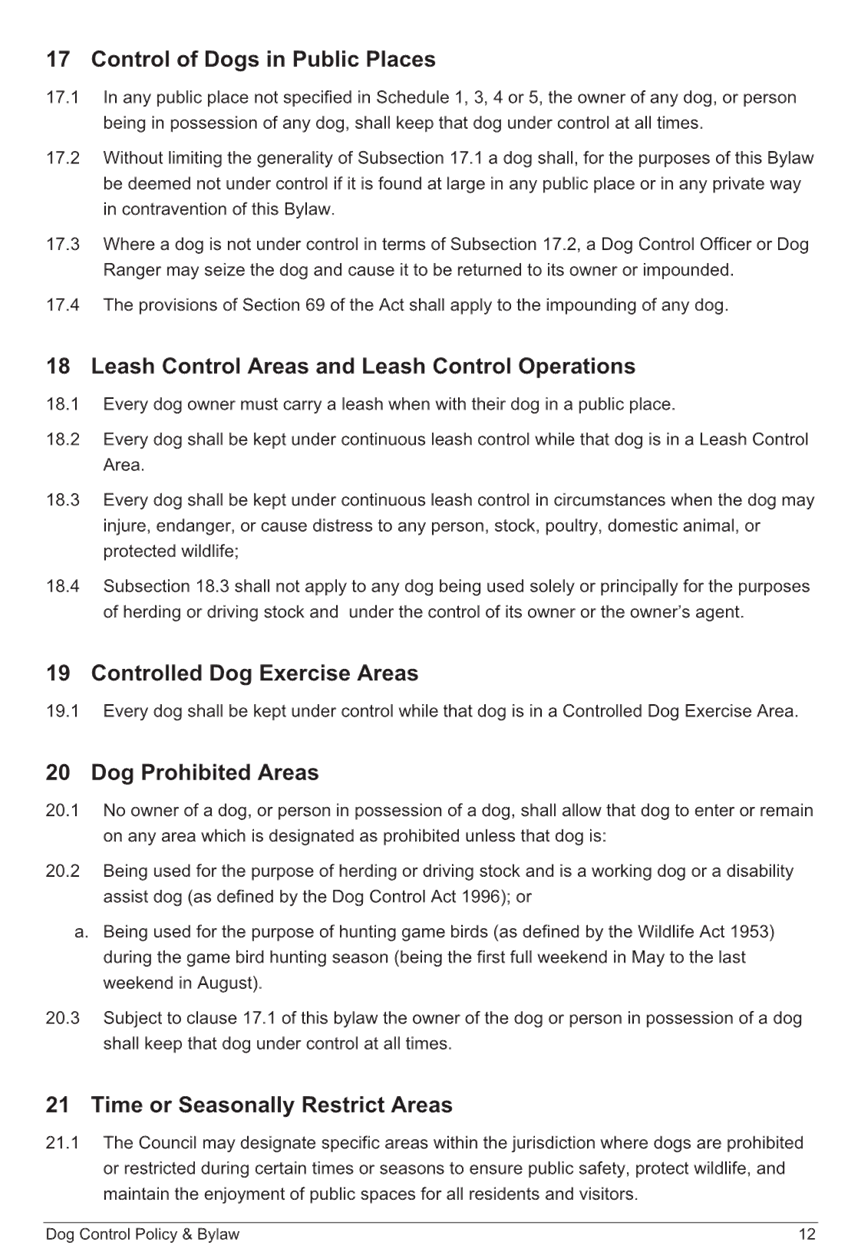

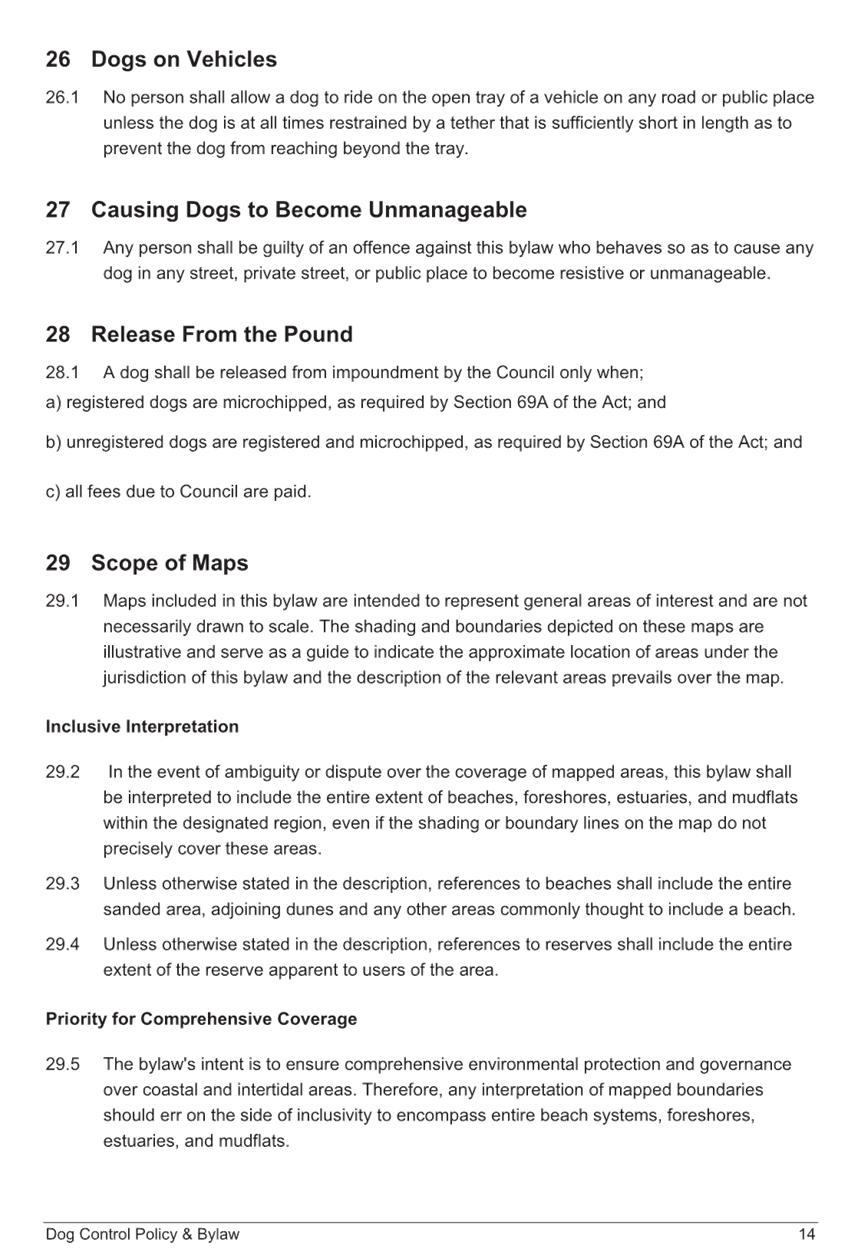
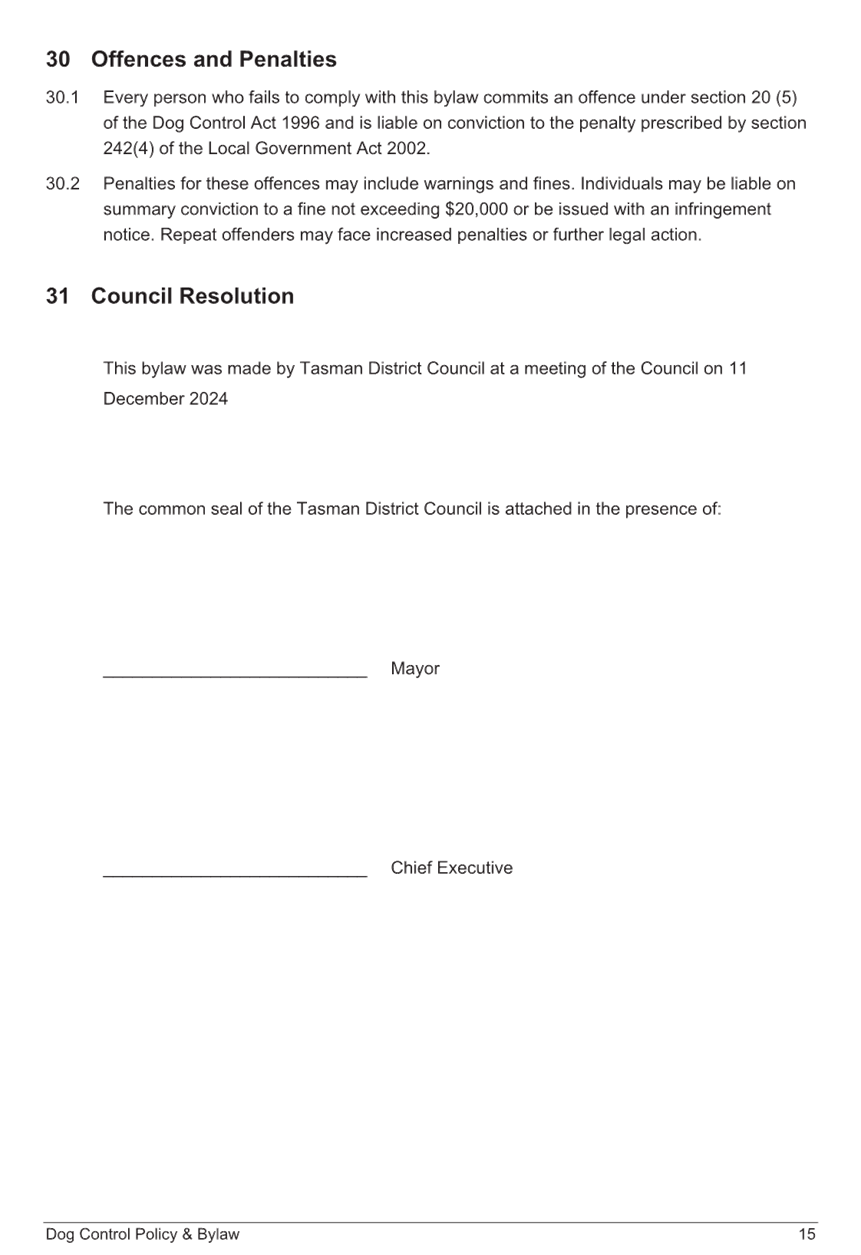




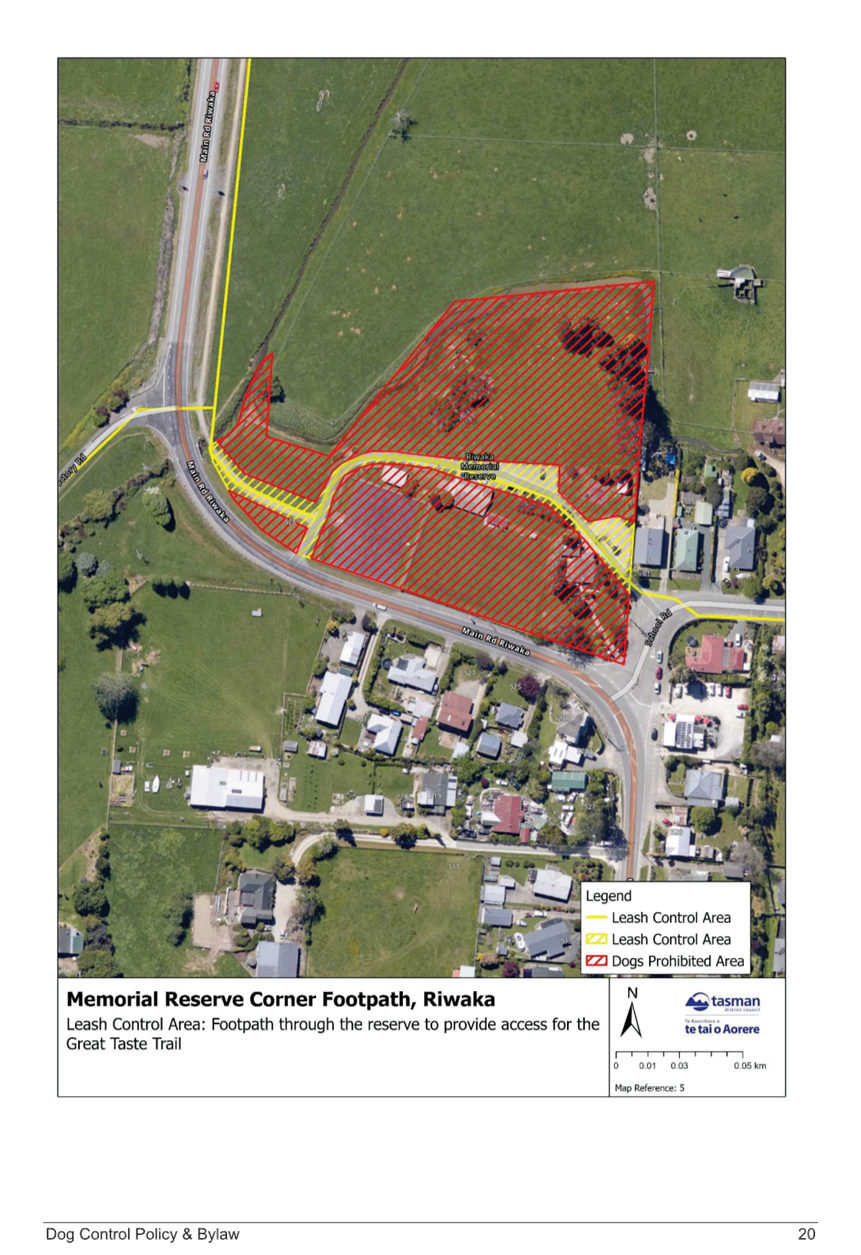
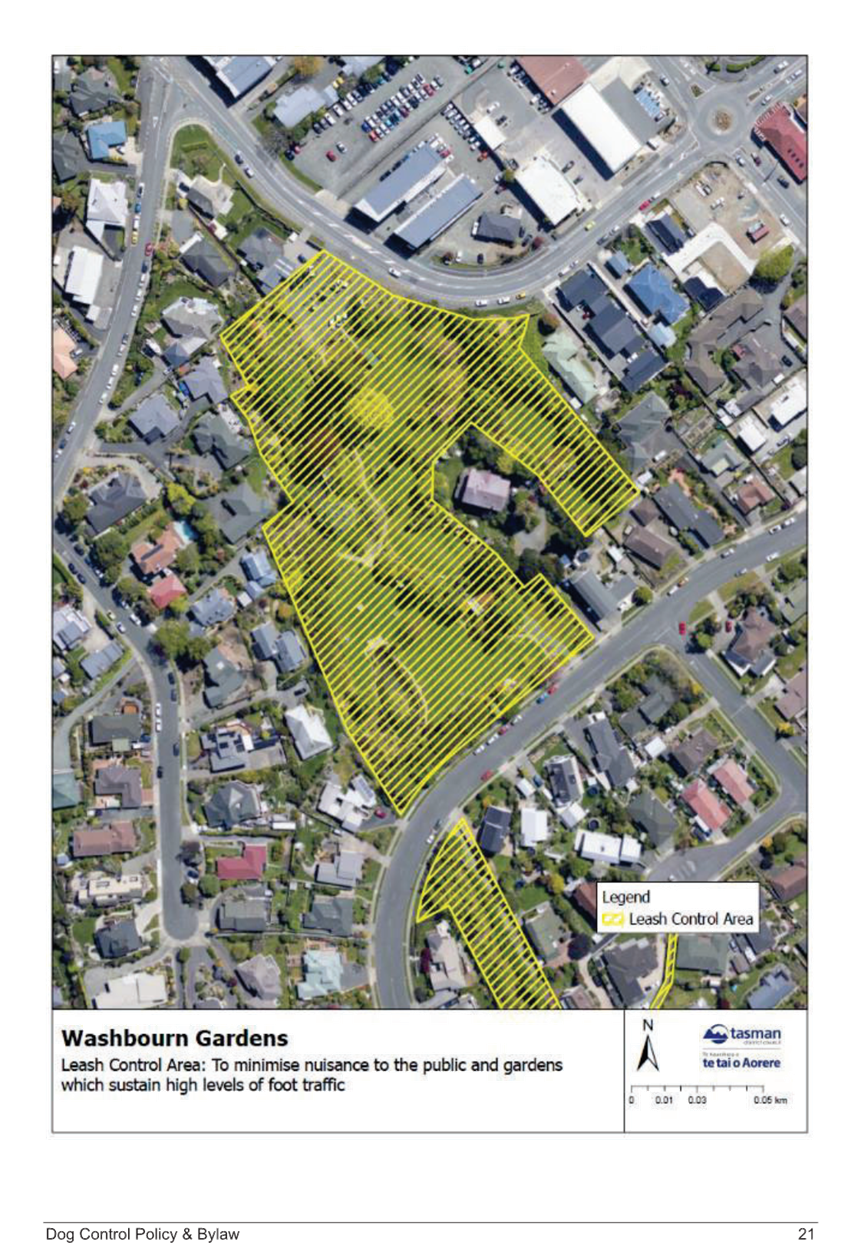
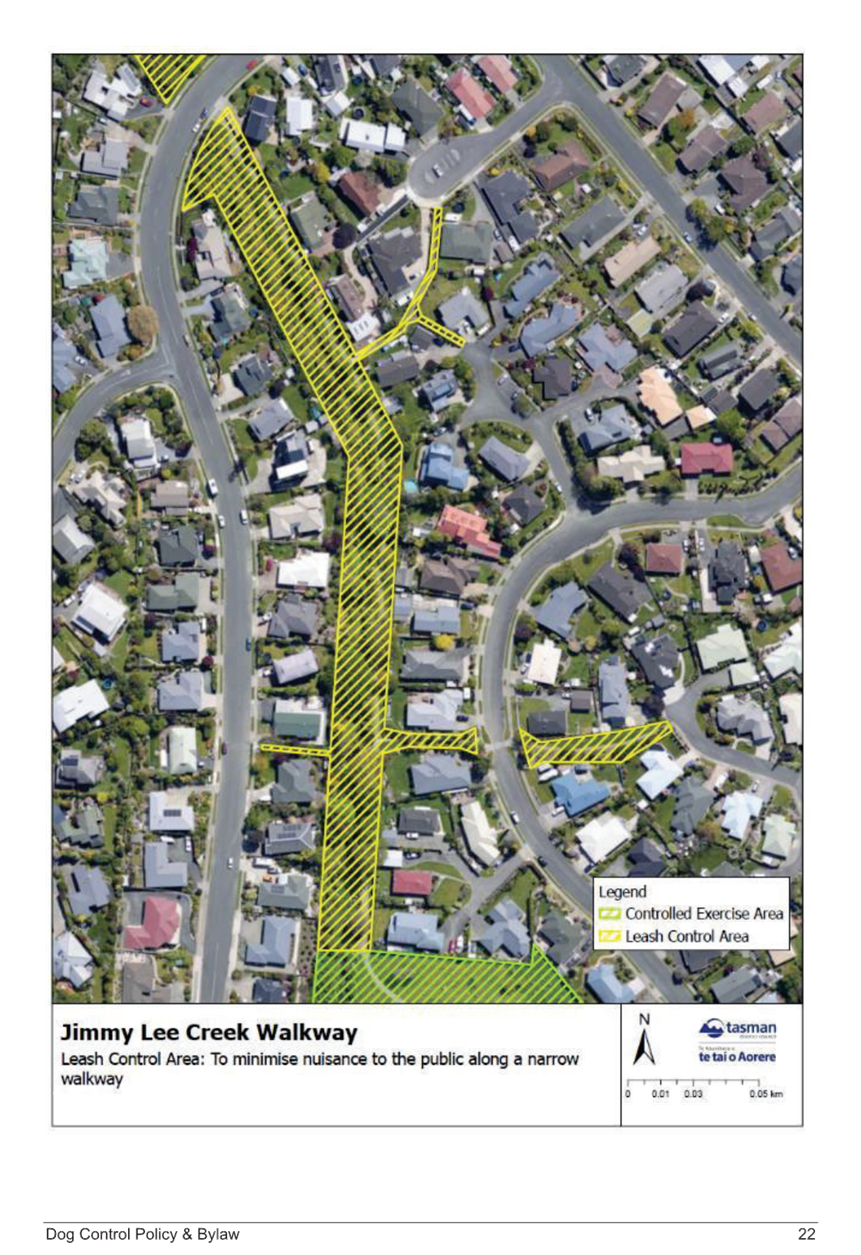
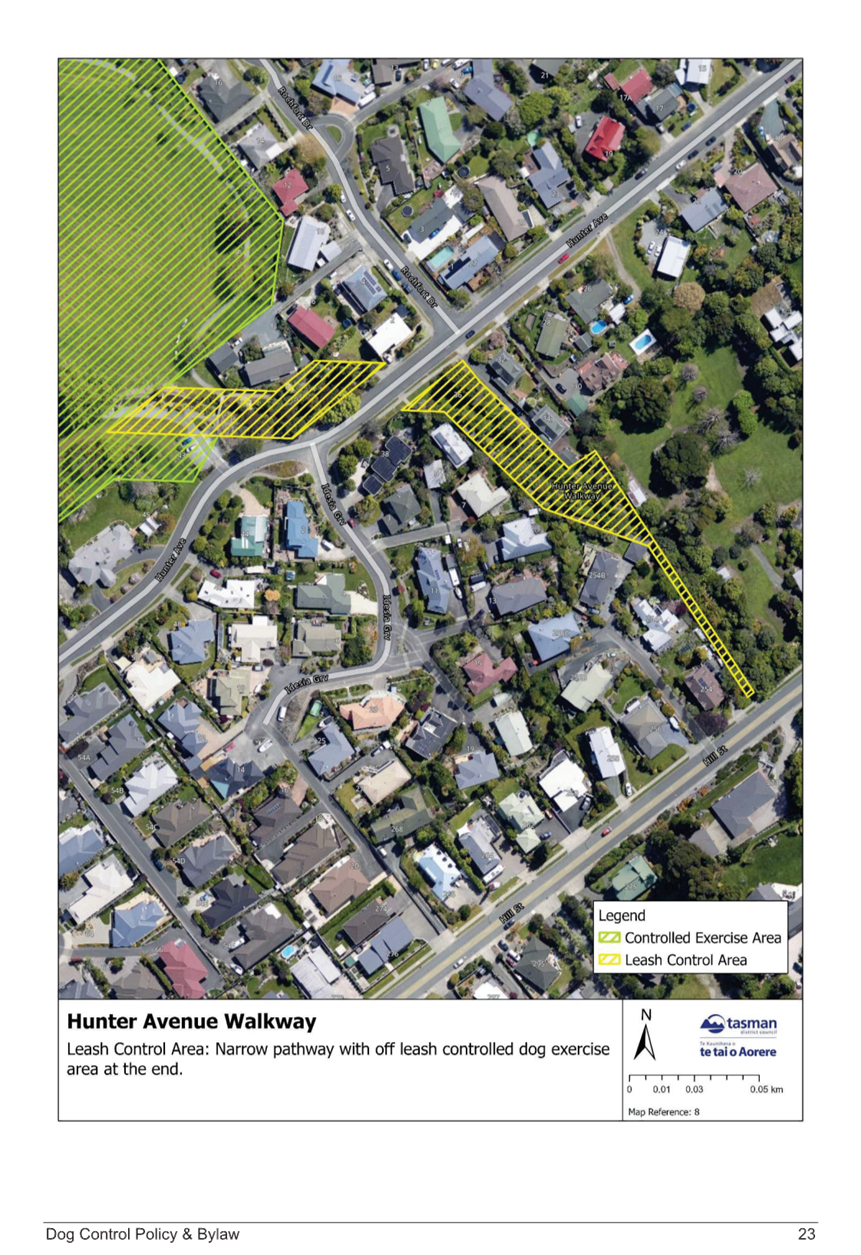
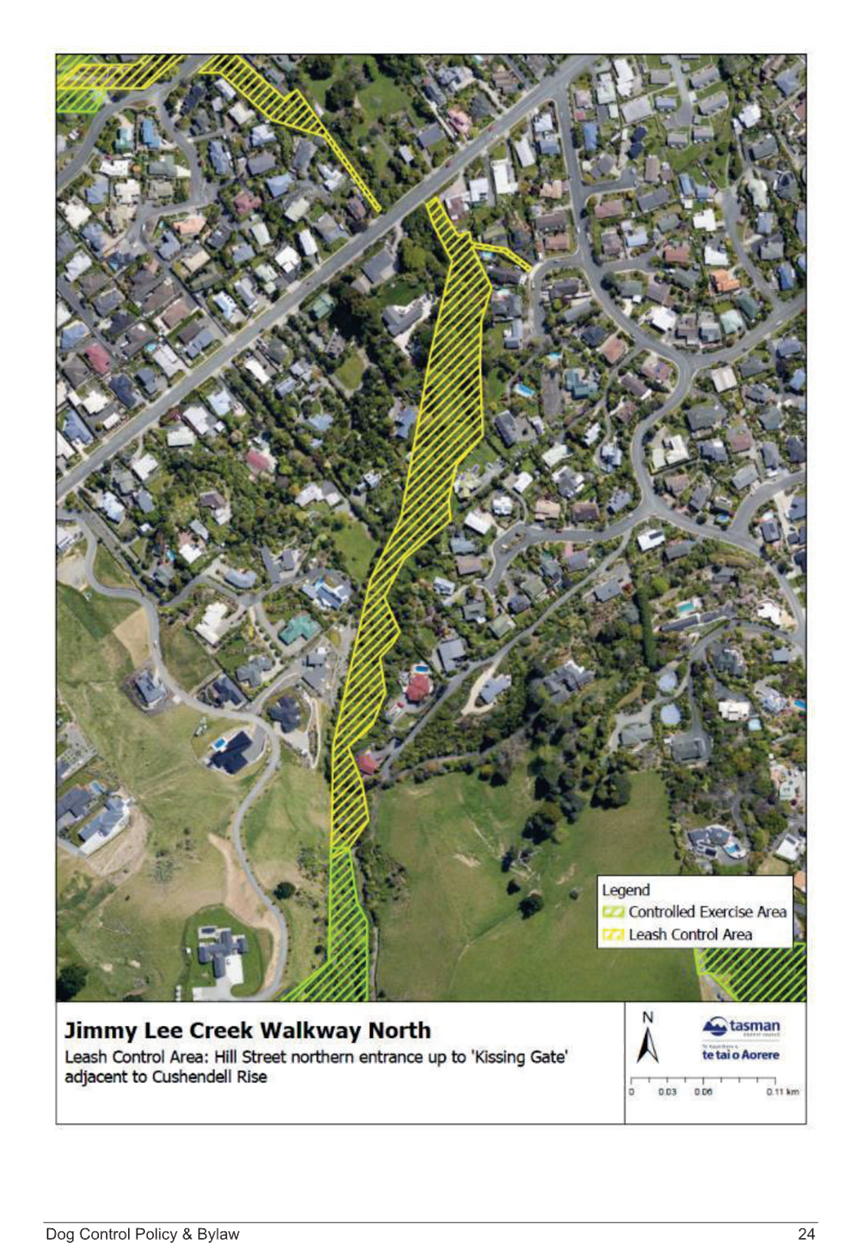
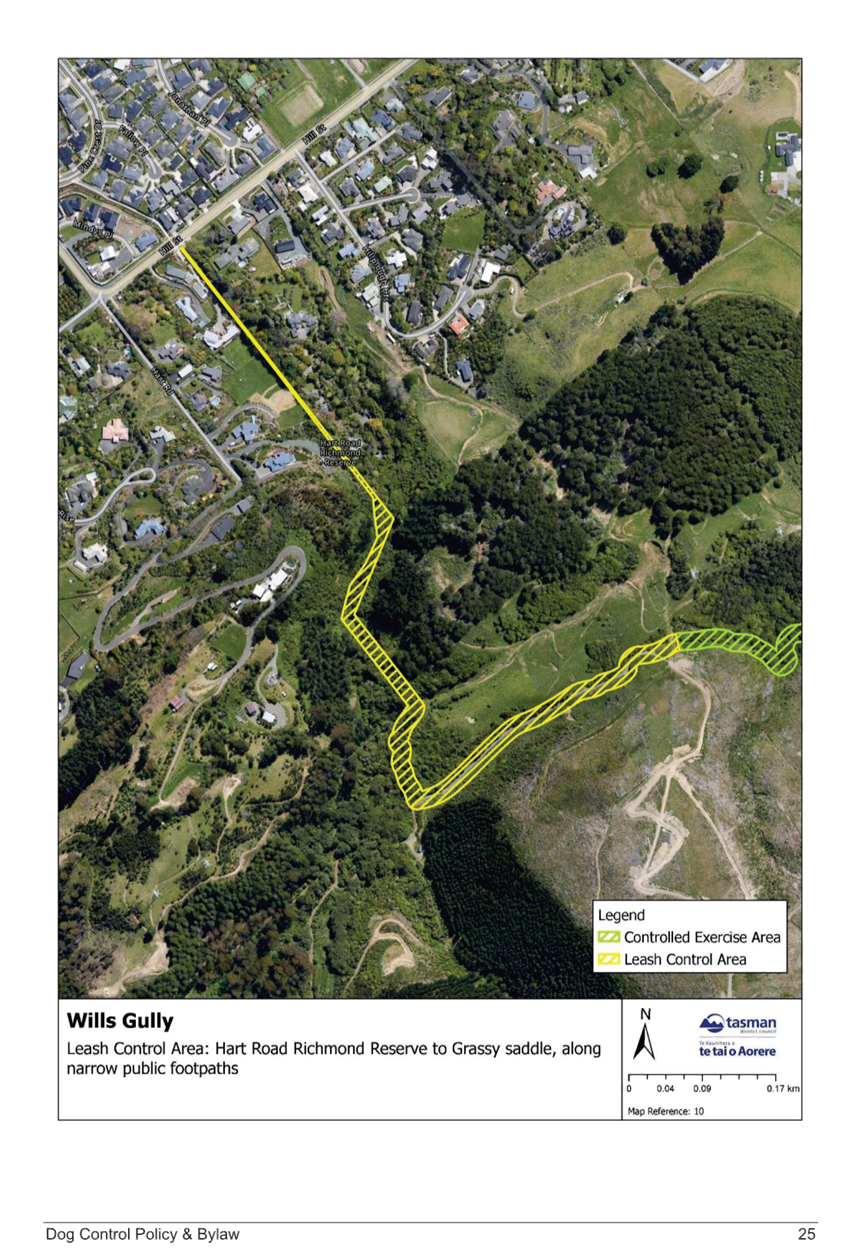
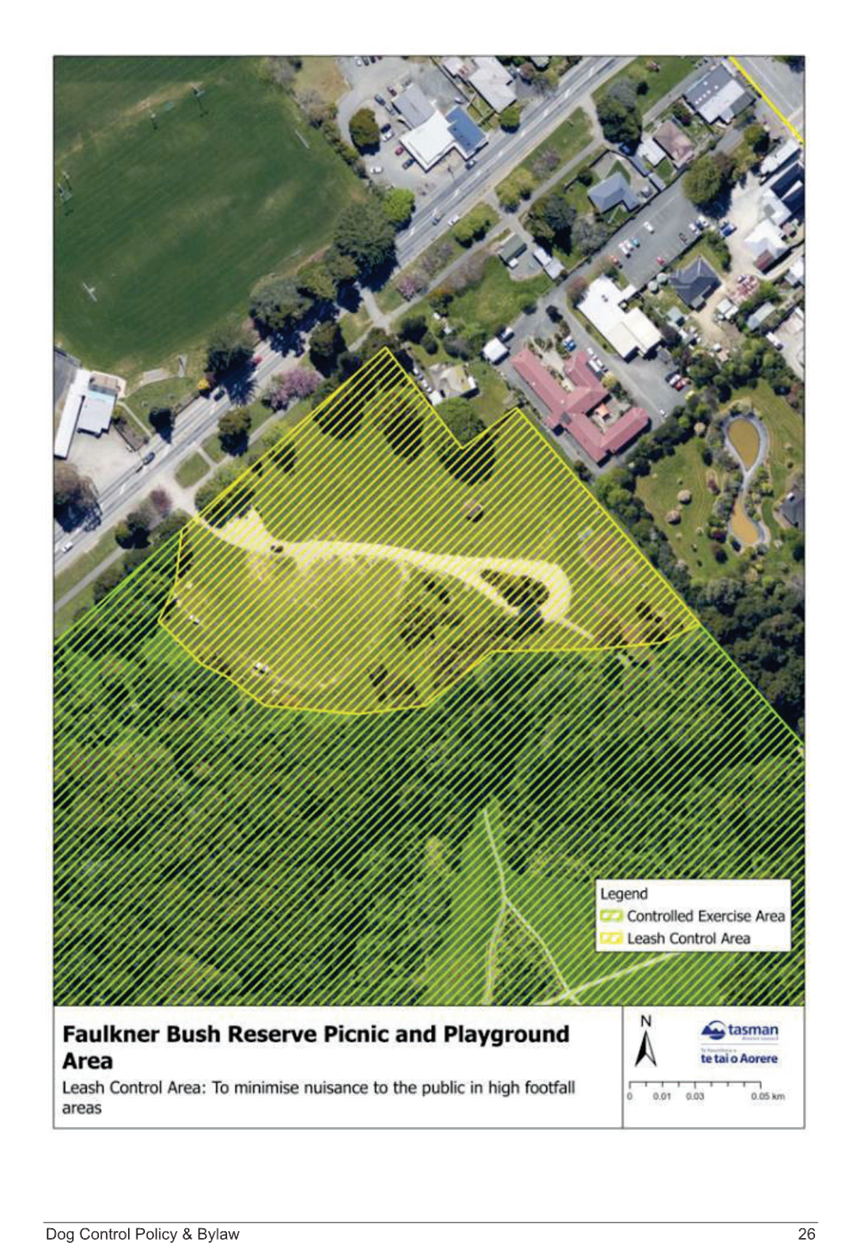

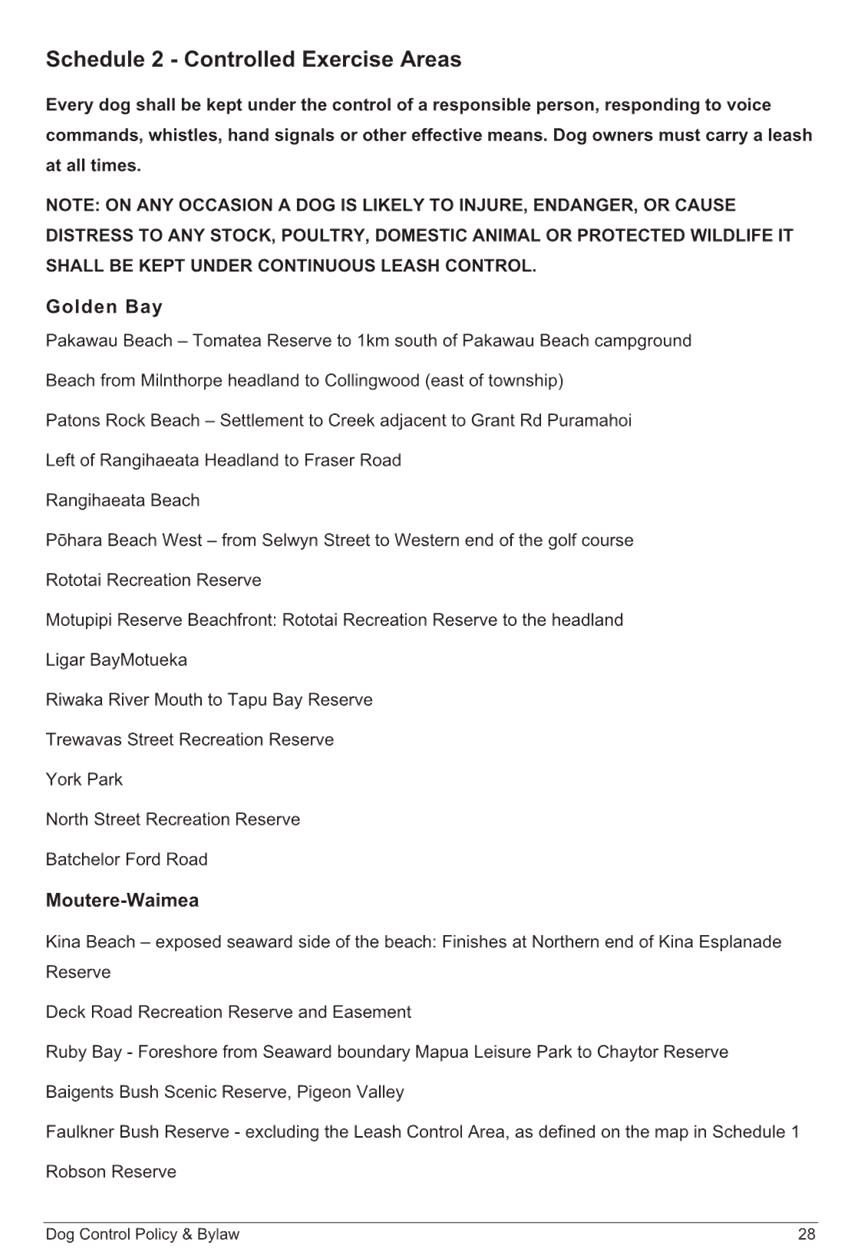
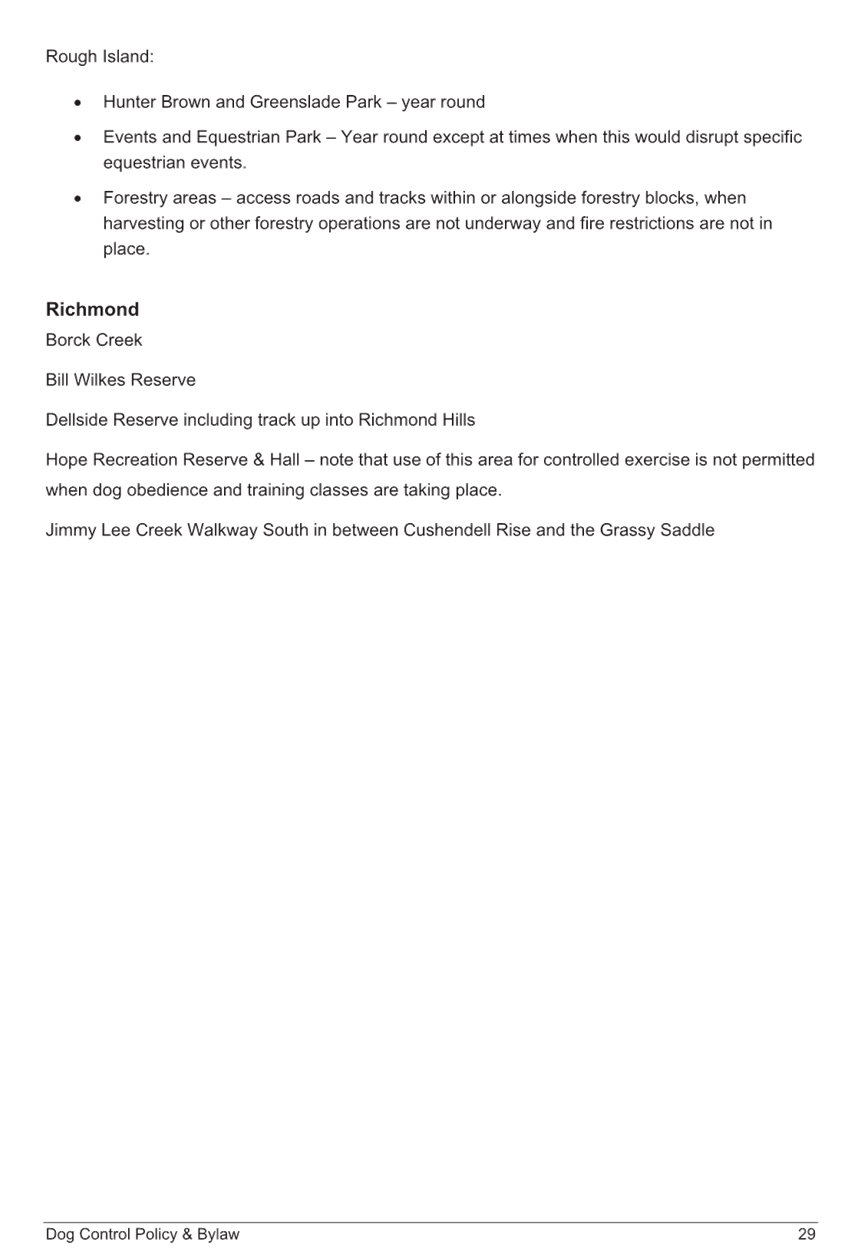
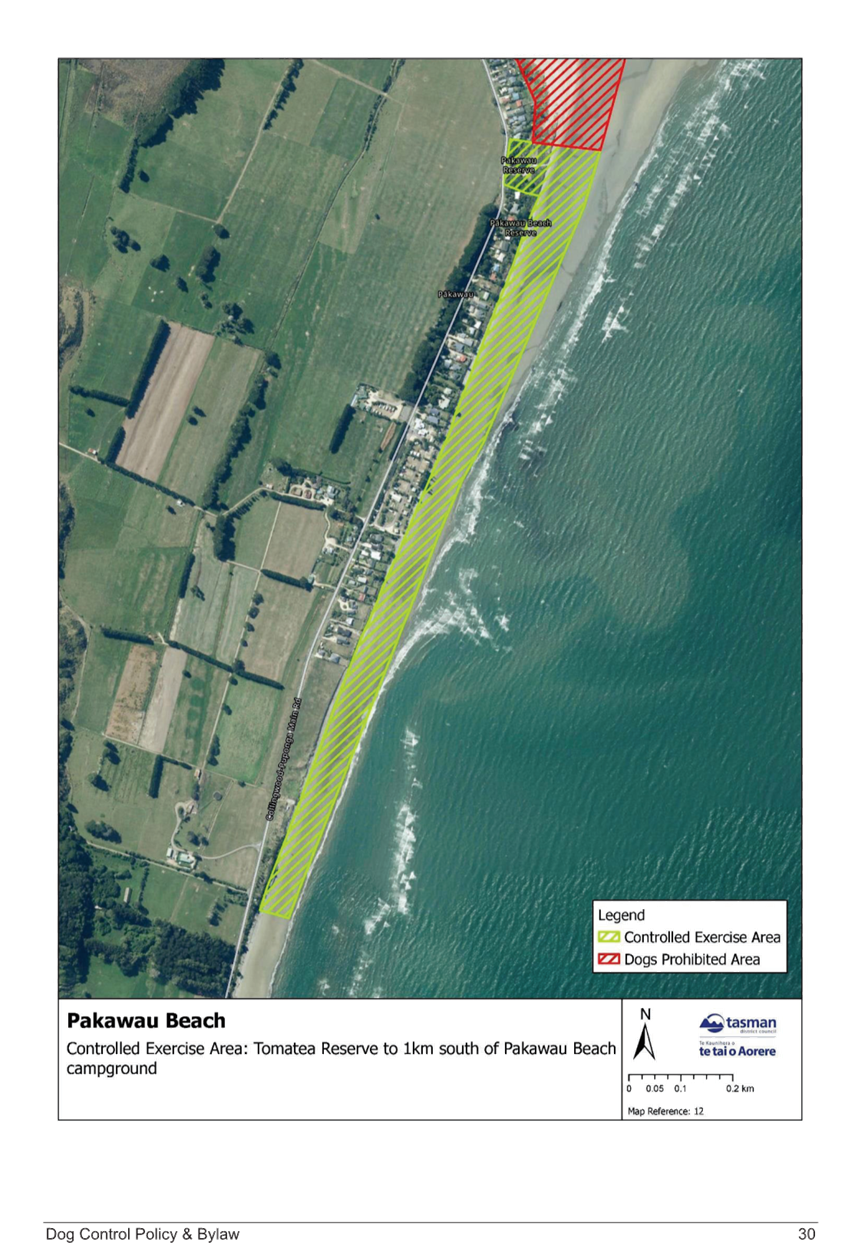
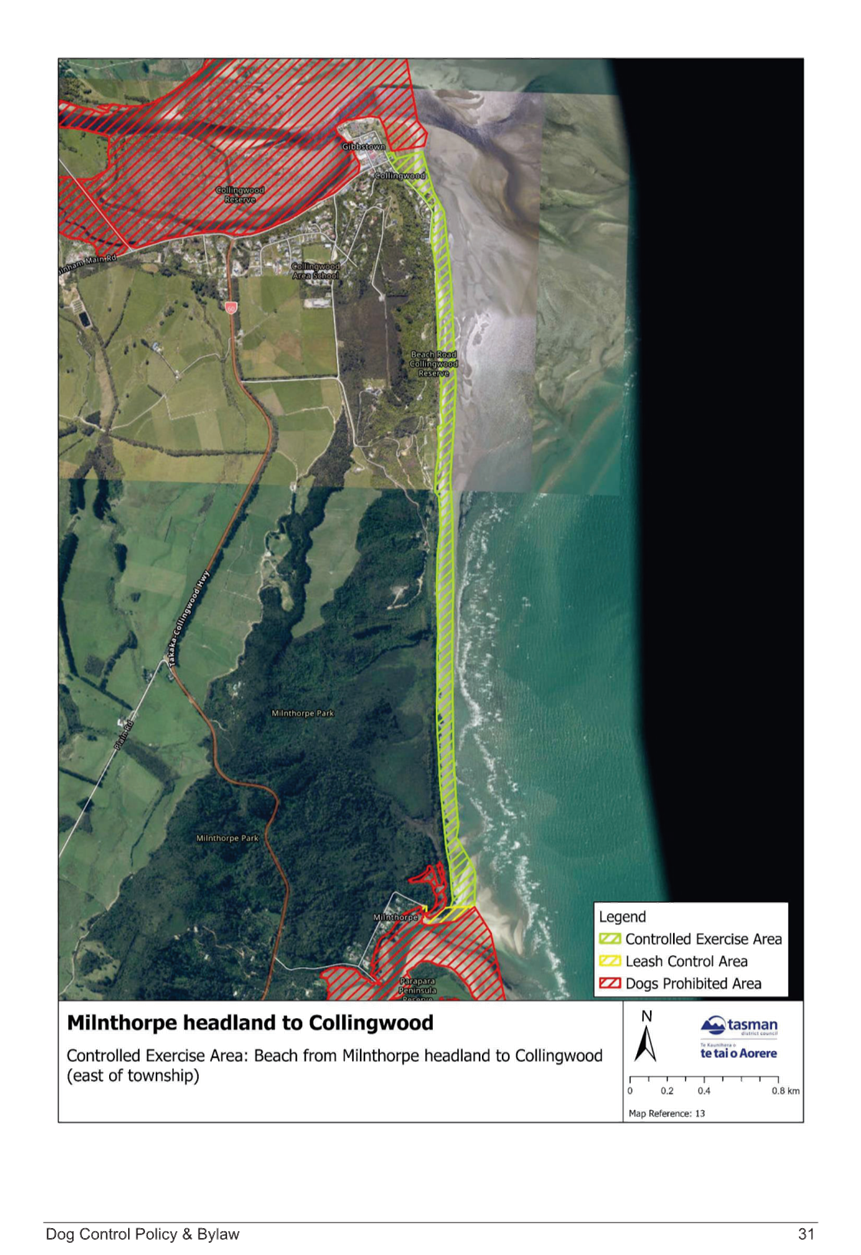

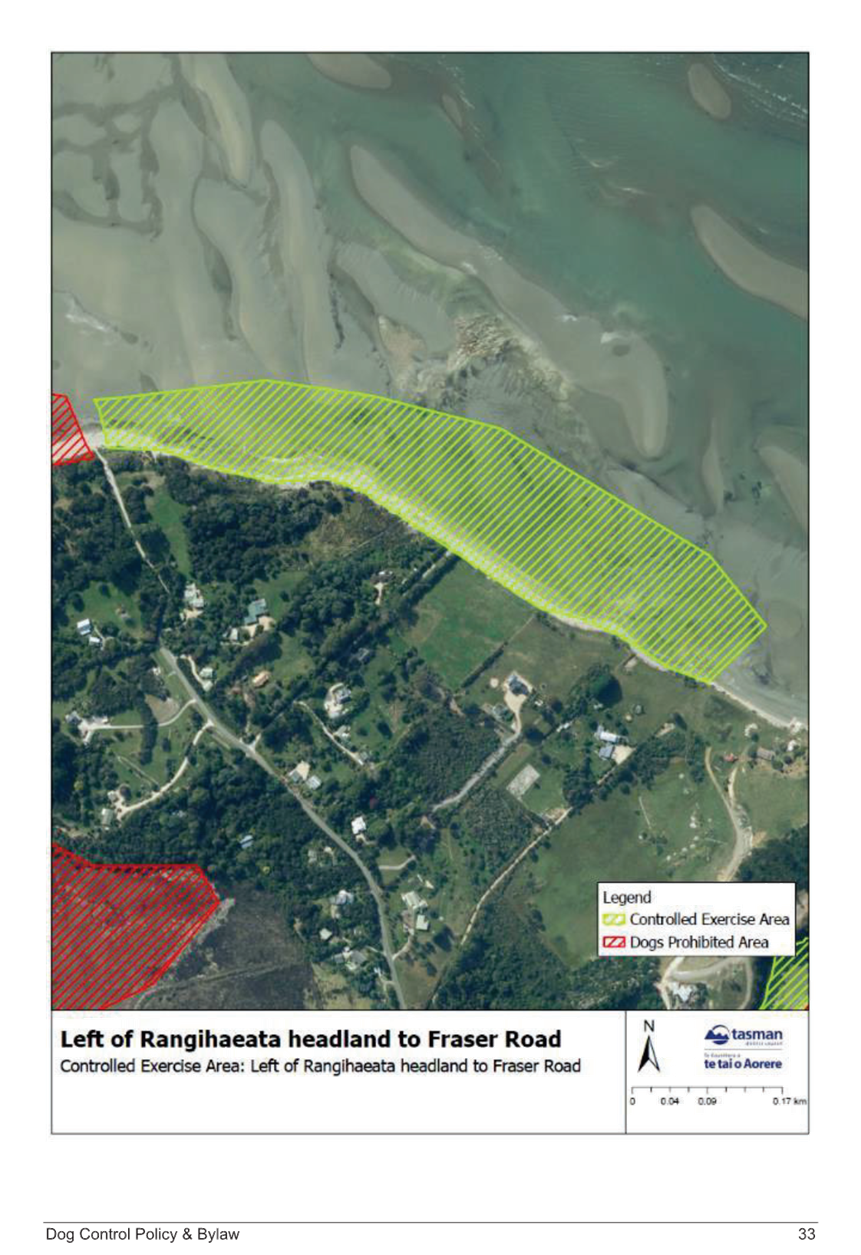
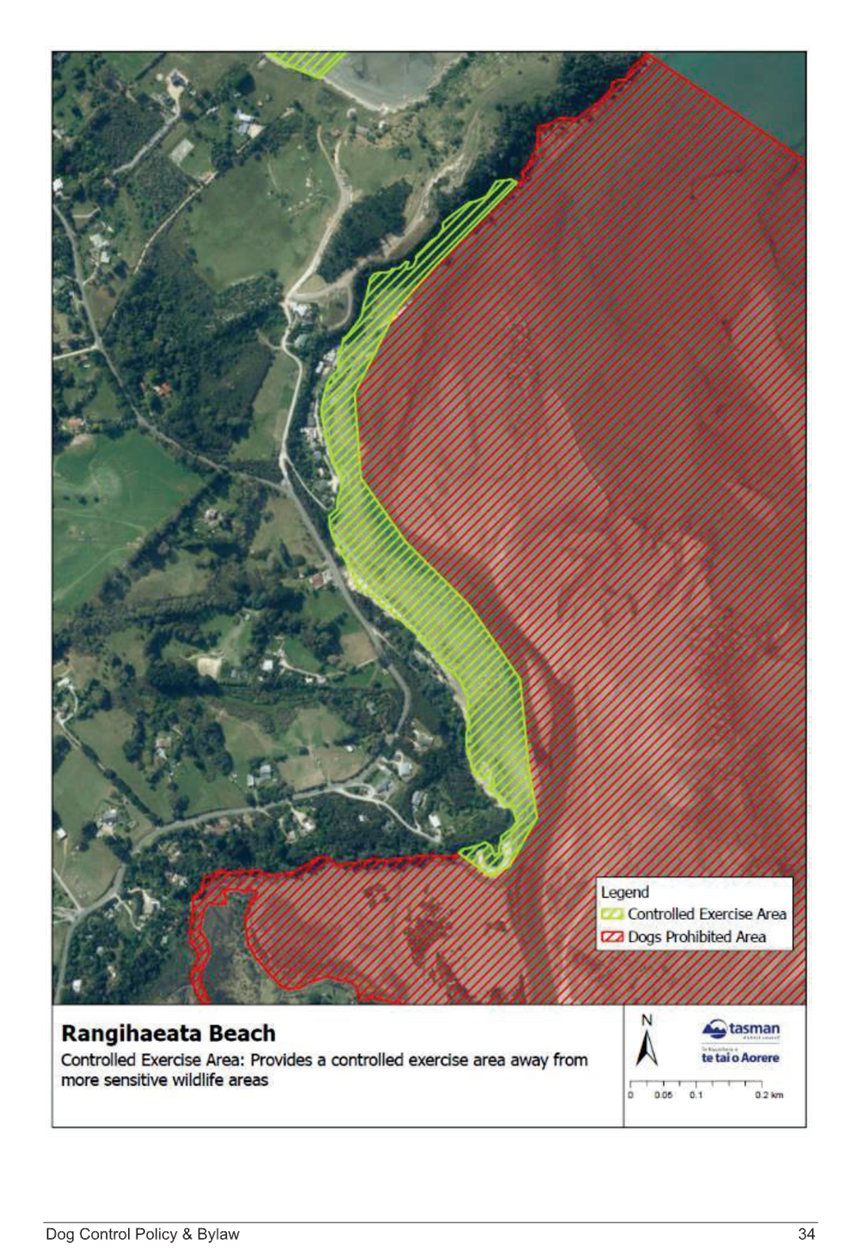
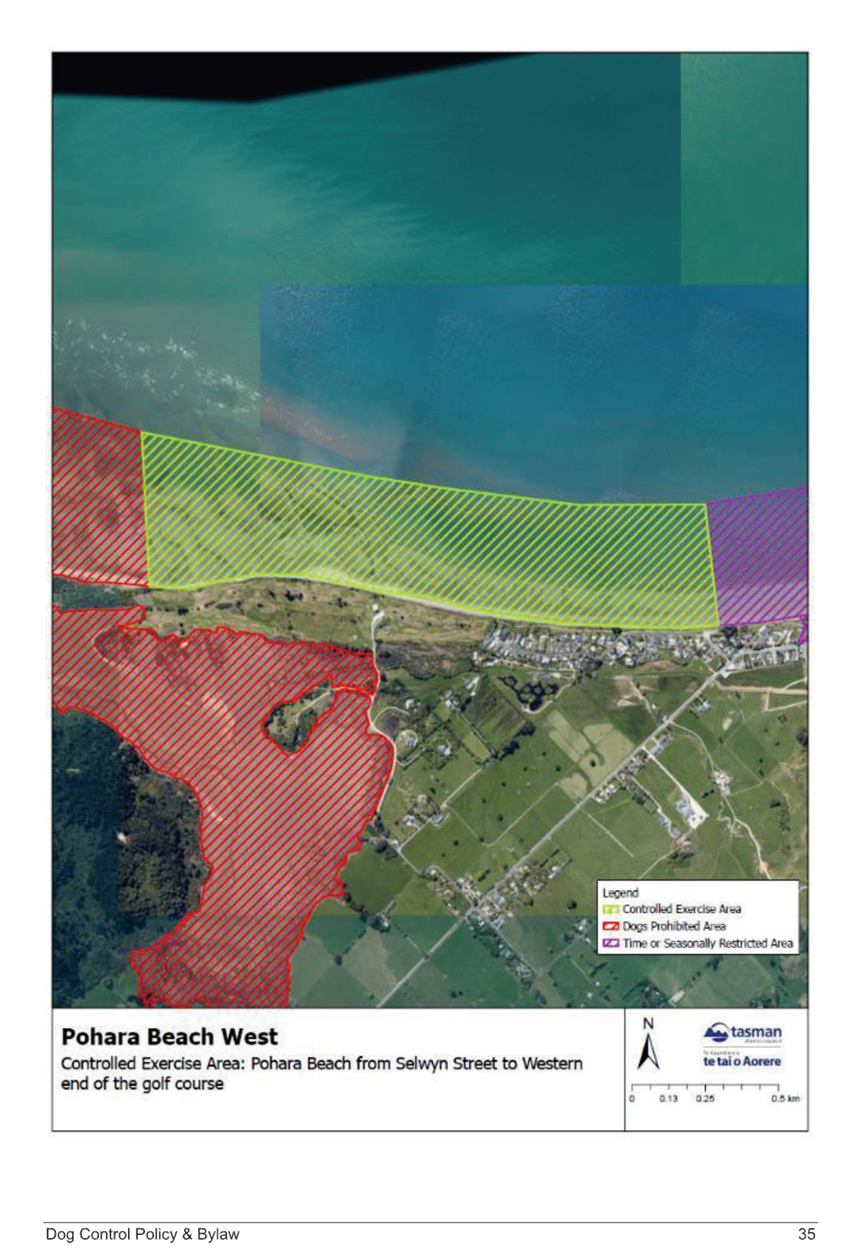
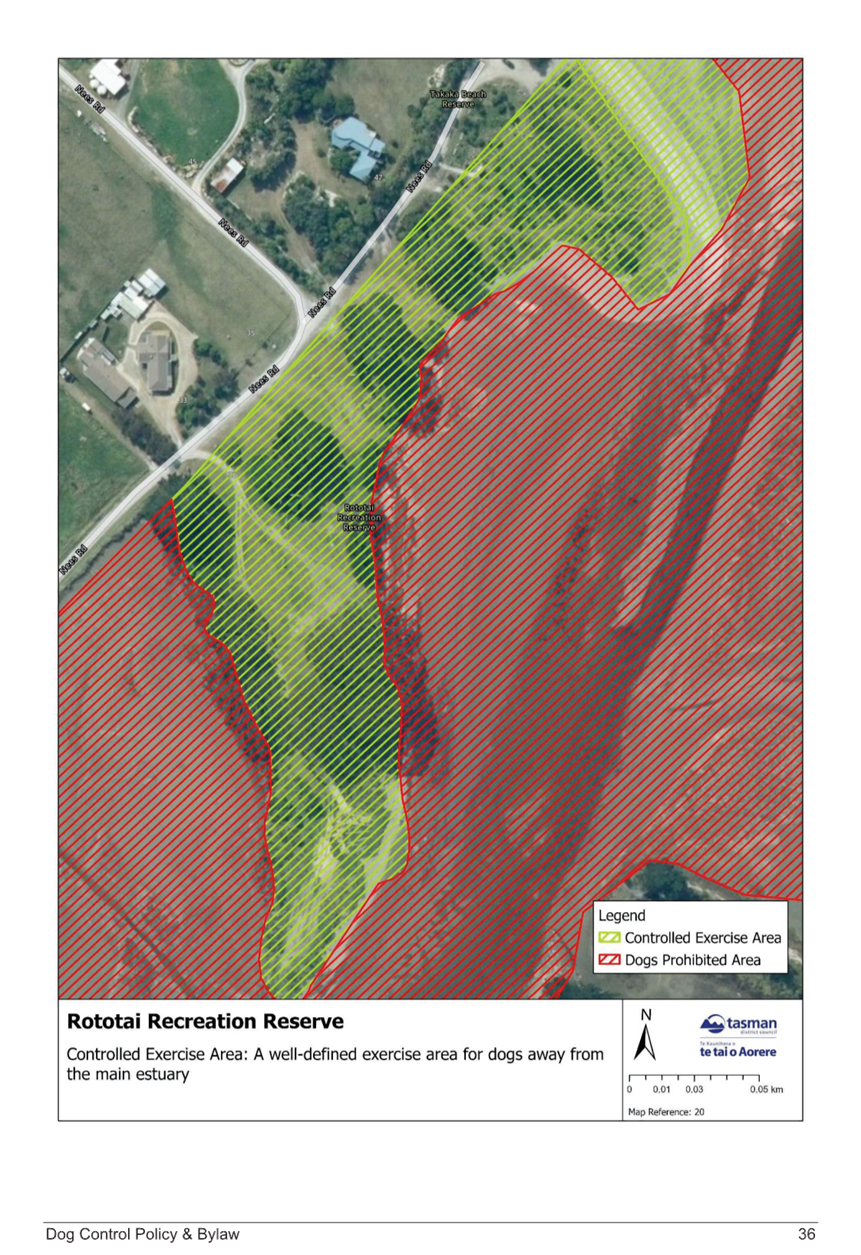
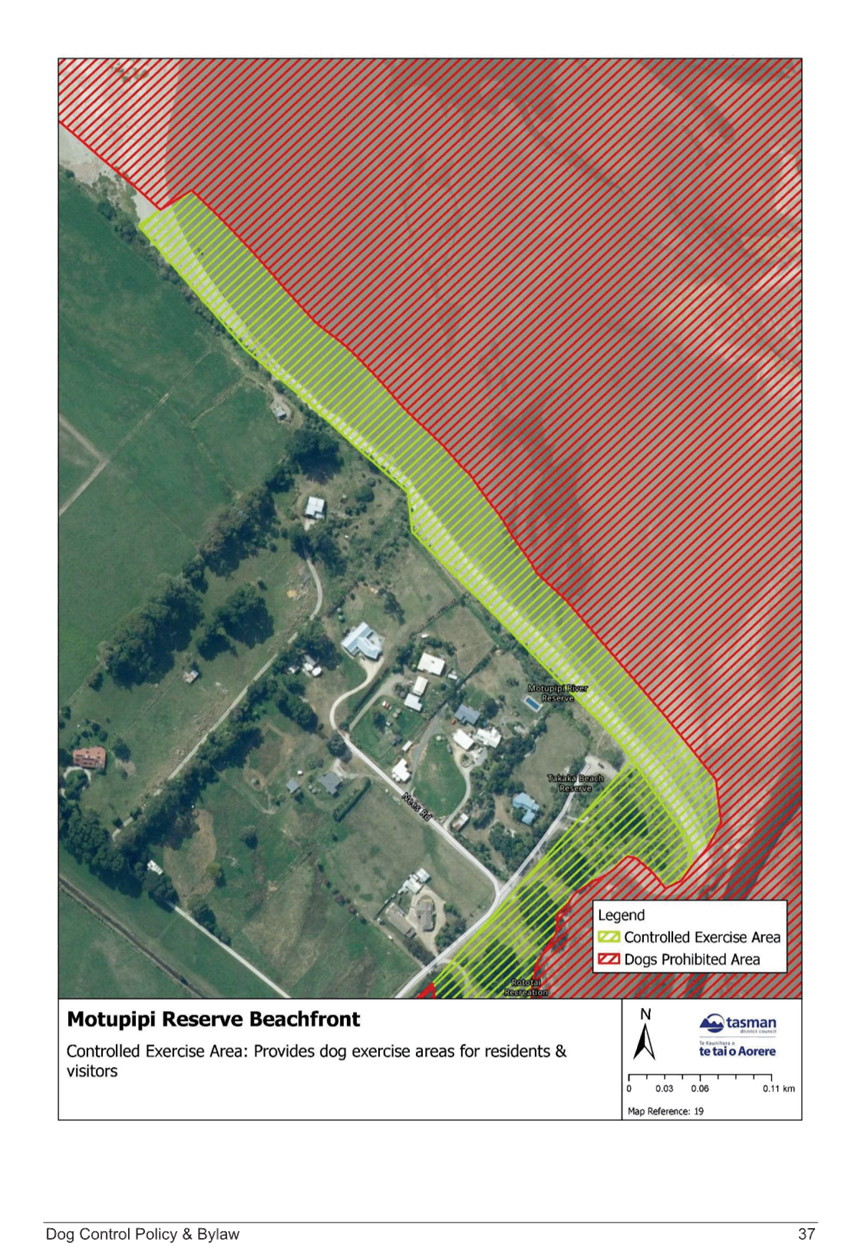
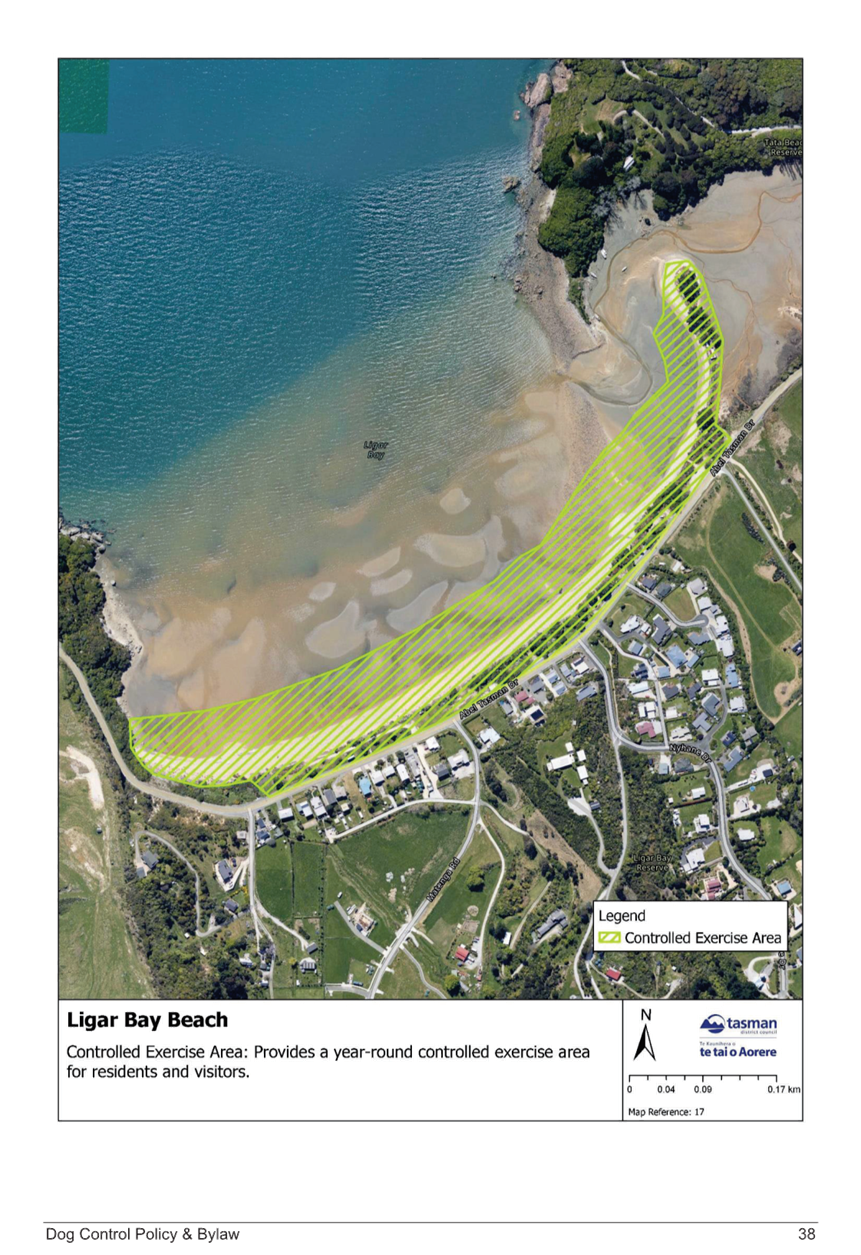
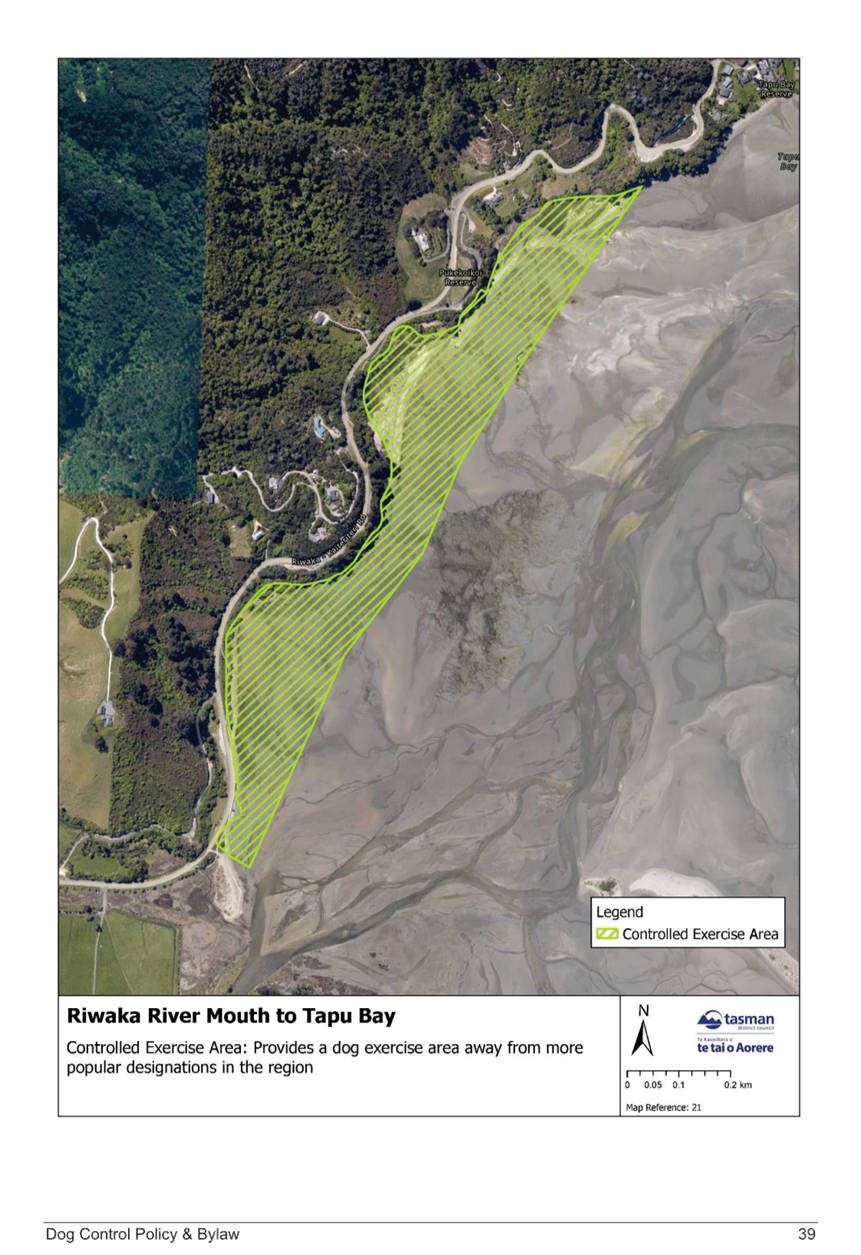
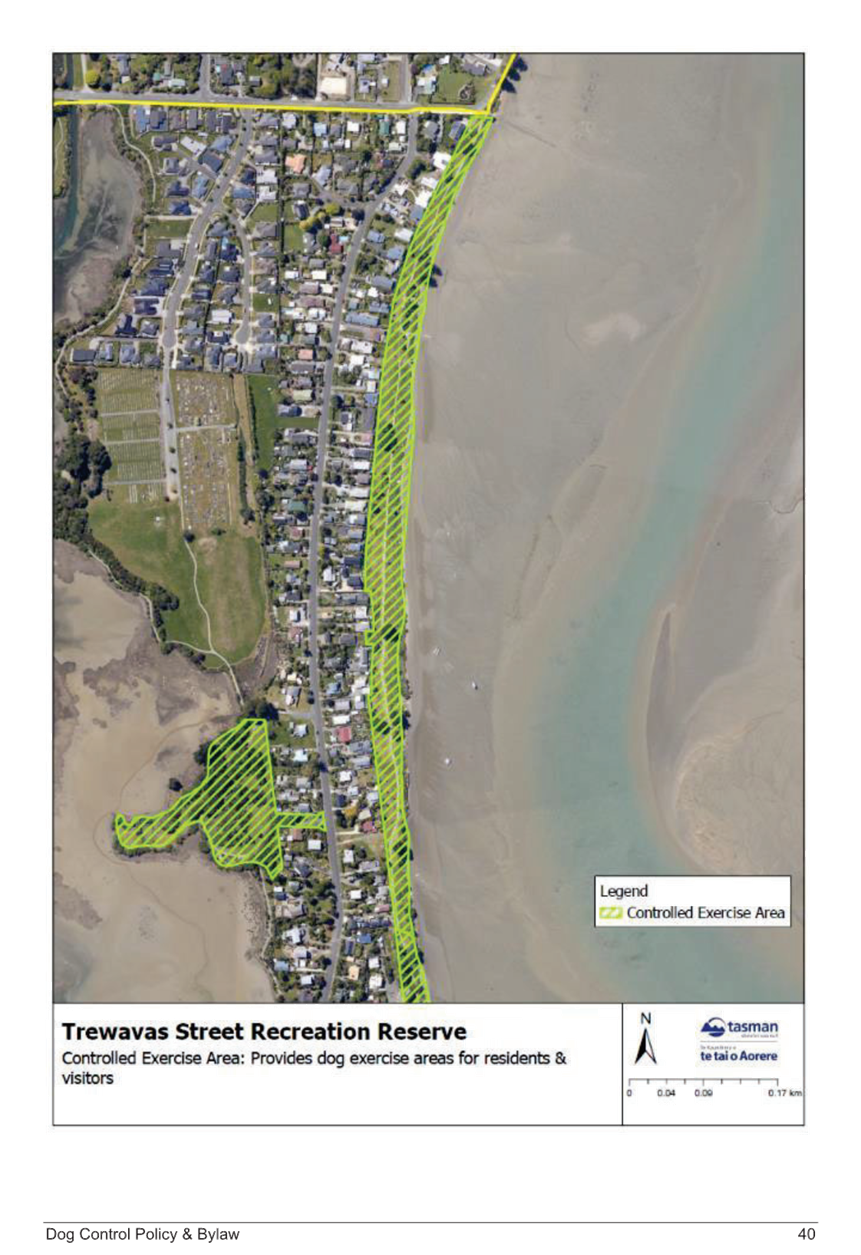
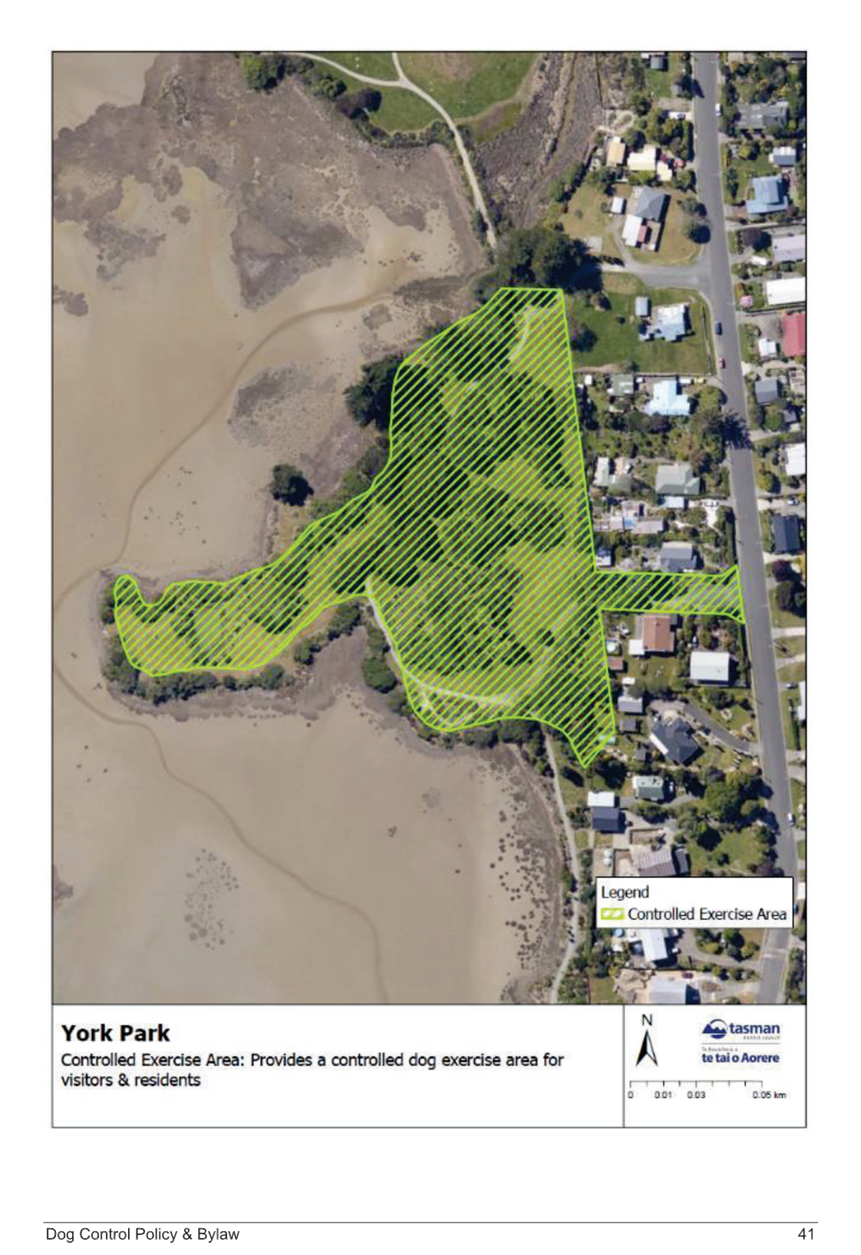
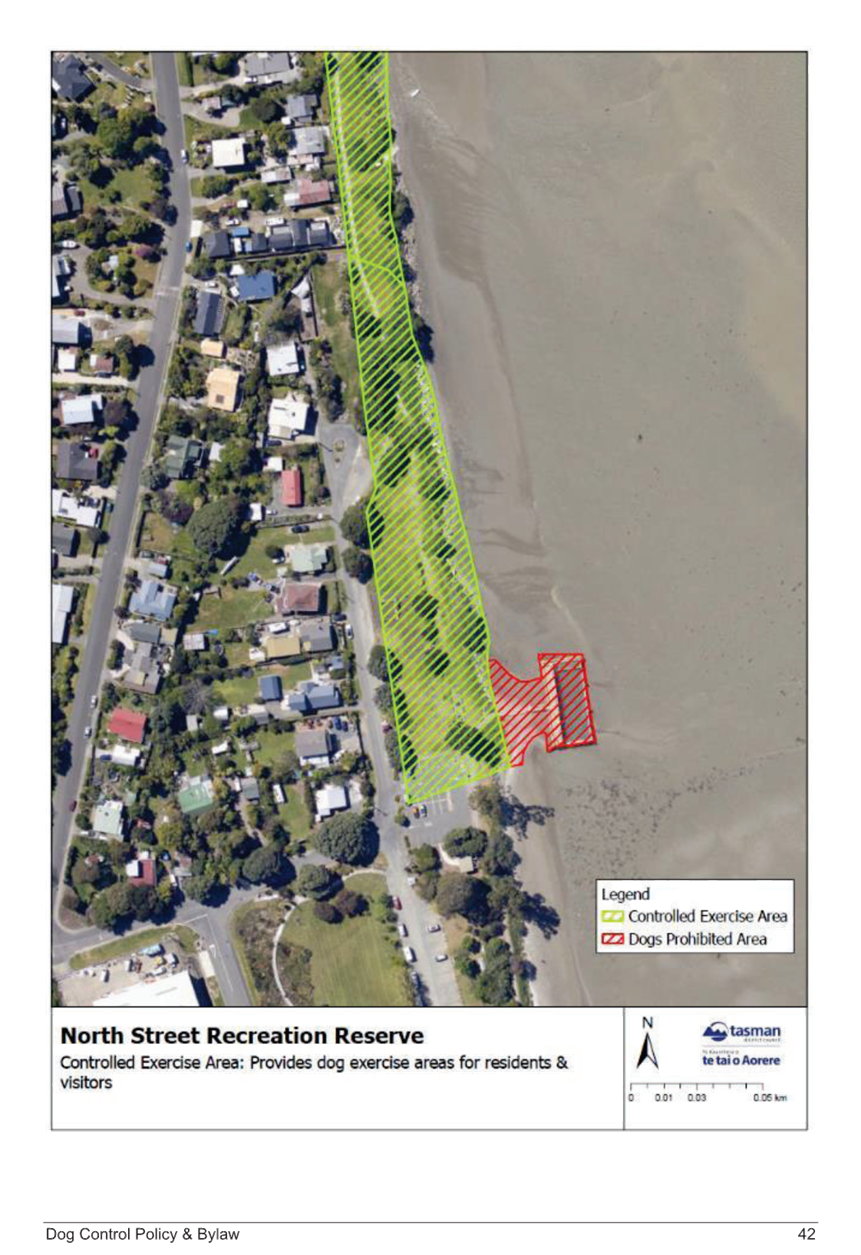
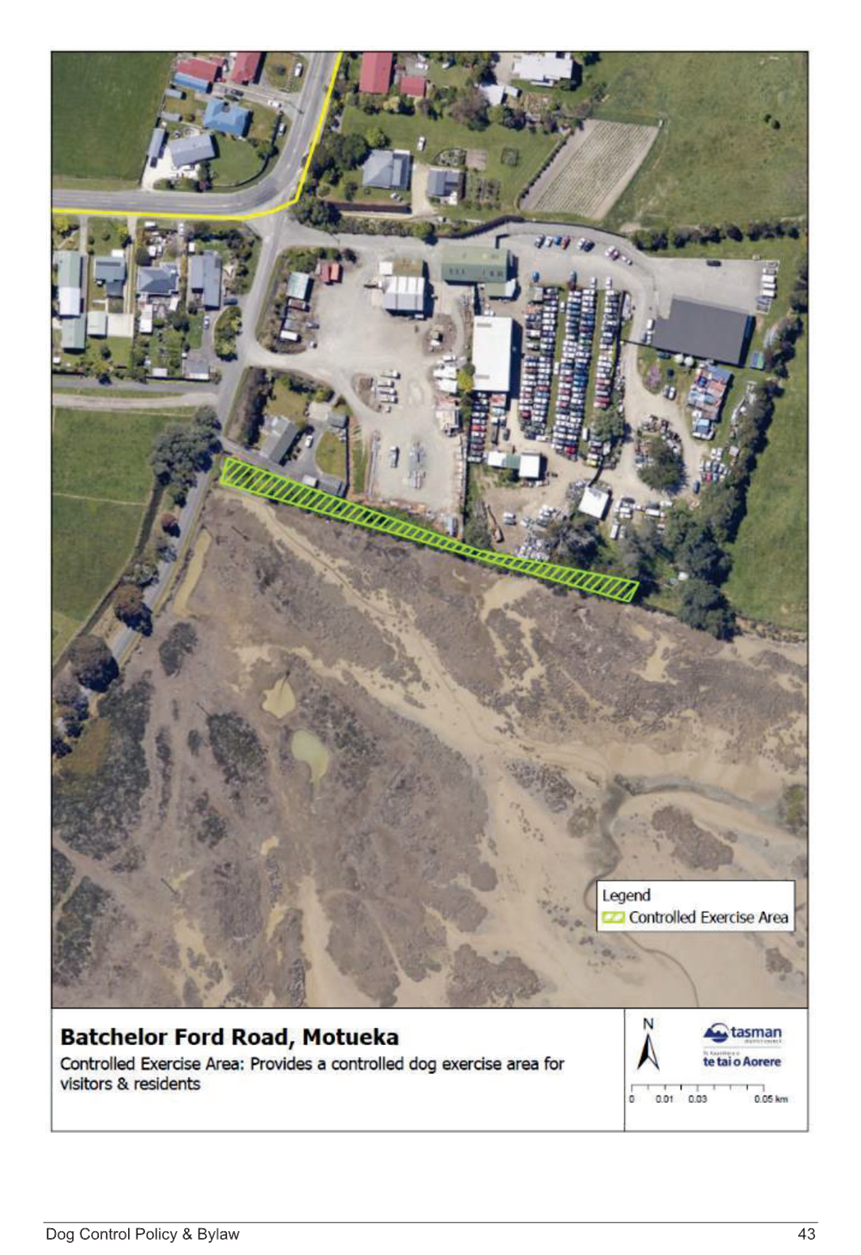
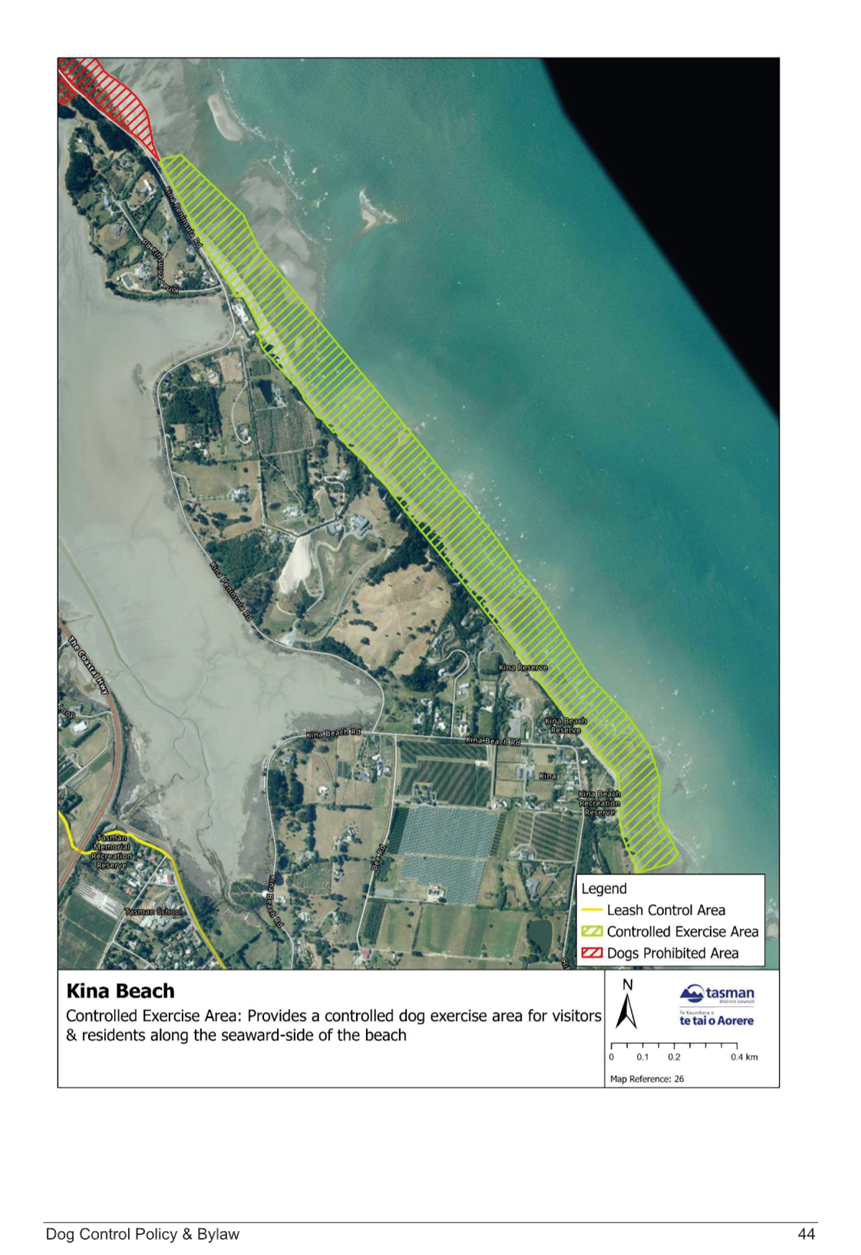
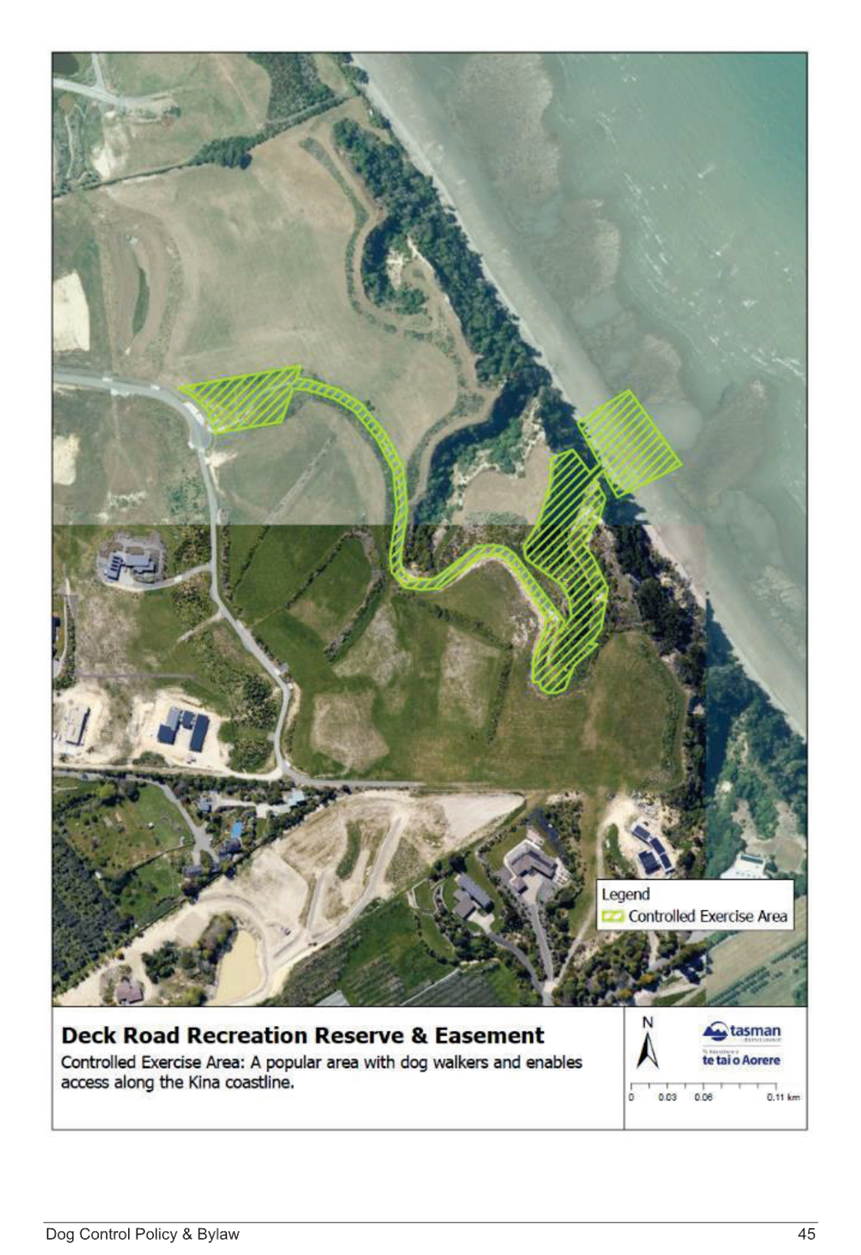
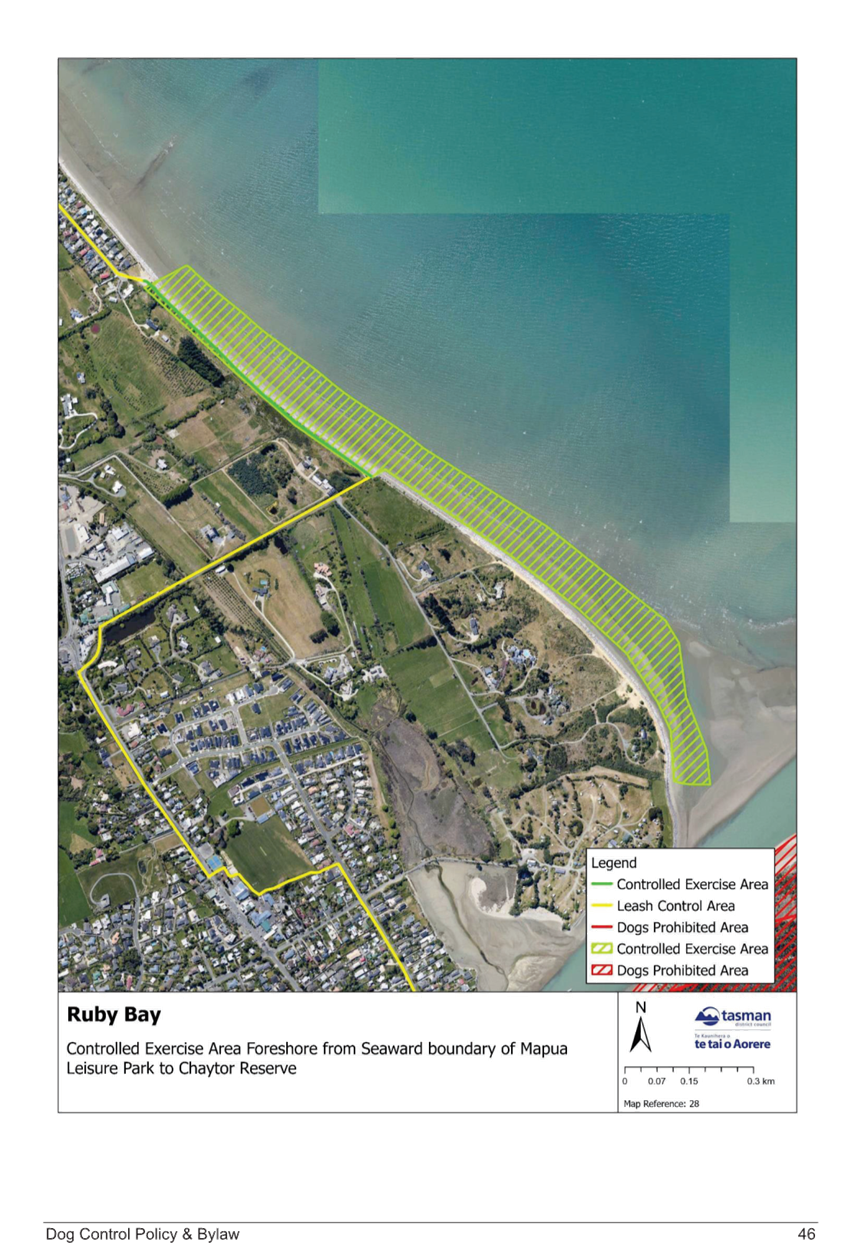
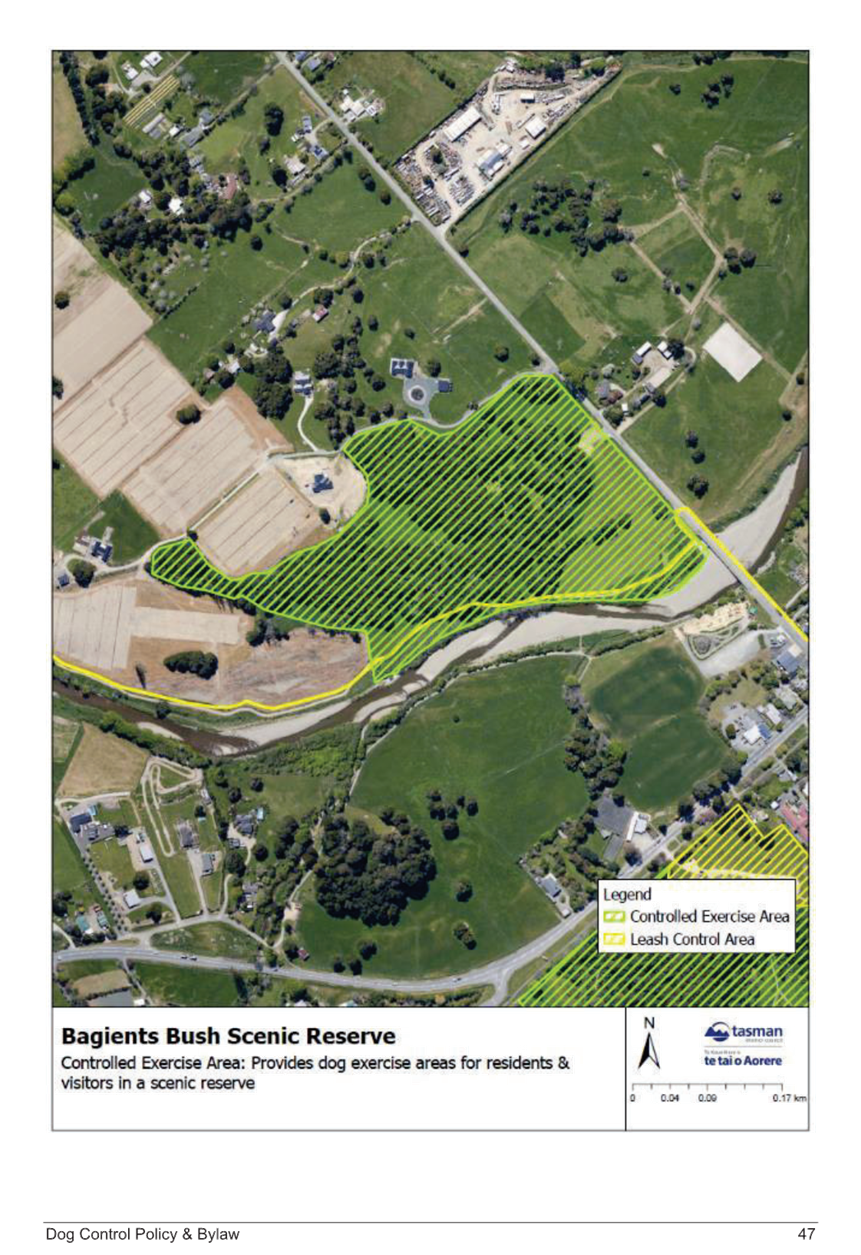
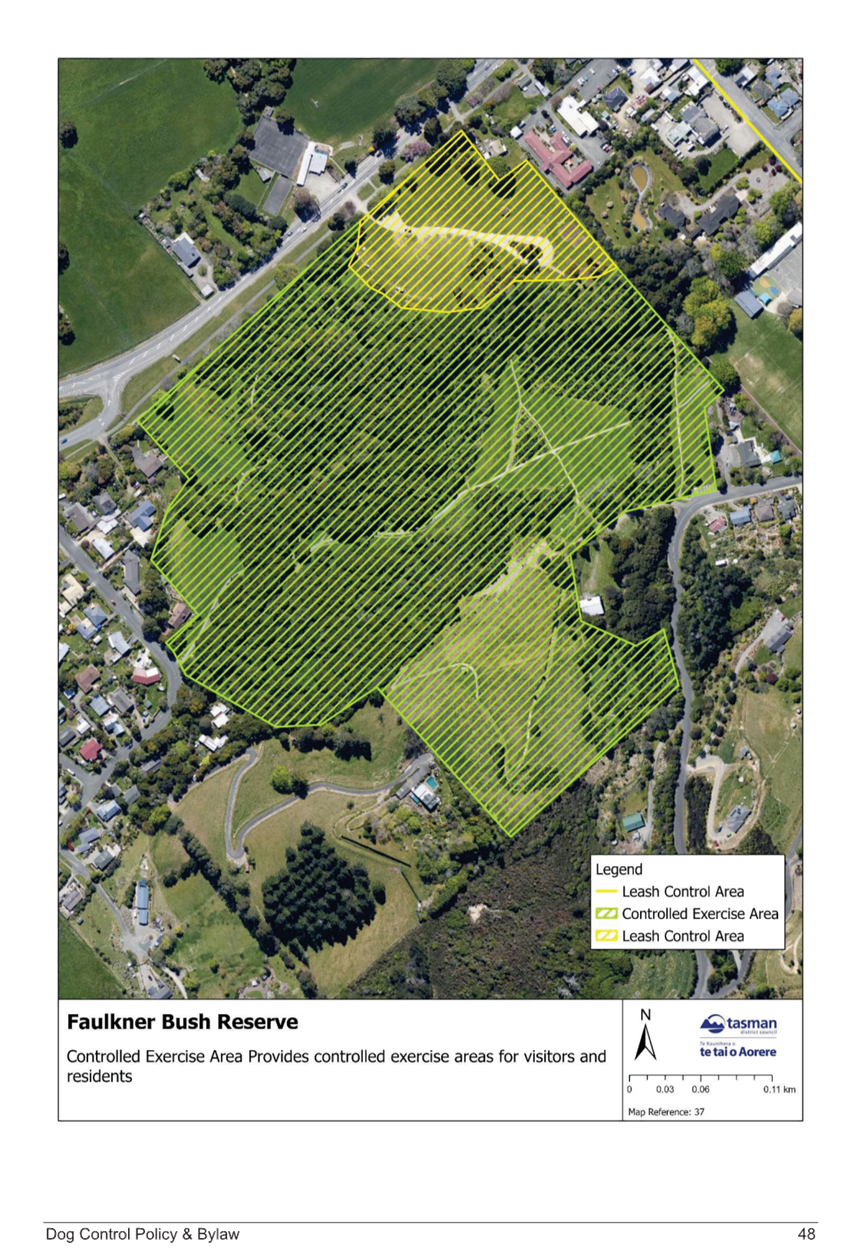
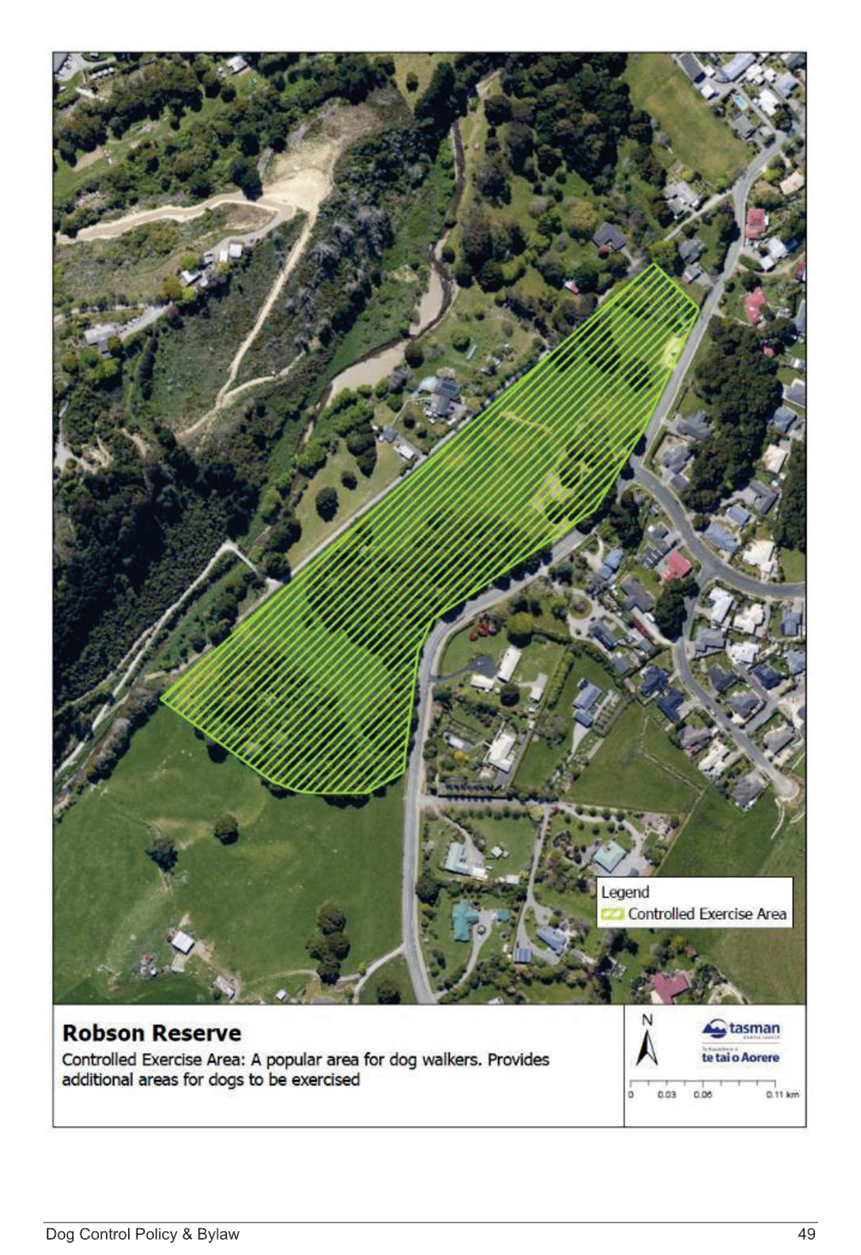
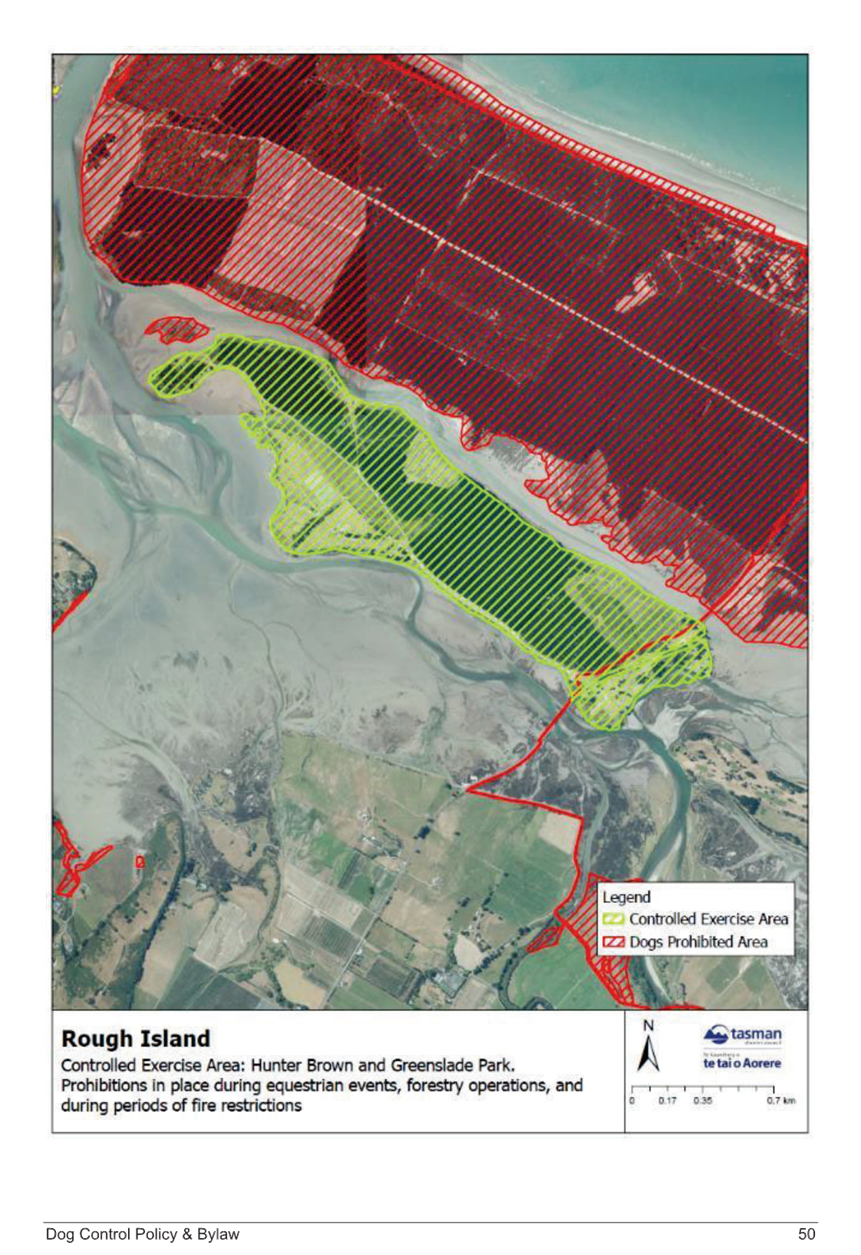
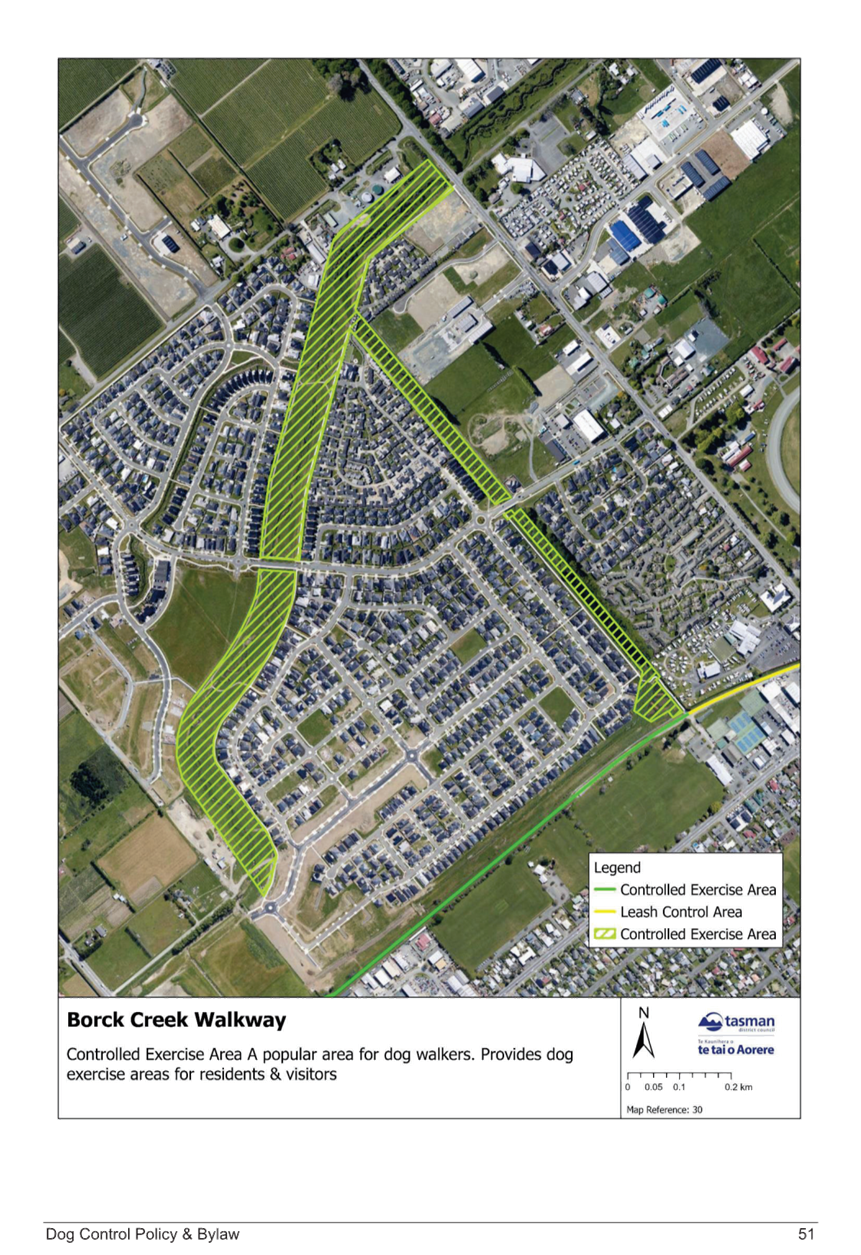
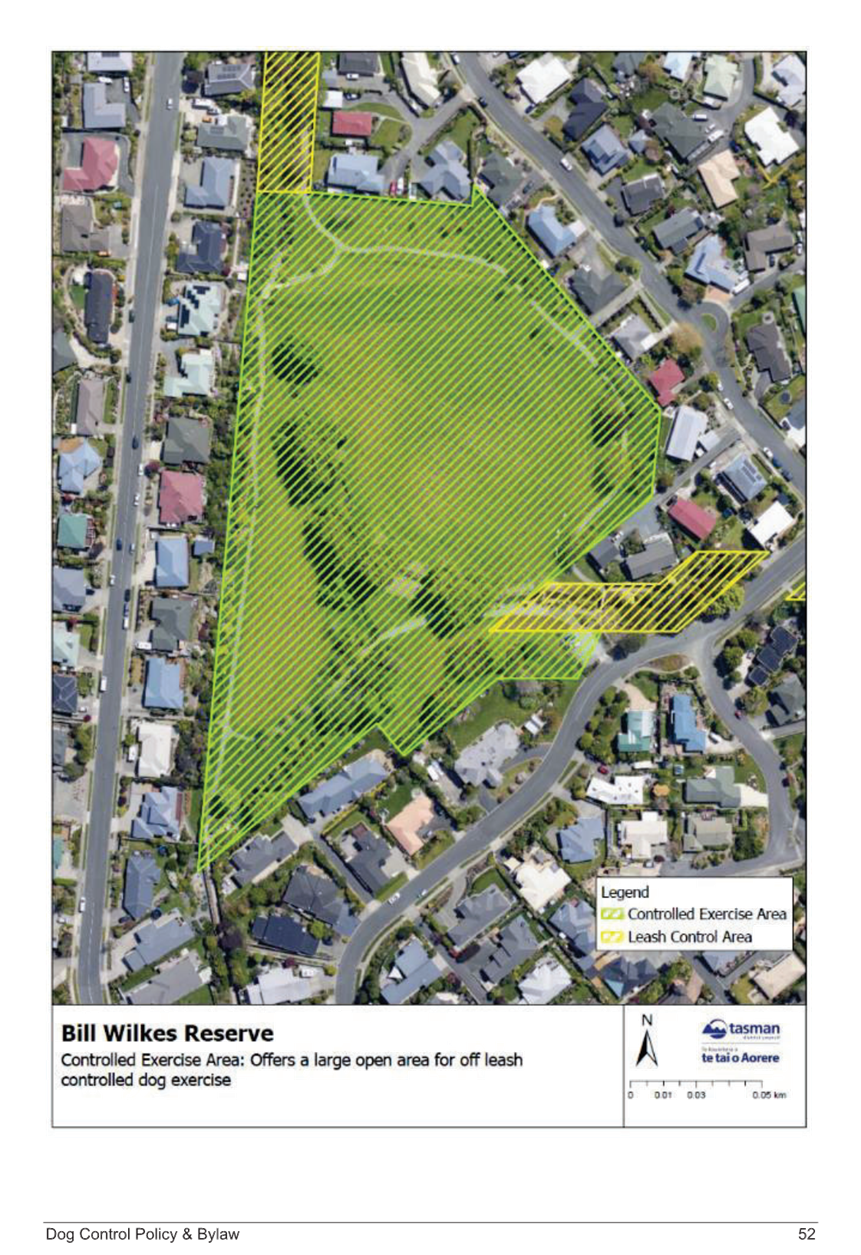
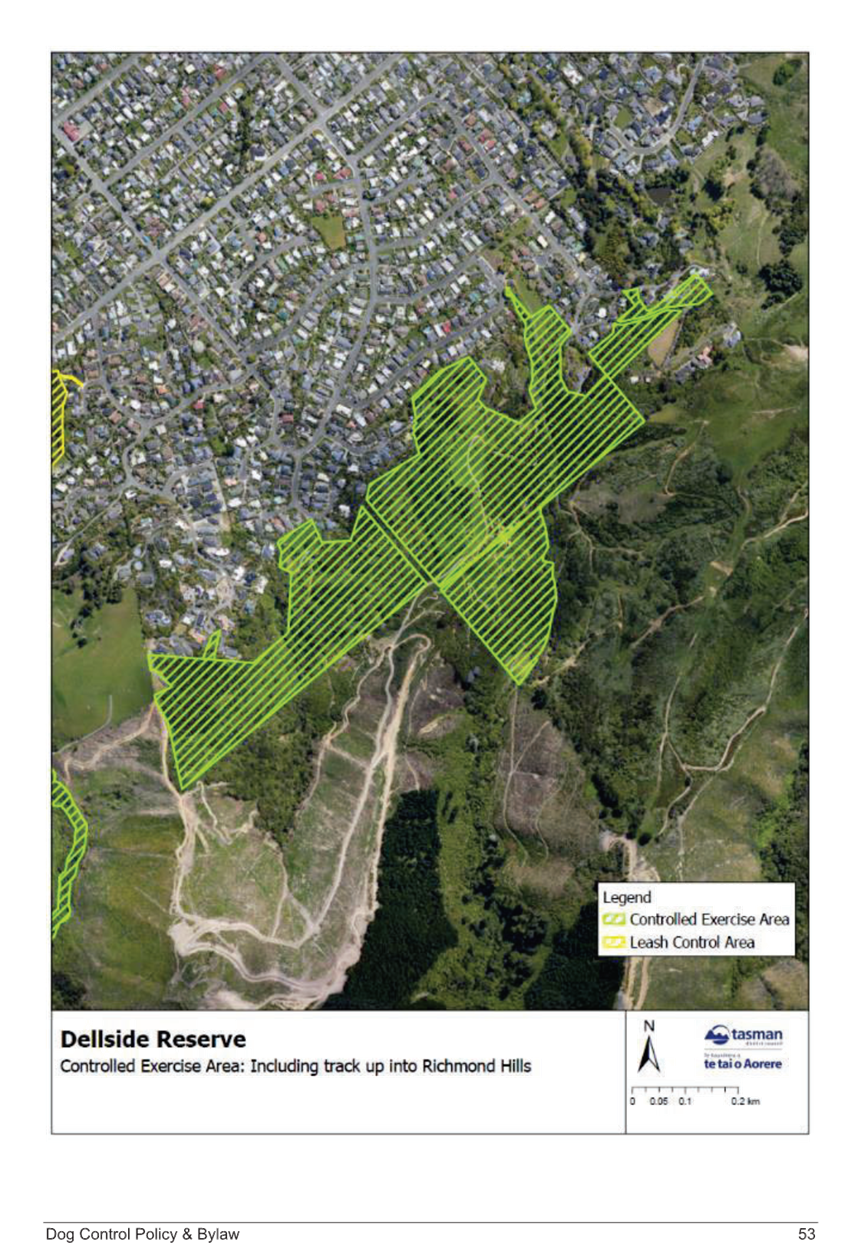
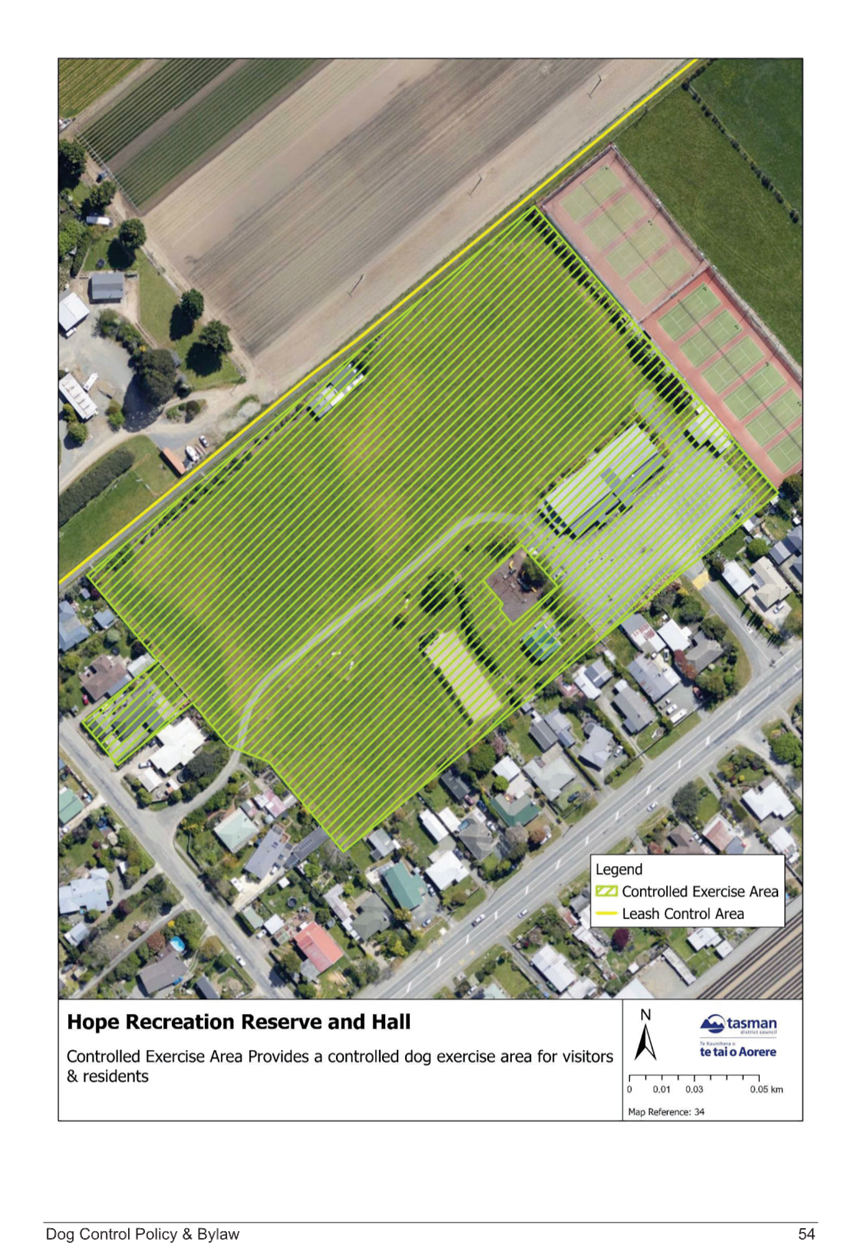
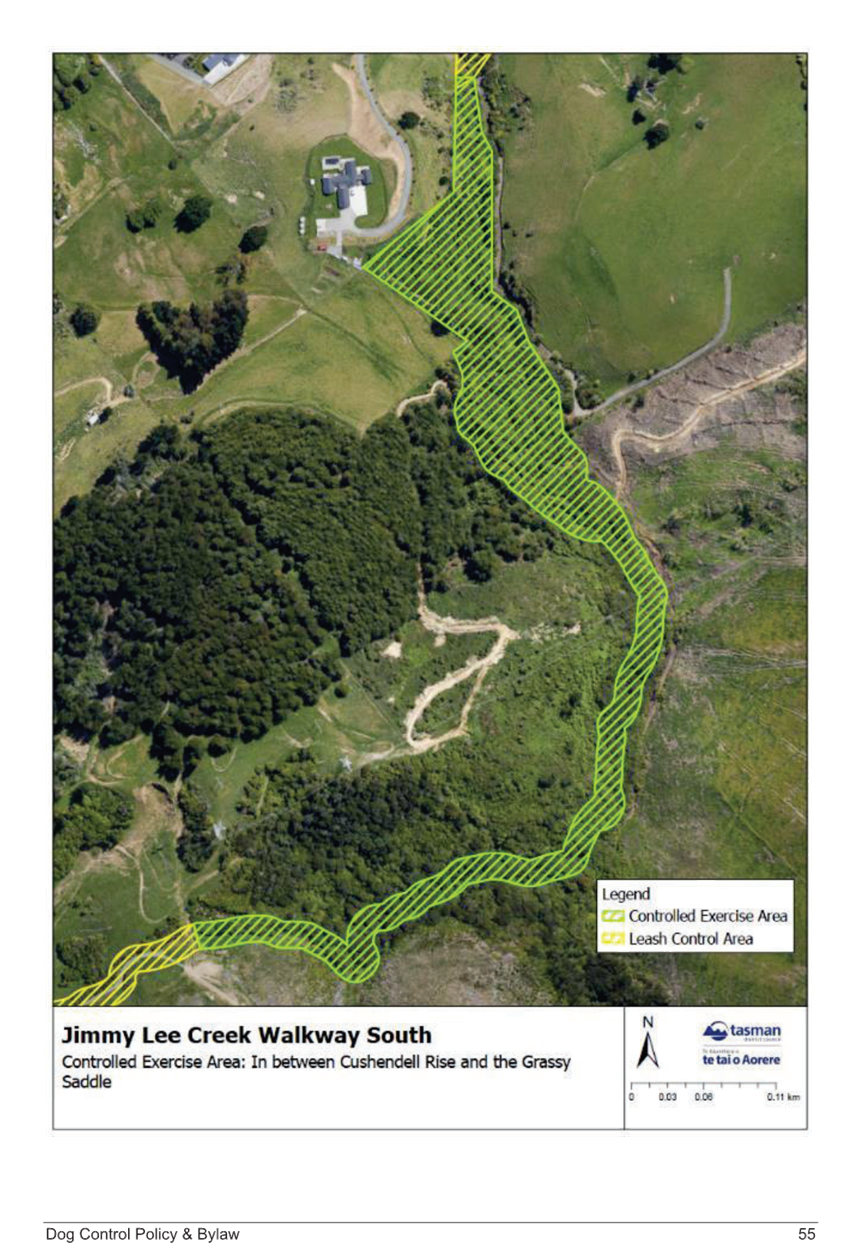
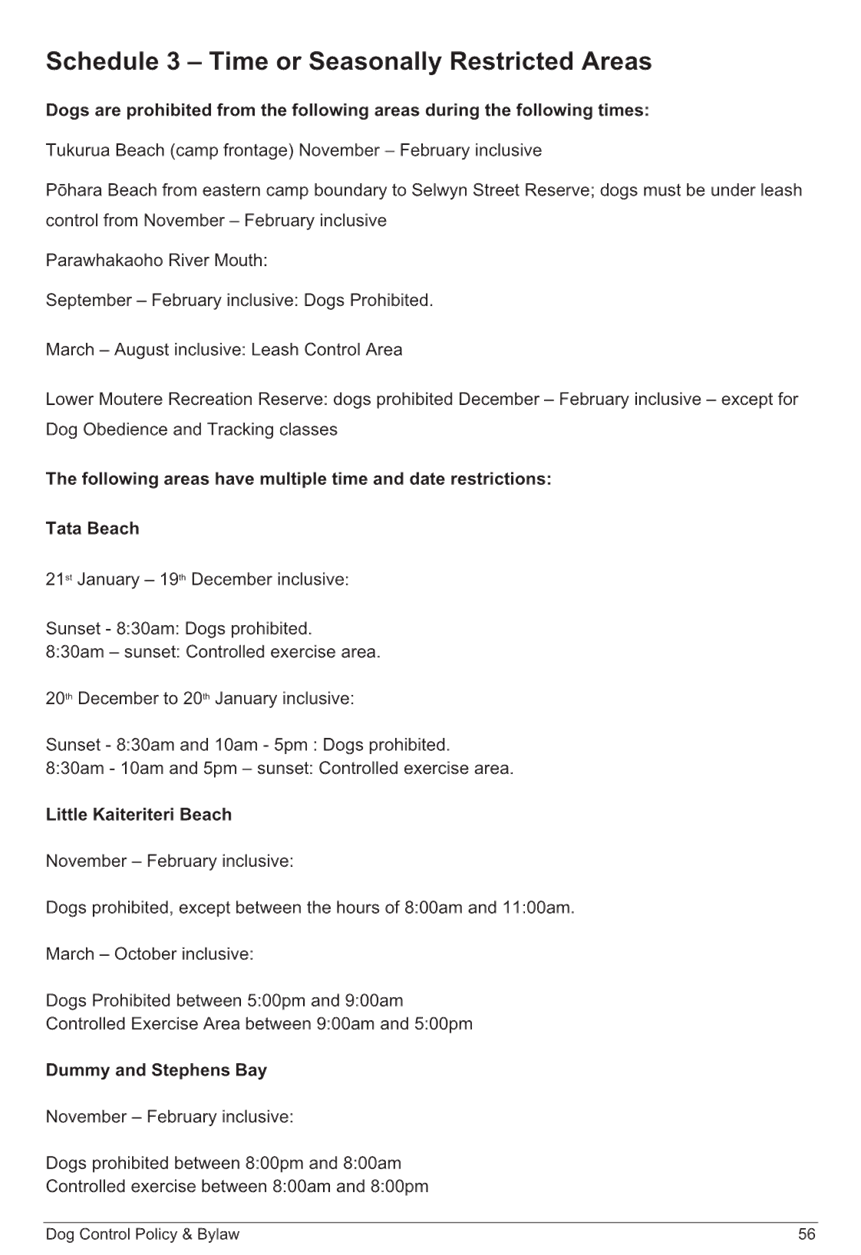

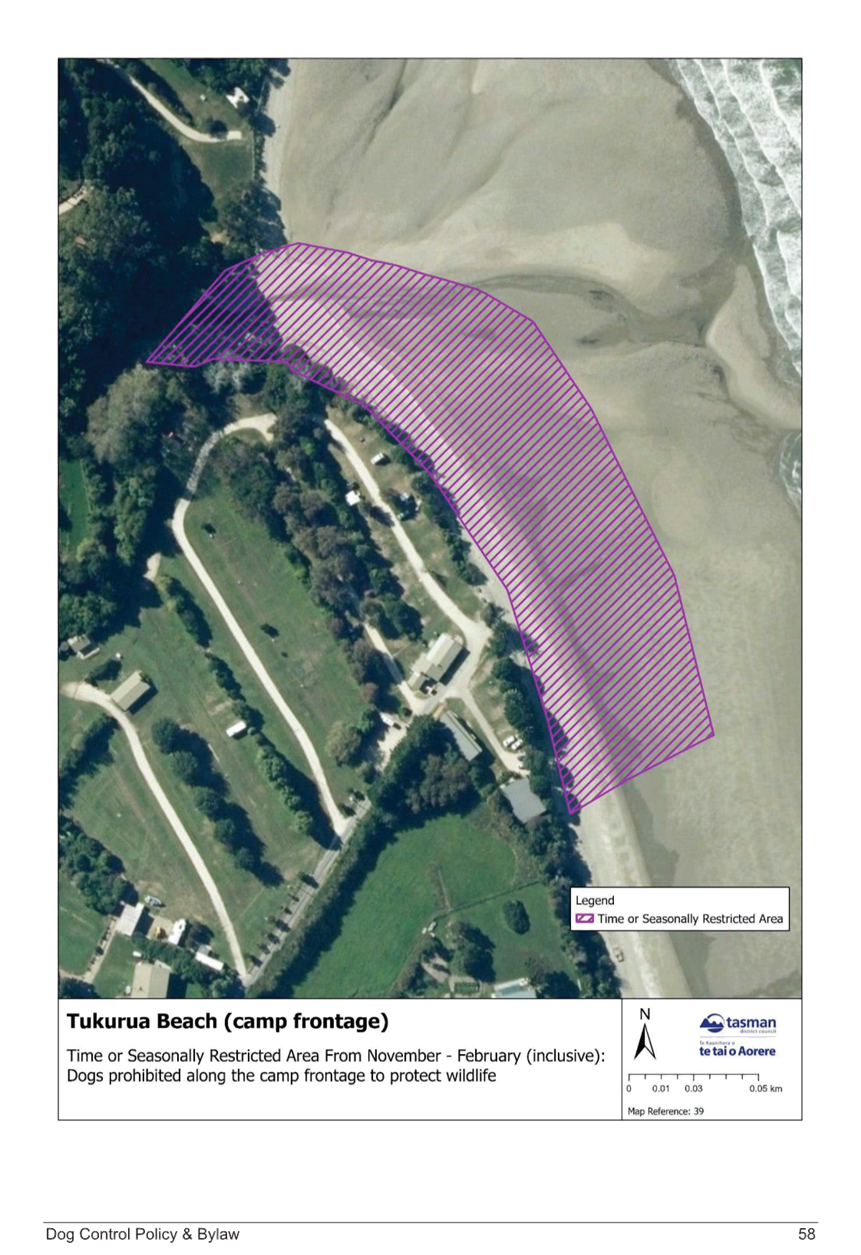
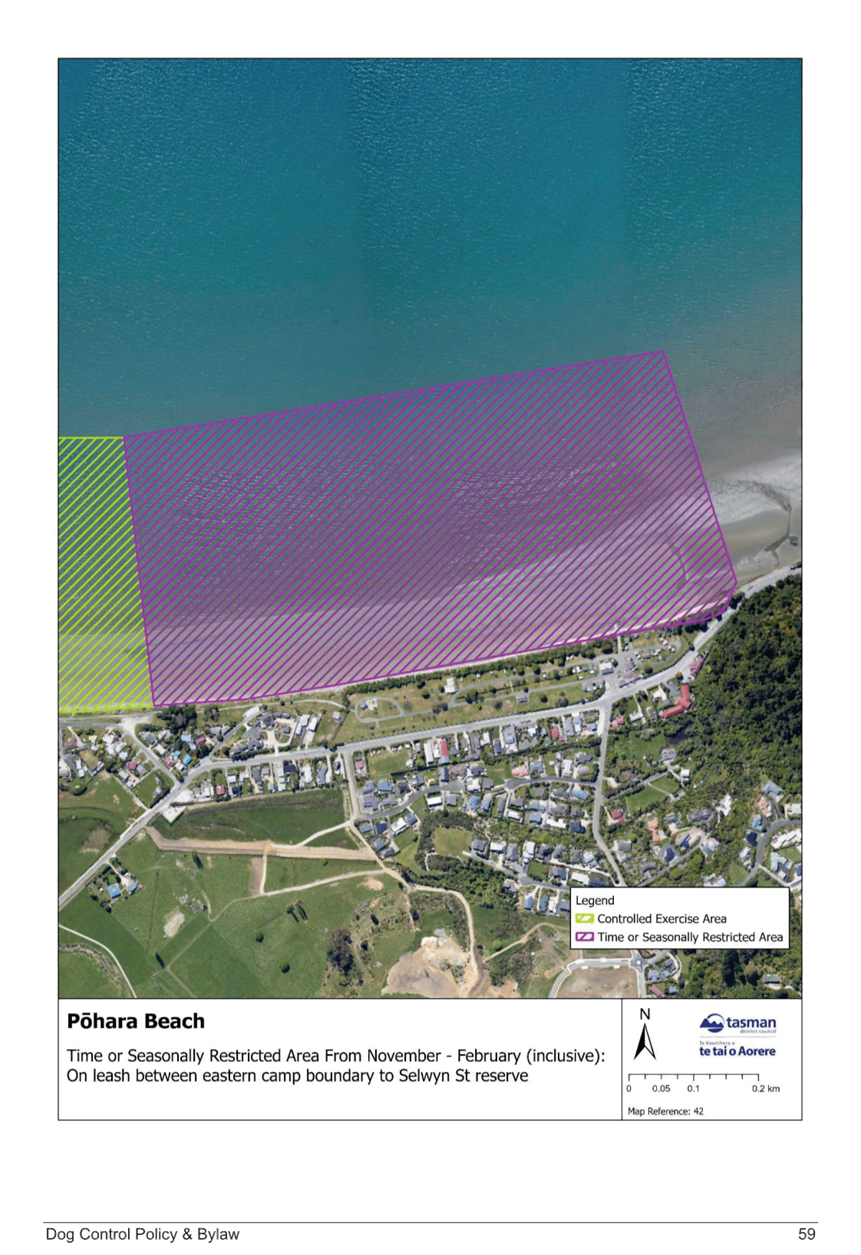
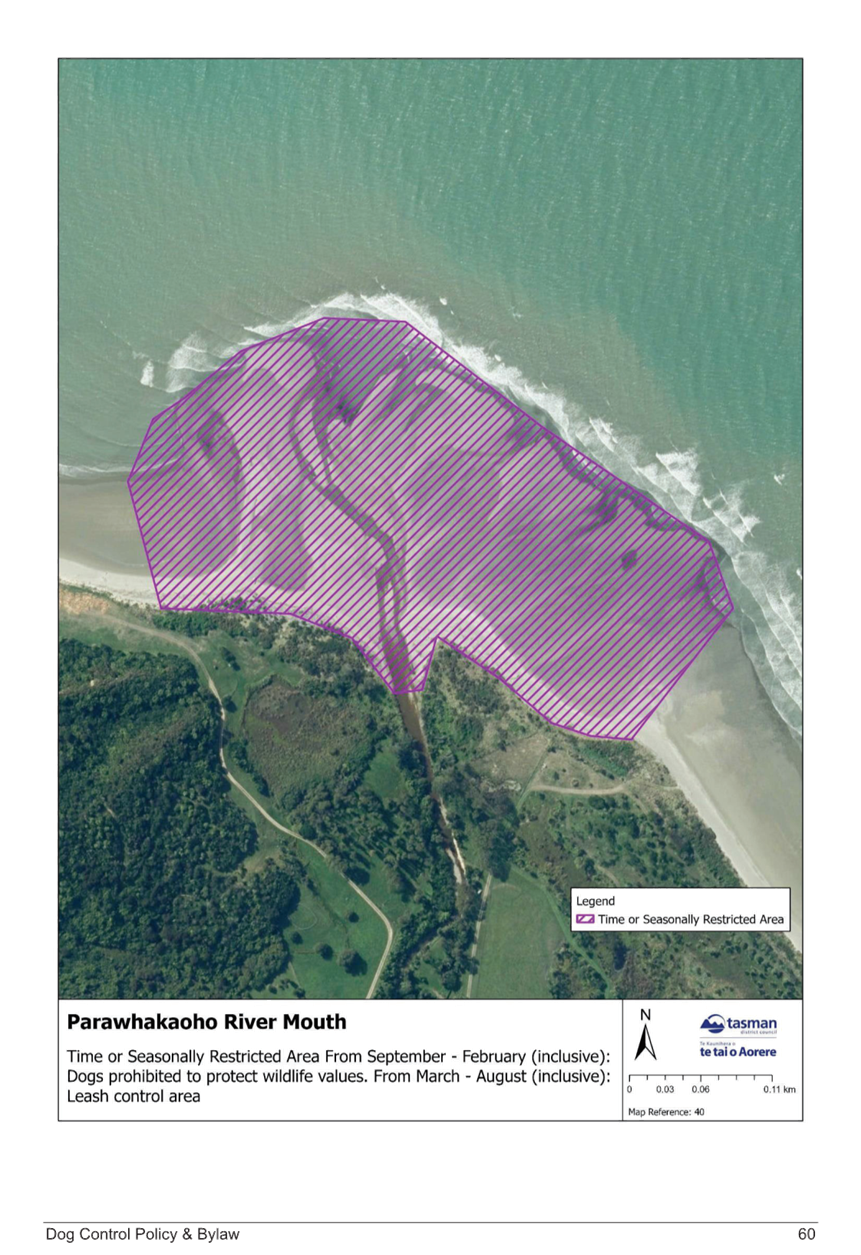
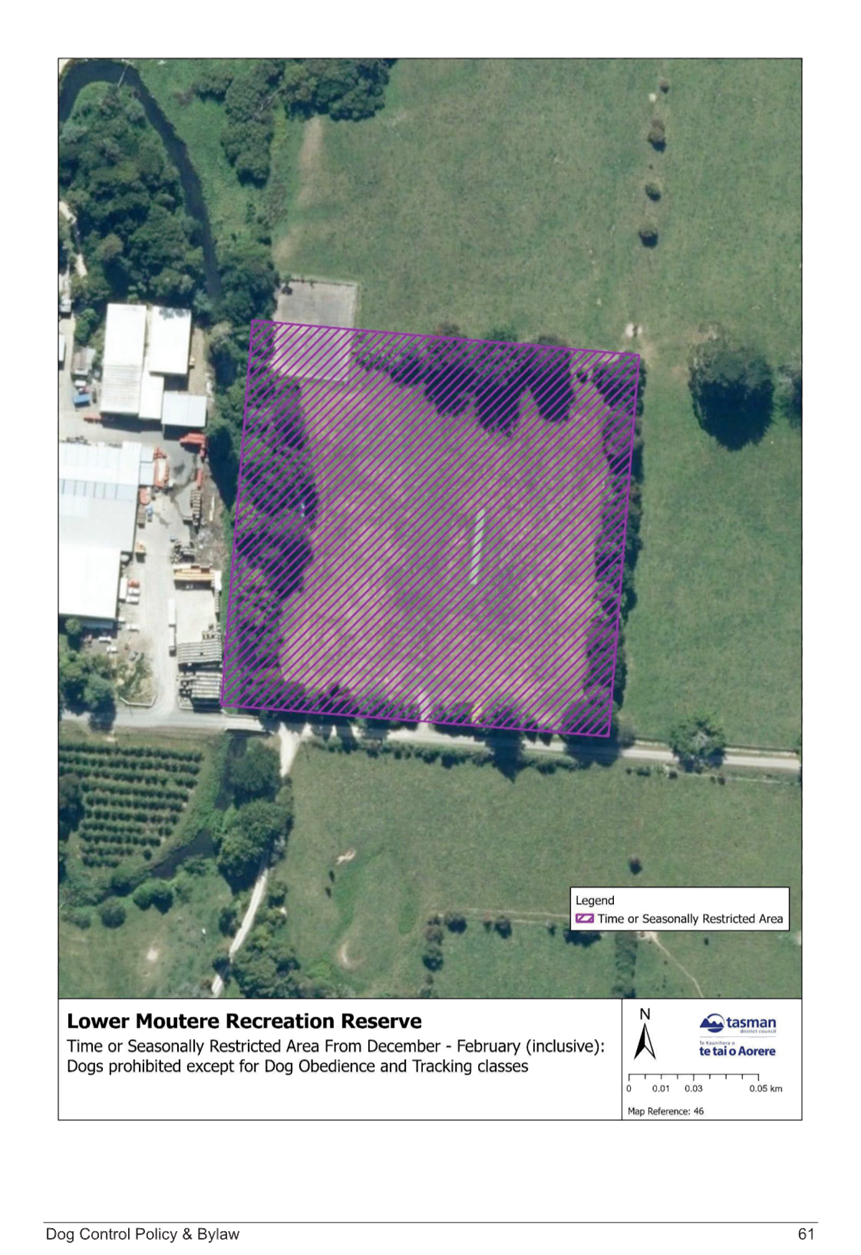


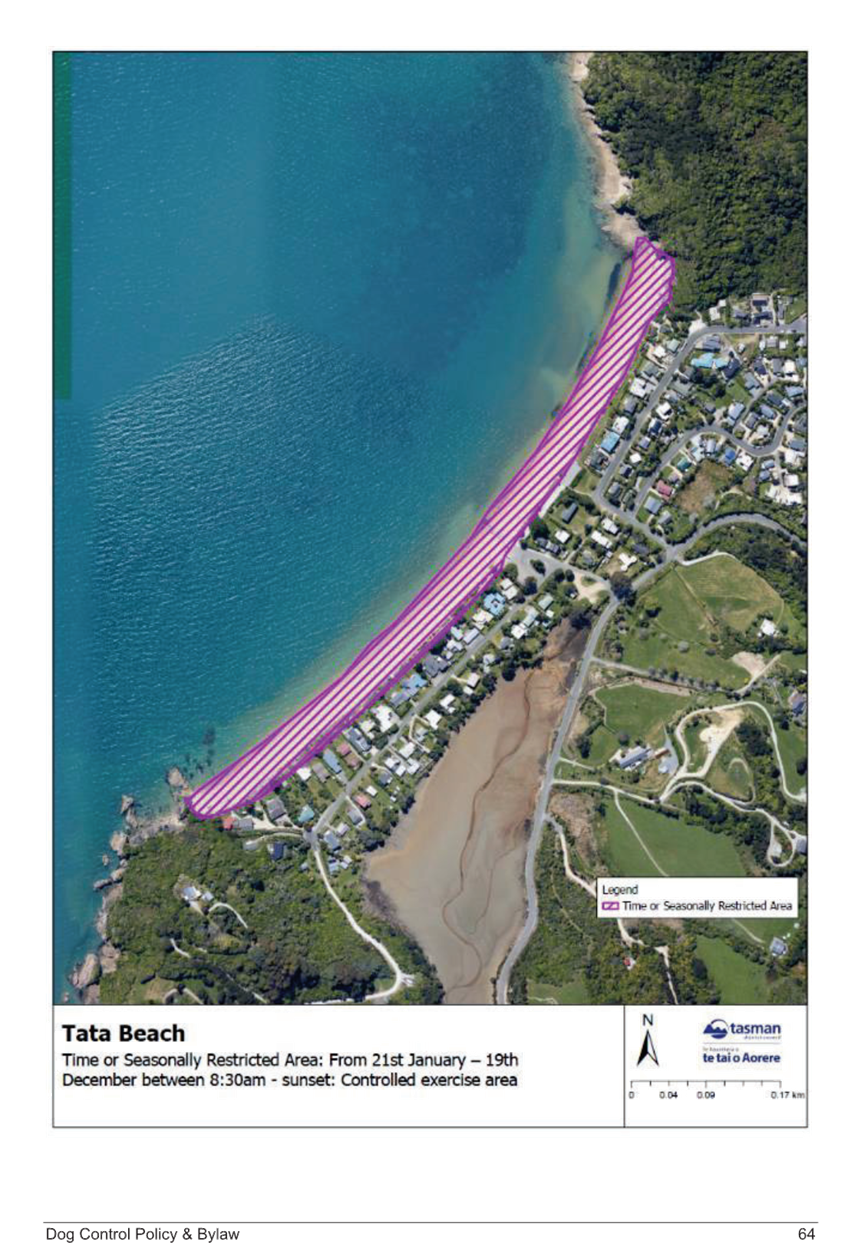
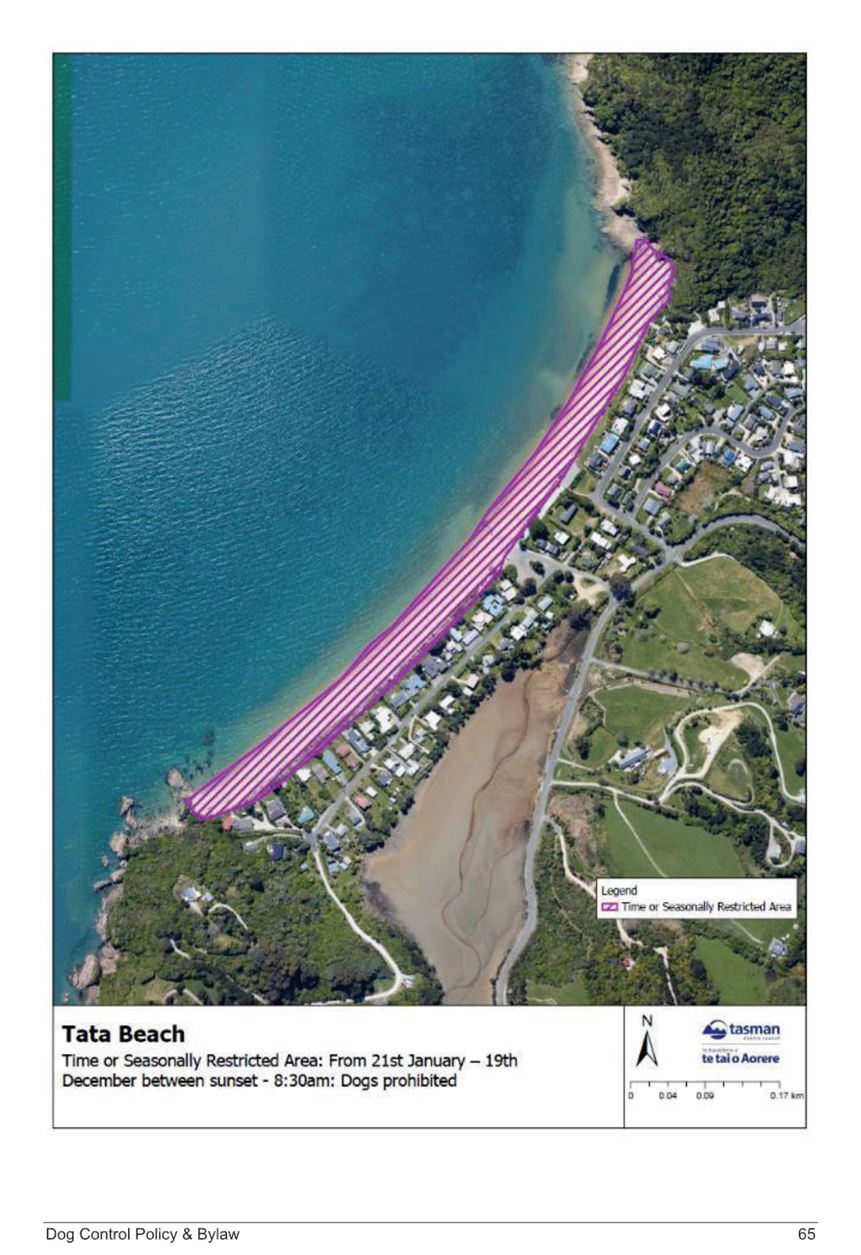

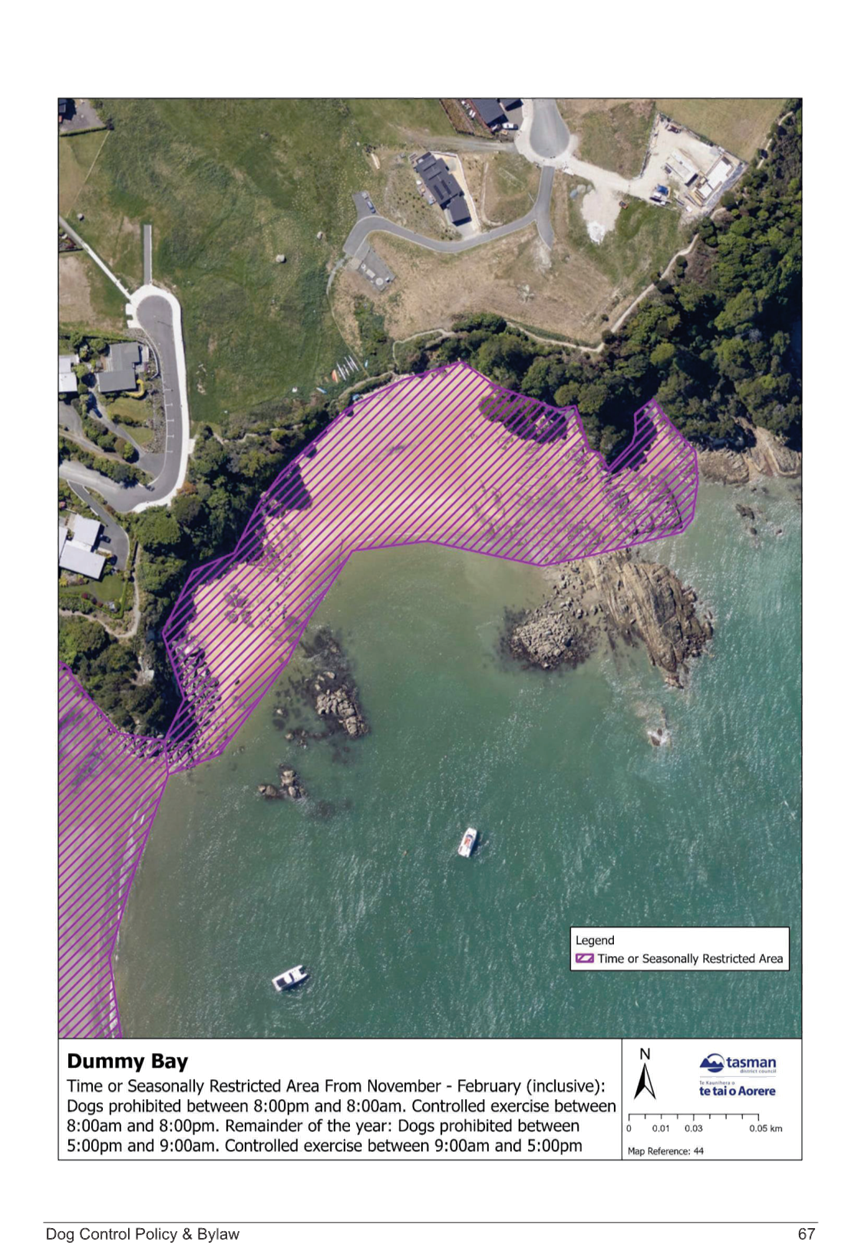
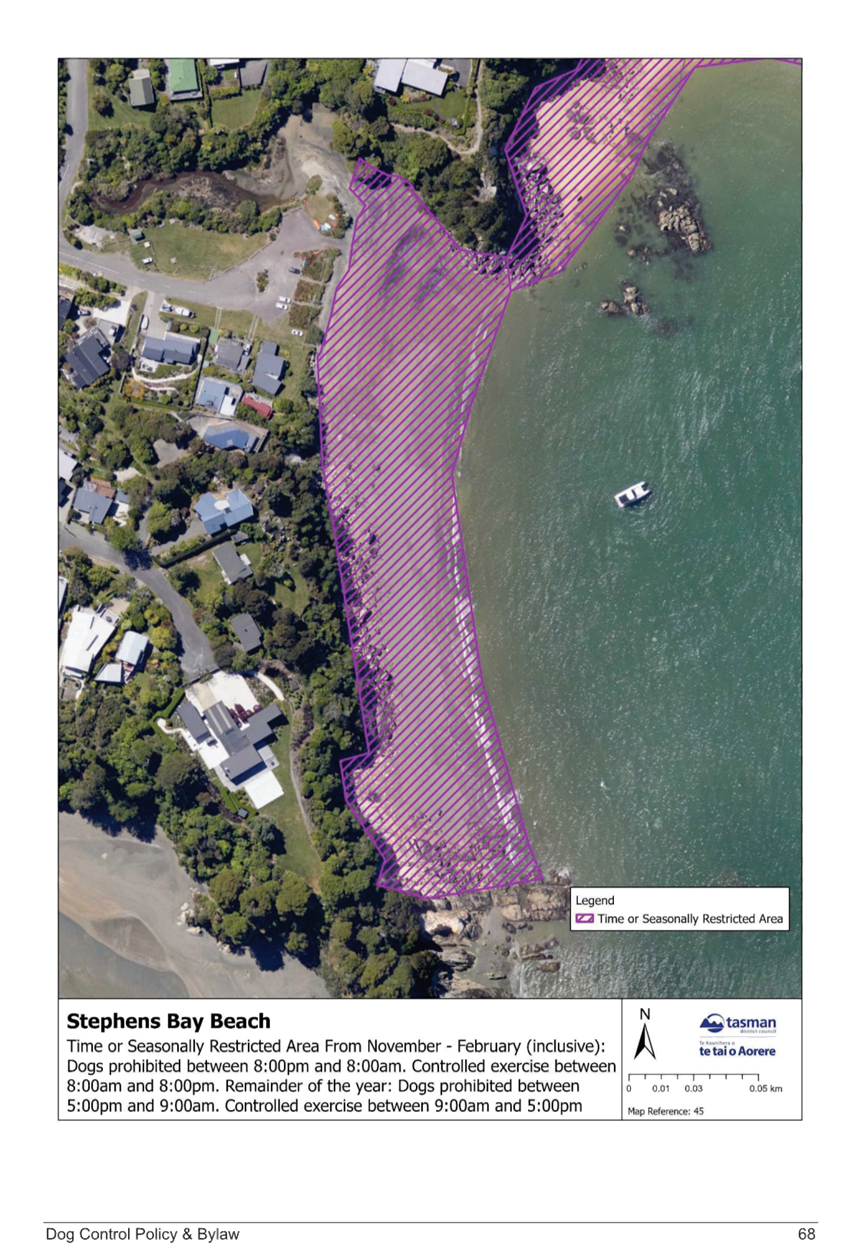
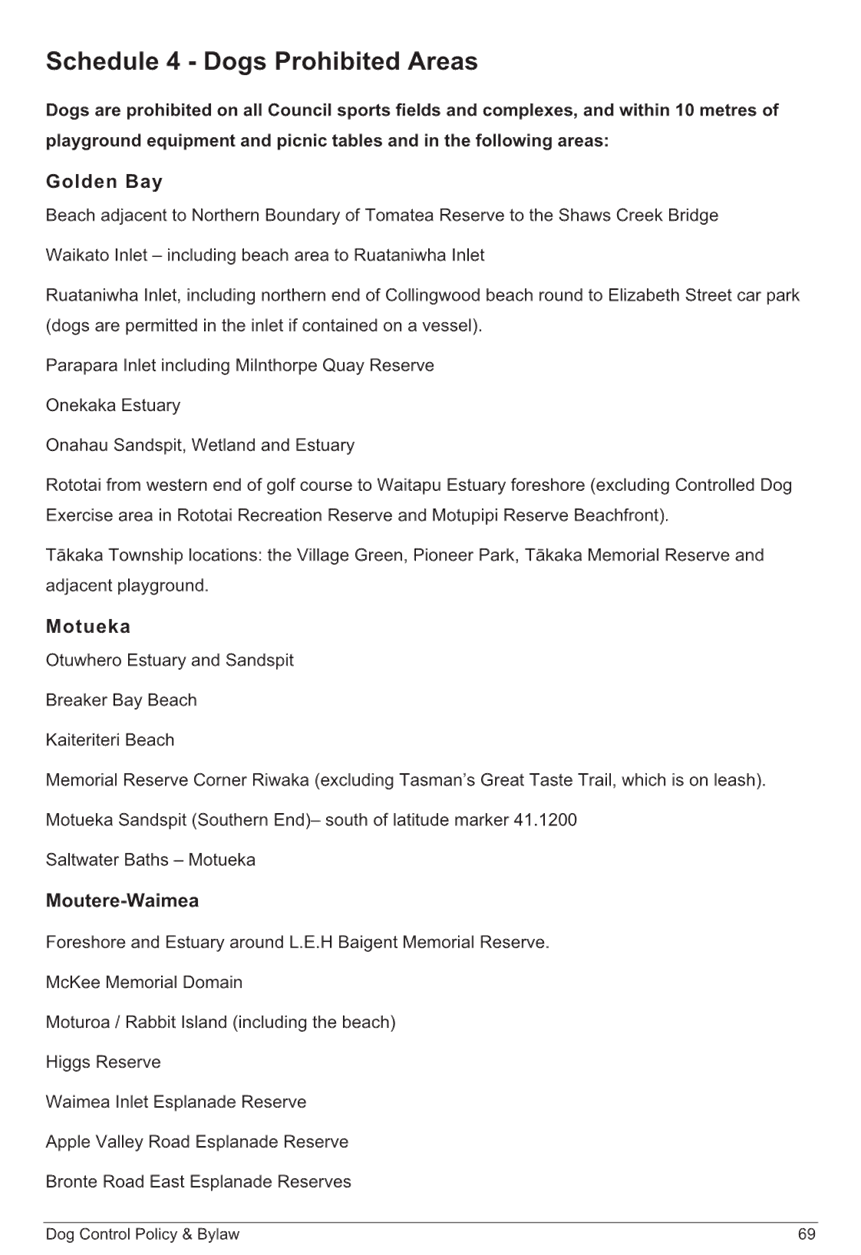
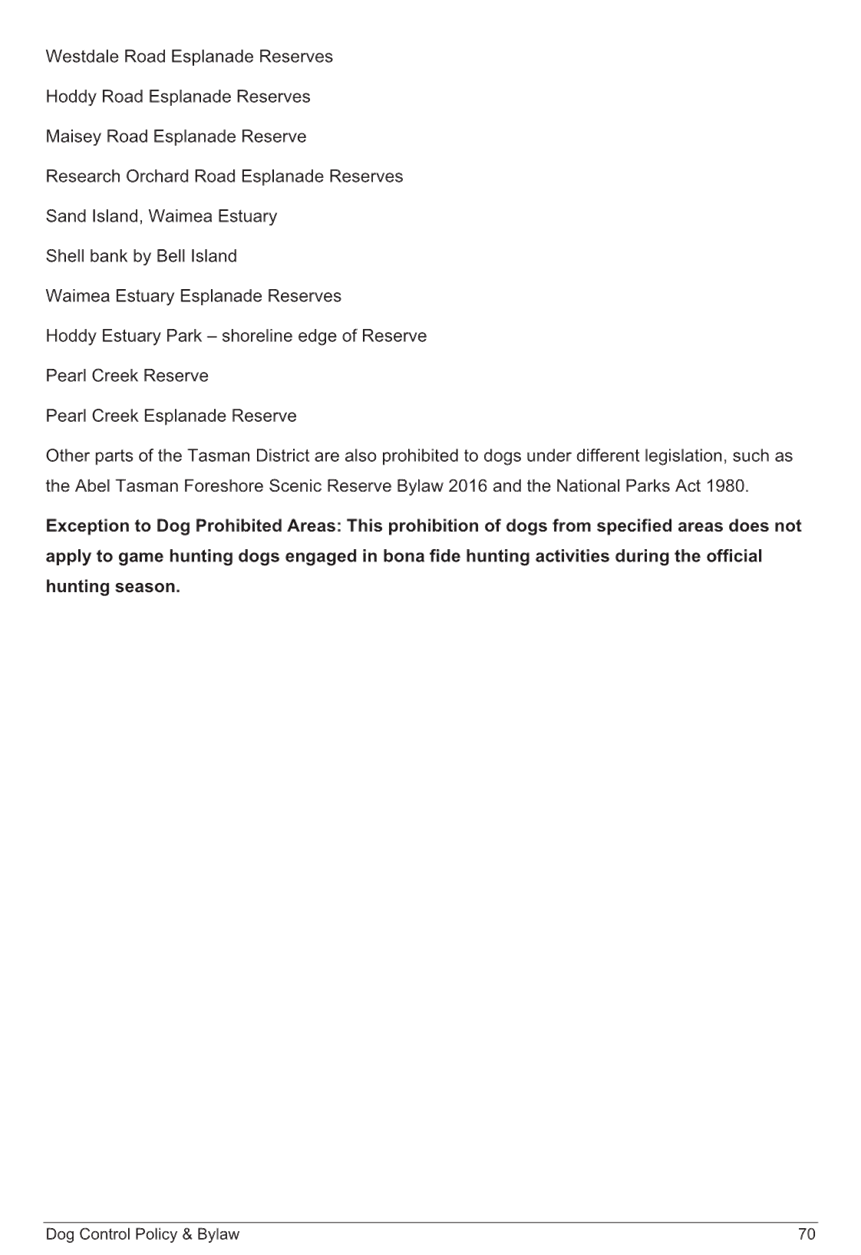
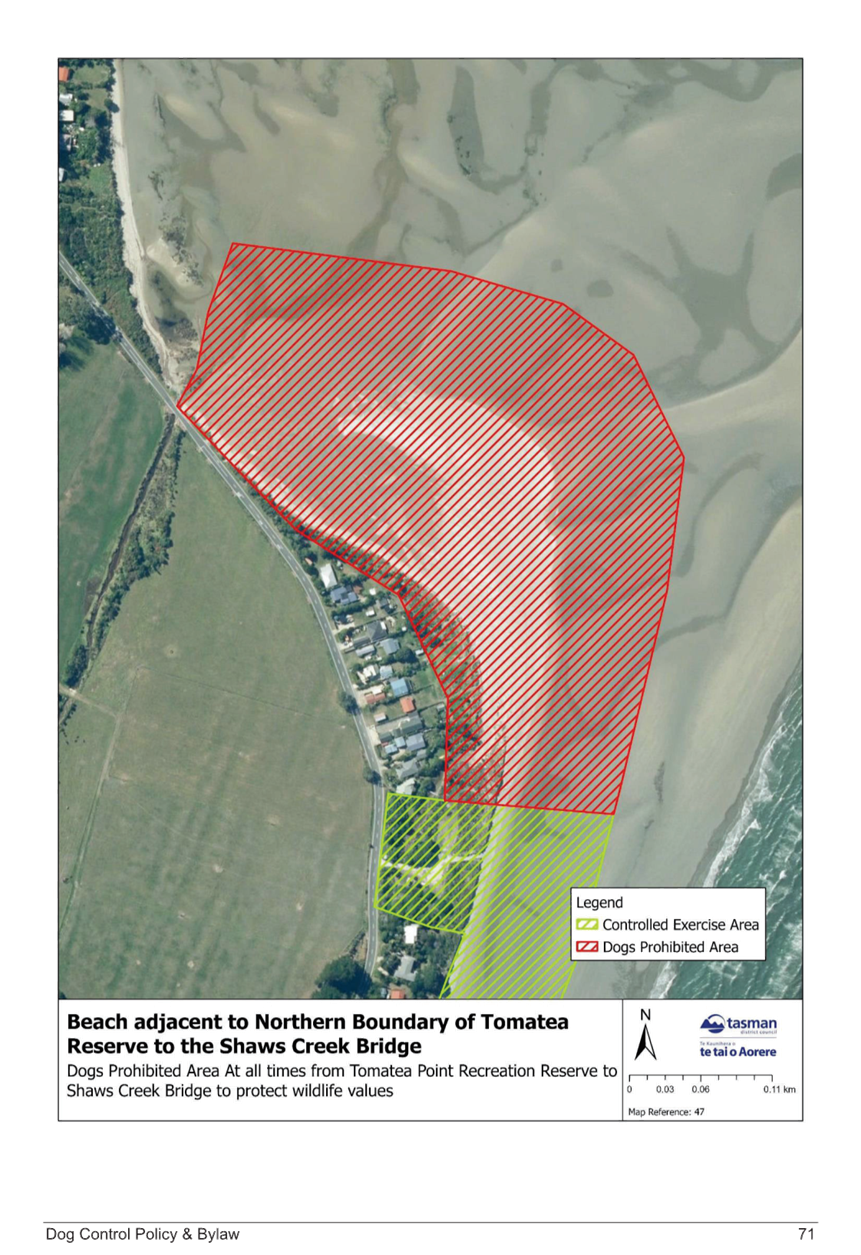
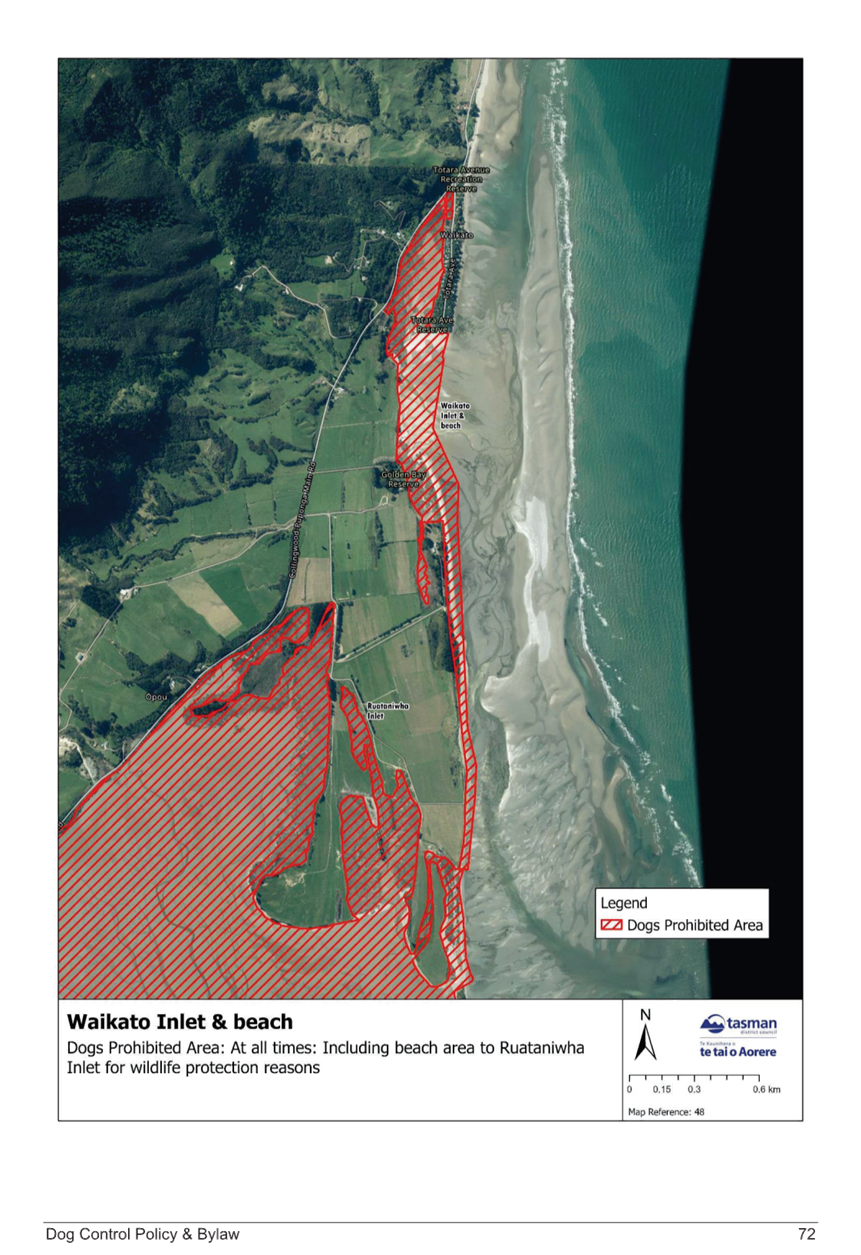
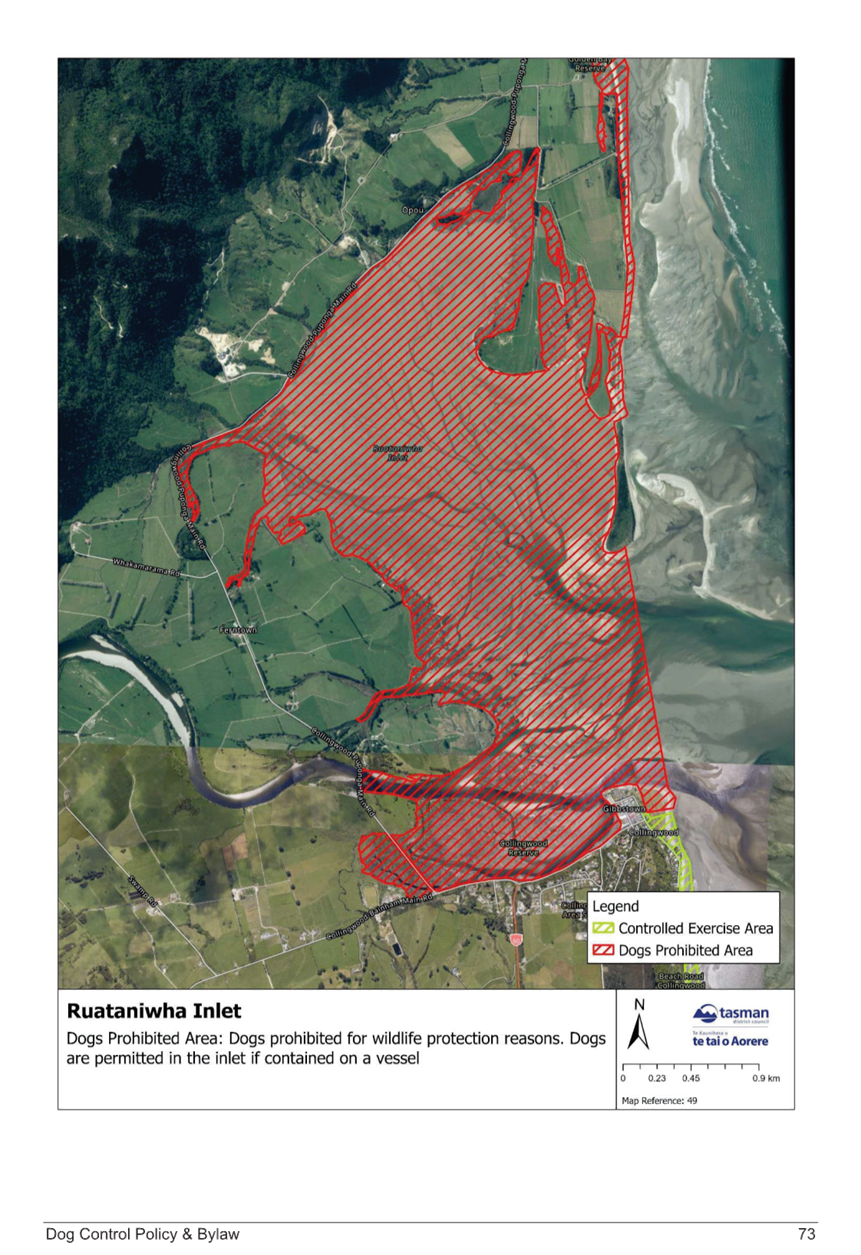
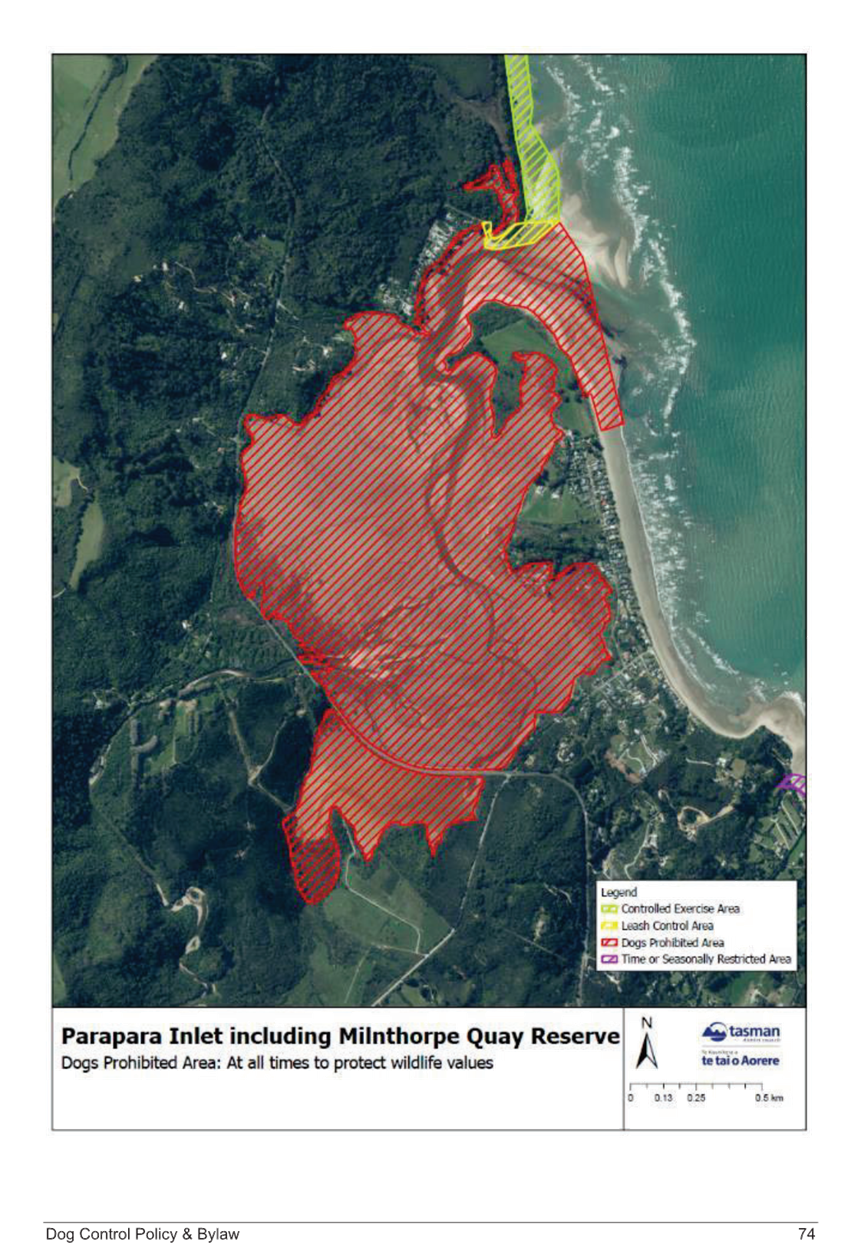
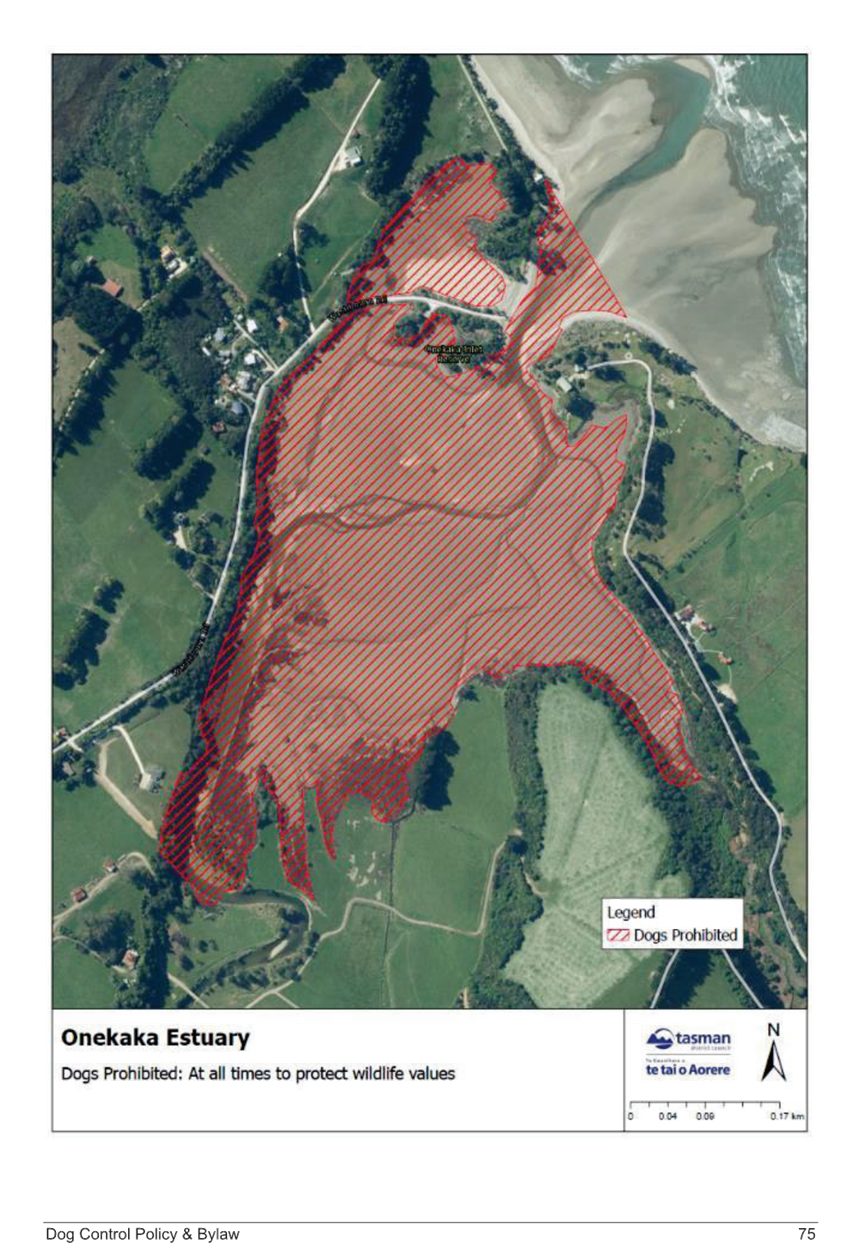
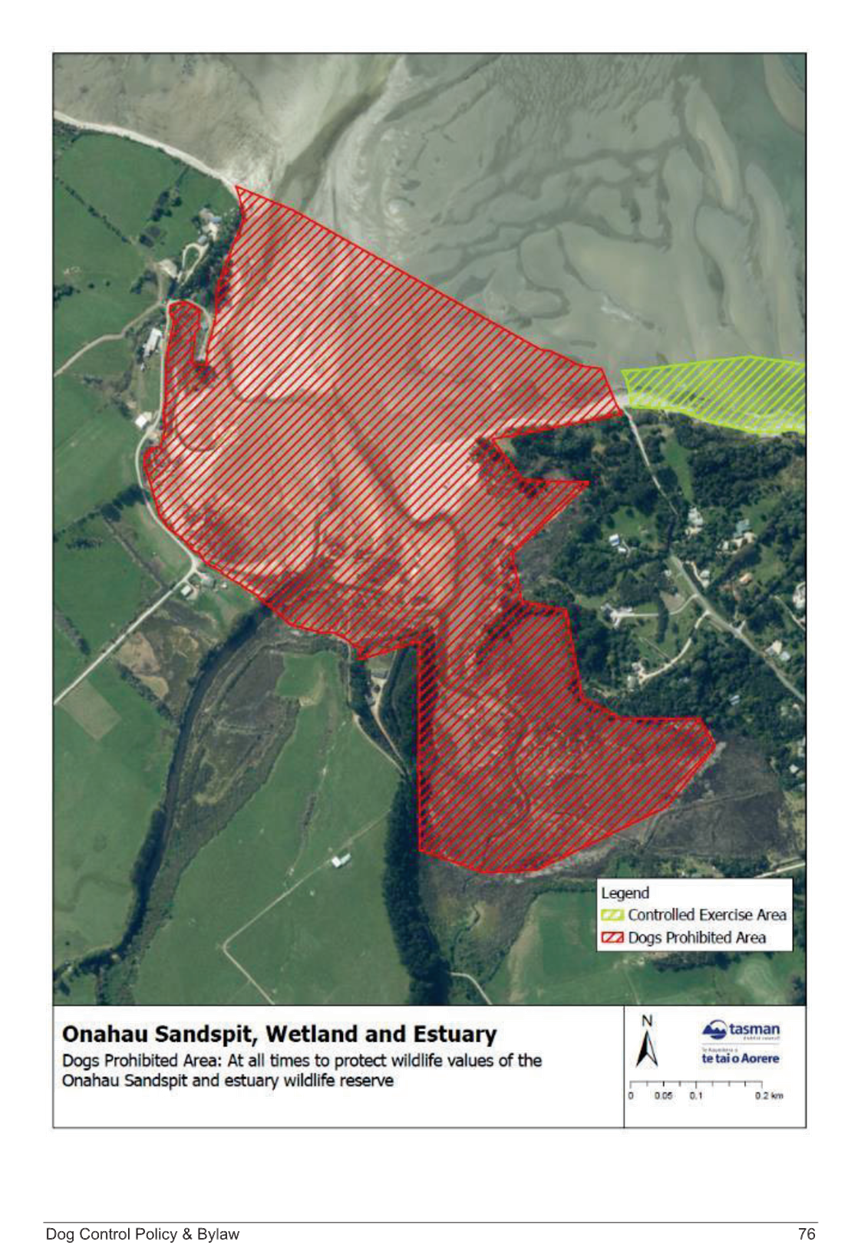
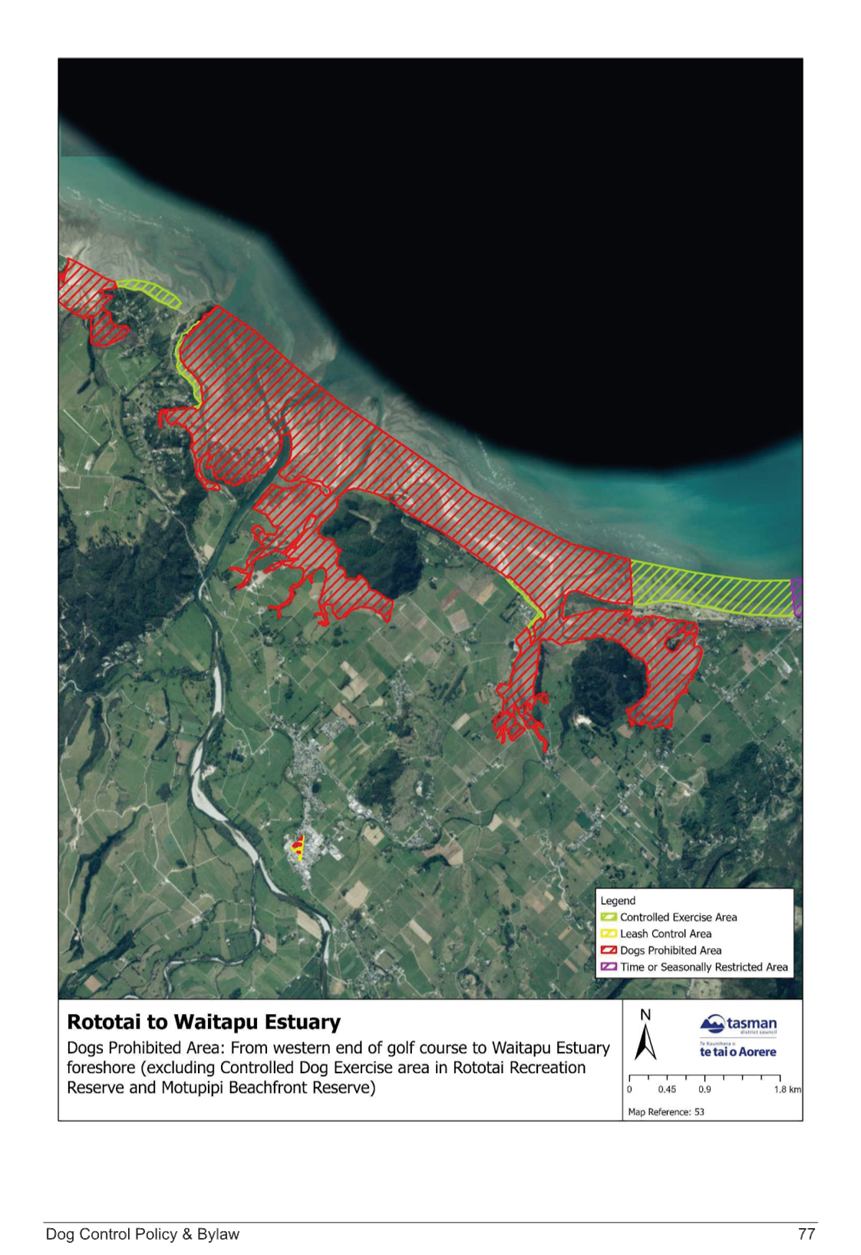
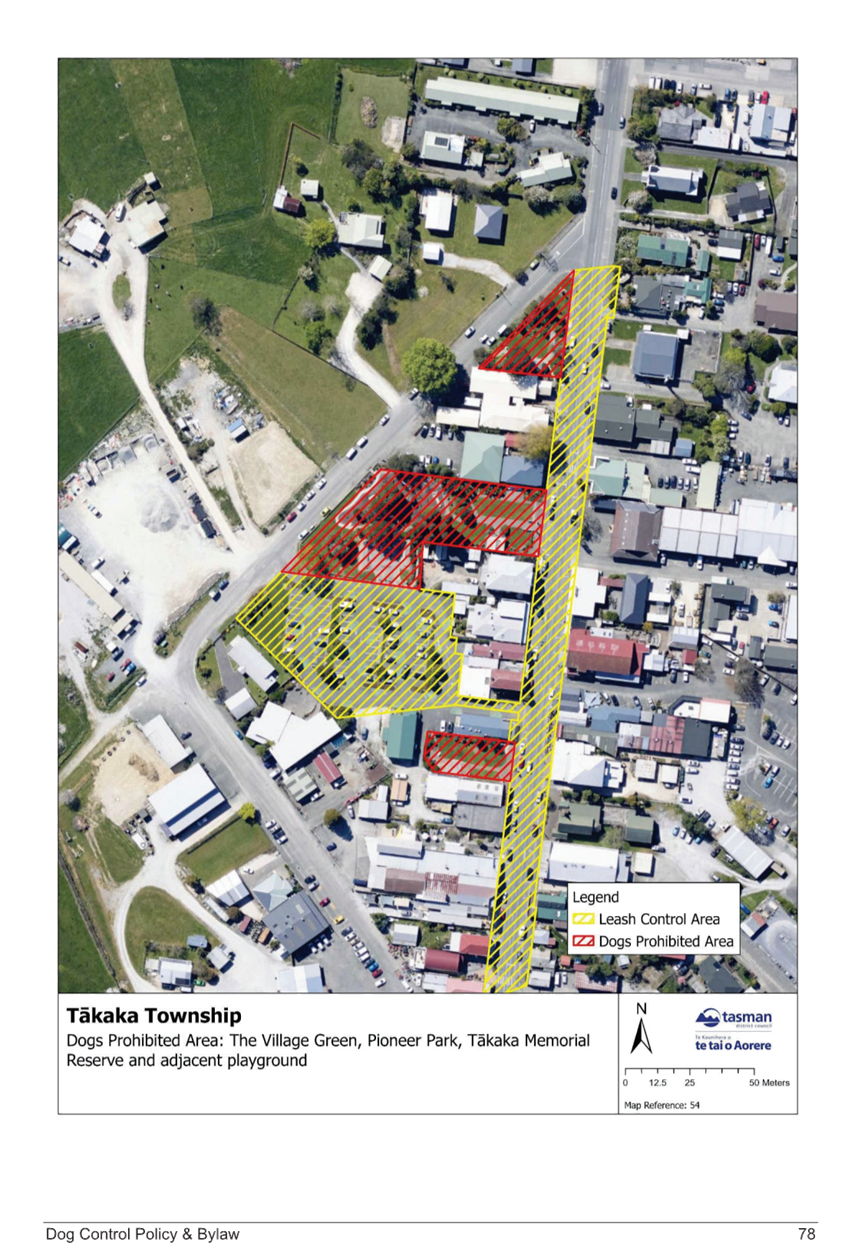
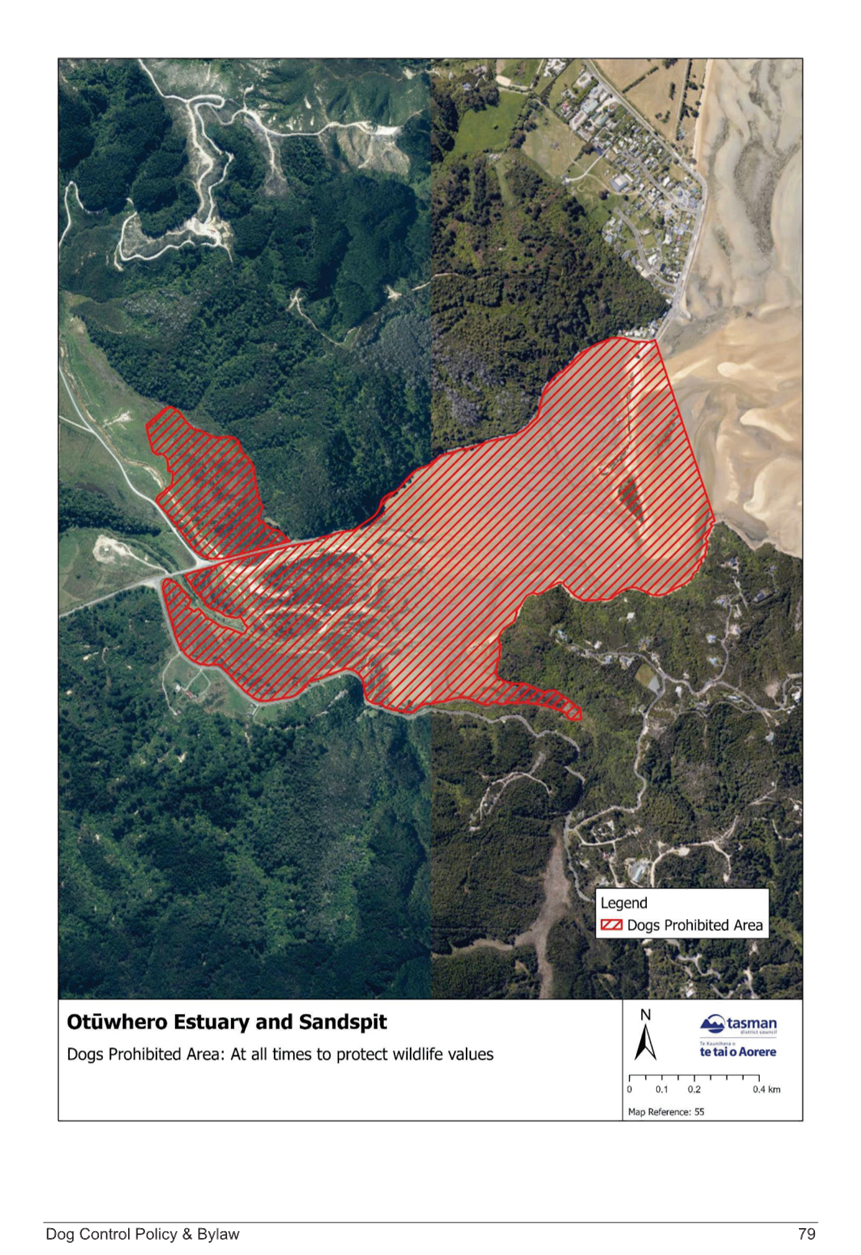
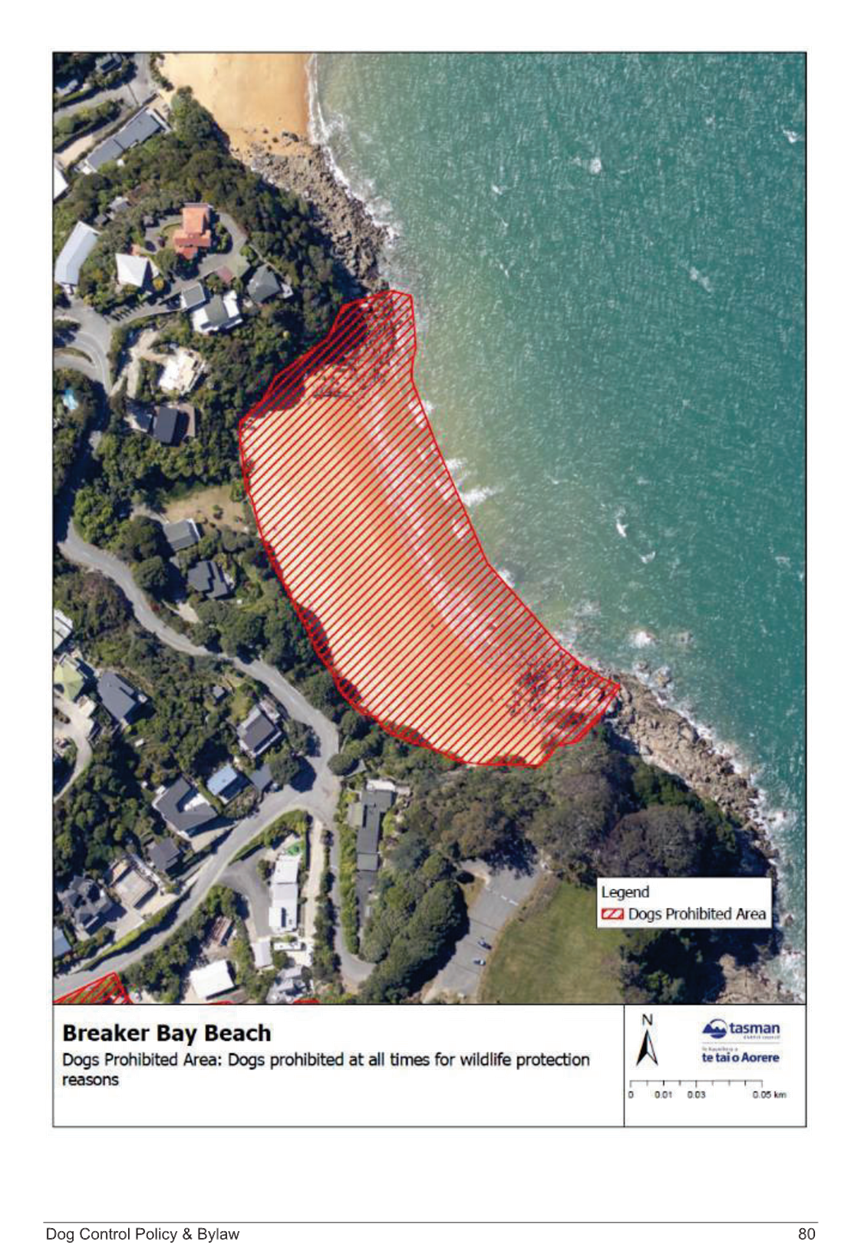
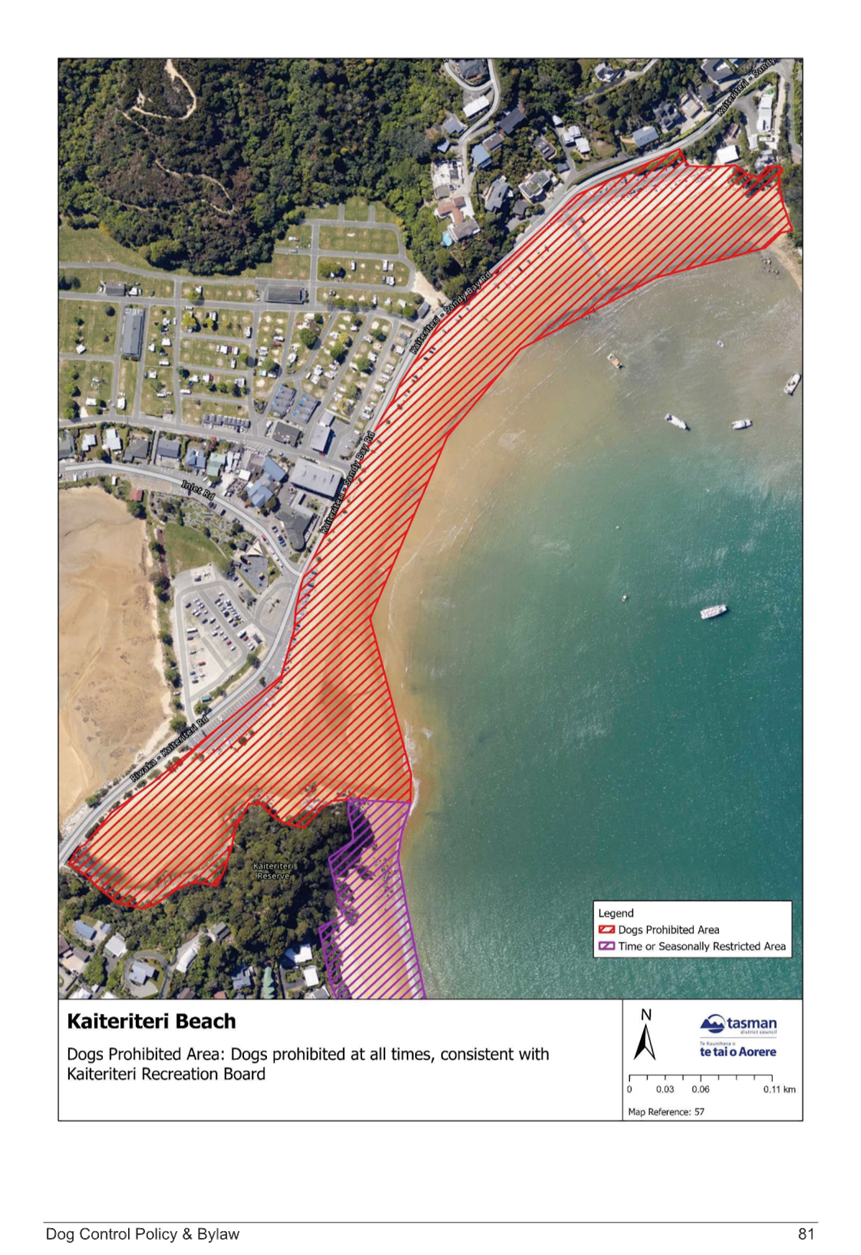
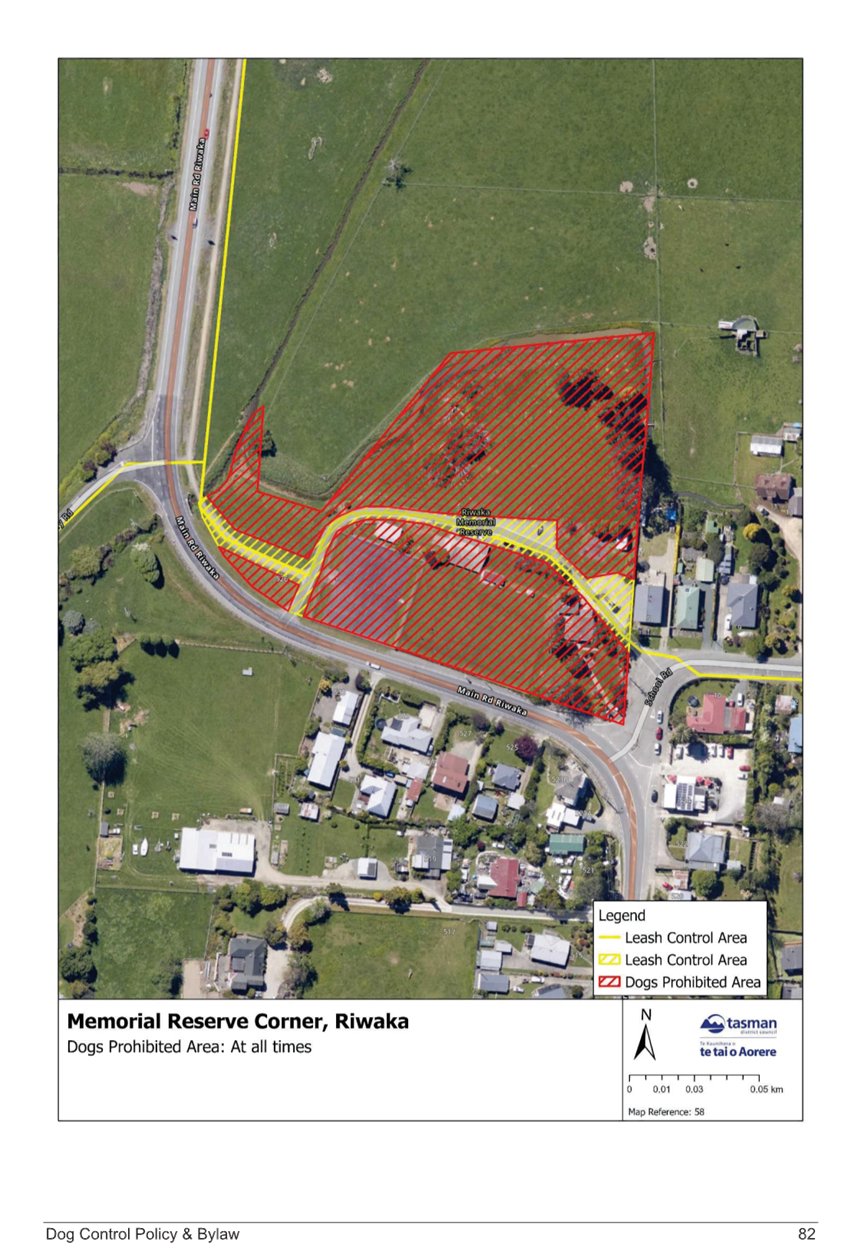
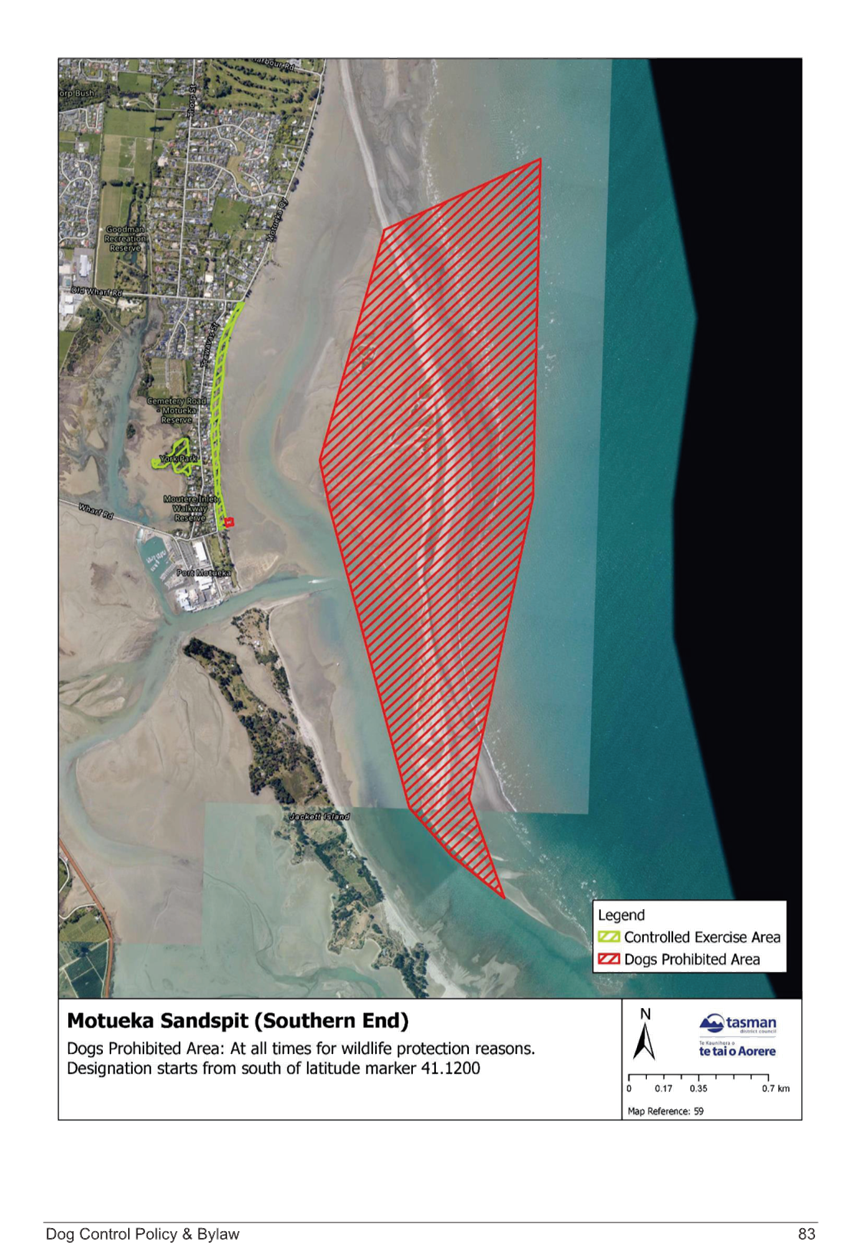
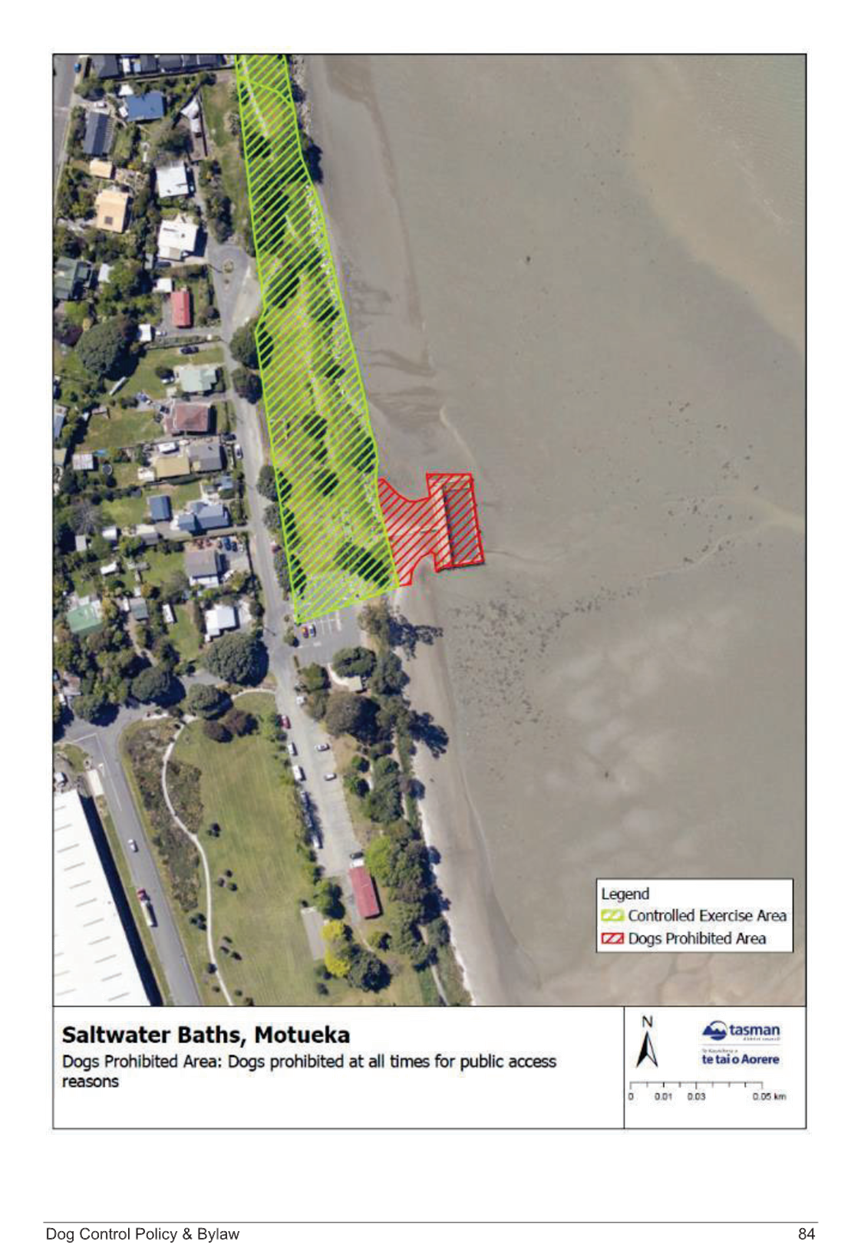
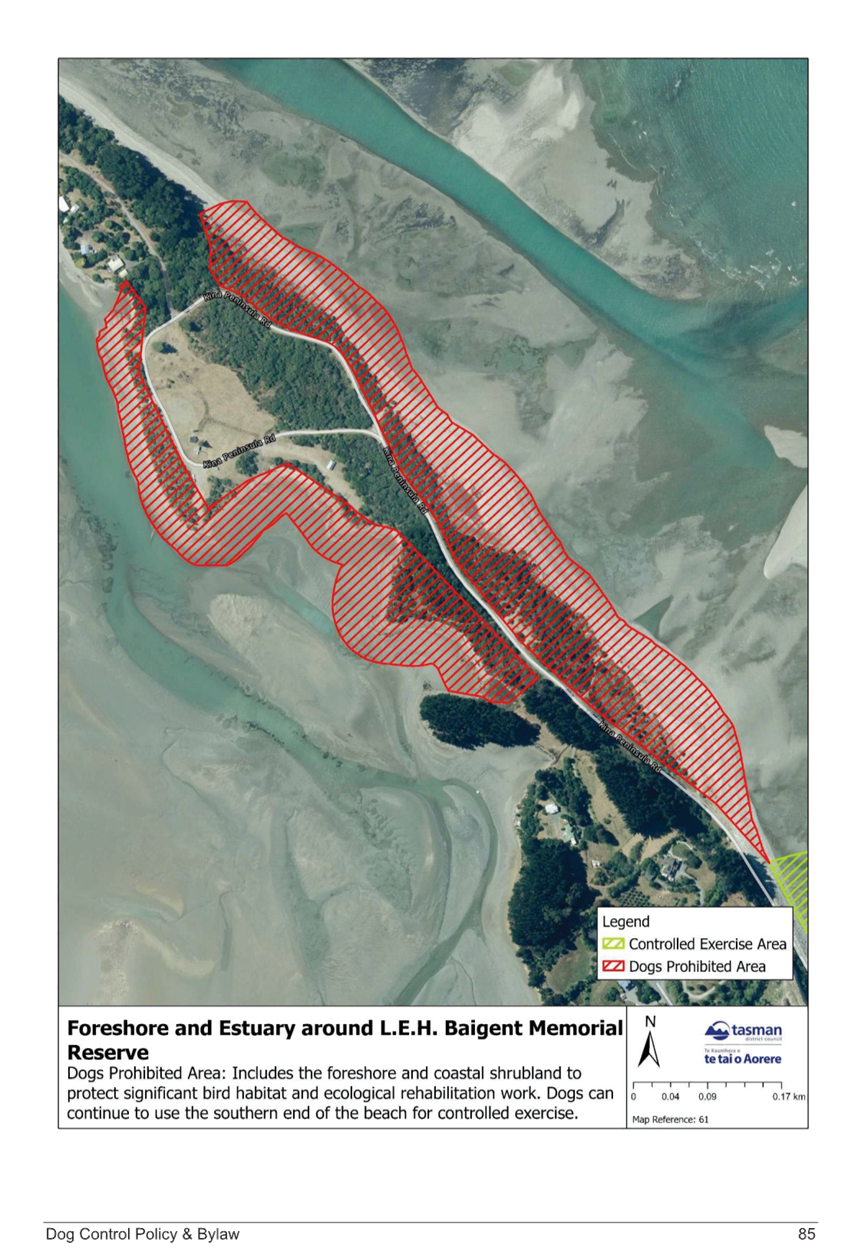
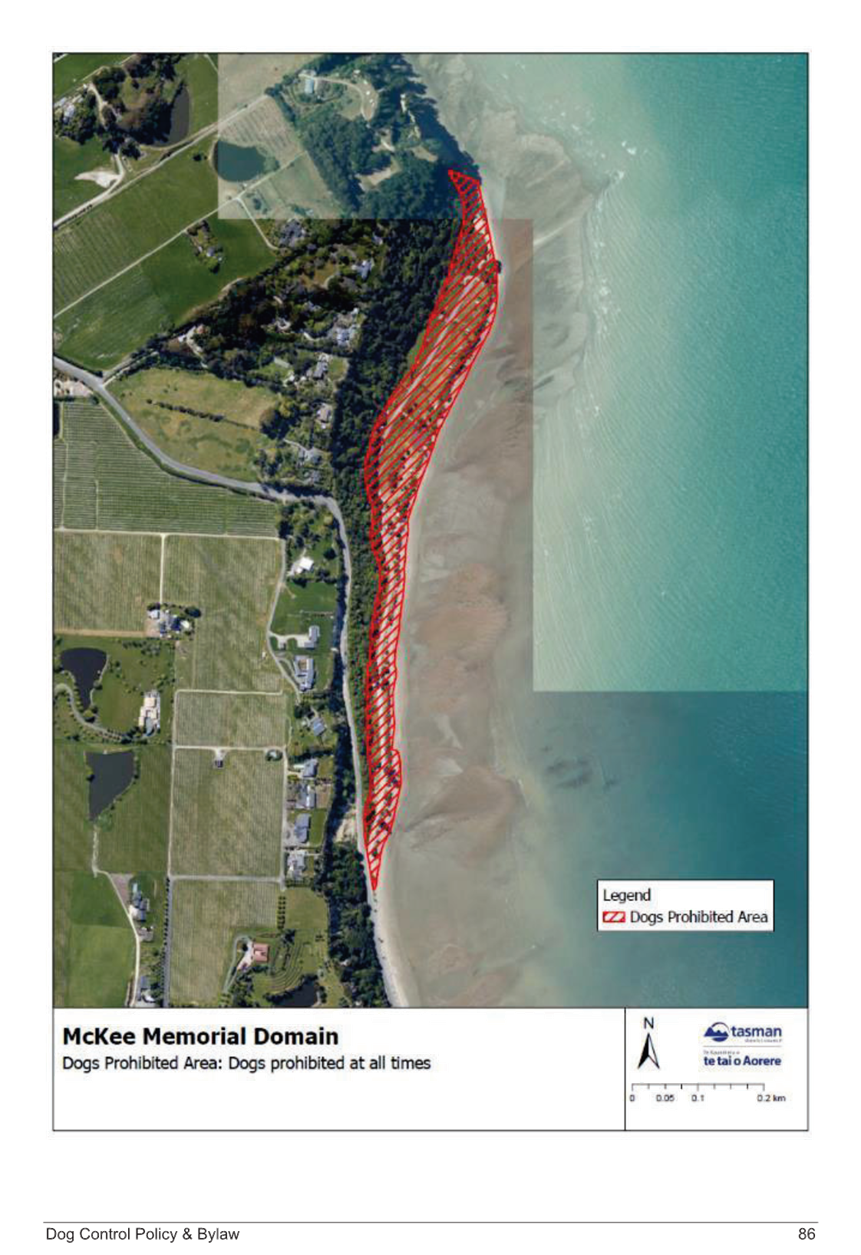
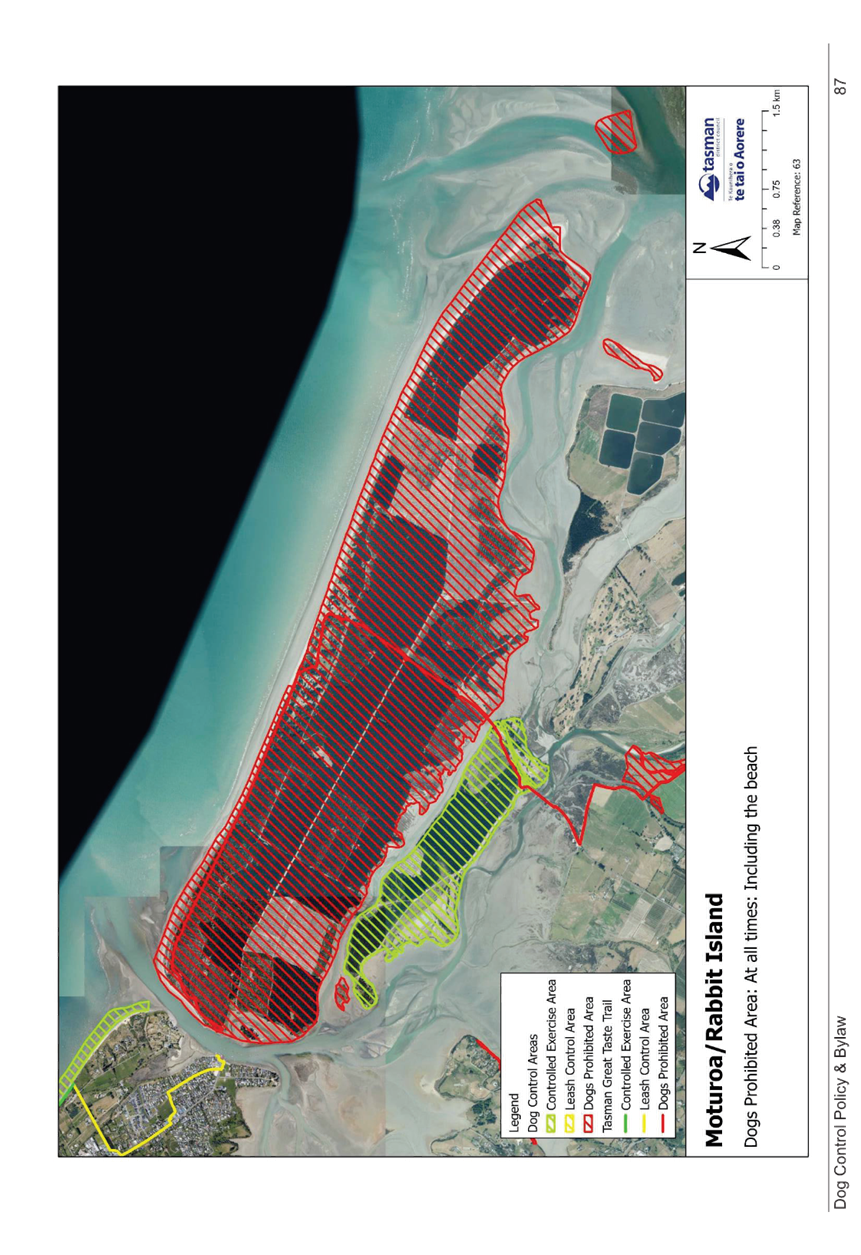
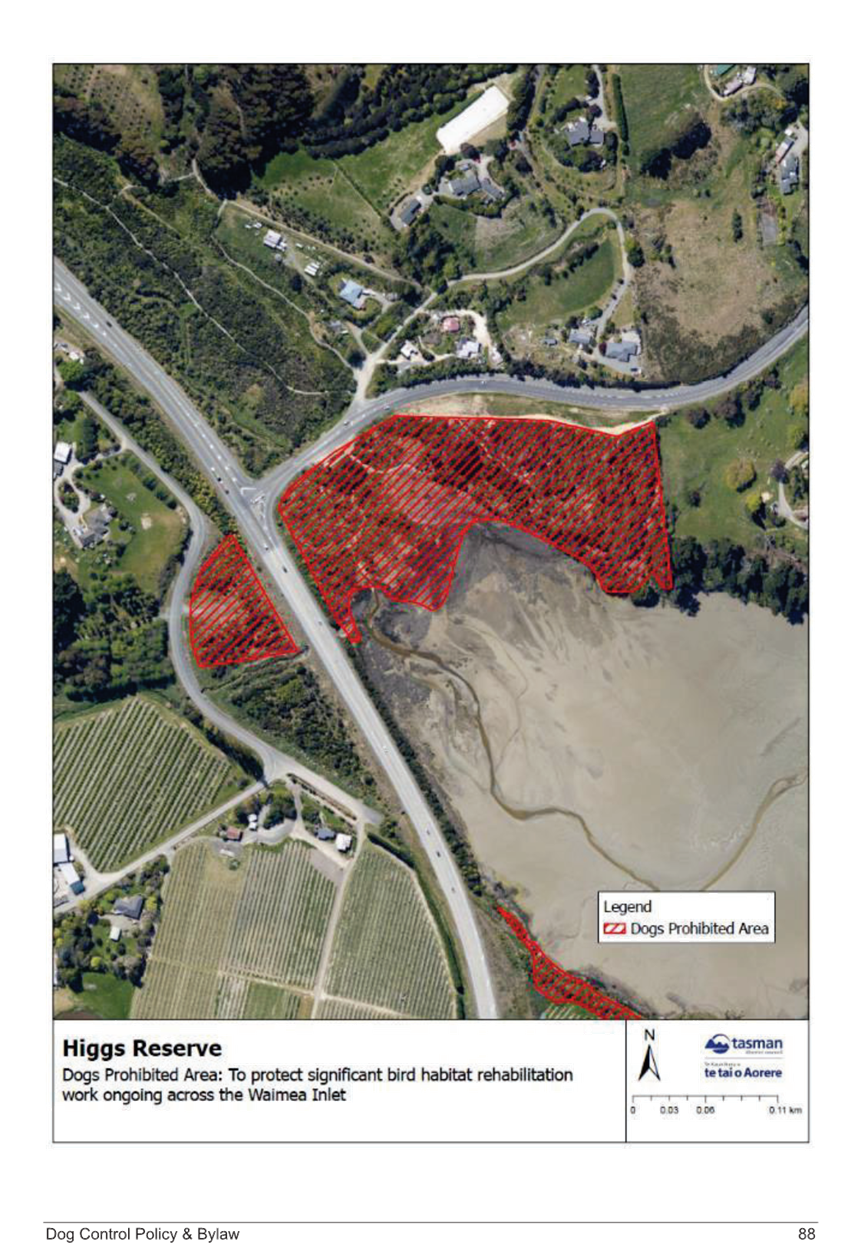
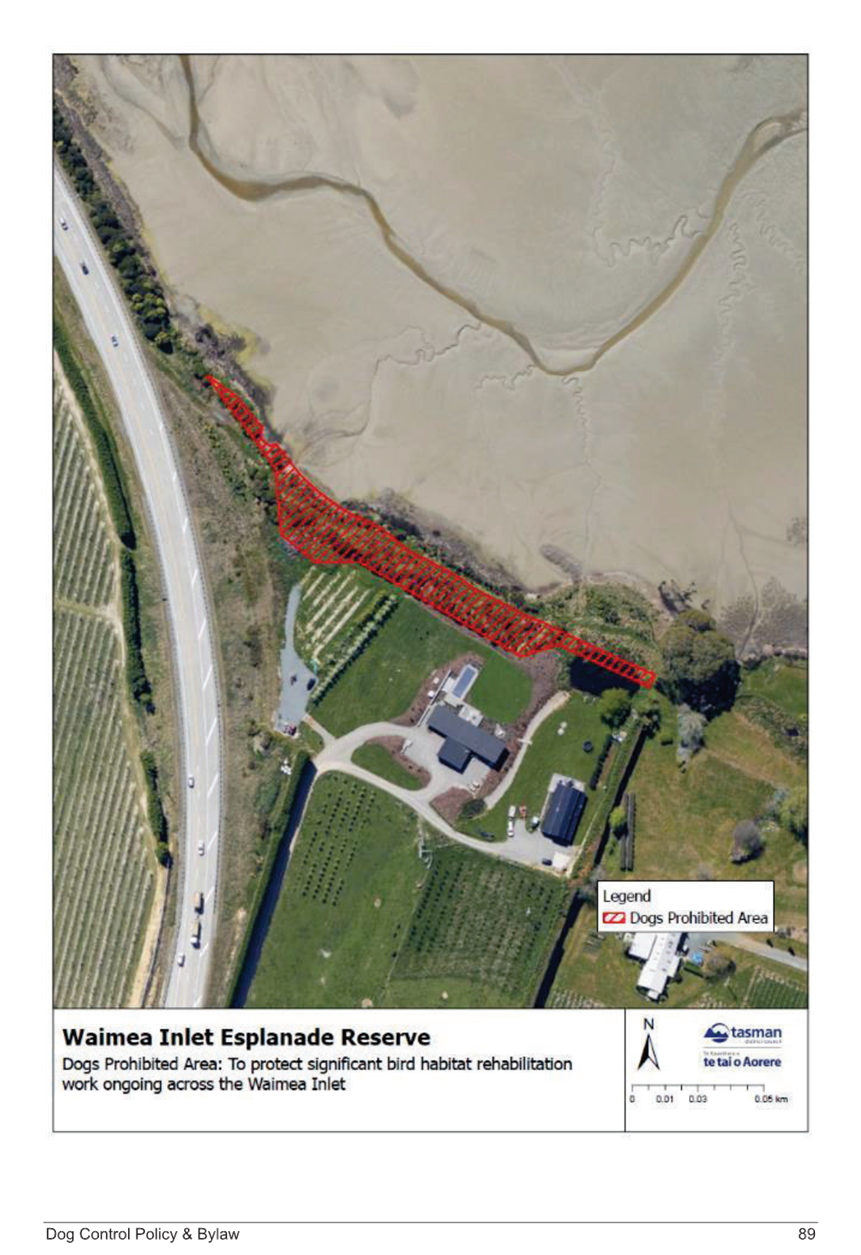
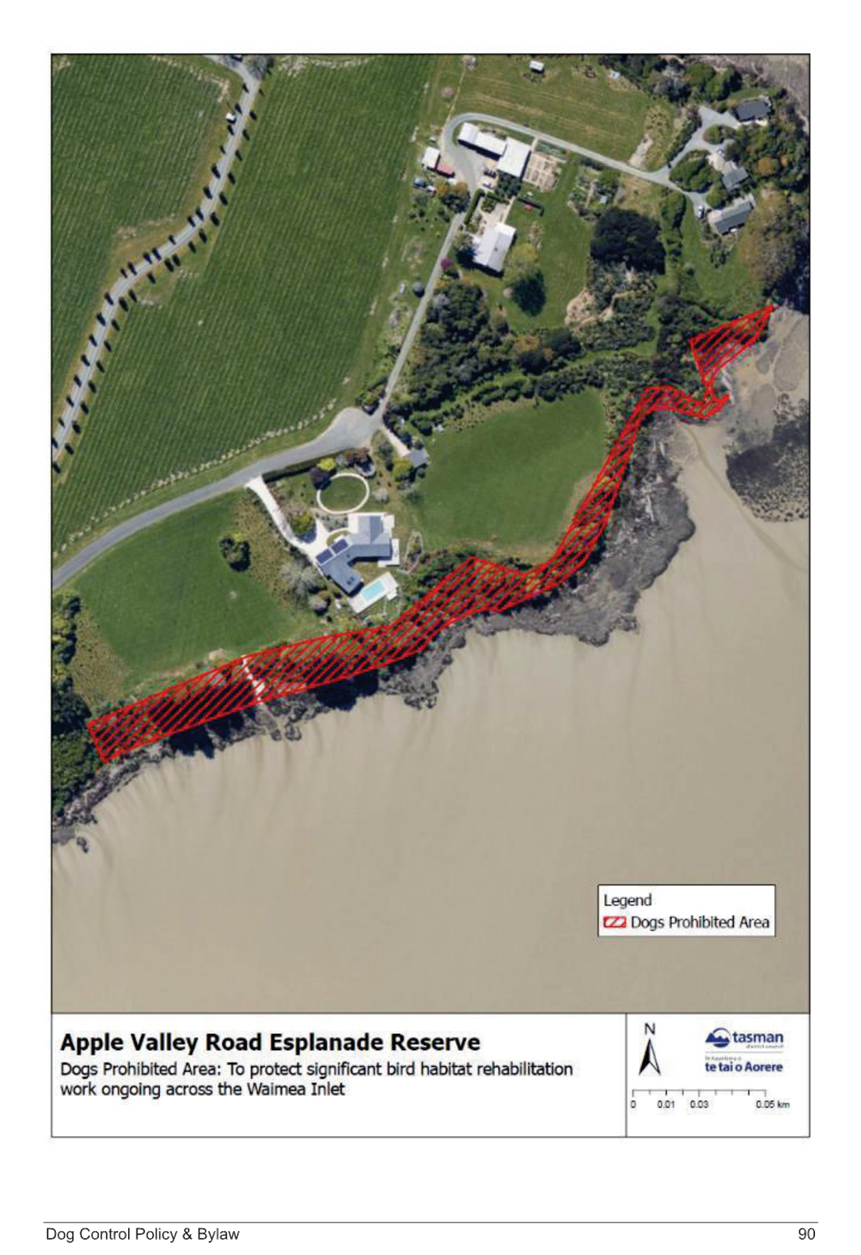
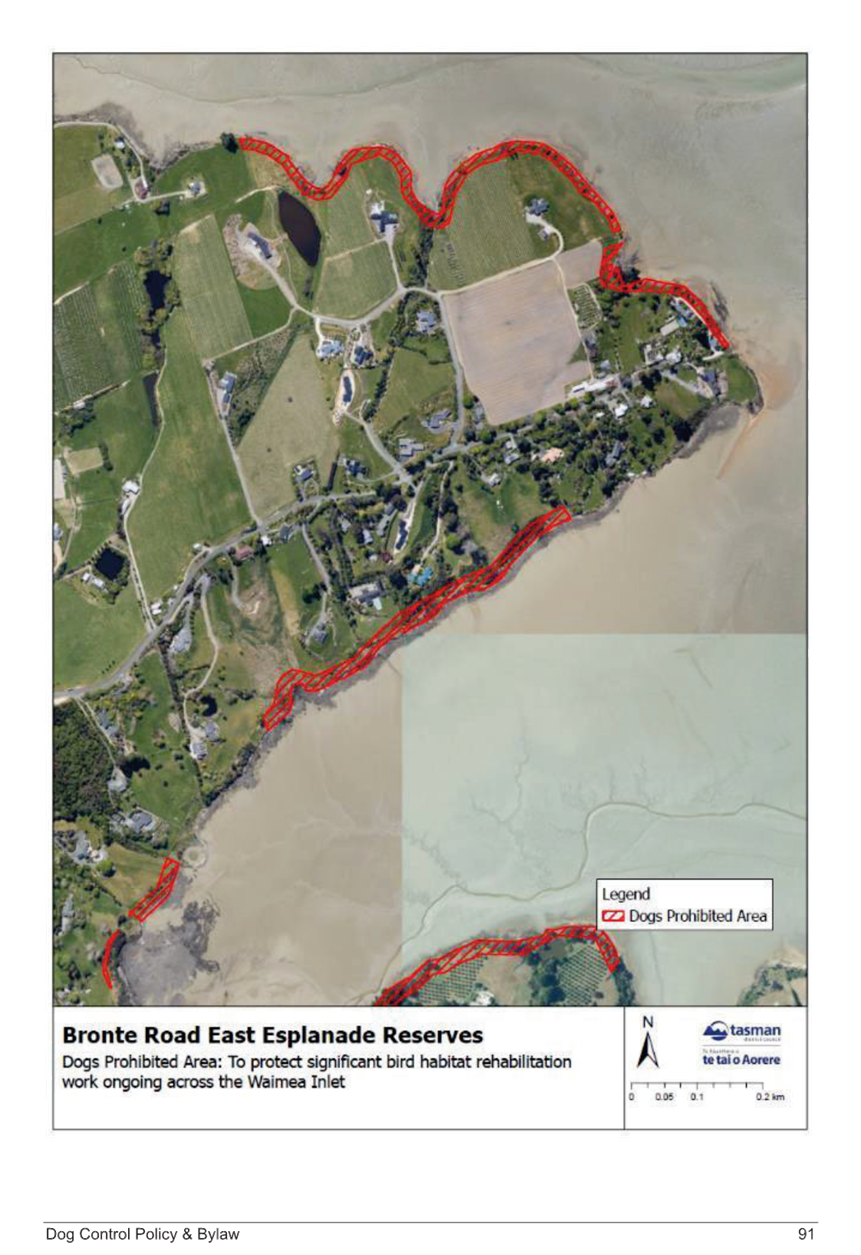
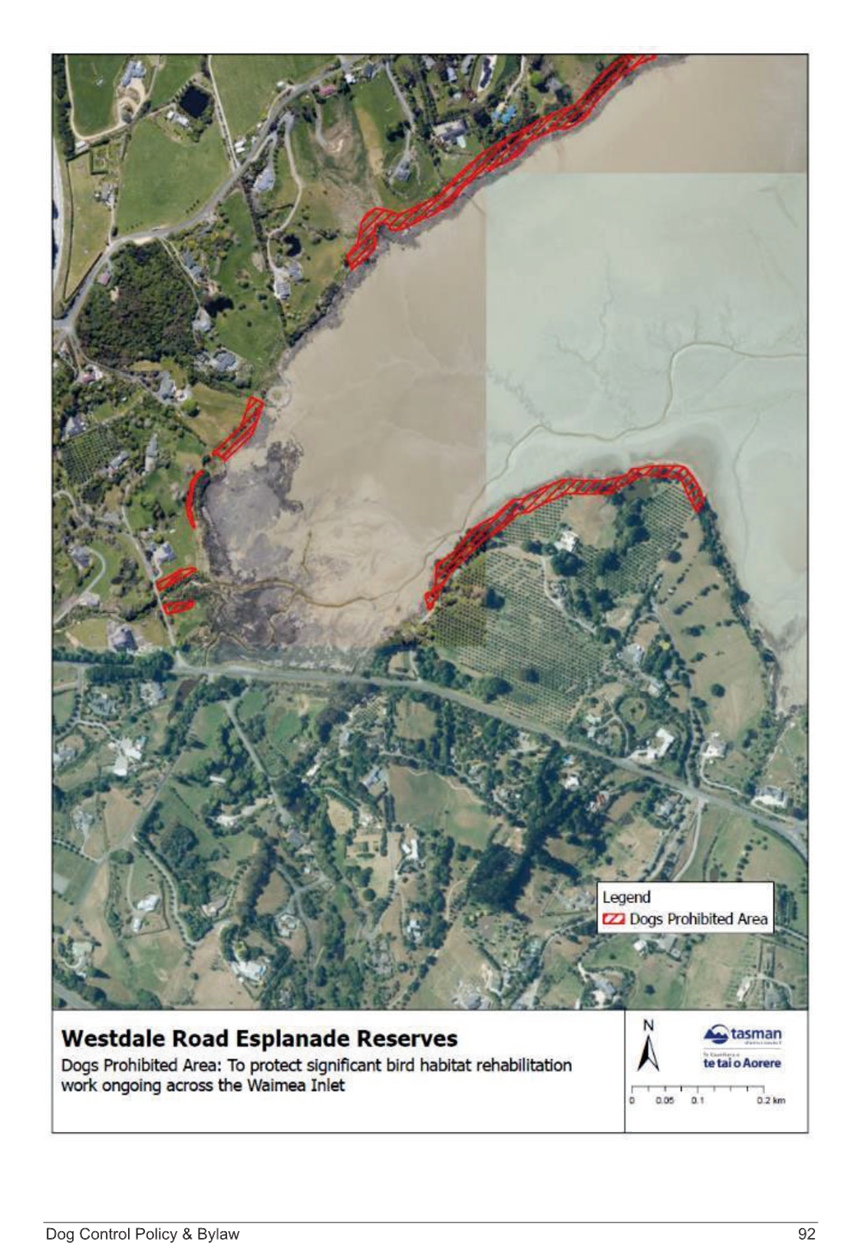
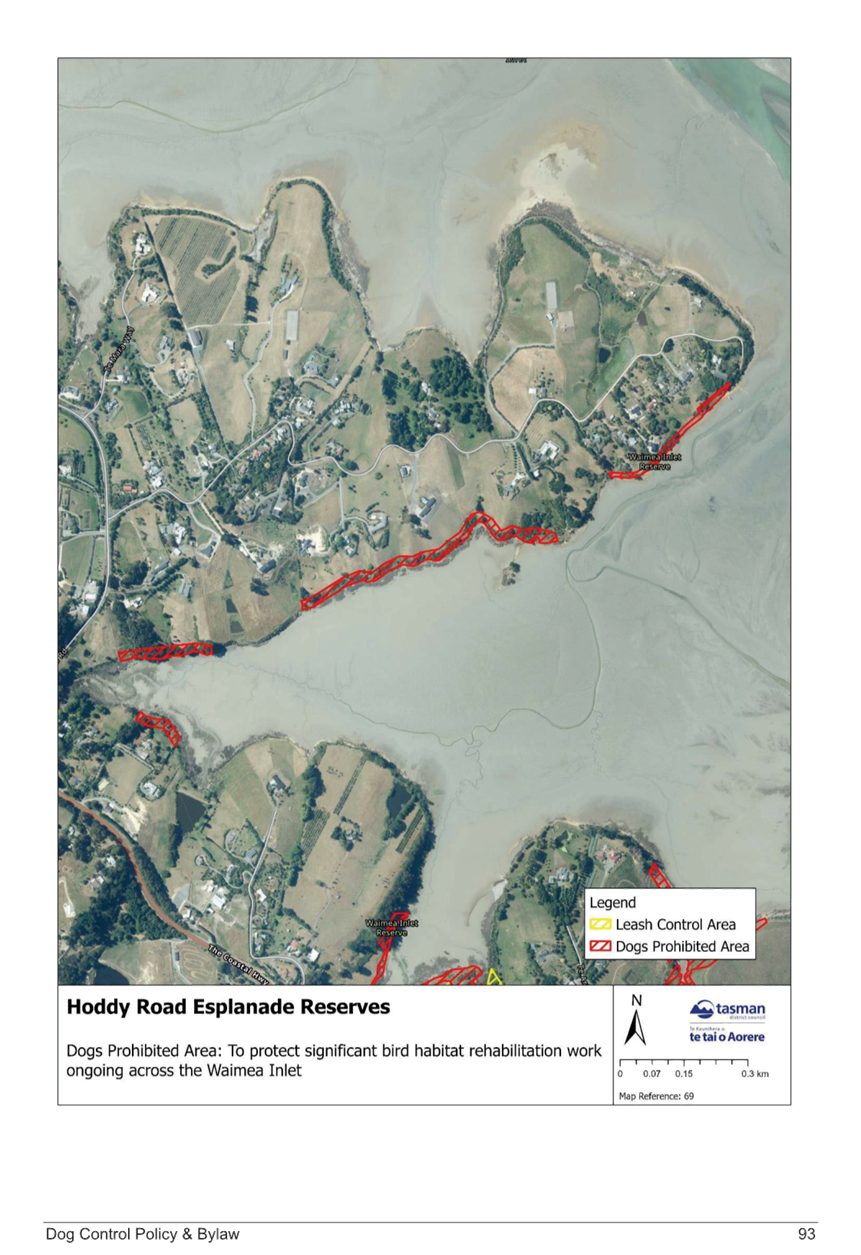
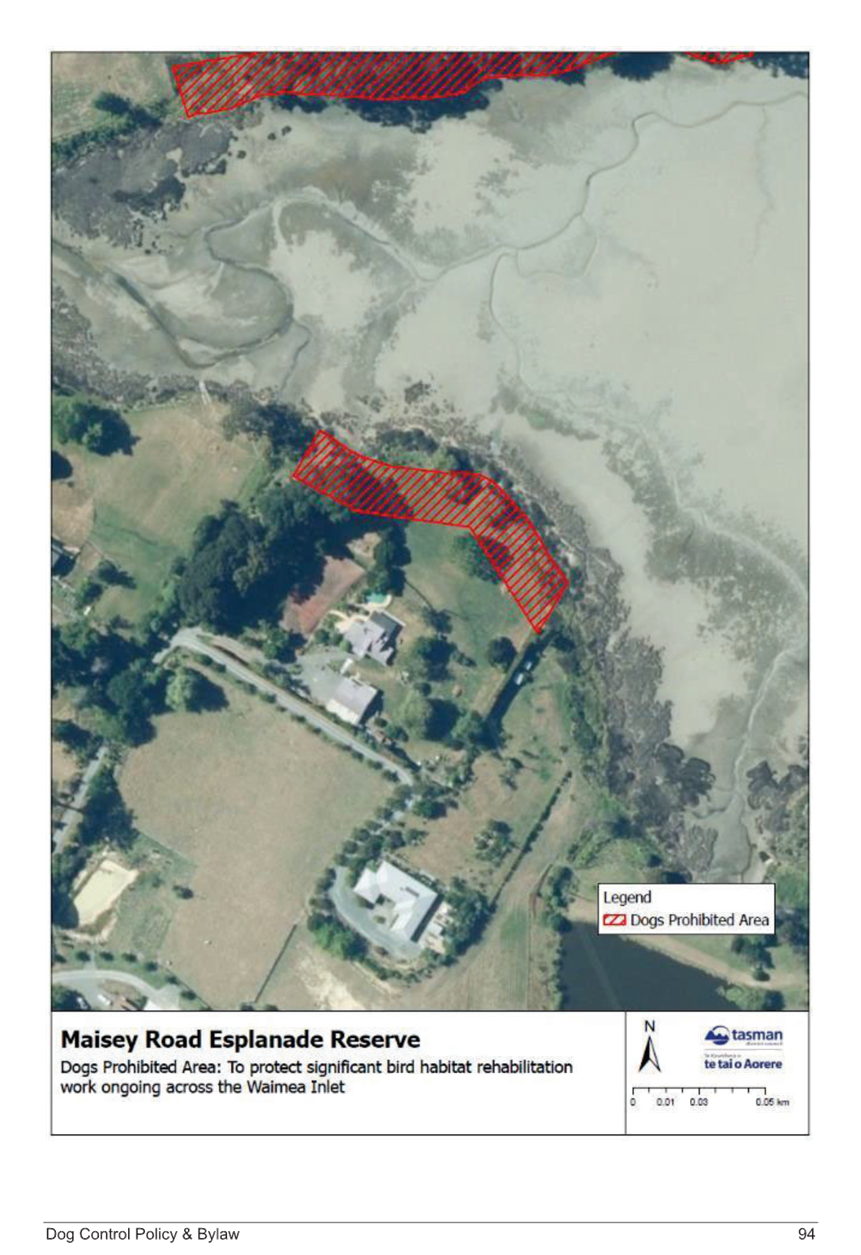
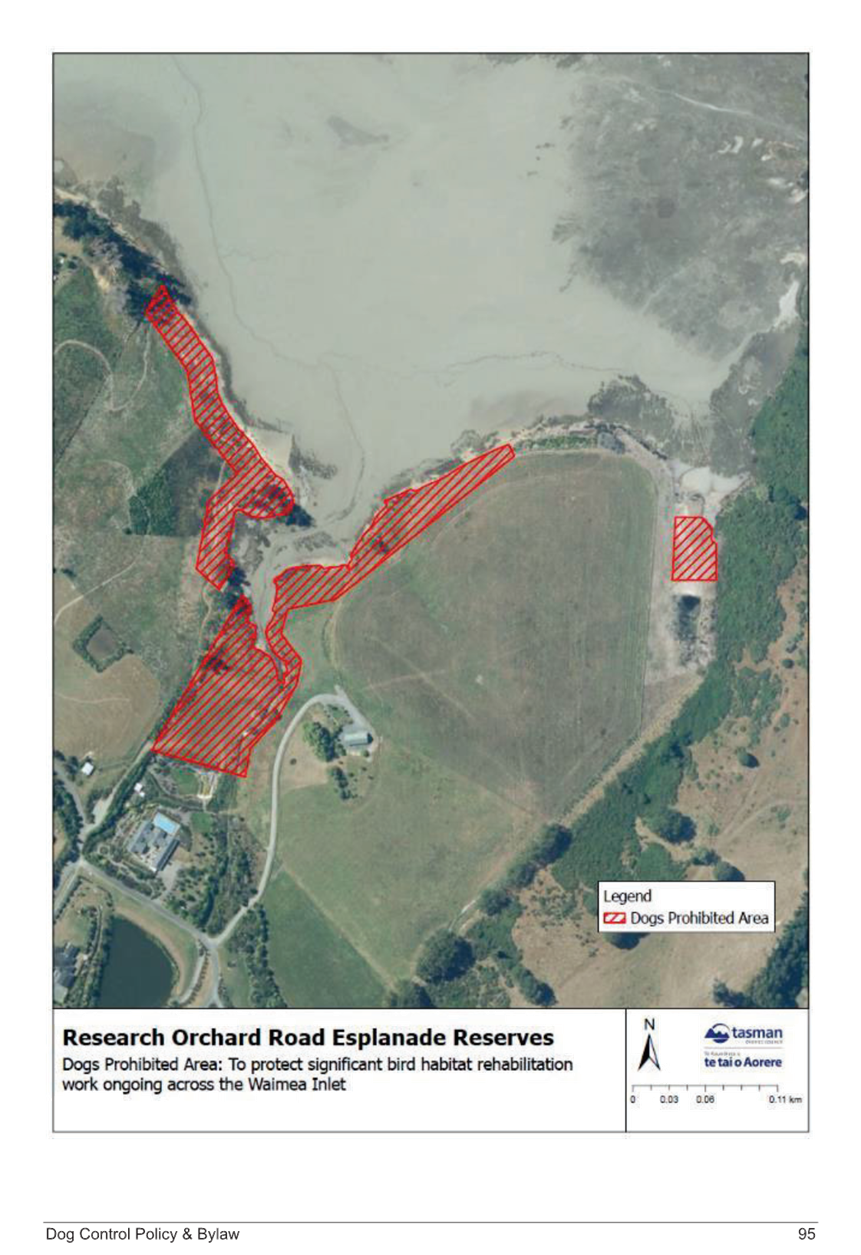

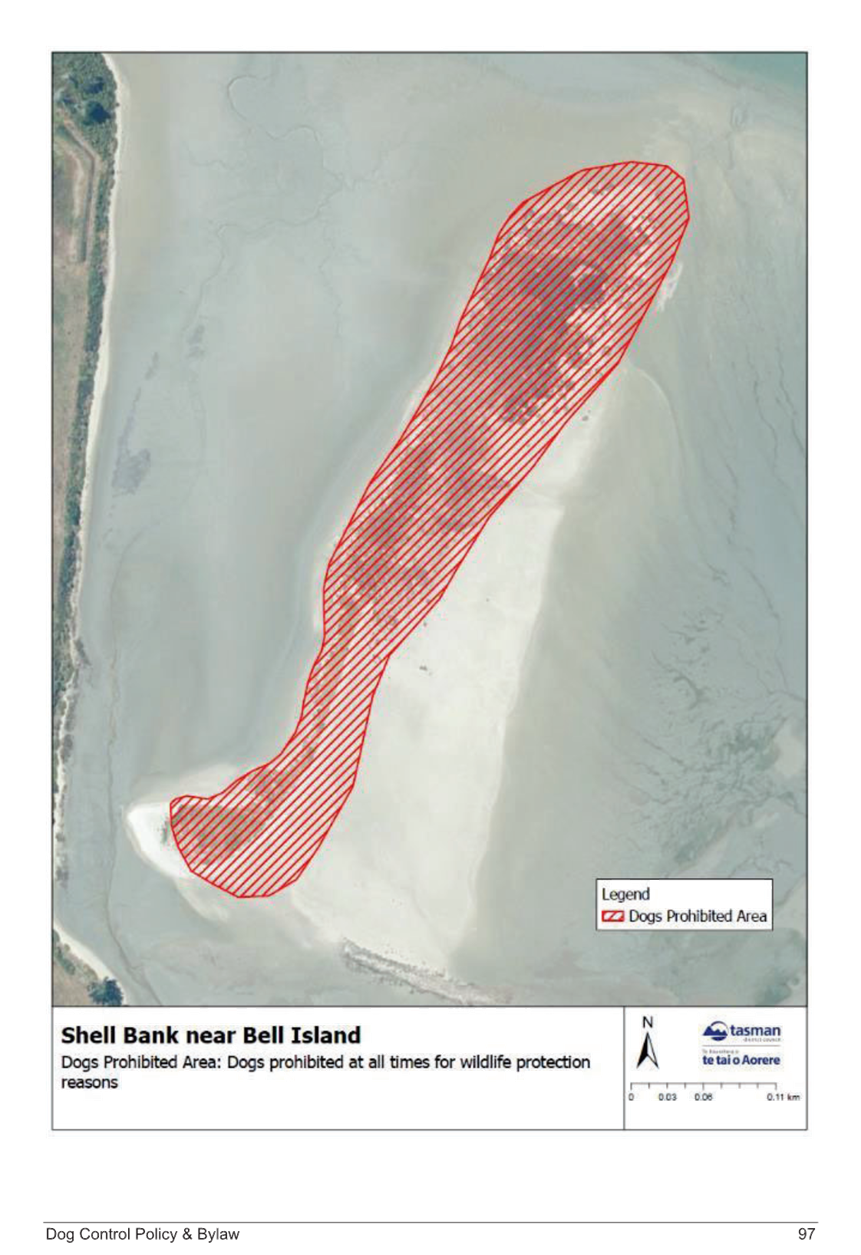
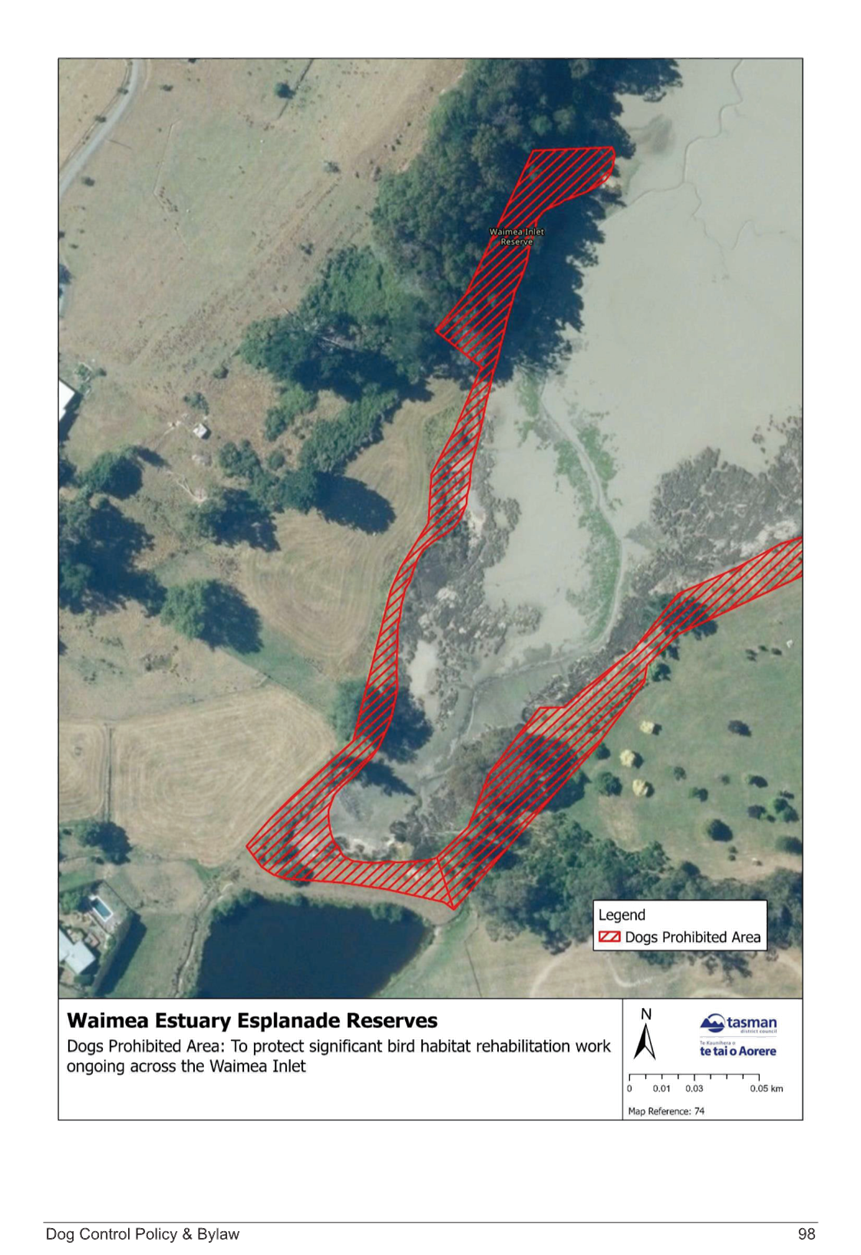

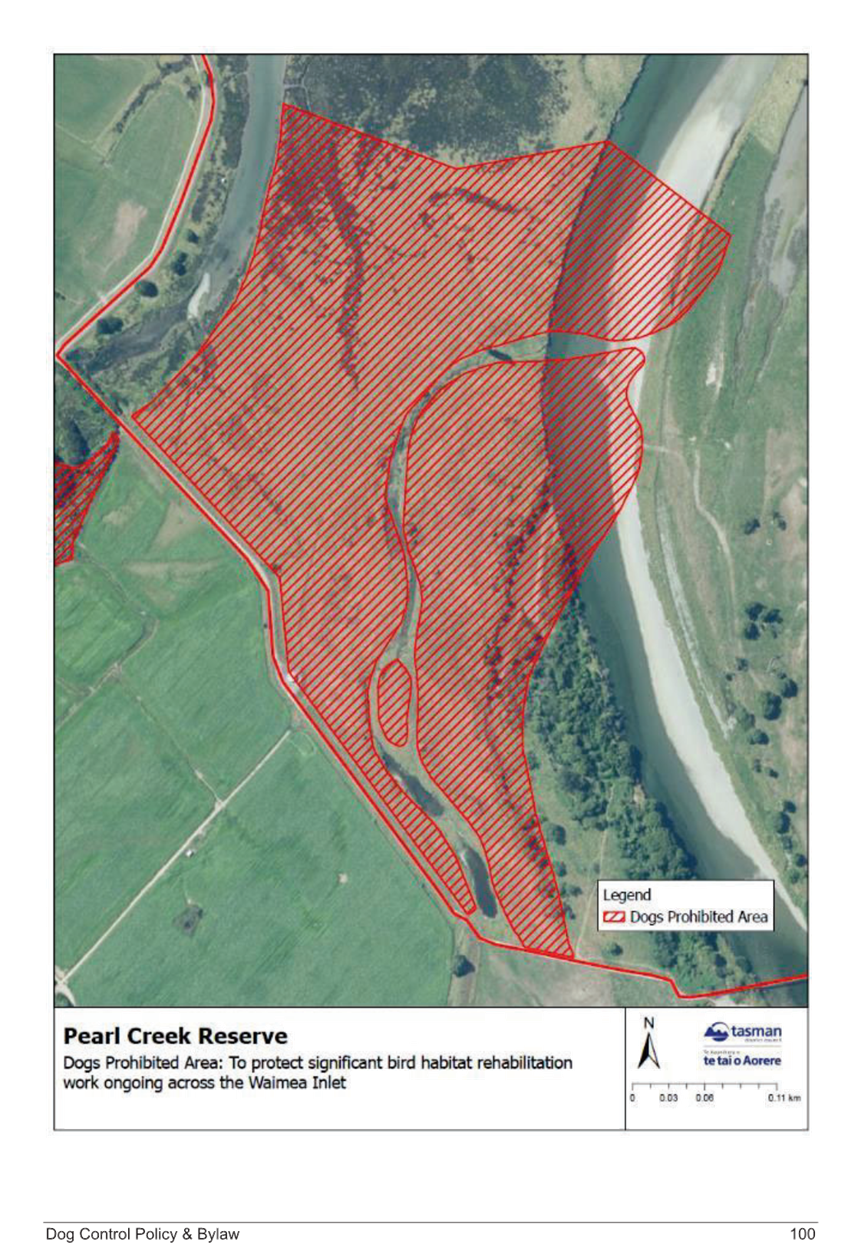
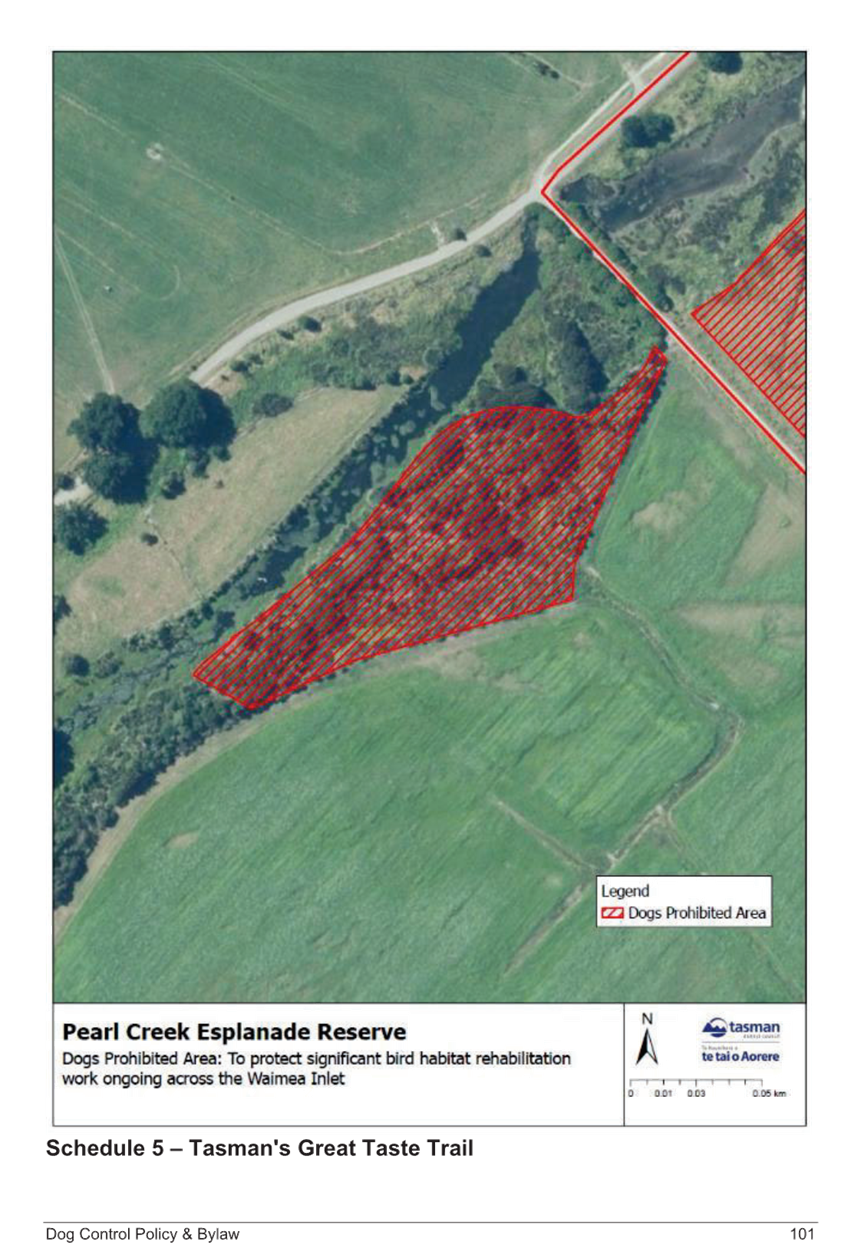
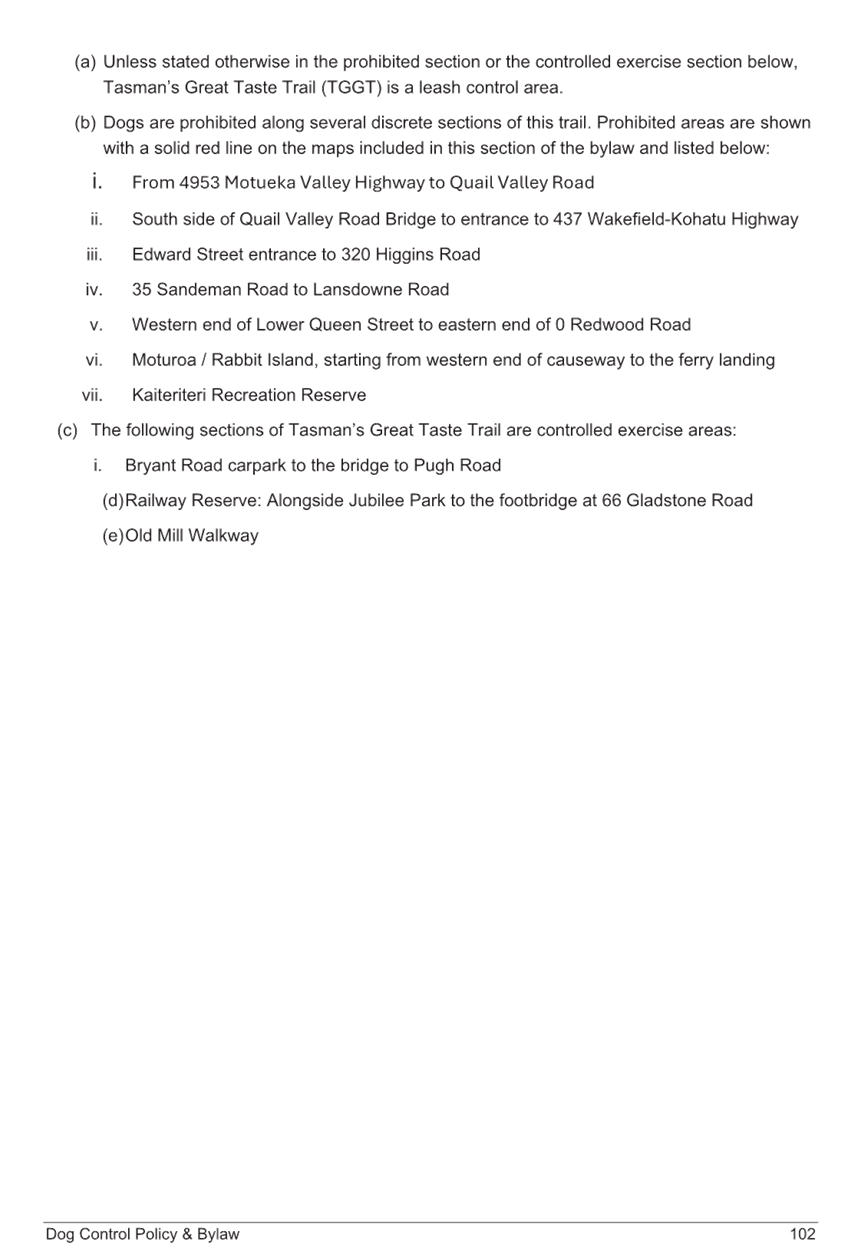
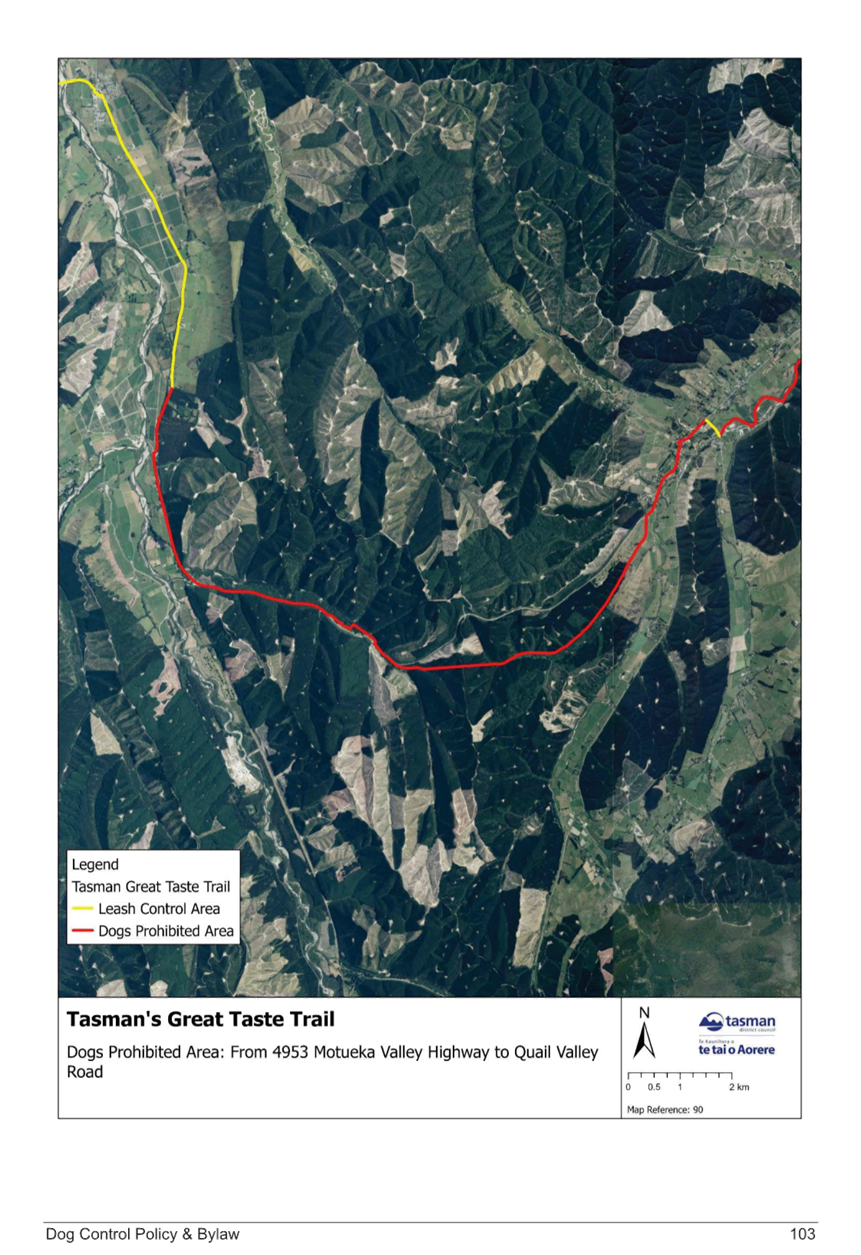
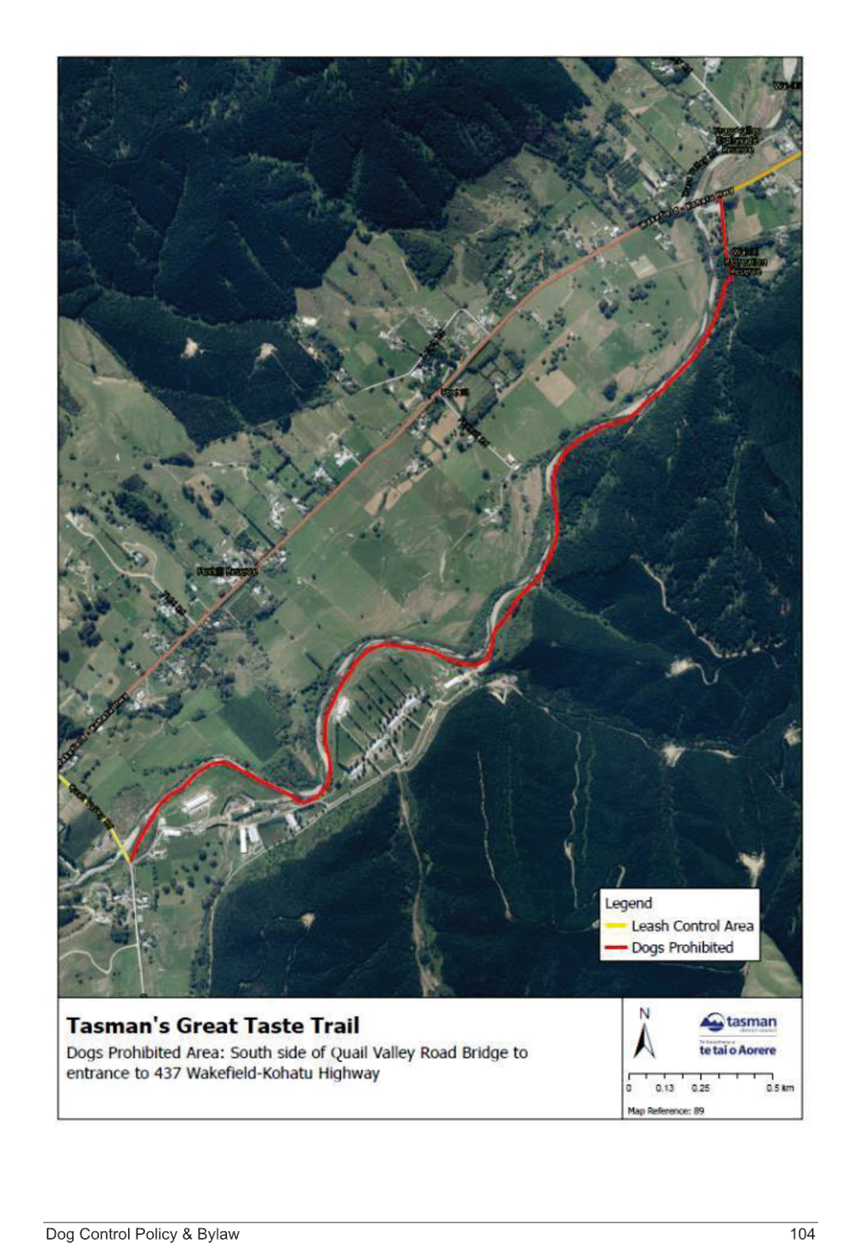
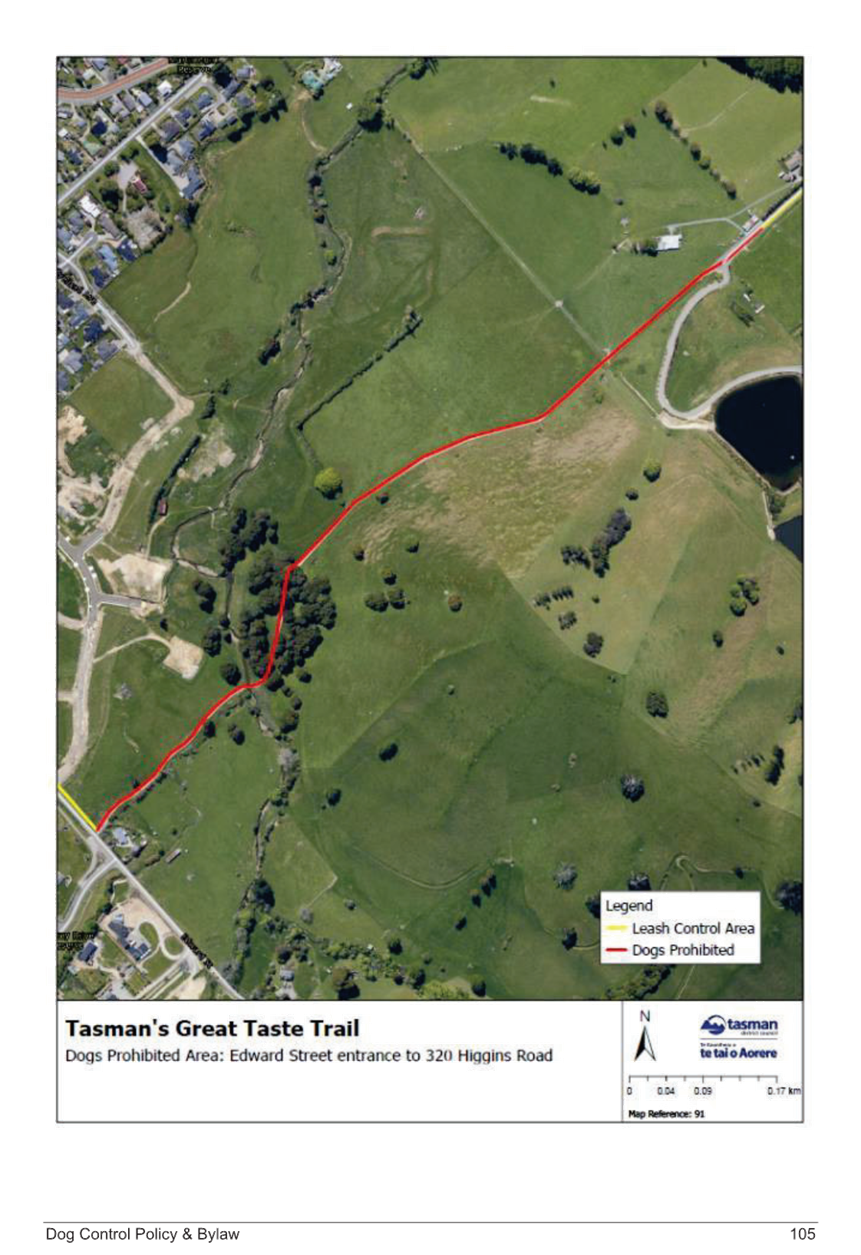
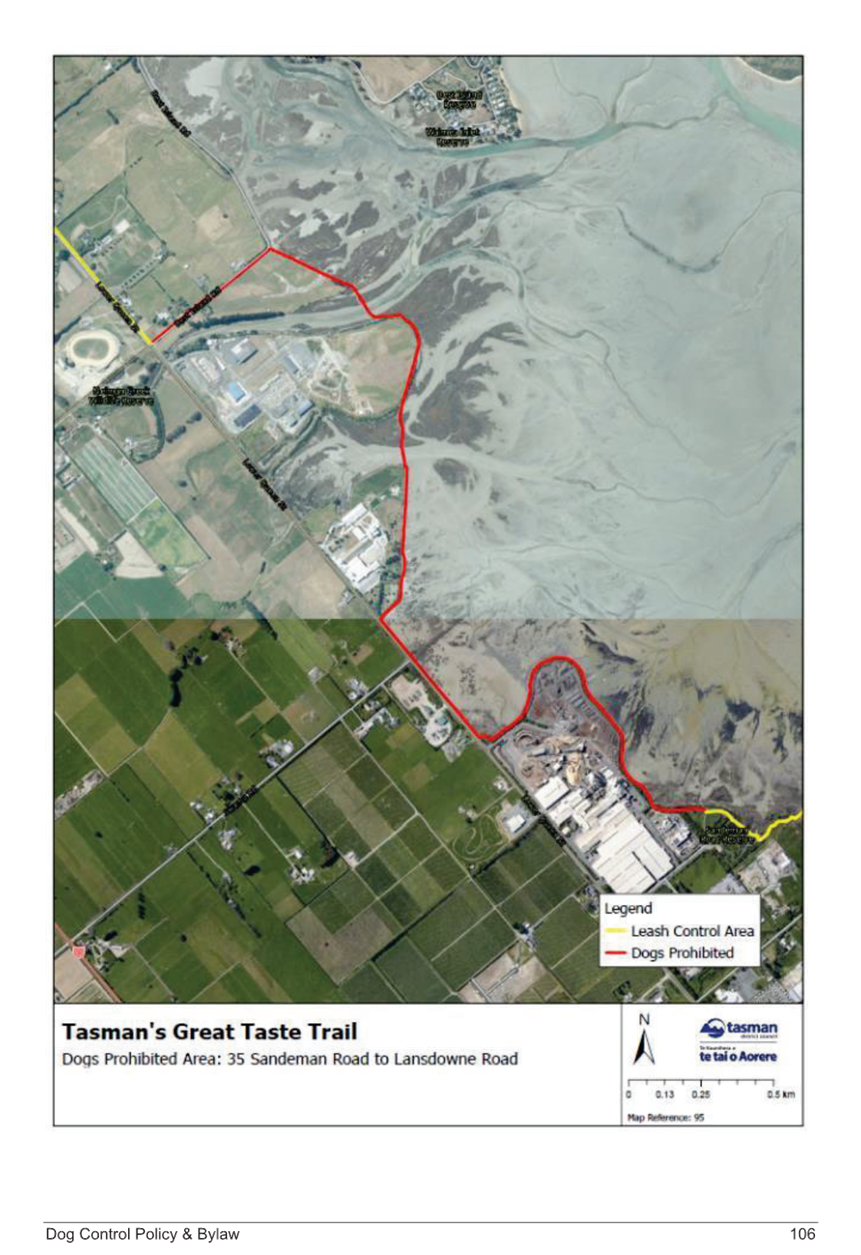
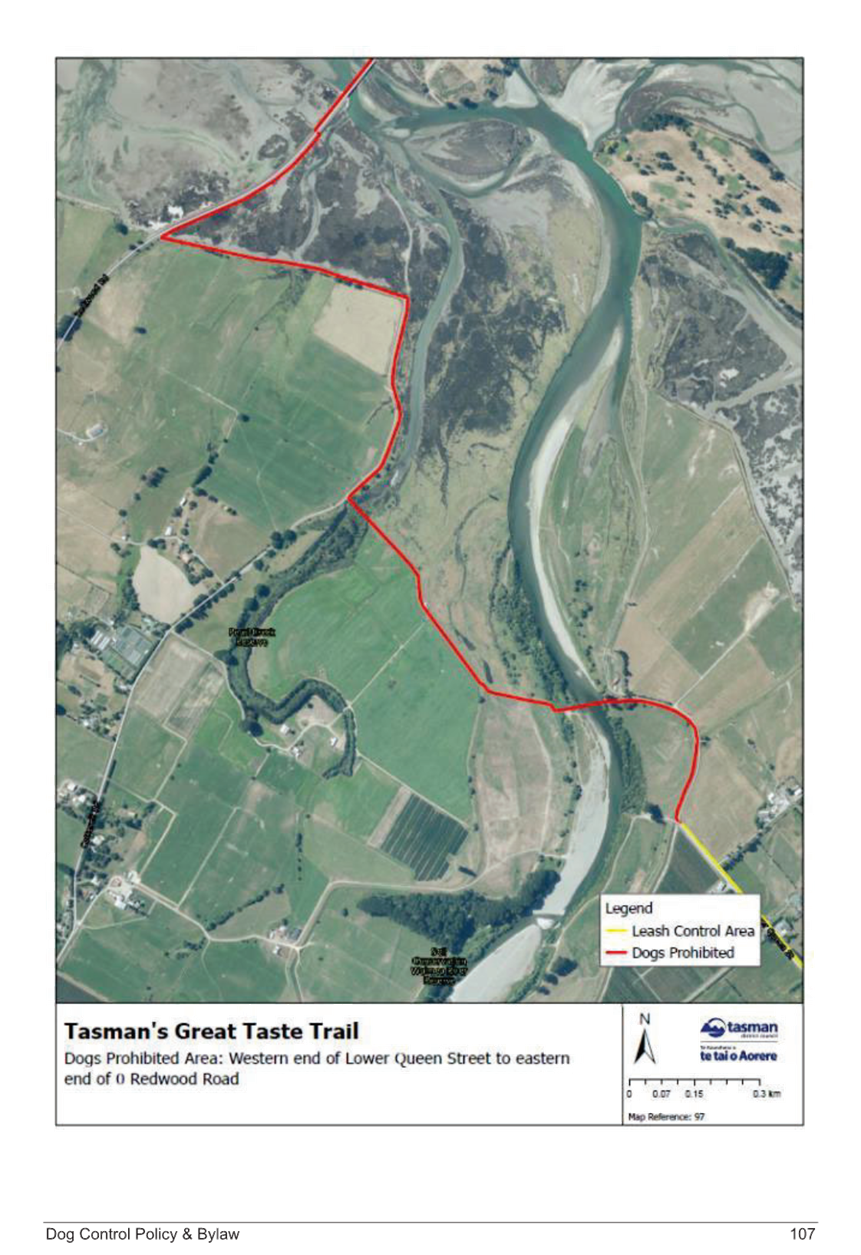
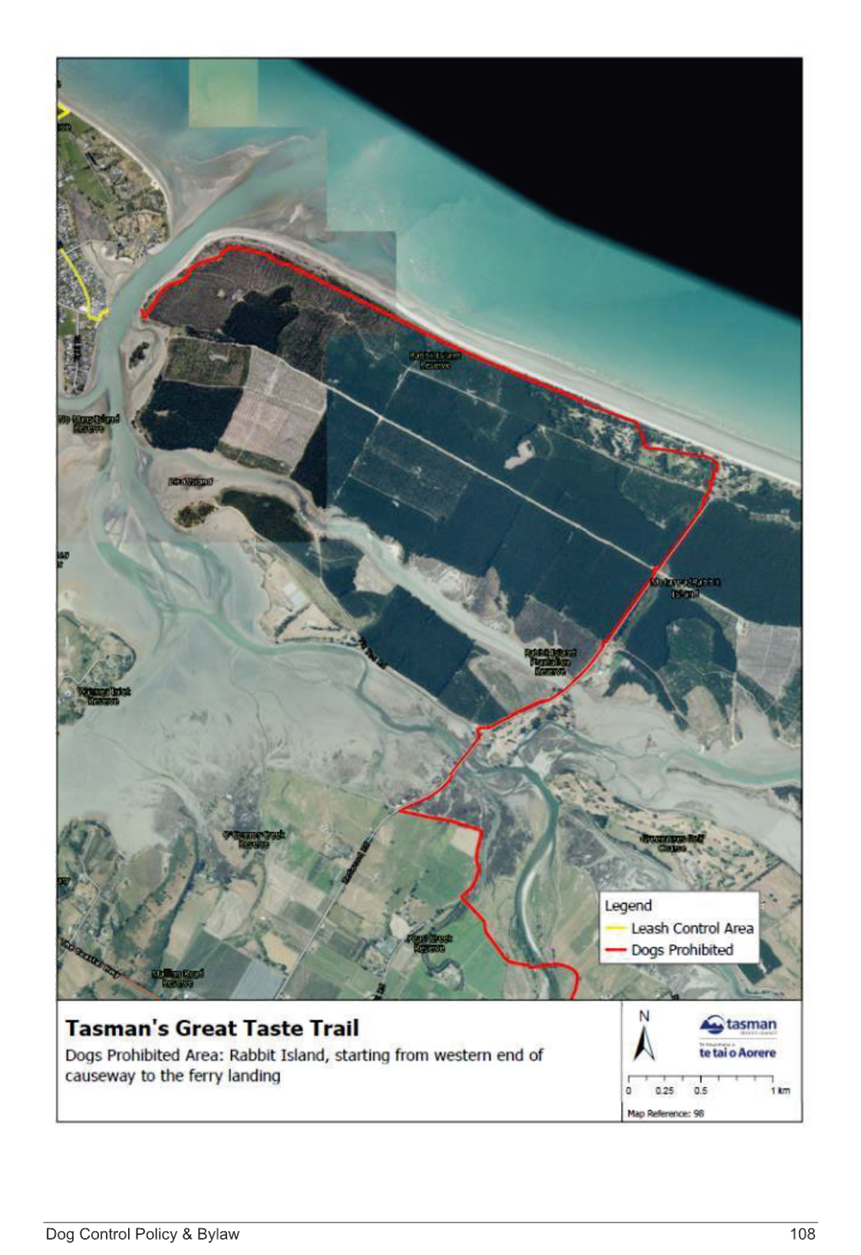
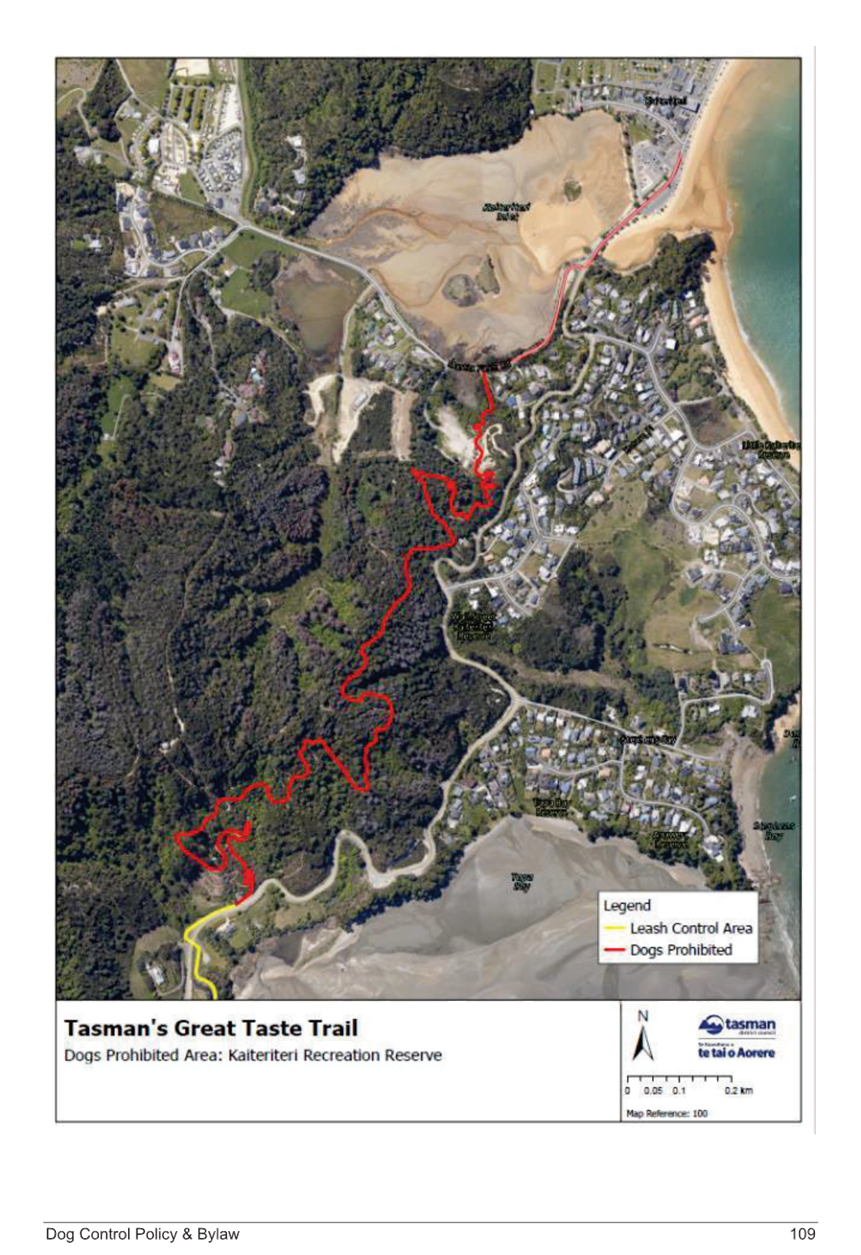
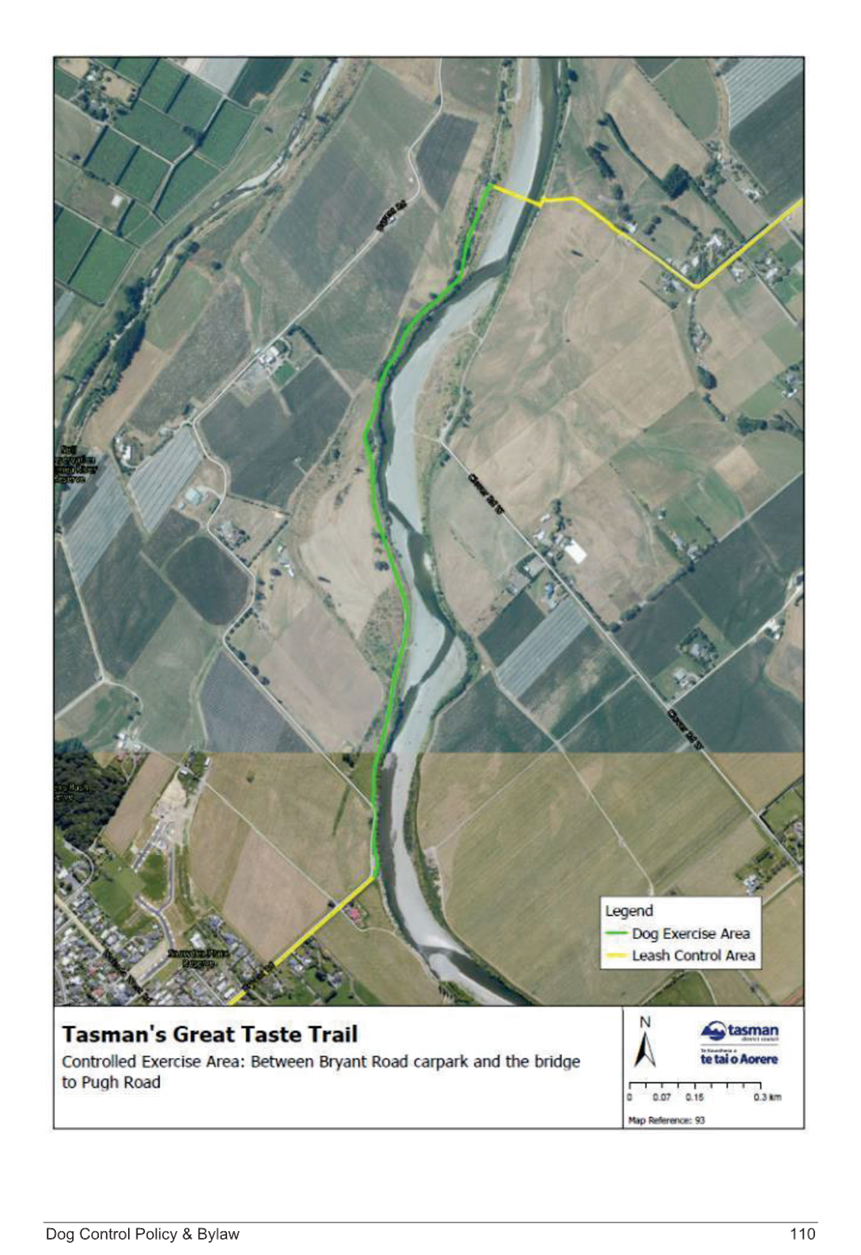
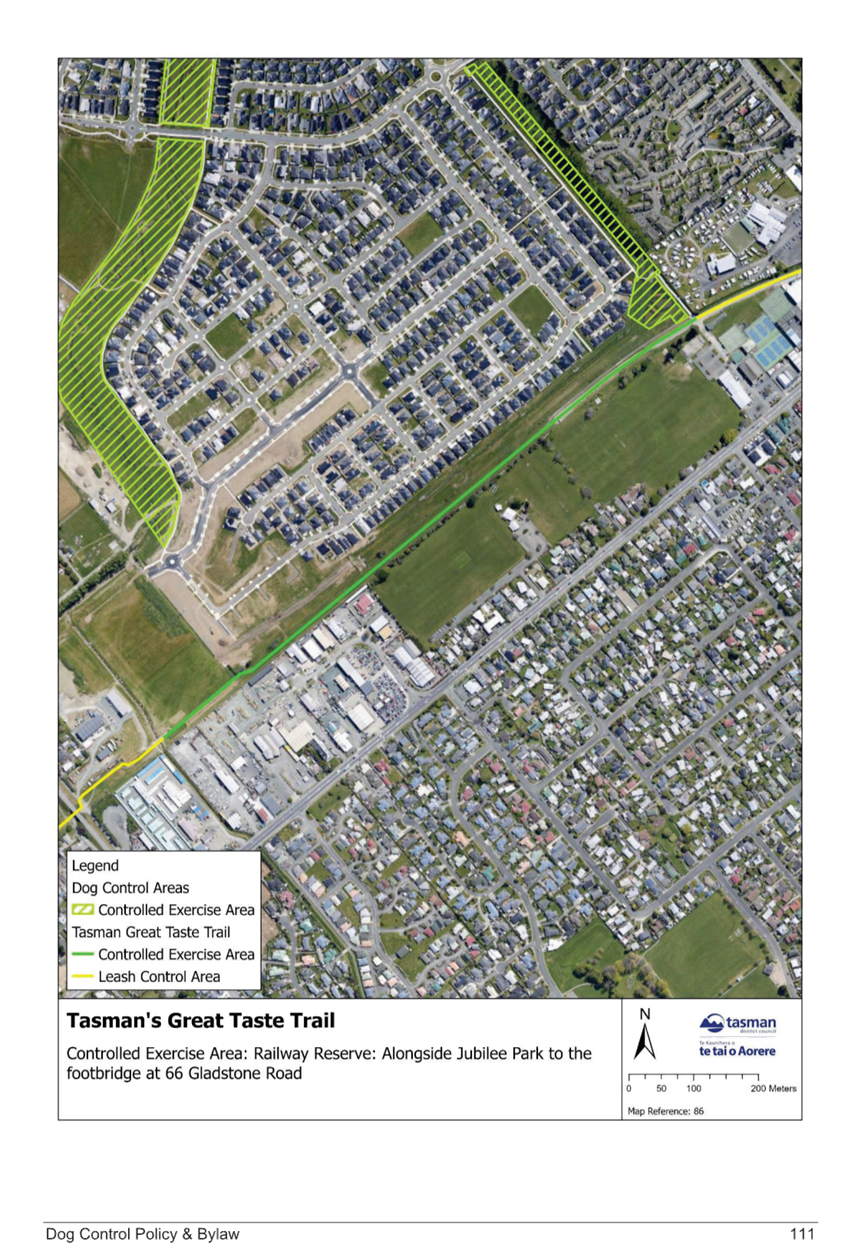
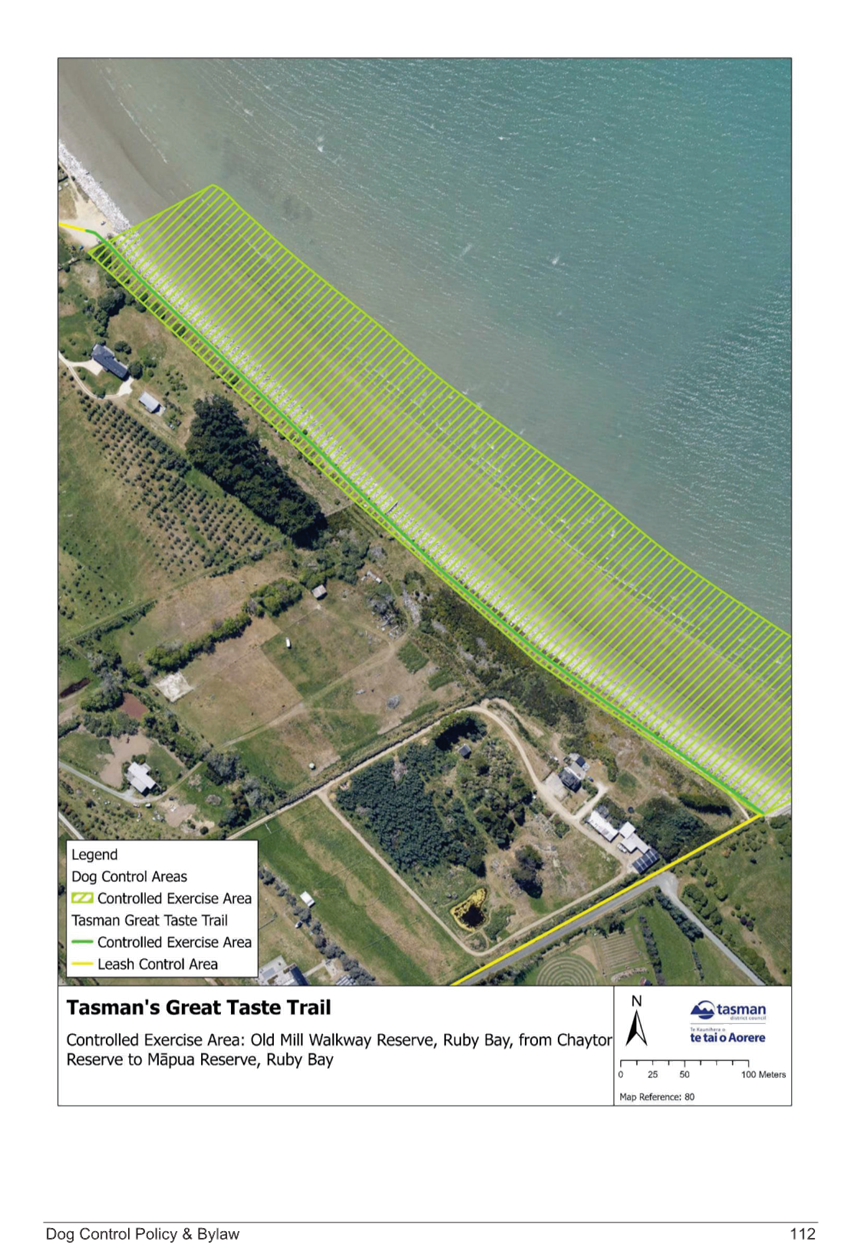
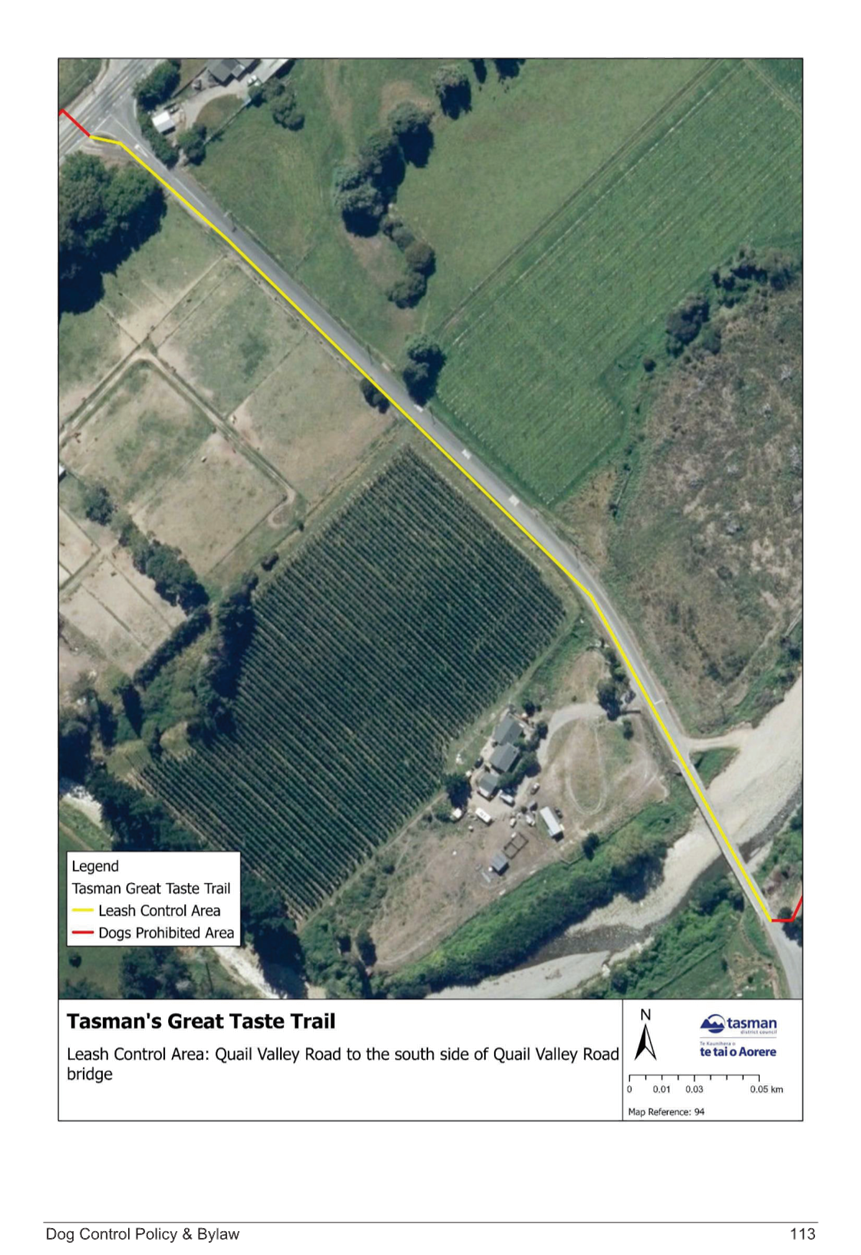
Tasman District Council Agenda – 11 December 2024
7.3 Saxton Field Activity Management Plan
2024-2034
|
Report
To:
|
Tasman
District Council
|
|
Meeting
Date:
|
11
December 2024
|
|
Report
Author:
|
Rob
Coleman, Reserves Officer - Recreation and Systems
|
|
Report
Authorisers:
|
Richard
Kirby, Group Manager - Community Infrastructure
|
|
Report
Number:
|
RCN24-12-3
|
1. Purpose
of the Report / Te Take mō te Pūrongo
1.1 To
provide a recommendation from the 5 November 2024 Saxton Field Committee to the
Council regarding adoption of the Saxton Field Activity Management Plan
2024-34.
2. Summary
/ Te Tuhinga Whakarāpoto
2.1 At
its 5 November 2024 meeting, The Saxton Field Committee resolved:
SFC24-11-6
That the
Saxton Field Committee
1. receives
the Saxton Field Activity Report - Saxton Field Activity Management Plan 2024- 34
and Saxton Development Plan; and
2 approves
the Saxton Field Development Plan in Attachment 2 to the agenda report; and
3 forward
this to both the Nelson City and Tasman District Councils recommending that
each council;
a) adopt
the revised Saxton Field Activity Management Plan 2024-2034 (NDOCS- 196698121-60099)
in Attachment 1 to the agenda report; and
b) delegate
authority to the Chair of the Saxton Field Committee, Group Manager Community
Services Nelson City Council and Group Manager Community Infrastructure Tasman
District Council to make editorial amendments to the Saxton Field Activity
Management Plan prior to the public release of the Saxton Field Activity
Management Plan 2024-34.
2.2 The
report to the 5 November 2024 Saxton Field
Committee meeting is available on the Council’s website.
2.3 The
Saxton Field Activity Management Plan 2024-2034 is attached as Attachment 1;
and the Saxton Development Plan is attached as Attachment 2.
3. Recommendation/s
/ Ngā Tūtohunga
That the Tasman
District Council
1. adopts
the revised Saxton Field Activity Management Plan 2024-2034 in Attachment 1 to
the agenda report; and
2. delegates
authority to the Chair of the Saxton Field Committee, Group Manager Community
Services Nelson City Council and Group Manager Community Infrastructure Tasman
District Council to make editorial amendments to the Saxton Field Activity
Management Plan prior to the public release of the Saxton Field Activity
Management Plan 2024-34.
|
1.⇩
|
Saxton
Field Activity Management Plan 2024-2034
|
152
|
|
2.⇩
|
Saxton
Development Plan
|
205
|
Tasman District
Council
Agenda – 11 December 2024
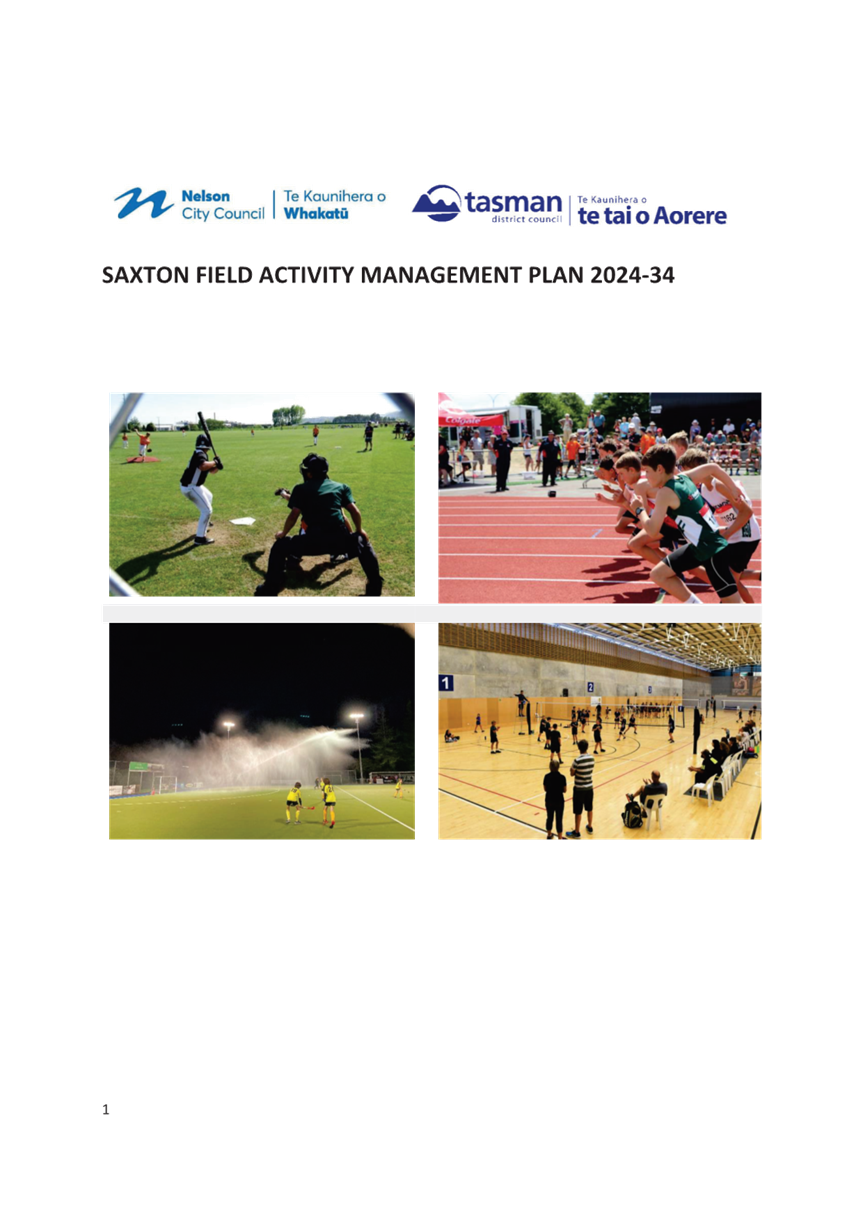
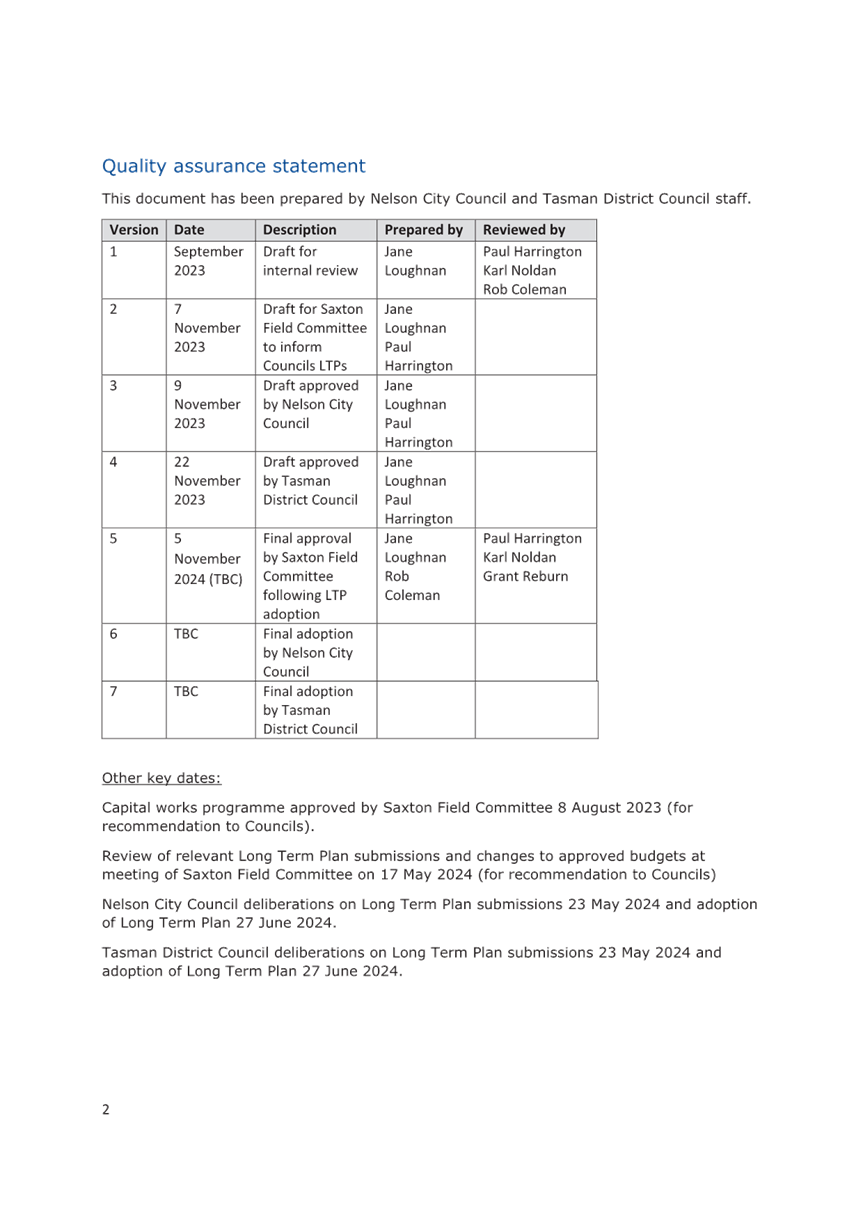


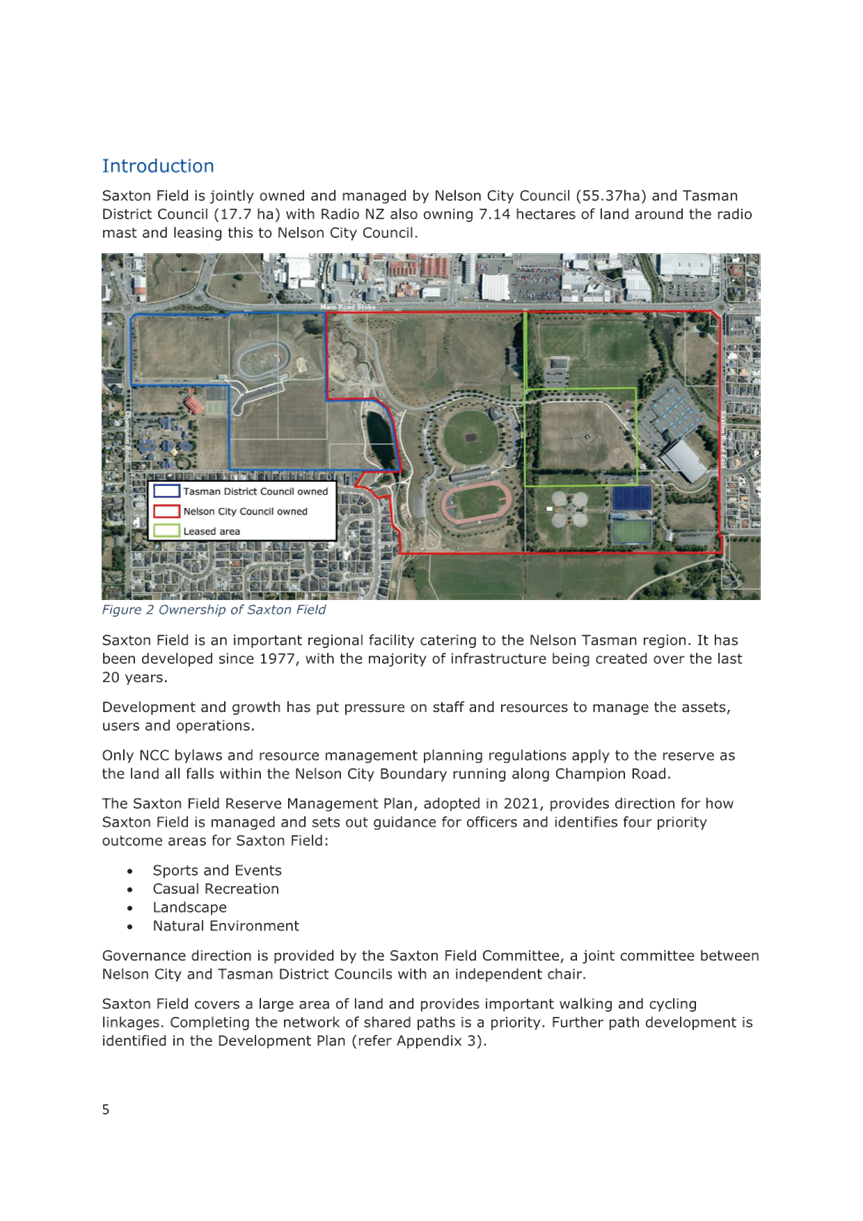
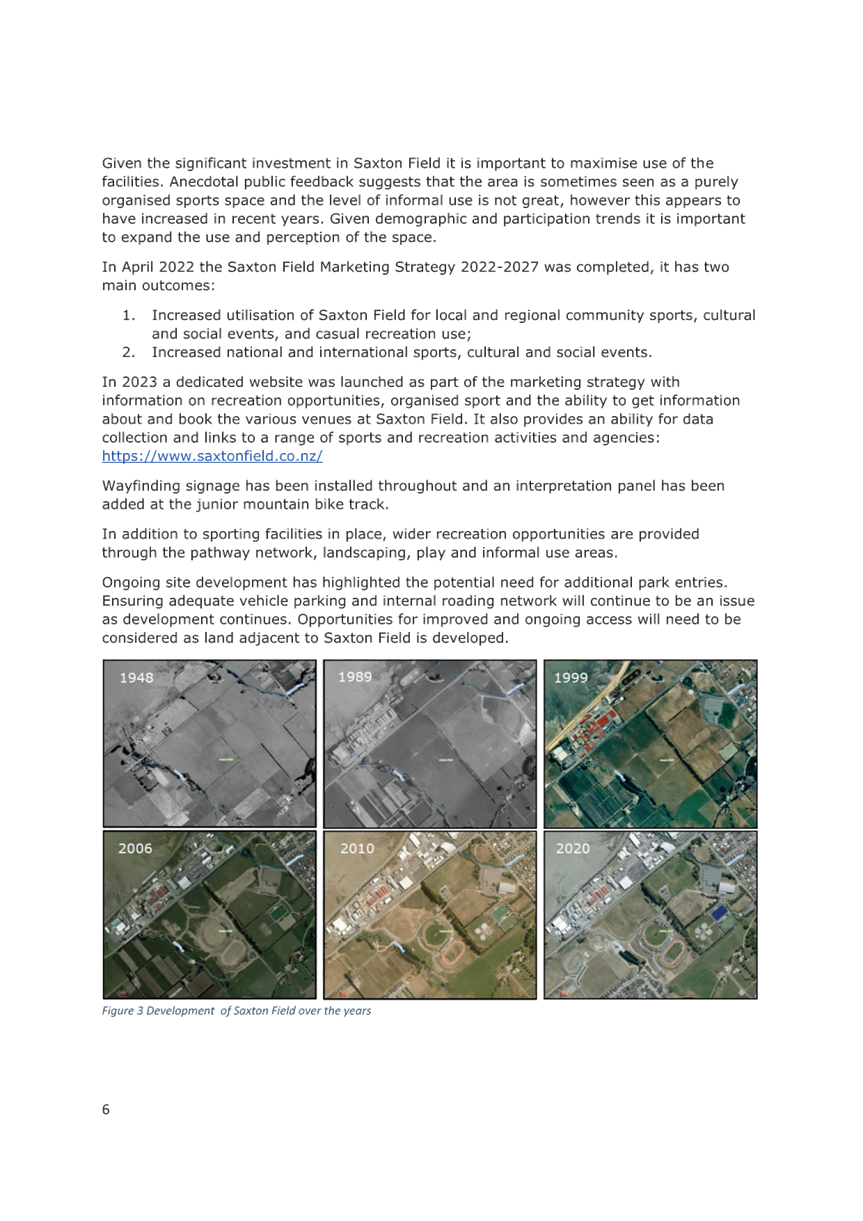
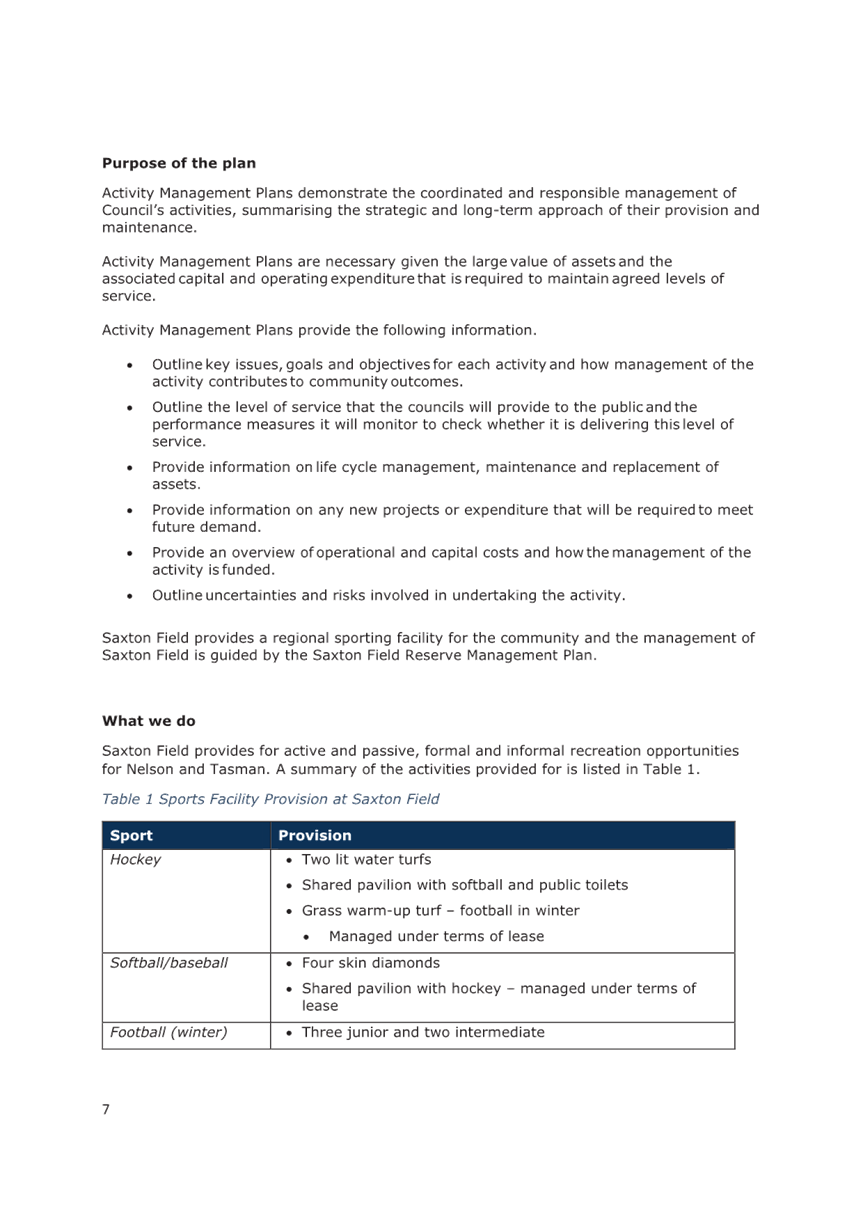
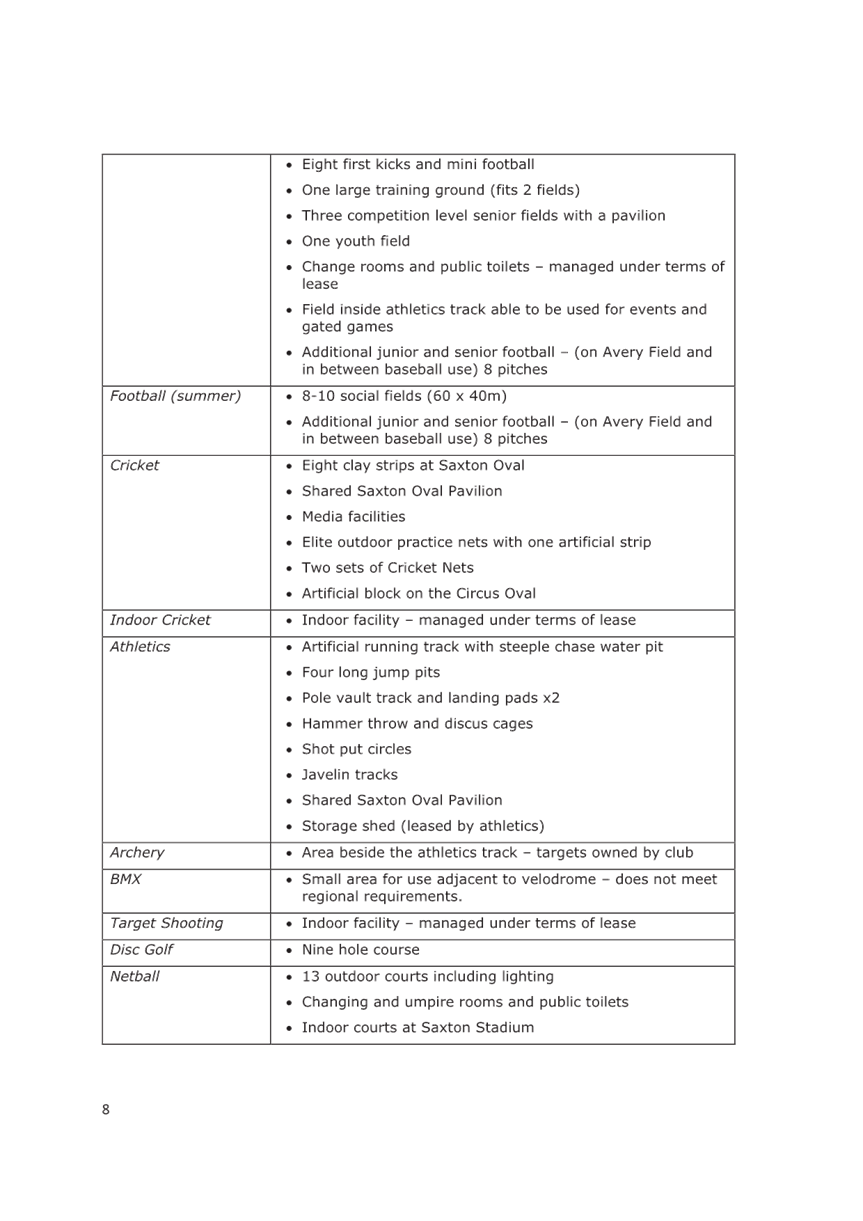
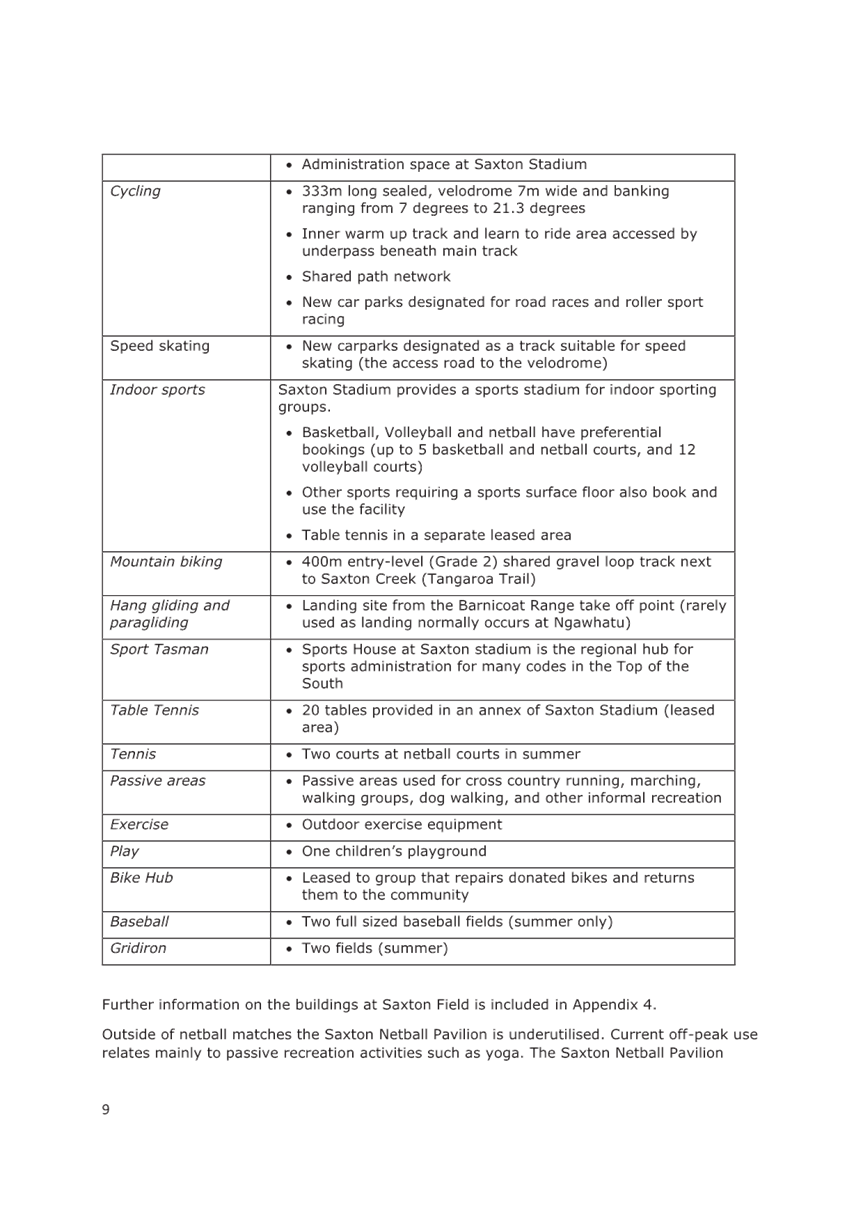
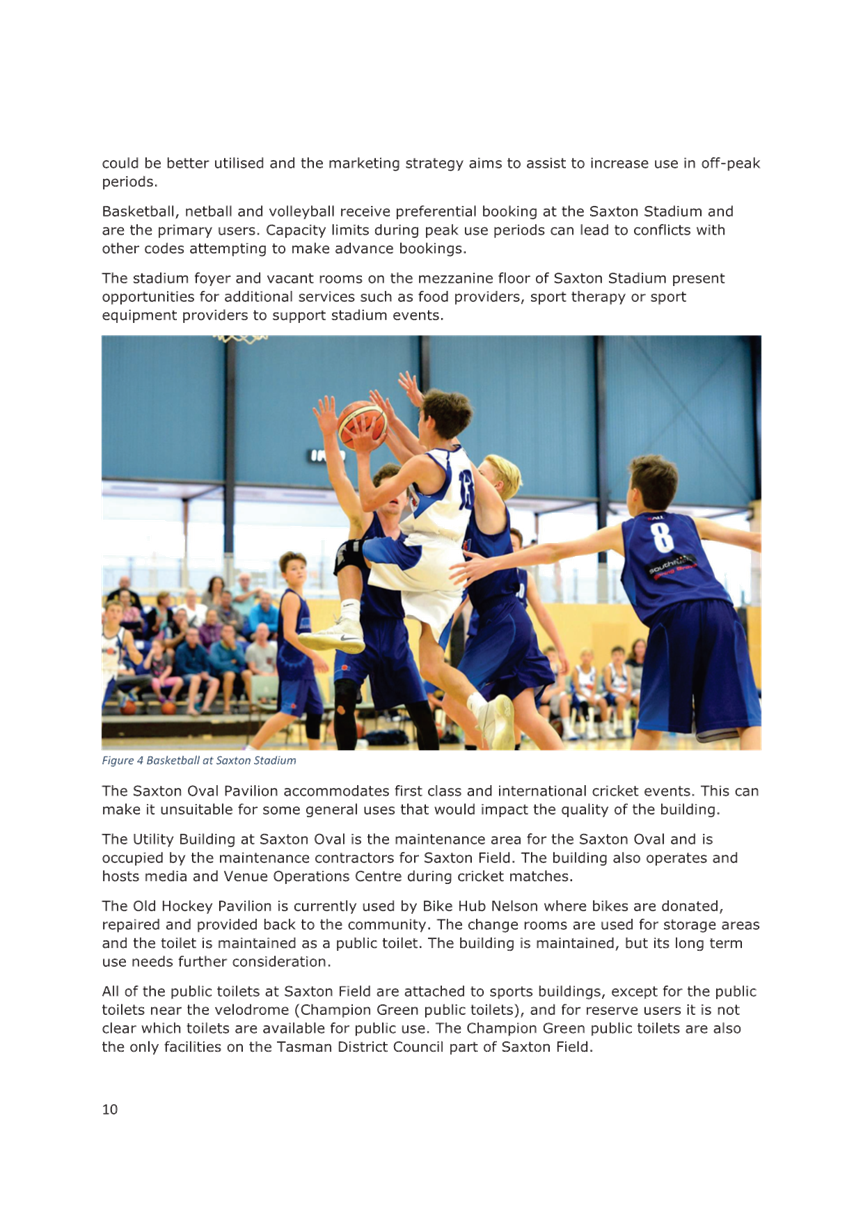
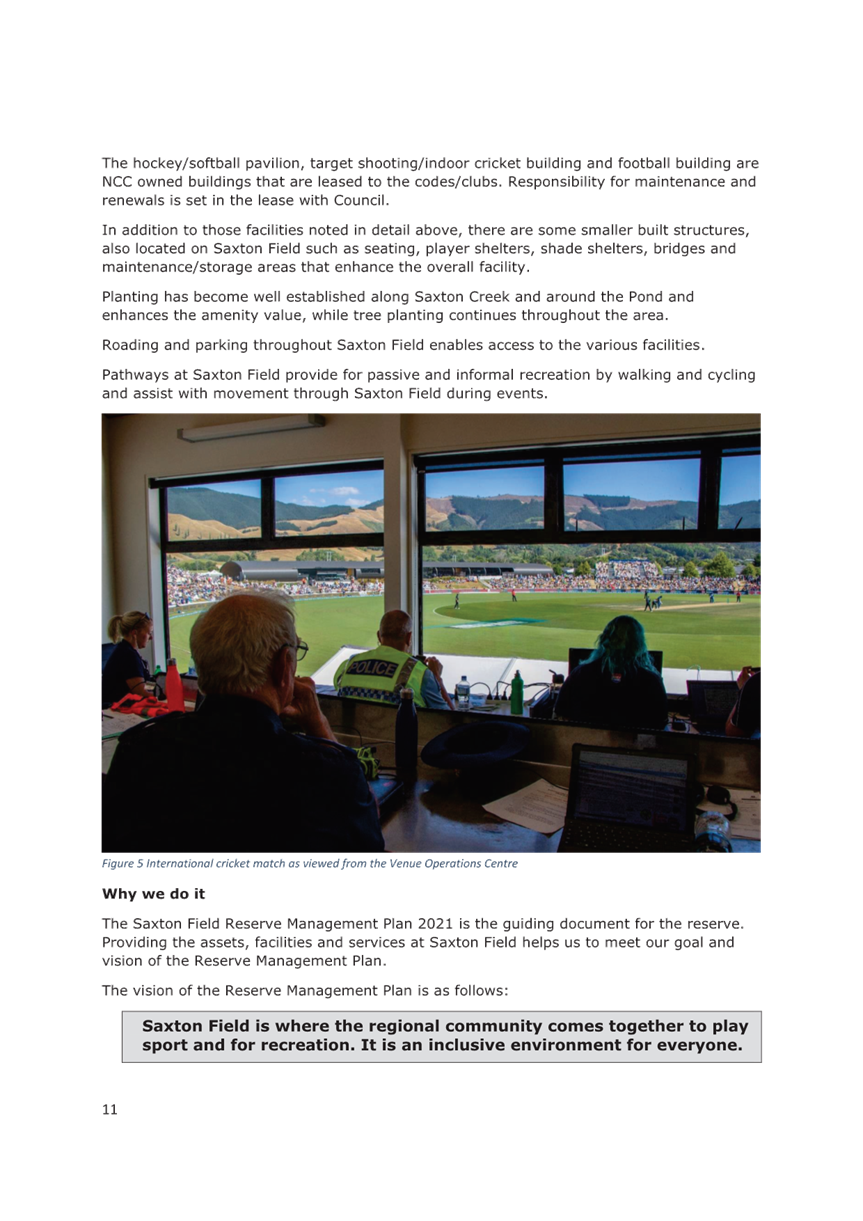
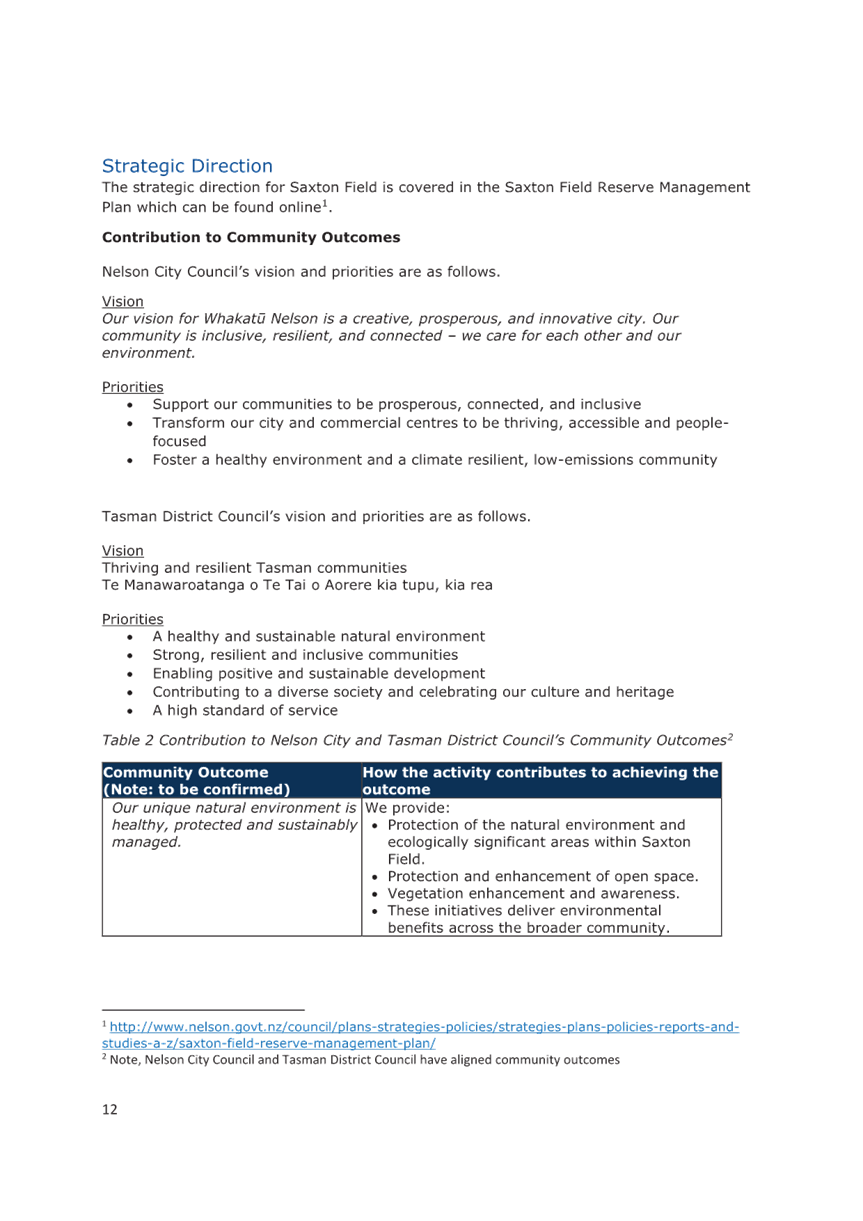
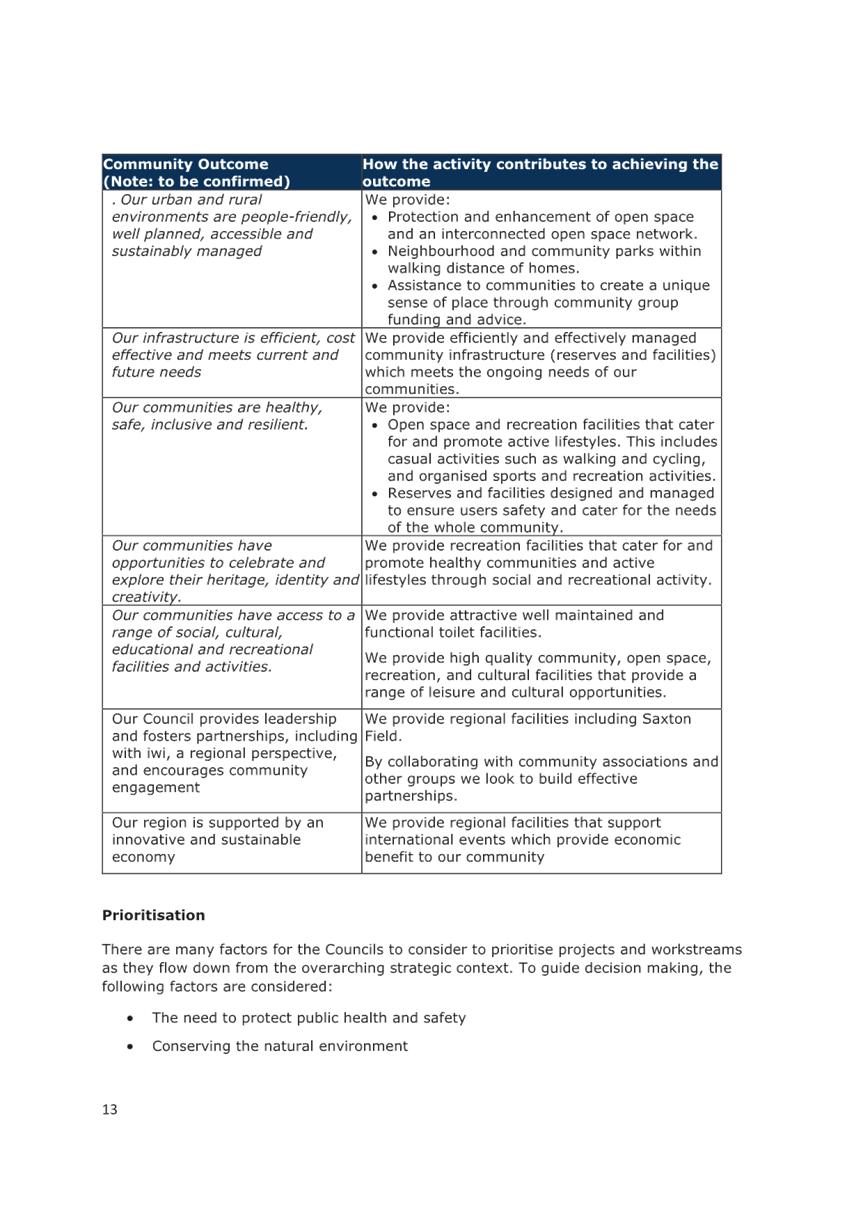
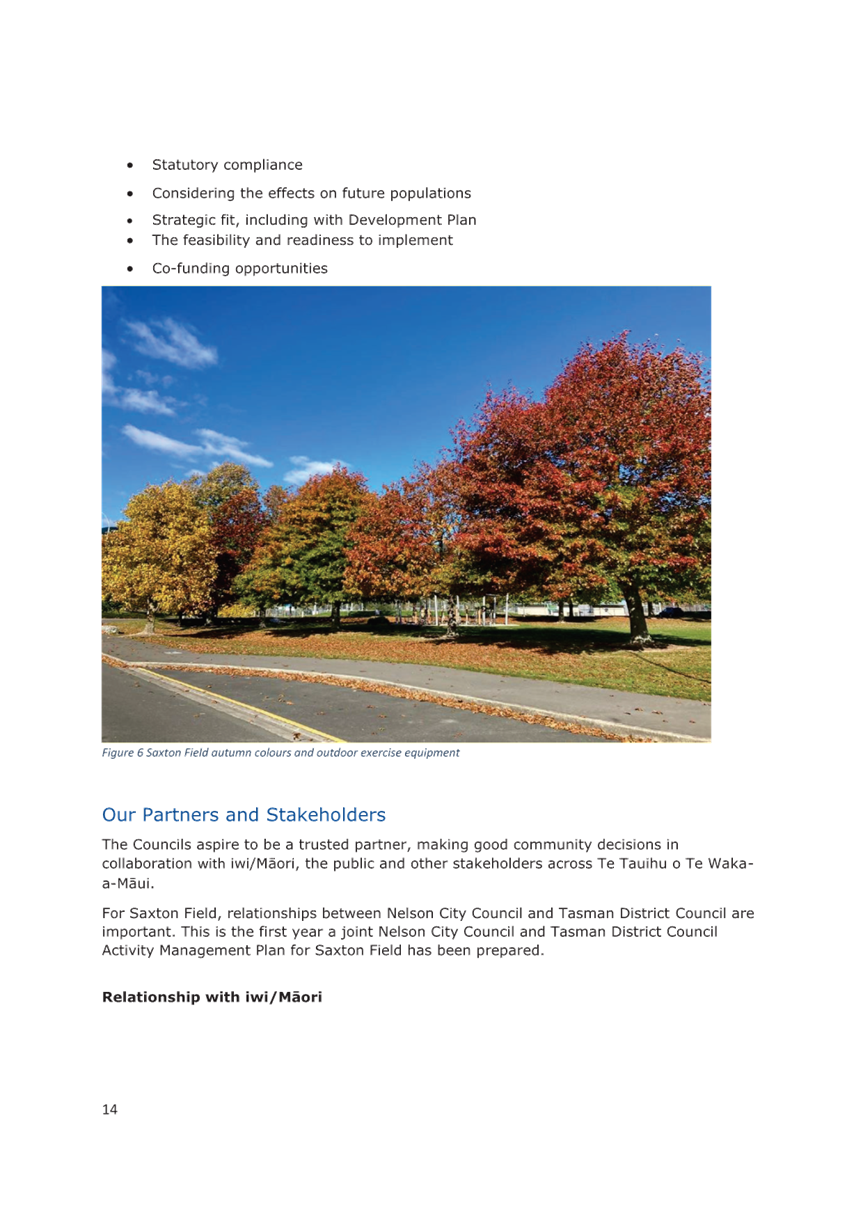
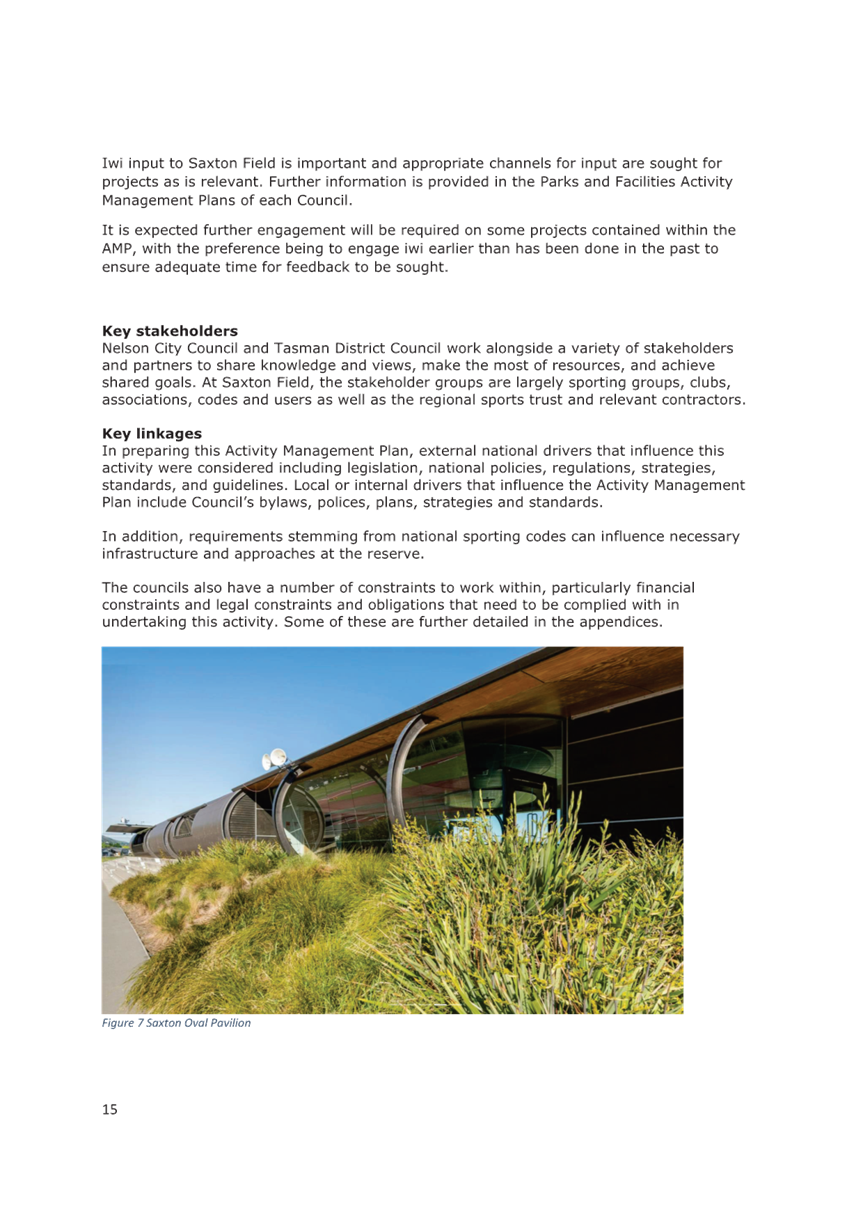
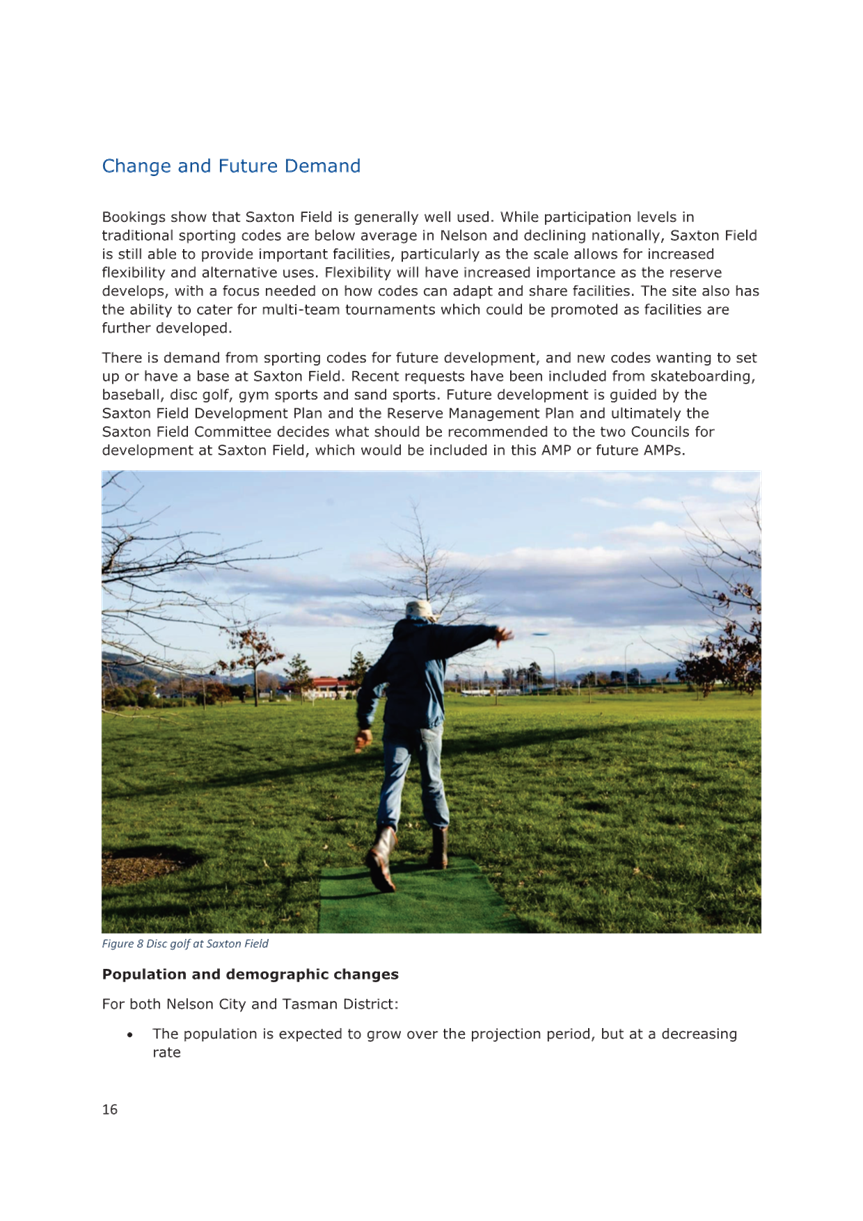
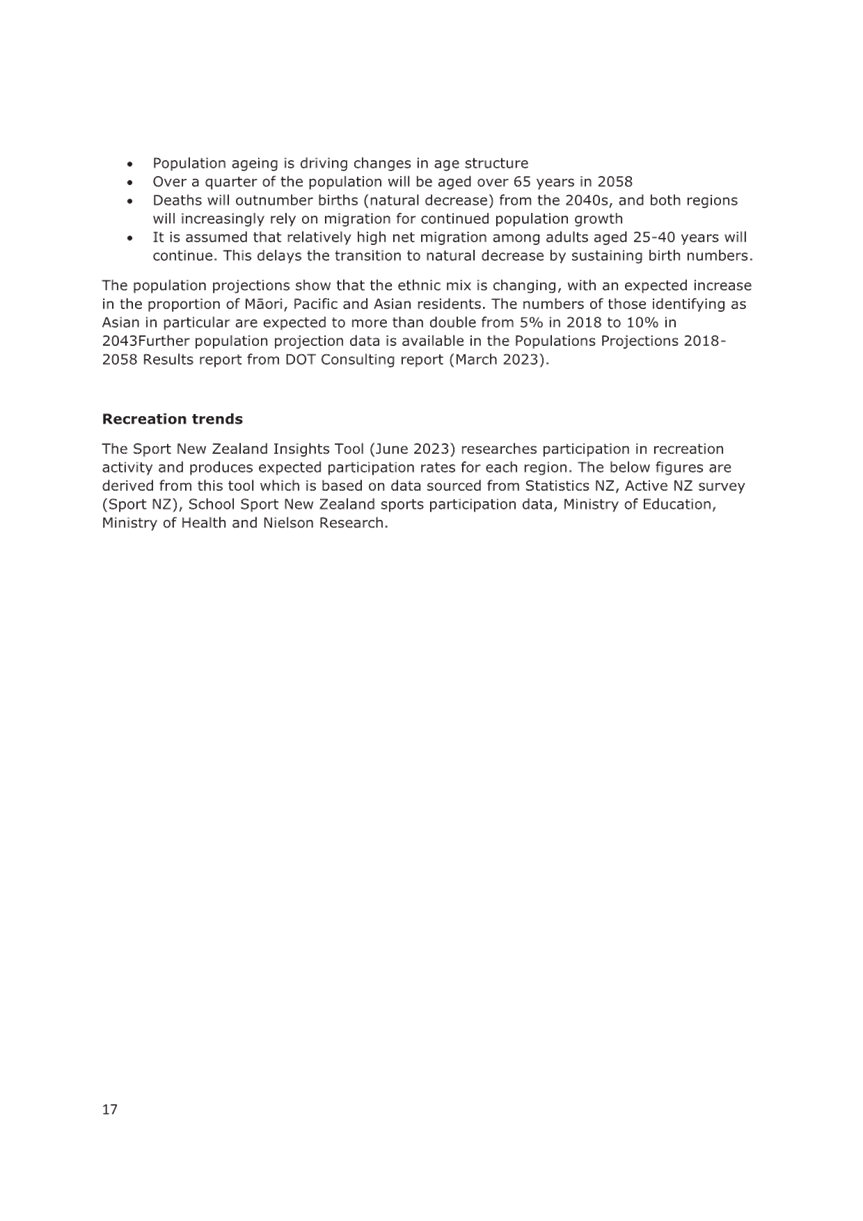
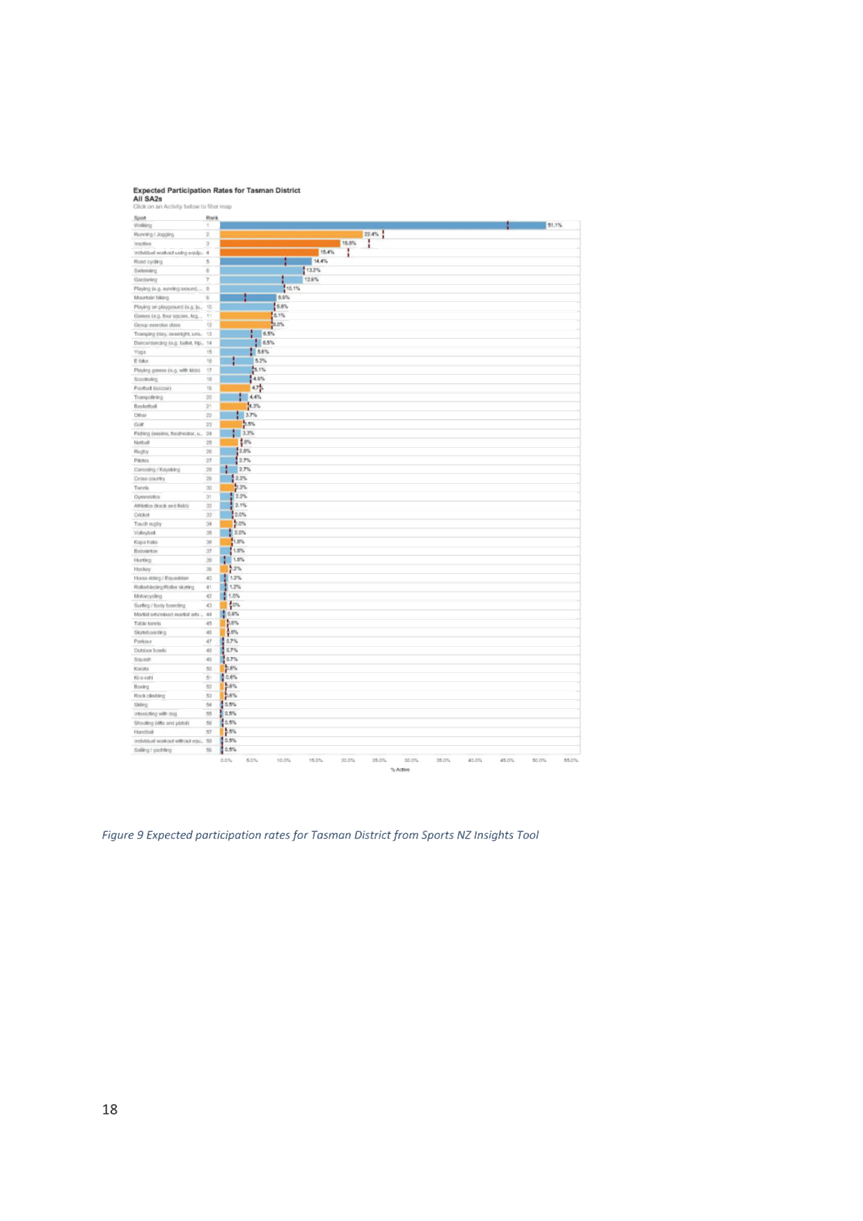
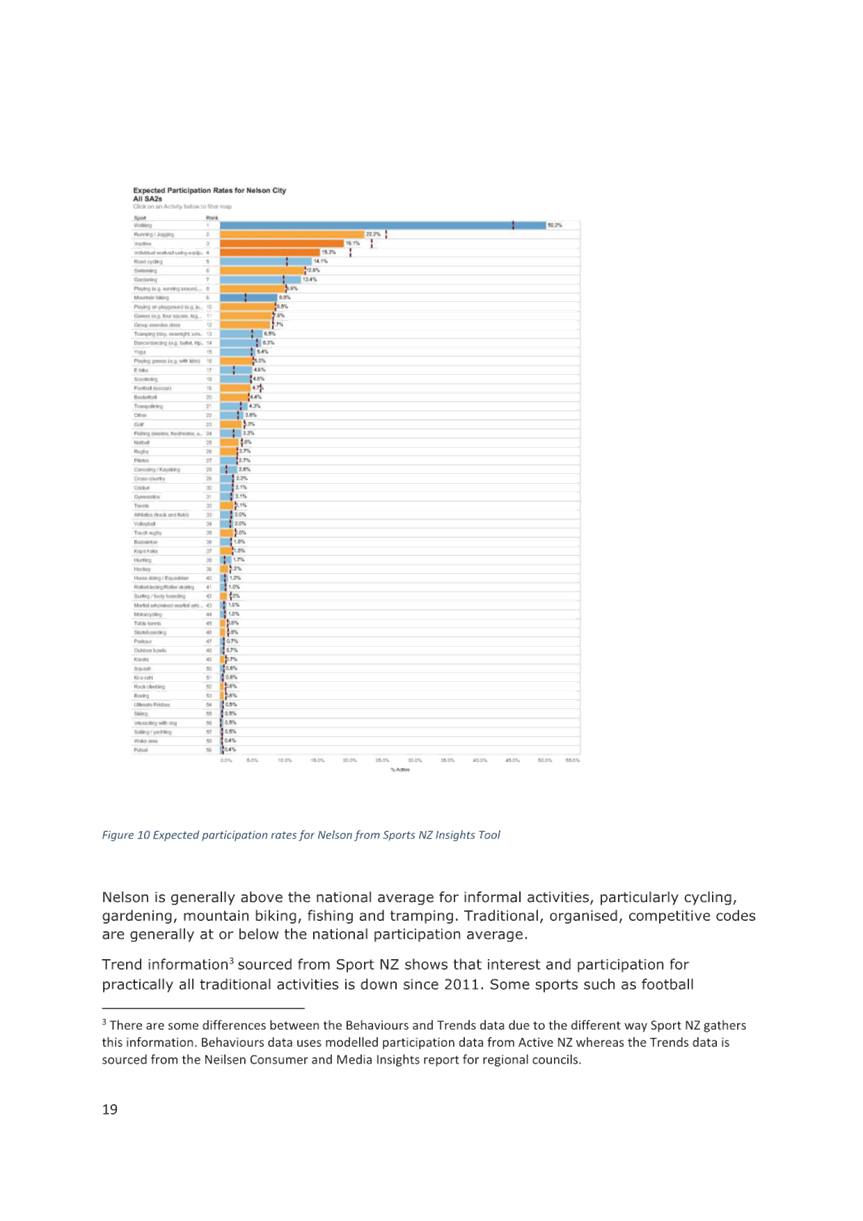
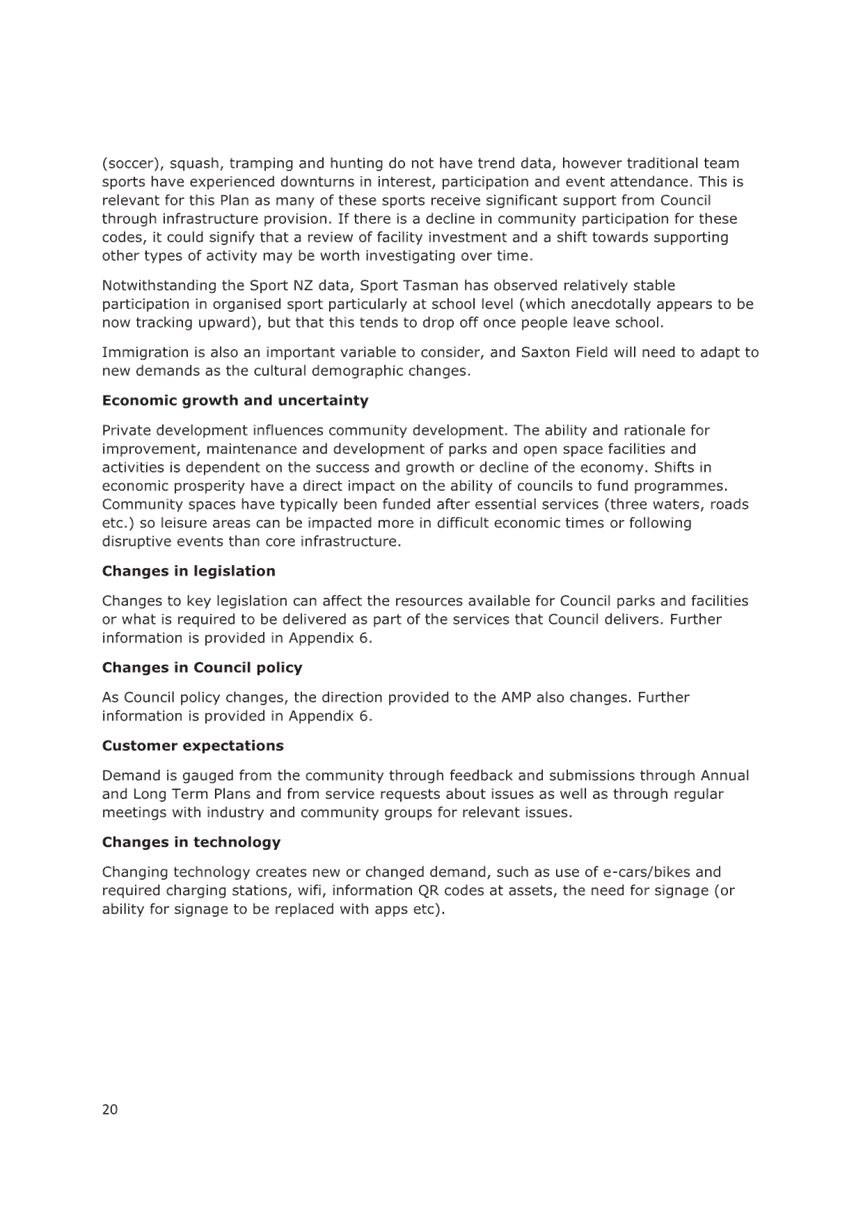
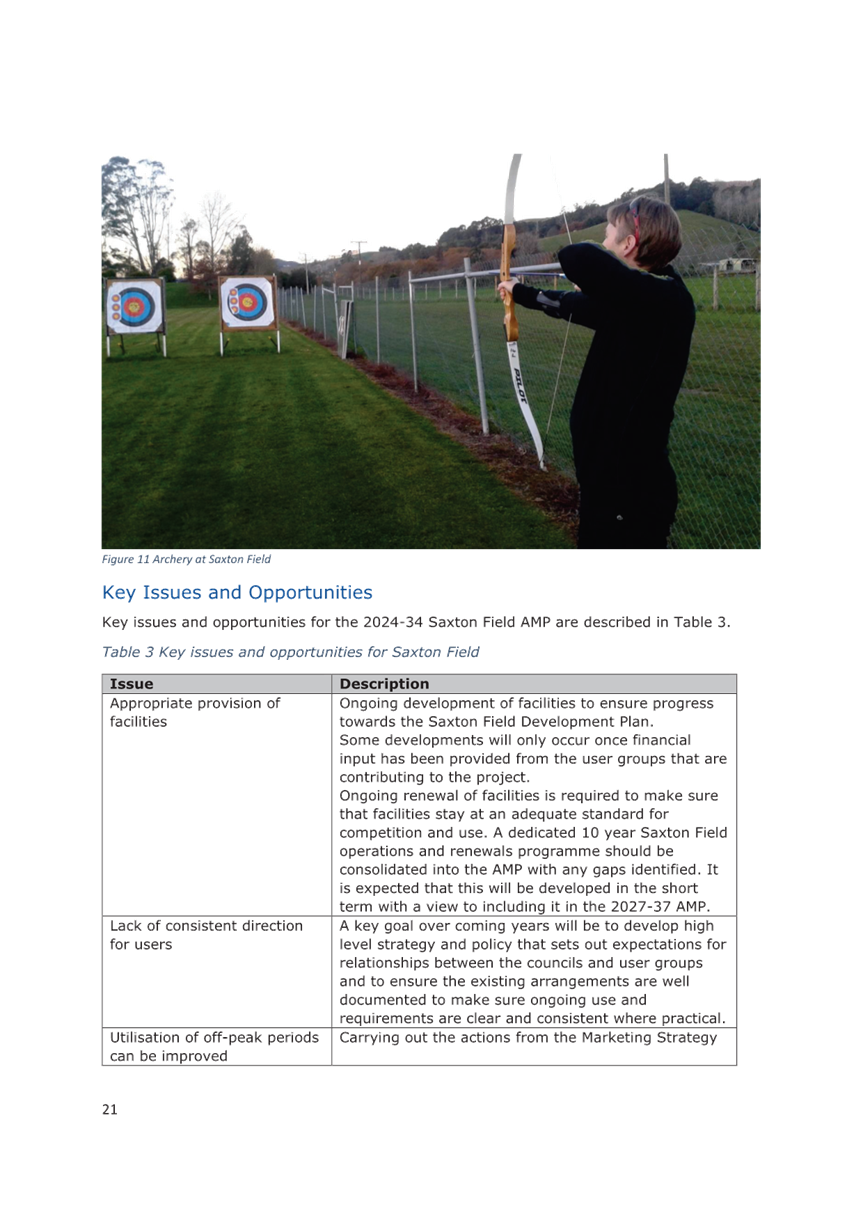
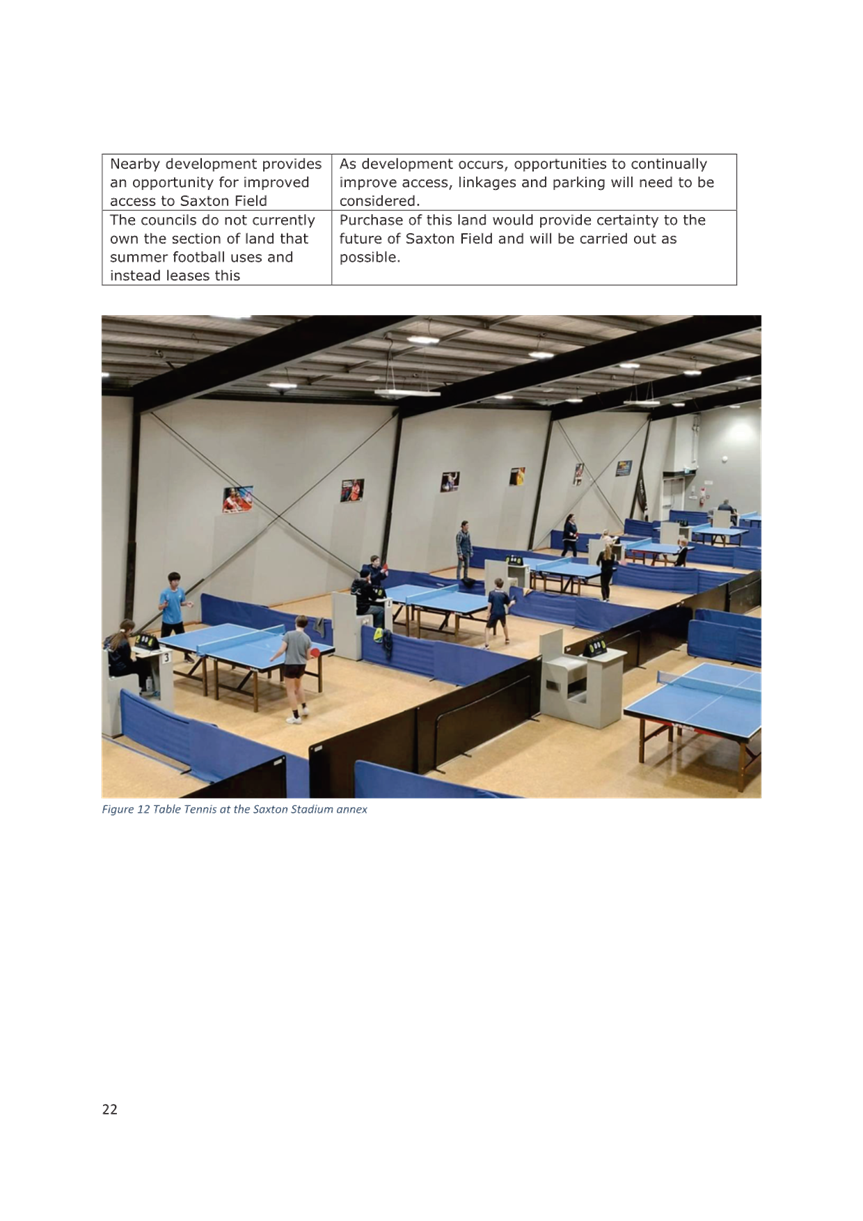
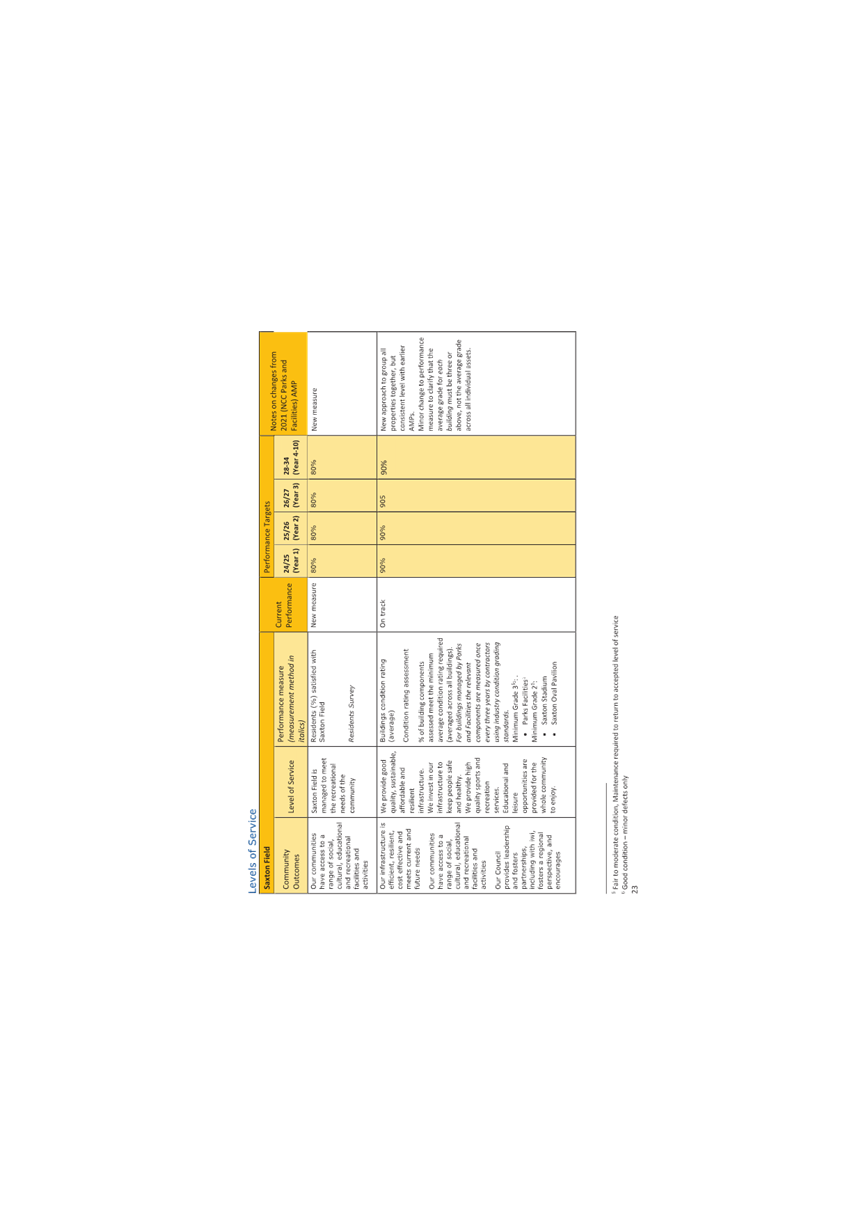
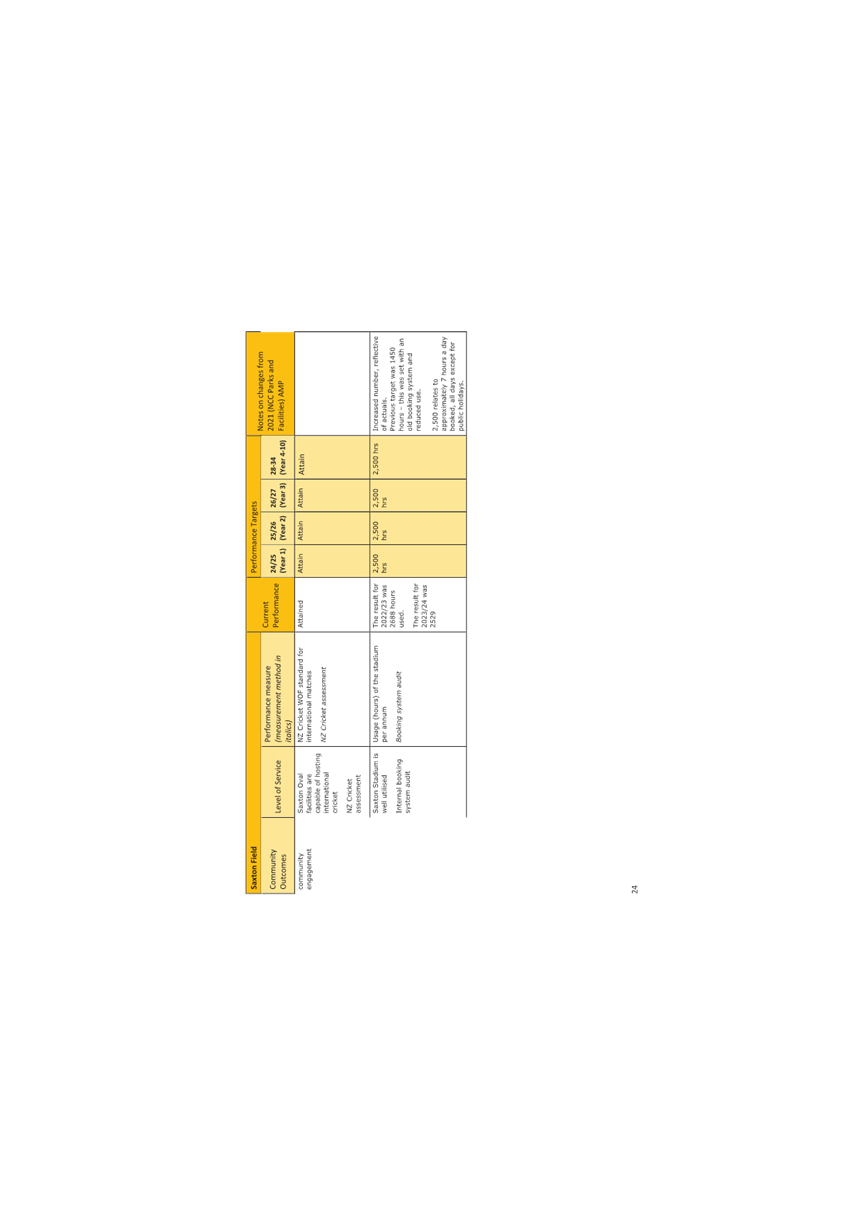
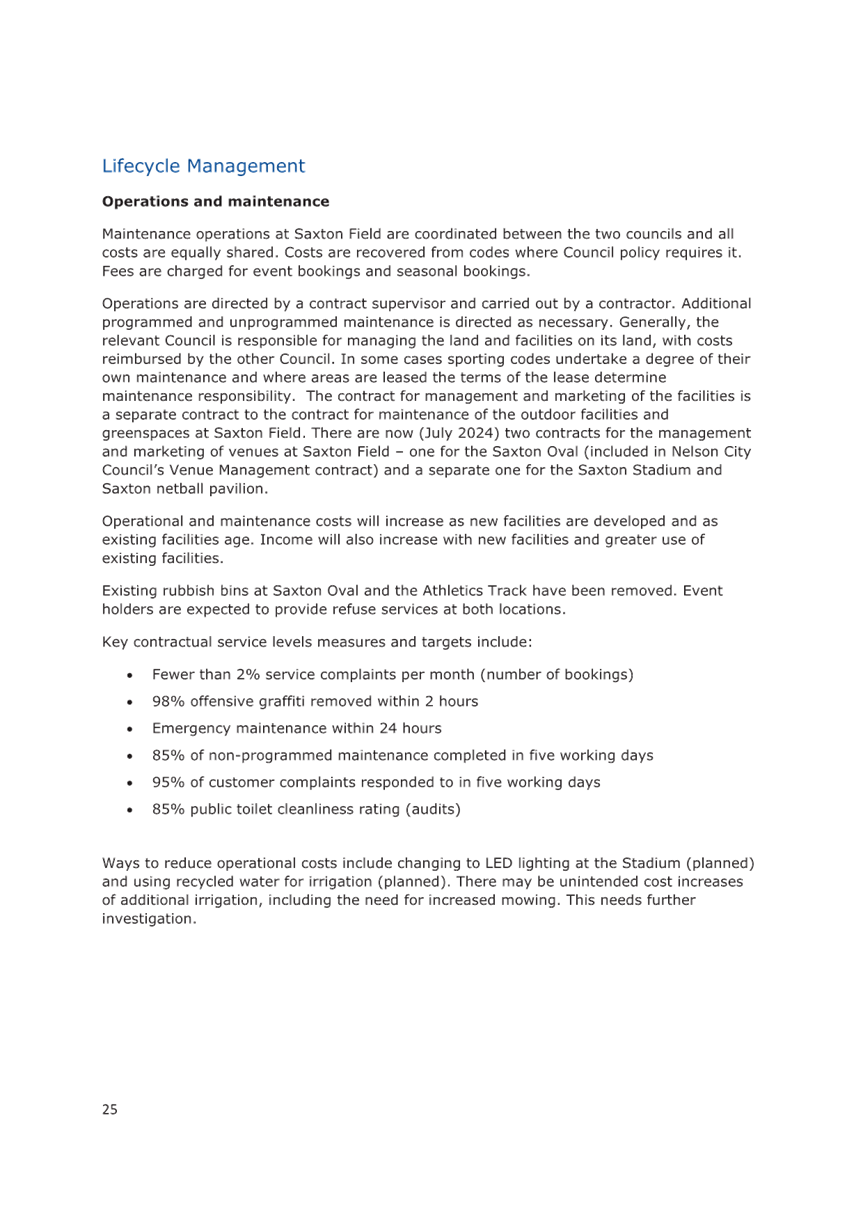
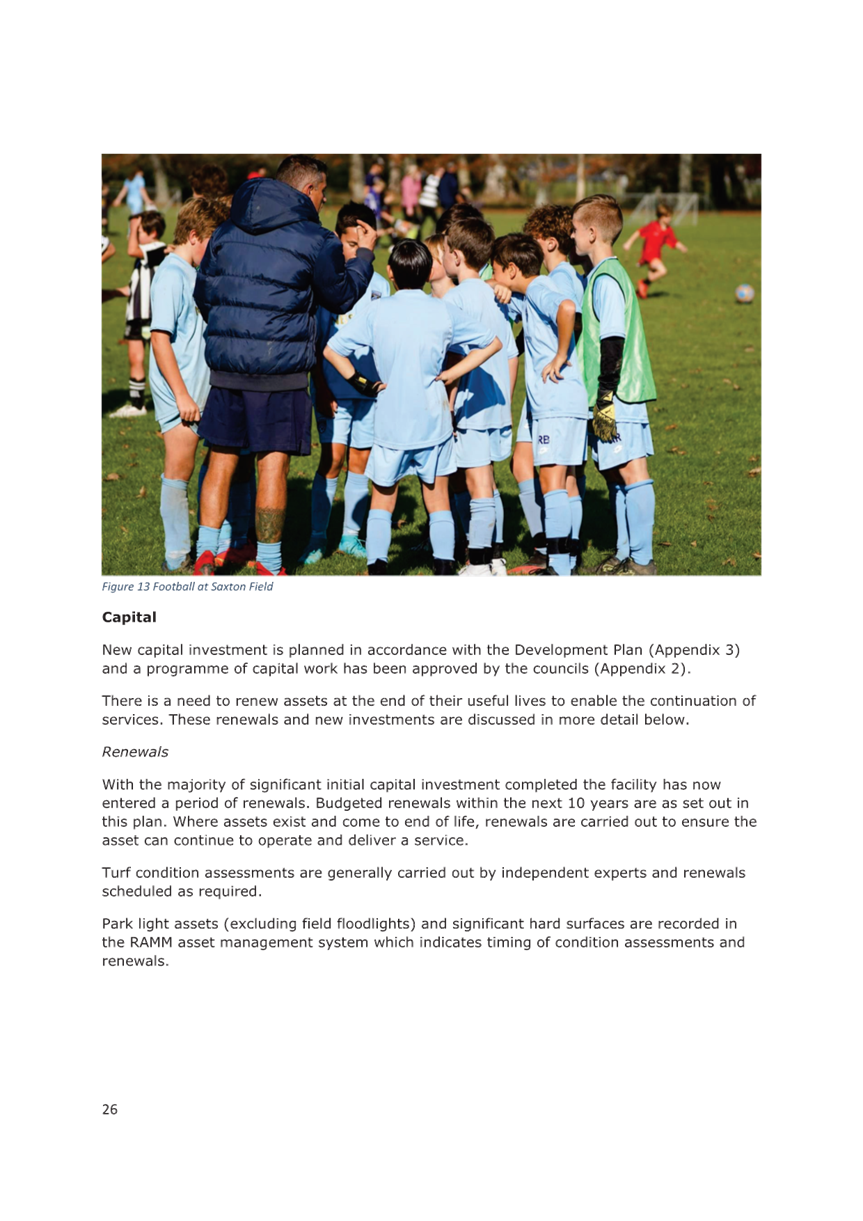
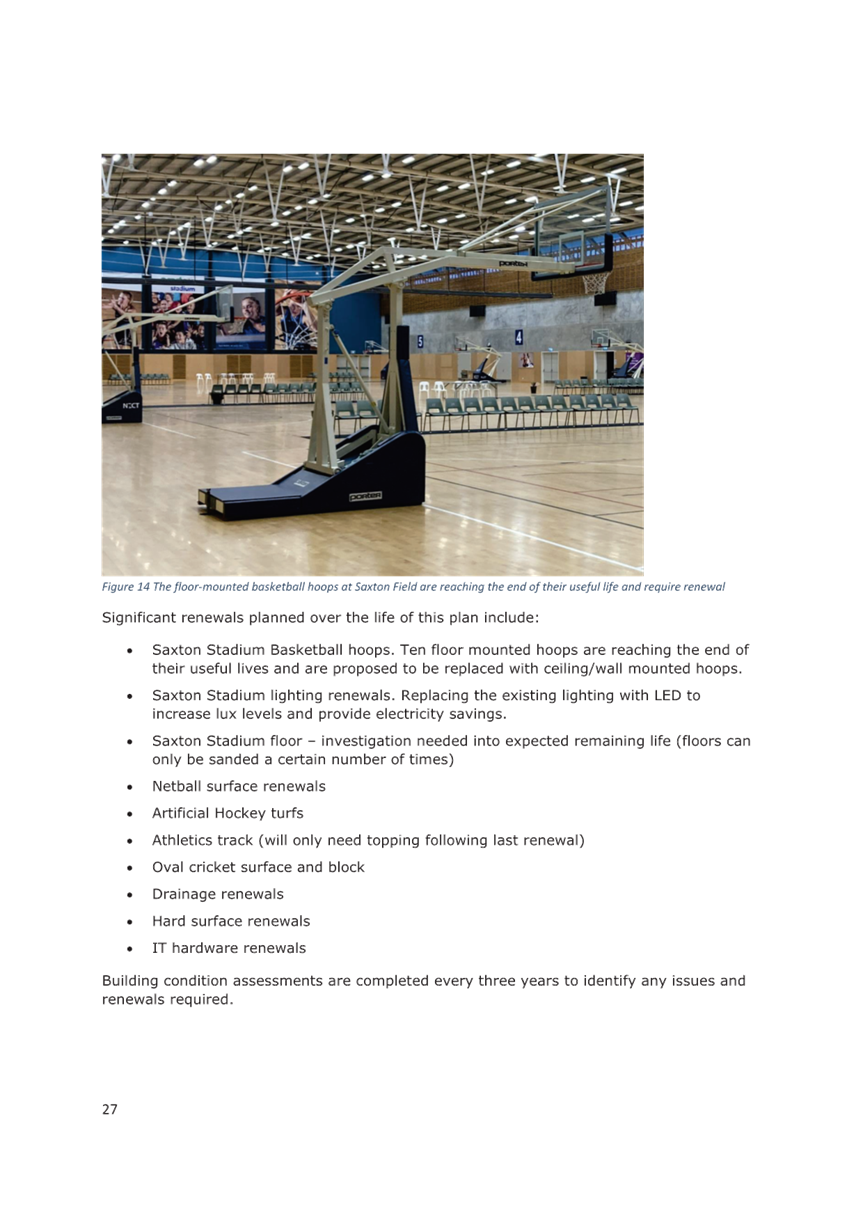
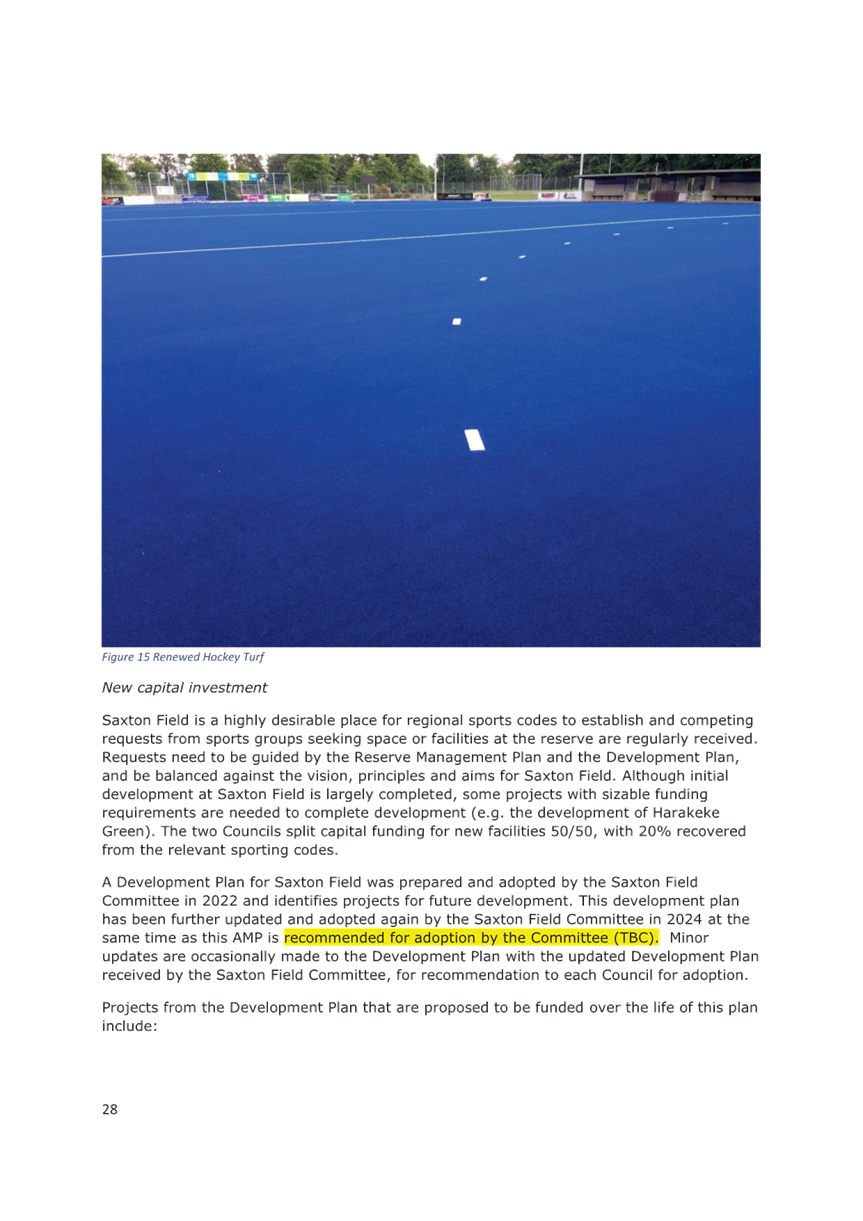
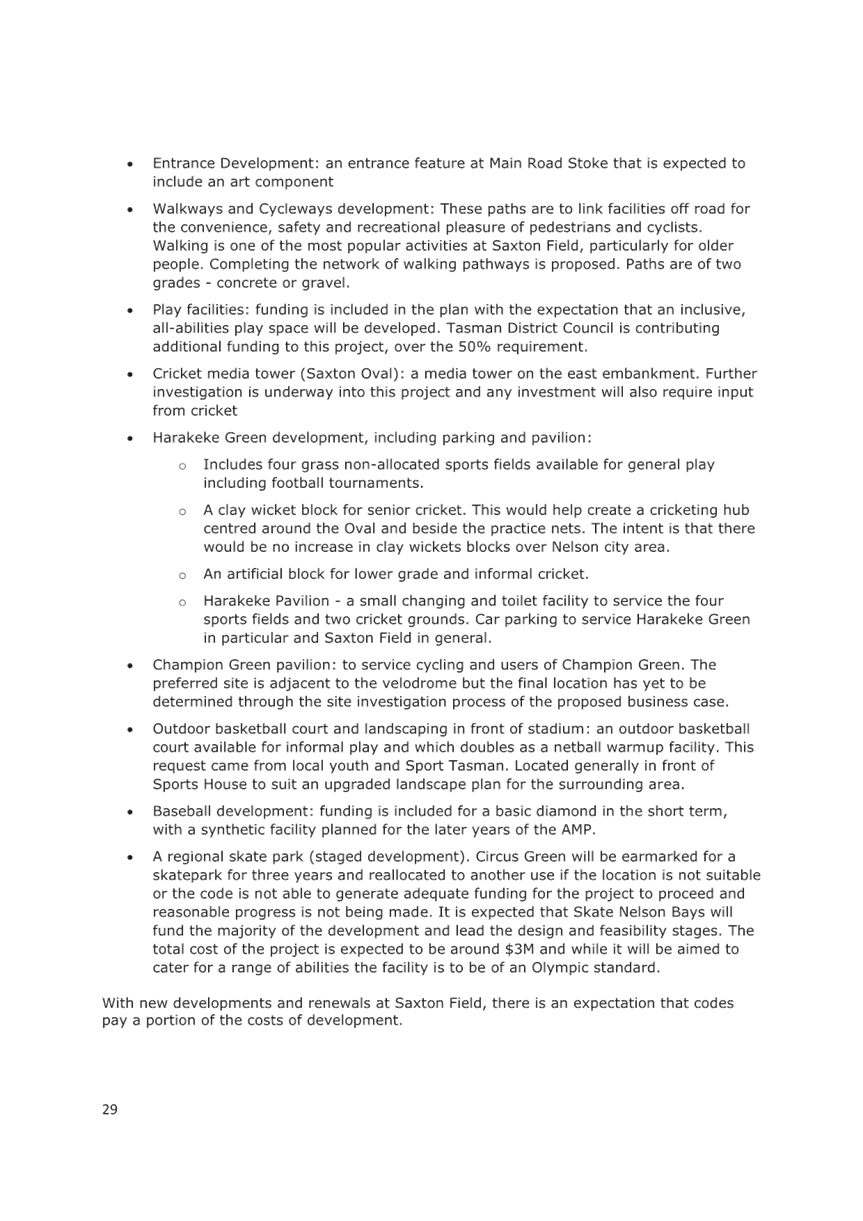
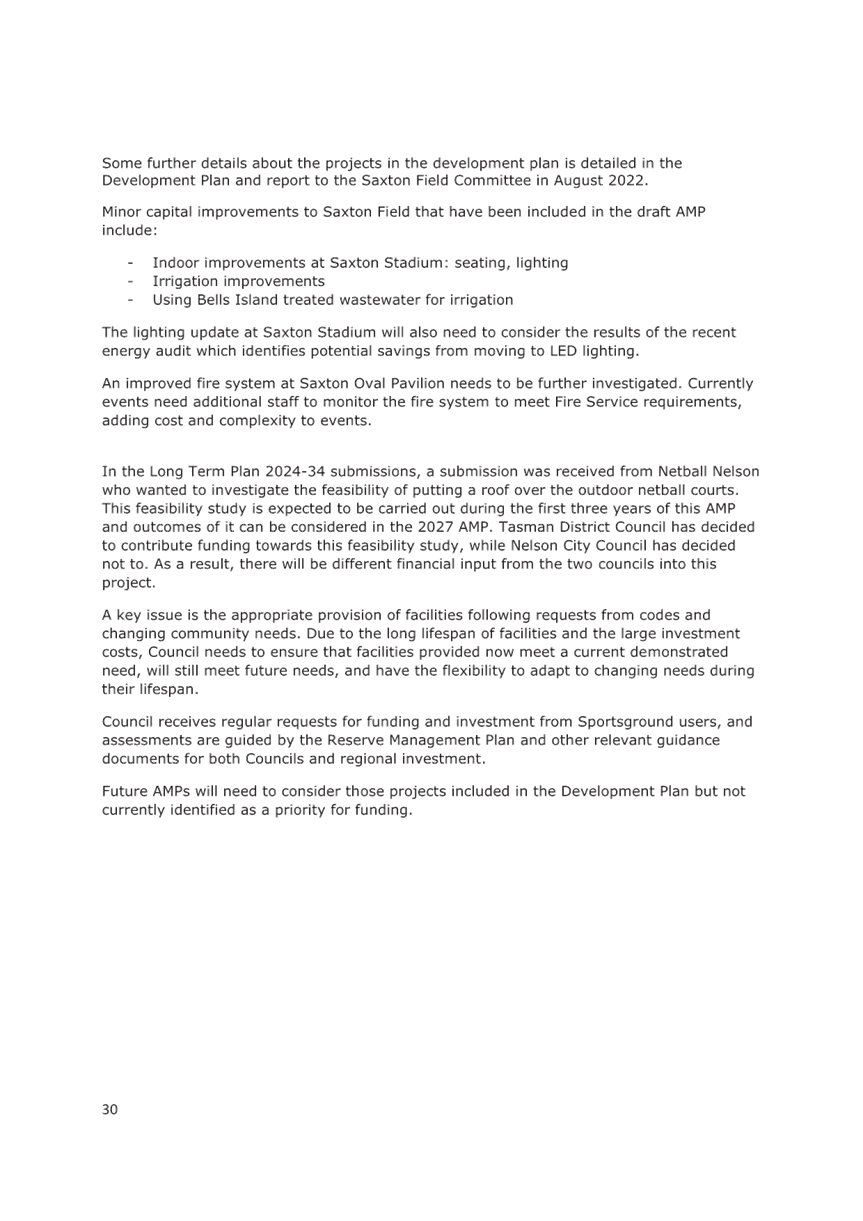
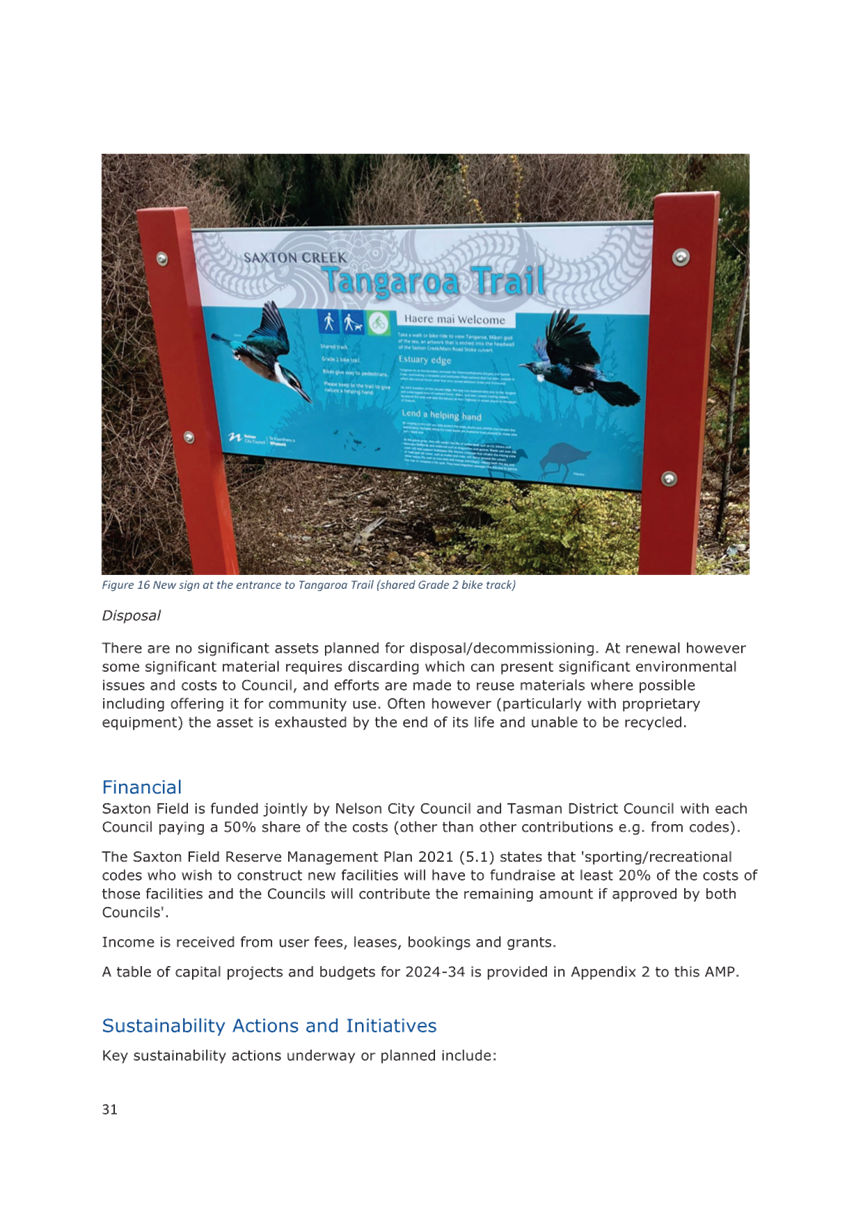
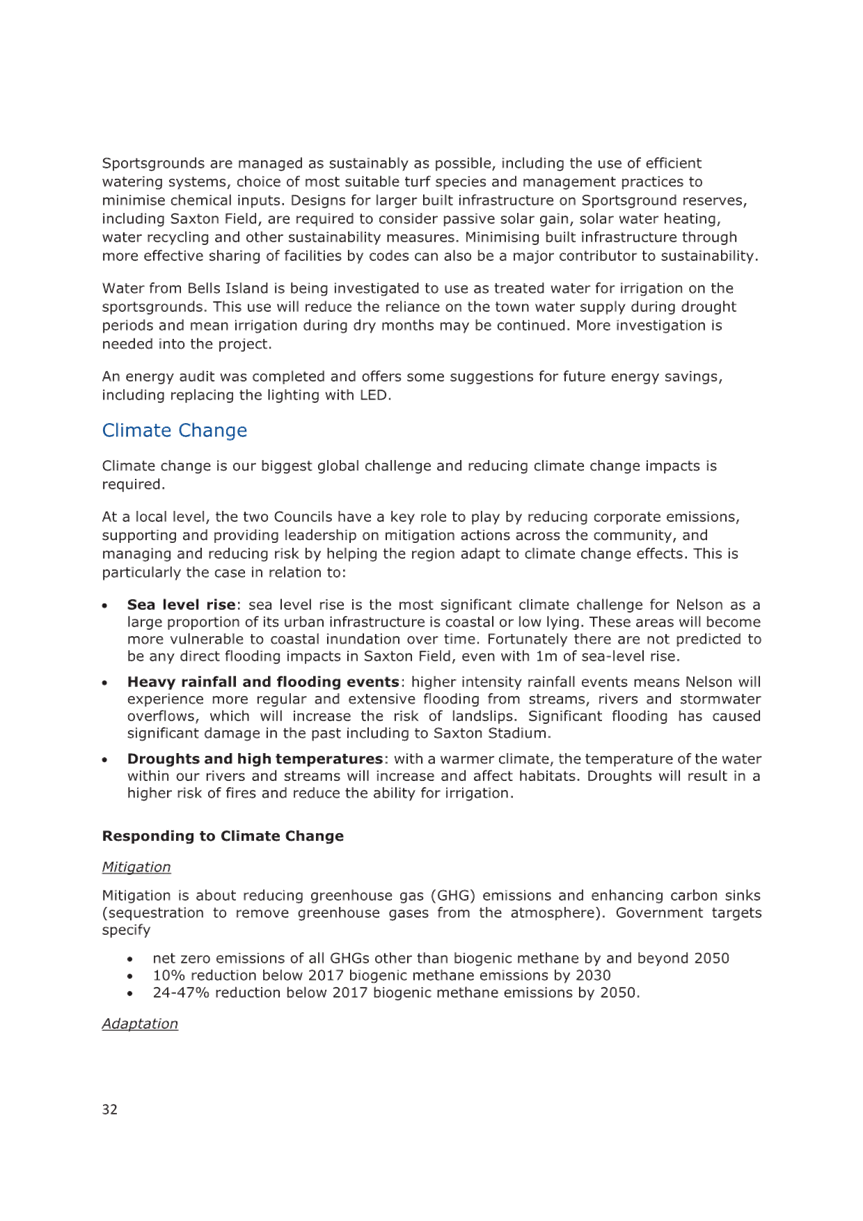
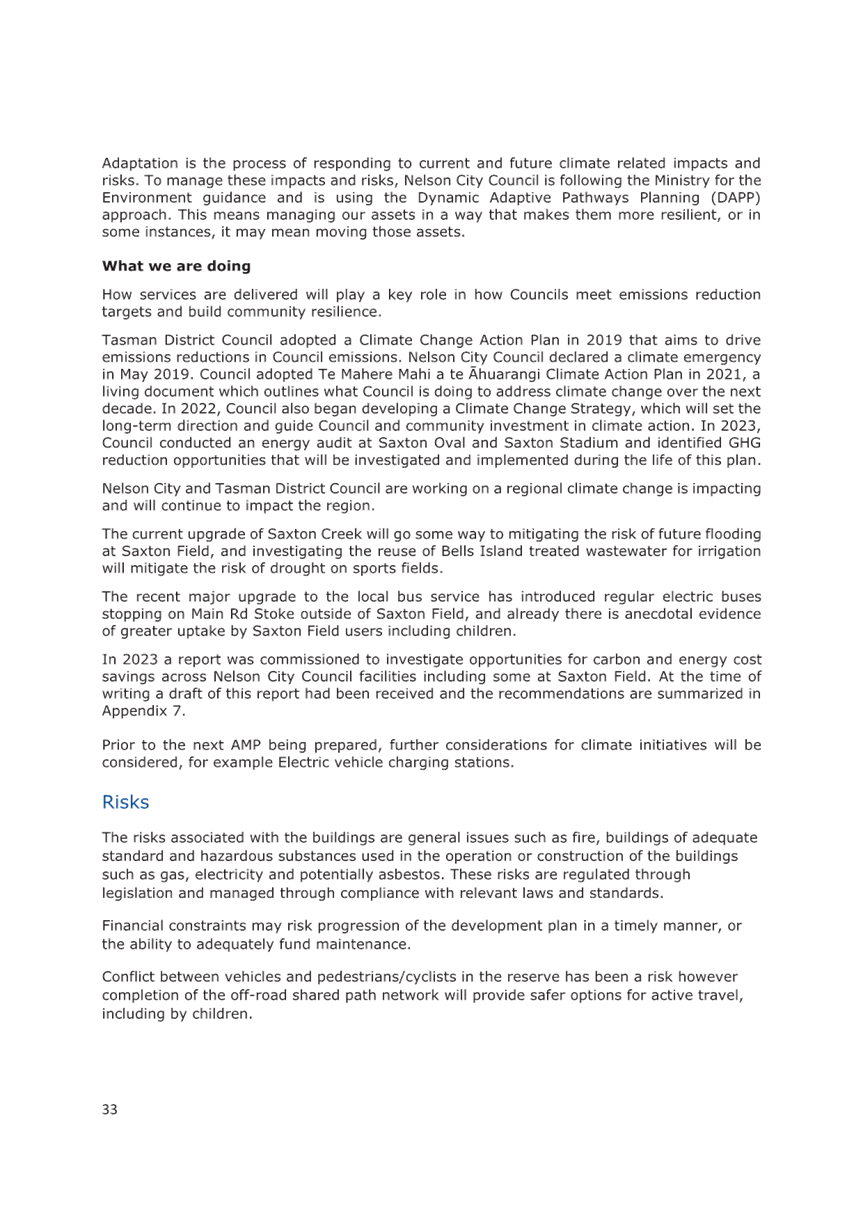
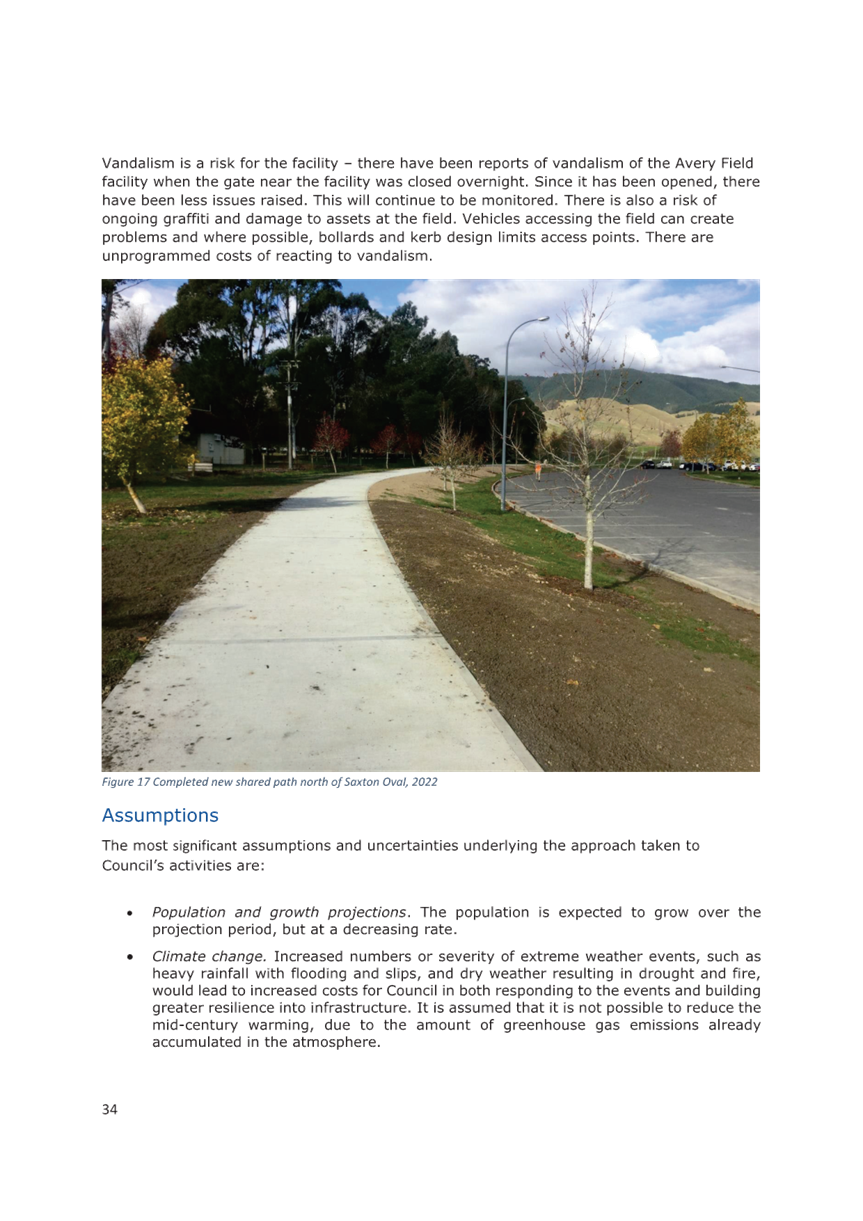
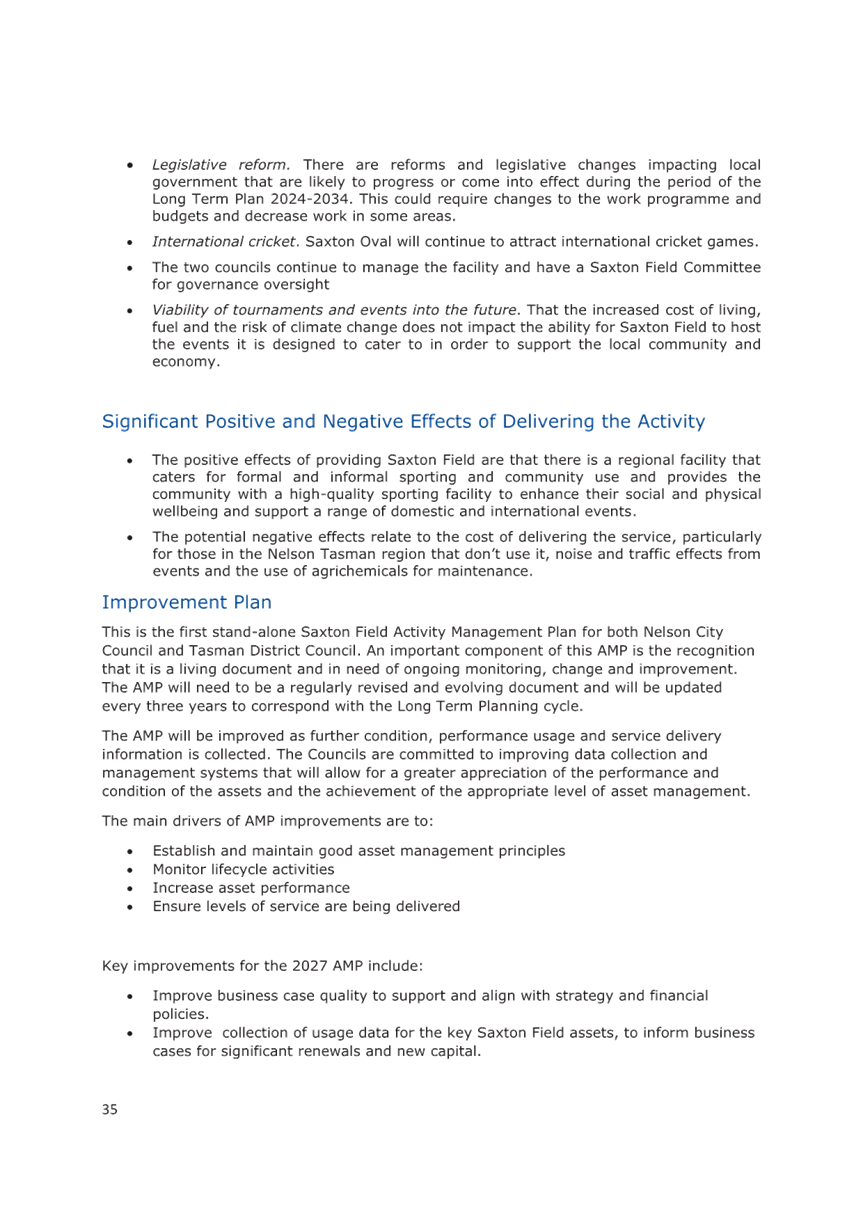
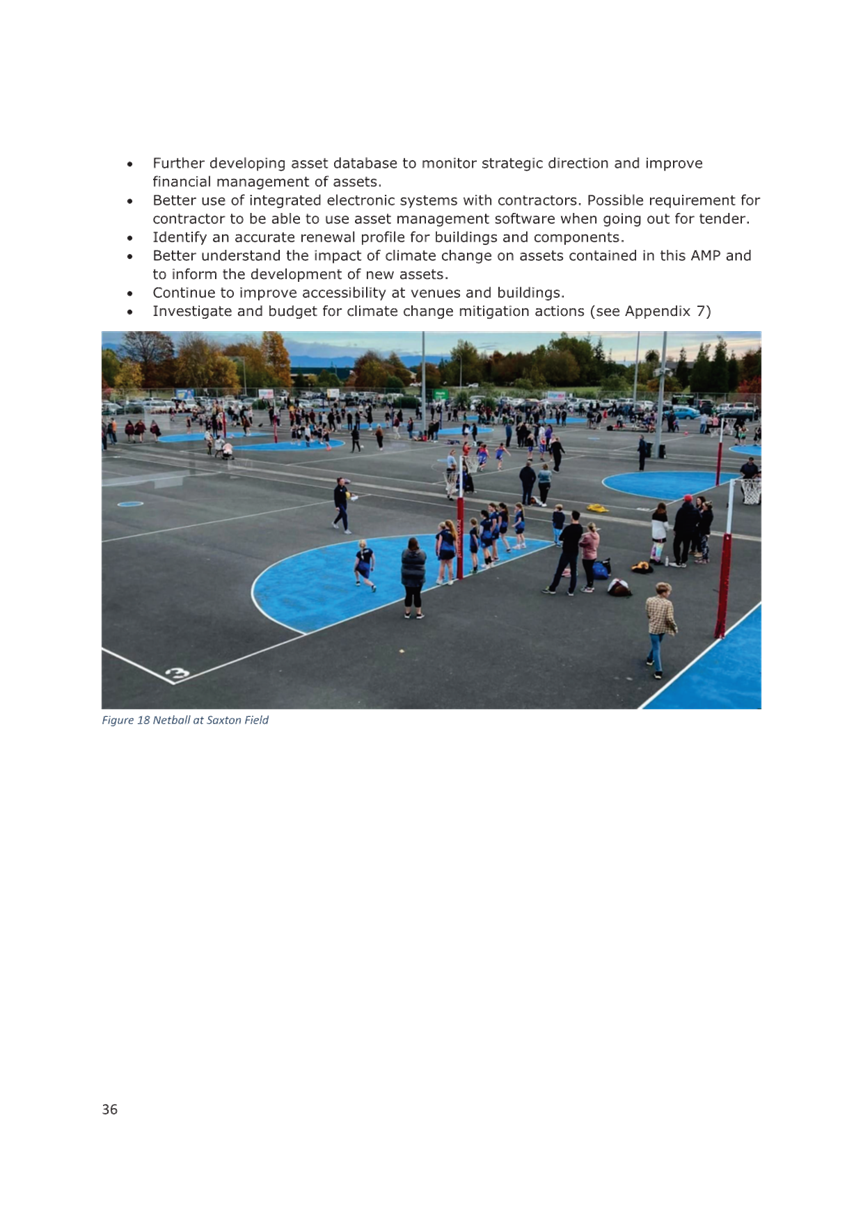


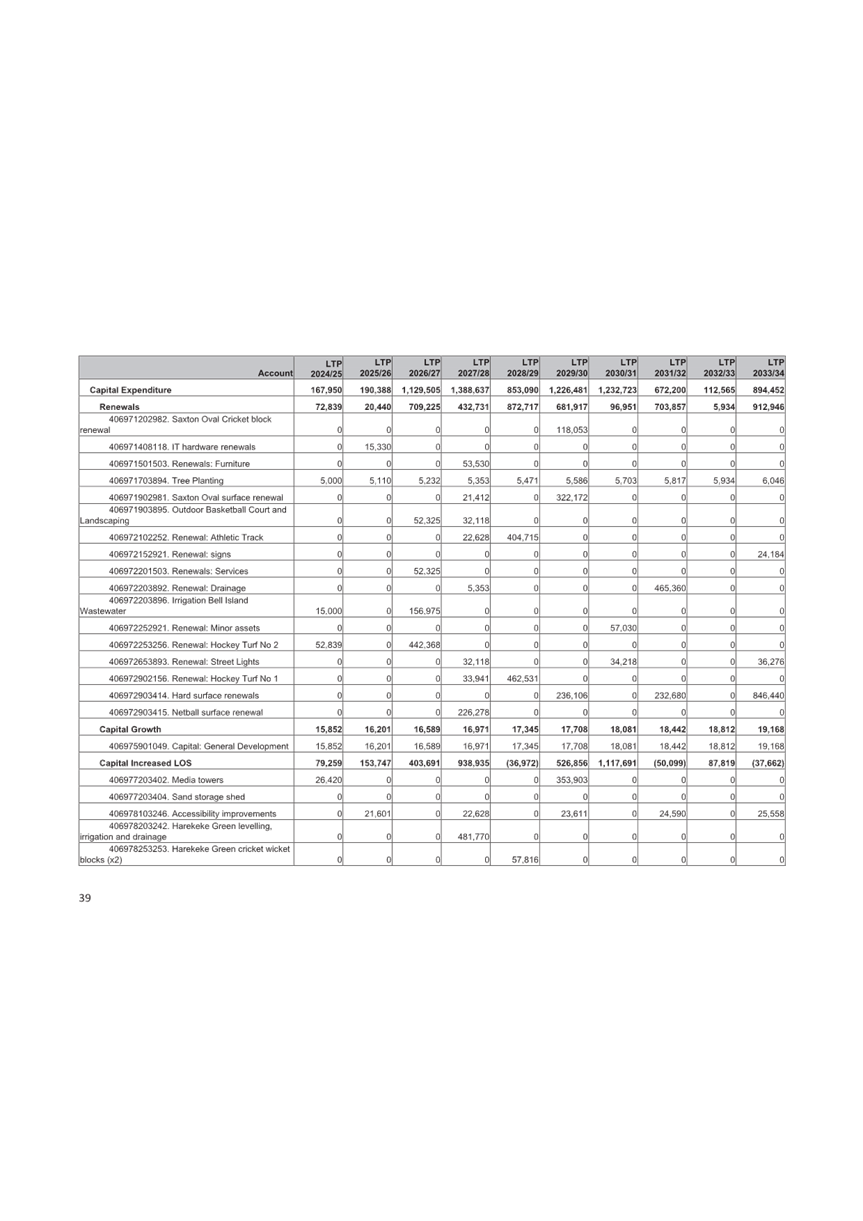
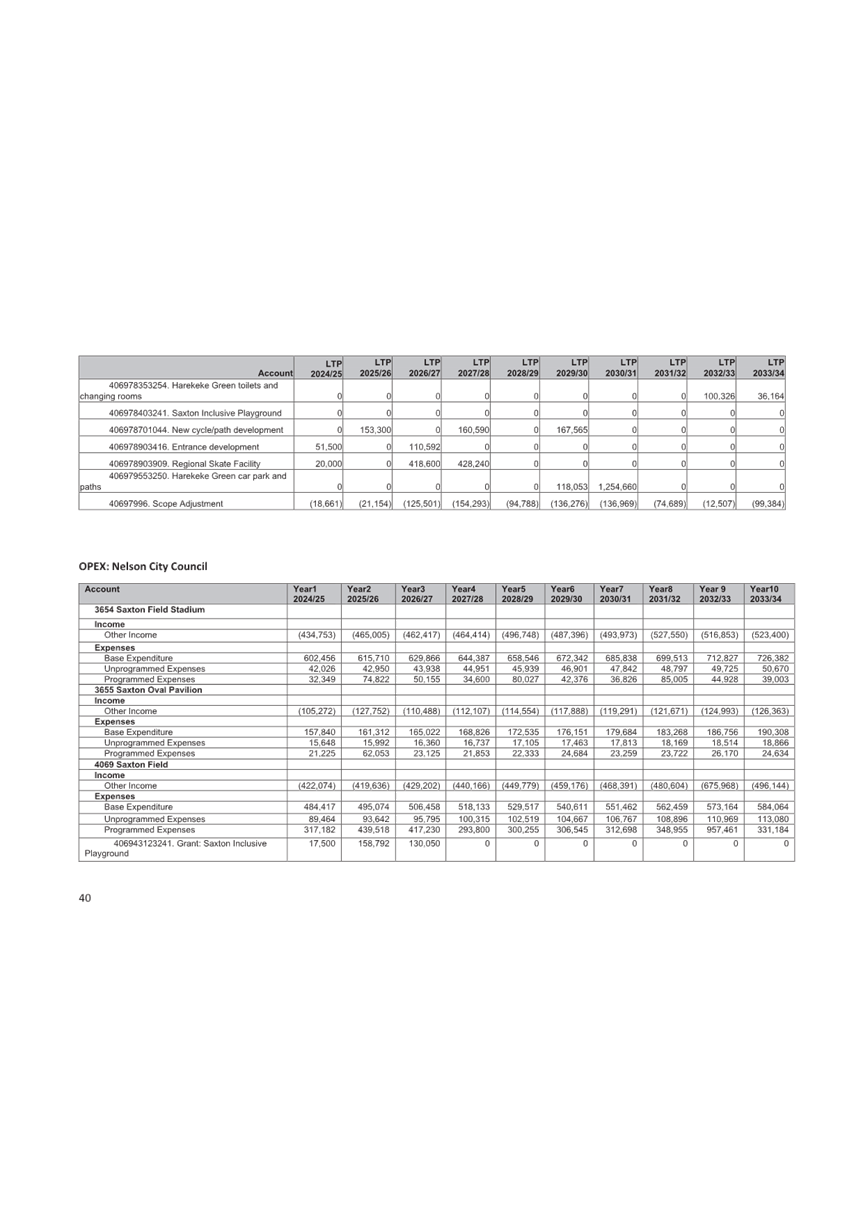


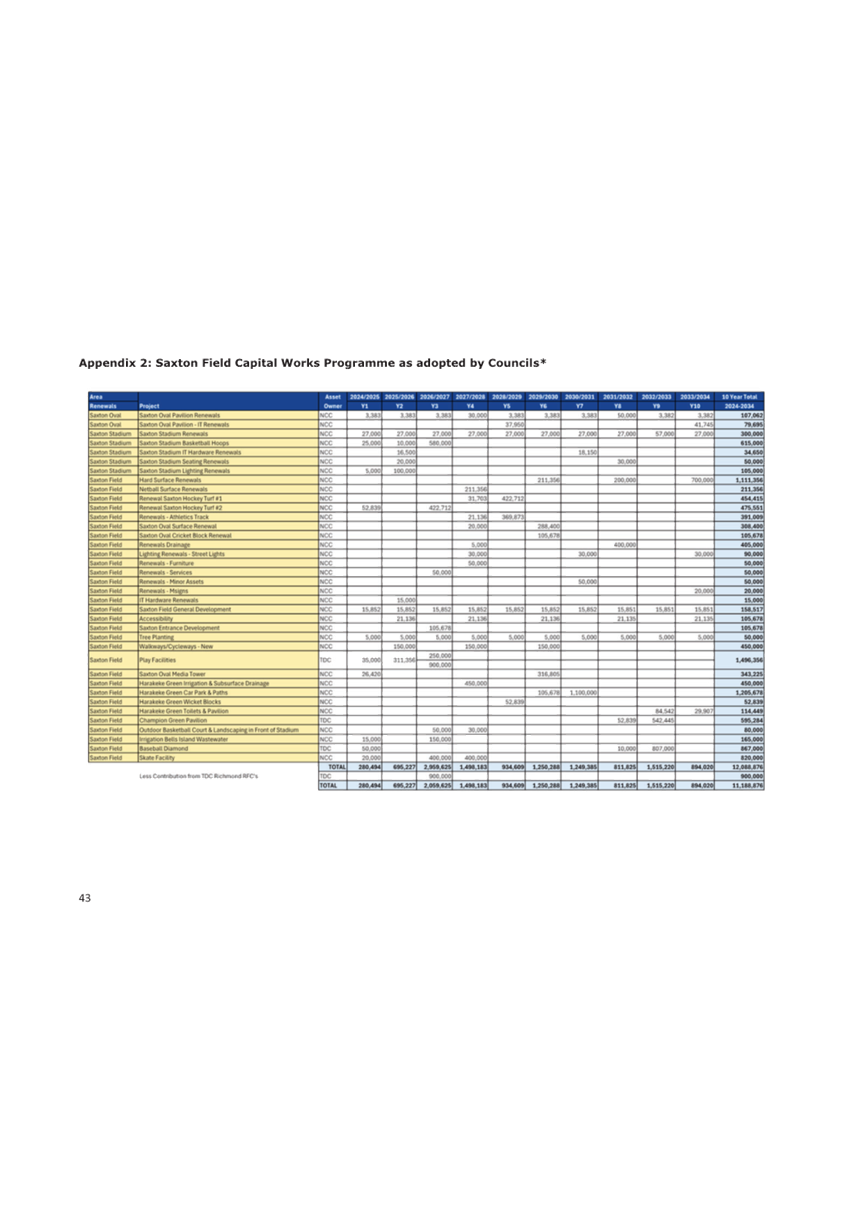
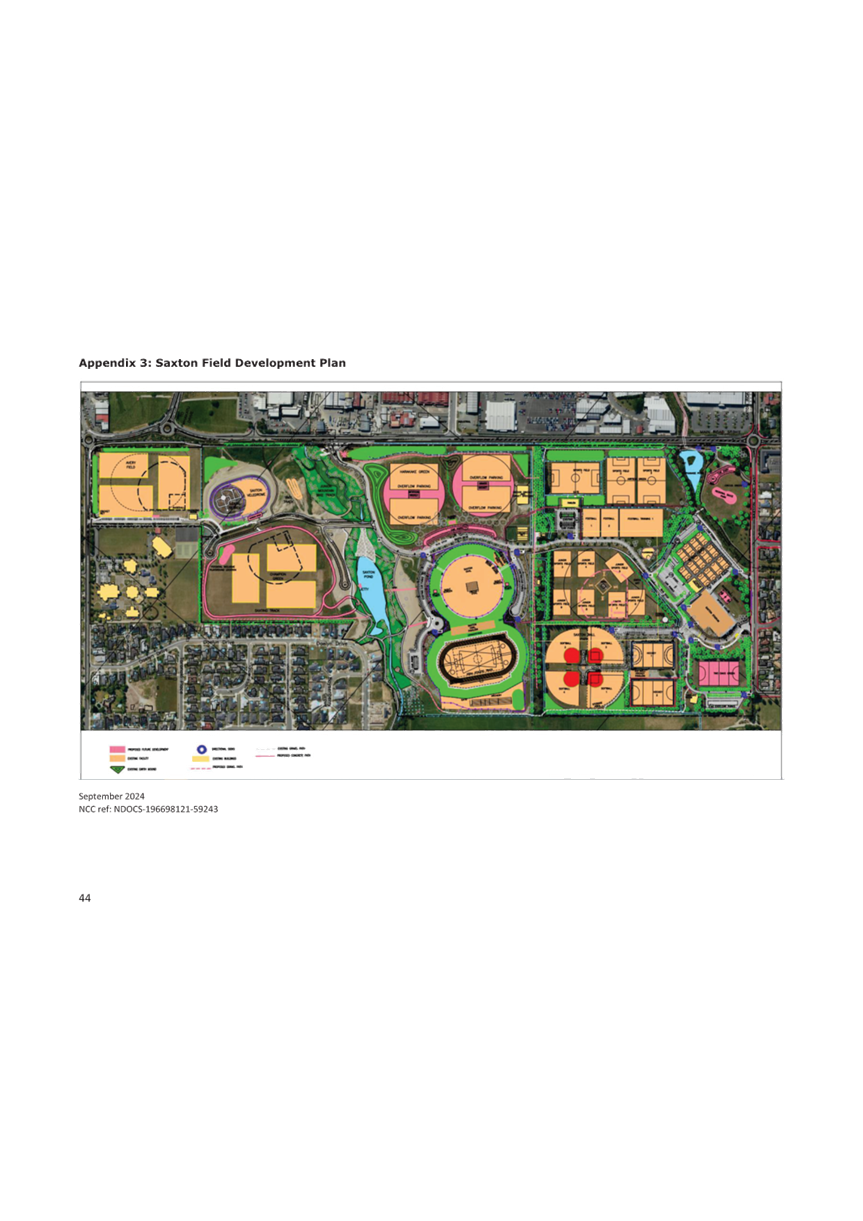
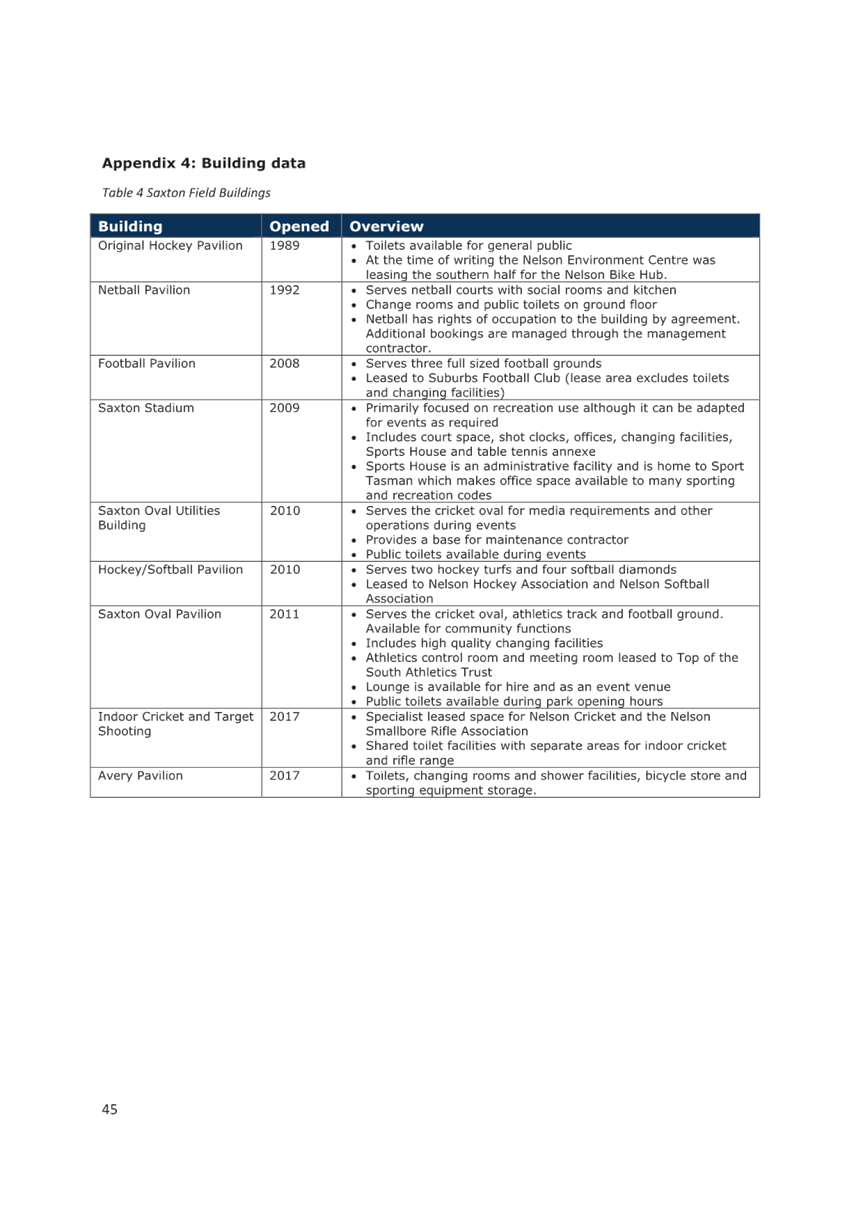
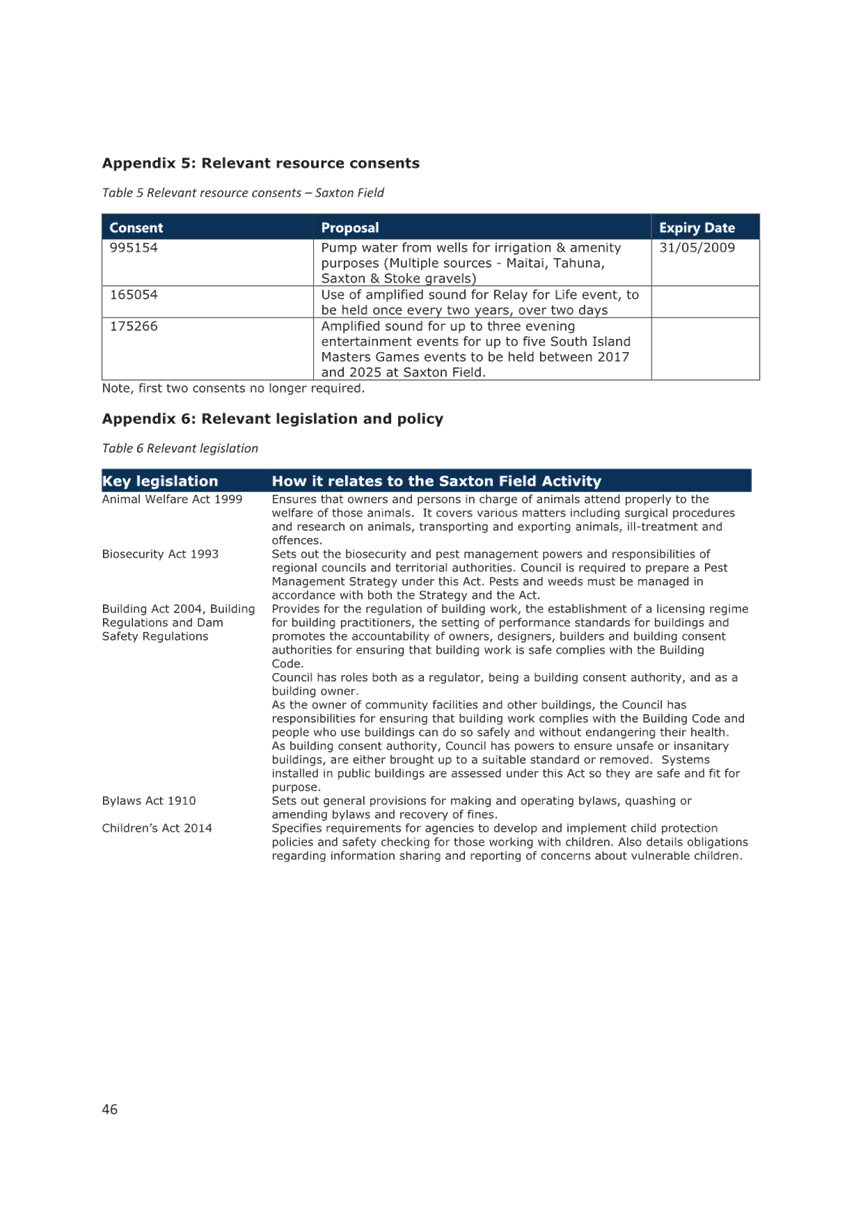
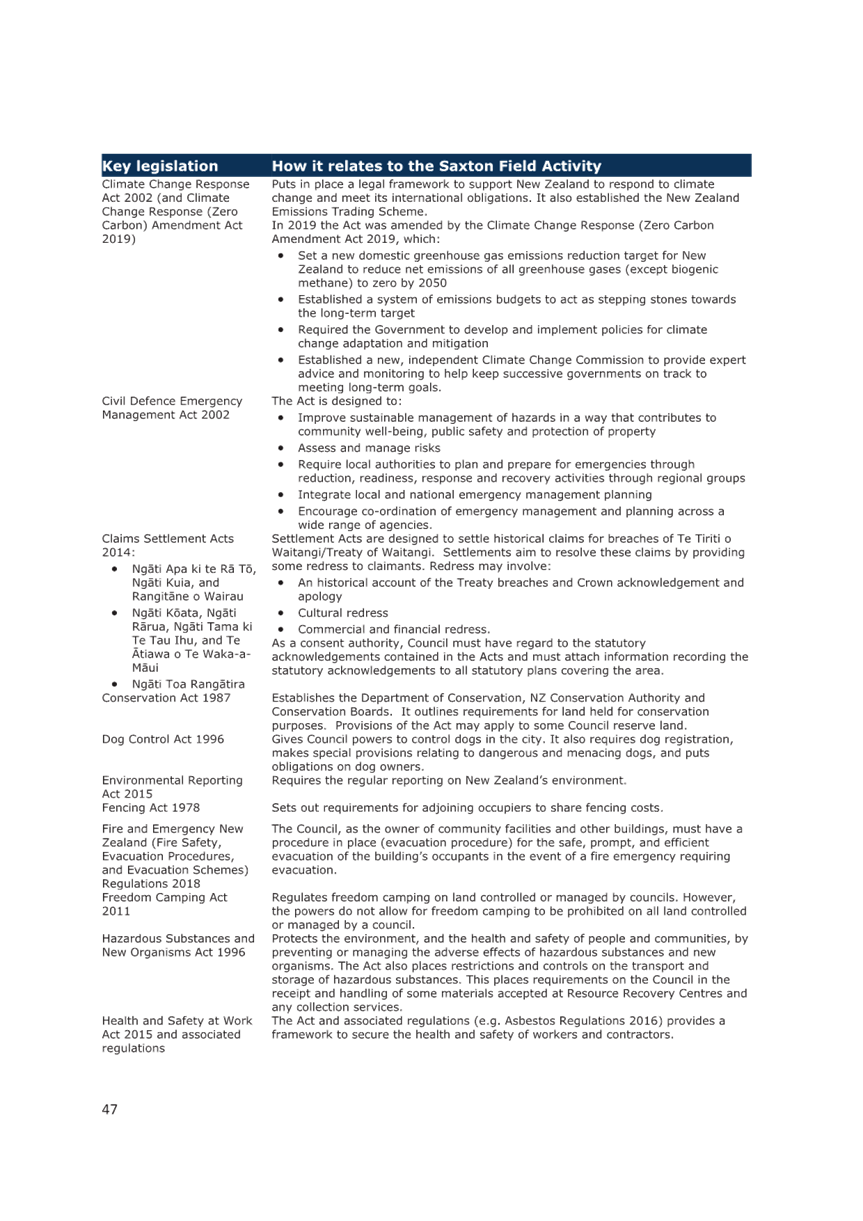
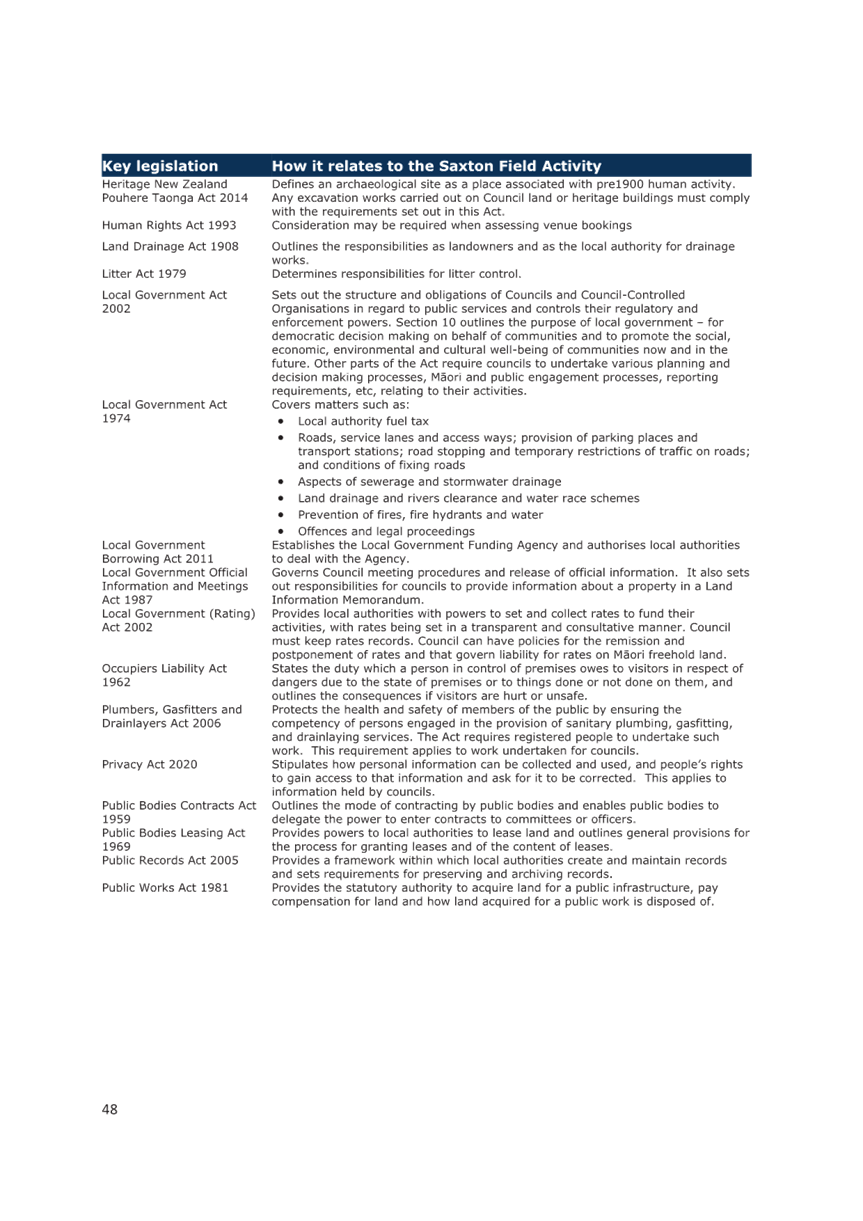

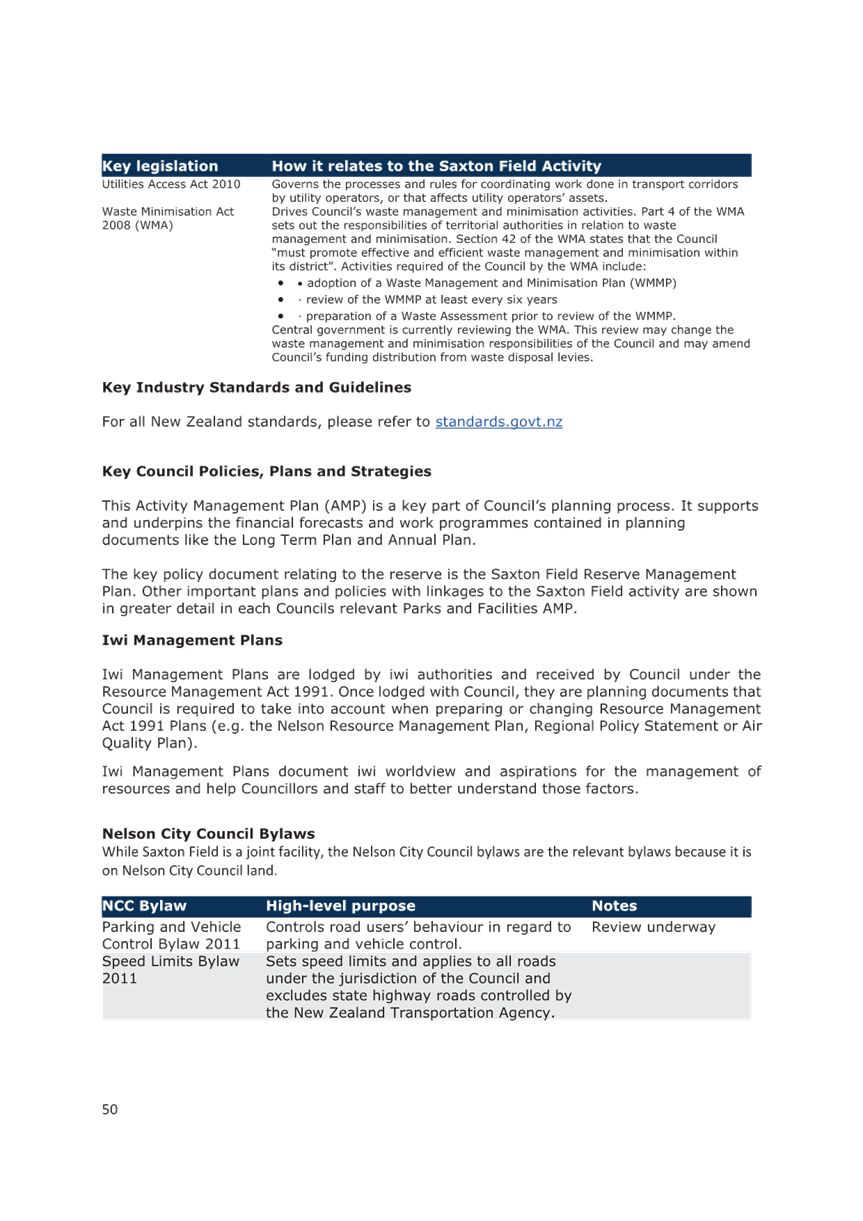
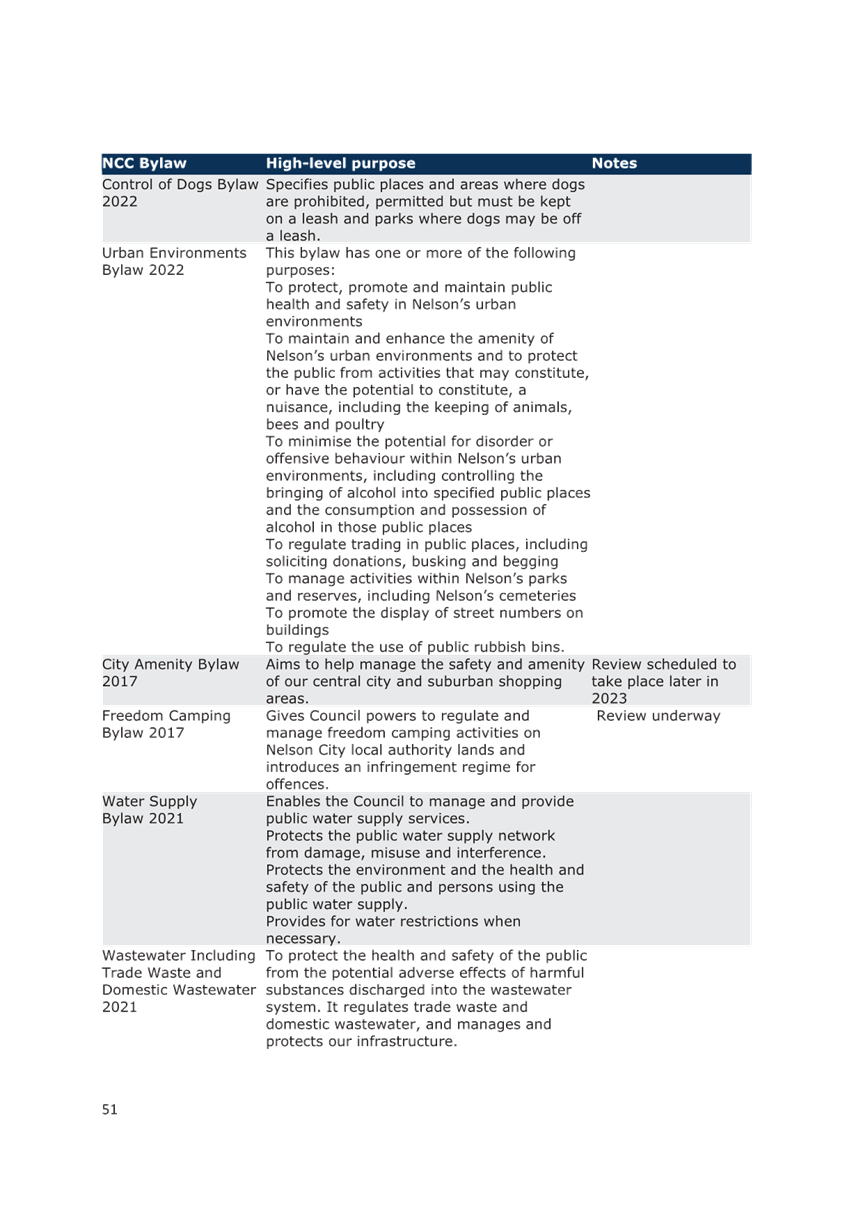

Tasman District Council Agenda – 11 December 2024
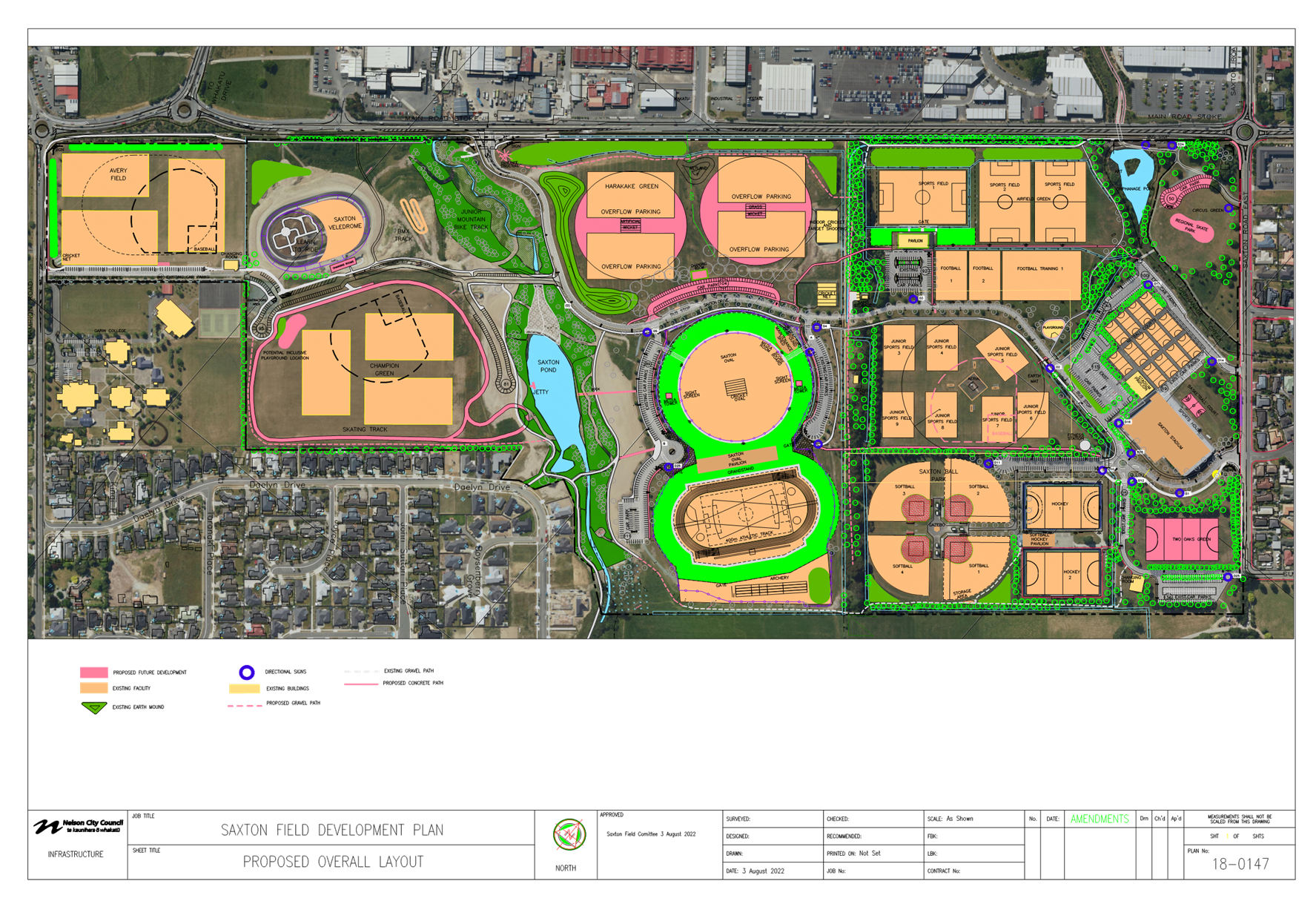
Tasman District
Council
Agenda – 11 December 2024
7.4 Motueka Harbour and Coastal Works Reserve Fund
Policy
|
Report
To:
|
Tasman
District Council
|
|
Meeting
Date:
|
11 December
2024
|
|
Report
Author:
|
Richard
Kirby, Group Manager - Community Infrastructure; Nick Chin, Enterprise and
Property Services Manager
|
|
Report
Authorisers:
|
Richard
Kirby, Group Manager - Community Infrastructure
|
|
Report
Number:
|
RCN24-12-4
|
1. Purpose
of the Report / Te Take mō te Pūrongo
1.1 To
present the recommendations from the Motueka Community Board on the Motueka
Harbour and Coastal Works Reserve Fund Policy for Council consideration.
2. Summary
/ Te Tuhinga Whakarāpoto
2.1 The
following was resolved at the Motueka Community Board meeting on 13 November
2024 and this was based on previous draft of the policy dated 23 September
2024.
That the Motueka Community
Board
1. receives
the Motueka Harbour and Coastal Works Reserve Fund Policy Update RMCB24-10-2;
and
2. recommends that the Tasman District adopts the draft
amended Motueka Harbour and Coastal Works Reserve Fund Policy
Update in Attachment 1 of the agenda report, with an amendment to include:
· That the
Motueka Community Board must be consulted on all proposed expenditure from the
Motueka Harbour and Coastal Works Reserve Fund.
2.2 The
report and attachment is item 8.4 of the Motueka Community Board 13
November 2024 meeting agenda.
2.3 The
referred Motueka Harbour and Coastal Works Reserve Fund Policy is contained in Attachment
1.
3. Recommendation/s
/ Ngā Tūtohunga
That the Tasman District
Council
1. receives
the Motueka Harbour and Coastal Works Reserve Fund Policy report, RCN24-12-4;
and
2. adopts the Motueka Harbour and Coastal
Works Reserve Fund Policy in Attachment 1 to the agenda report; and
3. notes that the Motueka Community Board
has referred this Policy to Council with a request that Motueka Community Board
be consulted on all proposed expenditure from the Motueka Harbour and Coastal
Works Reserve Fund.
|
1.⇩
|
Motueka
Harbour and Coastal Works Reserve Fund Policy ver 19 November 2024
|
209
|
Tasman District
Council
Agenda – 11 December 2024


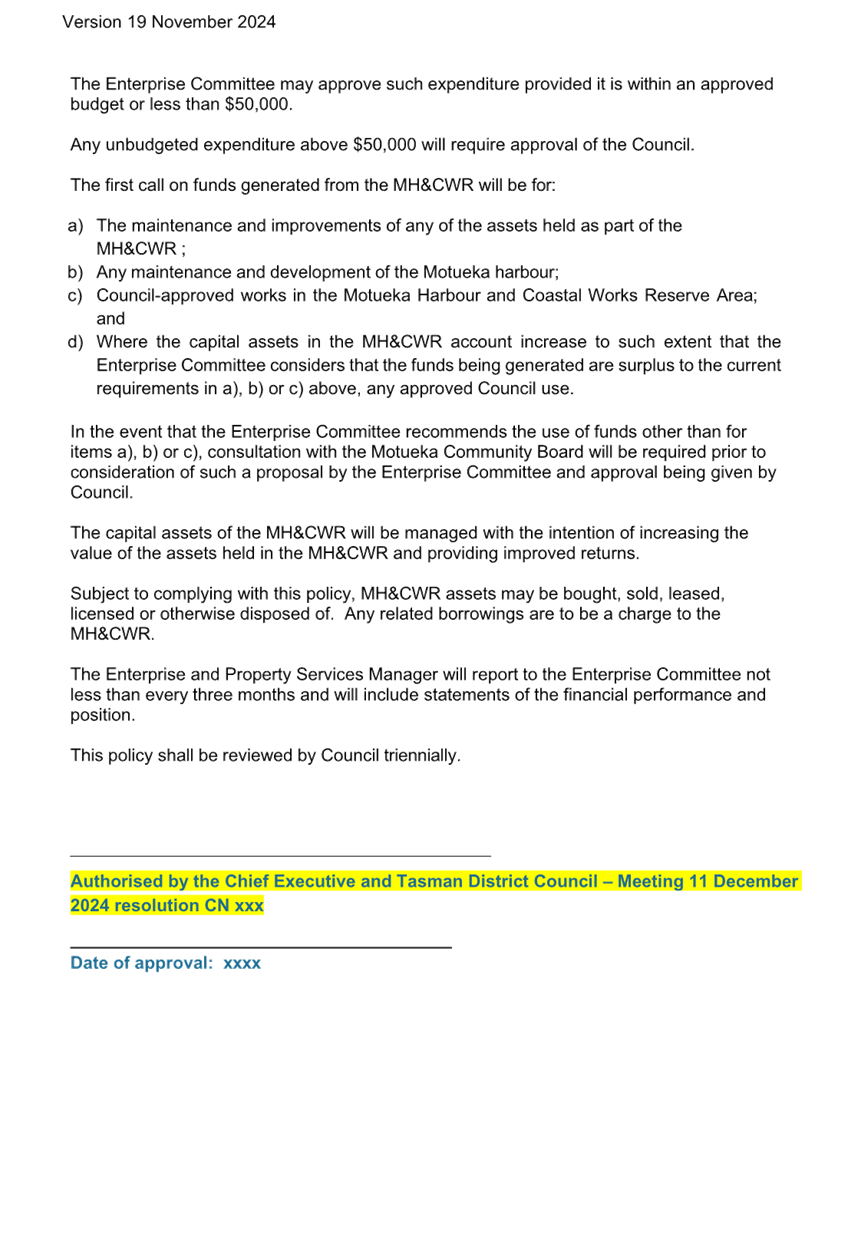
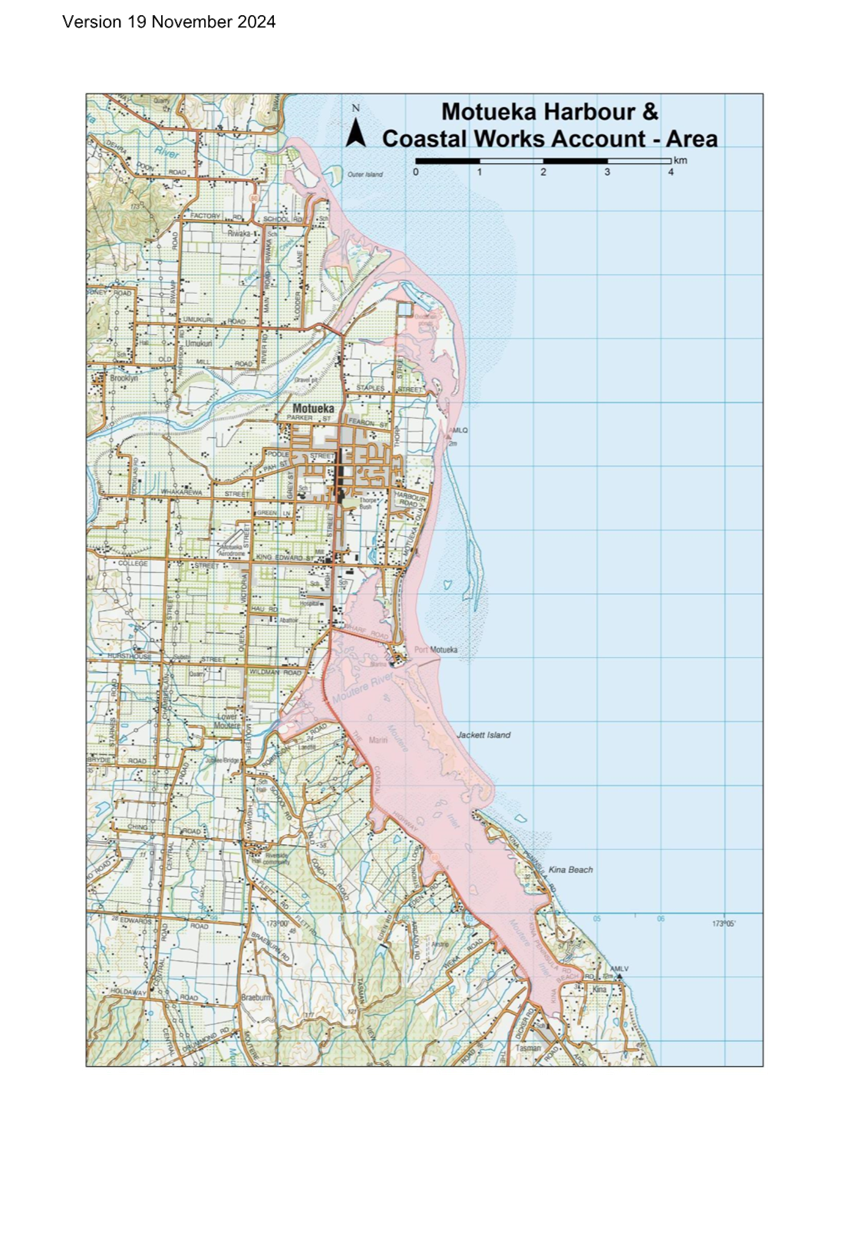
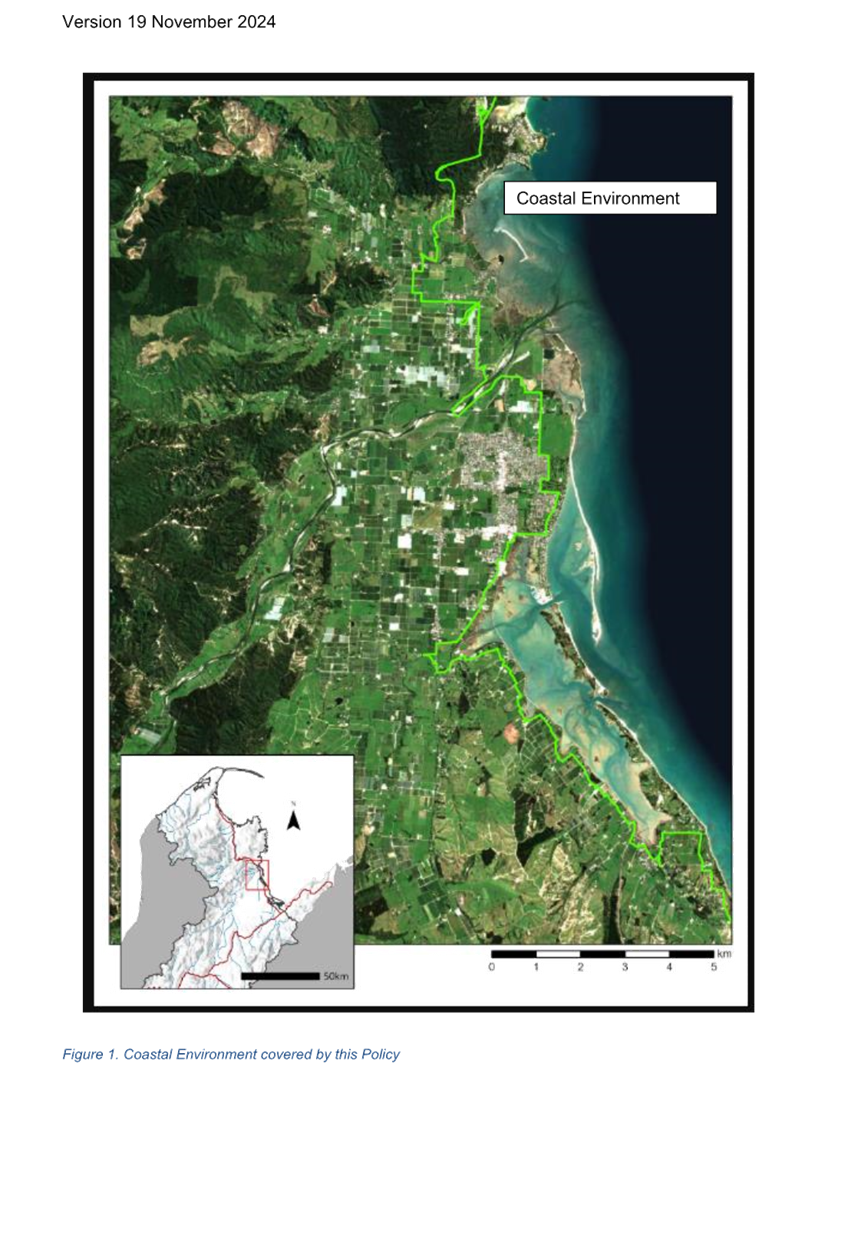
Tasman District Council Agenda – 11 December 2024
7.5 Amendment to the Tasman District Council
Traffic Control Devices Register and Traffic Control Bylaw 2016
Decision Required
|
Report
To:
|
Tasman
District Council
|
|
Meeting
Date:
|
11
December 2024
|
|
Report
Author:
|
Mike
van Enter, Senior Transportation Engineer
|
|
Report
Authorisers:
|
Jamie
McPherson, Transportation Manager
|
|
Report
Number:
|
RCN24-12-5
|
1. Purpose
of the Report / Te Take mō te Pūrongo
1.1 The
purpose of this report is to gain the Council’s approval to make changes
to the Traffic Control Devices Register and map display, to ensure these are
enforceable under the Traffic Control Bylaw 2016.
2. Summary
/ Te Tuhinga Whakarāpoto
2.1 The
Council’s Traffic Control Bylaw 2016, and its accompanying Traffic
Control Devices Register and map display, is the mechanism for the Council to
record all authorised traffic control devices such as parking restrictions and
regulatory traffic signs.
2.2 This
report requests the Council’s approval for various changes and additions
to the Traffic Control Devices Register.
2.3 A
summary of the changes can be found in Section 5, and a diagrammatic
description of each change is in Attachment 1.
3. Recommendation/s
/ Ngā Tūtohunga
That the Tasman
District Council
1. receives
the Amendment to the Tasman District Council Traffic Control Devices Register
and Traffic Control Bylaw 2016 report RCN24-12-5; and
2. approves amendments to regulations, controls,
restrictions and prohibitions in the Traffic Control Devices Register of the
Tasman District Traffic Control Bylaw 2016 (Chapter 7 of Tasman
District’s Consolidated Bylaw) pursuant to clause 7(3) of the Bylaw, as
proposed by the Diagrammatic Descriptions and associated GIS co-ordinates in
Attachment 1 to the agenda report (except for the proposal to relocate the bus
stop outside 78 Berryfield Drive), with effect from 29 November 2024 or the
date the traffic control device is installed, whichever is later; and
3. approves the existing bus stop outside 78 Berryfield
Drive to remain as the preferred location; and
4. notes that the Traffic Control Devices Register of the
Traffic Control Bylaw 2016 will be updated accordingly.
4.1 The
Council’s Traffic Control Bylaw enables the Council to establish, alter
or remove traffic control devices by resolution, amending the Traffic Control
Devices Register and map display.
4.2 Parking
restrictions and certain regulatory Traffic Control Devices are managed through
this bylaw. Changes require a resolution of the Council to become legally
enforceable.
4.3 Consultation
should be appropriate and in accordance with the Local Government Act Section
82, which sets out the principles of consultation. The consultation principles
include:
4.3.1 That
persons who will or may be affected by, or have an interest in, the decision or
matter should be provided by the local authority with reasonable access to
relevant information in a manner and format that is appropriate.
4.3.2 The
nature and significance of the decision or matter, including its likely impact
from the perspective of the persons who will or may be affected by, or have an
interest in, the decision or matter.
4.3.3 The
costs and benefits of any consultation process or procedure.
4.4 Some
of the proposed Traffic Control Device changes are considered to have minor or
very isolated effects. Where the effects are considered isolated, consultation
is typically via letter inviting feedback from adjacent property owners and
businesses.
5. Analysis
and Advice / Tātaritanga me ngā tohutohu
Residential
Parking Management
5.1 Crescent
Street, Richmond – new no parking restriction to allow reverse in
driveway manoeuvre. Feedback received not specifically opposed to the
additional parking restriction.
5.2 Mayer
Crescent, Wakefield – new no parking restriction around the cul-de-sac
turning head. Feedback received not specifically opposed to the additional
parking restriction.
5.3 Waimea
West Road – new no parking restriction. Feedback received not
specifically opposed to the additional parking restriction.
5.4 Stephens
Bay – parking restrictions at the intersections of:
5.4.1 Riwaka-Kaiteriteri
Road / Stephens Bay Road,
5.4.2 Stephens
Bay Road / Anarewa Crescent,
5.4.3 Stephens
Bay Road / Cook Crescent, and
5.4.4 Anarewa
Crescent / Tapu Place.
5.5 The
Council received a request to demarcate a safe place for pedestrians to walk on
Stephens Bay Road due to intensive parking over the Christmas period which
includes boat trailers. Twenty-five submissions were received and a meeting
with residents was arranged which resulted on a focus on main points:
5.5.1 Parking
restrictions around corners of intersections to discourage illegal
parking,
5.5.2 A
lower Speed Limit on local roads,
5.5.3 Speed
tables to encourage slower speeds, and
5.5.4 Trimming
roadside vegetation.
5.6 Submissions
received were all in support of the revised proposal.
Commercial Traffic Management
5.7 Pah
Street no stopping restriction to keep vehicles queued at the traffic signals
clear of the Countdown Supermarket access, allowing right turn in movements.
Public Parking Management
5.8 Decks
Reserve, new mobility parking space adjacent to the Community House, requested
by Community House.
5.9 It
is noted that parking within Decks Reserve, including any class restricted or
time restricted parking, is not available during the Motueka Sunday Market. The
Motueka Sunday Market Limited occupies this space with a Licence to Occupy
which is currently being renewed as per Figure 1 below. The decision in
this report has no impact on the Market or parking availability during the
Market.
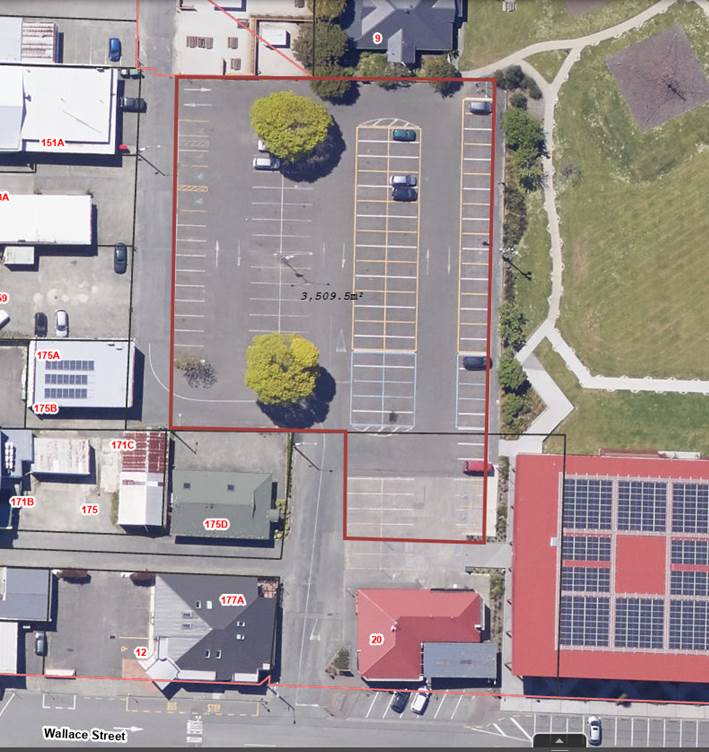
Figure
1: Proposed License to Occupy area.
Bus Stop Amendments
5.10 Grey
Street, Motueka – new parking restriction to allow bus to manoeuvre out
of the bus stop.
5.11 Grey
Street, Motueka – existing Bus Stop and School Bus Stop to be added to
our Bylaw schedule. The school bus stop is historic, and no physical changes
are proposed. The public bus stop was added in 2023 with no further feedback
received.
5.12 Grey
Street, Motueka – relocate Bus Stop. The bus stop was approved on 22 June
2023 outside of number 38. In response to feedback this was implemented outside
of number 36. Update Bylaw schedule to match implemented location.
Berryfield Drive Bus Stop
5.13 Berryfield
Drive proposal to relocate existing Bus Stop outside 78 Berryfield Drive.
Residents adjacent to the existing bus stop have requested that the bus stop be
relocated away from their property frontage due to their concerns about loss of
privacy, annoyance from bus patrons and intrusion of view. Some of their
concerns related to the bus parking at the bus stop for extended periods when
the eBus service began, and which has now been addressed in conjunction with
the bus operator. The eBus schedule does not require the bus to dwell at this
bus stop.
5.14 An
alternative location 210m west and outside 94 Berryfield Drive was investigated
but is not recommended due to being a less central location within the
residential, commercial and school catchment area and potentially increasing
the walk distance for some of the 782 monthly users. The residents adjacent to
the proposed location are also opposed to the relocation, with concerns
relating to loss of privacy and outlook.
5.15 Another
possible alternative location 125m west was considered unsuitable due to a
conflict with driveways.
5.16 Figure
1 below shows a 500m-radius circle around the existing bus stops (green
circles) and the proposed alternative location (orange circle). The existing
bus stop provides coverage to a greater number of residential properties,
particularly in the Fairmile Road/Chertsey Road/Hanworth Road area.
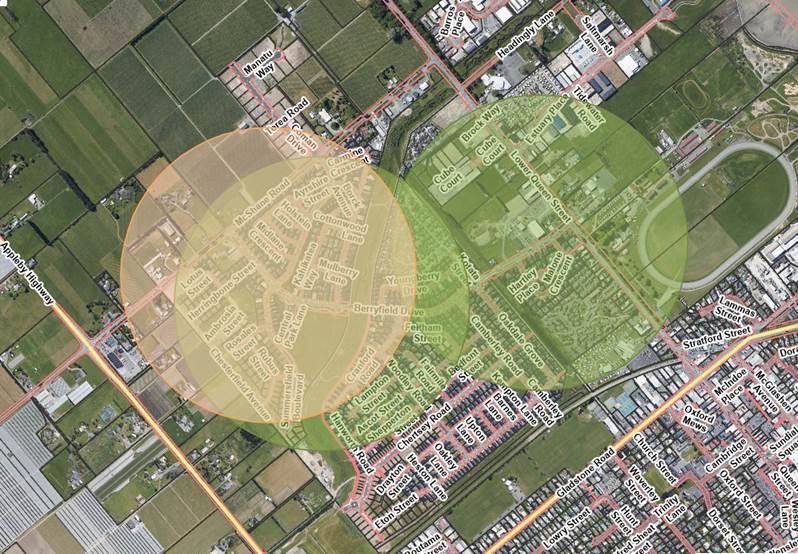
Figure
1. 500m radius catchments around bus stop locations in Berryfield area. Green
shows existing, orange shows a proposed relocation of the bus stop near #78
Berryfield Drive to a location 210m northwest, outside #94 Berryfield Drive.
5.17 Overall,
the benefits of relocating the bus stop (satisfies current affected adjacent
residents) do not appear to outweigh the disbenefits (less coverage of
residential properties and will dissatisfy other affected adjacent residents).
On this basis it is recommended to retain the current bus stop location.
School Street
5.18 Church
Street Road Closed to Motor Vehicles Monday – Friday 8am-4pm on school
days. The Church Street school day closure pilot has been in operation since
July 2023, with the school rolling out temporary bollards daily during the
closure period. Richmond School has noticed a greater sense of safety for their
students crossing over onto the nearby field. Feedback has been received
via a letter drop and Shape Tasman survey. Sixty eight percent of respondents
were in favour of the closure, thirty two percent were opposed to the closure.
A full feedback summary is included in Attachment 2.
6.1 The
options are outlined in the following table:
|
Option
|
Advantage
|
Disadvantage
|
|
1.
|
Approve changes proposed in the report and in Attachment
1, except for the proposed shifting of the Berryfield Drive bus stop, with
effect from 29 November 2024, or the date the traffic control device is
installed, whichever is later.
This is the recommended option.
|
Improved function and safety of the road network at these
locations.
Positive feedback from the community who raised some of
the concerns and proposals with Council staff.
|
Minor reduction in on-road parking.
Affected residents adjacent to Berryfield Drive bus stop
remain dissatisfied.
|
|
2.
|
Approve some of the proposed changes.
|
Some improved function and safety of the road network at
these locations.
There would be some positive feedback from the community
who raised concerns with some of the proposals from the Council.
|
Minor reduction in on-road parking.
If changes are not approved, there could be safety issues
and negative feedback from the community.
|
|
3.
|
Do not approve the proposed changes.
|
Nil identified.
|
There could be safety issues and negative community
feedback.
|
6.2 Option
one is recommended.
7.1 The
proposed changes meet the requirements of the Tasman District Council Traffic
Control Bylaw 2016.
8. Iwi
Engagement / Whakawhitiwhiti ā-Hapori Māori
8.1 No
specific iwi engagement has occurred for the changes. These changes are
relatively minor operational issues and isolated in effects.
9. Significance
and Engagement / Hiranga me te Whakawhitiwhiti ā-Hapori Whānui
9.1 The
following table describes the level of significance of this decision. Overall,
the level of significance is considered low as the changes are generally minor
and we have consulted with directly affected residents, businesses, and
stakeholders.
|
|
Issue
|
Level of Significance
|
Explanation of Assessment
|
|
1.
|
Is there a high level of public
interest, or is decision likely to be controversial?
|
Low
|
Changing road layouts can create
a high level of interest, particularly on more highly trafficked roads.
This decision affects a
relatively small number of roads in the District.
The changes on Church Street are
associated with the Richmond Transport Choices project and have been in place
as a trial receiving feedback.
For non-project changes, Council
staff have consulted with immediately adjacent landowners.
Several proposed changes have
come from members of the community who are directly affected.
There will be improved road
safety or functionality for many transport system users at the locations of
the proposed changes.
|
|
2.
|
Are there impacts on the social,
economic, environmental or cultural aspects of well-being of the community in
the present or future?
|
Low
|
Good management of traffic
controls and parking can contribute towards the success of a place; poorly
managed and designed traffic controls and parking can undermine efforts to
create highly liveable urban areas.
The parking restrictions
proposed are to address issues identified.
|
|
3.
|
Is there a significant impact
arising from duration of the effects from the decision?
|
Low
|
Traffic control devices are not
permanent and can be changed if required.
|
|
4.
|
Does the decision relate to a
strategic asset? (refer Significance and Engagement Policy for list of
strategic assets)
|
Low
|
The Council’s roading
network is considered a strategic asset. The changes are intended to improve
safety and accessibility of our transport network to a variety of user types.
|
|
5.
|
Does the decision create a
substantial change in the level of service provided by Council?
|
Low
|
|
|
6.
|
Does the proposal, activity or
decision substantially affect debt, rates or Council finances in any one year
or more of the LTP?
|
No
|
|
|
7.
|
Does the decision involve the
sale of a substantial proportion or controlling interest in a CCO or CCTO?
|
No
|
|
|
8.
|
Does the proposal or
decision involve entry into a private sector partnership or contract to carry
out the deliver on any Council group of activities?
|
No
|
|
|
9.
|
Does the proposal or decision
involve Council exiting from or entering into a group of activities?
|
No
|
|
|
10.
|
Does the proposal require
particular consideration of the obligations of Te Mana O Te Wai (TMOTW)
relating to freshwater or particular consideration of current legislation
relating to water supply, wastewater and stormwater infrastructure and
services?
|
No
|
|
10. Communication
/ Whakawhitiwhiti Kōrero
10.1 Directly
affected residents and businesses have been engaged to provide feedback on the
proposed changes.
11. Financial
or Budgetary Implications / Ngā Ritenga ā-Pūtea
11.1 The
cost of installing the proposed traffic control devices, and updating the
register, will be met from existing budgets.
12.1 Low
reputational risk associated with not being responsive to community requests.
13. Climate
Change Considerations / Whakaaro Whakaaweawe Āhuarangi
13.1 Providing
appropriate facilities for public transport is likely to support reduced
transport emissions.
14. Alignment
with Policy and Strategic Plans / Te Hangai ki ngā aupapa Here me ngā
Mahere Rautaki Tūraru
14.1 The
proposed traffic control device changes are consistent with the Council’s
Walking and Cycling Strategy and the Regional Public Transport Plan.
15. Conclusion
/ Kupu Whakatepe
15.1 The
changes to traffic control devices are proposed to ensure the safe functioning
of the road network at these locations, and to contribute to achieving the
objectives of the Transport Choices projects, the Walking and Cycling Strategy,
and the Regional Public Transport Plan.
16. Next
Steps and Timeline / Ngā Mahi Whai Ake
16.1 If
the Council approves the proposed changes:
16.1.1 Staff
will provide instructions to our contractors to implement the changes required.
16.1.2 Staff
will update the Traffic Control Devices Register as soon as changes are in
place.
16.2 Community
Infrastructure staff will provide the Communications team with details of the
significant approved changes to be included in Newsline and on the
Council’s website
|
1.⇩
|
Diagrammatic
Descriptions and associated GIS co-ordinates
|
223
|
|
2.⇩
|
Church
Street Feedback Summary
|
239
|
Tasman District
Council
Agenda – 11 December 2024
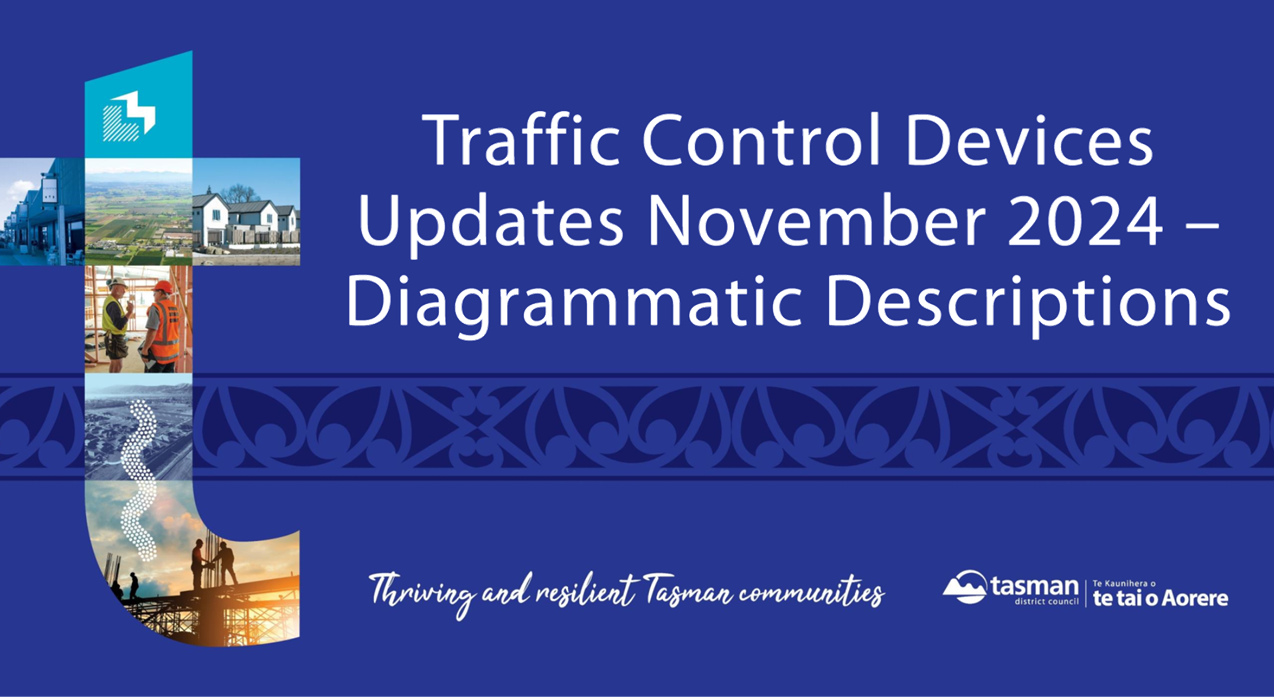
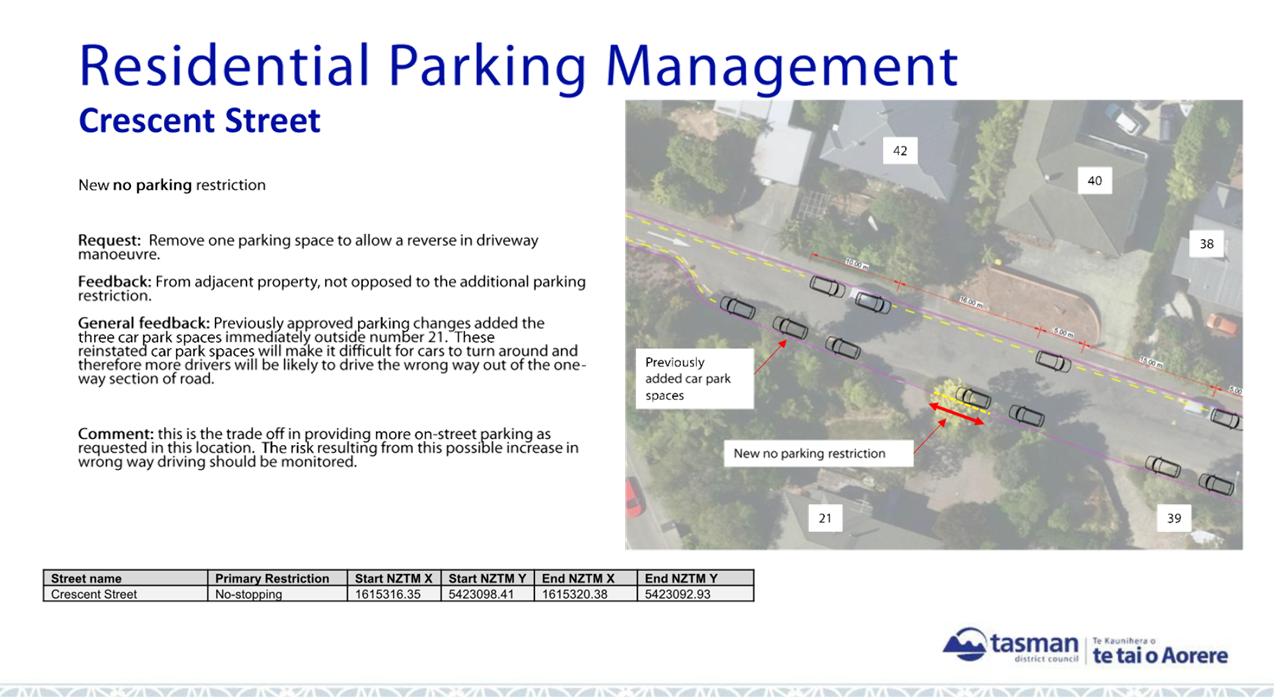
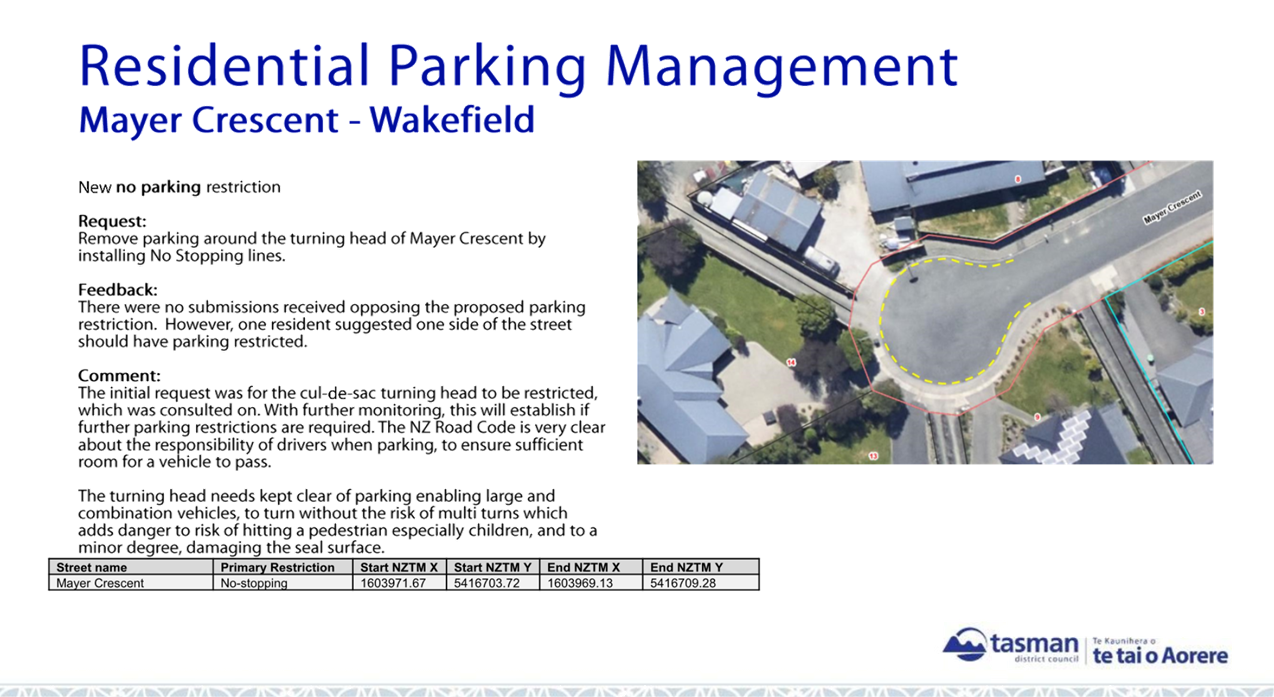
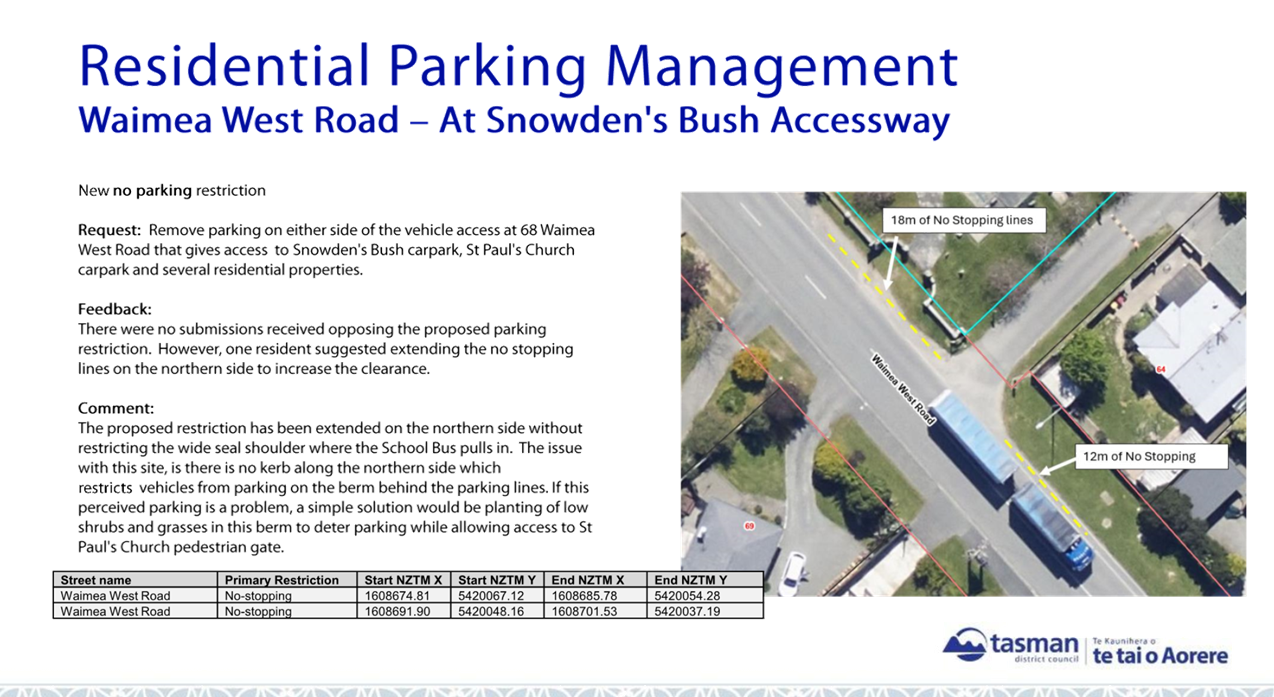
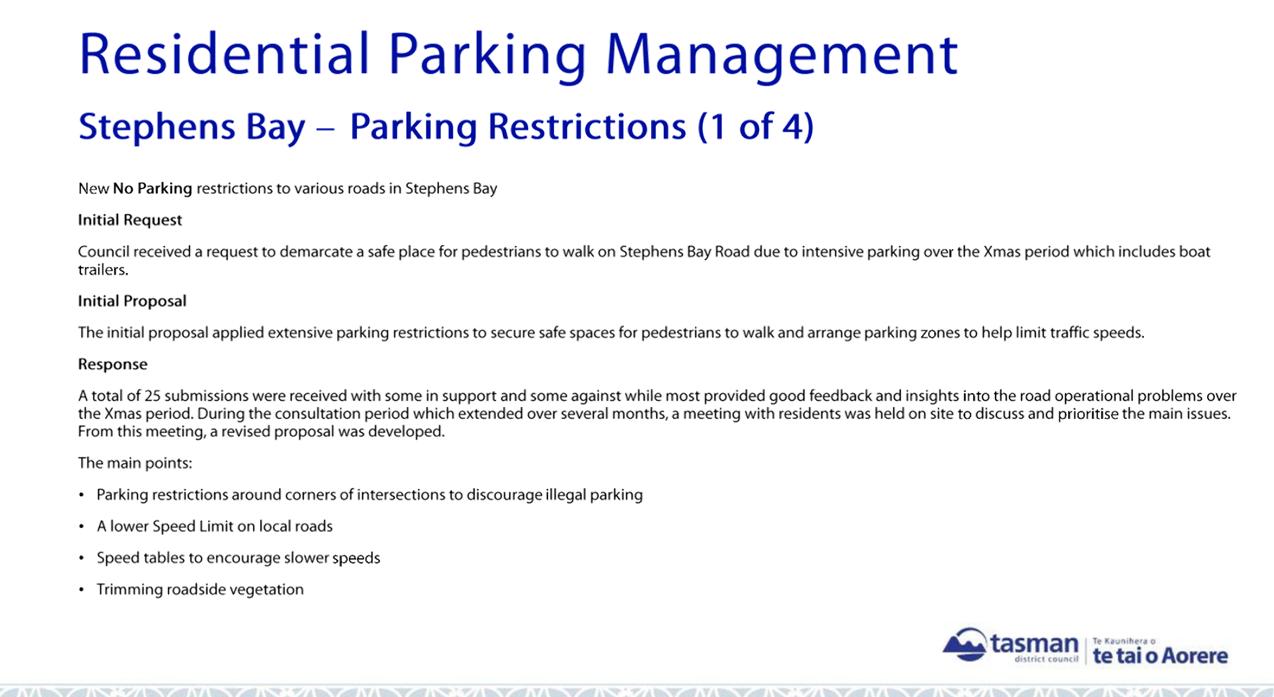
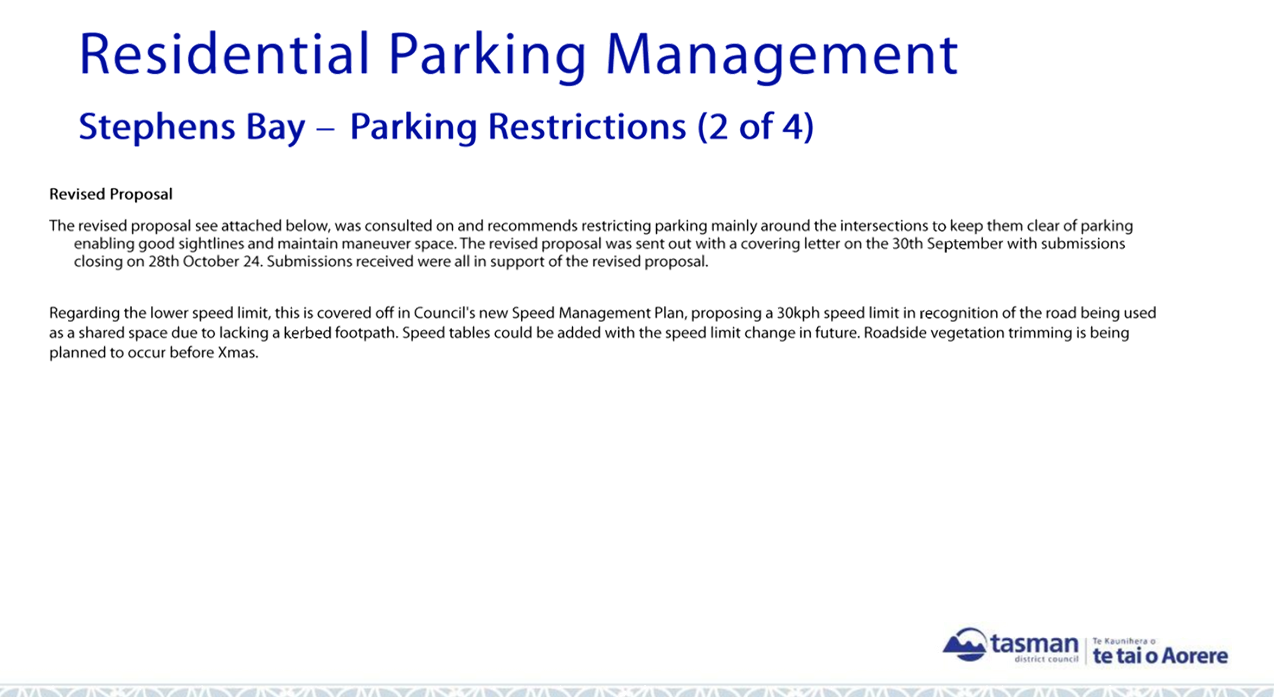
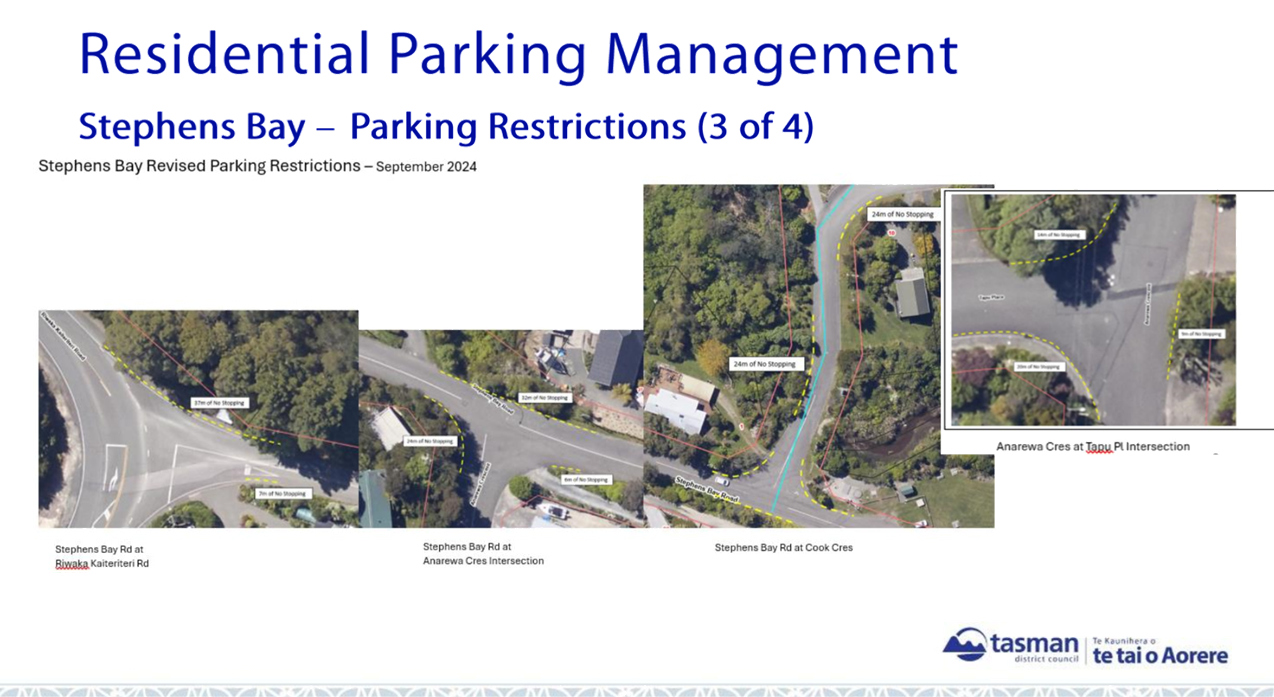
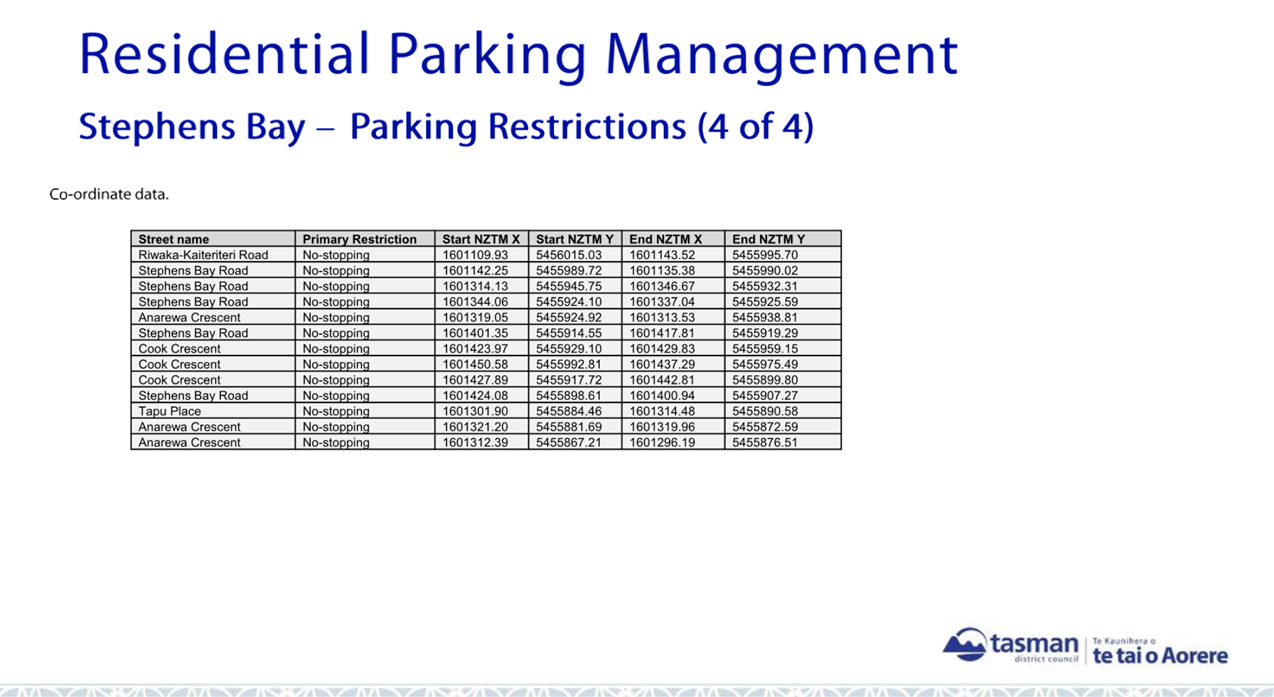
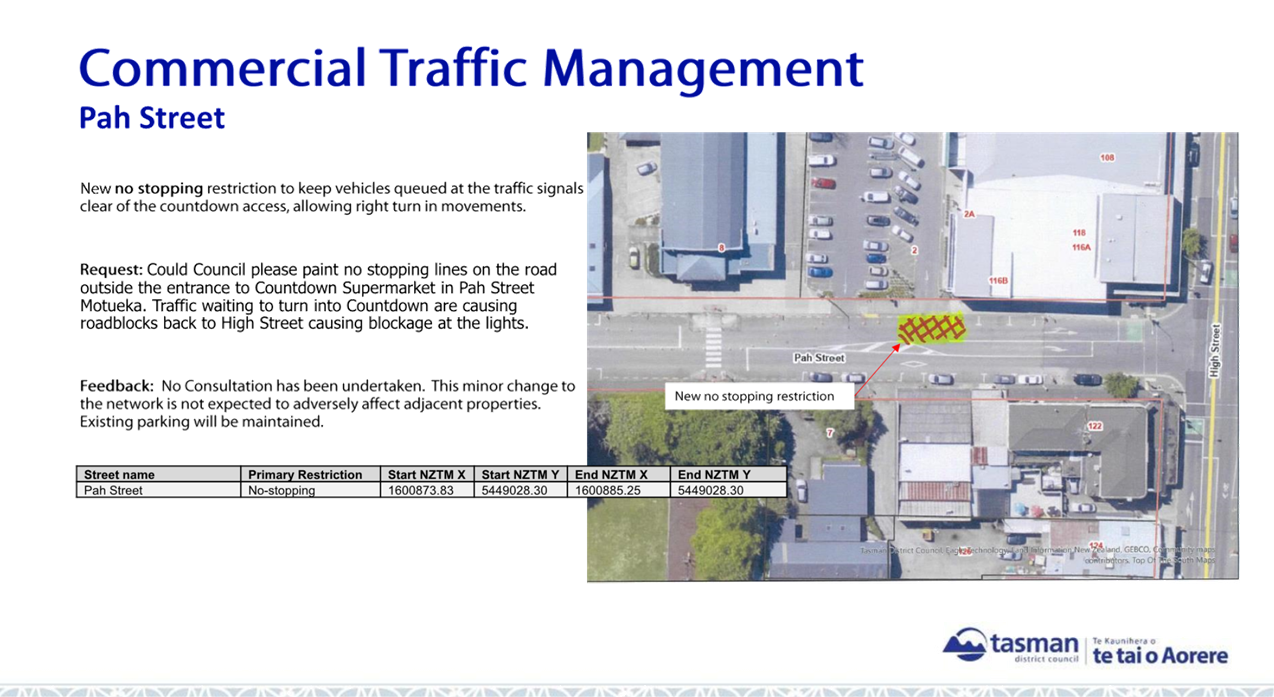
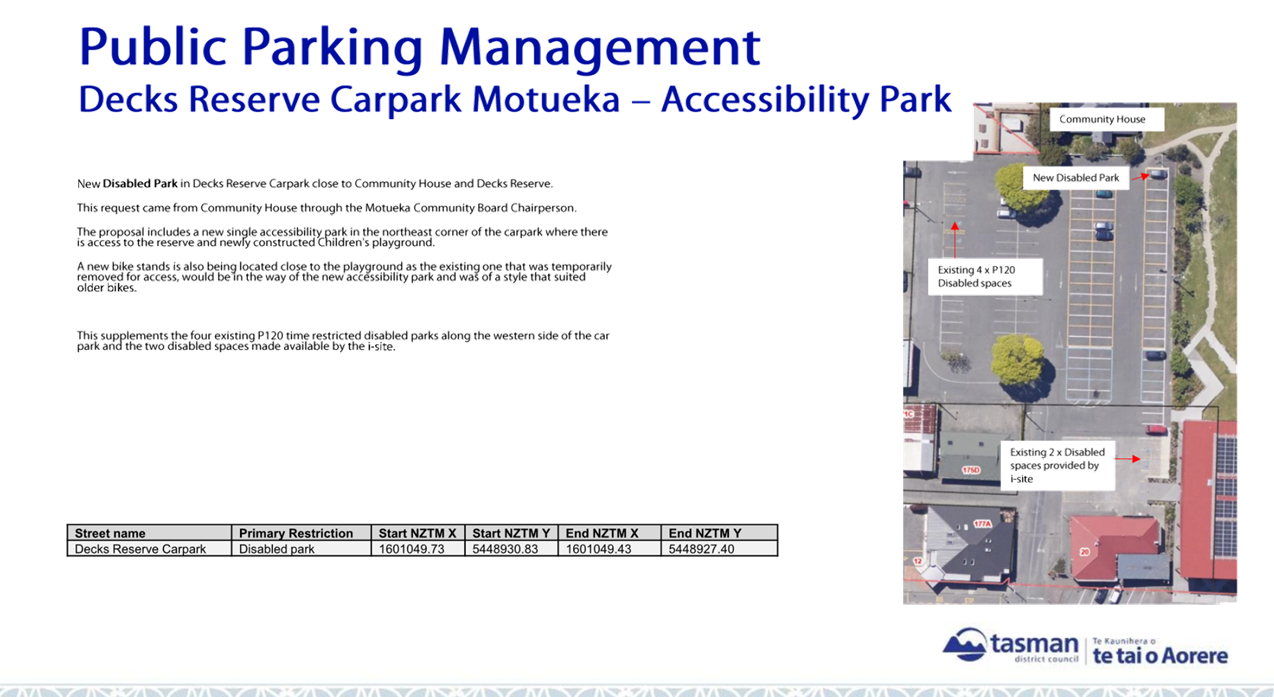
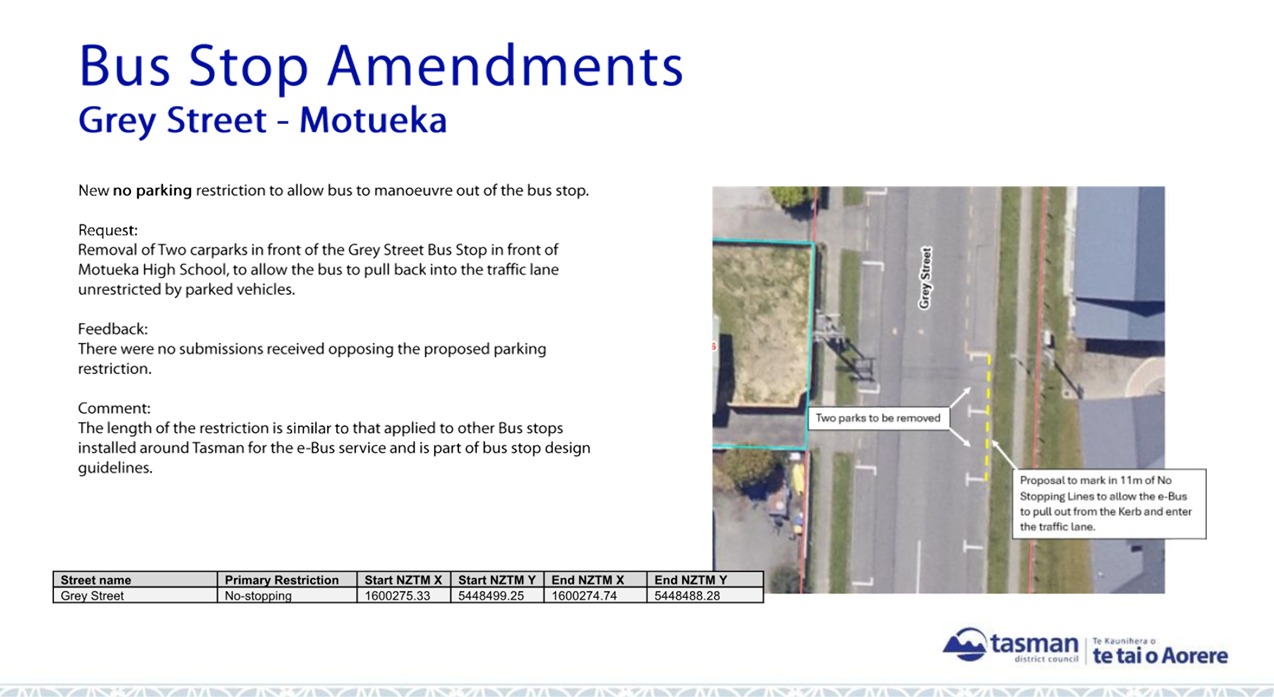

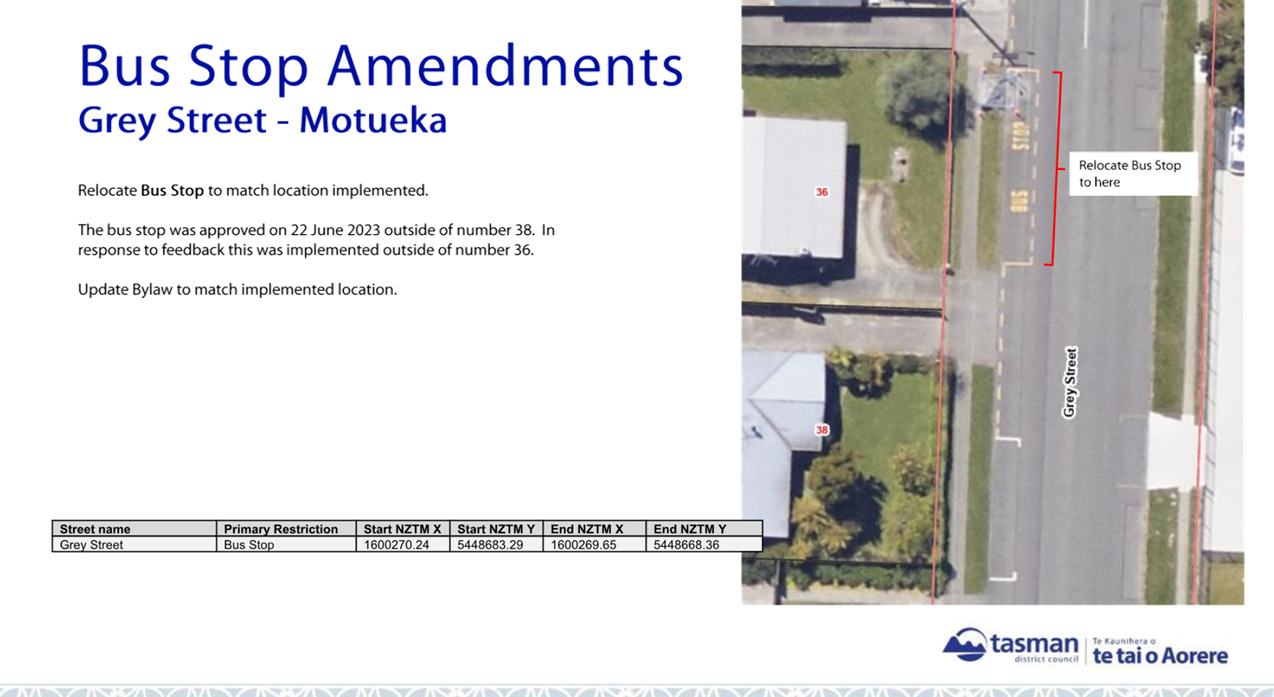
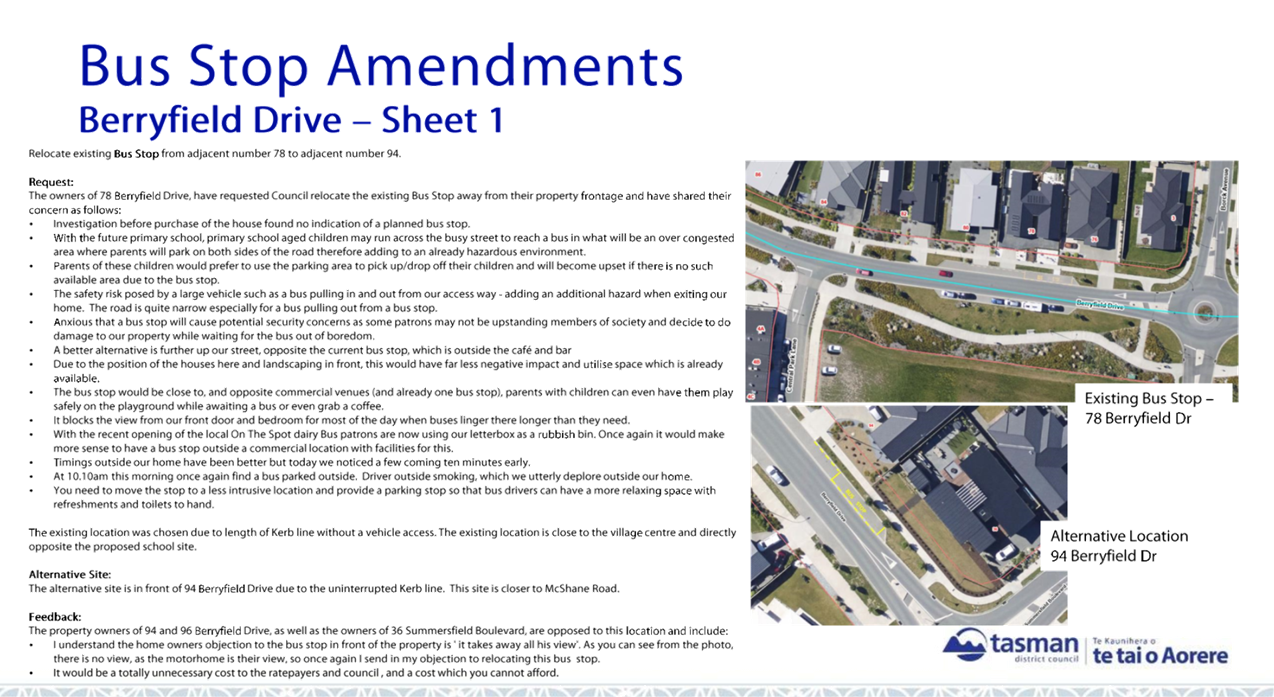
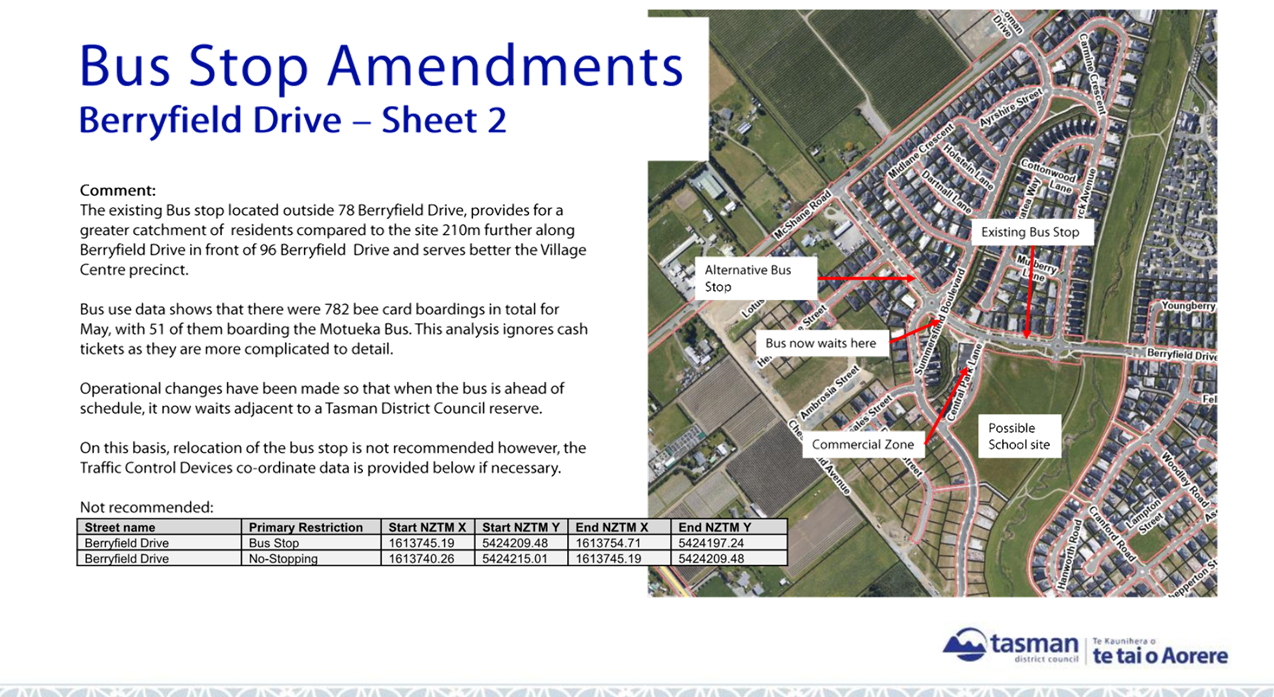
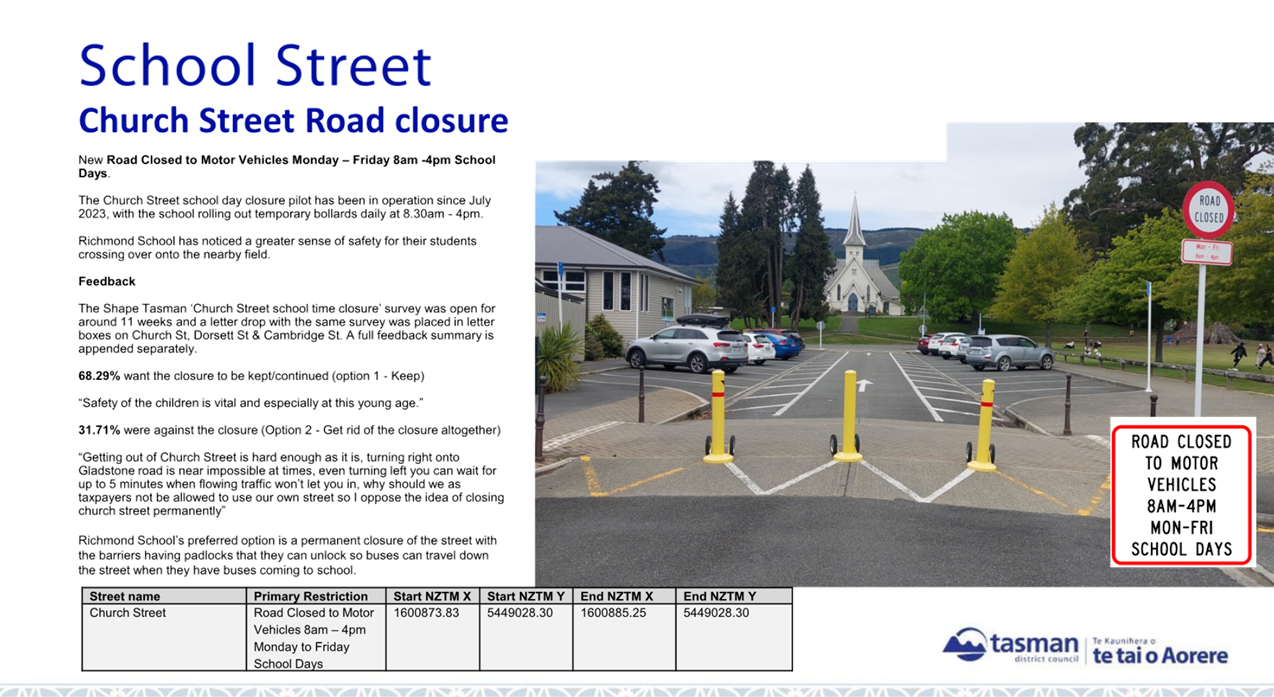
Tasman District Council Agenda – 11 December 2024

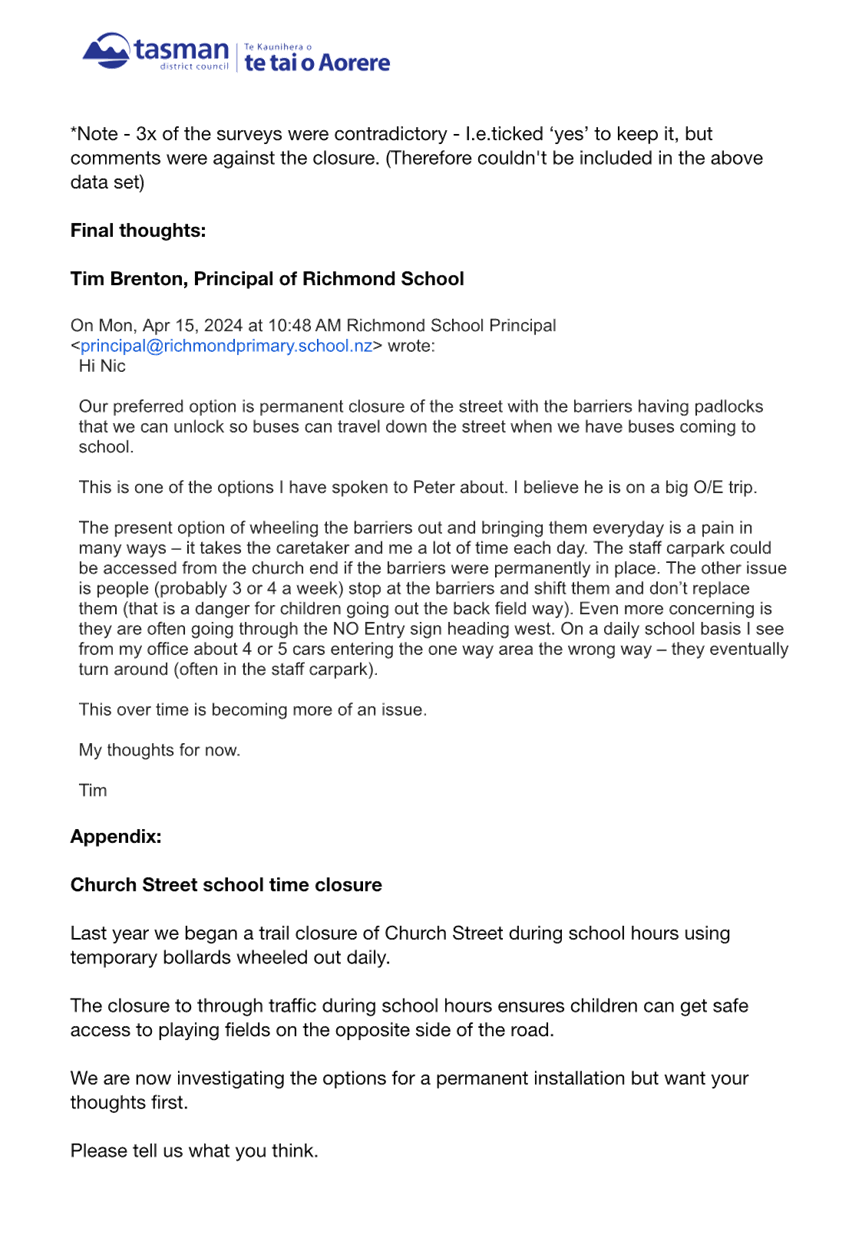
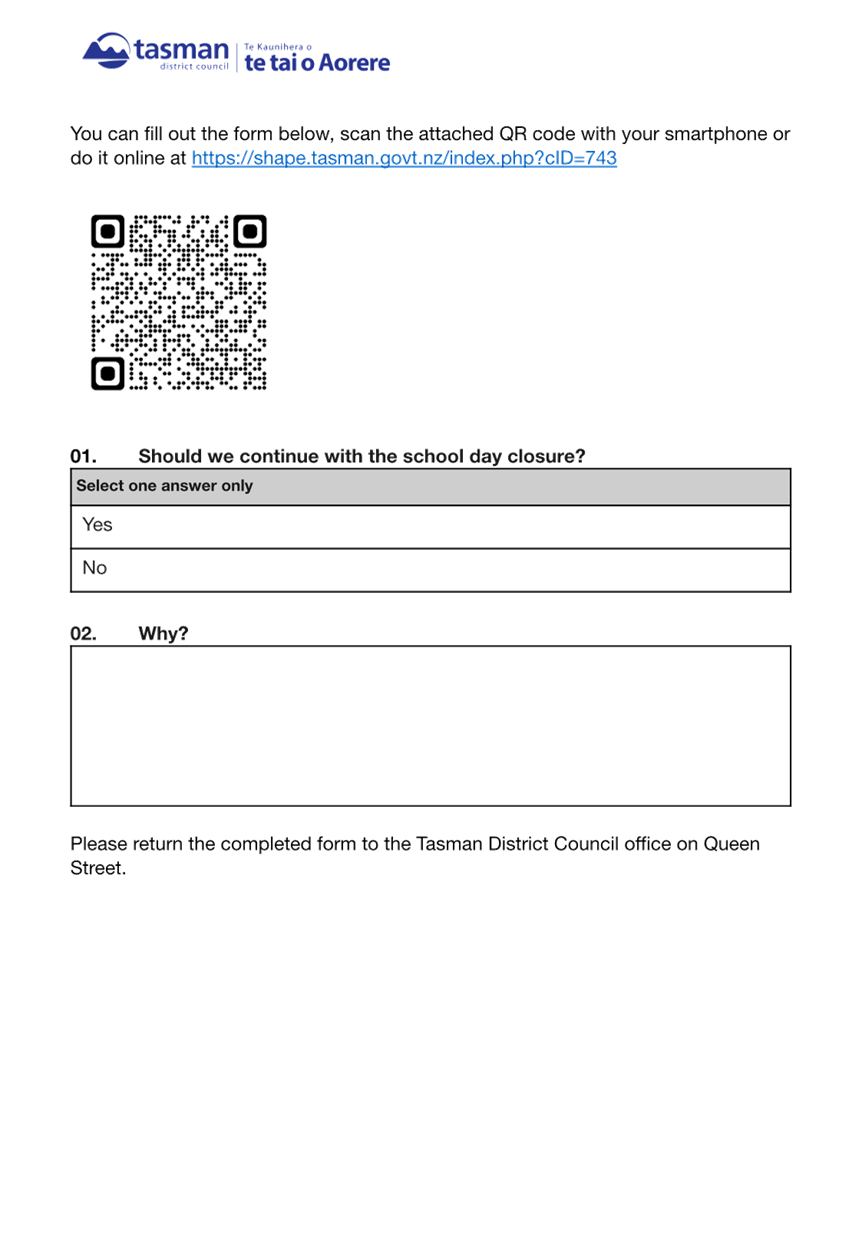
Tasman District Council Agenda – 11 December 2024
7.6 Speed Management Consultation
Decision Required
|
Report
To:
|
Tasman
District Council
|
|
Meeting
Date:
|
11
December 2024
|
|
Report
Author:
|
Bill
Rice, Senior Infrastructure Planning Advisor - Transportation
|
|
Report
Authorisers:
|
Dwayne
Fletcher, Strategic Policy Manager; John Ridd, Group Manager - Service and
Strategy
|
|
Report
Number:
|
RCN24-12-6
|
1. Purpose
of the Report / Te Take mō te Pūrongo
1.1 To
seek the Council’s agreement to:
· The
proposed approach to implementing our Speed Management Plan; and
· Speed
limits for schools and consultation on proposed speed limit changes for
high-risk rural roads, speed limits for rural roads adjacent to schools, and
McShane Road and Lower Queen Street.
2. Summary
/ Te Tuhinga Whakarāpoto
2.1 The
new Setting of Speed Limits Rule 2024 (the Rule) came into force on 30 October
2024. It requires variable speed limits outside schools to be implemented
by 30 June 2026. There is no requirement in the rule to use electronic variable
signs for variable school speed limits other than if a variable speed limit
applies outside normal school start and finish time.
2.2 It
is recommended that static variable speed limit signs will be used outside all
other schools except for Appleby School where electronic variable speed limit
signs will be used as high speeds are likely. Monitoring of speeds to confirm
the effectiveness of static signs is also recommended along with holding a
specific budget aside to address any safety concerns.
2.3 The
Rule also does not permit any speed limit changes (other than variable limits
outside schools) which had been adopted under the 2022 Rule but were not in
force on 30 October 2024 to come into force. A letter has been prepared for the
Nelson-Tasman Joint Regional Transport Committee to send to the Minister of
Transport requesting an exemption to this as effective and substantive
consultation which meets the intent of the 2024 Rule has already occurred.
2.4 Any
changes to existing speed limits proposed in our SMP (except speed limits
outside schools) will now need to be treated as new speed limit changes.
Consultation is required on new speed limit changes. This must include a
“cost benefit disclosure statement” and be open for a minimum
period of six weeks.
The Cost Benefit Disclosure
Statement in the consultation material has been produced using the New Zealand
Transport Agency (NZTA) Optional Cost Impact Analysis tool, this tool appears
to be producing spurious results for low-speed environments with high speed
limits. Consultation material may need to be reviewed should a fix be available
for these issues.
2.5 The
following process for speed limit changes is recommended:
11 December Tasman District
Council Meeting
· approve variable speed
limits for urban schools and peri-urban schools; and
· approve consultation
plan for high-risk rural roads (Motueka Valley Highway, Moutere Highway,
Dovedale Road, Neudorf Road, Edwards Road, McShane Road), and for base speed
limits outside rural schools and associated roads such as Rush Lane (Tasman
Village), Goddard Road (Tasman Village) and Excellent Street (Collingwood).
Mid-January to end of
February 2025
· consult on high-risk
rural roads and base speed limits outside rural schools.
Quarter 2 2025
· implement urban variable
speed limits outside urban schools;
· decide on speed limit
changes on high-risk roads, base and variable speed limit changes outside rural
schools;
· consult on further speed
limit changes from the SMP; and
Quarter 3 2025
· implement speed limit
changes on high-risk roads and base and variable speed limit changes outside
rural schools;
· decide on further speed
limit changes; and
2026 and beyond
· implement further speed
limit changes.
2.6 Recommendations
and advice in this report were based on the Council receiving no NLTF funding.
The recommended option can be funded within the currently budgeted local share
for speed limit implementation.
2.7 NZTA
has since indicated that some funding is available for speed limit
implementation, but the extent of that funding is currently unclear. Staff will
review the funding now available, and the criteria for it, and provide an
update at the meeting.
3. Recommendation/s
/ Ngā Tūtohunga
That the Tasman
District Council
1. receives
the Speed Management Consultation report, RCN24-12-6; and
2. approve
variable speed limits for urban and peri-urban schools and Appleby School
(Attachment 2 to the agenda report: List of variable school changes.)
3. approves
consultation document for high-risk rural roads (Motueka Valley Highway,
Moutere Highway, Dovedale Road, Neudorf Road, Edwards Road, McShane Road), and
for base speed limits outside rural schools (Attachment 1 to the agenda report:
Speed management consultation document); and
4. authorises
the Chief Executive Officer and the Mayor to make minor edits to the
consultation document and changes to the benefit cost disclosure statement to
account for any errors in the cost impact analysis tool; and
5. approves the following speed limit setting process:
|
Quarter
2 2025:
· implement
urban variable speed limits outside urban schools.
· decide on
speed limit changes on high-risk roads, base and variable speed limit changes
outside rural schools and some identified associated roads.
· consult on
further speed limit changes from the Speed Management Plan.
|
|
Quarter
3 2025:
· implement
speed limit changes on high-risk roads and base & variable speed limit
changes outside rural schools and some identified associated roads.
· decide on
further speed limit changes.
|
|
2026
and beyond:
· implement
further speed limit changes.
|
4.1 Central
government changes to the Setting of Speed Limits Rule have meant that the
approved speed changes for Tasman District cannot be implemented as planned and
many of the changes require further consultation.
4.2 The
Nelson Tasman Speed Management Plan (SMP) was approved at the Nelson-Tasman
Joint Regional Transport Committee meeting on 23 July 2024. The draft Setting
of the Speed Limits rule was introduced on 13 June 2024. The draft Rule
indicated that any speed management changes that had been certified by the
Director of Land Transport and added to the National Speed Limit Register prior
to the introduction of the new Rule would be able to be implemented.
4.3 The
requirements of the draft Rule enabling implementation of speed limits in the
SMP were met prior to the final Rule being gazetted on 28 September 2024.
4.4 However,
the final Rule has added a requirement that speed limits needed to be implemented
(signs installed in the ground) by 30 October 2024. If the speed limits were
not implemented, then any speed changes (apart from variable speed limits
around schools) need to go through the consultation and approval process.
4.5 No
funding was allocated to councils for speed limit implementation in the 2024-27
National Land Transport Plan. On 3 December 2024, NZTA announced that road
controlling authorities could apply for funding from the National Land
Transport Fund towards costs associated with implementing the changes necessary
to give effect to directions set out under the new Rule. This would be through
the Local Road Improvements Low Cost, Low Risk programme.
4.6 At
the time of writing this report staff were assessing what this funding support
may mean for the Council and will provide an update at the meeting. The
recommended option is able to be funded from the currently budgeted 2024-27
local share.
5. Analysis
and Advice / Tātaritanga me ngā tohutohu
5.1 The
land use adjacent to McShane Road and Lower Queen Street has changed in recent
years in terms of the Berryfield subdivision and new commercial developments,
therefore it is proposed that speeds are lowered on McShane Road and a short
section of Lower Queen Street to reflect the change in use.
5.2 The
Base Speed limits are proposed to be lowered around Lower Moutere School, Upper
Moutere School, Ngātimoti School, Central Takaka School, Collingwood
School, Tasman School and Tasman Christian School. This not a requirement under
the speed setting rule in relation to schools but it is considered consistent
with Schedule 3 of the Rule, which requires lower speed limits on Peri-Urban
roads, Urban streets, and Urban streets with no footpaths. These are defined
as:
· Peri-urban
roads: Roads that primarily provide access from residential property
on the urban fringe or in a rural residential area, where the predominant
adjacent land use is residential, but usually at a lower density than in urban
residential locations (50km/h-80km/h eg 60km/h at Ngātimoti School).
· Urban
streets: residential and neighbourhood streets, and streets that
provide access to and support businesses, shops, on-street activity and
services (50km/h – eg Āporo Road outside Tasman School)
· Urban
streets with no footpaths: Residential and neighbourhood streets
with pedestrian activity and no footpaths (40km/h – eg Dicker and
Goddard Roads near Tasman School)
5.3 For
Wakefield school, we are recommending a permanent 30km/h area between the
current town 30km/h zone and Pitfure Street. We are also recommending that the
variable zone is lengthened on Treeton Place from 150m to 270m as there is a
playcentre adjacent to the school. This is permitted under the definitions
section of the Rule of "outside a school gate" which allows
any reasonably practicable modifications.
5.4 The
Rule requires the Council to use reasonable efforts to implement variable speed
limits outside schools by 30 June 2026. Previous guidance had recommended
electronic variable signage be used on main roads outside schools, with static
signage used on minor side roads.
5.5 Electronic
signage only displays the variable speed limit during the times it is
operating. Static signage shows the speed limit at all times with the
hours it is operating shown underneath (see images below)


Electronic
Sign Static
Sign
5.6 The
estimated cost of electronic signs is $44,000 per pair, versus static signs at
$3,000 per pair. The cost of electronic signage across the District is
estimated at $1.1 million and
$1.3 million (Option one) compared to $170,000 to $200,000 for
static signs only (Option four).
5.7 There
was no approved funding for Tasman’s Low Cost Low Risk programme
(including for implementing the Setting of Speed Limits Rule) in the 2024-27
NLTP. NZTA announced on
3 December 2024 that councils can apply for funding to implement the Setting of
Speed Limits Rule. Details on the amount of funding available, and the criteria
for it were not available at the time of writing.
5.8 Recommendations
and advice in this report were based on the Council receiving no NLTF funding.
Staff will review the funding now available, and the criteria for it, and
provide an update at the meeting.
5.9 Staff
have considered the use of electronic signs at our rural schools based on the
following factors:
· Posted speed limit
· Operating speed
· Traffic volumes
· Any speed
reductions proposed for the road
· Likelihood of
children crossing or walking on the road based on carpark placement, footpaths
and cycleways.
5.10 Based
on the criteria above, Tasman School, Appleby School and Hope School are
identified as suitable candidates for electronic signs under the current
underlying speed limits. However, the base speeds are proposed to be lowered
near Tasman School on Āporo Road (60km/h to 50km/h) and Hope school on
Paton Road (80km/h to 60km/h). This reduction would make the road environment
safer thus negating the need to have an electronic sign.
5.11 Appleby
School is proposed to retain the 80km/h limit with a 30km/h variable limit and
an electronic sign at this site is considered appropriate.
5.12 There
are five schools which already have electronic 40km/h signs outside them. These
signs run on a 2G/3G network which Spark and OneNZ will be shutting down by the
end of 2025. There is a cost of approximately $15,000 to upgrade the signs to
the 5G network. The 40km/h on these specific signs is fixed and cannot be
altered to 30km/h. The schools with these signs are Brightwater School, Motueka
High School, Ranzau School, Hope School and Motupipi School.
5.13 It
is recommended that the 40km/h electronic signs at these sites are removed and
replaced with 30km/h static signs as this would mean that there is a consistent
approach to school speed limits across the District.
· Brightwater
currently has a slow speed environment with a 40km/h speed limit through the
town centre.
· Motueka
High School is in an urban environment where all urban schools will have a
30km/h variable limit.
· Ranzau
School and Motupipi School will be 60km/h with a 30km/h variable that will be
monitored to see if there is compliance. Further measures can be investigated
as necessary.
· Hope
School is proposed to be a 60km/h speed limit with a 30km/h variable that will
be monitored.
5.14 It
is also recommended that operating speeds outside all schools be monitored
following implementation of the variable limits, and that electronic signs or
other traffic calming be considered if speeds are high.
5.15 All
speed limit changes in the SMP, other than variable limits outside schools,
need to be consulted on and approved. Refer to Attachment 2: List of
variable school changes.
5.16 The
following process is recommended for implementation of speed limit changes:
Mid-January to end of
February 2025
· consult
on high-risk rural roads and base speed limits outside rural schools.
Quarter 2 2025
· implement
urban variable speed limits outside urban and peri-urban schools and Appleby
School
· decide
on speed limit changes on high-risk roads, base and variable speed limit
changes outside rural schools.
· consult
on further speed limit changes from the Speed Management Plan; and
Quarter 3 2025
· implement
speed limit changes on high-risk roads and base and variable speed limit
changes outside rural schools.
· decide
on further speed limit changes; and
2026 and beyond
· implement
further speed limit changes.
5.17 This
process can be implemented using local share of the current SMP implementation
budgets ($252,000, $258,000, and $264,000 for the next three years).
5.18 On
3 December 2024, NZTA announced that road controlling authorities could apply
for funding from the National Transport Fund towards costs associated with
implementing the changes necessary to give effect to directions set out under
the new Rule. This would be through the Local Road Improvements Low Cost, Low
Risk programme. Staff at the time of writing are assessing what this funding
support may mean for the Council.
6.1 The
options for school speed signs are outlined in the following table:
|
Option
|
Advantage
|
Disadvantage
|
|
1.
|
Electronic signs on the main road of all schools as
proposed in our SMP.
$1.1 million to $1.3 million
Other speed changes would occur in Years
5-6.
|
· Follows best practice
set out in NZTA Traffic Note 37 and 56.
· Installation of
electronic signage would draw drivers’ attention to the required speed
changes and increase compliance therefore making it safer for school
children.
|
· Costly: Council to
cover 100% of costs. NZTA funding bids are now open, but it is not guaranteed
that NZTA will cover up to 51% of costs.
· Exceeds available
budget in 2024-2028.
· Rollout of other speed
changes is done over five plus years.
· Would take 4-5 years
to implement which does not meet the Rule’s timeline for schools (1
July 2026).
|
|
2.
|
Electronic signs for rural schools only.
$700,000 - $800,000
|
· Follows best practice
set out in NZTA Traffic Note 37 and 56.
· Installation of
electronic signage would draw drivers’ attention to the required speed
changes and increase compliance therefore making it safer for school
children.
|
· Costly: Council to
cover 100% of costs, NZTA funding bids are now open, but it is not guaranteed
that NZTA will cover up to 51% of costs.
· Exceeds available
budget in 2024-2026.
· Rollout of other speed
changes is done over five years.
· Would take three years
to implement which does not meet the Rule’s timeline for schools (1
July 2026).
|
|
3.
|
Static signs apart from locations with high operating
speeds.
Staff recommended option
$410,000 - $470,000
|
· Greater safety
benefits for a small number of locations.
· Follows best practice
set out in NZTA Traffic Note 37 and 56 for small number of locations.
· Is cost effective and
within available budget.
· Rollout of all speed
changes within three to four years.
· Following monitoring
and enforcement, targeted safety improvements can be made in site specific
areas as required.
|
· Does not meet previous
best practice guidelines for schools.
· May not achieve good
compliance due to drivers not being aware of change of school zone.
|
|
4.
|
Static signs for all schools.
$380,000 - $400,000
|
· Is cost effective and
within available budget.
· Rollout of speed
changes within three to four years.
· Following monitoring
and enforcement, targeted safety improvements can be made in site specific
areas as required.
|
· Does not meet previous
best practice guidelines for schools.
· May not achieve
compliance levels due to drivers not being aware of change of school zone.
|
6.2 Option
three is recommended given current fiscal constraints. Noting that this
option includes ongoing monitoring and enforcement to ensure speeds are
lowered. If specific sites continue to present problems, additional treatments
such as electronic signs may be required.
7.1 Speed
limit changes must comply with the Setting of Speed Limits Rule 2024.
7.2 Other
than school speed limit changes, there is no longer any obligation to implement
the other speed limit changes proposed in the Joint Speed Management Plan. Nor
is there any obligation to review the Plan.
8. Iwi
Engagement / Whakawhitiwhiti ā-Hapori Māori
8.1 In
the original preparation of the Speed Management Plan in 2023, staff had
engaged with iwi on specific sites of significance. The Setting of Speed Limits
2024 guidance states that road controlling authorities must use reasonable
efforts to consult on proposed speed limit changes with Māori and do
everything reasonably practicable to separately consult Māori on any
proposed change affecting or likely to affect Māori land or land subject
to any Māori claims settlement Act
9. Significance
and Engagement / Hiranga me te Whakawhitiwhiti ā-Hapori Whānui
9.1 A
copy of Attachment 1 Speed management consultation document. Further
consultation is required because there are specific requirements under the new
Rule for consultation with the public on speed changes before the new limits
can be implemented. Consultation is required to follow the principles of
consultation in section 82 of the Local Government Act 2002. There must be a
period of at least six weeks and consultation material must include a benefit
cost disclosure statement.
9.2 As
the Council has already consulted on the Joint Speed Limit Management Plan
comprehensively, staff do not recommend hearings. Instead, once submissions are
received, staff will analyse these and provide advice to the Council for a
final decision.
|
|
Issue
|
Level of Significance
|
Explanation of Assessment
|
|
1.
|
Is there a high level of public
interest, or is decision likely to be controversial?
|
Medium
|
There was a high level of
interest in the original SMP consultation.
|
|
2.
|
Are there impacts on the social,
economic, environmental or cultural aspects of well-being of the community in
the present or future?
|
Yes
|
Lower speeds can lead to a
reduction of deaths and serious injuries on our roading network and have
effect on travel times. These will be discussed in consultation material.
|
|
3.
|
Is there a significant impact
arising from duration of the effects from the decision?
|
No
|
|
|
4.
|
Does the decision relate to a
strategic asset? (refer Significance and Engagement Policy for list of
strategic assets)
|
Yes
|
This decision only applies to a
small portion of the total road network.
|
|
5.
|
Does the decision create a
substantial change in the level of service provided by Council?
|
No
|
|
|
6.
|
Does the proposal, activity or
decision substantially affect debt, rates or Council finances in any one year
or more of the LTP?
|
No
|
Speed changes have already been
budgeted for in the Long Term Plan 2024-2034 (LTP) over the next 10 years.
|
|
7.
|
Does the decision involve the
sale of a substantial proportion or controlling interest in a CCO or CCTO?
|
No
|
|
|
8.
|
Does the proposal or
decision involve entry into a private sector partnership or contract to carry
out the deliver on any Council group of activities?
|
No
|
Existing contractors will be
engaged to replace and install new speed signs.
|
|
9.
|
Does the proposal or decision
involve Council exiting from or entering into a group of activities?
|
No
|
|
|
10.
|
Does the proposal require
particular consideration of the obligations of Te Mana O Te Wai (TMOTW)
relating to freshwater or particular consideration of current legislation
relating to water supply, wastewater and stormwater infrastructure and
services?
|
No
|
|
10. Communication
/ Whakawhitiwhiti Kōrero
10.1 Consultation
material will be placed on the Shape Tasman page and articles will be placed in
Newsline. As extensive consultation was held on the SMP in late 2023/early
2024, a restrained consultation campaign is proposed this time.
11. Financial
or Budgetary Implications / Ngā Ritenga ā-Pūtea
11.1 Speed
limit changes have already been budgeted for in the LTP over the next 10 years
however both Nelson and Tasman had assumed co-investment of 51% would be
available from NZTA when the LTP was initially developed and consulted upon.
Co-investment from NZTA for this activity was not confirmed when the National
Land Transport Programme was announced, however NZTA have since signalled some
funding may be available. The extent of that funding was unclear at the time of
writing this report. Staff will review the funding now available, and the
criteria for it, and provide an update at the meeting.
11.2 The
recommended plan is within Council’s currently budgeted local share for
the next three years if Option 3 is chosen.
12.1 The
introduction of the new Rule and subsequent guidance provides us with the
framework for speed changes. Our charts in the consultation document were
completed using Megamap data current as of 2 December 2024, however NZTA
updated this data on
3 December 2024 and at the time of writing, staff have not had time to assess
the differences between the data sets.
12.2 This
risk is mitigated by separating the school speed limit changes which are
required by the rule from those that require a Cost Benefit Disclosure
Statement.
12.3 The
NZTA Optional Cost Impact Analysis tool appears to be producing spurious
results for low-speed environments with high-speed limits. Consultation
material may need to be reviewed should a fix be available for these issues.
13. Climate
Change Considerations / Whakaaro Whakaaweawe Āhuarangi
13.1 Where
rural speed limits are reduced from 100km/h, fuel consumption and emissions are
expected to reduce.
13.2 Reducing
speed limits around schools from 50km/h to 30km/h may result in a small
increase in fuel consumption and emissions. Overall, the climate impact of
possible speed limit changes is expected to be small.
14. Alignment
with Policy and Strategic Plans / Te Hangai ki ngā aupapa Here me ngā
Mahere Rautaki Tūraru
14.1 The
recommended proposal is broadly consistent with the adopted SMP, while also
complying with the Setting of Speed Limit Rules. It is also consistent with the
LTP.
15. Conclusion
/ Kupu Whakatepe
15.1 A
staged approach to our speed management changes is proposed, with the mandatory
changes outside schools happening in 2025/2026, and subsequent changes in later
years.
15.2 The
new Rule has removed requirements for electronic variable signage. It is
recommended that static signs are generally used outside schools other than in
locations where high operating speeds are expected. It is expected that no
urban schools will require electronic signs, and that one or two rural schools
will require them.
15.3 It
is also recommended that operating speeds outside all schools be monitored
following implementation of the variable limits, and that electronic signs or
other traffic calming be installed if speeds are high
16. Next
Steps and Timeline / Ngā Mahi Whai Ake
16.1 Mid-January
to end of February 2025: Consult on high-risk rural roads and base speed limits
outside rural schools.
16.2 Quarter
2 2025: Implement urban variable speed limits outside urban schools,
consult on other speed limit changes from the SMP, decide on speed limit
changes on high-risk roads, base and variable speed limits outside rural
schools.
16.3 Quarter
3 2025: Decide on further speed limit changes, implement speed limit
changes on high-risk roads and base and variable speed limits outside rural
schools.
16.4 2026
and Beyond: Implement further speed limit changes.
|
1.⇩
|
Speed
Management Consultation Document
|
253
|
|
2.⇩
|
List of
Variable School Changes
|
281
|
Tasman District
Council
Agenda – 11 December 2024

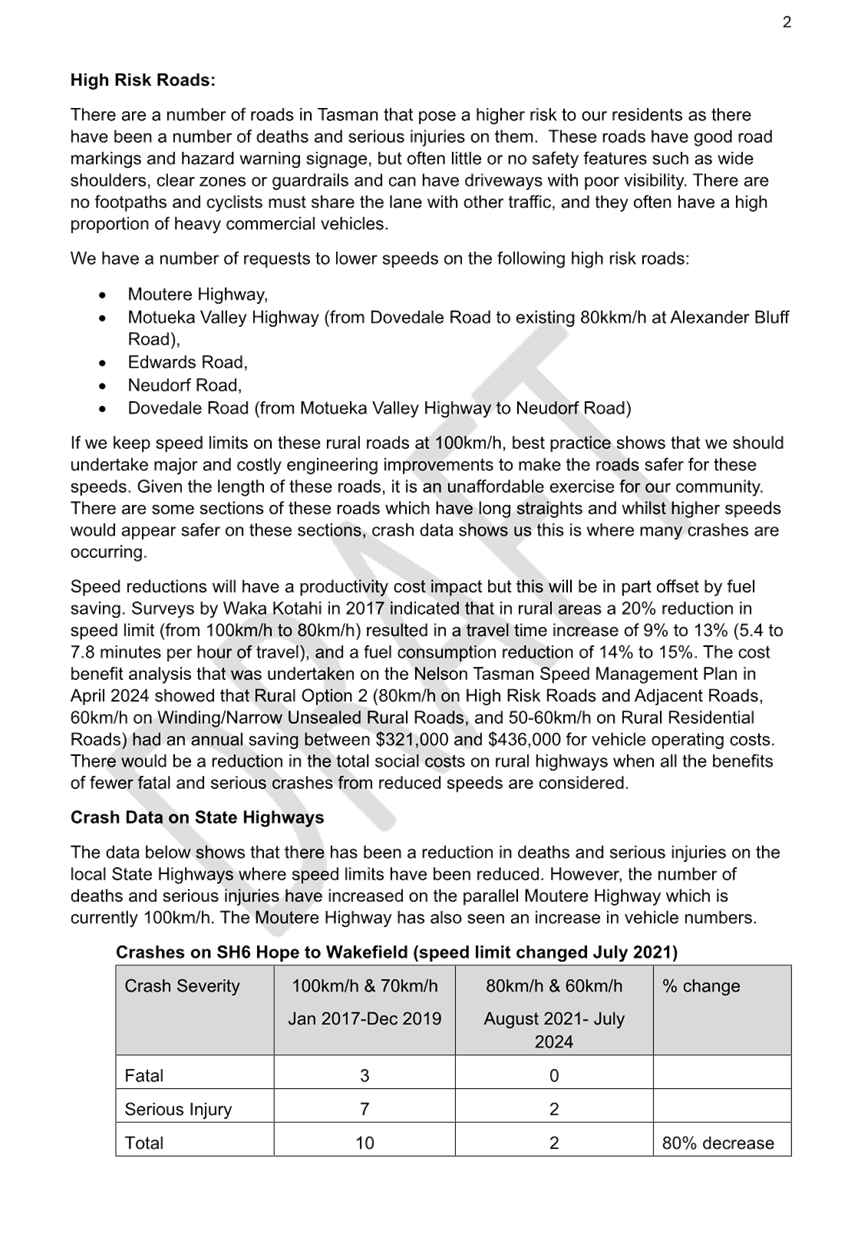

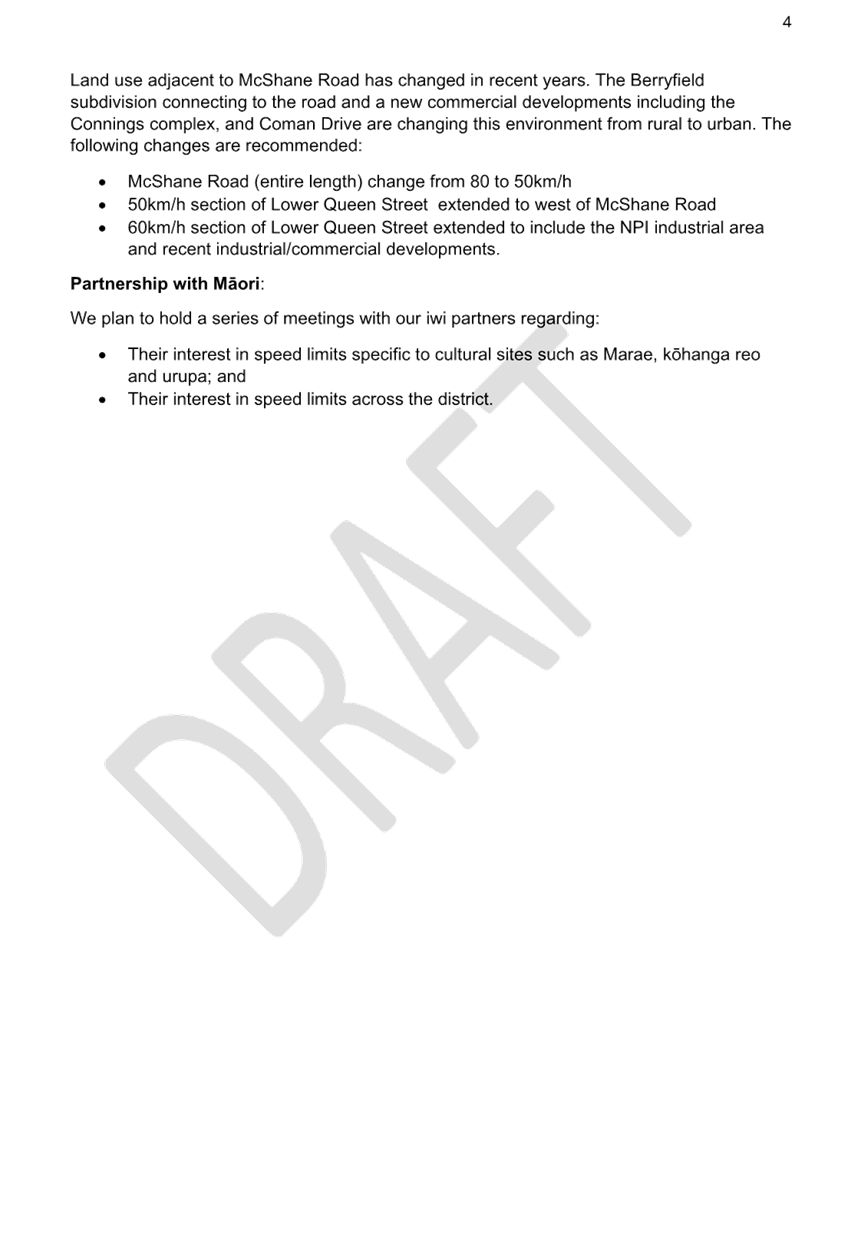
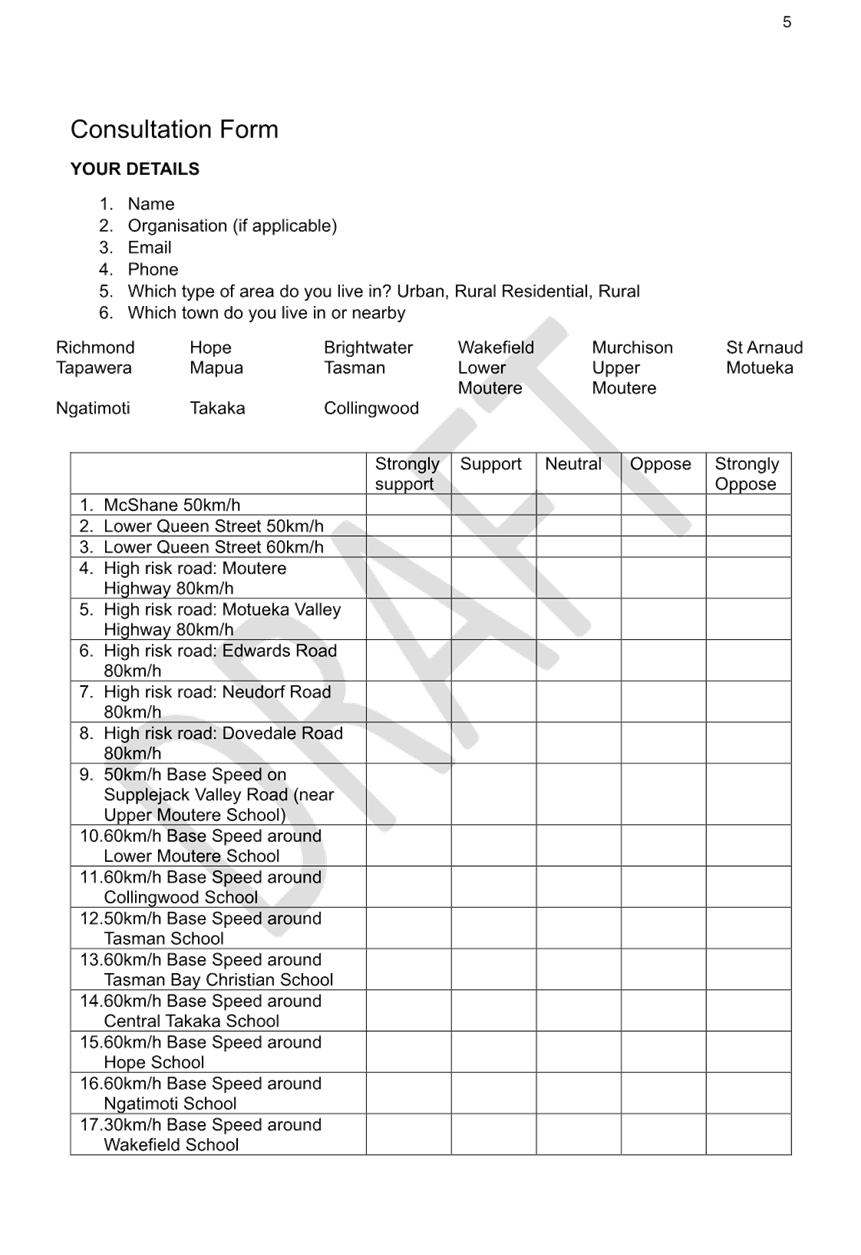

Tasman District Council Agenda – 11 December 2024
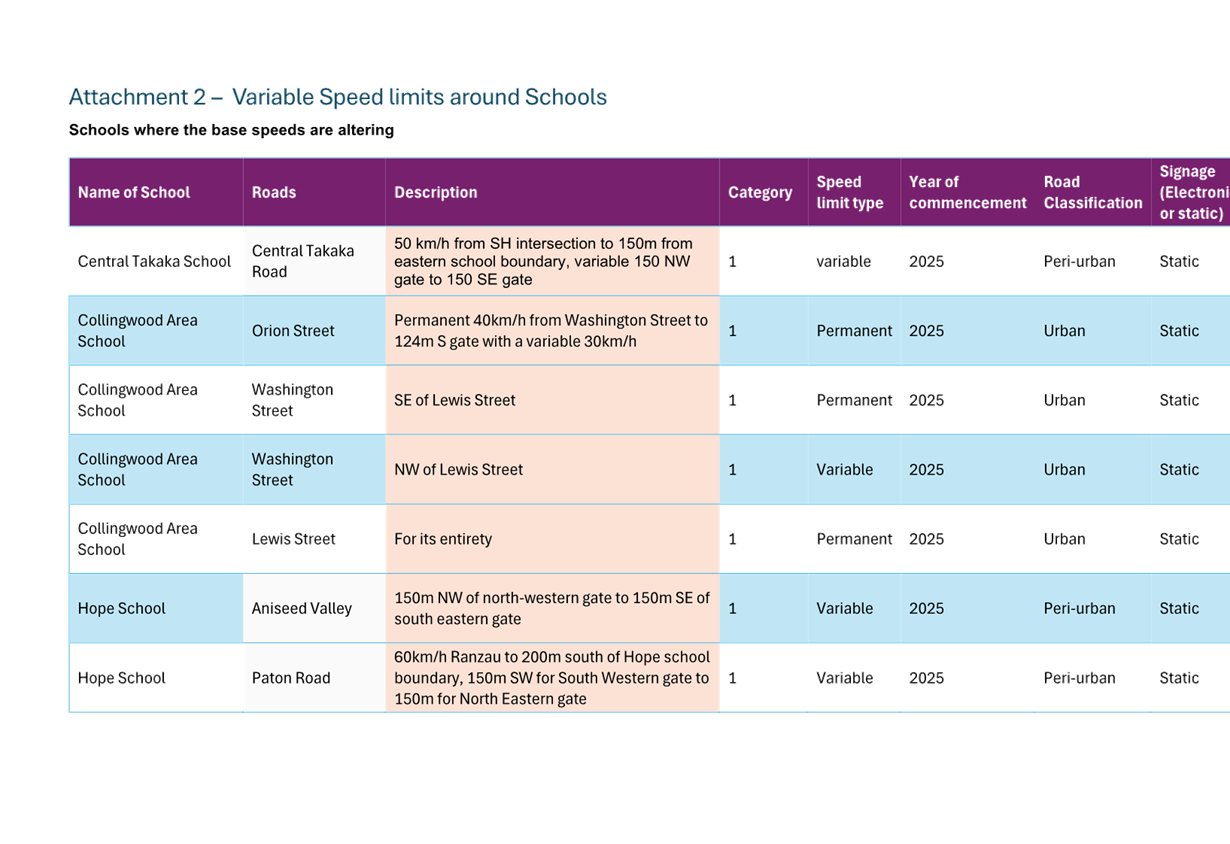
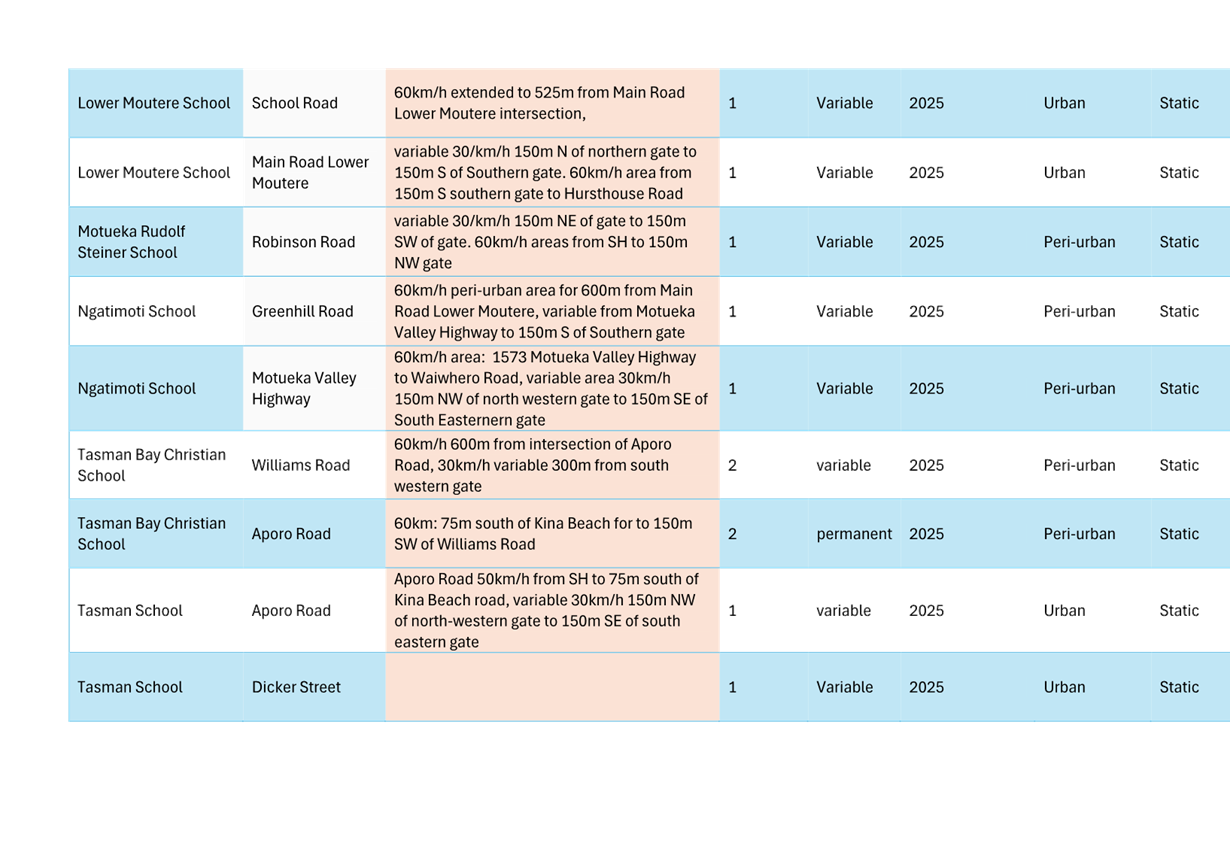
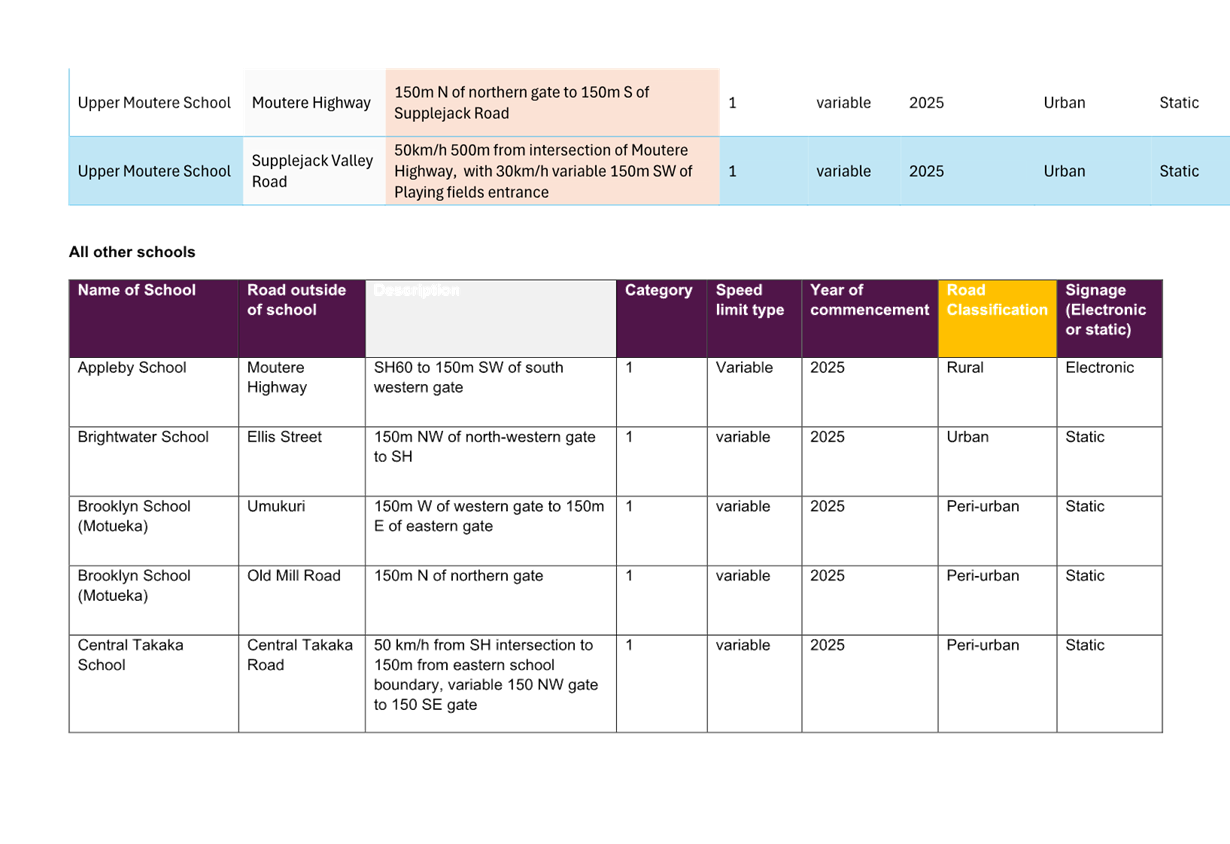
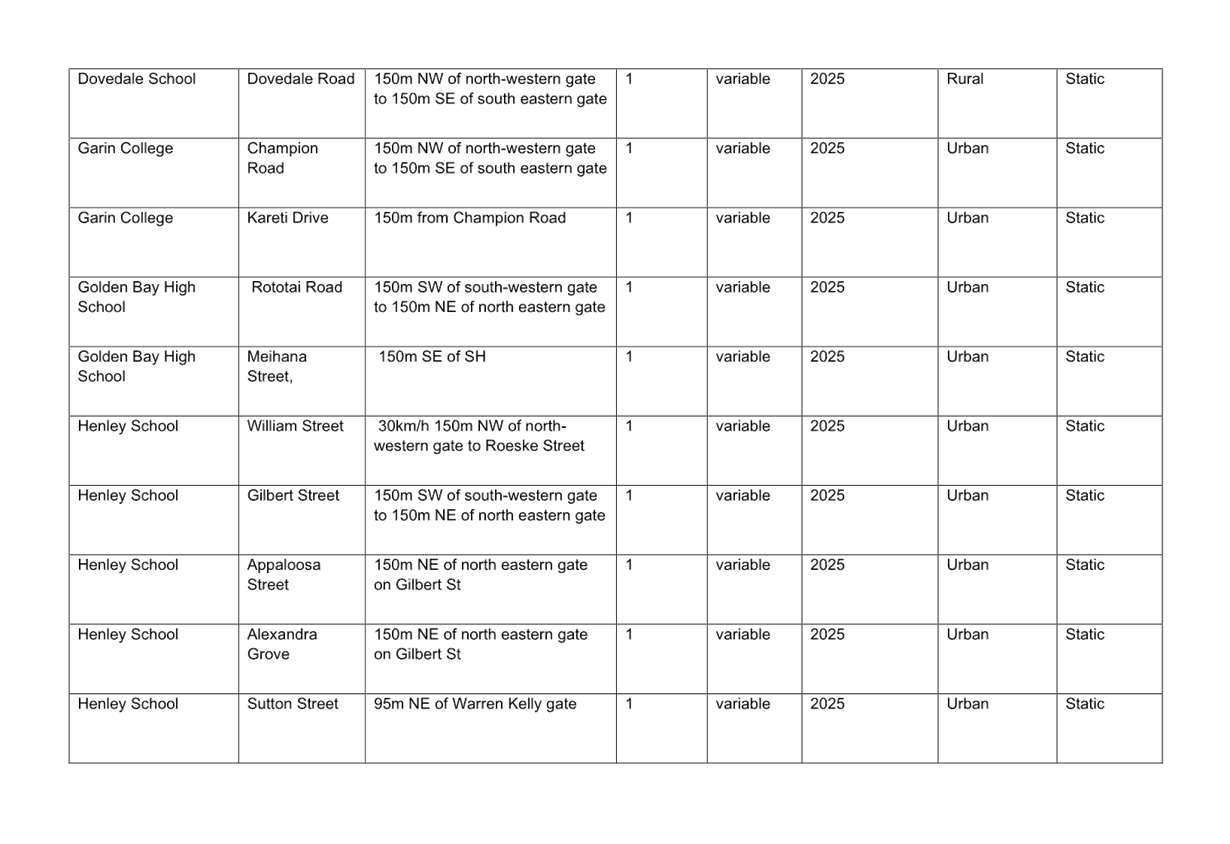
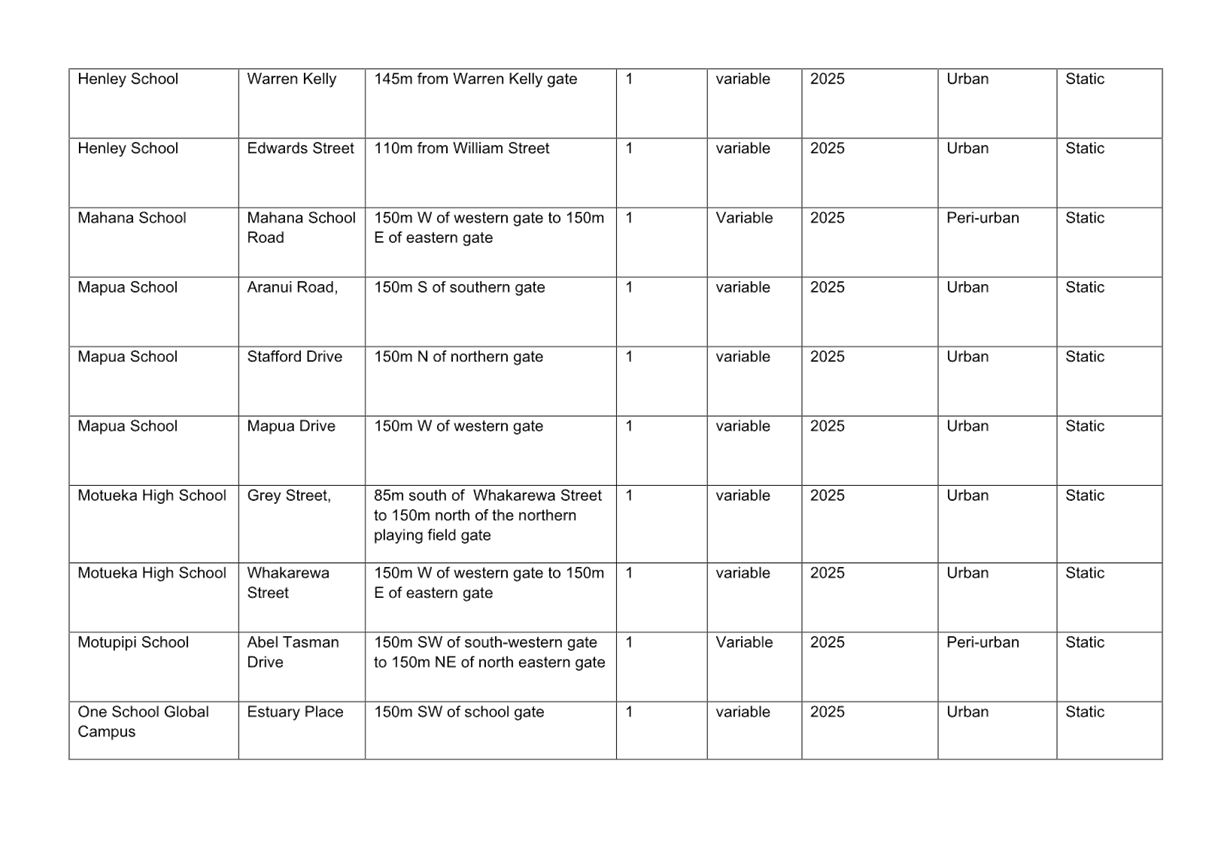
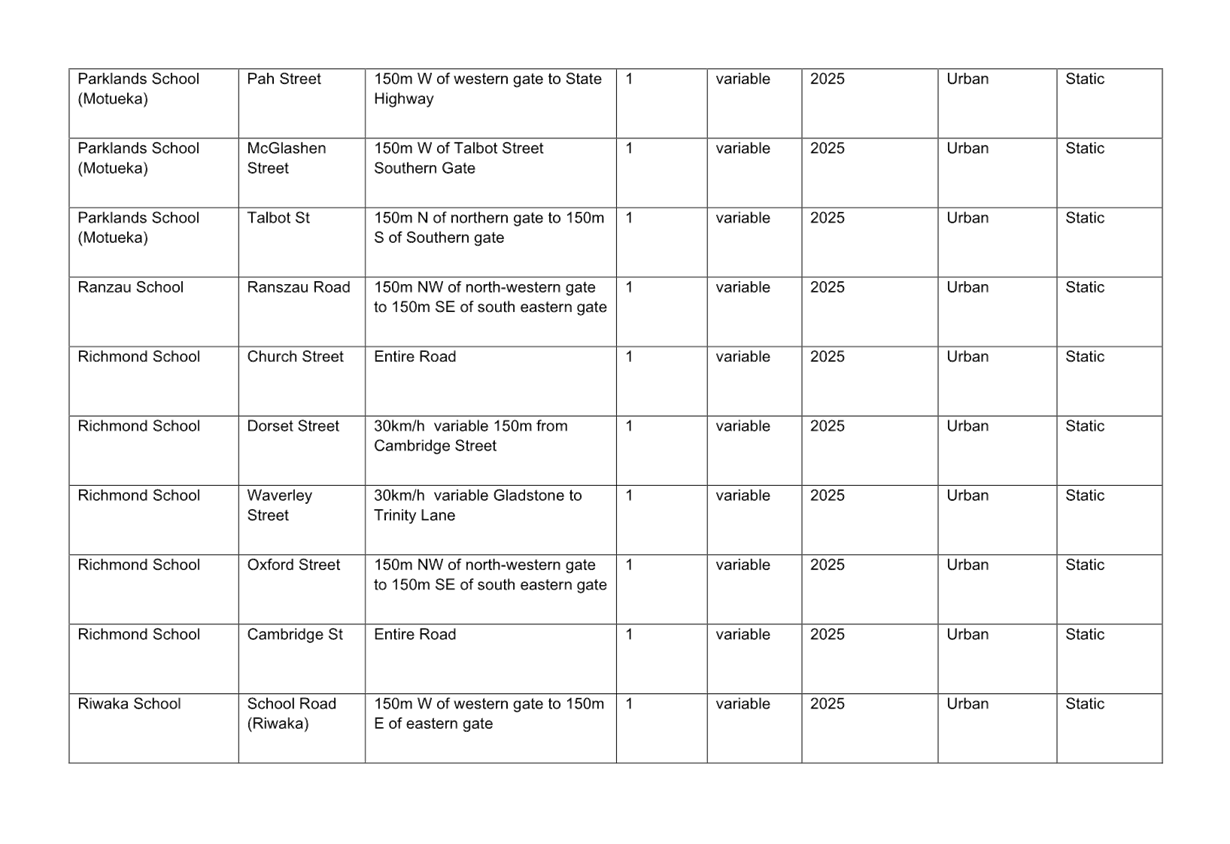
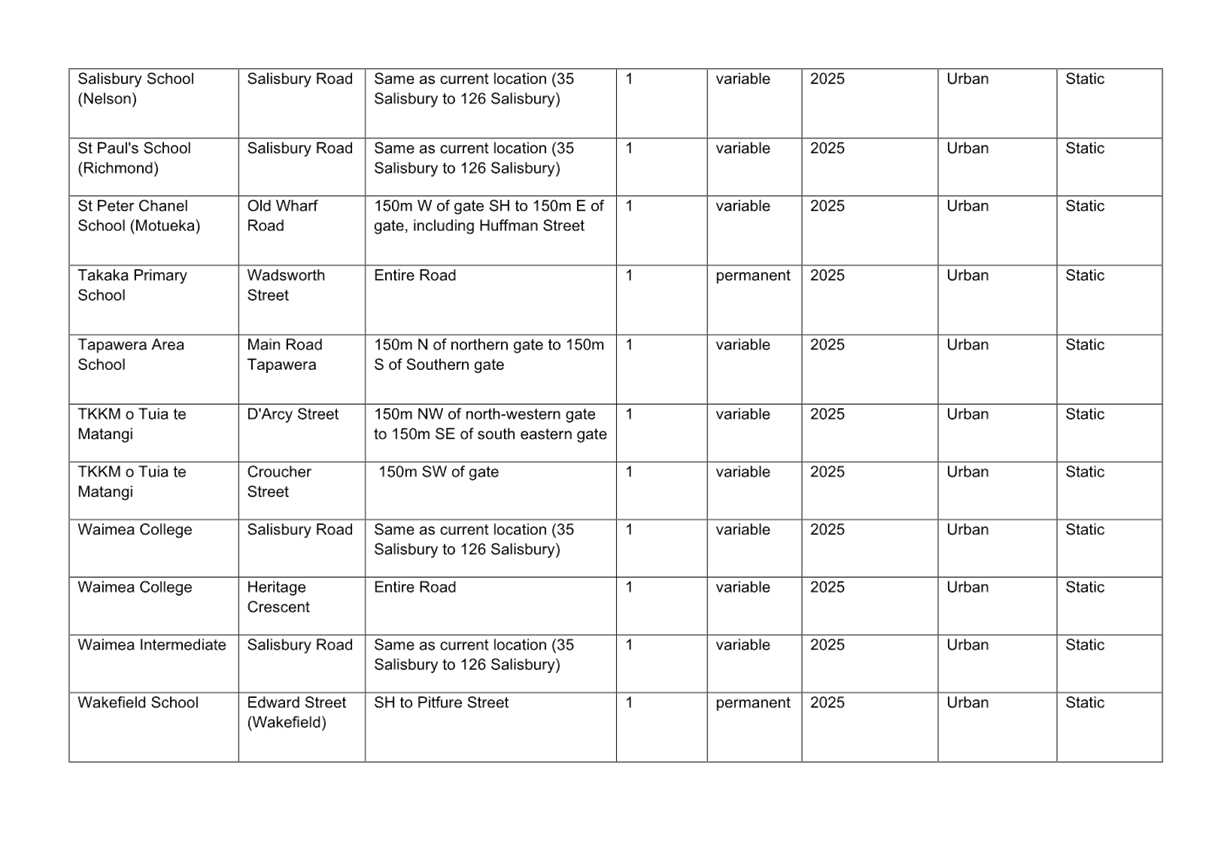

Tasman District Council Agenda – 11 December 2024
7.7 Upper Moutere Shared Path Funding
Decision Required
|
Report
To:
|
Tasman
District Council
|
|
Meeting
Date:
|
11
December 2024
|
|
Report
Author:
|
Jamie
McPherson, Transportation Manager
|
|
Report
Authorisers:
|
Richard
Kirby, Group Manager - Community Infrastructure
|
|
Report
Number:
|
RCN24-12-7
|
1. Purpose
of the Report / Te Take mō te Pūrongo
1.1 To
seek the Council’s approval to bring forward $188,951 of existing budgets
from 2025/26 to 2024/25 to enable the proposed Upper Moutere shared path to be constructed
in 2024/25.
2. Summary
/ Te Tuhinga Whakarāpoto
2.1 There
is a strong desire in the Upper Moutere community for the Council to deliver a
new shared path from the village to the community centre in 2024/25, as
originally planned before an NZTA funding shortfall resulted in a consequent
deferral to 2025/26.
2.2 Bringing
forward $188,951 of existing budget from 2025/26 to 2024/25 would enable the
path to be completed in 2024/25.
2.3 Funding
can be brought forward without materially impacting the Council’s net
debt in 2024/25, and this is the recommended option.
3. Recommendation/s
/ Ngā Tūtohunga
That the Tasman
District Council
1. receives
the Upper Moutere Shared Path Funding report, RCN24-12-7; and
2. approves the proposed budget changes by bringing
forward $188,951 ($128,951 in GL 0502620016 and $60,000 in GL 0556620068) from
2025/26 to 2024/25 to enable the Upper Moutere Shared Path to be constructed in
2024/25.
4.1 A
new shared path from Upper Moutere village to the community centre (the Path)
is the top priority on the Council’s New Footpaths Priority List. The
community has been waiting for many years for this Path to be completed.
4.2 The
Council’s Long Term Plan 2024-34 included an annual budget for new
footpaths ($250,000 in 2024/25, $250,000 in 2025/26, increasing to $375,000 for
2026/27 and each year thereafter), with the expected funding being local share
(49%) and NZTA low cost low risk (LCLR) funding (51%).
4.3 On
24 October 2024 the Council received a staff report (RCN24-10-15) advising that
NZTA had not provided its share of LCLR funding in 2024-27. The Council
resolved to not provide increased local share funding to replace the lost NZTA
funding, due to concerns about the effect this could have on Council’s
debt levels and rates increases. This decision meant that the Path would need
to be deferred until funding was available in 2025/26, using both 2024/25 and
2025/26 local share funding.
4.4 The
community has expressed strong concerns about deferring construction of the
Path, and the impact this has on residents and particularly young people in
terms of their safety and independence in accessing the community centre.
4.5 The
Council could bring forward funding from 2025/26 to 2024/25 to enable the Path
to be constructed as soon as possible in 2024/25. The amounts required to be
brought forward are:
· New Footpaths GL
0502620012 $128,951
· District Land
Purchase GL 0556620068 $60,000 (for committed works associated with the land
purchases for the path)
5. Analysis
and Advice / Tātaritanga me ngā tohutohu
5.1 Bringing
forward the proposed budgets from 2025/26 to 2024/25 will enable this highly
valued community project to be delivered as soon as possible, while not
materially affecting the Council’s debt or rates projections across the
first two years of the LTP.
5.2 This
decision does not impact the amount of work the Council will deliver over the
first two years of the LTP.
5.3 The
earlier Council decision of 24 October 2024 to not provide additional funding
to replace missing NZTA funding across the 2024-27 Transportation Programme did
not consider matters such as re-phasing existing budgets in detail. Staff do
not consider that the decision in this current report could be considered a reversal
of the resolution of RCN24-10-15.
5.4 Also,
on 24 October 2024 (RCN24-10-16), the Council approved the deferral of net
$7,354,221 of capital works from 2024/25 to 2025/26, noting that the
consequential forecast borrowing cost is less than anticipated for 2024/25 in
the LTP. Bringing forward $188,951 from 2025/26 to 2024/25 would not materially
impact the noted consequential forecast borrowing cost, which would still be
less than anticipated in the LTP.
6.1 The
options are outlined in the following table:
|
Option
|
Advantage
|
Disadvantage
|
|
1.
|
Approve bringing forward funding of $188,951 from 2025/26
to 2024/25 (recommended)
|
Enables path to be constructed as soon as possible.
|
Slightly increased net debt at end of 2024/25.
|
|
2.
|
Do not approve bringing funding forward
|
Path construction will be delayed until 2025/26
|
Lower net debt at end of 2024/25.
|
6.2 Option
1, bringing forward funding is recommended.
7.1 There are no significant legal implications
associated with this decision. The Council has the authority to rephase the
Long-Term Plan budgets.
8. Iwi
Engagement / Whakawhitiwhiti ā-Hapori Māori
8.1 No
engagement with iwi has been initiated as part of this report and
recommendation, and none is considered necessary.
9. Significance
and Engagement / Hiranga me te Whakawhitiwhiti ā-Hapori Whānui
9.1 Overall,
this decision is of low significance to the wider district but is highly
significant to the Upper Moutere community. Staff have had direct engagement
with the Moutere Hills Residents Association since the Council meeting on 24
October 2024.
|
|
Issue
|
Level of Significance
|
Explanation of Assessment
|
|
1.
|
Is there a high level of public
interest, or is decision likely to be controversial?
|
Moderate
|
High level of interest from
local community, but low wider interest.
|
|
2.
|
Are there impacts on the social,
economic, environmental or cultural aspects of well-being of the community in
the present or future?
|
Low
|
Recommended option proposes to
provide improved social and environments benefits to Upper Moutere slightly
sooner than currently planned.
|
|
3.
|
Is there a significant impact
arising from duration of the effects from the decision?
|
Low
|
|
|
4.
|
Does the decision relate to a
strategic asset? (refer Significance and Engagement Policy for list of
strategic assets)
|
Low
|
The road network is a strategic
asset. This decision relates to a small part of the network.
|
|
5.
|
Does the decision create a
substantial change in the level of service provided by Council?
|
Low
|
|
|
6.
|
Does the proposal, activity or
decision substantially affect debt, rates or Council finances in any one year
or more of the LTP?
|
Low
|
Minor impact on net debt in
2024/25 year, with zero net impact from 2025/26.
|
|
7.
|
Does the decision involve the
sale of a substantial proportion or controlling interest in a CCO or CCTO?
|
No
|
|
|
8.
|
Does the proposal or
decision involve entry into a private sector partnership or contract to carry
out the deliver on any Council group of activities?
|
No
|
|
|
9.
|
Does the proposal or decision
involve Council exiting from or entering into a group of activities?
|
No
|
|
|
10.
|
Does the proposal require
particular consideration of the obligations of Te Mana O Te Wai (TMOTW)
relating to freshwater or particular consideration of current legislation
relating to water supply, wastewater and stormwater infrastructure and
services?
|
No
|
|
10. Communication
/ Whakawhitiwhiti Kōrero
10.1 Staff
have engaged directly with the Moutere Hills Residents Association and will provide
an update to them after the Council has decided on 11 December 2024.
11. Financial
or Budgetary Implications / Ngā Ritenga ā-Pūtea
11.1 On
24 October 2024 (RCN24-10-16), the Council approved the deferral of net
$7,354,221 of capital works from 2024/25 to 2025/26, noting that the
consequential forecast borrowing cost is less than anticipated for 2024/25 in
the LTP.
11.2 Bringing
forward $188,951 from 2025/26 to 2024/25 as recommended in this report would
not materially impact the noted consequential forecast borrowing cost, which
would still be less than anticipated in the LTP.
11.3 Delivering
the project in 2024/25 rather than 2025/26 may save some construction costs, as
in recent years construction cost escalation has been running higher than
underlying inflation.
12.1 Safety
risks associated with the lack of safe path options have been brought into
stark relief by an incident in late November 2024 where an Upper Moutere school
pupil was struck and injured by a vehicle while crossing the Moutere Highway
between the school and Sunrise Valley Road.
12.2 While
not on the route of the proposed Path, it highlights how delaying improvement
projects can have real impacts on our community, or conversely how the
community can realise benefits as soon as a project is completed.
12.3 New
paths are a relatively low-cost improvement included in the LTP (when compared
with other infrastructure investments) but provide a high degree of wellbeing
to communities where projects are completed, and are highly valued
13. Climate
Change Considerations / Whakaaro Whakaaweawe Āhuarangi
13.1 The
recommended option provides the opportunity to reduce transport emissions by
enabling the Upper Moutere community to safely travel between the village and the
community centre without needing to drive, sooner than if the budget is not
brought forward.
14. Alignment
with Policy and Strategic Plans / Te Hangai ki ngā aupapa Here me ngā
Mahere Rautaki Tūraru
14.1 The
recommended option is generally in accordance with the LTP.
15. Conclusion
/ Kupu Whakatepe
15.1 There
is a strong desire in the Upper Moutere community for the Council to deliver a
new shared path from the village to the community centre in 2024/25, as
originally planned before an NZTA funding shortfall resulted in a consequent
deferral to 2025/26.
15.2 Bringing
forward $188,951 of existing funding from 2025/26 to 2024/25 would enable the
Path to be completed in 2024/25.
15.3 Funding
can be brought forward without materially impacting the Council’s net
debt in 2024/25.
16. Next
Steps and Timeline / Ngā Mahi Whai Ake
16.1 If
the recommended option is approved, staff will work with the contractor to
deliver the Path as soon as possible.
Nil
Tasman District
Council
Agenda – 11 December 2024
7.8 Nelson Tasman Waste Management and
Minimisation Plan
Decision Required
|
Report
To:
|
Tasman
District Council
|
|
Meeting
Date:
|
11
December 2024
|
|
Report
Author:
|
David
Stephenson, Team Leader - Stormwater & Waste Management
|
|
Report
Authorisers:
|
Richard
Kirby, Group Manager - Community Infrastructure; John Ridd, Group Manager -
Service and Strategy
|
|
Report
Number:
|
RCN24-12-8
|
1. Purpose
of the Report / Te Take mō te Pūrongo
1.1 The
purpose of this report is to seek approval to undertake consultation using the
special consultative procedure (SCP) under section 83 of the Local Government
Act 2002 (LGA 2002) for the draft Nelson Tasman Waste Management and
Minimisation Plan 2025 (the Proposed Waste Plan).
2. Summary
/ Te Tuhinga Whakarāpoto
2.1 Nelson
City Council and the Tasman District Council (the councils) both have a
statutory responsibility to promote effective and efficient waste minimisation
and, for this purpose, to adopt a waste management and minimisation plan. In
2012 the councils adopted a joint waste plan; in 2018 that plan was reviewed
and in 2019 the councils adopted an amended plan, the Nelson Tasman Waste
Management and Minimisation Plan 2019 (the 2019 Waste Plan).
2.2 The
2019 Waste Plan has been reviewed by the Nelson Tasman Joint Waste Review
Working Party (the Working Party), which was delegated this role in 2022. The
Working Party recommended earlier this year to the councils that they revoke
and replace the 2019 Waste Plan. Both councils adopted this recommendation in
March and April 2024.
2.3 Since
then, staff of the two councils have been working with the Working Party to
develop a replacement plan. On 29 October 2024 the Working Party met to
consider a final draft of the Proposed Waste Plan. It is titled the draft
Nelson Tasman Waste Management and Minimisation Plan 2025 (Statement of
Proposal) and is attached (Attachment 1).
A Summary of the information contained in the Statement of Proposal has also
been prepared (Attachment 2).
2.4 Before
adopting the Proposed Waste Plan, the councils must consult with their
communities. Under section 44 of the Waste Minimisation Act 2008, councils must
use the special consultative procedure set out in section 83 of the Local
Government Act 2002 and, in doing so, the most recent waste assessment
undertaken by the territorial authority under section 51 must be notified with
the statement of proposal.
3. Recommendation/s
/ Ngā Tūtohunga
That the Tasman
District Council
1. receives
the Nelson Tasman Waste Management and Minimisation Plan report, RCN24-12-8;
and
2. notes that under section 44 of the Waste Minimisation
Act 2008, both Tasman District and Nelson City Councils must consult the public
using the special consultative procedure in accordance with section 83 of the
Local Government Act 2002 when preparing and revoking a waste management and
minimisation plan; and
3. agrees that a Summary of the information contained in
the Statement of Proposal is necessary to enable public understanding of the
proposal; and
4. agrees that the Summary of the information – Our
Waste Plan contained (Attachment 2 to the agenda report) in the Statement of
Proposal (Attachment 1 to the agenda report) provides a fair representation of
the major matters in the draft Nelson Tasman Waste Management and Minimisation
Plan, as required by section 83AA of the Local Government Act 2002; and
5. approves the Summary of the information – Our
Waste Plan (Attachment 2 to the agenda report) and the Statement of Proposal -
Draft Nelson Tasman Waste Management and Minimisation Plan (Attachment 1 to the
agenda report) for consultation in accordance with sections 83 and 87 of the
Local Government Act 2002; and
6. agrees that the consultation approach (set out in
paragraphs 10.1 to 10.8 of the agenda report):
a. includes
sufficient steps to ensure that the Summary of information – Our Waste
Plan and the draft Nelson Tasman Waste Management and Minimisation Plan will be
reasonably accessible to the public and will be publicised in a manner
appropriate to their purpose and significance
b. will result in the
Summary of the information – Our Waste Plan being as widely available as
is reasonably practicable
c. meets the
requirements of sections 82 and 83 of the Local Government Act 2002; and
7. agrees that the public consultation on the draft
Nelson Tasman Waste Management and Minimisation Plan will be undertaken over a
period of a minimum of one month early in 2025; and
8. agrees the Chair and Deputy Chair of the Joint Waste
Review Working Party be delegated authority to approve any minor editorial
amendments required to the documents prior to them being printed and made
available for public consultation; and
9. notes that in accordance with its Terms of Reference,
the Nelson Tasman Joint Waste Review Working Party has the delegation to
oversee the hearings and deliberations process; and
10. notes that these decisions are subject to equivalent
resolutions being passed by Nelson City Council.
4.1 The
Nelson City Council and the Tasman District Council (the Councils) both have a
statutory responsibility under the Waste Minimisation Act 2008 (the Act) to
promote effective and efficient waste minimisation and, for this purpose, to
adopt a waste management and minimisation plan, and for the plan to be reviewed
at intervals of not more than six years. The Act also requires that prior to
conducting a review, a waste assessment must be prepared.
4.2 The
councils must have a waste management and minimisation plan in place in order
to receive a pro-rated proportion of the half of the New Zealand Waste Disposal
Levy which is allocated to territorial authorities under the Act to spend
‘on matters to promote or achieve waste minimisation’.
4.3 The
Act provides for one or more councils to prepare and adopt a joint waste plan.
In 2010 the Council commenced work on a joint waste plan, which was adopted in
2012. In 2018 that joint plan was reviewed by the councils and in 2019 the
councils adopted an amended plan, the Nelson Tasman Waste Management and
Minimisation Plan 2019 (the 2019 Waste Plan).
4.4 In
September 2022 the councils agreed to the formation of the Nelson Tasman Joint
Waste Review Working Party (the Working Party) to review the 2019 Waste Plan;
for Tasman District Council this resolution was at a meeting of the Strategy
and Policy Committee on 29 September 2022.
4.5 The
Working Party comprises three elected members from each council and makes
provision for up to three iwi representatives. An invitation was issued to iwi
to nominate representatives in January 2023, and while no representatives have
been nominated, regular updates are being provided to iwi.
4.6 The
Working Party first met in February 2024 where it recommended to the councils
that they revoke and replace the 2019 Waste Plan.
4.7 On
7 March 2024 the Strategy and Policy Committee of Tasman District Council
resolved (SPC24-03-4):
That the Strategy and Policy
Committee
1. receives
the report Review of Nelson Tasman Joint Waste Management and Minimisation Plan
2019 (RSPC24-03-2); and
2. notes
the recommendation of the Nelson Tasman Joint Waste Review Working Party to
commence revoking and replacement of the Nelson Tasman Joint Waste Management
and Minimisation Plan; and
3. in
accordance with section 44 of the Waste Minimisation Act 2008, agrees that
officers develop a draft replacement Nelson Tasman Joint Waste Management and
Minimisation Plan for public consultation in 2025, subject to Nelson City
Council’s agreement; and
4. notes
that Nelson City Council will consider this matter at its 4 April 2024 meeting;
and
5. notes
that the 2019 Joint Waste Management and Minimisation Plan remains in effect
until such time that both councils adopt a new Joint Waste Management and
Minimisation Plan informed by a public consultation process in 2025.
4.8 Nelson
City Council resolved in April 2024 an equivalent resolution.
4.9 Since
February 2024, the Working Party has met four times. Staff from the two
councils have been working with the Working Party to develop a replacement
plan. On 29 October 2024 the Working Party met to consider a final draft of the
Proposed Waste Plan. This final draft document produced from that meeting is
attached to this report (Attachment 1).
5. Analysis
and Advice / Tātaritanga me ngā tohutohu
5.1 The
Proposed Waste Plan provides a strategic framework for waste management and
minimisation activities, and a regional action plan. This framework and action
plan is shown in Figure 1.
5.2 The
plan recognises that actions may be delivered both collectively and
individually by the councils, depending on the requirements of each
council’s area.
5.3 The
regional action plan is designed both to meet forecast demand and challenges
for the provision of waste services and infrastructure and to support our
community to avoid and reduce waste.
5.4 Whilst
some actions are already in place through the existing Long Term Plan, any new
actions would need to be assessed to ensure that they are financially prudent,
affordable, and meet the intention of the Proposed Waste Plan. These actions
would then require approval through the Long Term Plan process before
implementation.
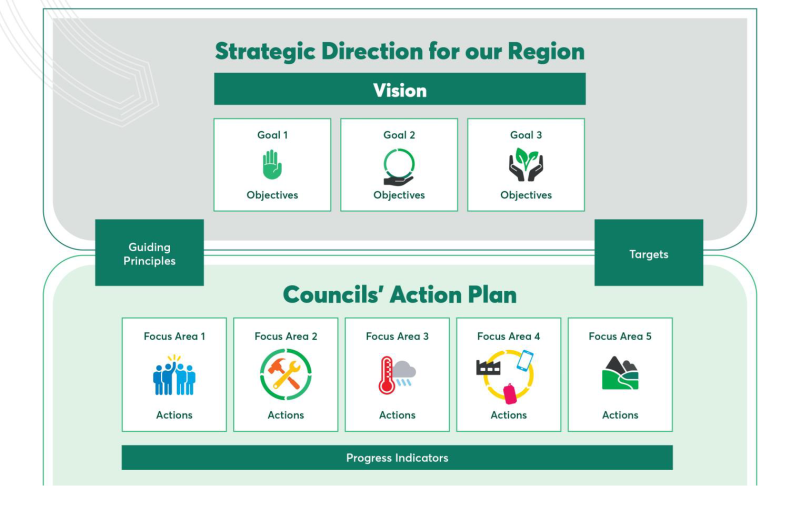
Figure 1
- Strategic framework for the Proposed Waste Plan
5.5 In
preparing the Proposed Waste Plan, the Working Party considered a variety of
priorities, including aligning waste activities with action on climate change
and proposed changes to relevant legislation.
5.6 The
Proposed Waste Plan introduces targets relating to reducing waste creation,
reducing disposal to landfill, and a new target of reducing greenhouse gas
emissions associated with waste.
5.7 The
Proposed Waste Plan includes a link to the 2024 Waste Assessment, which can
also be found here: https://www.nelson.govt.nz/assets/Services/Downloads/water-and-wastewater/Joint-Waste-Assessment/Joint-Waste-Assessment-_September-2024-1.pdf
6.1 The
Council has two options regarding the Statement of Proposal as detailed below:
· Option 1 –
Approve the Statement of Proposal (with minor amendments if required) and the
commencement of a public consultation process, or
· Option 2 –
Do not approve the Statement of Proposal and the commencement of a public
consultation process.
6.2 The advantages
and disadvantages of each option are presented in the following table:
|
Option
|
Advantage
|
Disadvantage
|
|
1.
|
Approve the Statement of Proposal (with minor amendments
if required) and the commencement of a public consultation process.
|
Our community is afforded an opportunity to share their
views with the Council on the proposed Waste Plan 2025.
Legislative requirements have been met.
Allows for alignment with Nelson City Council.
|
No significant risks or disadvantages.
|
|
2.
|
Do not approve the Statement of Proposal and the
commencement of a public consultation process.
|
None known.
|
Risk of not meeting legislative requirements.
Loss of opportunity to receive community feedback.
Risk of not aligning with Nelson City Council.
|
6.3 Option
1 is recommended: to approve the Statement of Proposal (with minor
amendments if required) and the commencement of a public consultation process.
7.1 Tasman
District Council has a statutory responsibility outlined in section 42 of the
Waste Minimisation Act 2008, to ‘promote effective and efficient waste
minimisation’ and, for this purpose, to adopt a waste management and
minimisation plan (section 43). Section 45 of the Act provides for one or more
councils to prepare and adopt a joint waste plan.
7.2 A
waste management and minimisation plan must be reviewed at intervals of not
more than six years (section 50). Section 44 of the Act sets out the
requirements when preparing, amending, or revoking a waste plan:
In preparing, amending, or
revoking a waste management and minimisation plan, a territorial authority must
· consider the
following methods of waste management and minimisation (which are listed in
descending order of importance): reduction, reuse, recycling, recovery,
treatment and disposal; and
· ensure that the
collection, transport, and disposal of waste does not, or is not likely to,
cause a nuisance; and
· have regard to
the New Zealand Waste Strategy, or any government policy on waste management
and minimisation that replaces the strategy; and
· have regard to
the most recent assessment undertaken by the Council under section 51 of the
Act; and
· use the special
consultative procedure set out in section 83 of the Local Government Act 2002
and, in doing so, the most recent assessment undertaken by the territorial
authority under section 51 must be notified with the statement of proposal.
7.3 The
review of the 2019 Waste Plan and preparation of the 2024 Waste Assessment
(appended to the Proposed Plan) were in accordance with the requirements of the
Act.
8. Iwi
Engagement / Whakawhitiwhiti ā-Hapori Māori
8.1 Iwi/Māori
have been invited to contribute to the review of the 2019 Waste Plan and
development of the Proposed Waste Plan. The terms of reference for the Waste
Working Party provides for Te Tauihu Iwi Chairs to nominate up to three
representatives on the working party. Unfortunately, these positions have not
been filled.
8.2 In
recent months we have engaged with iwi through Whakawhitiwhiti Whakaaro –
our iwi engagement portal and through kanohi ki te kanohi (face-to-face) hui
with iwi Taiao staff. We have provided early working drafts of our waste
assessment and of the Proposed Waste Plan. Iwi staff members have expressed an
interest in engaging on the Proposed Waste Plan in the new year.
8.3 While
we were not able to represent iwi/Māori in preparation of the document,
one of the guiding principles of the Proposed Waste Plan relates to iwi
engagement. It is Principle 2 - to “Honour Te Tiriti o Waitangi through
Kia Kotahi Te Tauihu – the Together Te Tauihu Partnership
Agreement”.
8.4 The
intent of the Proposed Waste Plan is that the councils will continue to engage
with iwi/Māori throughout the life of the plan.
9. Significance
and Engagement / Hiranga me te Whakawhitiwhiti ā-Hapori Whānui
9.1 The
following table provides an assessment of the significance of this decision.
Staff consider that the significance of the decision is Moderate overall.
|
|
Issue
|
Level of Significance
|
Explanation of Assessment
|
|
1.
|
Is there a high level of public
interest, or is decision likely to be controversial?
|
Moderate
|
Activities outlined in the
Proposed Waste Plan are likely to affect each resident of the district and
previous consultation on waste management and minimisation have generated a
moderate level of interest.
|
|
2.
|
Are there impacts on the social,
economic, environmental or cultural aspects of well-being of the community in
the present or future?
|
Moderate
|
The goals and objectives of the
Proposed Waste Plan and the activities arising from it are likely to affect
social, economic, environmental and cultural aspects of well-being of the
community.
|
|
3.
|
Is there a significant impact
arising from duration of the effects from the decision?
|
Moderate
|
The goals and objectives of the
Proposed Waste Plan are likely to affect the Council’s activities for
the next 6-10 years.
|
|
4.
|
Does the decision relate to a
strategic asset?
|
None
|
This decision does not relate to
a strategic asset.
|
|
5.
|
Does the decision create a
substantial change in the level of service provided by Council?
|
Low -Moderate
|
The decision to consult on the
Proposed Waste Plan does not change any levels of service, but the strategic
intent of the Proposed Waste Plan may affect levels of service in the future.
|
|
6.
|
Does the proposal, activity or
decision substantially affect debt, rates or Council finances in any one year
or more of the LTP?
|
Low -Moderate
|
The decision to consult on the
Proposed Waste Plan does not substantially affect debt, rates or Council
finances in any one year or more of the LTP, but the strategic intent of the
Proposed Waste Plan may affect these in the future.
|
|
7.
|
Does the decision involve the
sale of a substantial proportion or controlling interest in a CCO or CCTO?
|
None
|
This decision does not involve
the sale of a substantial proportion or controlling interest in a CCO or
CCTO.
|
|
8.
|
Does the proposal or decision
involve entry into a private sector partnership or contract to carry out the
deliver on any Council group of activities?
|
None
|
This decision does not involve
entry into a private sector partnership or contract to carry out the deliver
on any Council group of activities.
|
|
9.
|
Does the proposal or decision
involve Council exiting from or entering into a group of activities?
|
Low
|
This decision does not involve
the Council exiting from or entering into a group of activities.
|
|
10.
|
Does the proposal require
particular consideration of the obligations of Te Mana O Te Wai (TMOTW)
relating to freshwater or particular consideration of current legislation
relating to water supply, wastewater and stormwater infrastructure and
services?
|
Low
|
This proposal does not require
particular consideration of the obligations of Te Mana O Te Wai (TMOTW)
relating to freshwater or particular consideration of current legislation
relating to water supply, wastewater and stormwater infrastructure and services.
|
10. Communication
/ Whakawhitiwhiti Kōrero
10.1 Under
section 78 of the Local Government Act 2002, the Council must, during its
decision-making process, give consideration to the views and preferences of
persons likely to be affected by, or have an interest in, a matter.
10.2 Section
44 of the Waste Minimisation Act 2008, states that the councils must use the
special consultative procedure set out in section 83 of the Local Government
Act 2002 when preparing, amending or revoking a waste management and
minimisation plan.
10.3 Under
section 83 of the Local Government Act 2002, the Council must adopt a statement
of proposal and ensure it is publicly available, together with a description of
how the Council will provide interested persons with an opportunity to present
their views and a submission period of not less than one month.
10.4 Under
s 87(3) of the Local Government Act 2002 a Statement of Proposal must include:
· the proposed changes;
· the reasons for the
proposed changes;
· an analysis of the
reasonably practicable options, including the proposal; and
· any other information
that the local authority identifies as relevant.
10.5 Section
83 of the Local Government Act 2002 requires the Council to consider whether a
summary of the Statement of Proposal “is necessary to enable public
understanding of the proposal”.
10.6 The
proposed Statement of Proposal is reasonably complex; therefore, a summary is
considered necessary to assist with the public understanding of it.
10.7 The
public consultation process provides an opportunity for the public and other
stakeholders to engage in the process, and a structured way in which the
Council can respond to any concerns that may be raised. The proposed timeframe
is outlined below:
|
Item
|
Date
|
|
Nelson City Council approves the release of the Statement
of Proposal to the public for consultation
|
5 December 2024
|
|
Tasman District Council approves the release of the
Statement of Proposal to the public for consultation
|
11 December 2024
|
|
Statement of Proposal publicly notified and open for
submissions
|
1 February 2025
|
|
Consultation closes
|
7 March 2025
|
|
Hearing of Submissions
|
25 March 2025
|
|
Deliberation on submissions
|
29 April 2025
|
|
Final Waste Plan submitted to the councils for approval
|
July 2025
|
10.8 The
following are the key methods proposed to raise public awareness of the
consultation process, but these may be amended as the consultation process
progresses:
· Direct
contact with iwi partners and key stakeholders;
· A
media release outlining the proposal and the key issues;
· Information
and key dates advertised in the Councils’ newsletters to all households
(Our Nelson and Newsline);
· Detailed
information made available on Shape Nelson and Shape Tasman engagement
websites;
· Copies
of the Statement of Proposal and submission forms will be available from
Customer Services Centres and Council libraries (and on the website);
· Copies
of the Statement of Proposal and submission forms will be available for elected
members to take to any community meetings that they attend during the
consultation period;
· Coverage
in the Councils’ social media channels.
11. Financial
or Budgetary Implications / Ngā Ritenga ā-Pūtea
11.1 Approving
the Proposed Waste Plan for consultation has minor budgetary implications. Our
consultation process will be largely delivered with internal
resources.
11.2 The
Proposed Waste Plan does signal a proposal for the councils to increase efforts
to reduce waste generation, increase waste diversion and to protect people and
the natural environment from the harmful impacts of waste. The activities to
support these goals will likely require additional resources and investment.
11.3 Approving
the draft plan for consultation, and adopting an updated Waste Plan in 2025,
may create an expectation that the councils will provide additional resources
and investment in the future, although this is not necessarily a given.
11.4 Funding
for waste management and minimisation operations in Tasman District Council are
currently funded by a mixture of user charges, targeted rates, general rates
and Council’s share of the Waste Disposal levy, while capital works are
largely funded by debt (Figure 1). The Council also receives a Local Disposal
Levy from the Nelson Tasman Regional Landfill Business Unit (currently
$3,000,000 per annum), but this is largely used to offset resource recovery
centre operating costs.
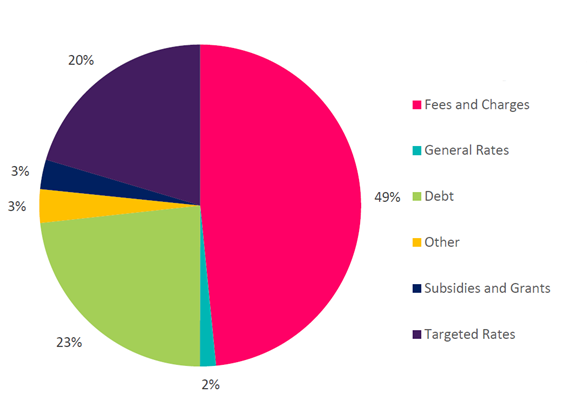
Figure 1: Waste Management
and Minimisation Funding Sources
(2024-34 Activity Management Plan)
11.5 Except
for kerbside recycling, which is funded by a targeted rate, most waste
minimisation activities in Tasman District at present are funded by the
Council’s share of the Waste Disposal levy. This funding has grown from
$187,000 in the 2020/21 financial year to $888,000 in the 2023/24 year and is
on track to provide over $1,100,000 in the 2024/25 year. This increase in
funding has allowed the Council to increase the range of waste minimisation
activities in recent years.
11.6 The
Council will require ongoing Waste Disposal Levy funding to continue to
increase waste minimisation activities and there is some risk that this funding
stream will reduce in coming years. Cabinet papers released following Budget
2024 suggest that the government is considering reducing the 50% of Waste
Disposal Levy income currently allocated to local government in the coming
budget. We understand that several mayors have written to government expressing
concern and we are preparing background information for the Mayor of Tasman
District to consider.
11.7 Improvements
in waste management practices could be delivered by commercial businesses and
not-for-profit entities, and the Council has a regulatory and engagement role
as well as providing services and infrastructure. Waste management services
also have the potential to provide income to the councils to fund waste
minimisation activities, through fees and charges and through the Nelson Tasman
Regional Landfill Business Unit.
11.8 Funding
and investment decisions for waste management and minimisation will be made
through the Councils’ Long Term Plan and Annual Plan processes. While a
council’s Long Term Plan would normally be consistent with its waste
management and minimisation plan, the Local Government Act 2002 allows for
variations between the two. In the event that there is significant variation
between proposals outlined in the two documents, the Council would need to
identify and explain these in the Long Term Plan.
12.1 The
main risk relating to this decision is if both councils do not approve the
Working Party’s recommendation, resulting in a delay in the review and
consultation process. If the Waste Plan review and consultation process is
delayed, there is a risk that the councils will not complete their review of
the 2019 Waste Plan within the six-year period required in law.
12.2 If
this review is not completed within this period, the councils may compromise
receiving their respective share of Waste Disposal Levy funding from central
government.
13. Climate
Change Considerations / Whakaaro Whakaaweawe Āhuarangi
13.1 The
proposal to approve the Proposed Waste Plan for consultation was considered by
staff in accordance with the process set out in the Council’s
‘Climate Change Consideration Guide 2024’.
13.2 The
purpose of the Proposed Waste Plan is to provide strategic guidance for both
councils’ waste minimisation and management activities, and a key
component of this is emissions reduction activities and planning to respond to
climate change.
13.3 For
these reasons climate change subject matter experts from both Nelson City and
Tasman District Councils are part of the project team to ensure a replacement
Waste Plan reflects the councils’ climate action plans and national
climate change policy.
13.4 Waste
minimisation and management activities are strongly connected to action on
climate change, particularly their impact on greenhouse emissions. Greenhouse
gas emissions are generated by both councils’ waste related activities,
particularly York Valley and Eves Valley landfills, and the councils have the
ability to influence behaviours in the wider community to reduce emissions from
waste generation and disposal.
13.5 The
Proposed Waste Plan includes new goals, objectives and targets that relate to
reducing emissions from waste activities. The Proposed Waste Plan also includes
a new focus area that proposes to address the impacts of climate change through
emissions reduction and improved planning to respond to climate related events.
14. Alignment
with Policy and Strategic Plans / Te Hangai ki ngā aupapa Here me ngā
Mahere Rautaki Tūraru
14.1 The
Proposed Waste Plan is broadly aligned with the following strategic policies
and plans:
· The
Tasman Regional Policy Statement
· The
Tasman District Council Long Term Plan – “Tasman’s 10-year
Plan 2024-2034”
· Tasman
Climate Response and Resilience Strategy and Action Plan 2024-2035.
14.2 Both
the Tasman District Council and the Strategy and Policy Committee of the
Council have delegated authority to approve the Proposed Waste Plan for
consultation.
15. Conclusion
/ Kupu Whakatepe
15.1 A
proposed waste management and minimisation plan for Nelson City Council and
Tasman District Council has been prepared by the working party created by the
councils for this purpose. This plan has followed preparation of a waste
assessment in accordance with the Waste Minimisation Act 2008, and a decision
in April 2024 to revoke and replace the 2019 Waste Plan. Approval is sought
from the Council to commence consultation.
15.2 The
same recommendations have been made to Nelson City Council for their meeting on
5 December 2024. Approval of the draft Waste Plan 2025 for consultation
will be subject to Nelson City Council also approving this recommendation.
16. Next
Steps and Timeline / Ngā Mahi Whai Ake
16.1 If
both councils approve a public consultation procedure, the public consultation
process will commence on 1 February and close on 7 March 2025.
16.2 The
Waste Working Party will hear submissions and deliberate on amendments to the
Proposed Waste Plan as provided for in the Joint Waste Review Working Party
Terms of Reference.
16.3 Following
the completion of the consultation process, including hearings and
deliberations, a final draft of the Proposed Waste Plan will be presented to
both councils for adoption by August 2025.
|
1.⇩
|
Draft
Nelson Tasman Waste Management and Minimisation Plan 2025 (Statement of
Proposal)
|
306
|
|
2.⇩
|
Summary of
the information contained in the Statement of Proposal
|
351
|
Tasman District
Council
Agenda – 11 December 2024
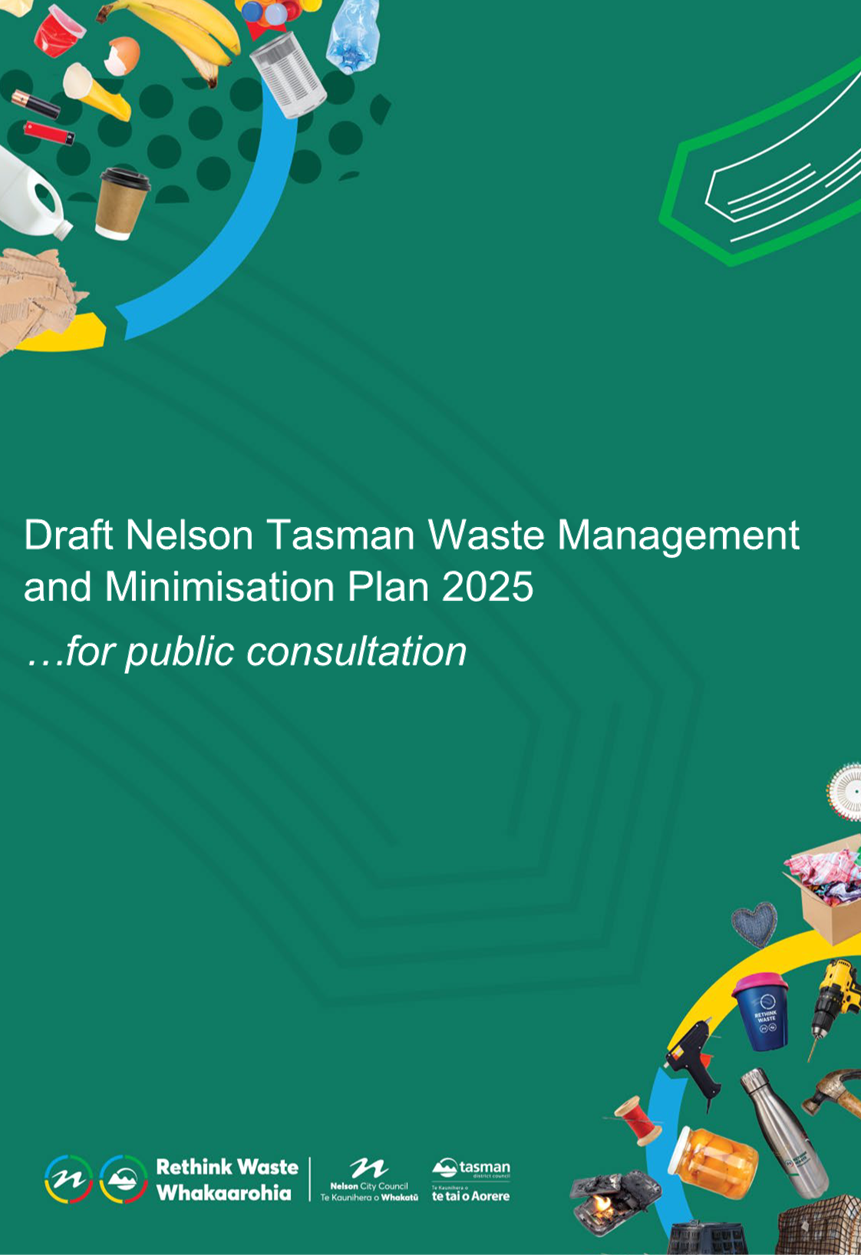
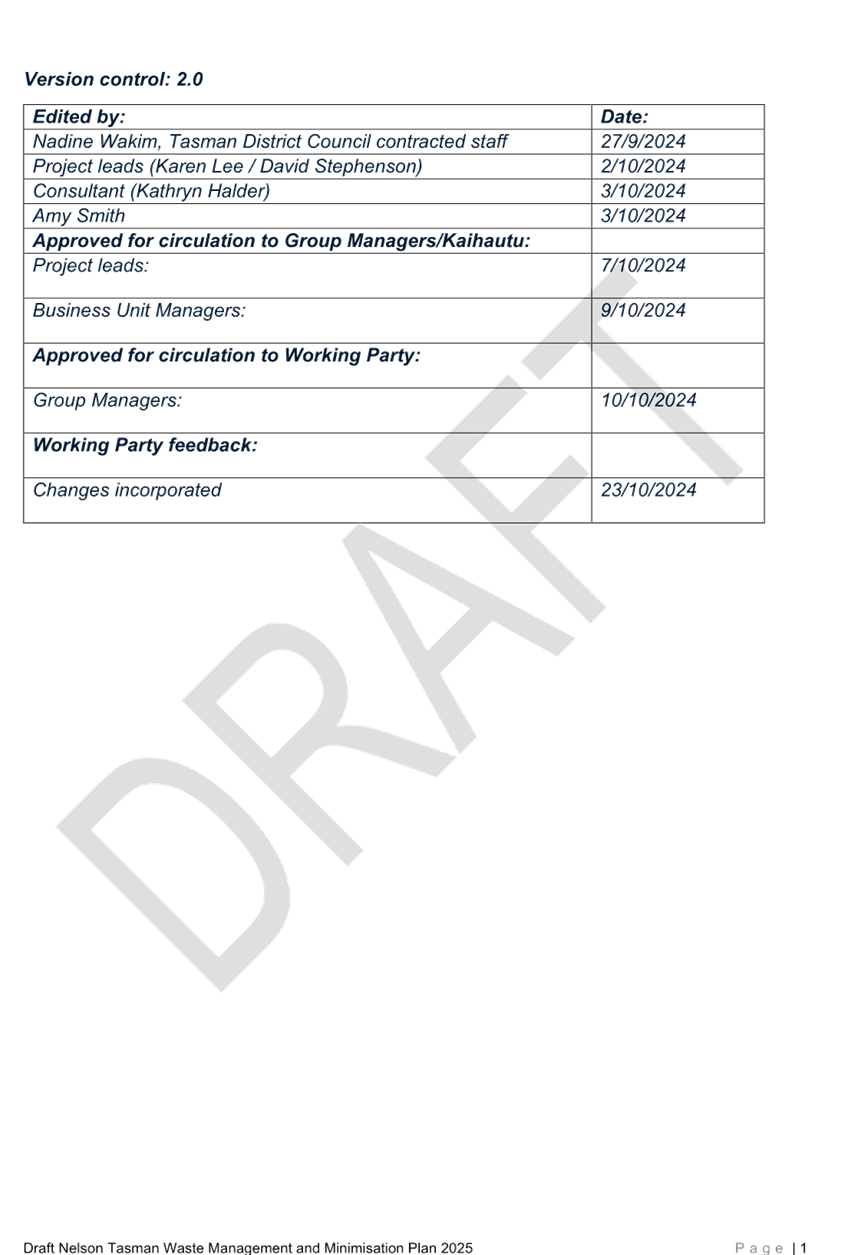
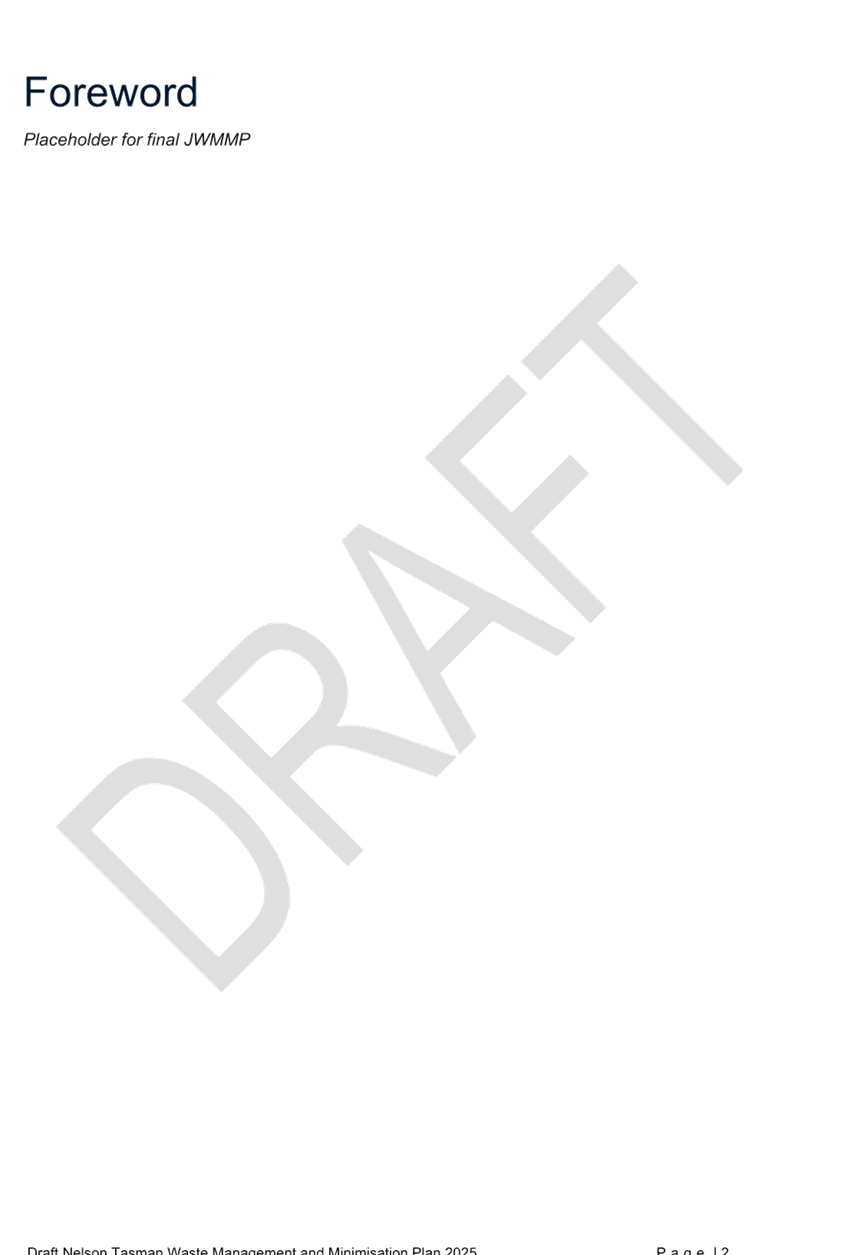
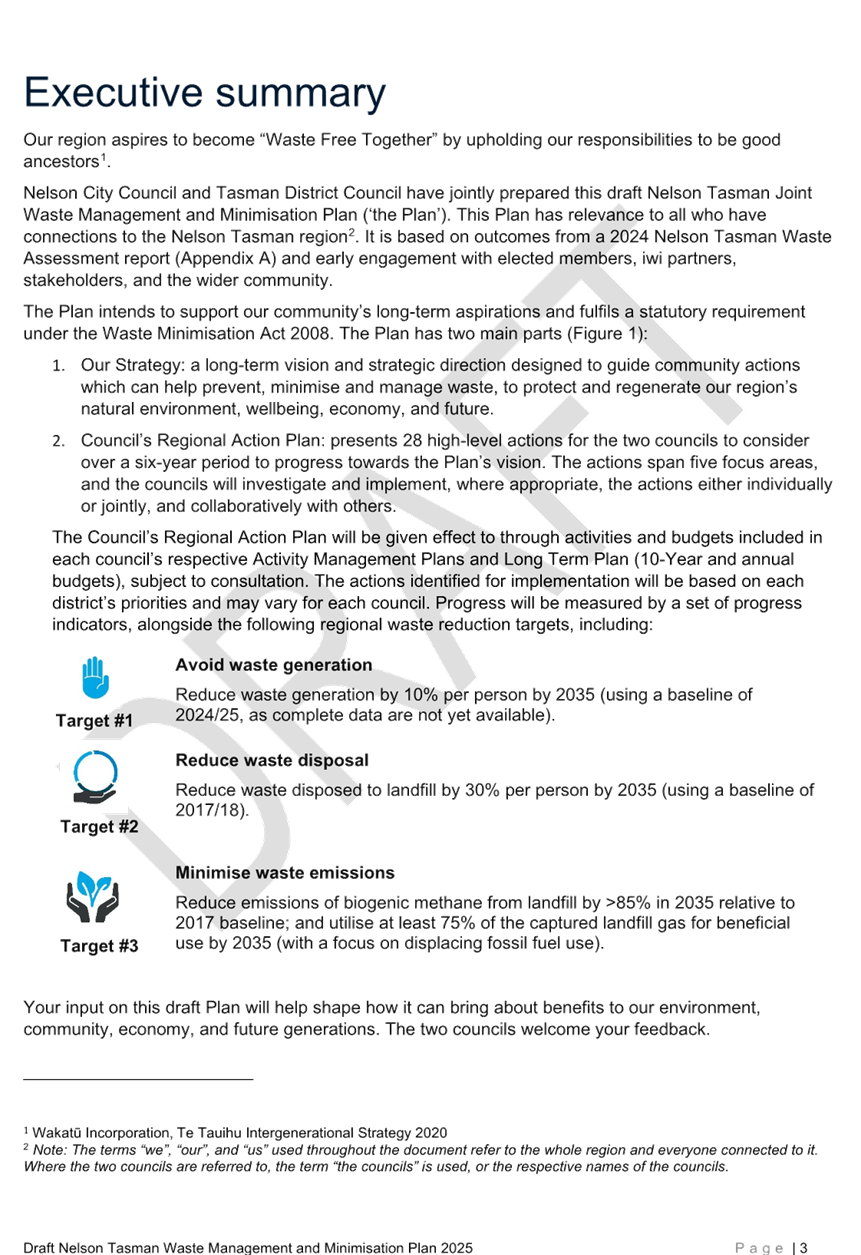
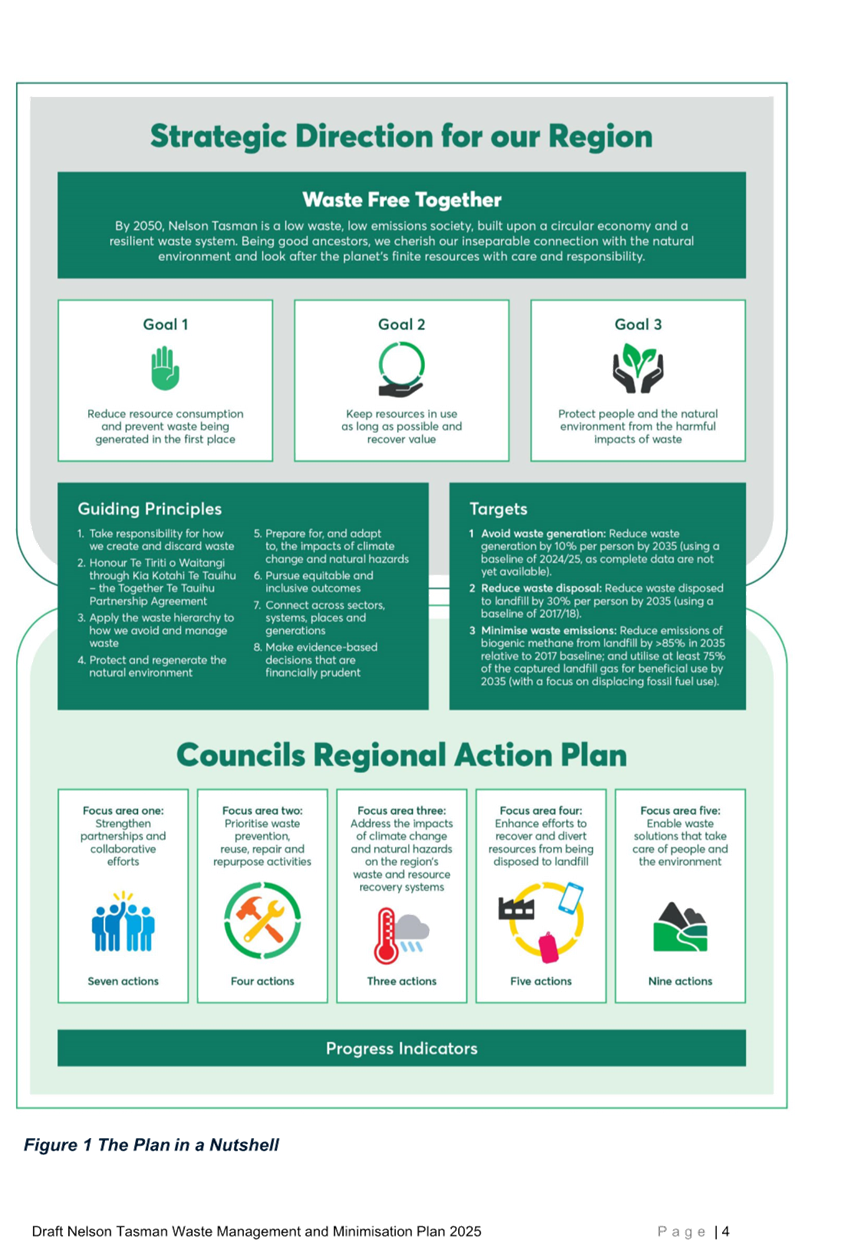
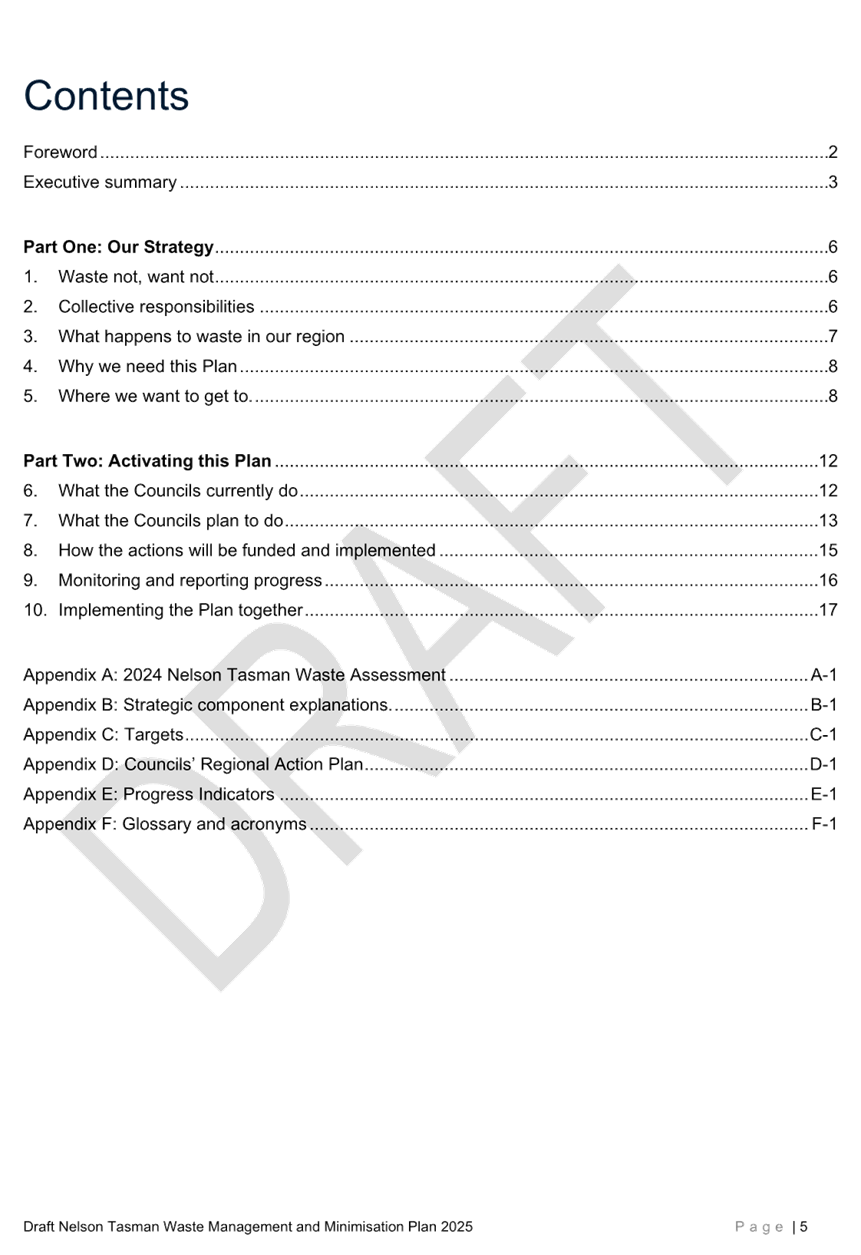
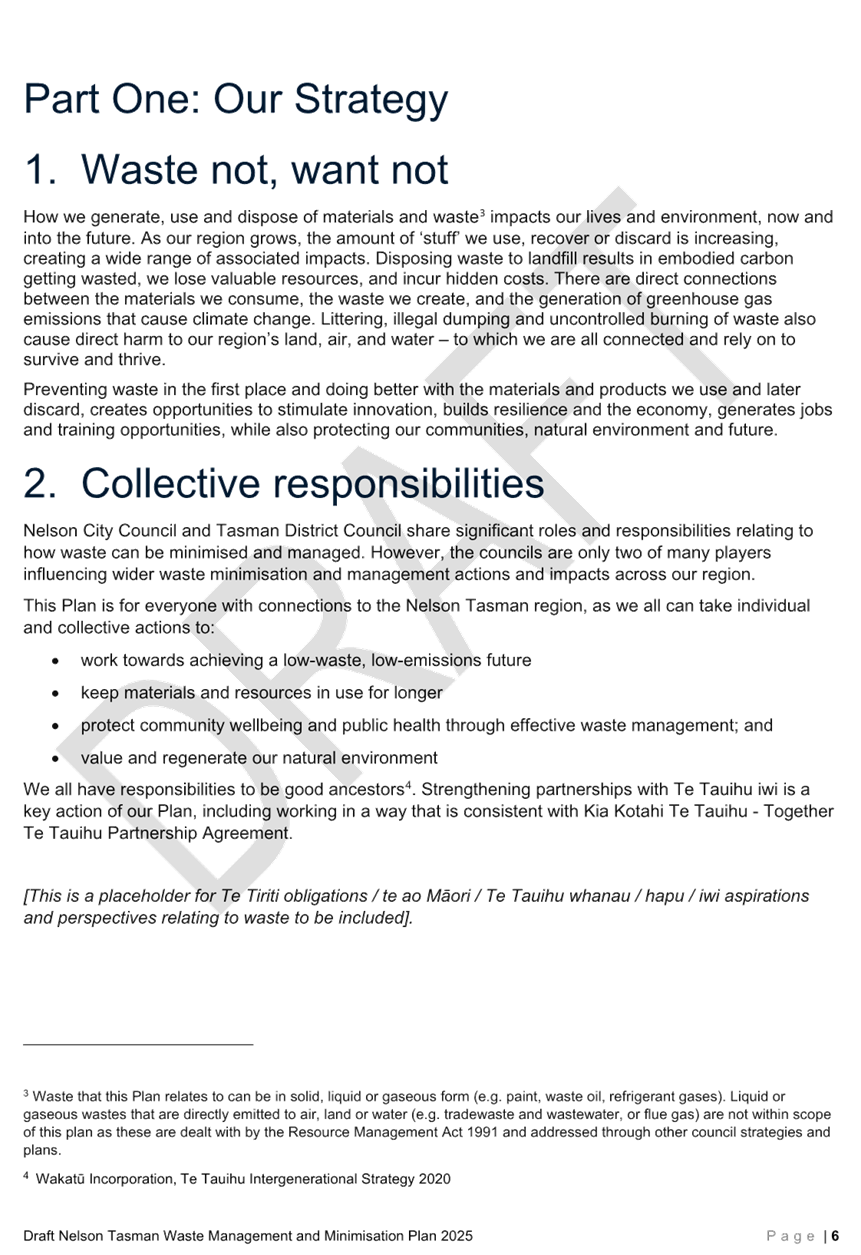
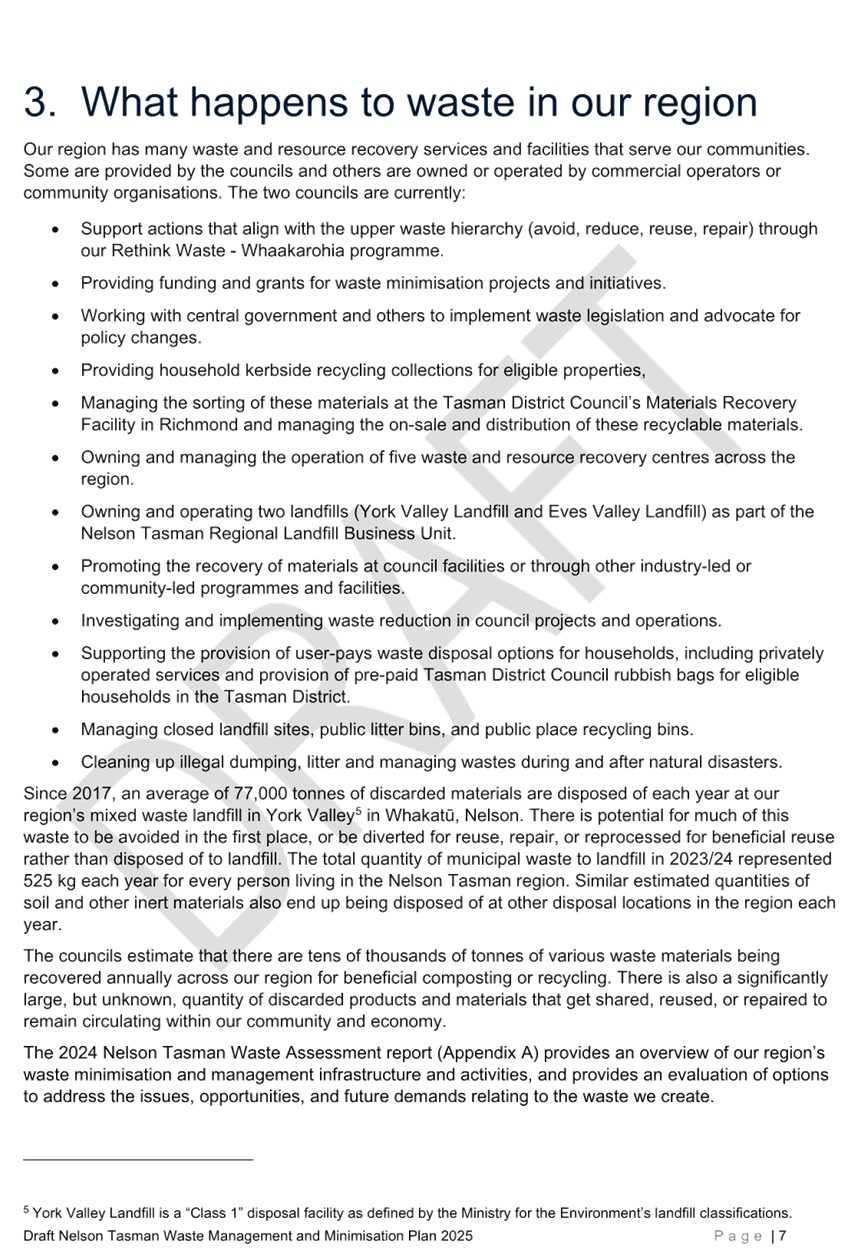
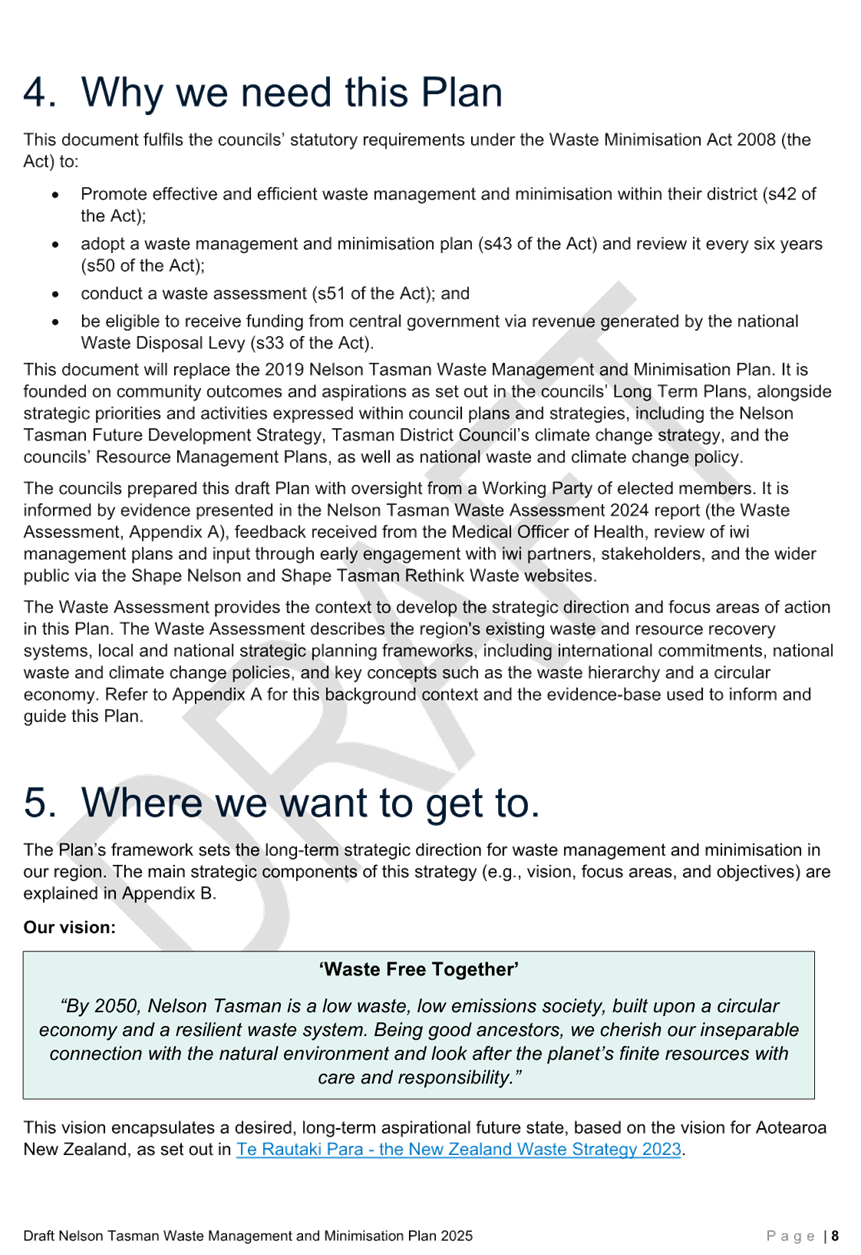
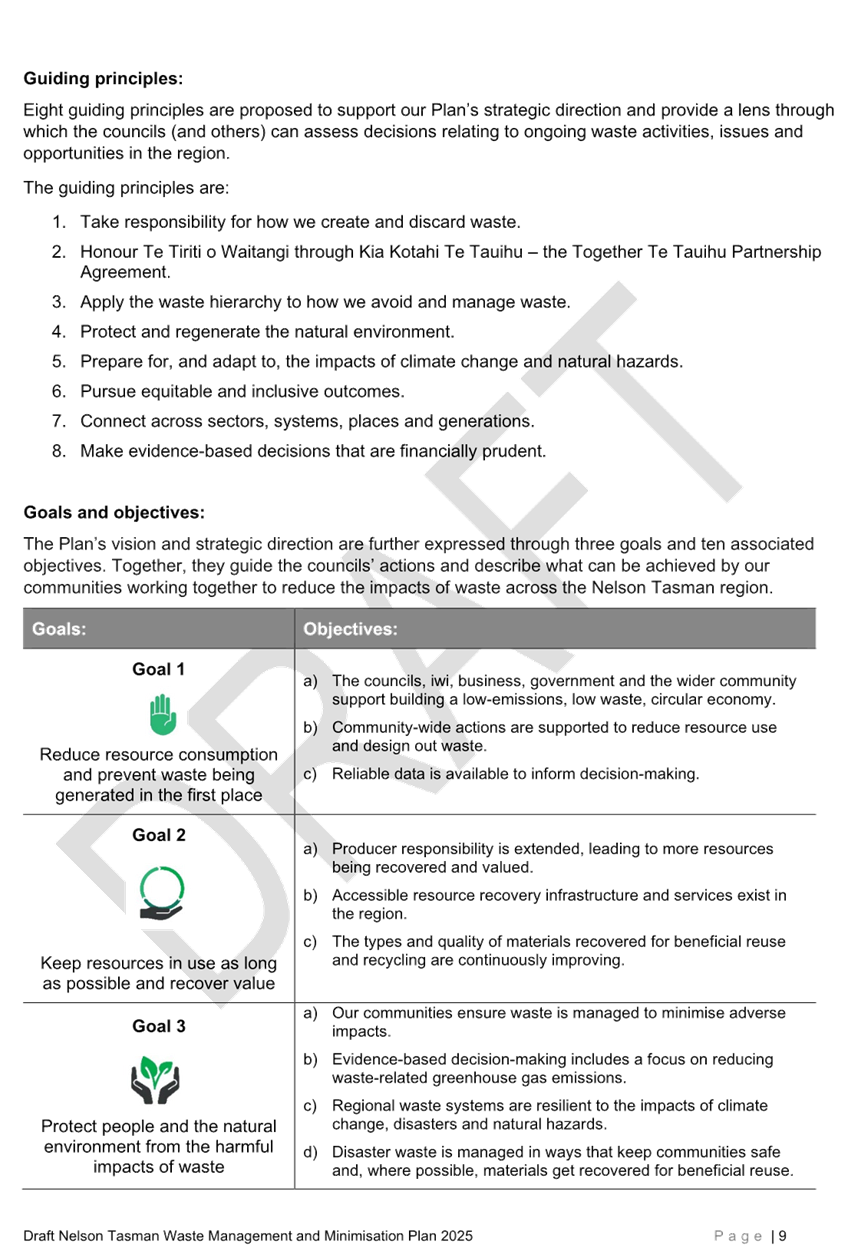
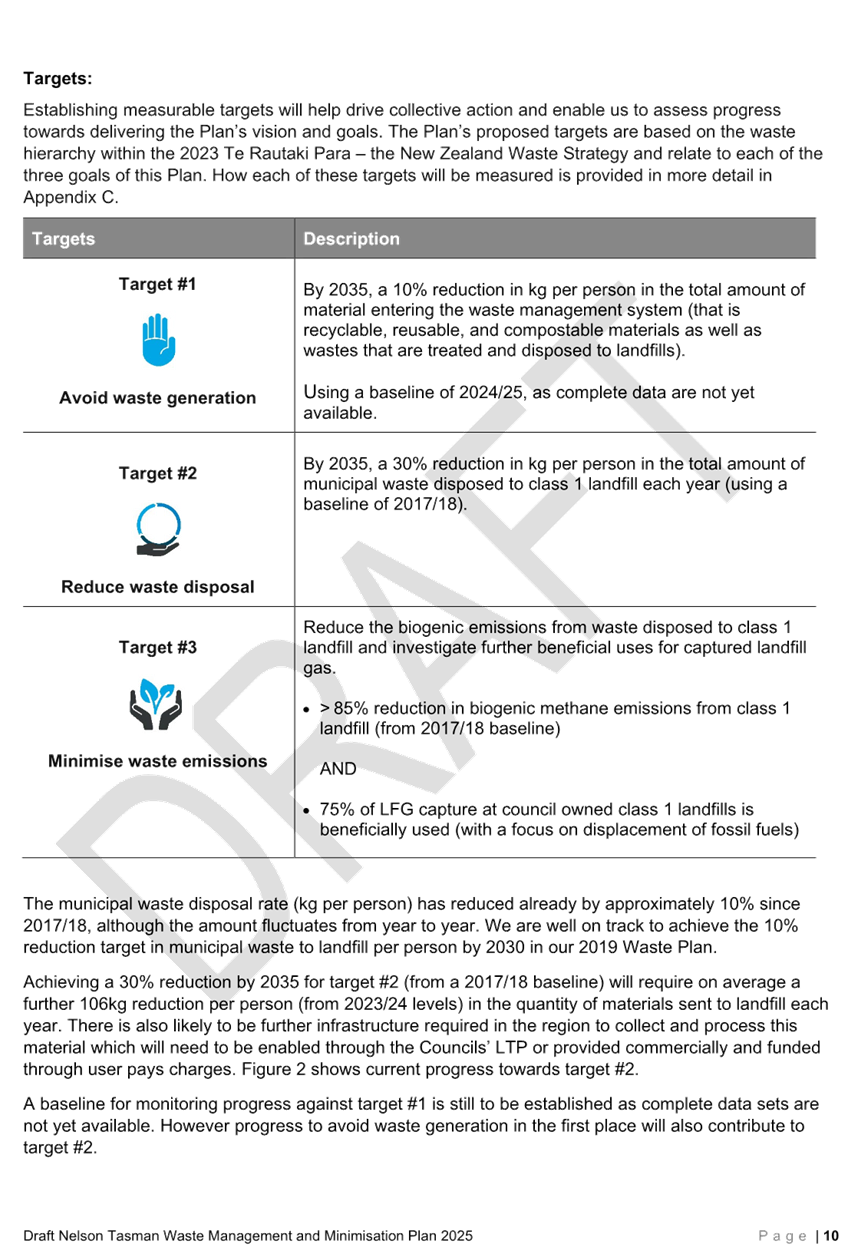
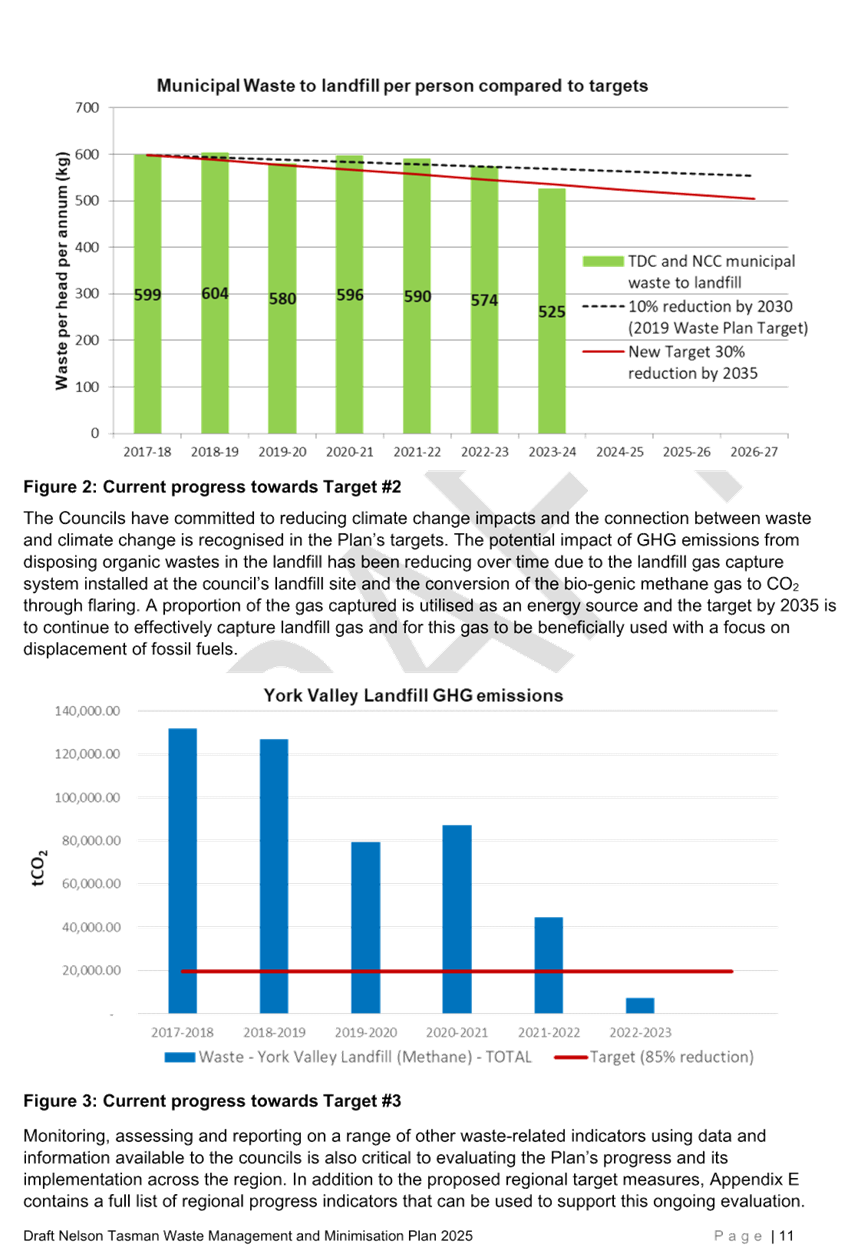
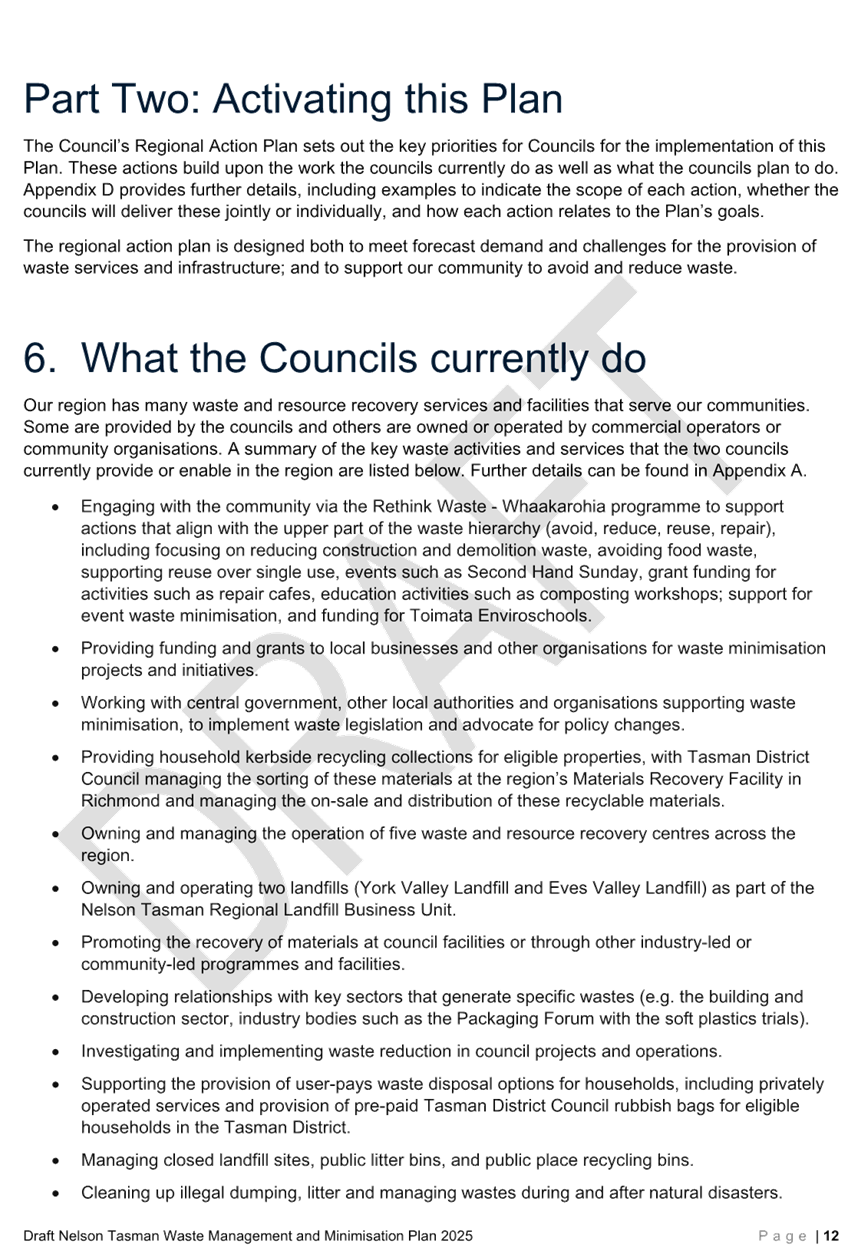

Tasman District Council Agenda – 11 December 2024

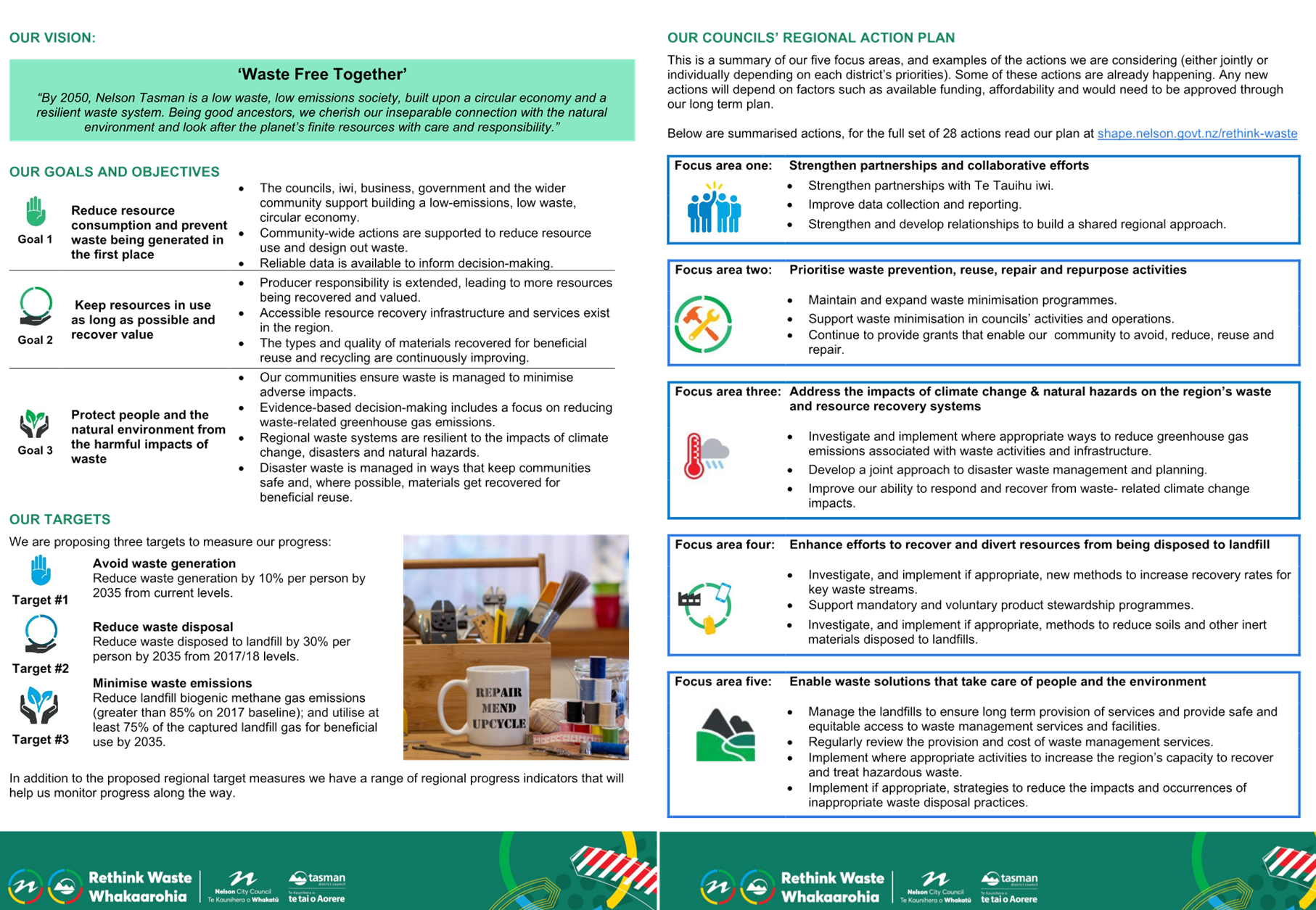
Tasman District Council Agenda – 11 December 2024
7.9 Amendments to Delegations
Decision Required
|
Report
To:
|
Tasman
District Council
|
|
Meeting
Date:
|
11
December 2024
|
|
Report
Author:
|
Leith
Townshend, General Counsel
|
|
Report
Authorisers:
|
Steve
Manners, Chief Operating Officer
|
|
Report
Number:
|
RCN24-12-9
|
1. Purpose
of the Report / Te Take mō te Pūrongo
1.1 To
make further delegation amendments, and additional delegations, following the
reorganisation of the Environmental Science group.
1.2 This
report also provides clarification on delegations approved by the Council as
requested at the Council meeting on 12 September 2024 (CN24-09-13).
2. Summary
/ Te Tuhinga Whakarāpoto
2.1 The
Information, Science and Technology group has recently been restructured, with
the group now focusing on Environmental Science, with the IT function moving to
sit within Council Operations. The Environmental Science group, which has
responsibilities including biosecurity, river and coastal management and
environmental monitoring and management, have changes to position titles and
roles which necessitate amendment to delegations.
2.2 As
with the previous team restructures, the legal team have taken the opportunity
to review all delegations within the responsibility of the Environmental
Science group. This report provides recommendations for changes to statutory
delegations for the Environmental Science group, including amendments and
additional delegations.
2.3 This
report also contains requested clarification on the delegation amendments
requested to the register at the Council meeting on 12 September 2024. These
delegations were requested following the re-structures and position title
changes in the Finance team and the Legal and Democracy Services team.
3. Recommendation/s
/ Ngā Tūtohunga
That the Tasman
District Council
1. receives
the Amendments to Delegations report, RCN24-12-9; and
2. approves the change in position title for delegations
under the Local Government (Rating) Act 2002 from ‘Team Leader –
Water Supply and Wastewater’ to ‘Team Leader – Water
Supply’; and
3. approves the amendments to delegations under s.329 and
s.330 in the Resource Management Act 1991 to replace the position titles
‘Group Manager – Information, Science and Technology’ and
‘Environmental Information Manager’ with ‘Group Manager
– Environmental Science’; and
4. approves amendment to management delegation 5.5 RMA
Authority (to act with the scope of responsibility as a requiring
authority) to change delegation from
‘Group Manager – Information, Science and Technology’ to
‘Group Manager – Environmental Science’; and
5. approves changes to delegations under the Biosecurity
Act 1993 as detailed in Attachment 1 of the agenda report; and
6. approves changes to delegations under the Soil
Conservation and Rivers Control Act 1941 as detailed in Attachment 1 of the
agenda report; and
7. approves a change to the Operations Committee terms of
reference to remove the Soil Conservation and Rivers Control Act delegation
under Part 7; and
8. approves delegation under s.31 of the Wild Animal
Control Act 1977 to the Group Manager – Environmental Science; and
9. acknowledges that clarification on delegations
approved under the Local Government Act 2002, Local Government Official
Information Act 1987, Local Government (Rating) Act 2002 and Rating Valuations
Act 1998, as requested by the Council on
12 September 2024 (CN24-09-13) has been provided; and
10. notes that the Delegations Register will be updated to
reflect changes approved.
4.1 The
Council’s authority to delegate to its standing committees, committees,
subcommittees, or staff is principally derived from
Schedule 7, Clause 32 of the Local Government Act 2002 (LGA). Delegations
are made to staff roles not to individuals and recorded against position
titles, which necessitates review when position titles change, or
organisational restructures occur to ensure that each role retains or gains the
delegations needed.
4.2 The
legal team are working through a comprehensive review of statutory delegations,
to prepare for a move from the current PDF delegations register to
LocoDelegations, an online, searchable delegations register. LocoDelegations
has been developed for the local government sector and legally reviewed by
Simpson Grierson, who are currently engaged by the product developer to review
content on a regular basis. This helps ensure changes to legislation are
notified to councils using the product, assisting with keeping delegations up
to date.
4.3 Where
powers have been previously delegated, amendments to position titles generally
do not require approval by the Council due to the Chief Executive
Officer’s powers of sub-delegation. Certain legislation, however,
requires that only the Council can delegate its powers and functions, and this
applies to the Local Government (Rating) Act 2002 (LGRA) and the Resource
Management Act 1991 (RMA). Any amendments to powers, and any new delegations
also require approval by the Council.
4.4 Following
restructures impacting the Finance and the Legal and Democracy teams, staff
requested amendments and additional delegations to roles within these teams at
the Council meeting on 12 September 2024.
4.5 The
Council requested that clarification on these amendments be provided:
CN24-09-13
That the Tasman District
Council
8. requests that
clarification be provided showing the changes to the delegations in this
resolution, post the meeting;
4.6 This
report provides detail on the amendments that were approved for the following
Acts:
· Local
Government Act 2002
· Local Government
Official Information Act 1987
· Local
Government (Rating) Act 2002
· Rating Valuations
Act 1998
4.7 Due
to a further restructure involving positions that sit in the Environmental
Science group, delegations impacting positions within that group require
amendment. As such,a review of delegations under the following Acts was
undertaken:
· Biosecurity Act 1993
· Soil Conservation and
Rivers Control Act 1941
· Wild Animal Control Act
1977
4.8 Positions
within that group also held delegations under the Resource Management Act 1991
which require amendment due to change in position titles and responsibilities
of those roles.
5. Analysis
and Advice / Tātaritanga me ngā tohutohu
New and amended delegations
5.1 As
with any restructure, it is important to ensure delegations remain up to
date. Amendments and delegations are requested for the Environmental
Science group to ensure:
5.1.1 Position
titles and delegations are correct for current roles with responsibility for
areas under these Acts; and
5.1.2 Staff
have the delegations to the level needed.
5.2 This
report requests the following changes to delegations, to be recorded as
detailed in Attachment 1: Proposed Amendments to Delegations Register.
Biosecurity Act 1993
5.3 A
new delegation is requested to provide formal delegation to the Environmental
Science group to undertake the operational responsibilities of the Council
regarding Biosecurity including under the newly adopted Regional Pest
Management plan. Note that the delegation does not confer the following powers
under this section as these cannot be delegated under section 100H(3):
(a) the power
to determine the ways in which consultation must be undertaken; or
(b) the power
to make, review, amend, or revoke a plan; or
(c) the power to declare a small-scale
management programme.
5.4 Staff
also request the removal of the delegation under s.100E to the Strategy and
Policy committee under part 4: statutory delegations. The power described does
not correlate with the section number provided. Section 100E provides direction
on “Review of plans after national policy direction approved, amended, or
revoked and replaced.” This specific section is not referenced in the
Strategy and Policy Committee’s terms of reference, only the power of
recommendation. Under s100H(3)(b) only the Council can make decisions on plans,
so in the case of a change in National Policy direction as anticipated by
s.100E, this would go to the Council.
5.5 The
final delegation request under this act relates to Tasman District
Council’s role as a management agency under the Act, and the power
provided to management agencies under s.131 ‘Declaration of controlled
areas.” Previously this power has been recorded as a warranted power of
specific authorised officers, however as a power of a management agency it is
appropriate that it should be recorded as a delegation to staff in the
delegations register.
Soil Conservation and Rivers Control Act 1941 (SCRCA)
5.6 As
of November 2023, the responsibility for rivers and coastal structures moved
from the Community Infrastructure group to what is now the Environmental
Science group. With the team now fully established under Environmental Science
it is appropriate to review delegations under SCRCA to ensure they sit with the
rivers and coastal structures team.
5.7 Delegations
recorded currently under this Act are included in a broad delegation as
follows:

5.8 In
the Operations Committee terms of reference, the delegation had been removed as
below:

5.9 Part
7 of the Act has not been repealed, only s144 within this part. Staff however
have reviewed all delegable powers under Part 7, with delegations being amended
to include the Environmental Science team, and those powers not delegated to
staff, are proposed to remain with the Council rather than being delegated to a
committee. Powers under these sections (s125, s131, s137, s138 and s139) have
been deemed by staff as either not used or very rarely used.
5.10 A
new delegation is requested under section 154 which provides the power to give
written approval to a person in relation to watercourses and works and
recovering costs of any damage. This allows staff with the delegation to act
where there is destruction or damage to any watercourse or defence against
water, and this has not been permitted, and to recover costs in the manner
prescribed in the section.
Wild Animal Control Act 1977
5.11 Staff
also request a new delegation under s.31 of the Wild Animal Control Act which
provides the authority to prepare to submit plans for destruction of wild
animals for approval of the Minister. The delegation will provide authority for
Environmental Science staff to work on an ungulate management programme. Staff
are currently working with Department of Conservation and Kotahitanga mō
te Taiao on developing a plan in this area.
Resource Management Act 1991
5.12 Staff
request approval to amend delegations under s.329 (power to issue a water
shortage direction) and s.330 (power to invoke emergency work provisions) of
the Resource Management Act (RMA) currently providing delegations to
‘Environmental Information Manager’ and ‘Group Manager
– Information, Science and Technology’ respectively. Neither
of these position titles now exist, with the request to change both delegations
to ‘Group Manager – Environmental Science’.
5.13 Staff
also request a change to the delegation to act with the scope of responsibility
as a requiring authority under management delegations 5.5 from ‘Group
Manager – Environmental Science as excerpted below:
Clarification of previous delegation requests and
amendments
Local
Government Act 2002
5.14 A
new statutory delegation was requested to make clear the delegations regarding
elected members’ pecuniary interests. The Local Government (Pecuniary
Interests Register) Amendment Act 2022 inserted a new set of requirements and
obligations into the Local Government Act 2002 (LGA), regarding elected
members’ pecuniary (financial) interests.
5.15 The
Council appointed the Legal and Democracy Services Manager as registrar
(responsible for keeping the register) on 3 November 2022 (CN22-11-6) however
as at that time the new sections had not been inserted into the Local
Government Act 2002, a statutory delegation was not made. The new delegation
requested also updated the position title - the Legal and Democracy Services
Manager position no longer exists, with the administration of elected member
pecuniary interests now sitting with the Governance team.
5.16 An
excerpt from the current Delegations Register with the approved delegation is
below:
|
Local Government Act 2002
|
|
|
s.54A
Keeping a
register of members' pecuniary interests
|
Chief
Executive Officer (includes Acting Chief Executive Officer)
Governance
Manager
|
Local Government Official
Information and Meetings Act 1987 (LGOIMA)
5.17 Prior
to the recent approval of changes to the Local Government Official Information
and Meetings Act 1987 (CN24-09-13) delegations under the Act were recorded in
Management Delegations as follows:
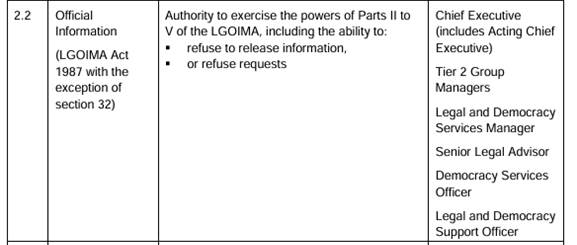
5.18 No
new delegations were requested as Parts II to V includes sections 10 –
40). The only changes to delegations were to:
· Record
delegations separately by section under Part 4: Statutory Delegations of the
register rather than as a catch-all under “authority to exercise parts II
to V of LGOIMA”. This will align with the requirements of
LocoDelegations.
· Update
position titles due to the restructure of the Legal and Democracy team into the
Governance team and Legal team - it is now the Legal team that manages the
LGOIMA process.
· Inclusion
of all staff under section 15 - provision of documents, as all teams assist
with responding to requests in their function areas.
5.19 An excerpt from the updated Delegations
Register with these updates is below:
|
Local Government Official Information and
Meetings Act 1987
|
|
|
s.10
Actioning
requests
|
Chief Executive (includes Acting Chief Executive)
Tier 2 Group Managers
General Counsel
Senior Legal Advisor
Legal Advisor
Legal Services Officer
Legal Support Officer
|
|
|
s.13
Deciding
whether a request is to be granted and in what manner and if charge to be
made
|
Chief Executive (includes Acting Chief Executive)
Tier 2 Group Managers
General Counsel
Senior Legal Advisor
Legal Advisor
Legal Services Officer
Legal Support Officer
|
|
|
s.15
Providing
documents
|
Chief Executive (includes Acting Chief Executive)
All Council staff
|
|
|
s.16
Deleting
information from a document and giving reasons
|
Chief Executive (includes Acting Chief Executive)
Tier 2 Group Managers
General Counsel
Senior Legal Advisor
Legal Advisor
Legal Services Officer
Legal Support Officer
|
|
|
s.17
Refusing a
request for information for certain reasons
|
Chief Executive (includes Acting Chief Executive)
Tier 2 Group Managers
General Counsel
Senior Legal Advisor
Legal Advisor
Legal Services Officer
Legal Support Officer
|
|
|
s.17A
Considering
whether fixing a charge or extending a time limit would enable a request
involving substantial collation or research to be granted
|
Chief Executive (includes Acting Chief Executive)
Tier 2 Group Managers
General Counsel
Senior Legal Advisor
Legal Advisor
Legal Services Officer
Legal Support Officer
|
|
|
s.17B
Deciding
whether to consult with the person who made the request where it is likely to
be refused
|
Chief Executive (includes Acting Chief Executive)
Tier 2 Group Managers
General Counsel
Senior Legal Advisor
Legal Advisor
Legal Services Officer
Legal Support Officer
|
|
|
s.18
Giving
reasons for refusal of a request and information about rights
|
Chief Executive (includes Acting Chief Executive)
Tier 2 Group Managers
General Counsel
Senior Legal Advisor
Legal Advisor
Legal Services Officer
Legal Support Officer
|
|
|
s.21
Making
documents available with deletions or alterations or providing another
document and providing reasons for withholding documents
|
Chief Executive (includes Acting Chief Executive)
Tier 2 Group Managers
General Counsel
Senior Legal Advisor
Legal Advisor
Legal Services Officer
Legal Support Officer
|
|
|
s.24
Taking the
necessary precautions when giving access to information
|
Chief Executive (includes Acting Chief Executive)
Tier 2 Group Managers
General Counsel
Senior Legal Advisor
Legal Advisor
Legal Services Officer
Legal Support Officer
|
|
|
s.25
Taking
action when correction requested and informing person of any action taken
|
Chief Executive (includes Acting Chief Executive)
Tier 2 Group Managers
General Counsel
Senior Legal Advisor
Legal Advisor
Legal Services Officer
Legal Support Officer
|
|
|
s.26
Refusing
access to personal information in certain circumstances
|
Chief Executive (includes Acting Chief Executive)
Tier 2 Group Managers
General Counsel
Senior Legal Advisor
Legal Advisor
Legal Services Officer
Legal Support Officer
|
Local Government (Rating) Act
2002 (LGRA)
5.20 Staff
already held statutory delegations under the LGRA, however these were based on
the prior team structure, and were not complete. Amendments and additional
delegations under this Act were requested as follows.
Amendments
and updates
5.20.1 Update
position titles (all sections) for the Chief Financial Officer and the Revenue
and Rates Manager, and remove position titles that no longer exist;
5.20.2 Update
delegations to include additional roles with responsibility under the new team
structure;
5.20.3 Update
wording to align with the requirements of LocoDelegations;
Additional
delegations
5.20.4 Provide
delegations to staff to formalise their authority to meet the requirements of
the Local Government (Rating) Act 2002 regarding administration of rates
records:
· s.
38 – that delegated staff may ask a person for confirmation that they
meet the requirements as to who can inspect a rates record;
· s.
41 – 42 – that delegated staff can amend rates records when there
is an error, and recover any rates due to an error, in accordance with the
details in these sections.
5.20.5 Provide
delegations to staff to formalise their authority to meet the requirements of
the Local Government (Rating) Act 2002 regarding the provision of rates notices
and collection of rates:
· s.
44 – 49, 51 – that delegated staff deliver rates assessments and
rates invoices to ratepayers setting out the information required by the Act in
these sections.
· s.
53 – that delegated staff can appoint a person to collect rates as
assessed.
· s.
58 – that delegated staff can apply penalties as allowed for and in the
manner prescribed by this section.
5.20.6 To
ensure staff have all delegations required to carry out administrative tasks
associated with the Council’s Rates Remission policies. Some of these
delegations were already provided under a catch-all “Authority to
administer rate remission and postponement policies” but not all sections
were detailed – additional delegations were requested to complete the
delegation of these functions (sections 88, 89, 90).
5.20.7 Provide
delegations to staff to meet the requirements of the Local Government (Rating
of Whenua Māori) Amendment Act 2021 under which additional sections were
inserted into the LGRA on 1 July 2021 regarding the administration of separate rating
areas on Māori freehold land (s98A – 98F)
5.20.8 Provide
additional delegations to staff where there were only delegations to complete
part of the process. Staff already had delegation under s.99 to apply to the
Māori Land Court for charging orders. Delegations were added under s.108
and s.111 to enable staff to apply for enforcement of an order to, and of
penalties imposed by, the Māori Land Court.
5.21 Staff
now also request a minor change to delegations under the LGRA to update the
position title ‘Team Leader – Water Quality and Wastewater’
to ‘Team Leader – Water Quality’.
5.22 An
excerpt from the updated Delegations Register with approved changes and the
amended position title detailed in paragraph 5.8 is below:
|
Local Government (Rating Act) 2002
|
|
133
|
s.28(2)
Power to
decide whether the disclosure of the name of any person is necessary to
identify a rating unit.
|
Chief Executive (includes Acting Chief Executive),
Chief Financial Officer
Financial Performance Manager,
Revenue and Rates Manager,
Senior Rates Officer
Rates Officer
|
|
134
|
s.28(3)
Authority
to determine a fee for being supplied a copy of Rating Information Database
(RID) data.
|
Chief Executive (includes Acting Chief Executive),
Chief Financial OfficerFinancial Performance Manager,
Revenue and Rates Manager
|
|
135
|
s.29
Authority
to determine objections to the Rating Information Database.
|
Chief Executive (includes Acting Chief Executive),
Chief Financial Officer
Financial Performance Manager,
Revenue and Rates Manager
|
|
136
|
s.35
Authority
to remove a name from the Rating Information Database.
|
Chief Executive (includes Acting Chief Executive),
Chief Financial Officer
Financial Performance Manager,
Team Leader - Revenue Administration,
Revenue and Rates Manager,
Senior Rates Officer,
Finance Officer - Accounts Receivable and Revenue,
Finance Officer - Banking and Revenue,
Finance Officer - Rates and Revenue,
Rates Officer,
Water Billing Officer
|
|
|
s.38
Inspection
of rates records
|
Chief Financial Officer
Financial Performance Manager
Revenue and Rates Manager
Team Leader Revenue Administration
Senior Rates Officer
Rates Officer
|
|
137
|
s.39
Authority
to determine objections to rates records.
|
Chief Executive (includes Acting Chief Executive),
Chief Financial OfficerFinancial Performance Manager,
Revenue and Rates Manager
|
|
138
|
s.40
Authority
to correct errors in the Rating Information Database and Rate Records.
|
Chief Executive (includes Acting Chief Executive),
Chief Financial OfficerFinancial Performance Manager,
Revenue and Rates Manager,
Senior Rates Officer,
Rates Officer,
Water Billing Officer
|
|
|
s.41
Issuing an
amended rates assessment where there is an error in rating information
database or rates record is corrected and refunding rates where necessary
|
Chief Executive (includes Acting Chief Executive),
Chief Financial Officer
Financial Performance Manager
Revenue and Rates Manager
Team Leader Revenue Administration
Senior Rates Officer
Rates Officer
|
|
|
s.41A
Issuing an
amended rates assessment to give effect to objection to valuation under
Rating Valuations Act 1998 and refunding or recovering money where necessary
|
Chief Executive (includes Acting Chief Executive),
Chief Financial Officer
Financial Performance Manager
Revenue and Rates Manager
Team Leader Revenue Administration
Senior Rates Officer
Rates Officer
|
|
|
s.42
Recovering
additional rates in certain circumstances
|
Chief Executive (includes Acting Chief Executive),
Chief Financial Officer
Financial Performance Manager
Revenue and Rates Manager
Team Leader Revenue Administration
|
|
|
s. 44-49, 51
Designing
and delivering rates assessments and invoices to ratepayers in accordance
with these sections
|
Chief Executive (includes Acting Chief Executive),
Chief Financial Officer
Financial Performance Manager
Revenue and Rates Manager
Team Leader Revenue Administration
Senior Rates Officer
Rates Officer
|
|
|
s.53
Appointing
and entering into agreements re rates collector
|
Chief Executive (includes Acting Chief Executive),
Chief Financial Officer
Financial Performance Manager
Revenue and Rates Manager
|
|
140
|
s.54
Power not
to collect small amounts.
|
Chief Executive (includes Acting Chief Executive),
Chief Financial Officer
Financial Performance Manager,
Revenue and Rates Manager
|
|
|
s.58
Imposing
penalties in certain circumstances
|
Chief Executive (includes Acting Chief Executive),
Chief Financial Officer
Financial Performance Manager
Revenue and Rates Manager
Team Leader Revenue Administration
Senior Rates Officer
Rates Officer
|
|
141
|
s.61
Authority
to collect unpaid rates from the owner.
|
Chief Executive (includes Acting Chief Executive),
Chief Financial Officer
Financial Performance Manager,
Revenue and Rates Manager,
Team Leader - Revenue Administration
|
|
142
|
s.62
Authority
to collect unpaid rates from persons other than the owner.
|
Chief Executive (includes Acting Chief Executive)
Chief Financial Officer,
Financial Performance Manager,
Revenue and Rates Manager,
Team Leader - Revenue Administration,
|
|
143
|
s.63
Authority
to commence legal proceedings for the recovery of rates that are in default.
|
Chief Executive (includes Acting Chief Executive),
Chief Financial Officer,
Financial Performance Manager,
Revenue and Rates Manager
|
|
144
|
s.67
Applying
to have a judgement enforced and offering land for lease.
|
Chief Executive (includes Acting Chief Executive),
Chief Financial Officer
|
|
145
|
s.72
Authority
to consent to sell or lease unit by private treaty.
|
Chief Executive (includes Acting Chief Executive),
Chief Financial Officer
|
|
146
|
ss.77
Authority
to sell or lease abandoned land.
|
Chief Executive (includes Acting Chief Executive),
Chief Financial Officer
|
|
147
|
ss.85, 87,
114-115
Authority
to administer rate remission and postponement policies.
|
Chief Executive (includes Acting Chief Executive),
Chief Financial Officer,
Financial Performance Manager,
Revenue and Rates Manager,
Team Leader – Water Supply & Wastewater
|
|
|
s.88
Adding a postponement fee in accordance with policy
|
Chief Executive (includes Acting Chief Executive),
Chief Financial Officer
Financial Performance Manager
Revenue and Rates Manager
Team Leader Revenue Administration
Senior Rates Officer
Rates Officer
|
|
|
s.89
Recording
the net cost of postponed rates in accordance with policy
|
Chief Executive (includes Acting Chief Executive),
Chief Financial Officer
Financial Performance Manager
Revenue and Rates Manager
Team Leader Revenue Administration
Senior Rates Officer
Rates Officer
|
|
|
s.90
Registering
a notice of charge or release on a rating unit
|
Chief Executive (includes Acting Chief Executive),
Chief Financial Officer
Financial Performance Manager
Revenue and Rates Manager
Team Leader Revenue Administration
|
|
|
s.98A-98F
Making
decisions on division into separate rating areas and no longer a separate
rating area, apportionment of rates, adjustments, and related functions
|
Chief Executive (includes Acting Chief Executive),
Chief Financial Officer
Financial Performance Manager
Revenue and Rates Manager
|
|
148
|
s.99
Authority
to apply to Maori Land Court for charging orders.
|
Chief Executive (includes Acting Chief Executive),
Chief Financial Officer,
Financial Performance Manager,
Revenue and Rates Manager
|
|
|
s.108
Applying
to the Māori Land Court to enforce a charging order
|
Chief Executive (includes Acting Chief Executive),
Chief Financial Officer
Financial Performance Manager
Revenue and Rates Manager
|
|
|
s.111
Māori
Land Court may make order for payment
|
Chief Executive (includes Acting Chief Executive),
Chief Financial Officer
Financial Performance Manager
Revenue and Rates Manager
|
|
149
|
s.135
Authority
to sign documents for court proceedings.
|
Chief Executive (includes Acting Chief Executive),
Chief Financial Officer,
Financial Performance Manager,
|
Rating Valuations Act 1998 (RVA)
5.23 Prior
to the amendments approved by the Council, delegations under the Rating
Valuations Act 1998 were recorded in management delegations only as per the
excerpt below:

5.24 This
delegation was moved to sit under statutory delegations, as that section
provides all delegations under specific Acts. Additional delegations were
requested to ensure the appropriate staff have authority to undertake the
responsibilities (operational) of the Council under the RVA.
Additional delegations
5.24.1 s.8
and s.9 – enables staff to undertake requirements under the RVA with
regard to revaluations of the rolls and who can provide valuations.
5.24.2 s.
34, 36 and 40 – provides staff with delegations to follow operational
process when there are objections to valuations.
5.25 An
excerpt from the updated Delegations Register with these approved changes is
below:
|
Rating Valuations Act 1998
|
|
|
s.8
Appointing
and notifying the valuation services provider
|
Chief Executive (includes Acting Chief Executive)
Chief Financial Officer
Financial Performance Manager
|
|
|
s.9
General
revaluation of rolls at 3-yearly intervals
|
Chief Executive (includes Acting Chief Executive)
Chief Financial Officer
Financial Performance Manager
|
|
|
s.14
– 16
Authority
to make alterations to its Valuation Rolls to readjust valuations and entries
|
Chief Executive (includes Acting Chief Executive)
– Chief Financial Officer
Financial Performance Manager
|
|
|
s.34
Determining
to alter or decline to alter a valuation
|
Chief Executive (includes Acting Chief Executive)
Chief Financial Officer
Financial Performance Manager
Revenue and Rates Manager
|
|
|
s.36
Applying
to have objection heard by Land Valuation Tribunal if dissatisfied with
review
|
Chief Executive (includes Acting Chief Executive)
Chief Financial Officer
Financial Performance Manager
Revenue and Rates Manager
|
|
|
s.40
Make
alterations to give effect to the Land Valuation Tribunal decision, even if
appeal is pending.
|
Chief Executive (includes Acting Chief Executive)
Chief Financial Officer
Financial Performance Manager
Revenue and Rates Manager
|

6.1 The
options are outlined in the following table:
|
Option
|
Advantage
|
Disadvantage
|
|
1.
|
Approve the amendments to delegations and new delegations
requested.
|
Approving delegation changes will ensure that delegations
in the register are up to date following restructure impacting
roles/responsibilities within the organisation and changes to position
titles.
Delegation of operational processes, and functions ensures
staff can carry out responsibilities of the Council efficiently and provides
transparency on powers staff have responsibility to exercise.
|
The staff delegation changes relate to operational
processes – no disadvantages have been identified.
|
|
2.
|
Do not approve amendments to delegations or new
delegations.
|
No advantages to not approving amendments to delegations
have been identified.
|
Roles within the Council will not have up to date
delegations for their current position title.
|
|
3.
|
Approve only some amendments to delegations and new
delegations.
|
The Council may wish to approve staff delegations and
leave committee delegations as they are. This will mean staff have
delegations required, and that other delegations under the specified Acts
remain with a committee as opposed to sitting with the Council.
|
Current committee delegations do not align with current
process and/or lines of report due to restructure within the organisation.
Some delegations are not recorded accurately against
statutory sections. While legislation is being reviewed it is appropriate to
review and correct any delegations that may not be appropriately recorded.
|
6.2 Option
1 is recommended.
7.1 The
RMA restricts the sub-delegation of powers. Delegated authority needs to come
directly from the Council.
7.2 Councils
operate under a plethora of legislation daily. Many statutes, particularly
older ones give powers and functions to the Council and do not provide for
direct delegations to staff. This means councils must work through each Act
(and their bylaws, policies etc.) and decide on levels of delegated
authority.
7.3 Councils
power to delegate is principally derived from Schedule 7, Clause 32 of the
Local Government Act 2002 (LGA). Any new delegations must be approved by
the Council.
8. Iwi
Engagement / Whakawhitiwhiti ā-Hapori Māori
8.1 Due
to delegations being operational by nature, no engagement has been undertaken
with iwi.
9. Significance
and Engagement / Hiranga me te Whakawhitiwhiti ā-Hapori Whānui
9.1 The
proposed changes to the Delegations Register are considered of low significance
and no community engagement and consultation has been required.
|
|
Issue
|
Level of Significance
|
Explanation of Assessment
|
|
1.
|
Is there a high level of public
interest, or is decision likely to be controversial?
|
Low
|
While there has been some public
interest in delegations, generally, delegations are a matter for the Council
to ensure that the Council can operate as efficiently as possible. The
delegations requested in this report relate to operational processes.
|
|
2.
|
Are there impacts on the social,
economic, environmental or cultural aspects of well-being of the community in
the present or future?
|
Low
|
Where staff do not have
delegations to the appropriate level, efficiency of operational processes can
be affected which may impact on the service the community receives.
|
|
3.
|
Is there a significant impact
arising from duration of the effects from the decision?
|
Low
|
Ensuring delegations are in
place helps to improve services for customers and at the same time, reduce
risk to the Council.
|
|
4.
|
Does the decision relate to a
strategic asset? (refer Significance and Engagement Policy for list of
strategic assets)
|
Low
|
None of the delegations
requested relate specifically to a strategic asset, however a lack of
delegation may impact on the ability to manage responsibilities in relation
to strategic assets efficiently.
|
|
5.
|
Does the decision create a
substantial change in the level of service provided by Council?
|
Low
|
No substantial change
anticipated.
|
|
6.
|
Does the proposal, activity or
decision substantially affect debt, rates or Council finances in any one year
or more of the LTP?
|
NA
|
|
|
7.
|
Does the decision involve the
sale of a substantial proportion or controlling interest in a CCO or CCTO?
|
NA
|
|
|
8.
|
Does the proposal or
decision involve entry into a private sector partnership or contract to carry
out the deliver on any Council group of activities?
|
NA
|
|
|
9.
|
Does the proposal or decision
involve Council exiting from or entering into a group of activities?
|
NA
|
|
|
10.
|
Does the proposal require
particular consideration of the obligations of Te Mana O Te Wai (TMOTW)
relating to freshwater or particular consideration of current legislation
relating to water supply, wastewater and stormwater infrastructure and
services?
|
NA
|
|
10. Communication
/ Whakawhitiwhiti Kōrero
10.1 Managers
have been involved in reviewing changes to the Delegations Register and will be
advised if these are approved.
11. Financial
or Budgetary Implications / Ngā Ritenga ā-Pūtea
11.1 Delegation
changes identify roles responsible for powers of the Council and do not in and
of themselves constitute any financial or budgetary implications.
12.1 If
the Council does not delegate to staff this means that every decision would
require a decision of the Council, which would be inefficient.
12.2 It
is important for staff to hold delegated authority from the Council or the
Chief Executive Officer to enable them to carry out their powers, duties, and
functions otherwise risk can be created for the Council if unauthorised
decisions are challenged.
12.3 Delegations
are to a role or position, not to an individual person, therefore it is
important that these are kept up to date particularly when there is a
restructure and subsequent changes to responsibility to areas of the Council
and to position titles.
13. Alignment
with Policy and Strategic Plans / Te Hangai ki ngā aupapa Here me ngā
Mahere Rautaki Tūraru
13.1 Only
the Council has
13.1.1 authority
to amend delegations to the RMA and the LGRA;
13.1.2 authority
to make additional delegations to staff under these Acts; and
13.1.3 authority
to approve amendments to committee terms of reference.
14. Conclusion
/ Kupu Whakatepe
14.1 Ensuring
correct delegations are in place for decision making and other powers and
functions is essential, and it is recommended that the proposed changes and
amendments to delegations be approved by the Council.
15. Next
Steps and Timeline / Ngā Mahi Whai Ake
15.1 The
Delegations Register will be updated with the proposed changes once approved by
the Council. LocoDelegations will also be populated with approved delegations.
15.2 The
full review of the Delegations Register as part of preparations for moving to
LocoDelegations as the method of recording officer delegations will continue.
15.3 Further
changes to the Delegations Register will be brought to the Council in the
coming months as staff work towards implementation of LocoDelegations.
|
1.⇩
|
Proposed
Amendments to Delegations Register - Tracked Changes
|
370
|
Tasman District
Council
Agenda – 11 December 2024
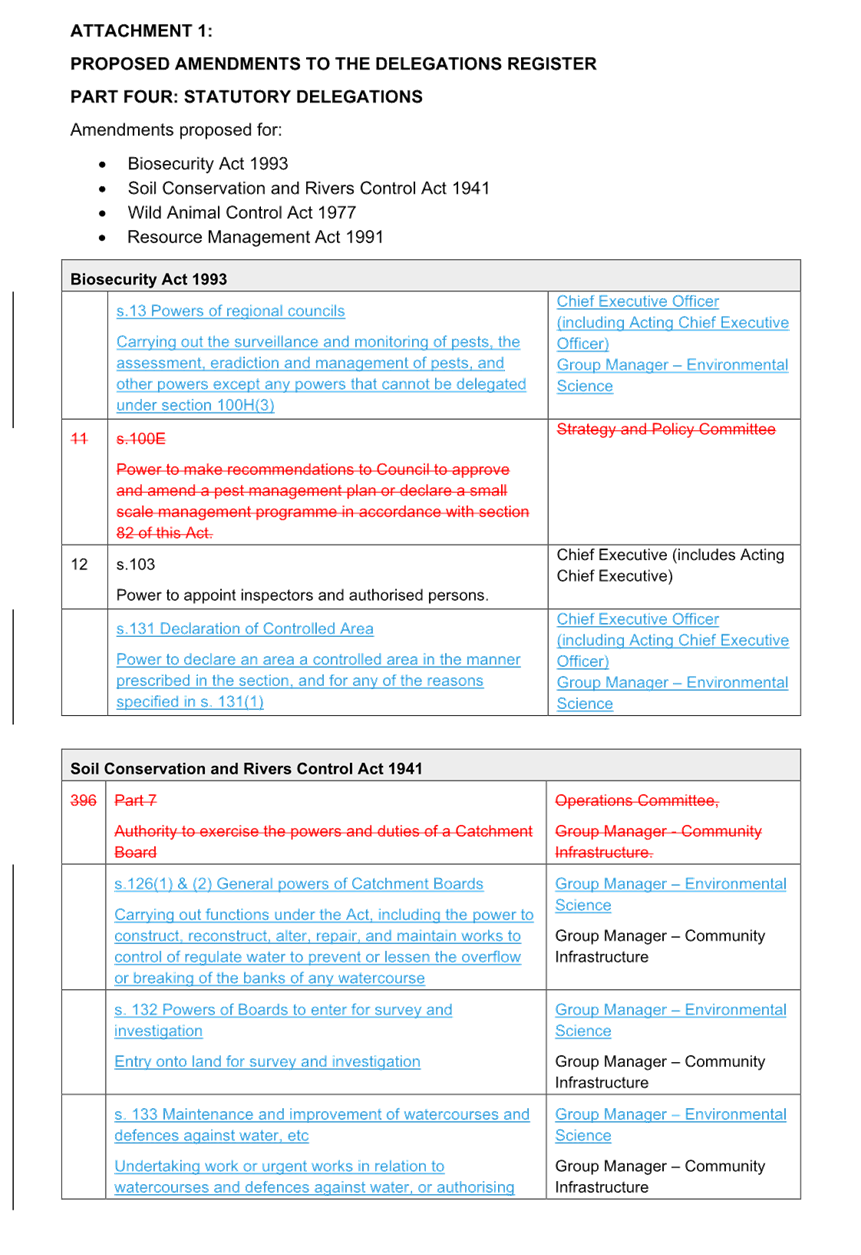
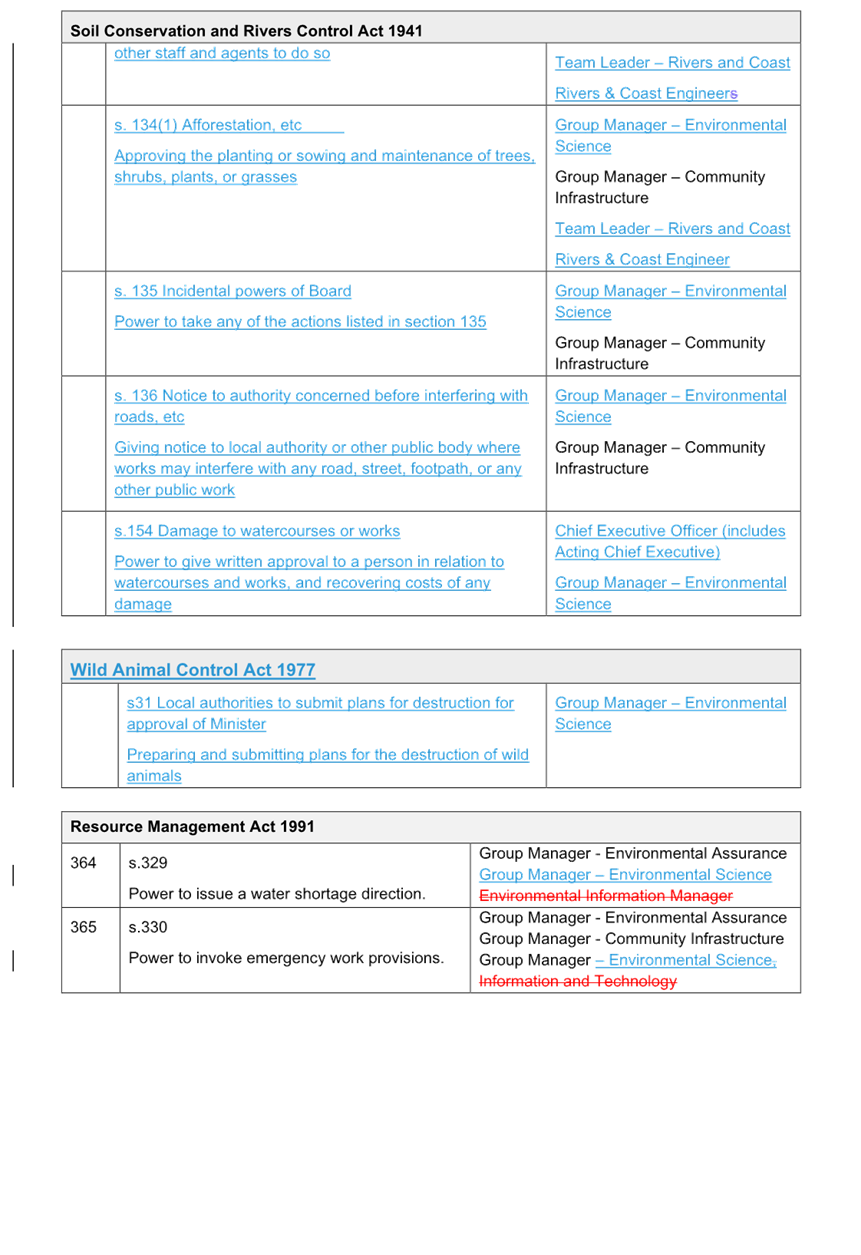
Tasman District Council Agenda – 11 December 2024
7.10 Richmond Library Building - Strengthening and Repair Requirements
Decision Required
|
Report
To:
|
Tasman
District Council
|
|
Meeting
Date:
|
11
December 2024
|
|
Report
Author:
|
Richard
Kirby, Group Manager - Community Infrastructure
|
|
Report
Authorisers:
|
Leonie
Rae, Chief Executive Officer
|
|
Report
Number:
|
RCN24-12-10
|
1. Purpose
of the Report / Te Take mō te Pūrongo
1.1 This
report presents the Council with an update on the condition of the Richmond
Library building and outlines the strengthening work and repairs needed.
2. Summary
/ Te Tuhinga Whakarāpoto
2.1 A
recent detailed seismic assessment of the Richmond Library building has
confirmed that the building is an earthquake risk. The risk primarily relates
to the capacity of the boundary block wall along the eastern side of the
building (see highlight in Figure 1).
2.2 The
library building has had long-term problems with water tightness and sagging
roof trusses. It is intended that these be remedied as part of the proposed
strengthening works.
2.3 The
seismic strengthening options include strengthening to either 33% or 67% NBS
(New Building Standard). Quotes to repair leaking cladding and sagging roof
joists have been received.
2.4 The
strengthening work proposed would lift the building beyond being Earthquake
prone, which is greater than 67% NBS.
2.5 The
estimated cost of the repairs and strengthening work is $1,300,000 plus
GST.
2.6 The Long Term Plan 2024/2034 does
not include specific funding for this work. It is proposed that the $1,300,000
be funded by Reserve Financial Contributions (RFCs).
2.7 As
at October 2024 the balance in the Richmond RFC account is
$12,500,000.
2.8 This
strengthening and repair work is estimated to take four months to complete. It
is intended that the library remain open during this period, however the work
will be staged to minimise the disruption to the library activities. There is
an additional cost of $125,000 to further minimise disruption by working at
night.
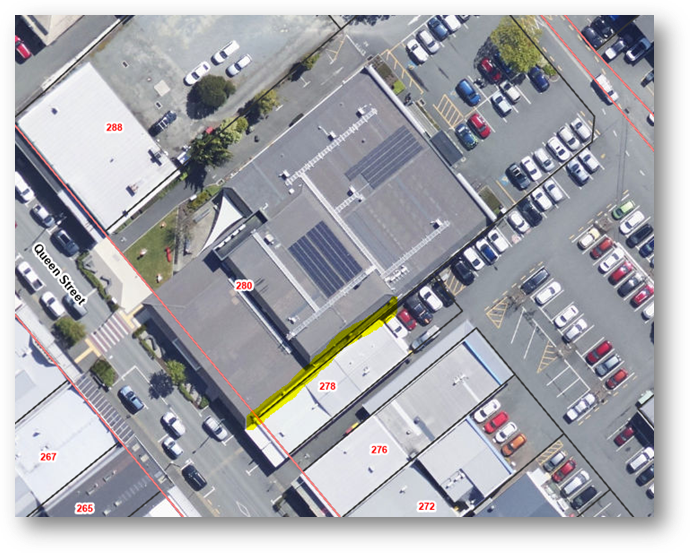
Figure
1 Shear wall between library and 278 Queen St (yellow is location of shear
wall)..
3. Recommendation/s
/ Ngā Tūtohunga
That the Tasman
District Council
1. receives
the Richmond Library Building - Strengthening and Repair Requirements report,
RCN24-12-10; and
2. approves strengthening the Richmond Library Building
to at least 67% New Building Standard, including repairs to the cladding and
roof trusses; and
3. approves funding of up to $1,300,000 plus GST from the
Richmond Reserve Financial Contributions to fund the estimated costs of
strengthening and repairing the Richmond Library Building.
4.1 The
library building is located at 280 Queen Street, Richmond. It is primarily a
single storey building with a second storey over the middle portion of the
building. The building was originally designed c.1985’s as a warehouse
and front-of-house shop. It is currently used as a Library downstairs and
offices upstairs.
4.2 The
Richmond Library's roof structure comprises timber trusses supporting a
lightweight metal roof. As part of the alterations in 2009, the upper storey
was fitted out with a new ceiling and internal partitions with new air
conditioning. Some ductwork and an air conditioning plant are located above the
ceiling.
4.3 Over
the years the roof trusses have sagged from a pre-camber when they were
installed to a point now where the sag below the horizontal. This is most
noticeable above the partitions in the second storey where the ceiling grid is
now resting on the glazing, suggesting a sag of at least 10mm. There is a
noticeable sag visible on top of the roof (on the line of the ridge flashing).
4.4 The
ceiling sagging was initially noticed in 2021, and an investigation found that
one of the roof truss bottom chords was damaged. In March 2021, this roof truss
bottom cord was repaired.
4.5 The
installation of roof accessways (pre-2020) and solar panels (2023) may have
contributed to the sag in the roof trusses but the extent of this is not clear
as the sag had occurred prior to these additions.
4.6 In
June 2021, Council arranged for an IEP (Initial Evaluation Procedure) survey to
be completed for the building. The IEP assessment was primarily concerned with
life safety and earthquake risk. It did not consider the susceptibility of the
building to damage in an earthquake.
4.7 After
receiving the IEP, an ISA (Initial Seismic Assessment) was carried out using
the IEP assessment and the available drawings. This indicated an overall score
of 75% New Building Standard (NBS). This corresponds to a Grade B building, (as
defined by the NZSEE building grading scheme) and is above the threshold for
earthquake-prone buildings (34% NBS). The ISA was based on the available
drawings and did not involve any invasive inspections of specific components of
the building.
4.8 An
ISA is an initial first-stage review prior to a detailed seismic assessment
(DSA). A DSA was considered unnecessary at the time following the outcome of
the IEP which assessed that there were no significant structural faults.
4.9 The
ongoing problems with the leaking roof and the sagging trusses, staff decided
that a more detailed condition assessment of the building needed to be
undertaken. This was to better understand the overall structural condition of
the specific components within building.
4.10 A
consulting engineer and a building contractor were engaged to undertake this
condition assessment. This assessment included a review of the IEP undertaken
in 2021. The consulting engineer then produced a report in March 2024 on the
initial findings of that assessment.
4.11 This
March 2024 report noted that the addition of solar panels on the roof had
increased the dead-loading on the roof trusses and indicated that this needed
to be reduced. The additional loading from the solar panels increased roof
deflection and may have exacerbated the leakage in the roof. Temporary roof
supports were installed in May 2024 while further structural assessments could
be carried out.
4.12 This
March 2024 report also identified concerns with the capacities of the
roof/floor diaphragms and shear walls and recommended a more detailed invasive
assessment be undertaken.
4.13 To
confirm the seismic performance of the building, the same structural engineer
and contractor were engaged in August 2024 to complete a Detailed Seismic
Assessment (DSA). The brief was to investigate other potential structural
weaknesses that may not have been considered in the Initial Seismic Assessment
(2021) and subsequent condition reports (March 2024). This study comprised
invasive inspections into specific components of the building structure.
4.14 A
draft DSA report was presented in November 2024. This is currently being
peer-reviewed. By convention, a building’s NBS rating is directly
attributed to the weakest component of the structure. The weakest component in
the library building is the shear boundary block wall on the northwestern side
of the building (figure 1). Consequently, the building is regarded as
earthquake prone (below 33% NBS).
4.15 Although
the building is regarded as earthquake prone it only relates to one component
– the shear wall in the front corner. The structural engineer has
confirmed that this is the only component that is likely to collapse in an
earthquake. Although the rest of the building may be damaged to varying
degrees, it has inherent strength not to collapse in an earthquake.
4.16 The
structural engineer also confirmed that some additional roof and/or ceiling
bracing is needed in a some of the bays to lift the strength of the building to
above 67% NBS.
4.17 To
mitigate immediate risk, it is intended to immediately portion off the shear
wall with a temporary wall and close the meeting room until the shear wall is
strengthened.
5. Analysis
and Advice / Tātaritanga me ngā tohutohu
5.1 A
building in New Zealand with an earthquake rating of less than 34% of the new
building standard (NBS) is considered earthquake prone. This means that the
building is more likely to sustain damage during a moderate earthquake.
5.2 The
New Zealand Society for Earthquake Engineering (NZSEE) recommends that
buildings with a rating of C, D, or E be retrofitted to achieve a grade of at
least B or 67% NBS.
5.3 The
library is a well-used facility with many people coming and going on a daily
basis. The public expectations are for a resilient structure and in this
case the NZSEE recommend a building assessment to be greater than 67% NBS.
5.4 The
final DSA report has not been received to date as it is still being peer
reviewed. However, the final report is unlikely to change the outcome of
the draft report, and this report is anticipating that the works needed will
still need to be done.
5.5 Once
the final DSA report is received it will need to be forwarded to the Building
Control Authority (BCA) and this would result in an earthquake-prone building
(EPB) notice being issued.
5.6 The
EPB notice will require the Council to mitigate this risk 12 years from the
date of issue. However, given the risk to staff and the public it is
recommended that the proposed works be committed and undertaken as so as
possible.
5.7 The
wall cladding on the Petrie Carpark side of the building also leak and it is
proposed that the cladding be replaced, and the windows reset to restore water
tightness. Various repairs to the window surrounds and flashings have been
implemented without success.
5.8 It
is proposed strengthening, roof repairs and cladding replacements are carried
out at the same time to minimise disruption and cost.
5.9 The
strengthening and repairs are likely to take up to 4 months to complete. It is
proposed that the library remain functional during this period and that the
works be undertaken in sections of the building and that they be cordoned off
as appropriate. There will be ongoing coordination between the contractor and
library staff to ensure interruptions and disruptions are kept to a minimum
whilst the work is undertaken.
Repair Costs
5.10 The
estimated cost for the strengthening, watertightness and roofing repairs are
around $1,300,000. This would result in the building reaching at least 67%
NBS.
5.11 The
Richmond Library is a community facility, and the works proposed will extend
the life of the building. It is therefore proposed that the $1,300,000 be
funded from Richmond Reserve Financial Contributions (RFCs).
5.12 The
balance of the Richmond RFCs (as at October 2024) is $12,500,000.
6.1 Currently,
there are no suitable alternative premises within Richmond with a usable area
available (>2000m2) to relocate the library. Alternatively,
smaller venues could be leased with much of the library contents going into
storage. This option is not considered viable as it would involve additional
cost with the associated reputational and operational disruptions.
6.2 Staff
believe that Council and the wider community would want the Richmond Library to
remain as functional as possible whilst the strengthening and repair work is
undertaken.
6.3 There
are three options for council to consider. These are outlined in the following
table are outlined in the following table:
|
Option
|
Advantage
|
Disadvantage
|
|
1.
|
Keep Library functioning whilst completing the
strengthening and repairs and attain at least 67% NBS.
|
Allows the Library to remain functional and operational
with some limitations at times.
Meets NZSEE recommendations
|
Disruptions whilst the library is functioning.
|
|
2.
|
Close the library and complete that strengthening and
repairs and attain at least 67% NBS.
|
No disruption to the work being undertaken and may result
in reduced cost (this has not been quantified to date).
|
No physical access to library services and facilities for
up to four months.
|
|
3
|
Undertake the works after hours and allow the library to
keep functioning during normal opening hours.
|
Although there will be areas cordoned off during this
period, there will be no work on site being undertaken whilst the public are
accessing the library.
|
This would add potentially an additional $125,000 to the
costs of the work.
|
6.4 Option
One is recommended. The Richmond Library’s significance to the
community and to the wider public requires the Council to make this library
building as safe and resilient as possible. The NZSEE recommend buildings are
strengthened to at least 67% NBS.
6.5 The
option of doing nothing is not considered as staff believe it is not a viable
option. The building is earthquake prone, and Council will be given an
ultimatum by the BCA to strengthen within a finite period. However, in the
intervening period staff and users of the library would still be exposed to the
risks of operating within an earthquake prone building. Staff recommend
that this is a risk that council should not consider.
7.1 Building
owners have legal responsibilities regarding earthquake-prone and earthquake
risk buildings, including:
7.1.1 Detailed
Structural Assessment - If a building is potentially earthquake prone, the
building owner must provide an engineering assessment within 12 months. In this
case Council will provide the BCA the finalised DSA report as soon as it is
released.
7.1.2 Remedying
or demolishing the building - If a building is assessed as
earthquake-prone, the owner must remediate it to a standard that makes it no
longer earthquake-prone.
7.1.3 Heritage
Buildings - Owners of heritage buildings can apply for up to 10 years more
time to strengthen their buildings. The library is not a heritage building.
8. Iwi
Engagement / Whakawhitiwhiti ā-Hapori Māori
8.1 The
proposed work is primarily focused around strengthening and repairing an
existing community facility and therefore considered to not require specific
engagement with iwi.
9. Significance
and Engagement / Hiranga me te Whakawhitiwhiti ā-Hapori Whānui
9.1 The
decision in this report is to confirm the strengthening and repairing of the
Richmond library is not considered to be a significant decision.
|
|
Issue
|
Level of Significance
|
Explanation of Assessment
|
|
1.
|
Is there a high level of public
interest, or is decision likely to be controversial?
|
High if the decision is to close
the library
|
The future of the library is
considered of high significance by the public, evidenced by surveys and
events in Nelson.
|
|
2.
|
Are there impacts on the social,
economic, environmental or cultural aspects of well-being of the community in
the present or future?
|
Yes
|
|
|
3.
|
Is there a significant impact arising
from duration of the effects from the decision?
|
Low
|
The proposed repairs will cause
some disruption to library activities whilst the work is underway though this
will be kept to a minimum.
|
|
4.
|
Does the decision relate to a
strategic asset? (refer Significance and Engagement Policy for list of
strategic assets)
|
Yes
|
Libraries are identified as a
strategic asset in the TRMP.
|
|
5.
|
Does the decision create a
substantial change in the level of service provided by Council?
|
Minimal impact
|
The library operation will be
affected during the works though this will be kept to a minimum.
|
|
6.
|
Does the proposal, activity or
decision substantially affect debt, rates or Council finances in any one year
or more of the LTP?
|
Yes
|
Although it is intended to be
funded from Richmond Reserve Financial Contributions, this could impact net
debt levels.
|
|
7.
|
Does the decision involve the
sale of a substantial proportion or controlling interest in a CCO or CCTO?
|
No
|
|
|
8.
|
Does the proposal or
decision involve entry into a private sector partnership or contract to carry
out the deliver on any Council group of activities?
|
No
|
|
|
9.
|
Does the proposal or decision
involve Council exiting from or entering into a group of activities?
|
No
|
|
|
10.
|
Does the proposal require
particular consideration of the obligations of Te Mana O Te Wai (TMOTW)
relating to freshwater or particular consideration of current legislation
relating to water supply, wastewater and stormwater infrastructure and
services?
|
No
|
|
10. Communication
/ Whakawhitiwhiti Kōrero
10.1 To
date, there has been initial briefing with the Library Manager and there will
be ongoing communication with library staff during the works.
10.2 The
BCA will need to be notified once the final DSA report has been peer-reviewed
and released.
10.3 A
Communications Plan will be developed to inform staff and the public following
the Council decision and during the four months while the works are being
undertaken.
11. Financial
or Budgetary Implications / Ngā Ritenga ā-Pūtea
11.1 It is recommended that the
estimated $1,300,000 be funded by Richmond Reserve Financial Contributions
(RFCs). This account has a balance of $12,500,000 (October 2024).
11.2 The nature of the expenditure is
capital expenditure. This expenditure will extend the life of the building. The
use of RFCs will affect the net debt levels of council.
12.1 The
DSA report is currently being peer-reviewed by an independent firm of
structural engineers and although some minor changes are anticipated –
the overall %NBS ratings is not likely to materially change.
12.2 The
NZSEE guidelines indicate the following risk to building owners:
|
%
NBS
|
Alpha
Rating
|
Approximate
risk compared to a new building
|
Life-safety
risk description
|
|
80
to 100
|
A
|
1-2 times greater
|
Low Risk
|
|
67
to 79
|
B
|
2-5 times greater
|
Low to Medium risk
|
|
34
to 66
|
C
|
5-10 times greater
|
Medium risk
|
|
20
to <34
|
D
|
10-25 times greater
|
High risk
|
|
<20
|
E
|
25 times greater
|
Very
high risk
|
Figure 2 NZSEE Building grading
12.3 The
seismic risk of the shear wall can be contained by partitioning it off and
mitigating the immediate risk.
12.4 Whilst
an extensive and invasive survey has been carried, unforeseen repairs could be
uncovered whilst implementing the works. The estimate includes scope risk of
15% which should be sufficient. However, until the building works commence, and
old cladding removed staff cannot confirm that the 15% is sufficient.
12.5 The
building consent process could take 6-8 weeks. Non-structural works could be
started during this period.
12.6 As
previously outlined, the works will disrupt the operation of the library. The
shear wall can be repaired without affecting the operation of the library by
partitioning off the meeting room. There is some risk of disrupting the
Café operation however staff believe this can be managed.
12.7 At
least half of the meeting room will be closed off by a partition wall
separating the shear wall. It is likely the library office will need to
be shifted to the Council offices while ceiling joists are strengthened.
Cladding repairs can take place without disrupting operations. The Café
can continue operating except for a short period if works are staged.
12.8 Careful
planning, comprehensive safety management and a clear communication strategy
with staff and customers is being undertaken that would mitigate any
misunderstanding and risk.
13. Climate
Change Considerations / Whakaaro Whakaaweawe Āhuarangi
13.1 The
Richmond Library is not within the 2-metre sea level rise inundation zone.
14. Alignment
with Policy and Strategic Plans / Te Hangai ki ngā aupapa Here me ngā
Mahere Rautaki Tūraru
14.1 The
Council’s infrastructure strategy prioritises the following:
a) Providing
services that meet the needs of our changing population.
b) Planning,
developing and maintaining resilient communities.
c) Providing
safe and secure infrastructure.
d) Prudent
management of existing assets and environment.
14.2 Strengthening
and repairing the Richmond library aligns with the above priorities c and d.
15. Conclusion
/ Kupu Whakatepe
15.1 That
the Council approves the staged repairs of cladding and roof in conjunction
with seismic strengthening to at least 67% NBS.
15.2 The
estimated cost of $1,300,000 to undertake the strengthening and repair works is
recommended to be funded from Richmond RFC’s.
16. Next
Steps and Timeline / Ngā Mahi Whai Ake
16.1 Immediate
partition of high-risk area isolating the shear wall (meeting room).
16.2 Procure
a developed design.
16.3 Apply
for a building consent.
16.4 Engage
Scott Construction to finalise pricing schedule and undertake a due diligence
exercise to ensure value for money is being achieved.
16.5 Develop
a staged strengthening and repair plan in consultation with library staff.
16.6 Currently
it is estimated that the works will take around four months to complete.
Staging of these works could result in a longer duration particularly if we
prioritise and minimise the disruptions to Library operations/functionality.
Nil
Tasman District
Council
Agenda – 11 December 2024
8 CONFIDENTIAL SESSION
8.1 Procedural motion to
exclude the public
The following motion is
submitted for consideration:
That the public be excluded
from the following part(s) of the proceedings of this meeting. The general
subject of each matter to be considered while the public is excluded, the
reason for passing this resolution in relation to each matter, and the specific
grounds under section 48(1) of the Local Government Official Information and
Meetings Act 1987 for the passing of this resolution follows.
This
resolution is made in reliance on section 48(1)(a) of the Local Government
Official Information and Meetings Act 1987 and the particular interest or
interests protected by section 6 or section 7 of that Act which would be
prejudiced by the holding of the whole or relevant part of the proceedings of
the meeting in public, as follows:
8.2 Waimea
Water Limited - Statement of Expectations
|
Reason for passing this resolution in relation
to each matter
|
Particular interest(s) protected (where
applicable)
|
Ground(s) under section 48(1) for the passing
of this resolution
|
|
The public conduct of the part of the meeting
would be likely to result in the disclosure of information for which good
reason for withholding exists under section 7.
|
s7(2)(i) - The withholding of the information
is necessary to enable the local authority to carry on, without prejudice or
disadvantage, negotiations (including commercial and industrial
negotiations).
|
s48(1)(a)
The public conduct of the part of the meeting
would be likely to result in the disclosure of information for which good
reason for withholding exists under section 7.
|
8.3 Waimea
Community Dam - Project Negotiations and other Matters
|
Reason for passing this resolution in relation
to each matter
|
Particular interest(s) protected (where
applicable)
|
Ground(s) under section 48(1) for the passing
of this resolution
|
|
The public conduct of the part of the meeting
would be likely to result in the disclosure of information for which good
reason for withholding exists under section 7.
|
s7(2)(g) - The withholding of the information
is necessary to maintain legal professional privilege.
s7(2)(i) - The withholding of the information
is necessary to enable the local authority to carry on, without prejudice or
disadvantage, negotiations (including commercial and industrial
negotiations).
|
s48(1)(a)
The public conduct of the part of the meeting
would be likely to result in the disclosure of information for which good
reason for withholding exists under section 7.
|
8.4 Diversified
Resilience Fund Proposal
|
Reason for passing this resolution in relation
to each matter
|
Particular interest(s) protected (where
applicable)
|
Ground(s) under section 48(1) for the passing
of this resolution
|
|
The public conduct of the part of the meeting
would be likely to result in the disclosure of information for which good
reason for withholding exists under section 7.
|
s7(2)(h) - The withholding of the information
is necessary to enable the local authority to carry out, without prejudice or
disadvantage, commercial activities.
|
s48(1)(a)
The public conduct of the part of the meeting
would be likely to result in the disclosure of information for which good
reason for withholding exists under section 7.
|
8.5 Storm
Damage - Private Dwelling, Pōhara
|
Reason for passing this resolution in relation
to each matter
|
Particular interest(s) protected (where
applicable)
|
Ground(s) under section 48(1) for the passing
of this resolution
|
|
The public conduct of the part of the meeting
would be likely to result in the disclosure of information for which good
reason for withholding exists under section 7.
|
s7(2)(a) - The withholding of the information
is necessary to protect the privacy of natural persons, including that of a
deceased person.
|
s48(1)(a)
The public conduct of the part of the meeting
would be likely to result in the disclosure of information for which good
reason for withholding exists under section 7.
|
8.6 New
Electricity Contract (Late Covering Report)
|
Reason for passing this resolution in relation
to each matter
|
Particular interest(s) protected (where
applicable)
|
Ground(s) under section 48(1) for the passing
of this resolution
|
|
The public conduct of the part of the meeting
would be likely to result in the disclosure of information for which good
reason for withholding exists under section 7.
|
s7(2)(b)(ii) - The withholding of the
information is necessary to protect information where the making available of
the information would be likely unreasonably to prejudice the commercial
position of the person who supplied or who is the subject of the information.w
|
s48(1)(a)
The public conduct of the part of the meeting
would be likely to result in the disclosure of information for which good
reason for withholding exists under section 7.
|

































































































































































































































